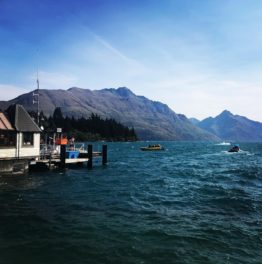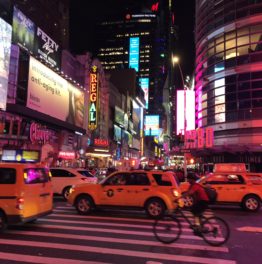
There’s no denying that for me, the planning of a trip is almost as joyful as the trip itself. Almost. I love getting lost in a world of blog posts, Instagram and travel groups, digging out the best things to do in any given place. It’s one of my biggest passions.
So when Hubs desperately wanted to go to Japan, it was time to crack out the post-it notes and start brainstorming. There was
Lots of friends have asked me to share our itinerary so that they can replicate it for their own trips- so it’s a little longer than most blog posts, but I hope that it helps with planning your own adventures! Enjoy, my travel buddies!

Day 1: Osaka
We flew into Osaka, the foodie capital of Japan. It was winter in Japan, so getting off the plane straight from the depths of a Melbourne summer was bracing, to say the least. Hubs
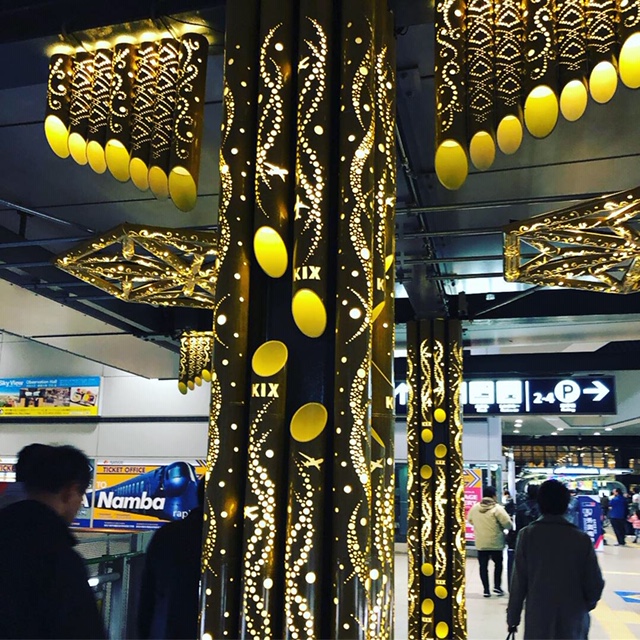
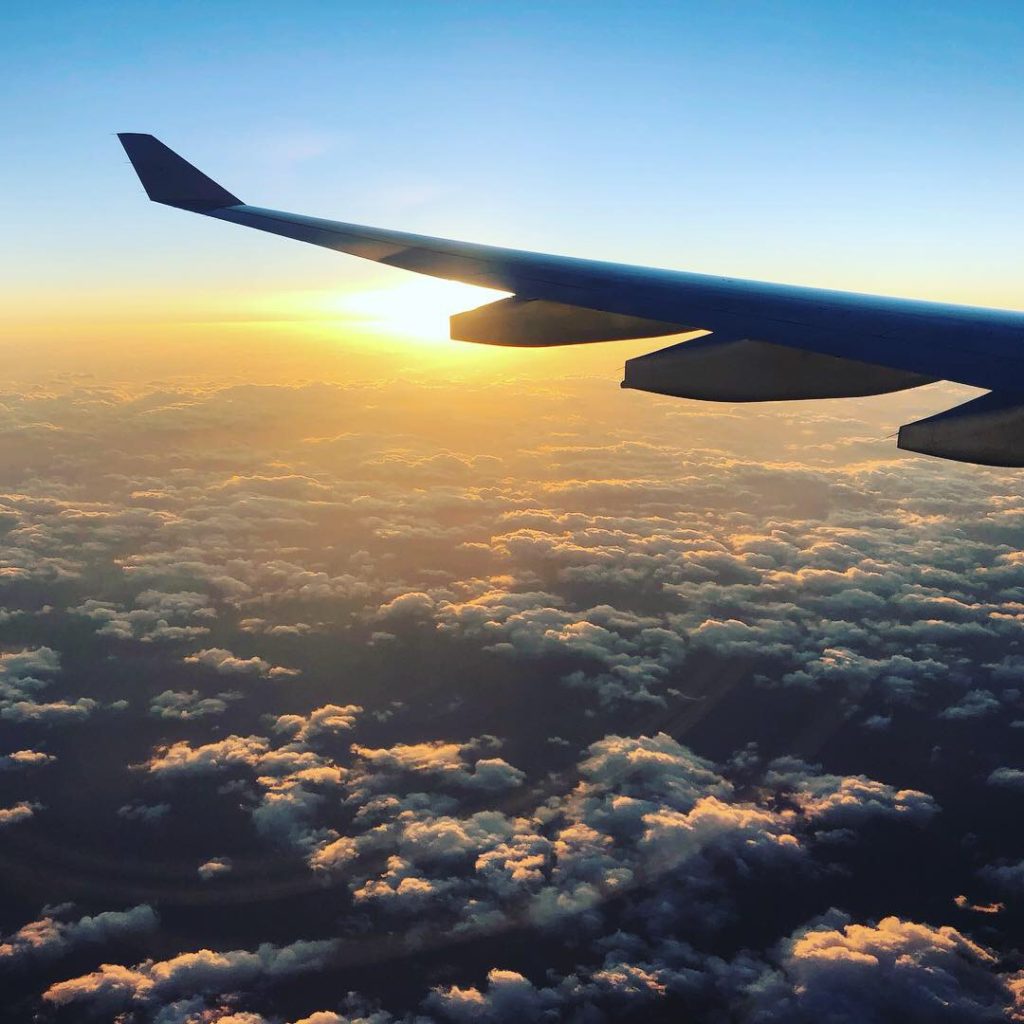
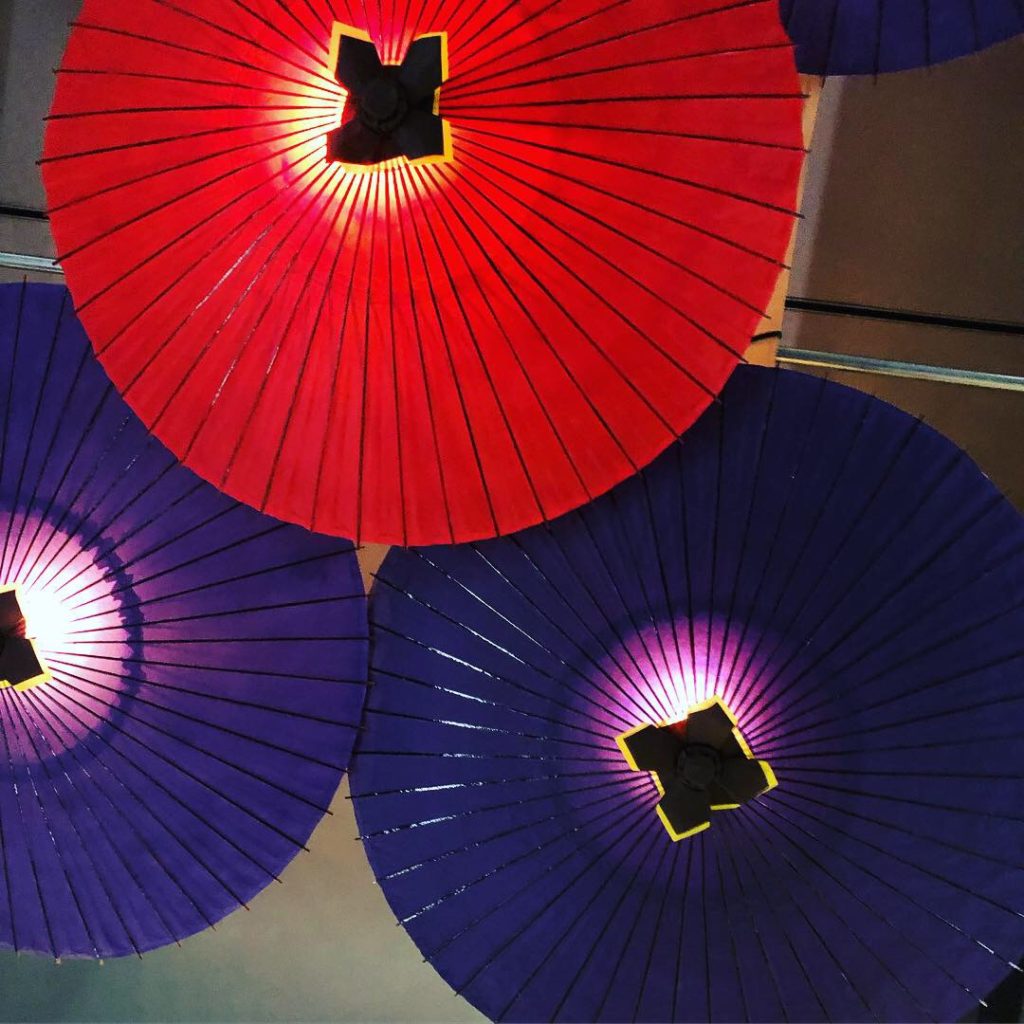
After buying data sim cards at the airport (invaluable for navigating trains and street maps), we headed for the train station to pick up our rail passes.
A Note about Japan Rail Passes
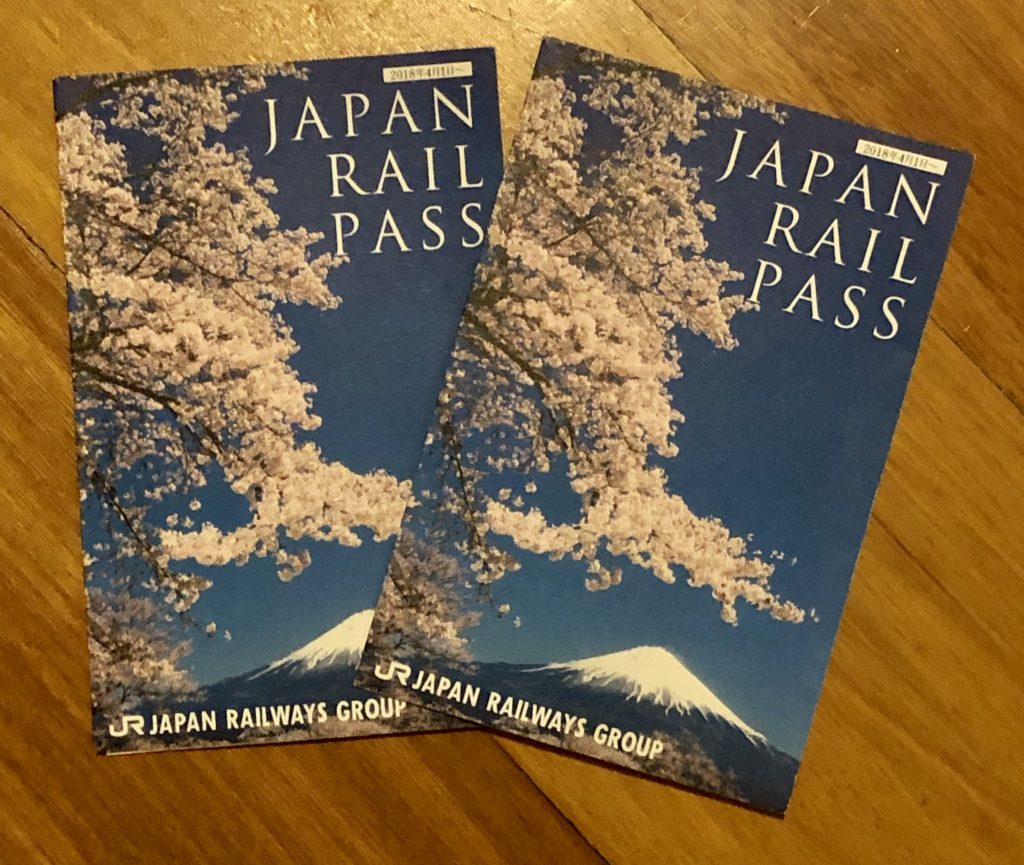
We agonised over the rail system, deciding what made the most sense for our trip. The Japan rail pass comes in 7, 14, or 21-day tickets, so you need to work out when you will start and end your train travel to decide what duration works best for you, cost-wise.
We planned to travel almost immediately, so we knew that we needed the 21-day pass. What we were less sure about was which class of ticket we wanted. We were travelling over
I can’t stress to you enough how lovely the experience was. The carriages were sparkling. Crews of 4-5 people cleaned at the start of every journey before turning the chairs to face the right way and bowing politely to the waiting passengers as they left. The seats were luxurious, always had power and, most importantly, could be reserved in advance, which reduced my queuing anxiety tenfold. That alone made it worth the extra money.
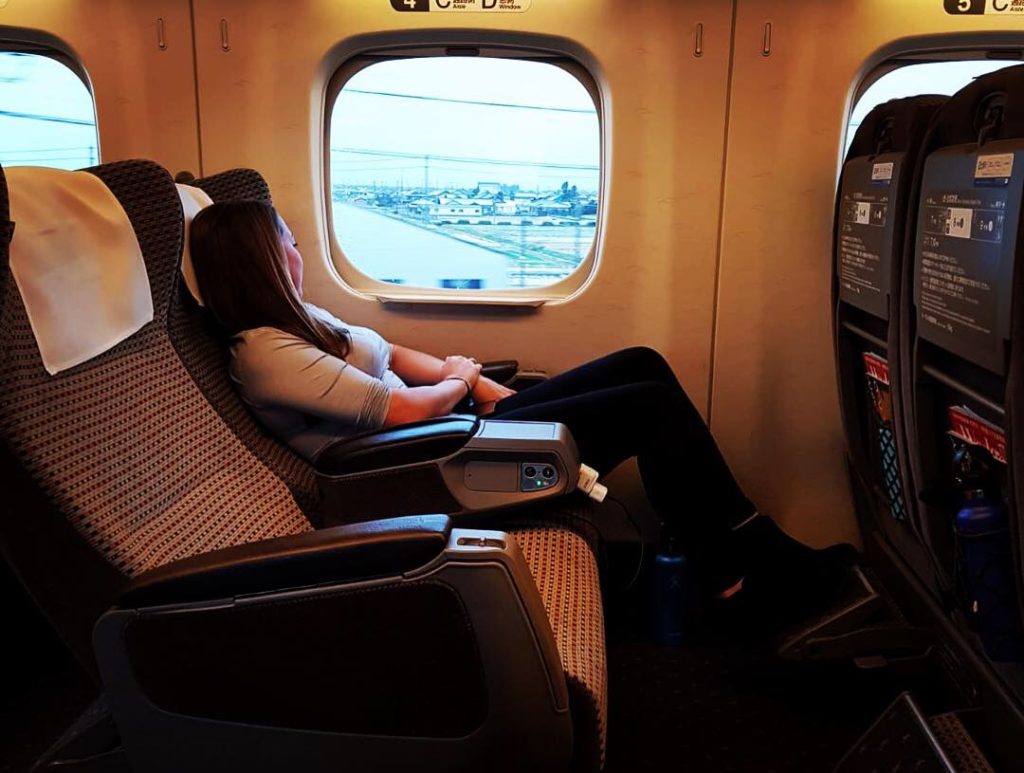
Love Hotels
We decided to stay in a Love Hotel, which sounds incredibly seedy but is actually pretty hilarious. These adult-only hotels are designed to give couples space and privacy, in a community where people tend to stay living with family for much longer. Some are themed, and all can be rented by the hour, with a polite call to let you know when your time is up.
I was tickled to discover that Hotel Casablanca had a mirror on the ceiling(!) and all the hair-styling appliances a girl could wish for!
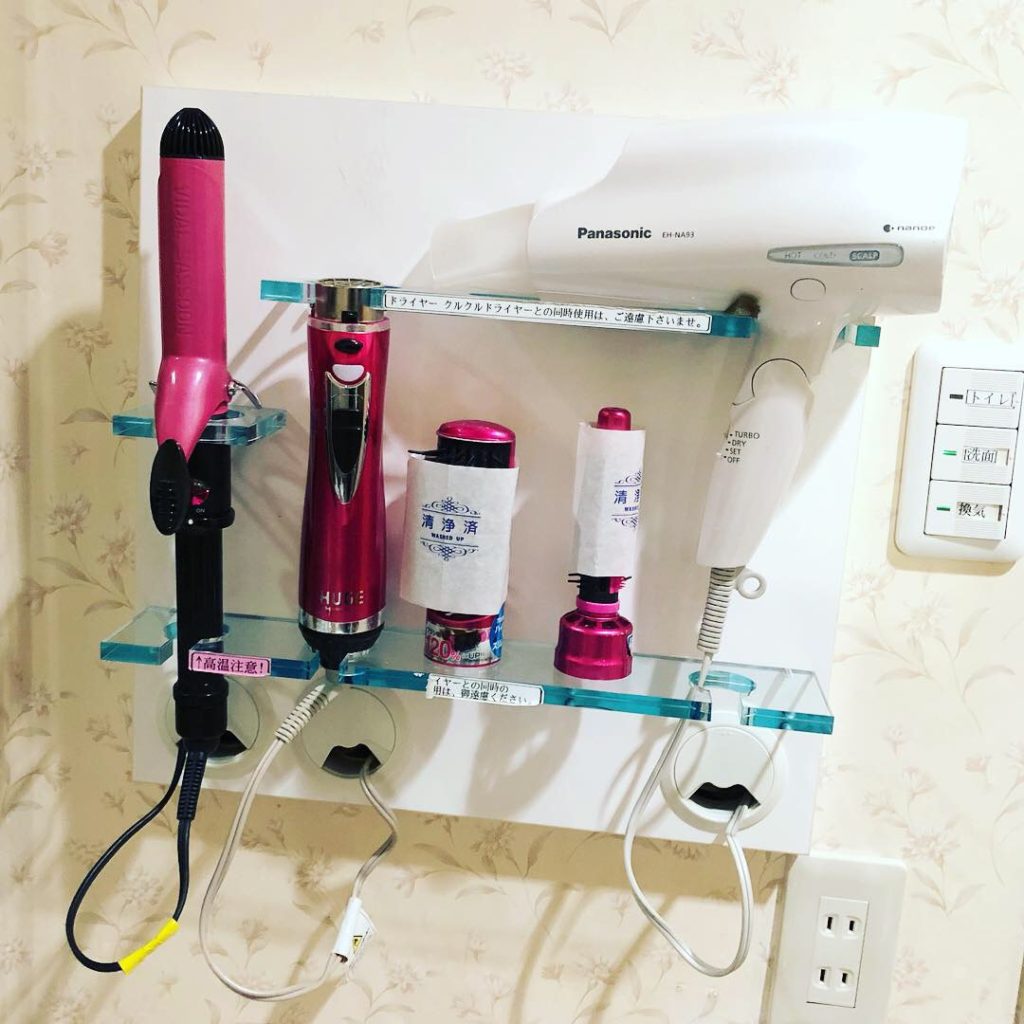
We ducked out into the night, following the delicious smells and bright lights until we found the local eateries tucked away in a tiny alleyway.
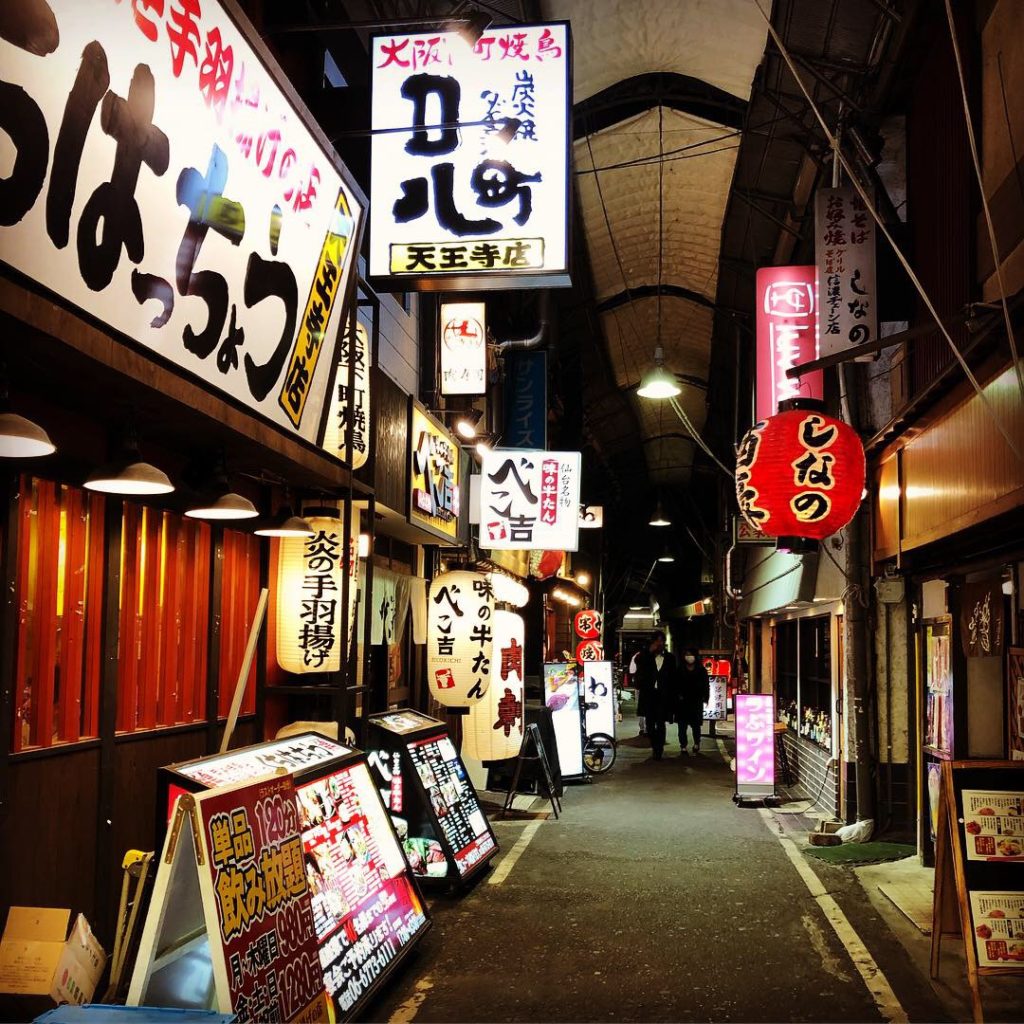
At this point, we had no idea how anything worked or how to speak any Japanese, so we took a deep breath and dived in.
This is one of my favourite parts of any trip, but also the most confronting. Tired and vulnerable, it can be difficult to muster the energy to make yourself understood. We headed to a friendly little place, which glowed invitingly against the bitter cold outside.
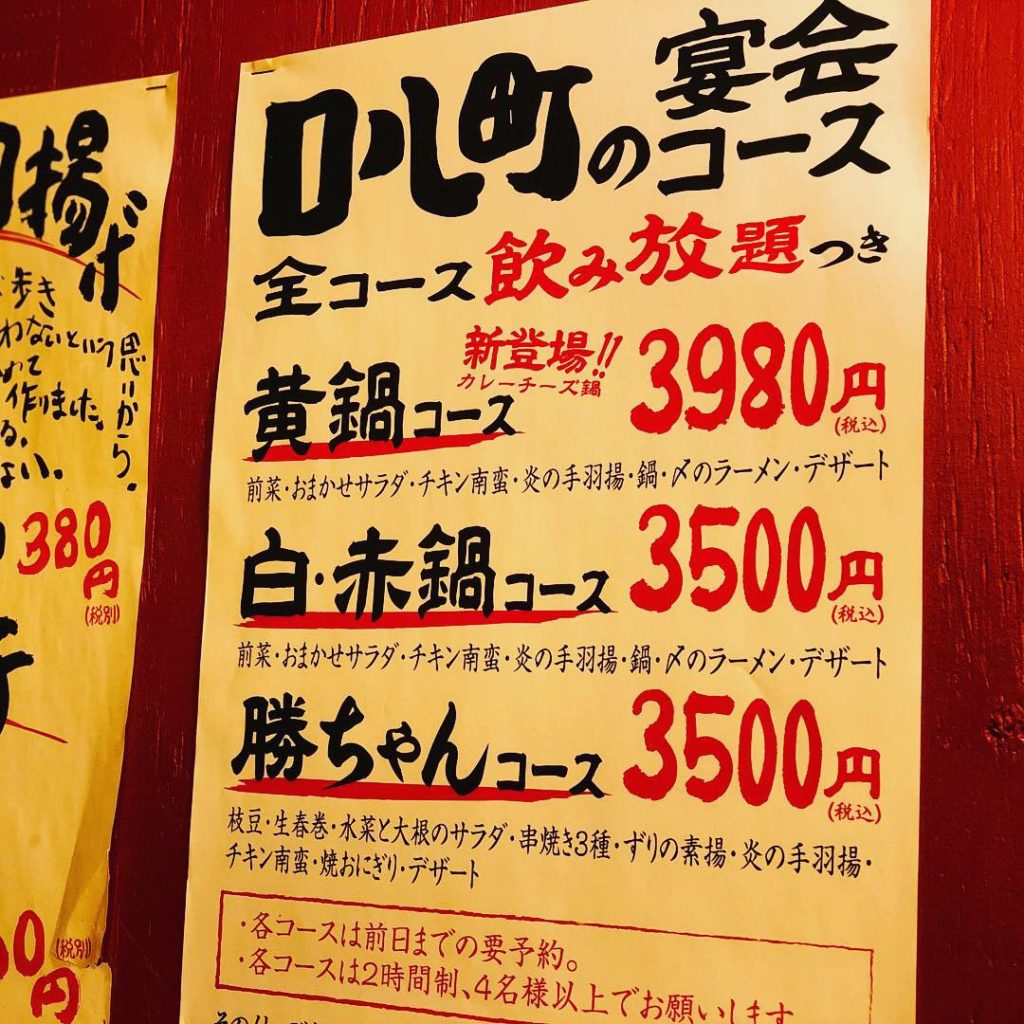
Google Translate immediately became our new best friend. It wasn’t perfect (there was definitely a moment in a pharmacy where it told me that the painkillers I picked up were a ‘wife-swap!’), but it was pretty good and helped us with many a menu. I highly recommend downloading it and using the camera function.
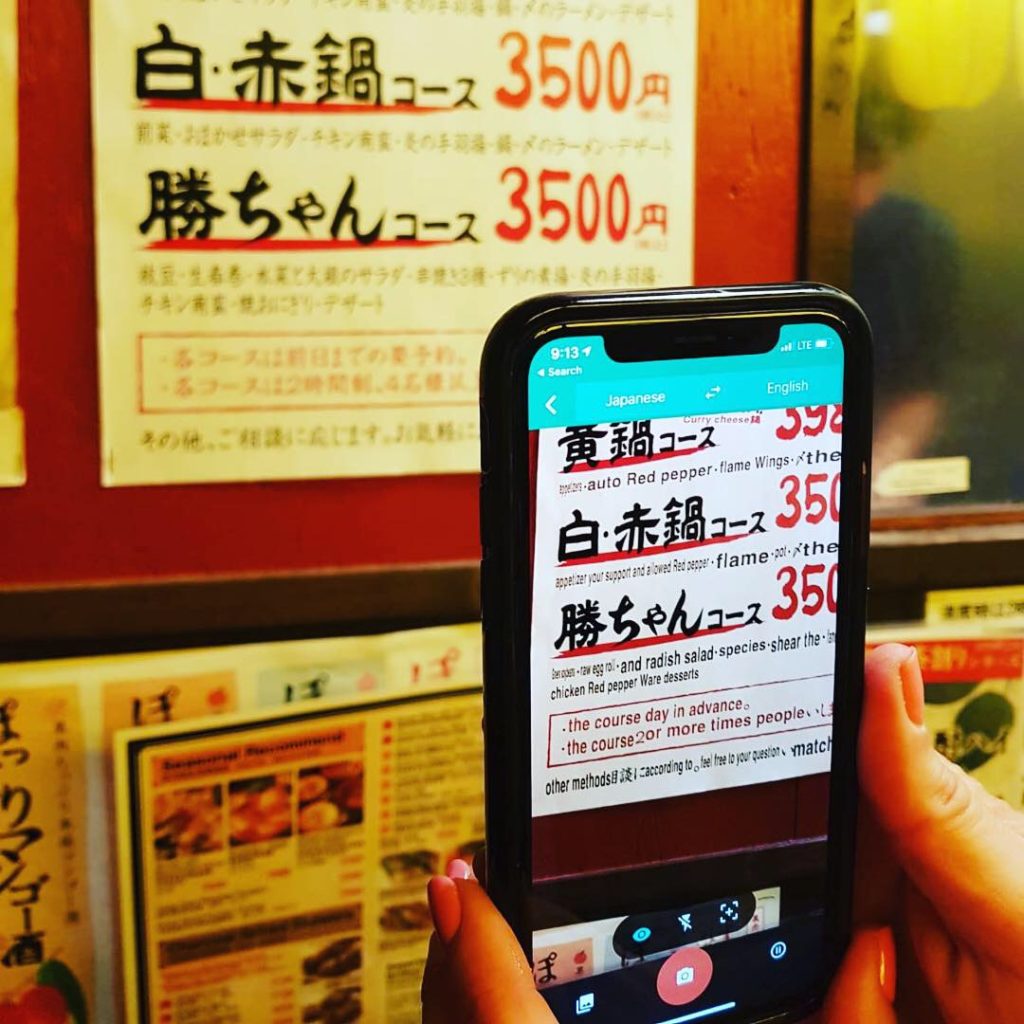
Day 2: Osaka Food Tour
Since Osaka is the home of great food, I booked us in for a cycling food tour the next day. This was an awesome way to meet other travellers, see the city and eat all the delicious things.
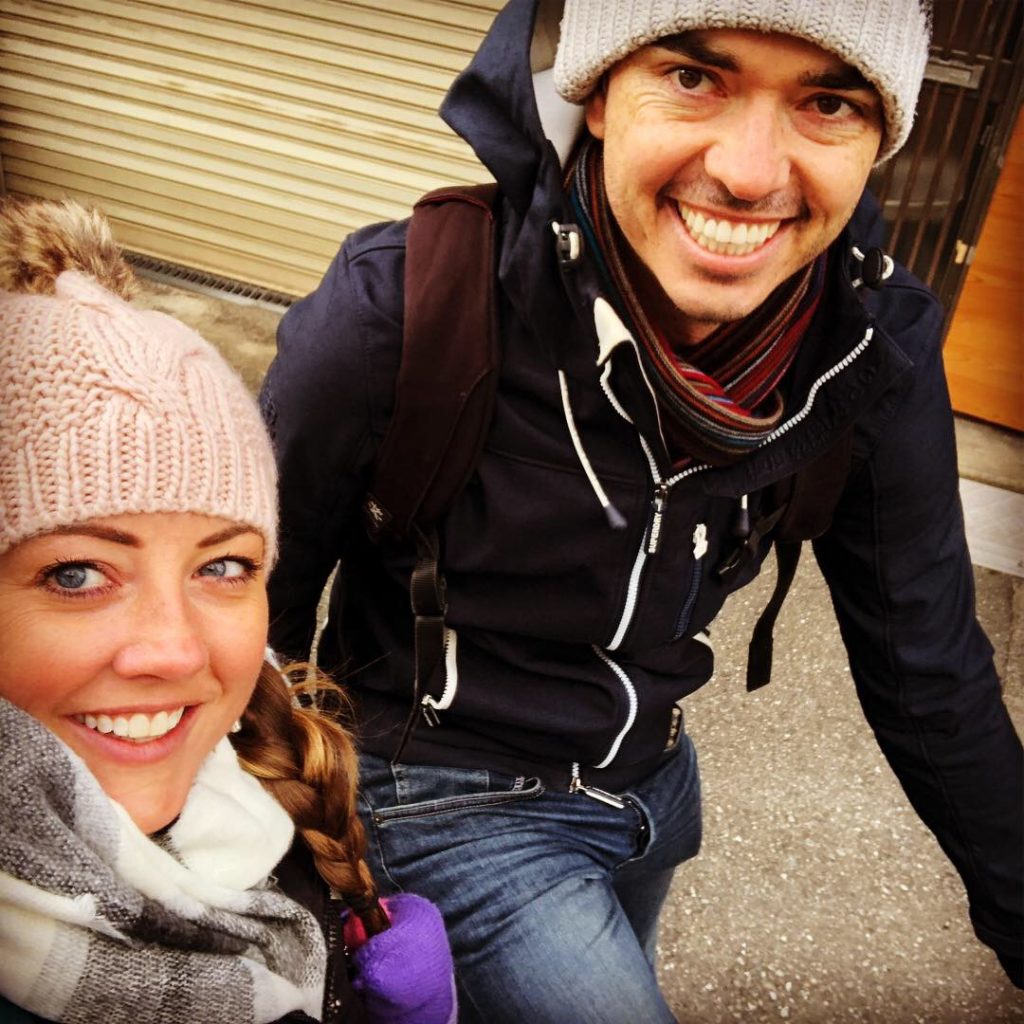
We met our guide from Cycle Osaka, who got us fitted up on bikes before taking us all over the city, sharing history, gossip and tips about each of the local Osakan neighbourhoods.

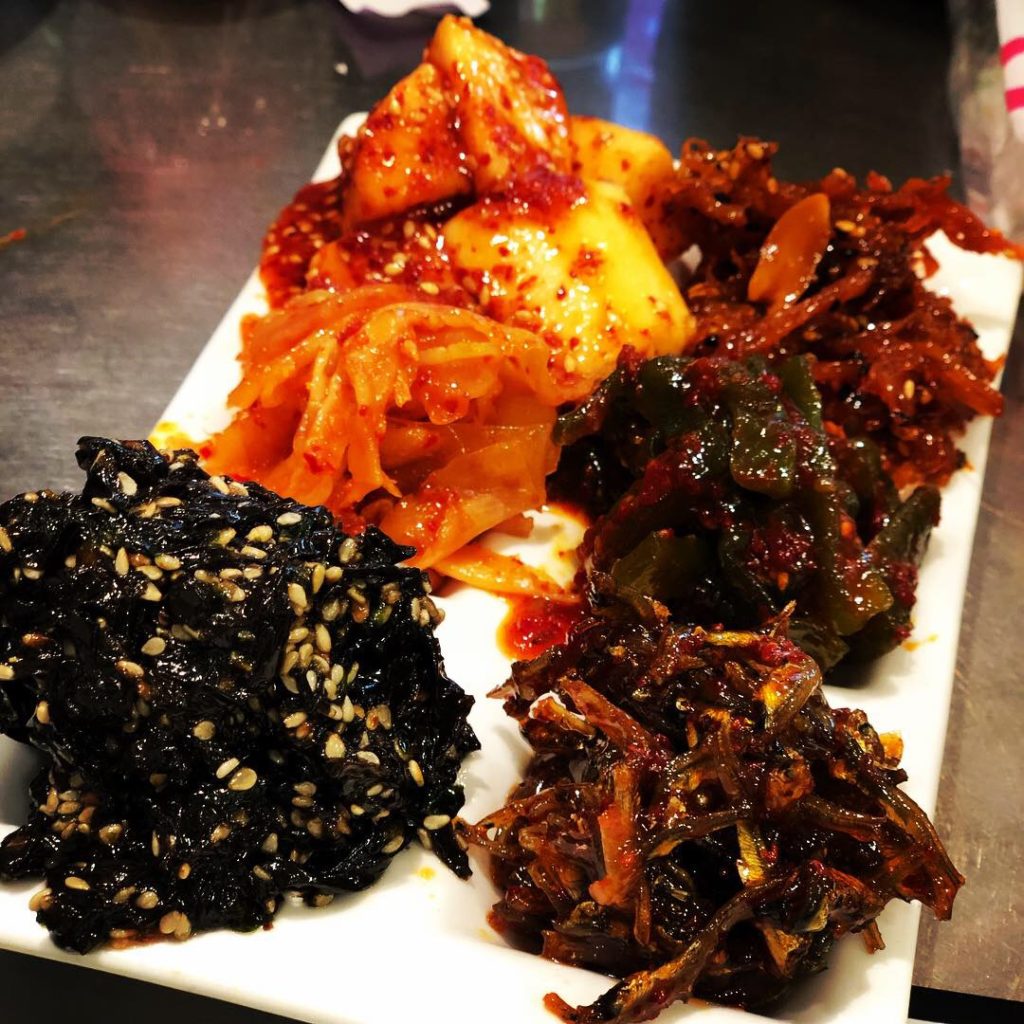
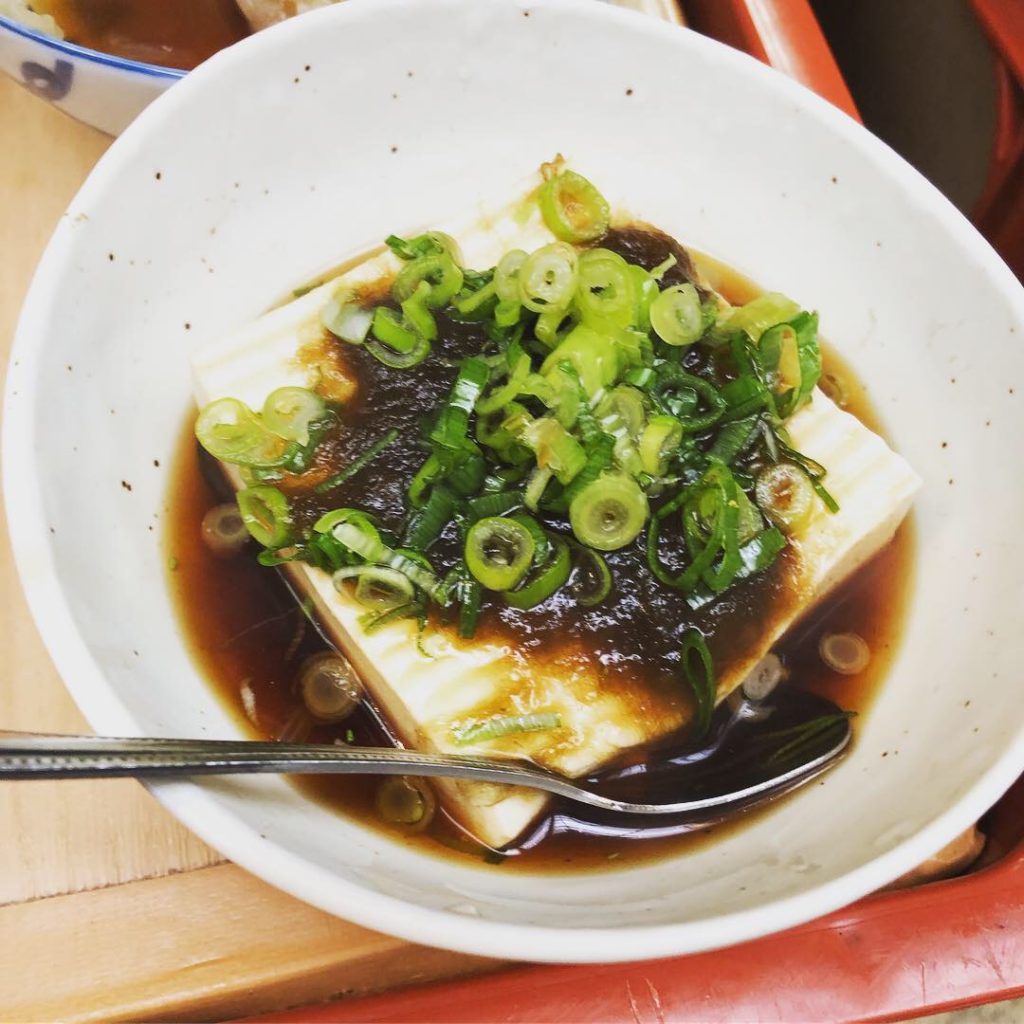

Over the course of three hours, we ate at places we would never have found by ourselves: Colourful cafes with beer crates for tables and the tiny hole in the wall crammed full of local tradies calling for food and a beer after working through the night.
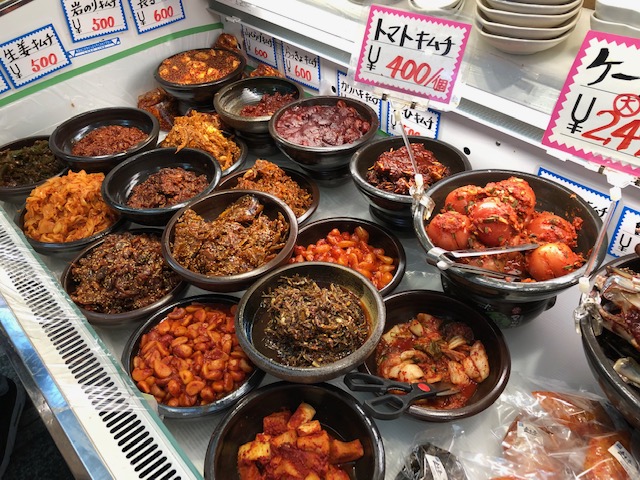
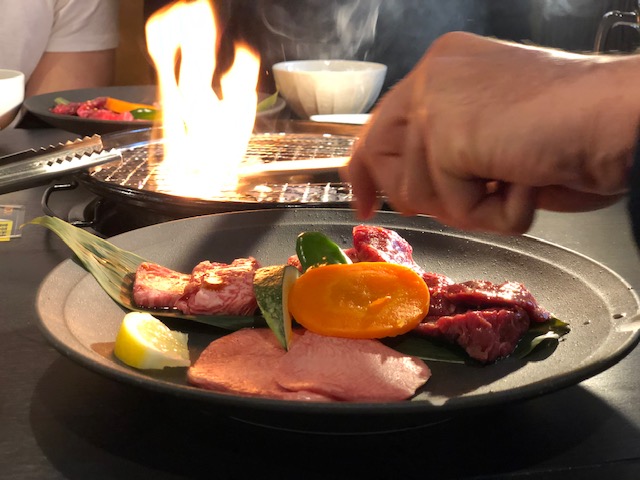

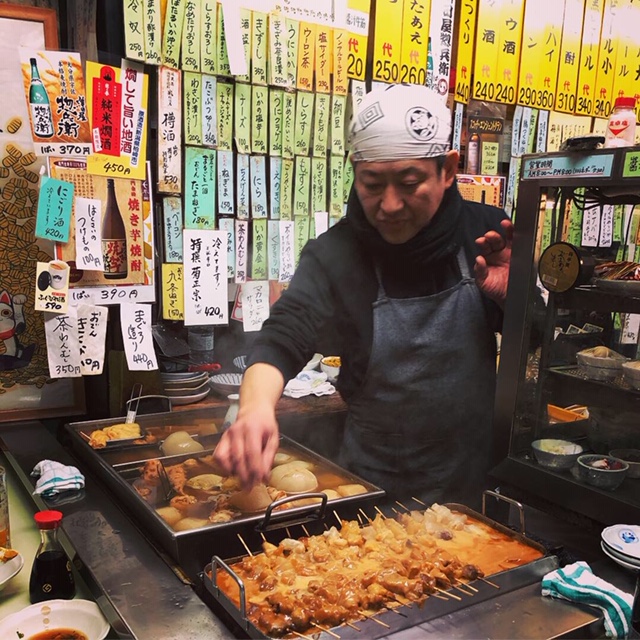

We savoured every mouthful from Street Oden and Chijimi Pancakes to flame-grilled Wagyu beef and sushi. I even tried cow intestine and tongue (and if I didn’t think too hard about what I was eating, they were actually pretty yummy!)
It began to snow, a magical sprinkling of fairy dust coating the world around us. To warm ourselves up after the ride, we stopped at one of the vending machines that line every street in Japan. We couldn’t resist trying the hot coffee in a can, which was actually way better than it sounds!
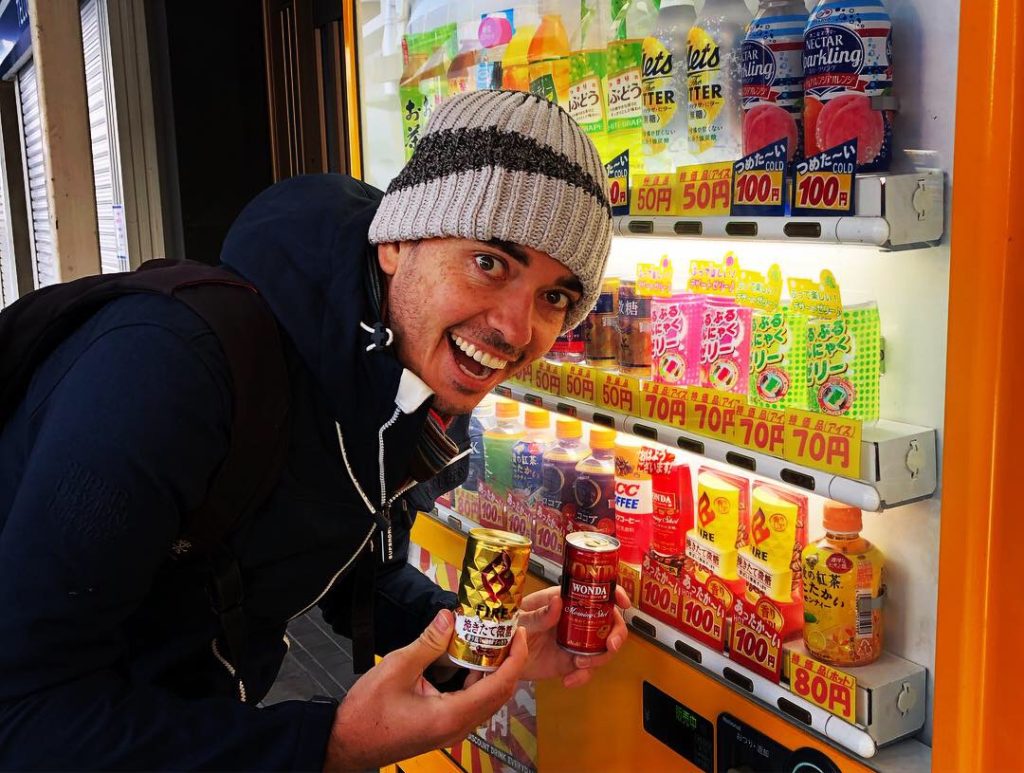
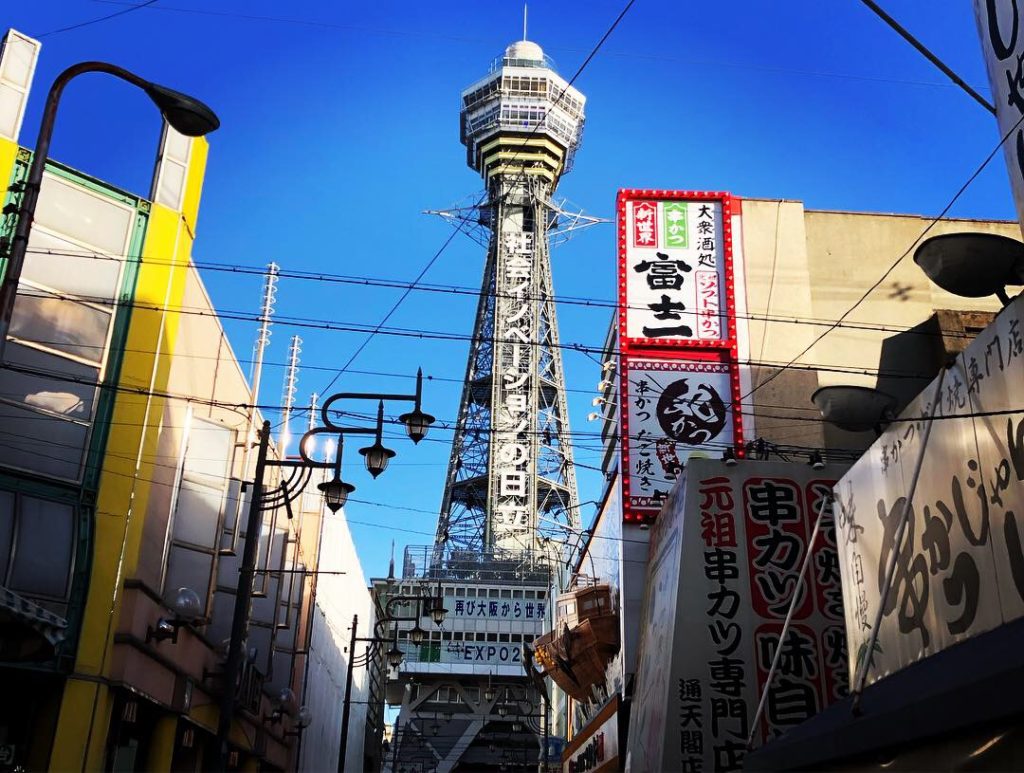
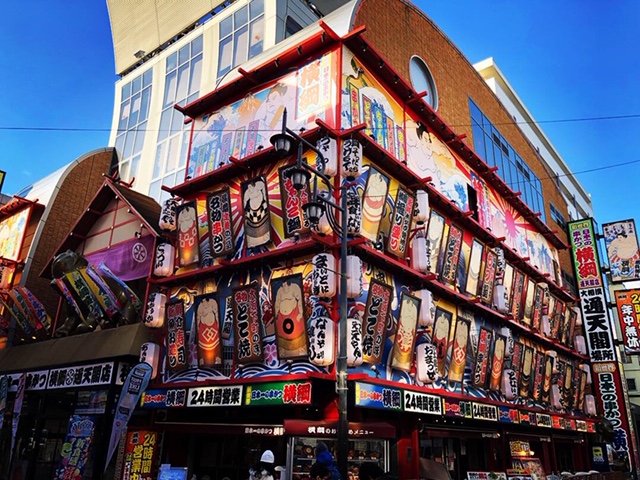
Tokyo
We jumped on the Shinkansen to Tokyo, full of excitement about the week ahead. We stayed in Akasaka, which was a fab little suburb with plenty of bars and restaurants. It was a short metro ride away from all the things we wanted to see and do without the absolute chaos of the crowds at Shinjuku or Shibuya! P
I recommend buying a metro smartcard, which can be topped up much like an Opal or Oyster card and used on the subway, trains and buses (where your JR passes won’t be much use.) There are several different kinds, but we used a Pasmo. We discovered that it worked in all the cities we visited after Tokyo, too, which was handy!
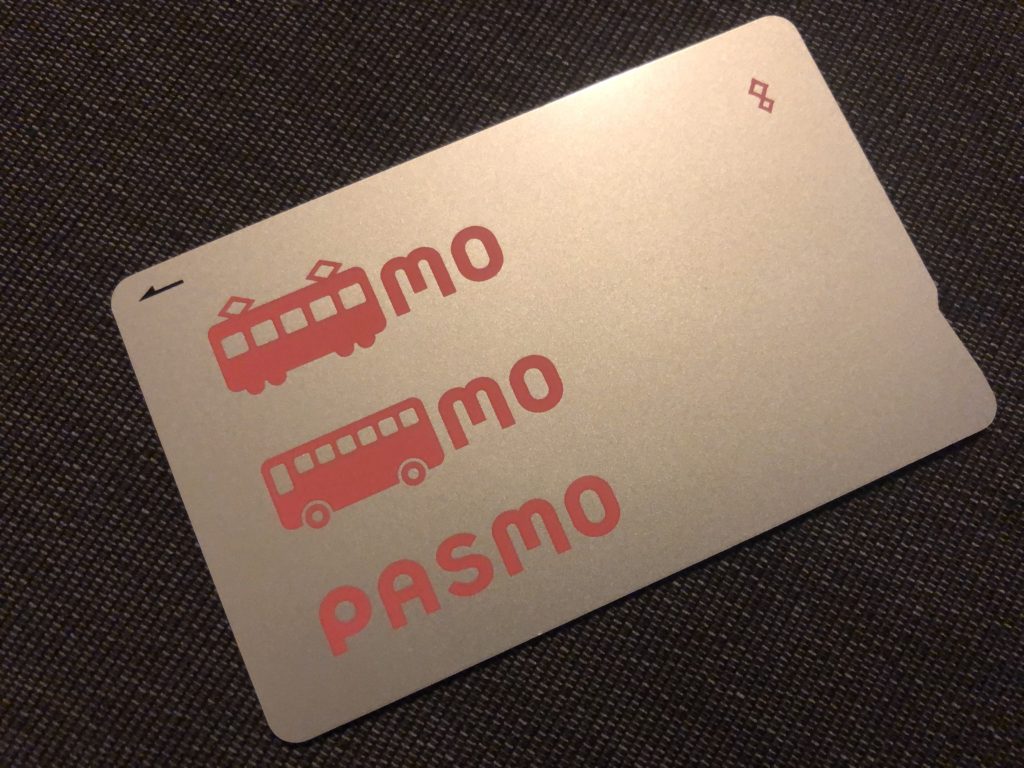
We stayed at the Super Hotel Lohas, and though it was a tiny room (and I do mean tiny- we had to take turns to open our cases whilst the other was in the shower), it was clean, cosy and welcoming, and the onsen was incredible. You could even choose which size/ shape pillow you wanted from the pillow cabinet. We loved it!
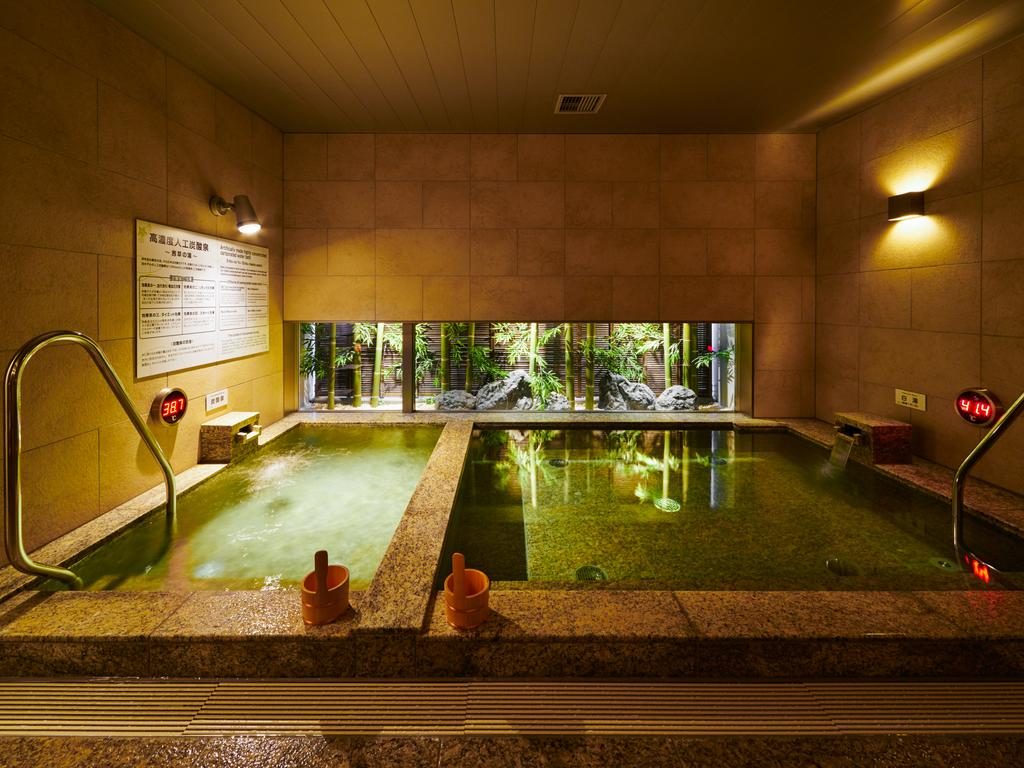
Day 3: Toyosu and Tsujki Fish Markets
Getting up before sunrise needs to be for something pretty special in our household, and our first Tokyo adventure didn’t disappoint. We woke at 4.45 am for a tour of the old and new Tokyo fish markets, a
We headed to Toyosu Market first to watch the famous pre-dawn tuna auction, where over $14 million worth of tuna can be sold in a day. It was incredible to watch the buyers examining the fish and using different hand signals to indicate their bids.
Our host, Toshi, bought fresh wasabi, crabs, snapper and oysters to prepare us a lunchtime feast. We even got a glimpse of stunning Mount Fuji from the sundrenched rooftop garden!
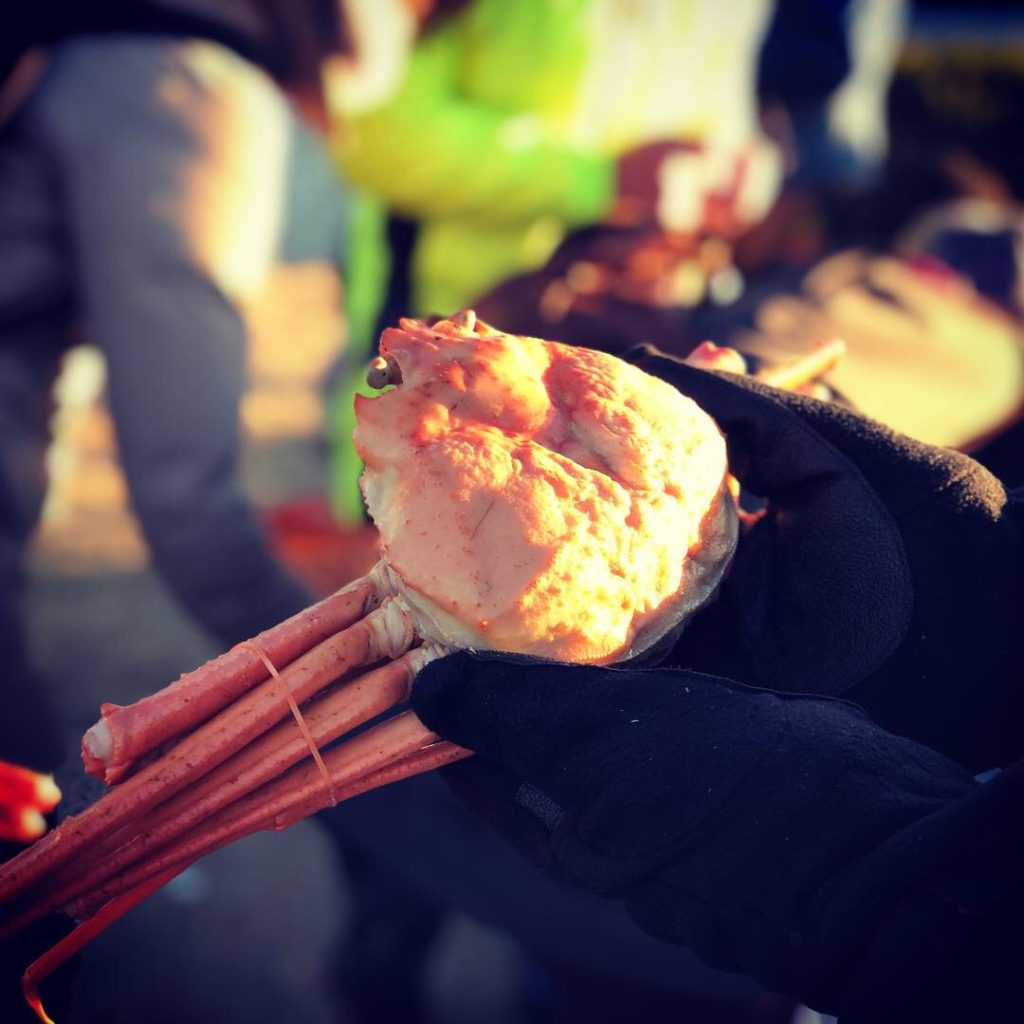
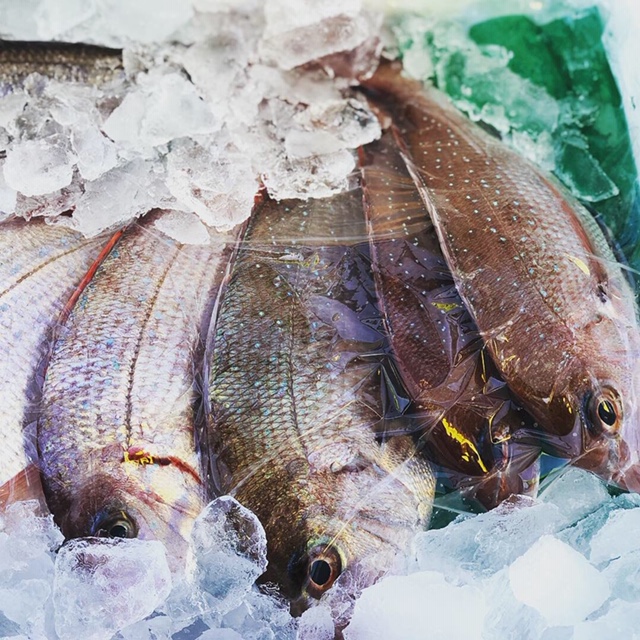
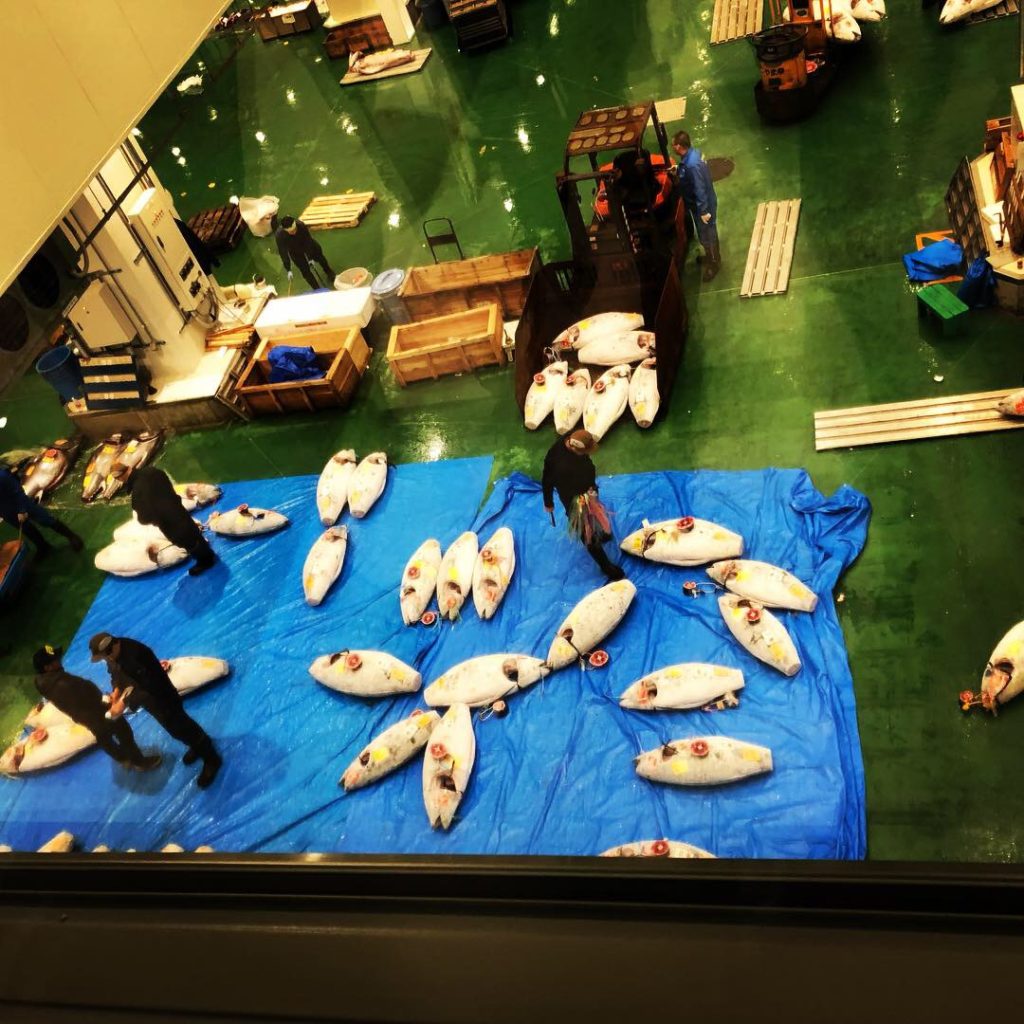
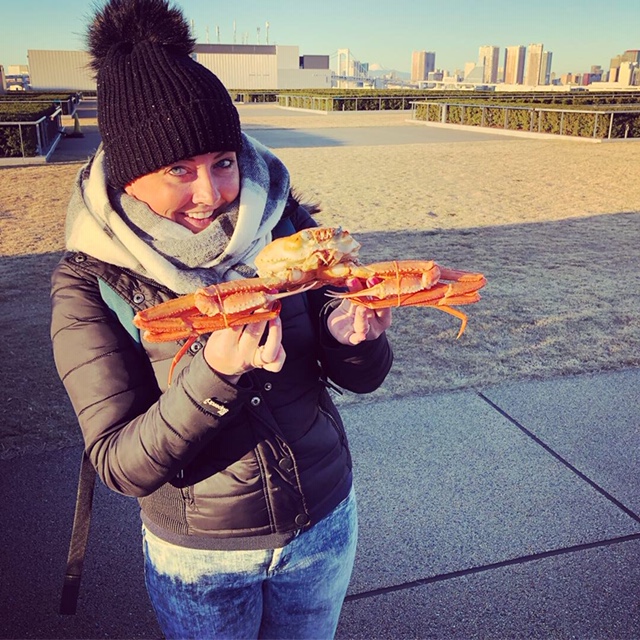
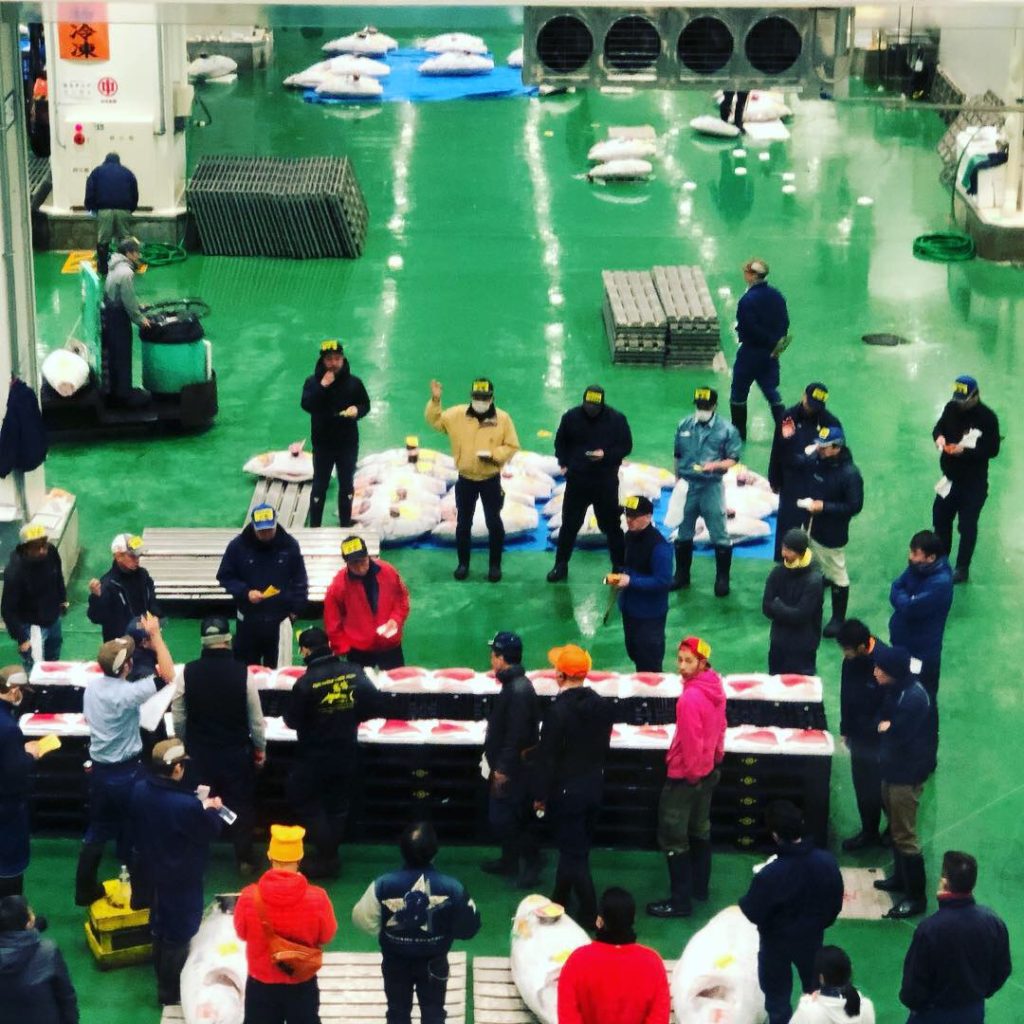
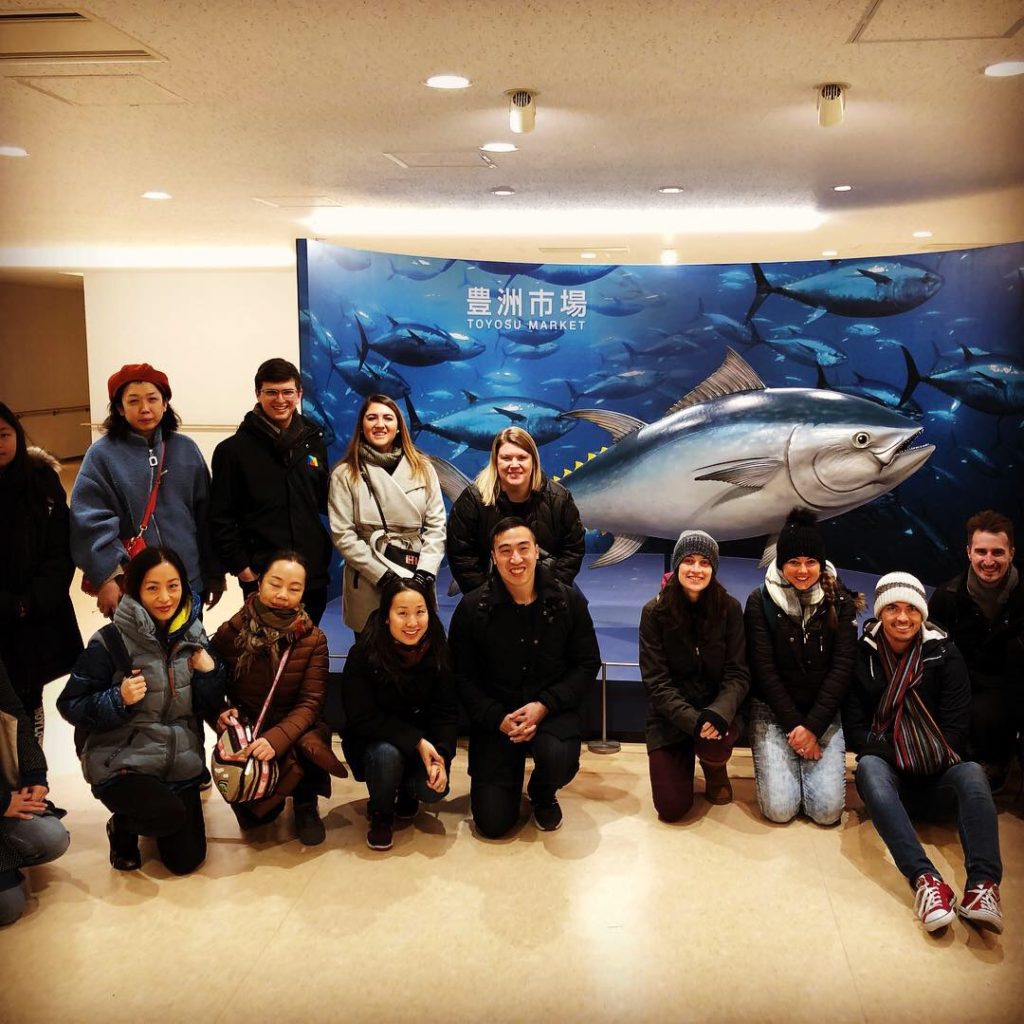
After the auction, we headed to the Tsujki Fish Market to sample some of the yummy seafood on sale and watch a whole tuna being filleted by one of Toshi’s friends. It’s not an activity for the squeamish out there, but seeing such skilled workmanship and passion first-hand was fantastic.
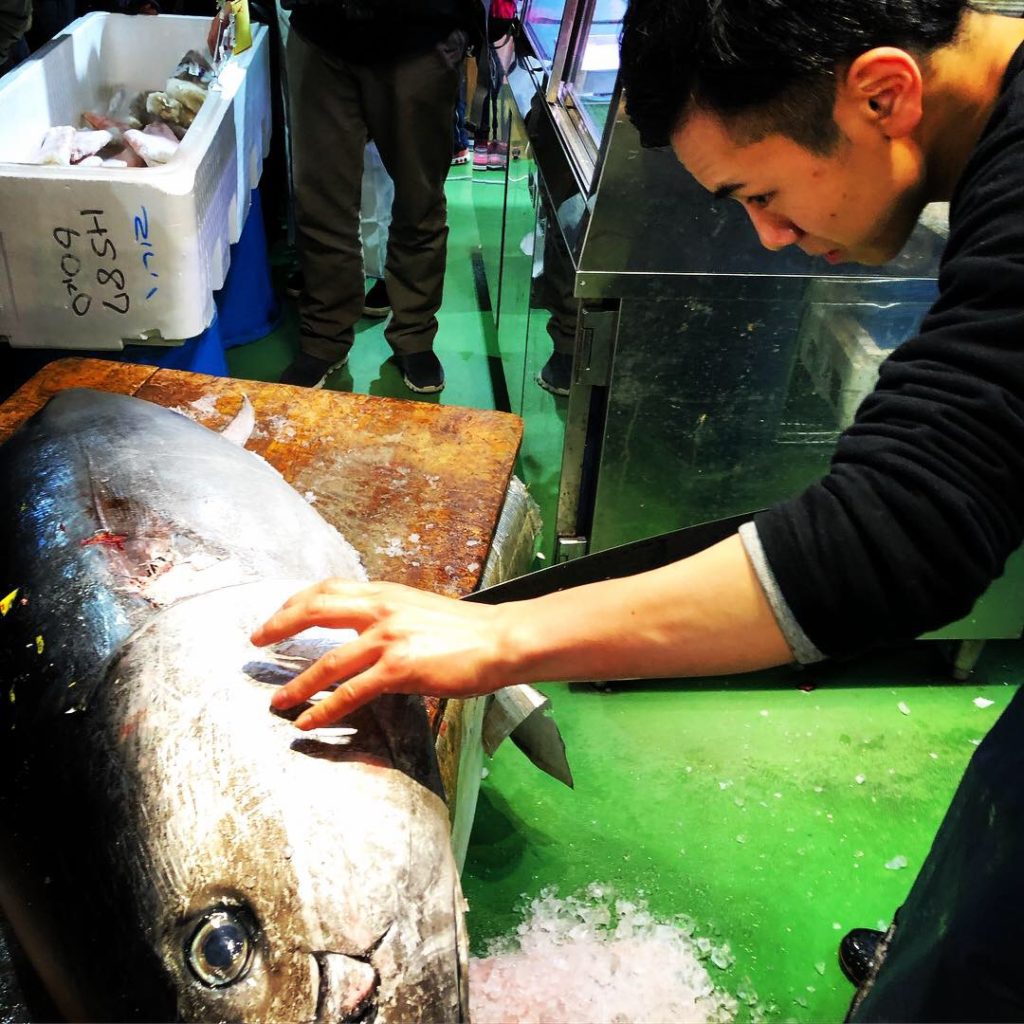
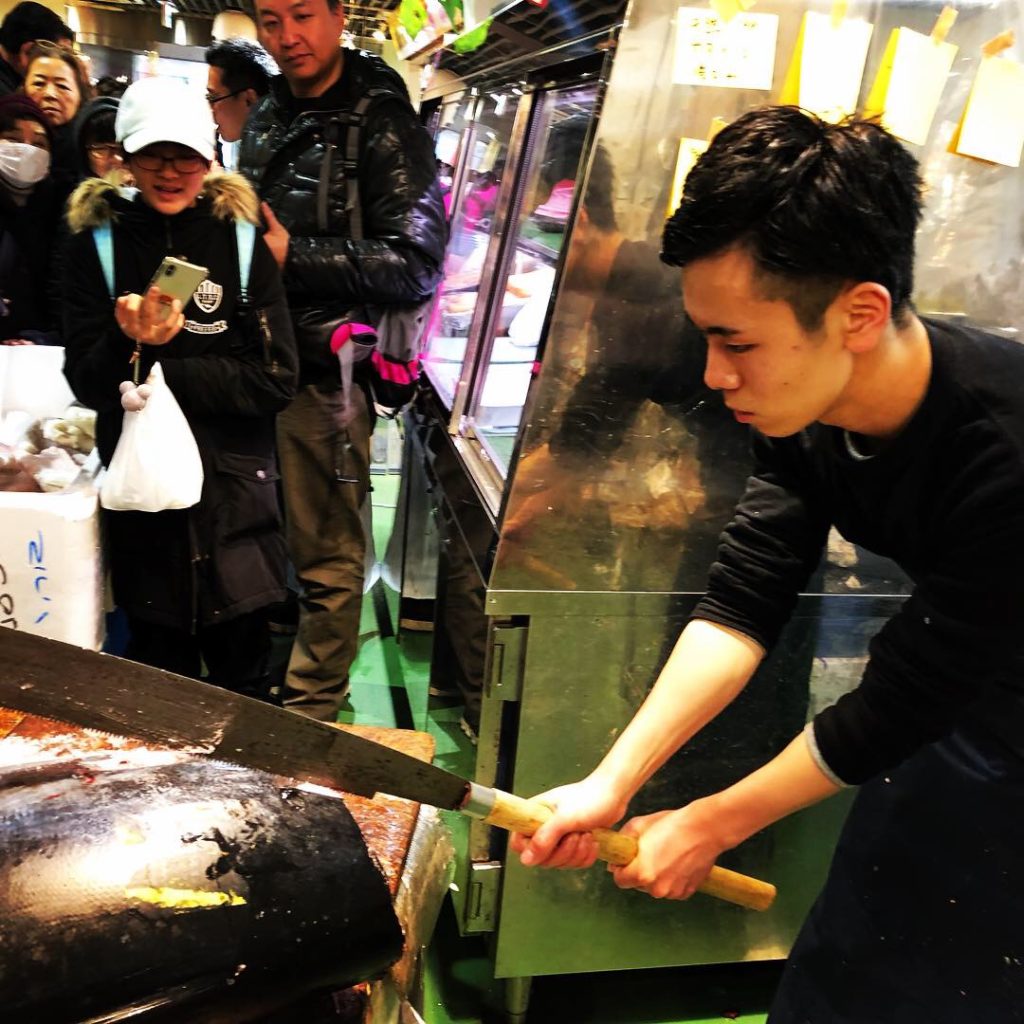
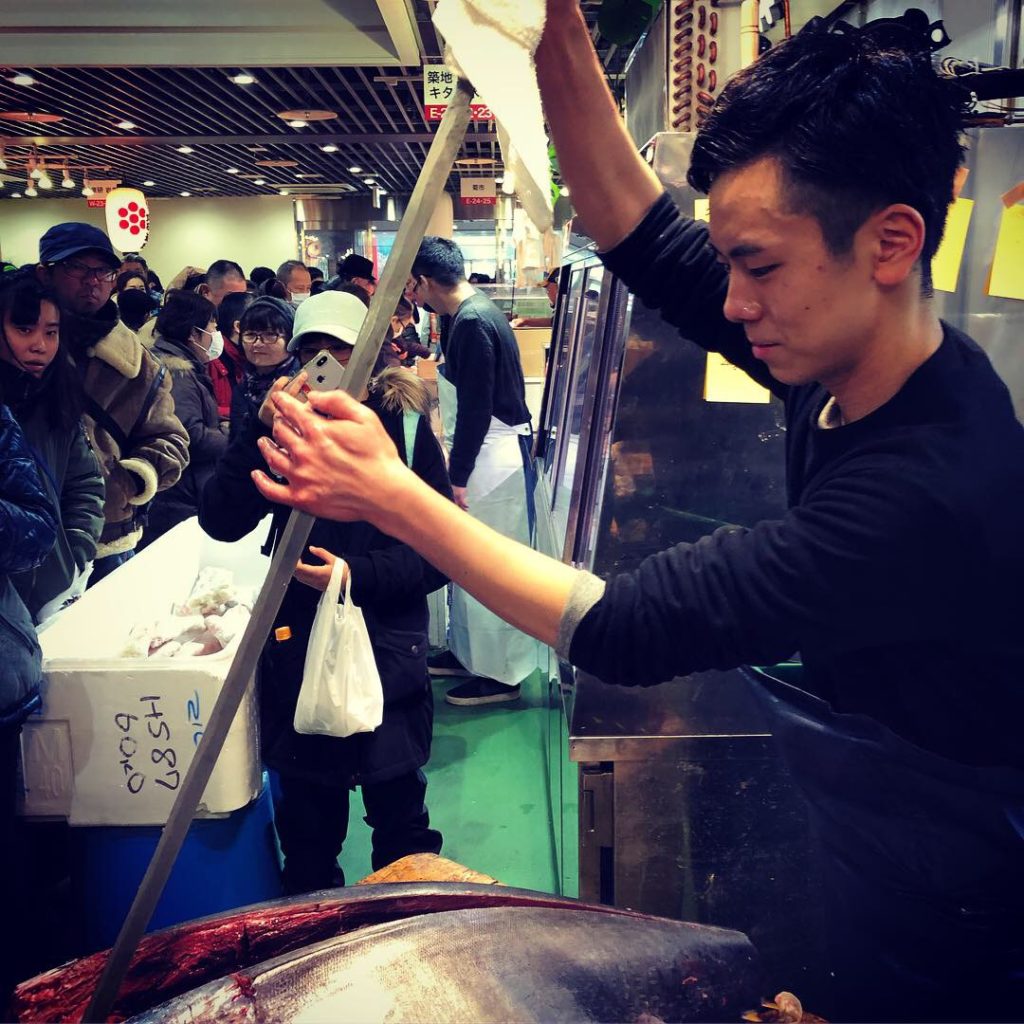
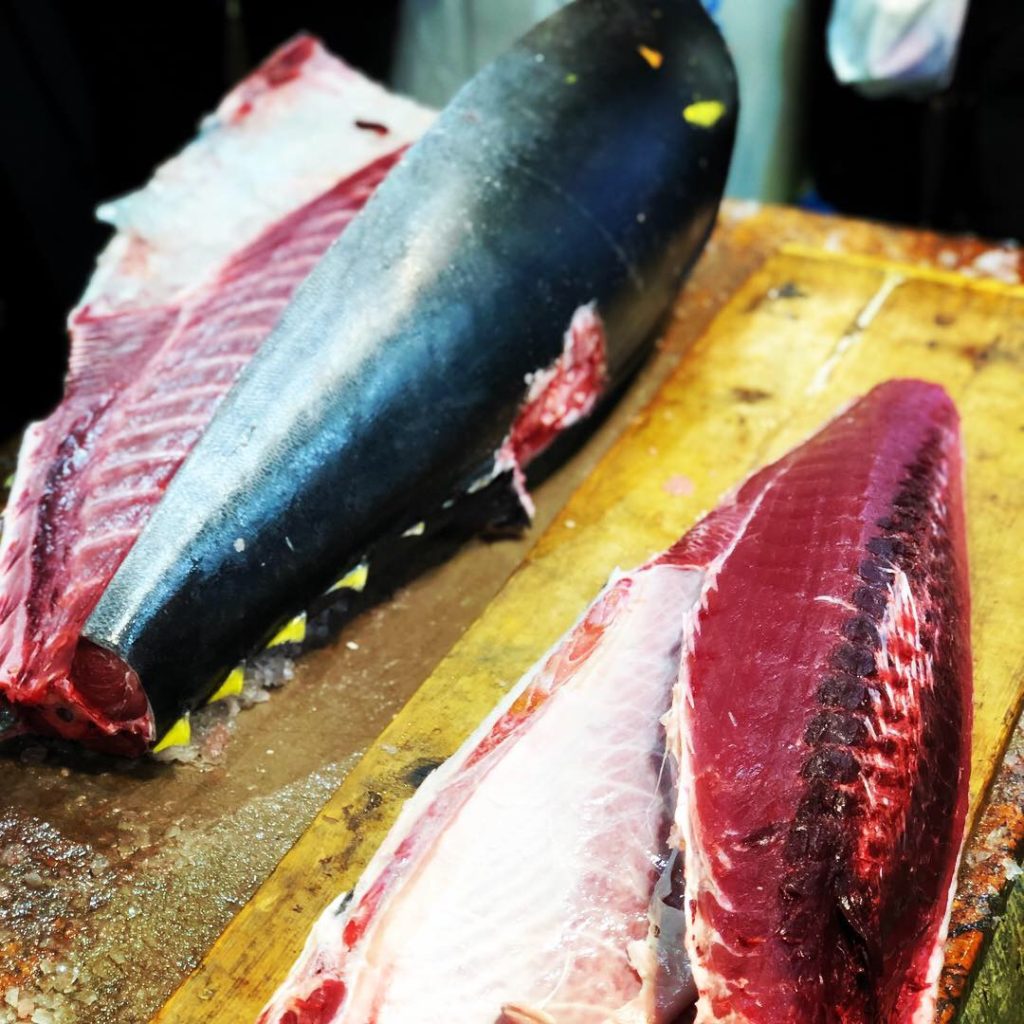
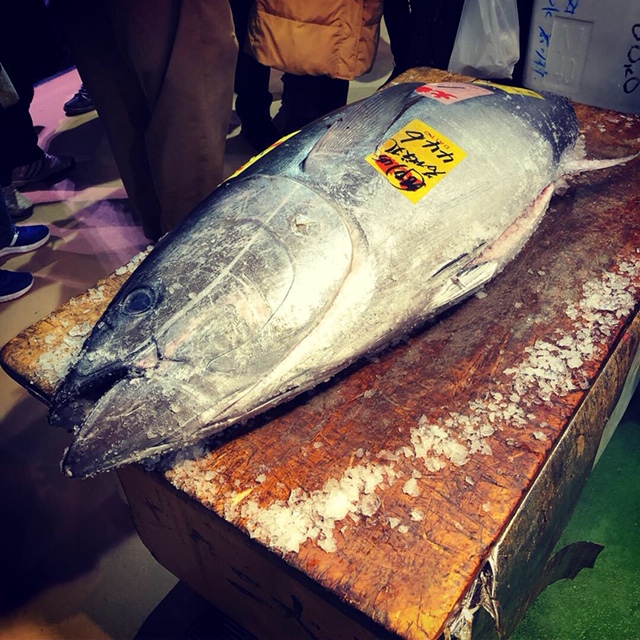
After taking in the sights and smells of the market, it was time for the tour finale: a delicious meal, made from all the fresh ingredients Toshi had bought that day, prepared by his lovely wife, Hiro. We made fresh wasabi paste by rubbing the root on a shark-skin grater and had a competition to see who could pull the most professional soft-serve ice cream from the machine! (Hint: not me!)
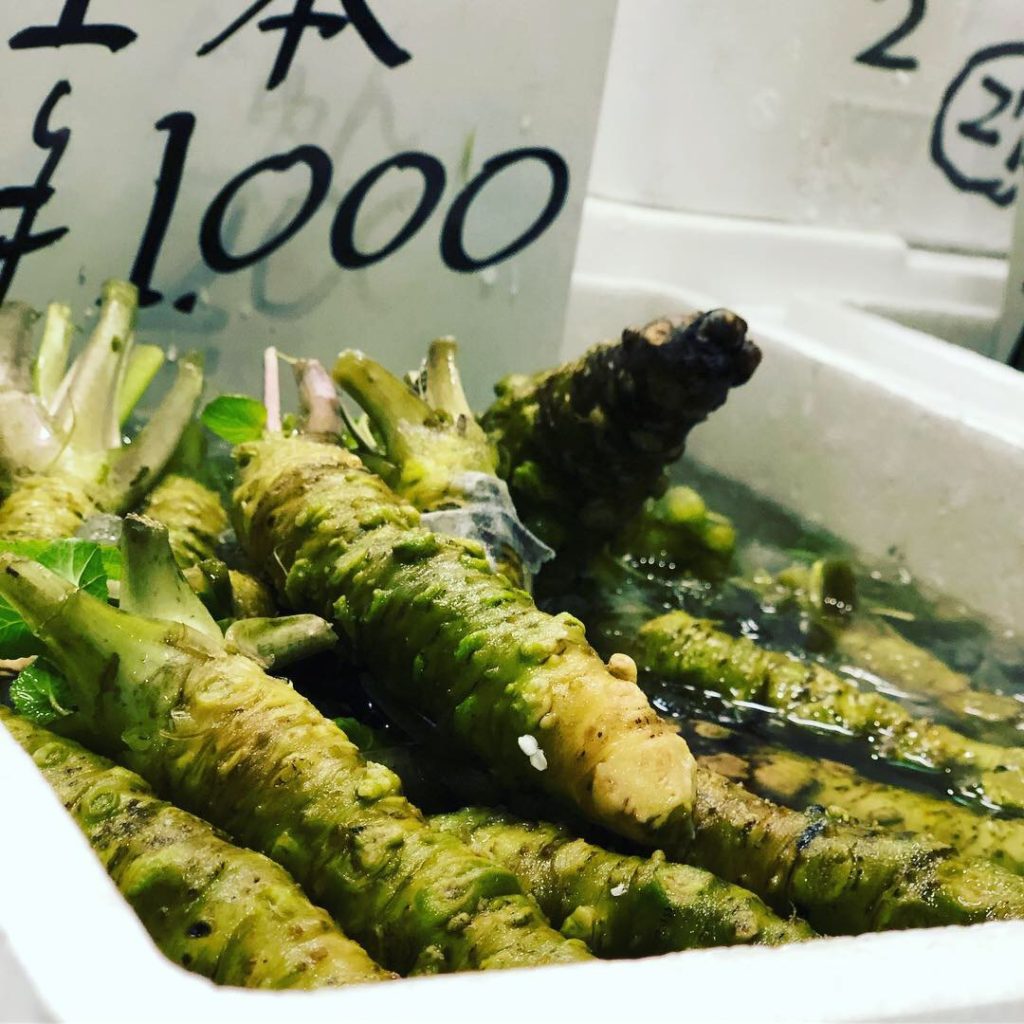

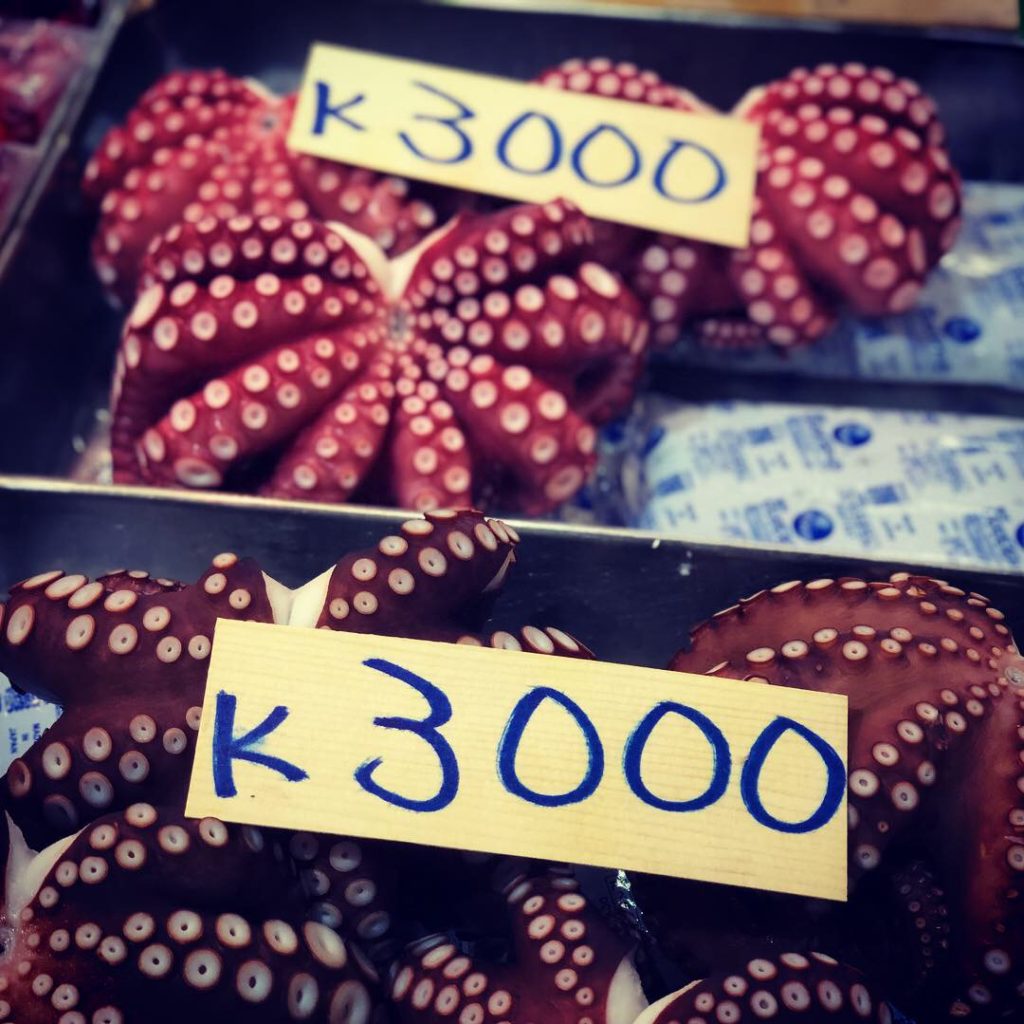
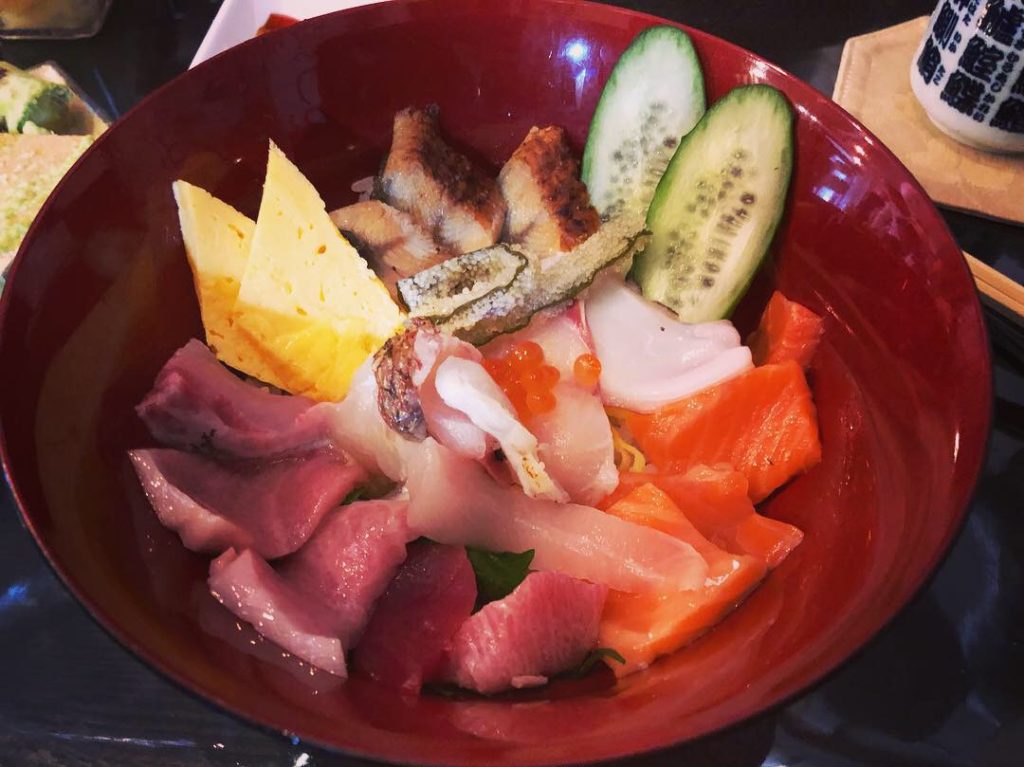
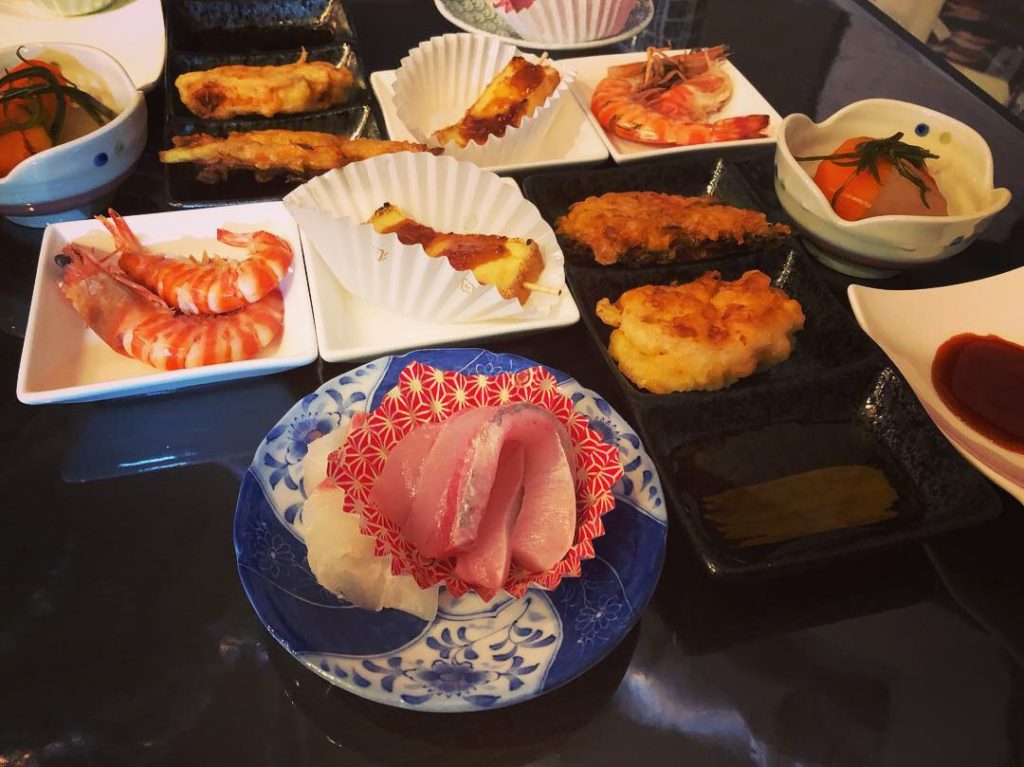

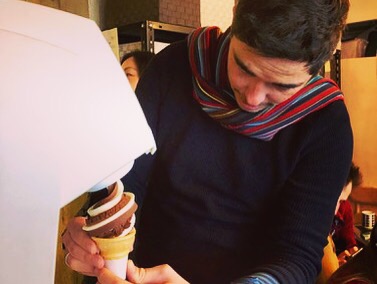
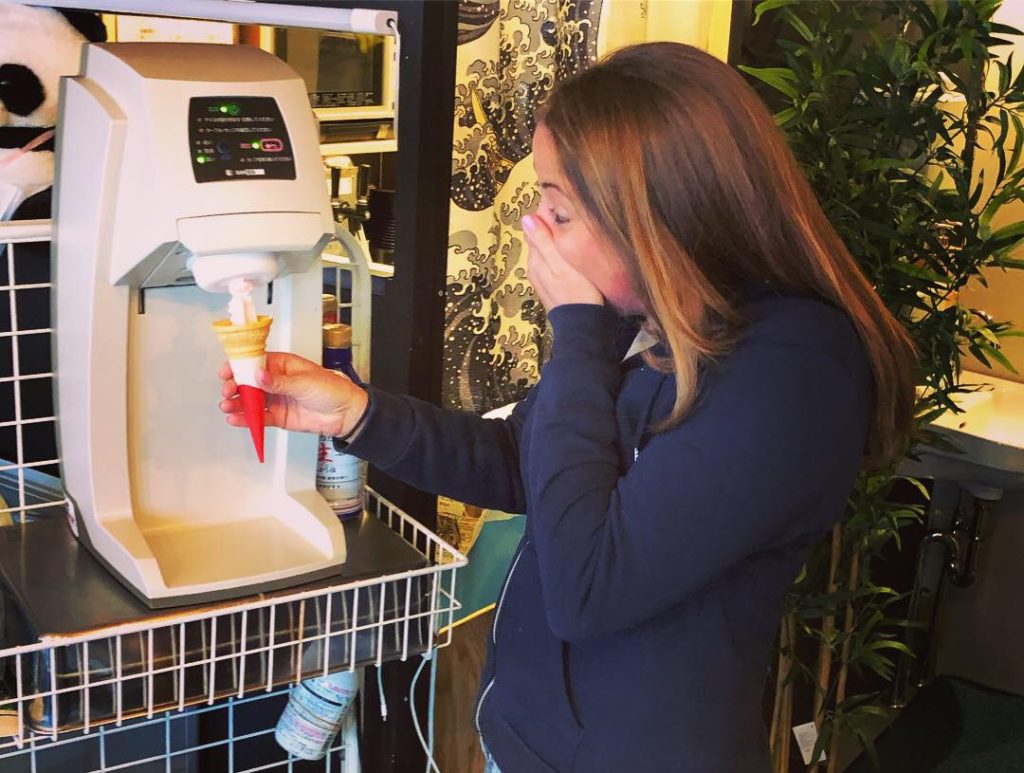
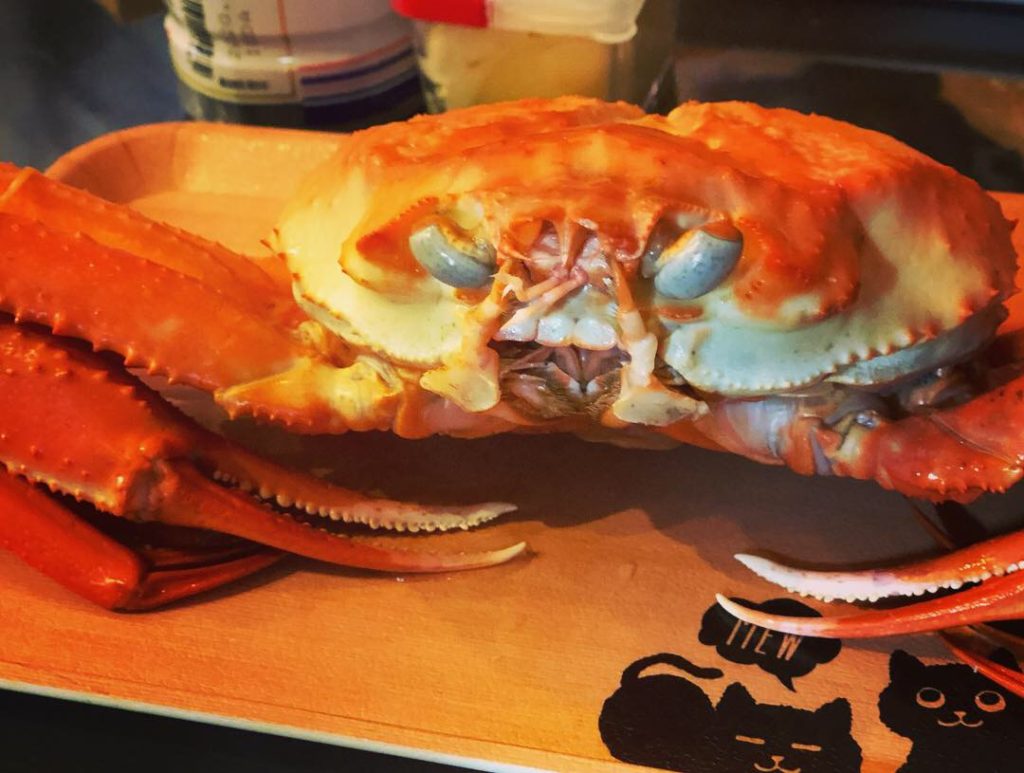
On the way home, we visited Unicorn Gundam, a giant robot that towers over the crowd at 19 meters tall! I had literally no idea who he was before we arrived, but soon had to admit he was pretty cool!
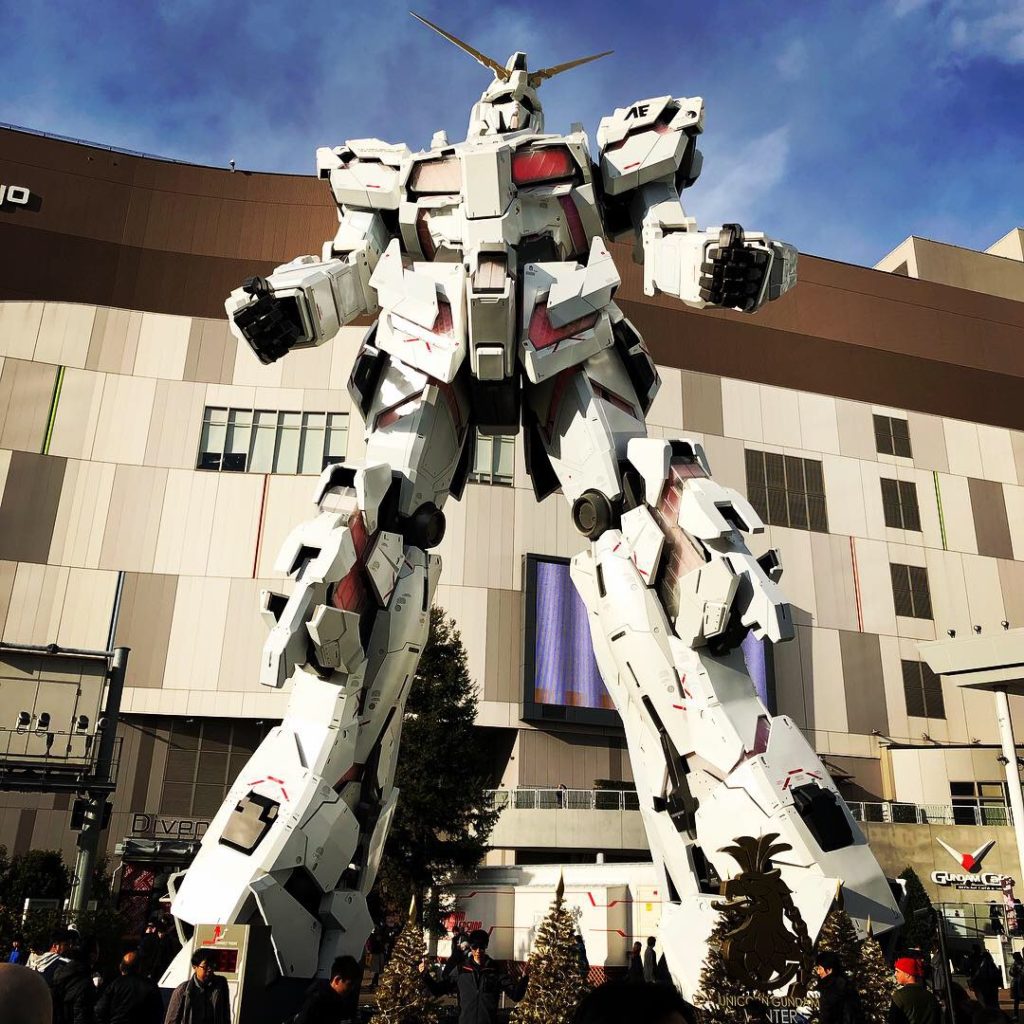
Day 4: TeamLab Borderless: Mori Digital Art Museum
This immersive digital art exhibition was spectacular and one of the absolute highlights of our trip. Like falling down the rabbit hole, we were immersed in a riot of lights, colour and music. There were secret
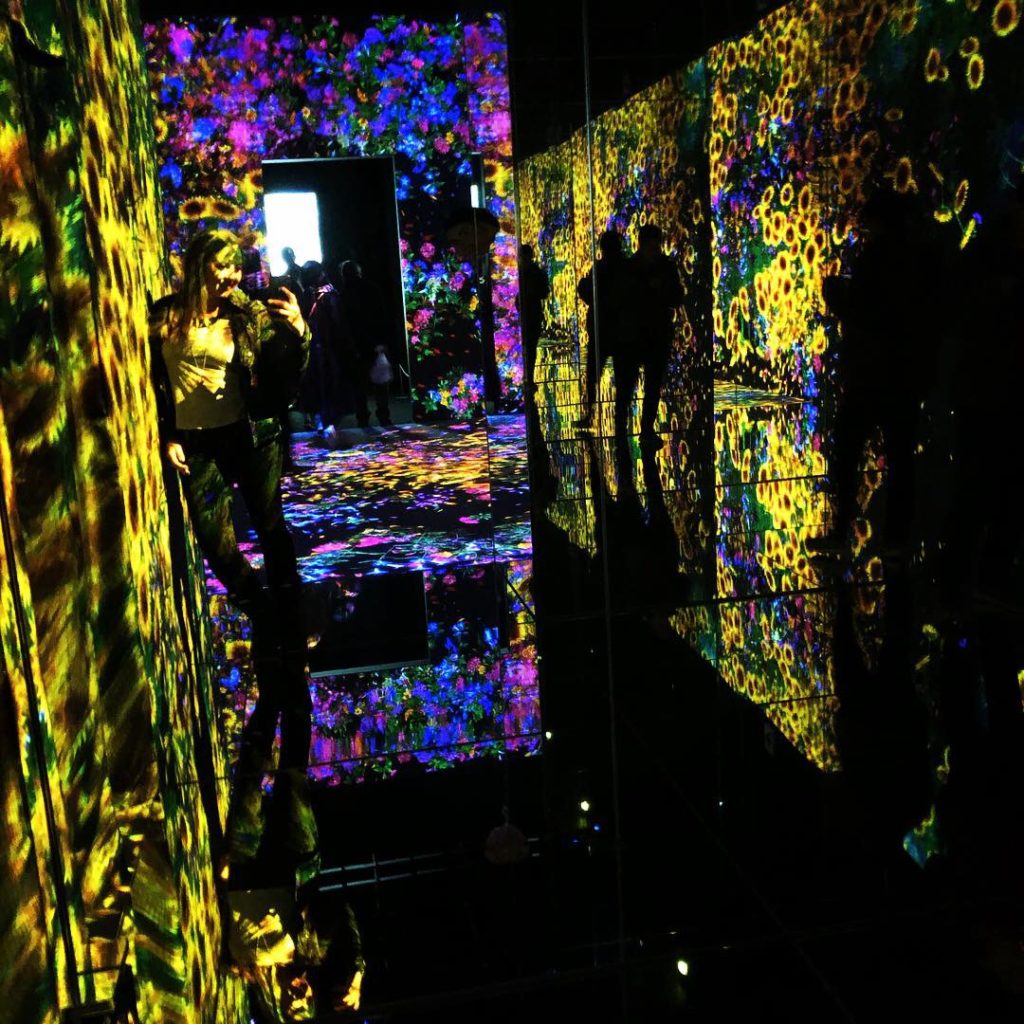
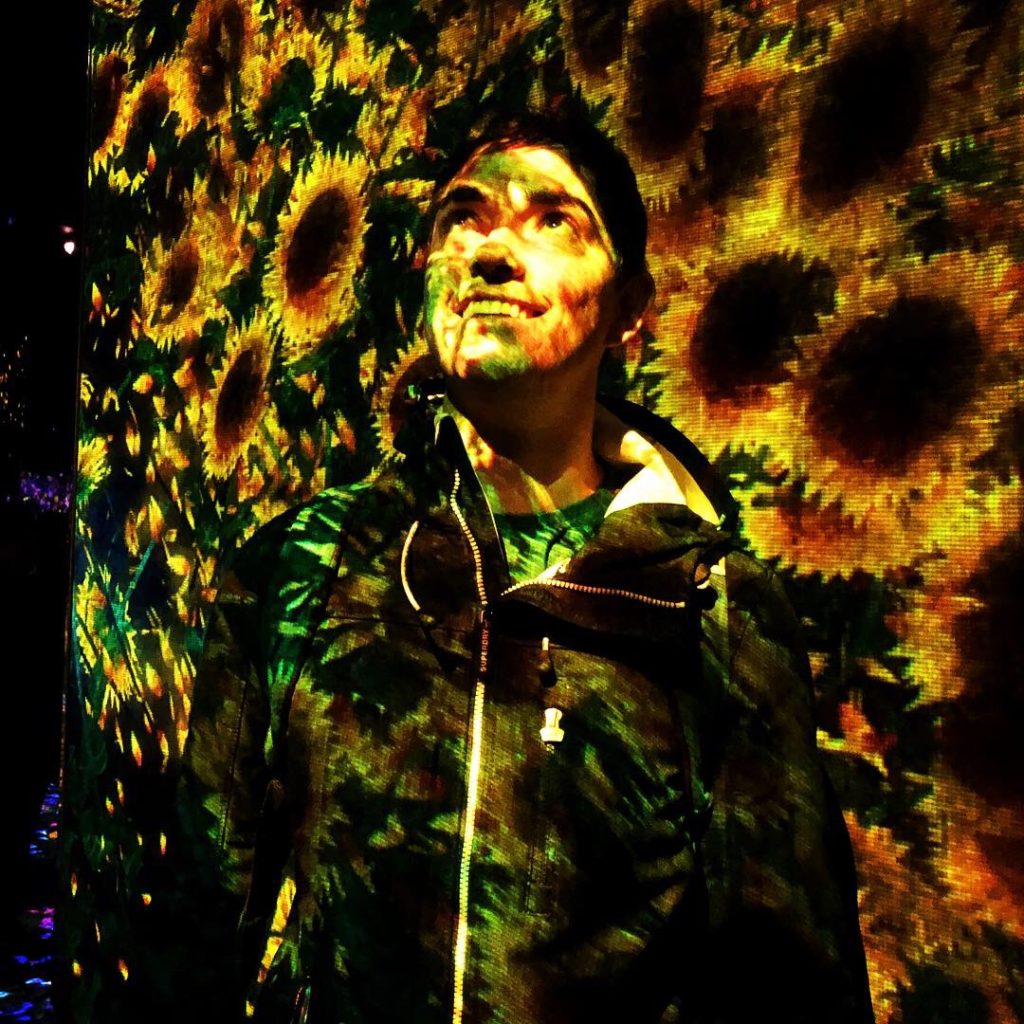
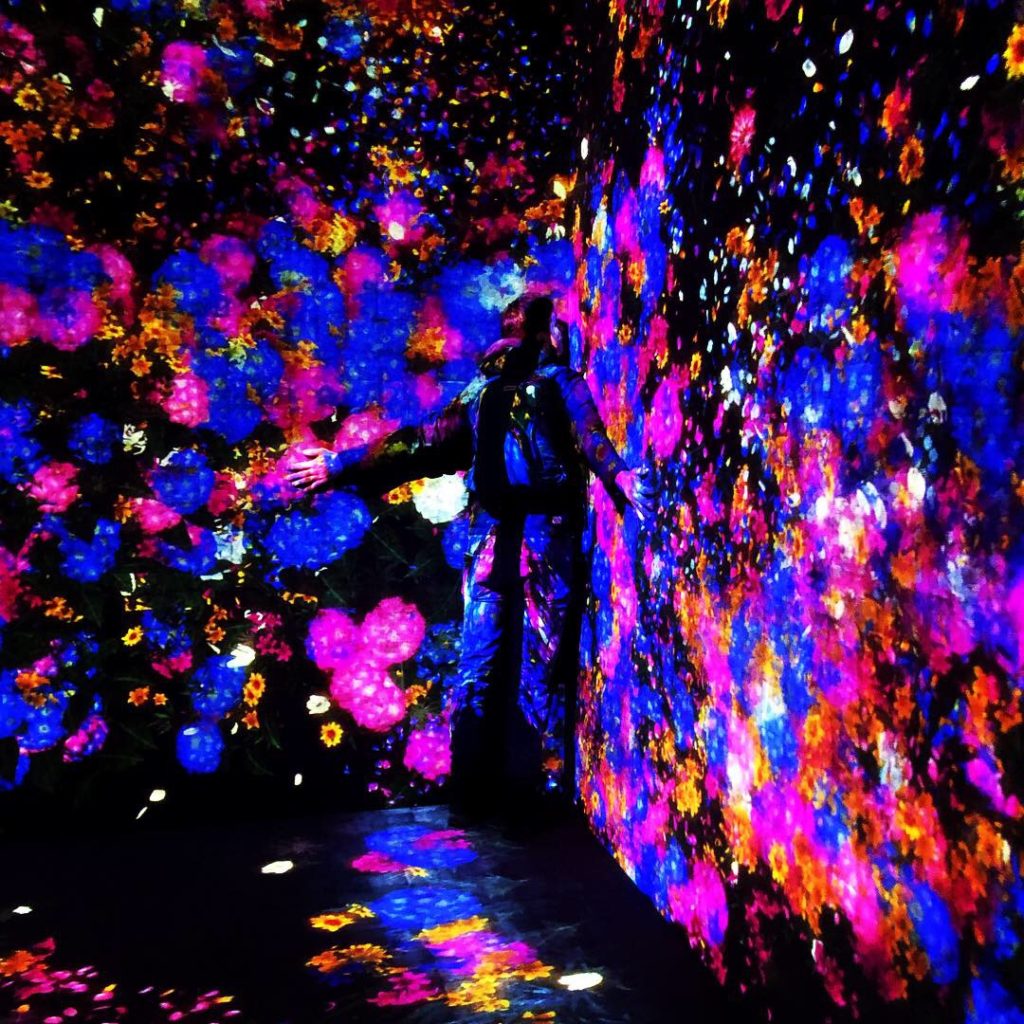
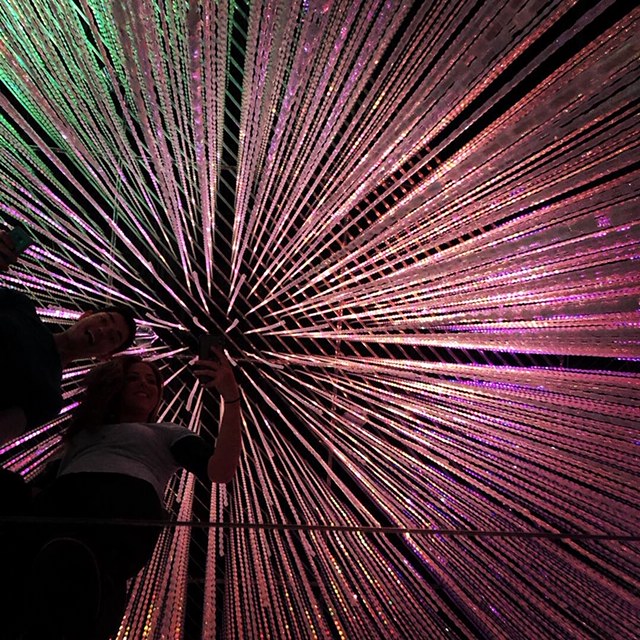
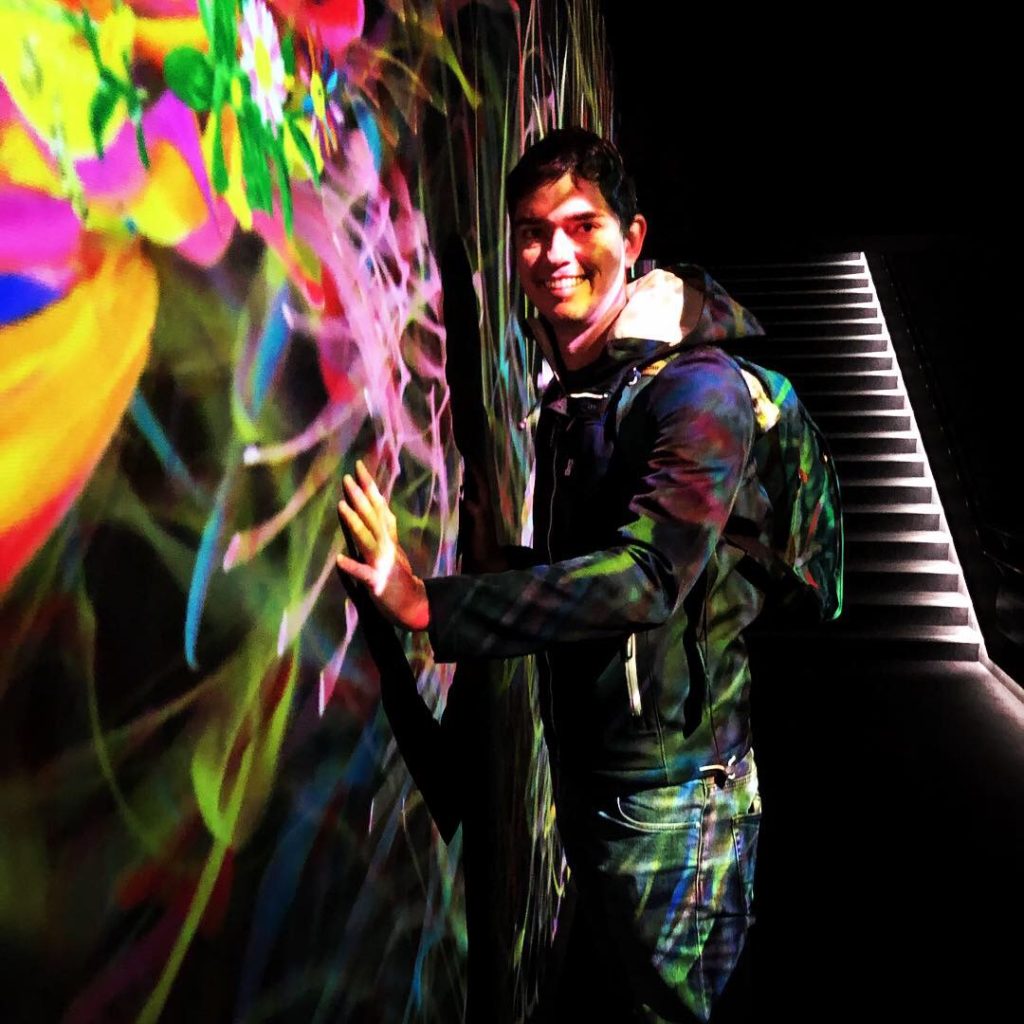
Over the course of three hours, we lost ourselves in forests of crystal icicles, climbed poles with light-up footholds, and watched as colourful whales swam and rolled across the floors. There were flower animals marching along the walls and a huge net ‘nest’ suspended high above the ground, where you could lay and watch the light show unfold. If magic really does exist in the world, it was certainly here that day.
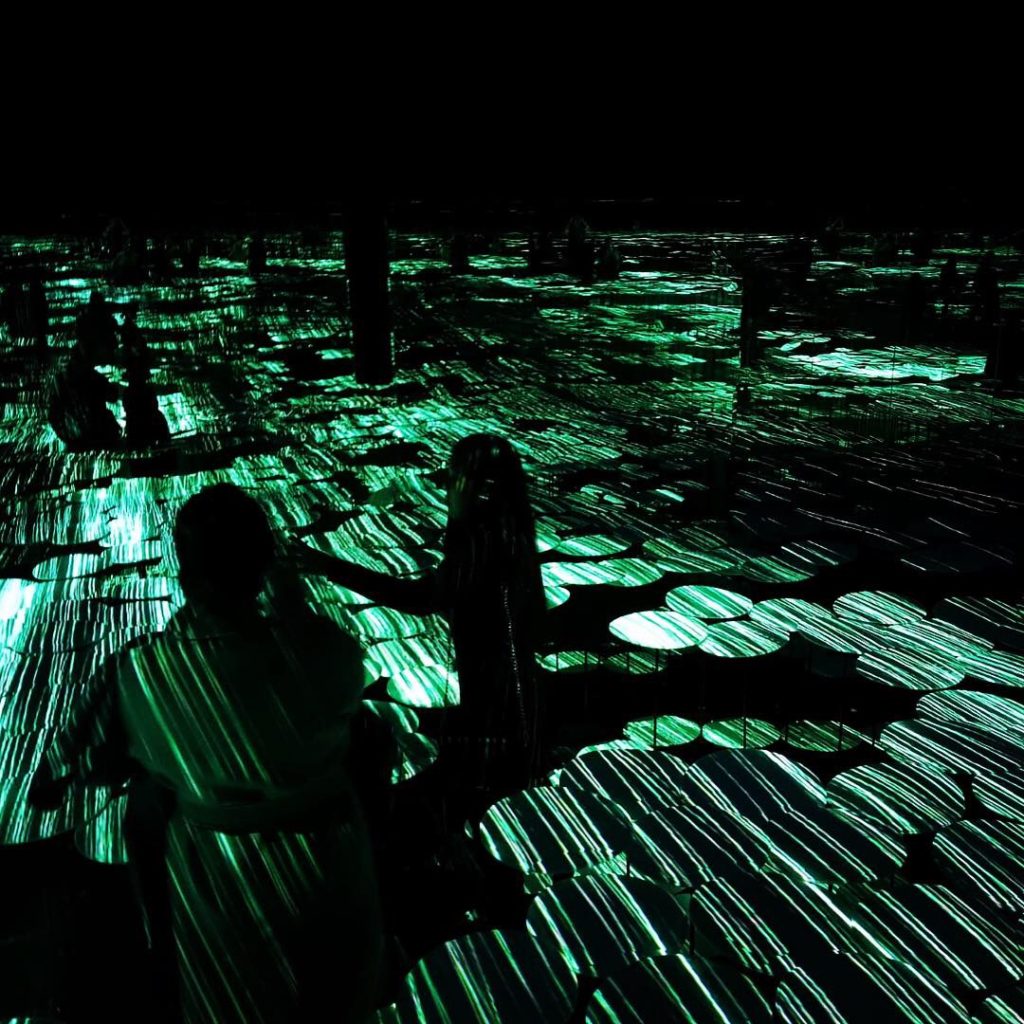
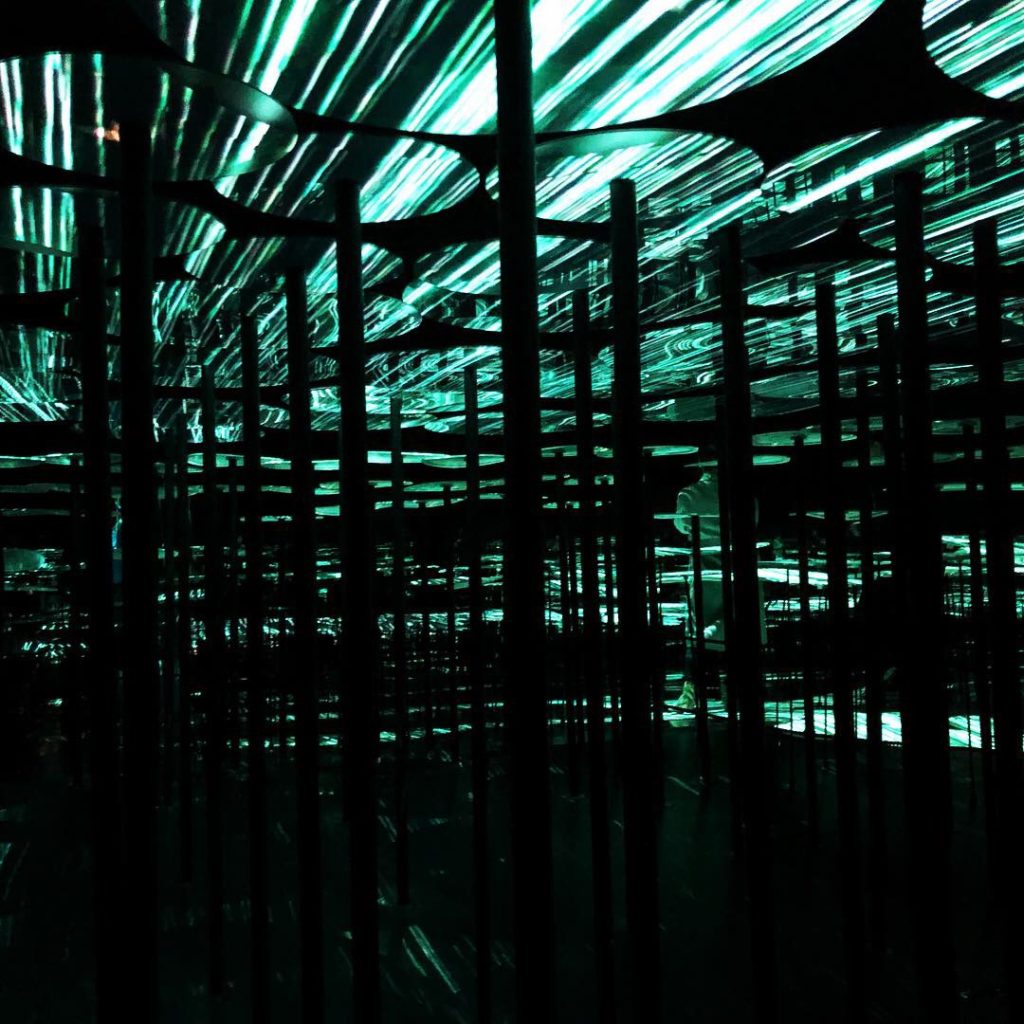

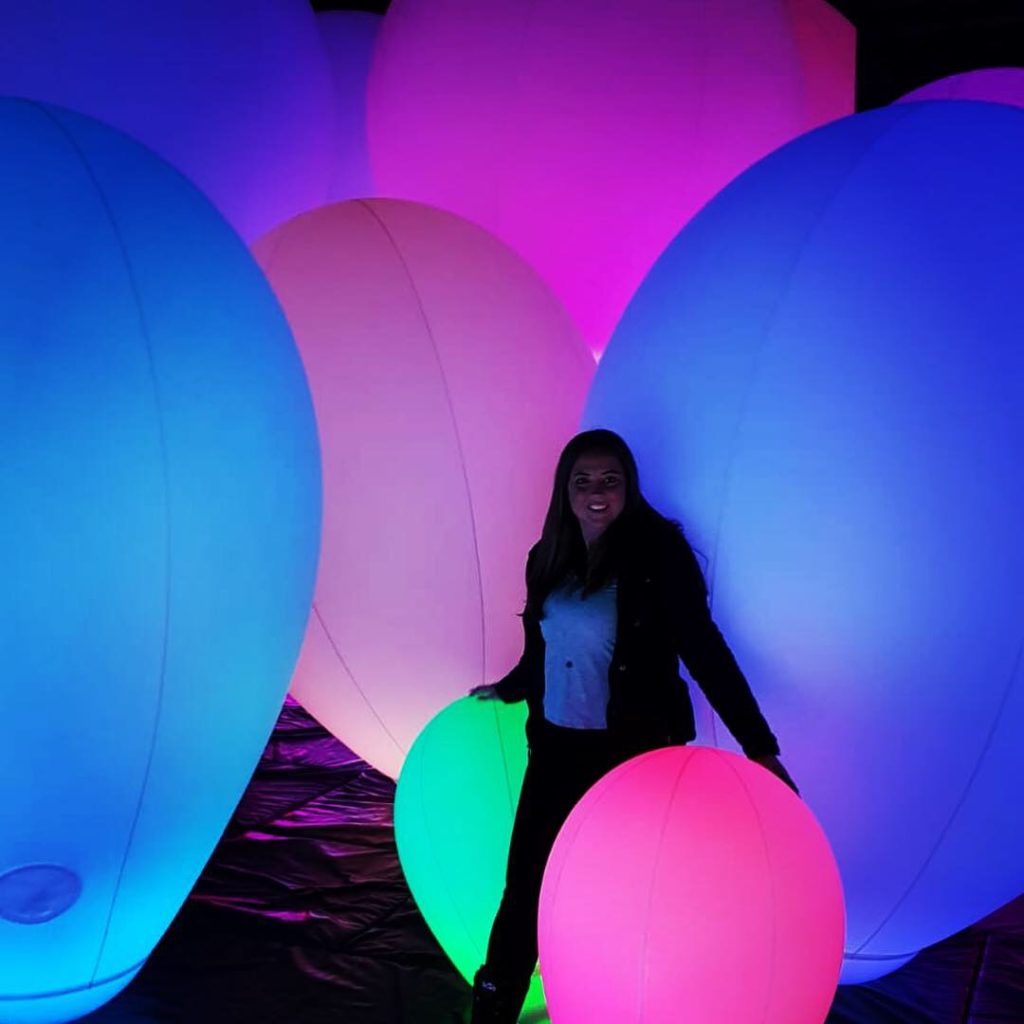


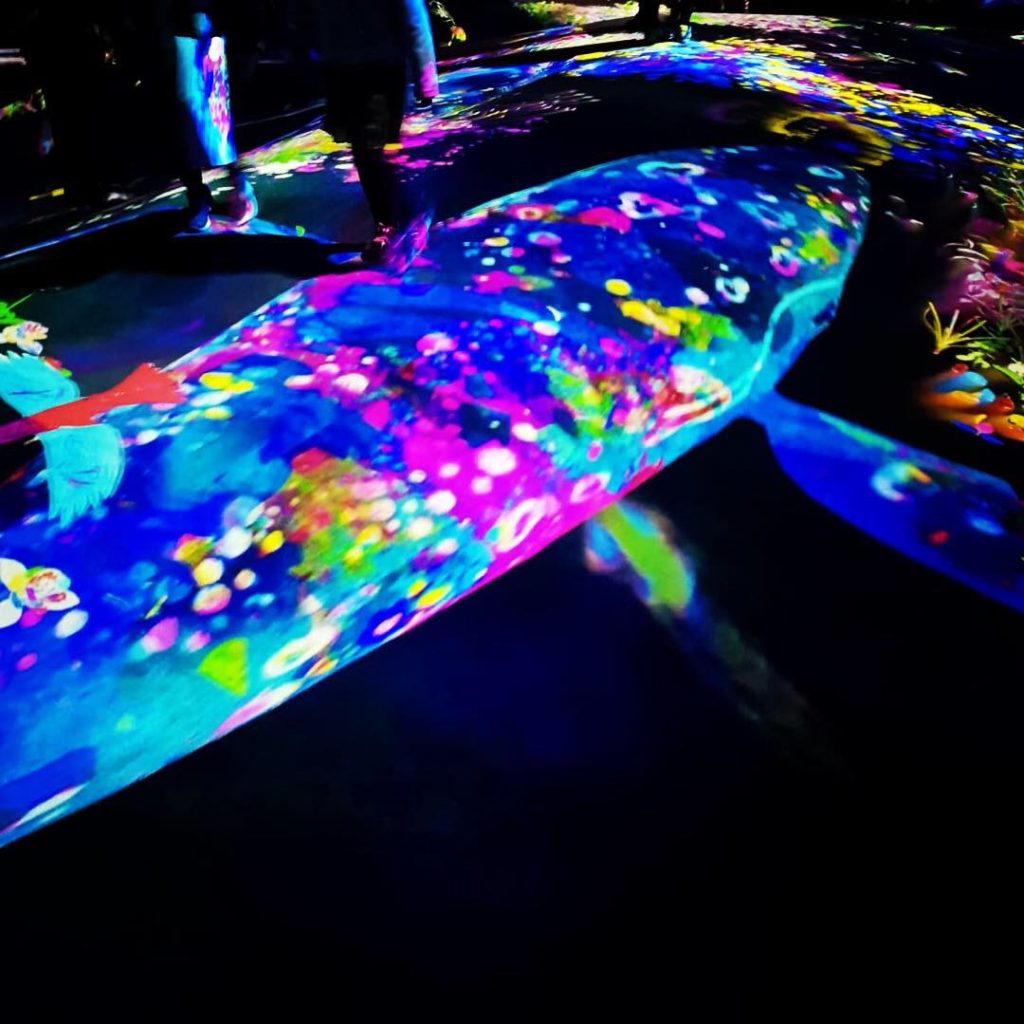
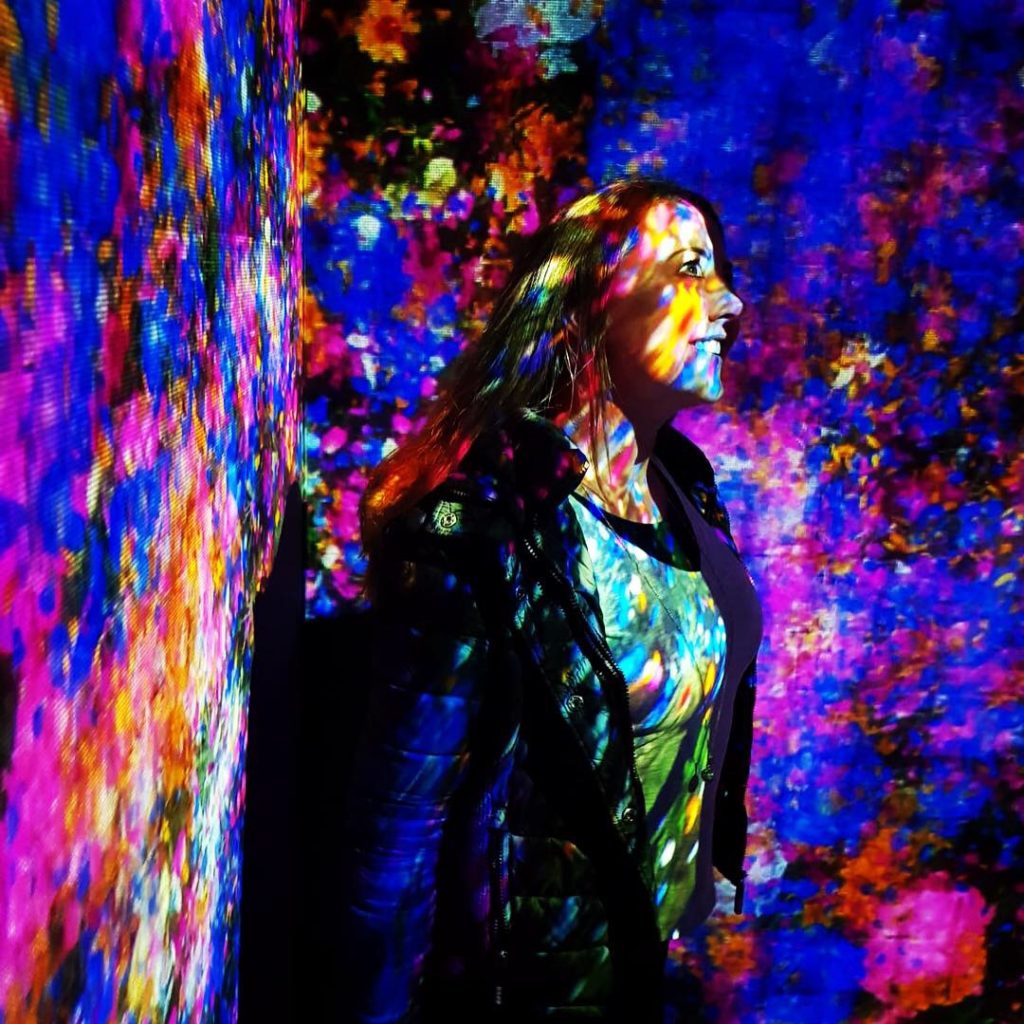
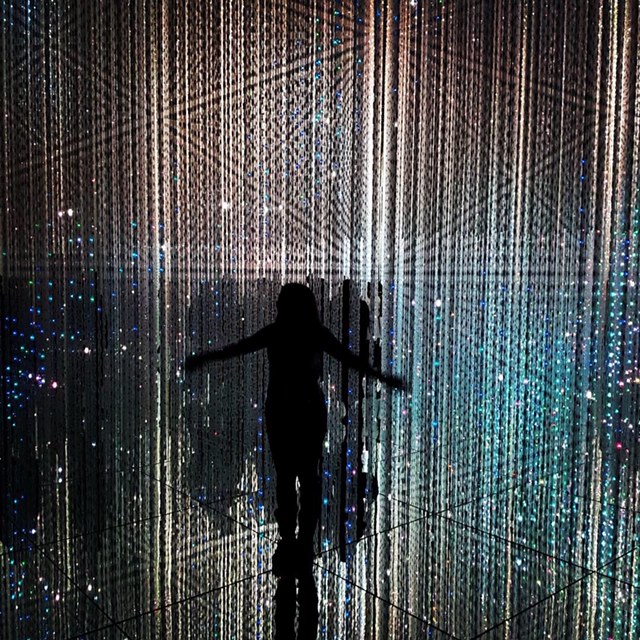
Day 5: Kawaii Monster Cafe
For a hilarious and quirky meal experience, get yourself down to the Kawaii Monster cafe in Harajuku, Shibuya. ‘Kawaii’ means ‘cute’ in Japanese, so it’s pretty much a Willy Wonker-esque world of fluffy monsters and colourful cartoon cakes. The food, though super creative, is nothing to write home about,
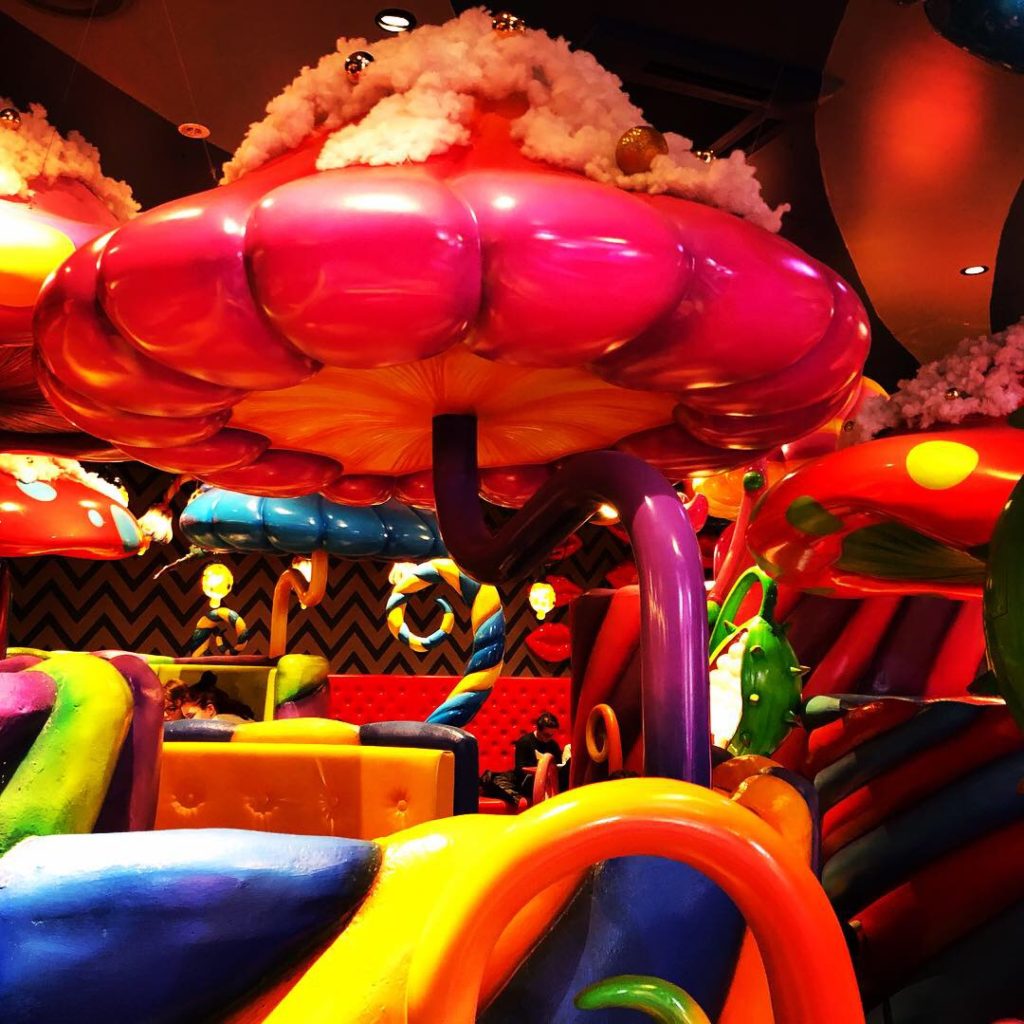
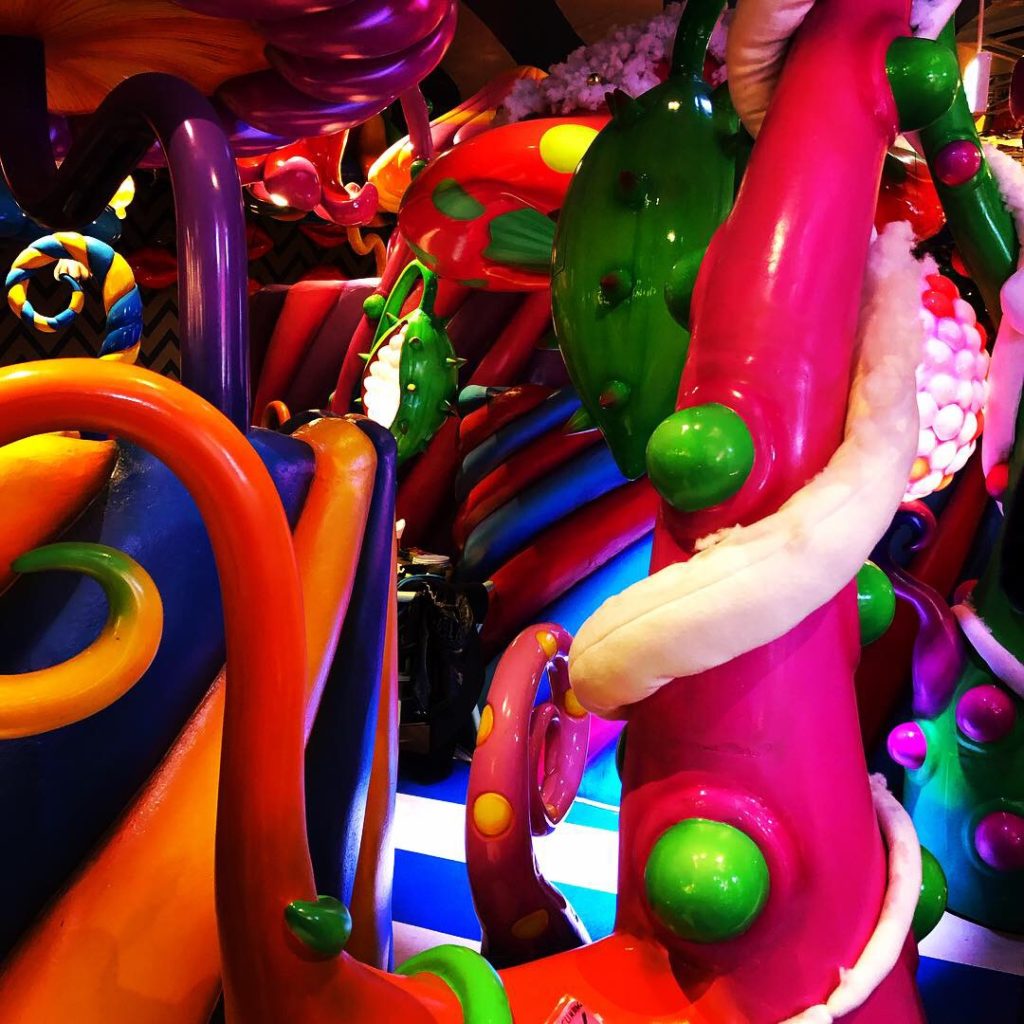
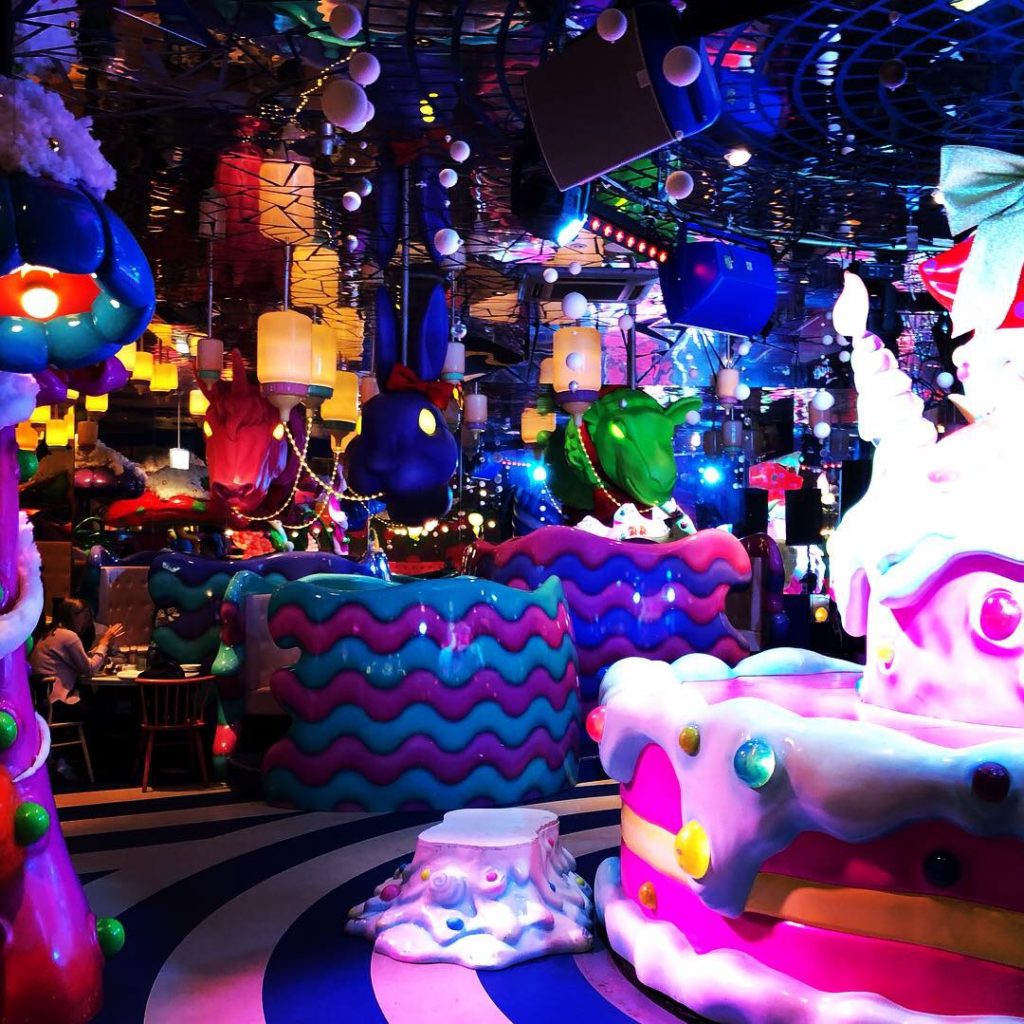
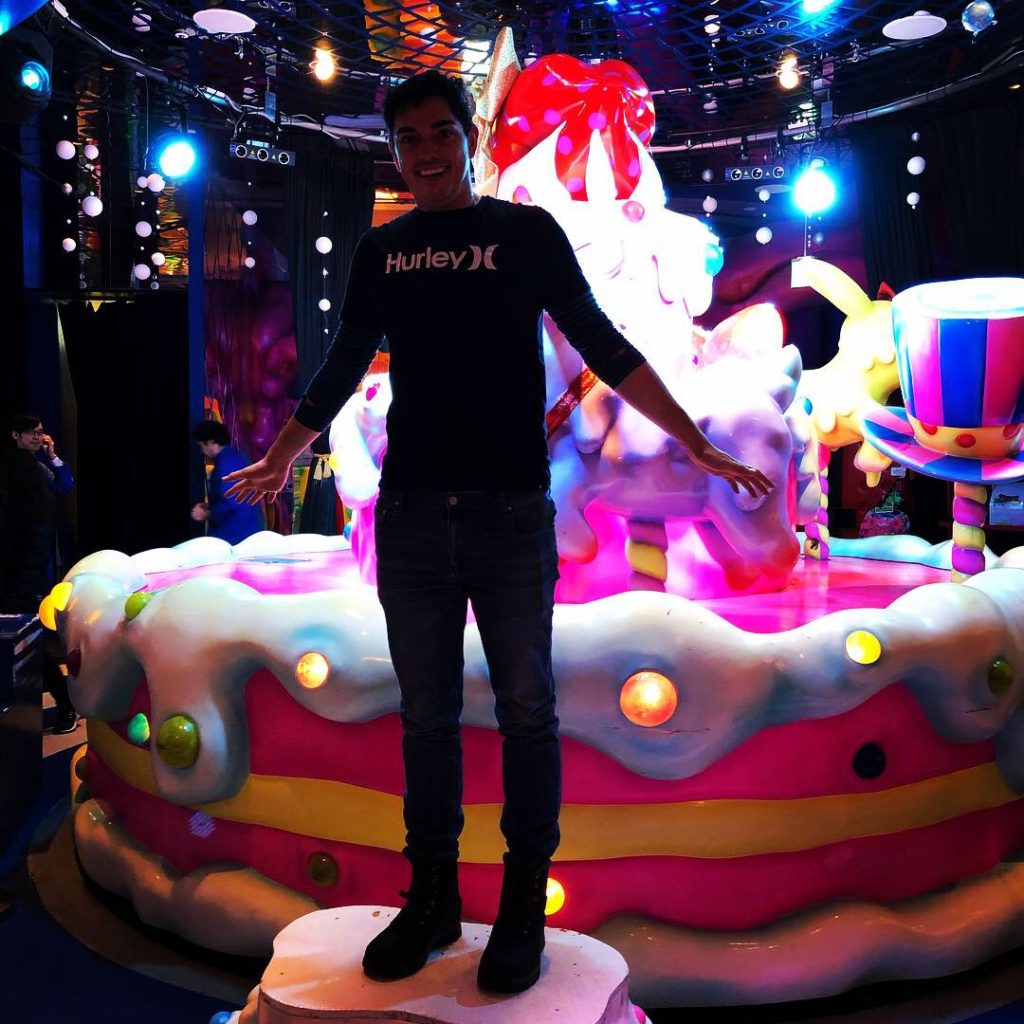
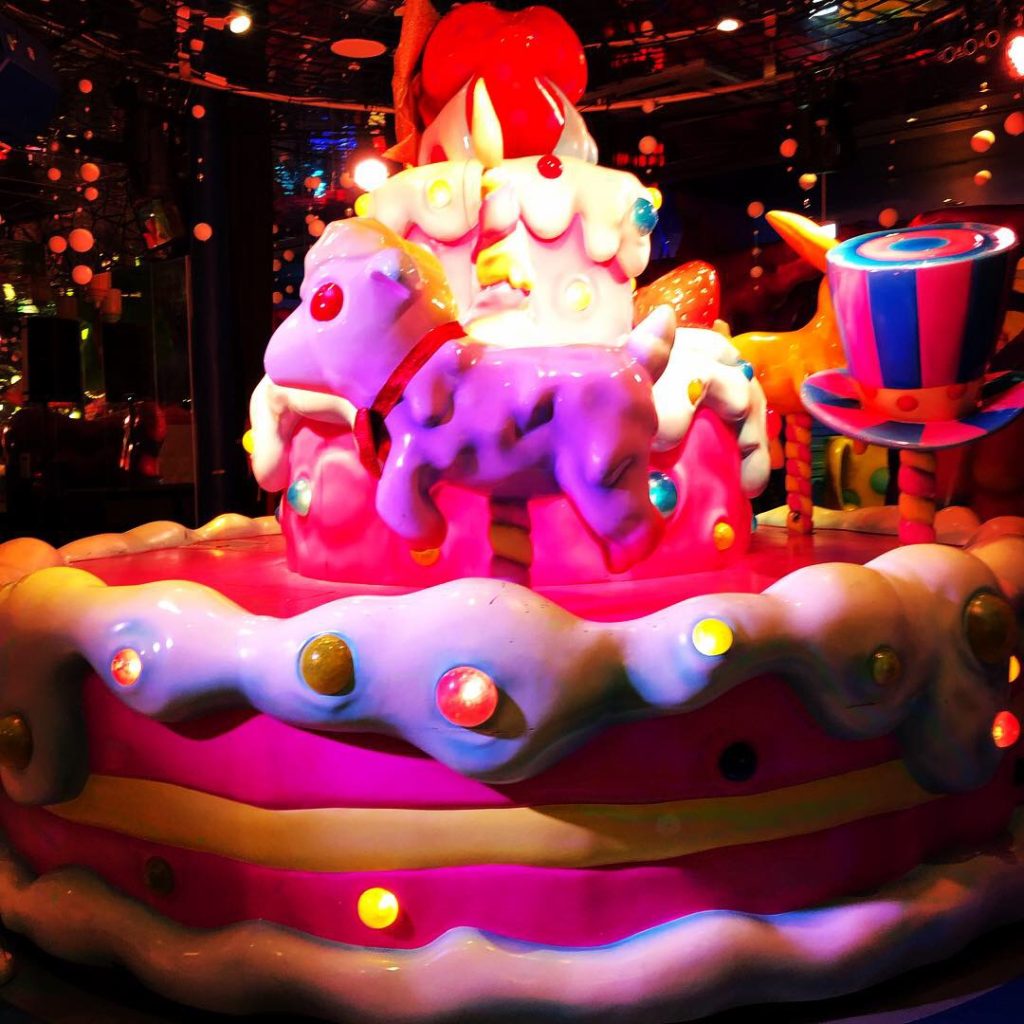

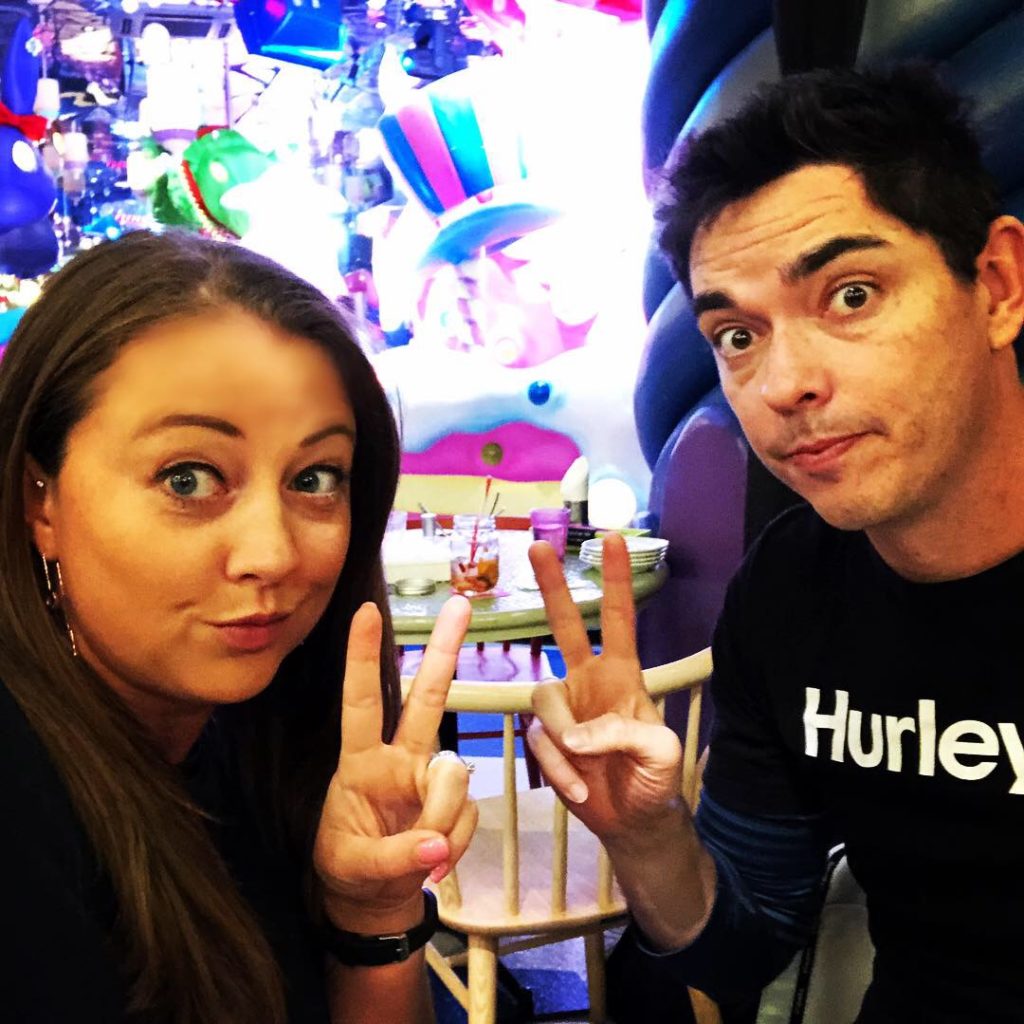
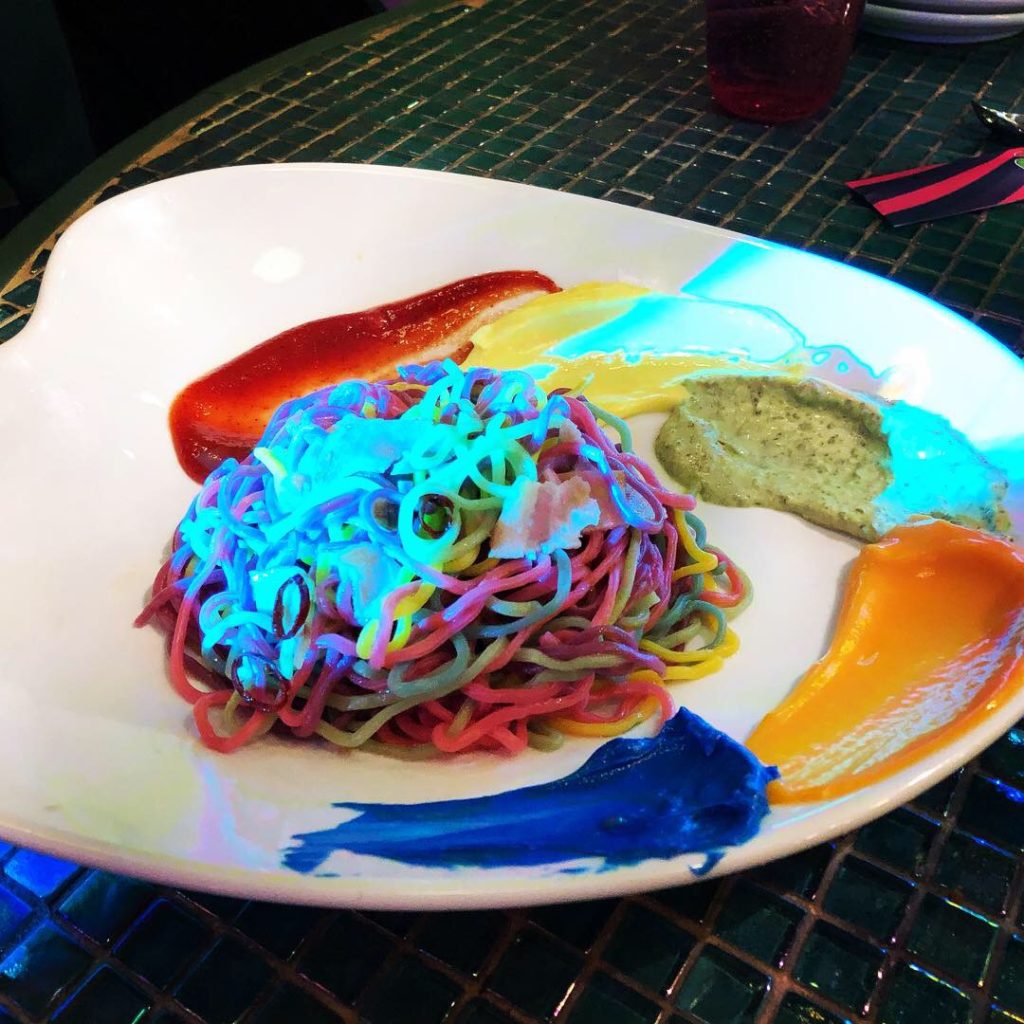
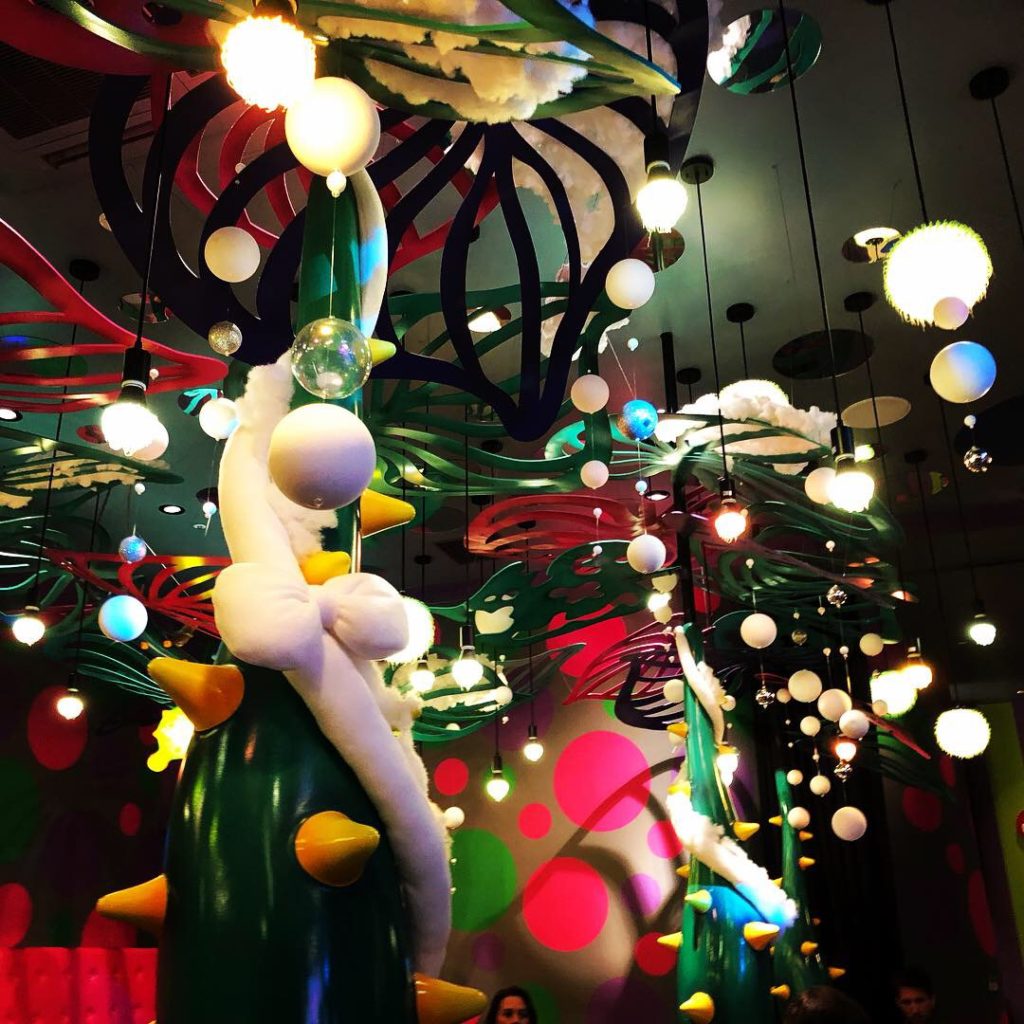
Whilst exploring the area, we discovered that Harajuku is known for its array of animal cafes, so we decided to check them out, too.
Harry’s Hedgehog Cafe and Owl’s Garden
These cafes can both be pre-booked (though we just wandered in), and the cuteness is simply overwhelming. I melted about eleventy-thousand times.
Owl’s Garden is home to a variety of beautiful birds of prey: falcons, hawks, and of course, owls. It’s a really unique opportunity to admire these beauties close-up and learn about their habits. I fell completely in love with the little brown owl and didn’t want to put him back!
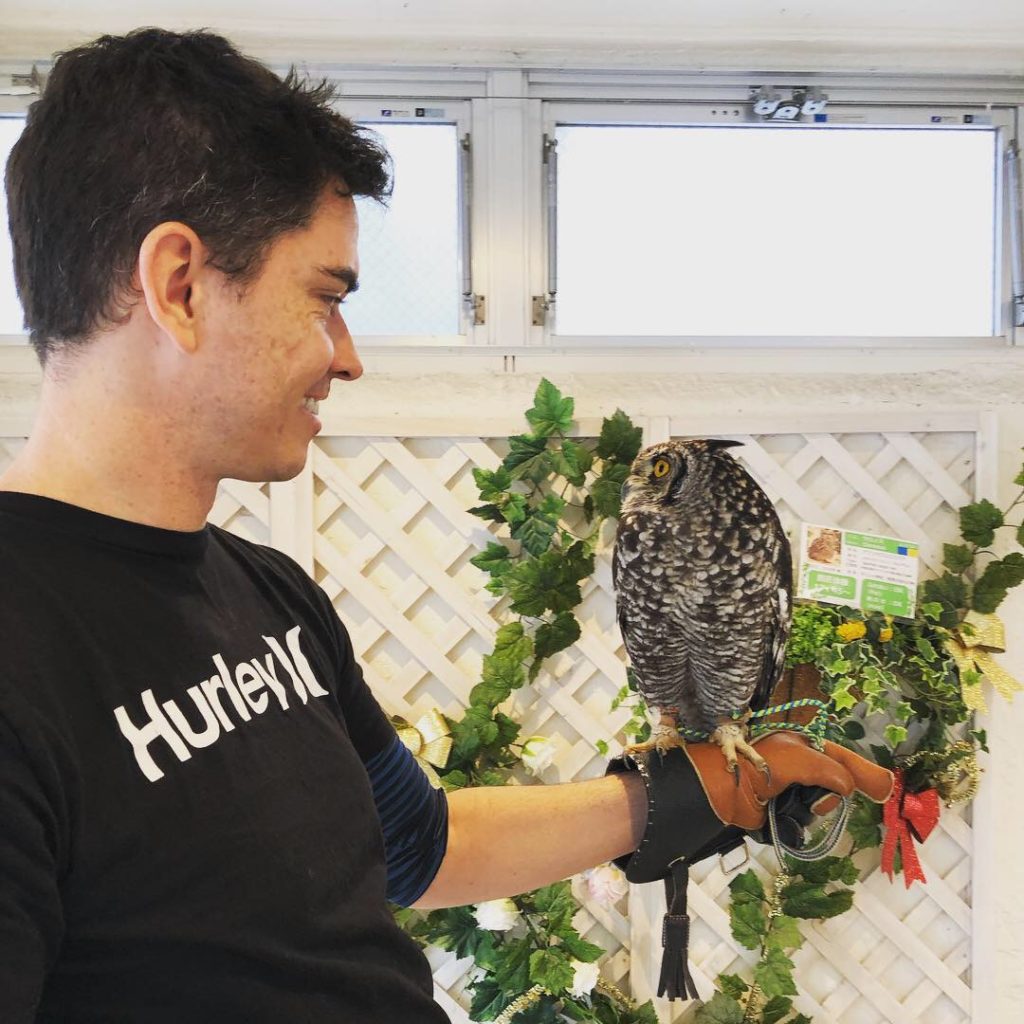
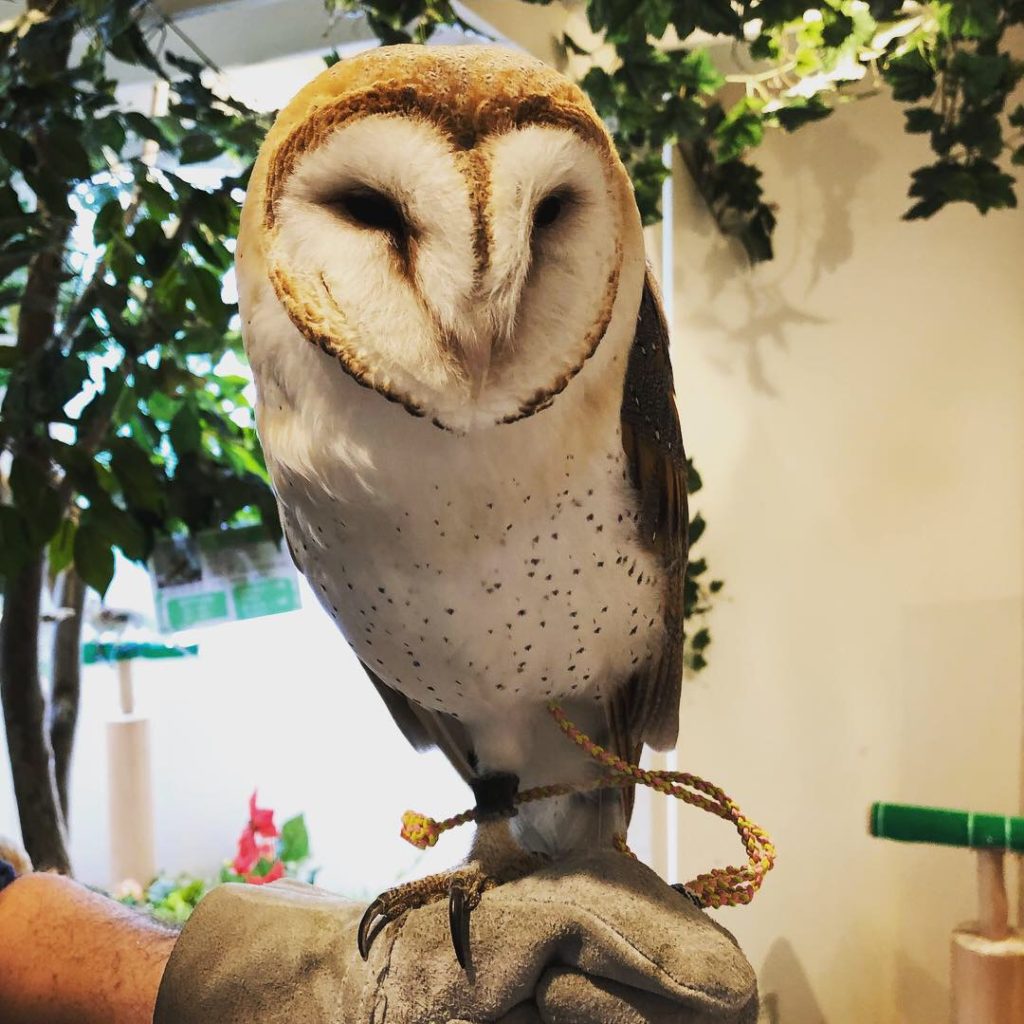
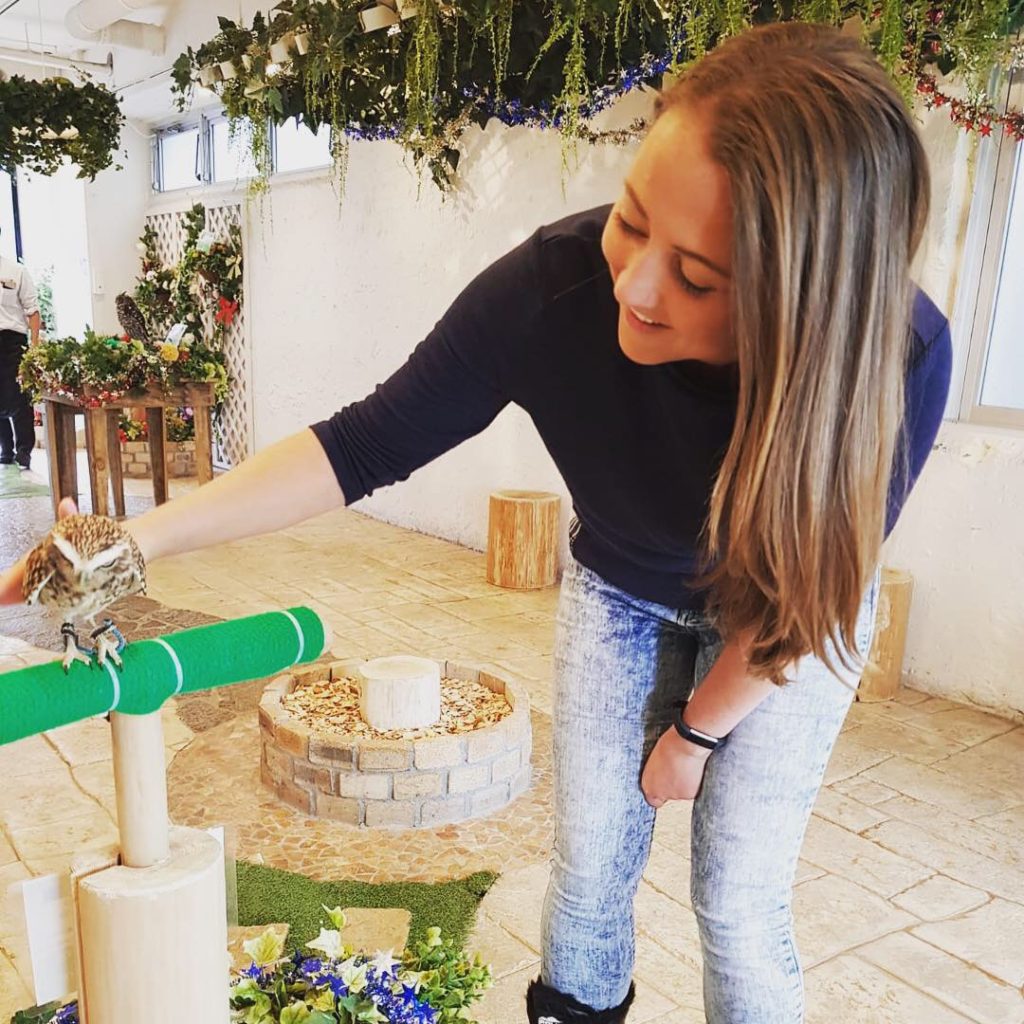
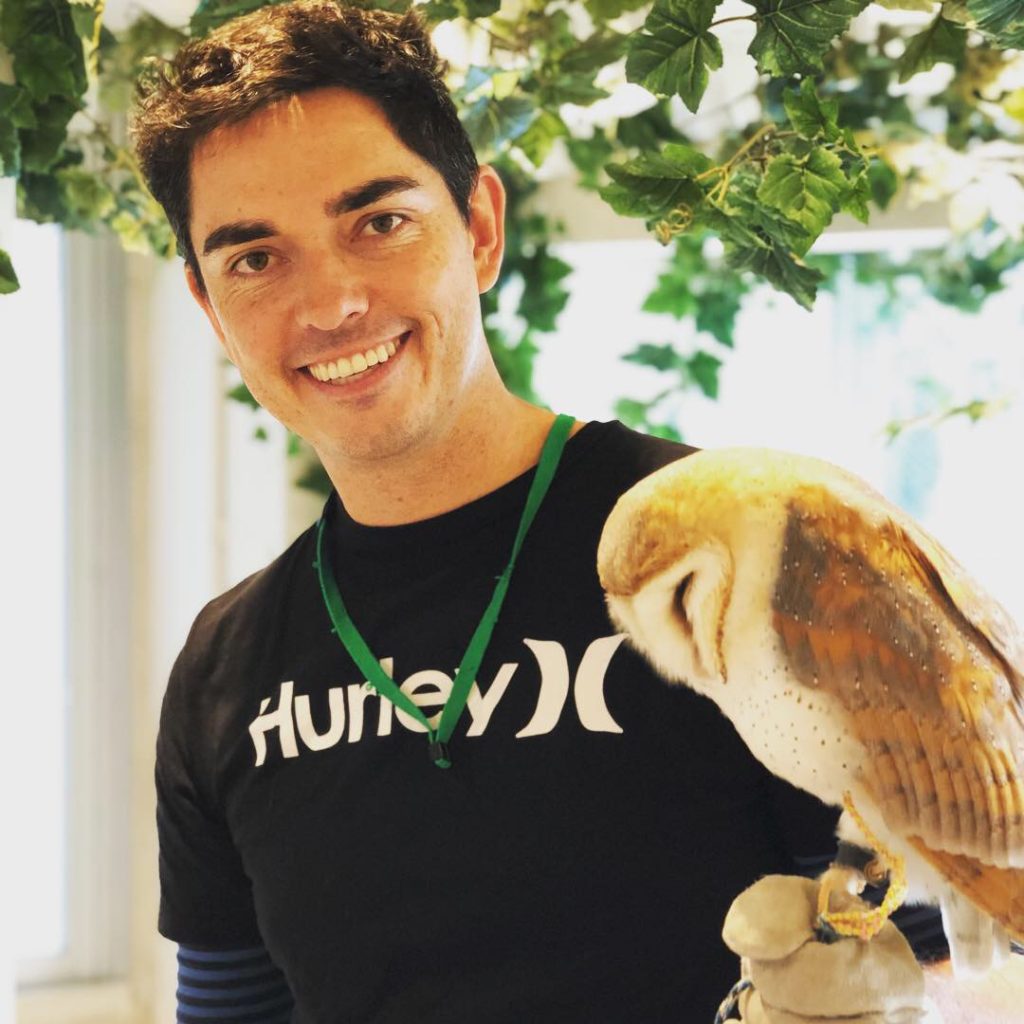
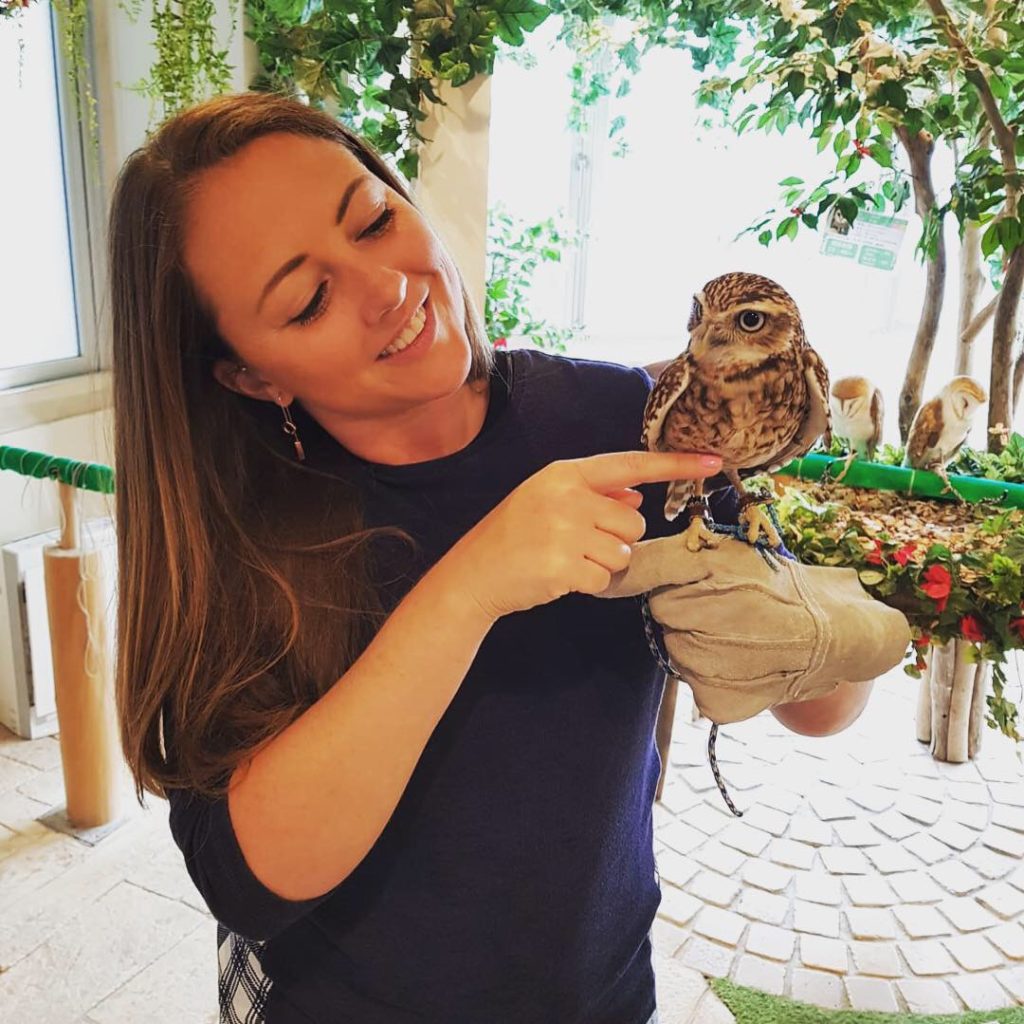

At Harry’s Hedgehog Cafe, we donned our gloves, and spent 30 mins hanging out with our new prickly buddies! Running over our hands must have worn them out since the little guy promptly fell asleep in my palm.
Of course, this meant that I now wanted a hedgehog AND an owl! Hubs remained unconvinced, but did let me bring two fluffy toy friends home instead 😉
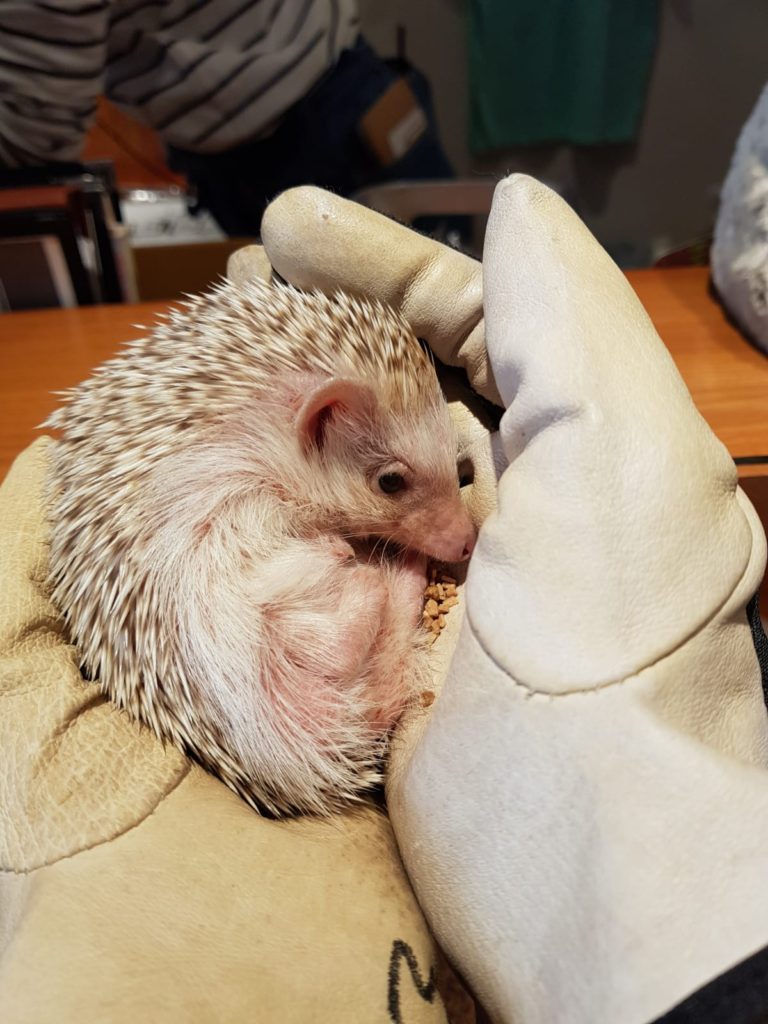
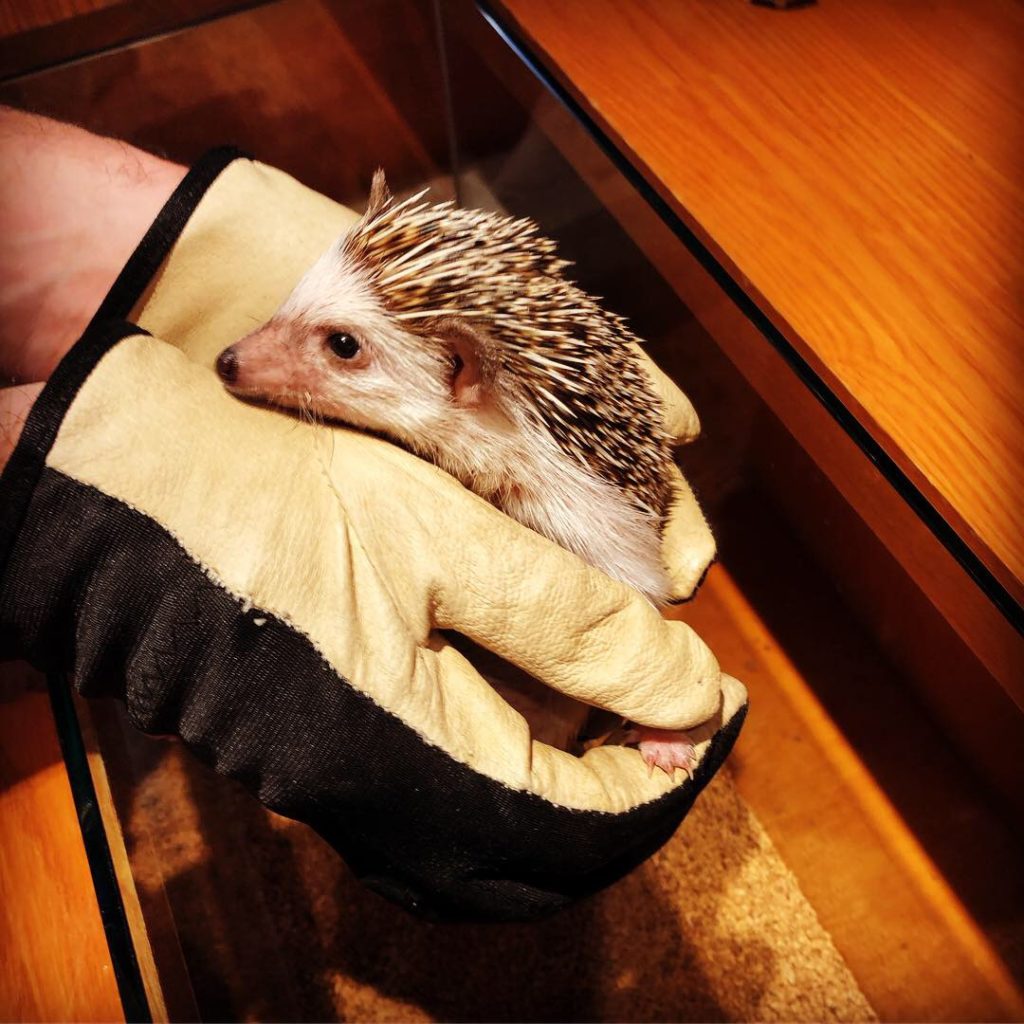
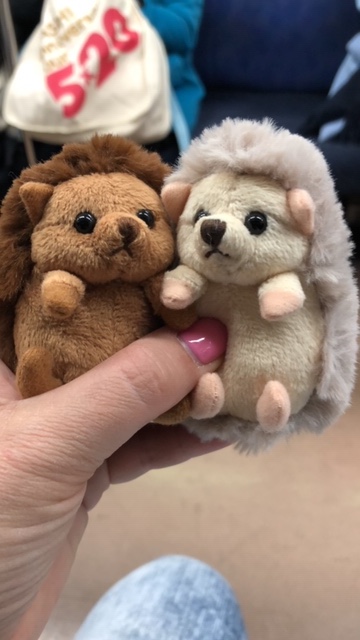
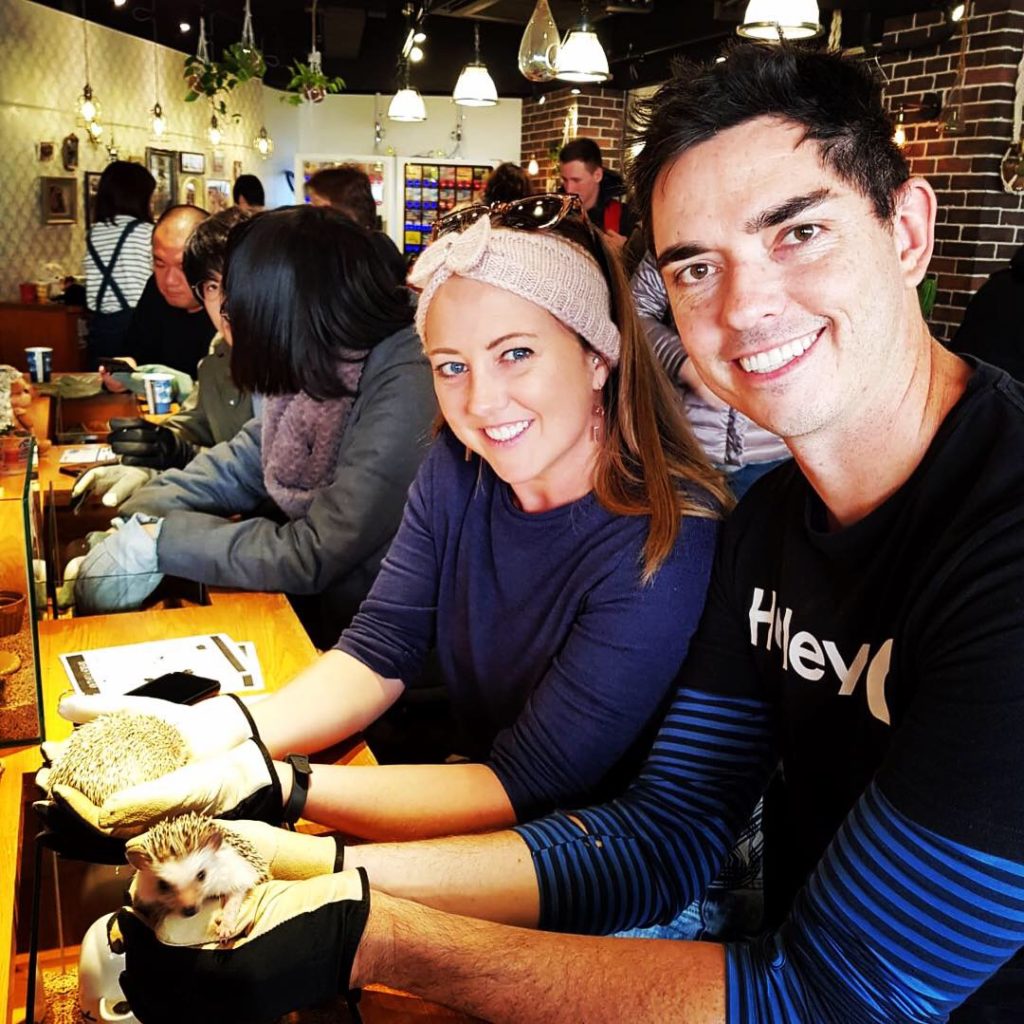
In both cafes, I was really pleased to see that the animals were well cared for and that strict ‘rest-times’ were being adhered to. This gave the animals a regular time-out without any human interaction. It’s certainly not the same as roaming free, of course, and I can’t speak for all of the cafes in Tokyo, but I was glad we chose these two to visit.
Finally, you can’t visit Shibuya without checking out its famous crossing. Known for being one of the busiest in the world, it’s worth going along just to stare at the pure volume of humanity scrambling across it at any given moment.
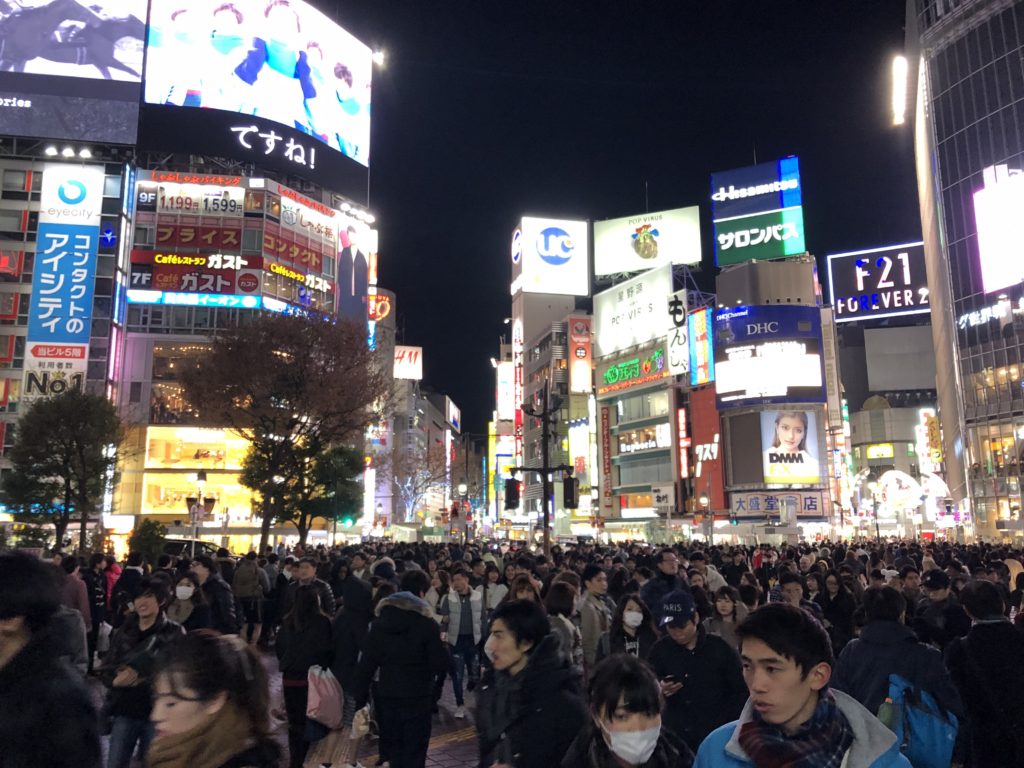
Day 6: Snow Monkeys
This was high on our bucket list, and we were so excited to be visiting on New Year’s Day! What a way to start 2019!
The Japanese Macaques are located in the monkey’s natural habitat, in the forests of the Jigokudani valley. We did heaps of research to work out how to get there, a series of trains and buses that were increasingly more difficult to line up, given the national holiday.
In the end, we discovered a much simpler option, which I would highly recommend: The Nagaden Express Bus, which takes you directly from Nagano station to the Monkey Park. No fuss and much less chance of getting lost- which was a huge plus given my shocking navigation skills.

With much slipping and sliding, we wound our way through the snow-covered forest. We revelled in the silence, punctuated by the occasional crack of falling branches and the light dance of drifting snow.
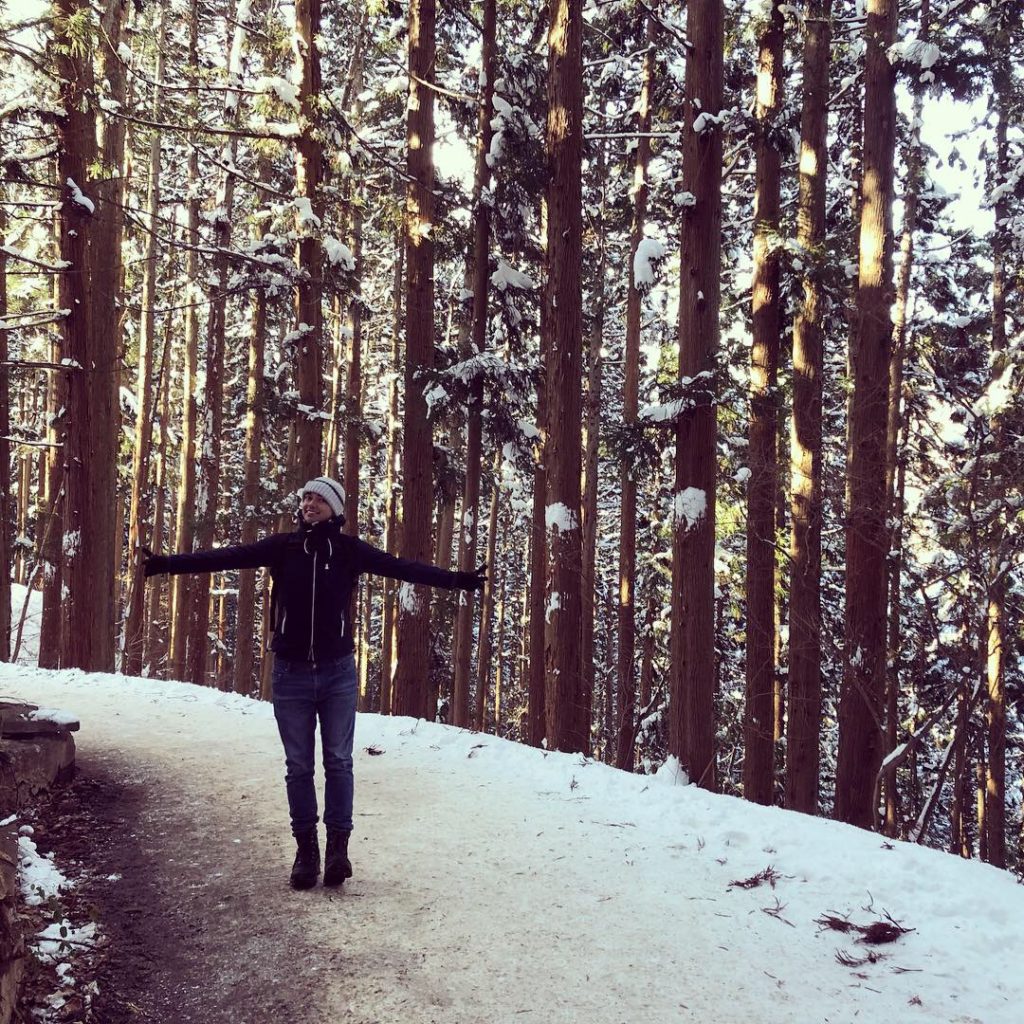
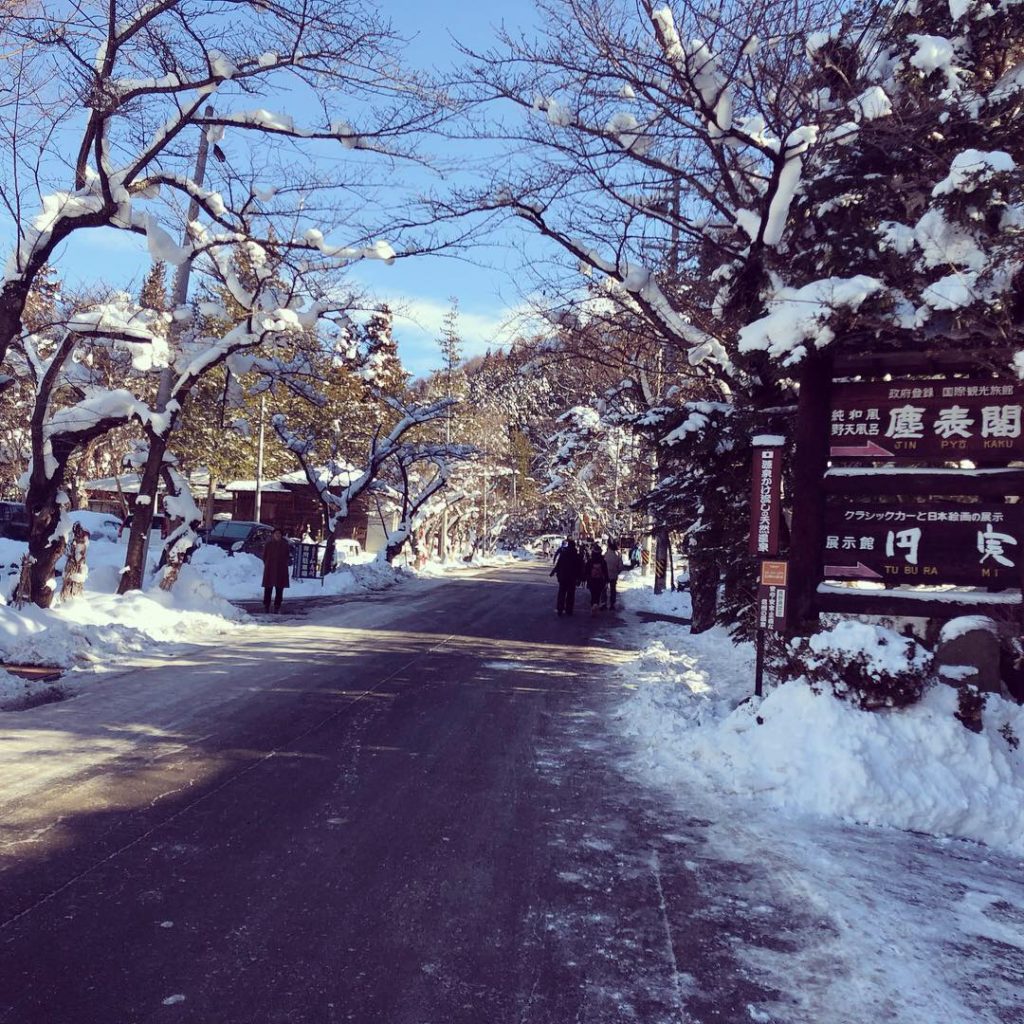
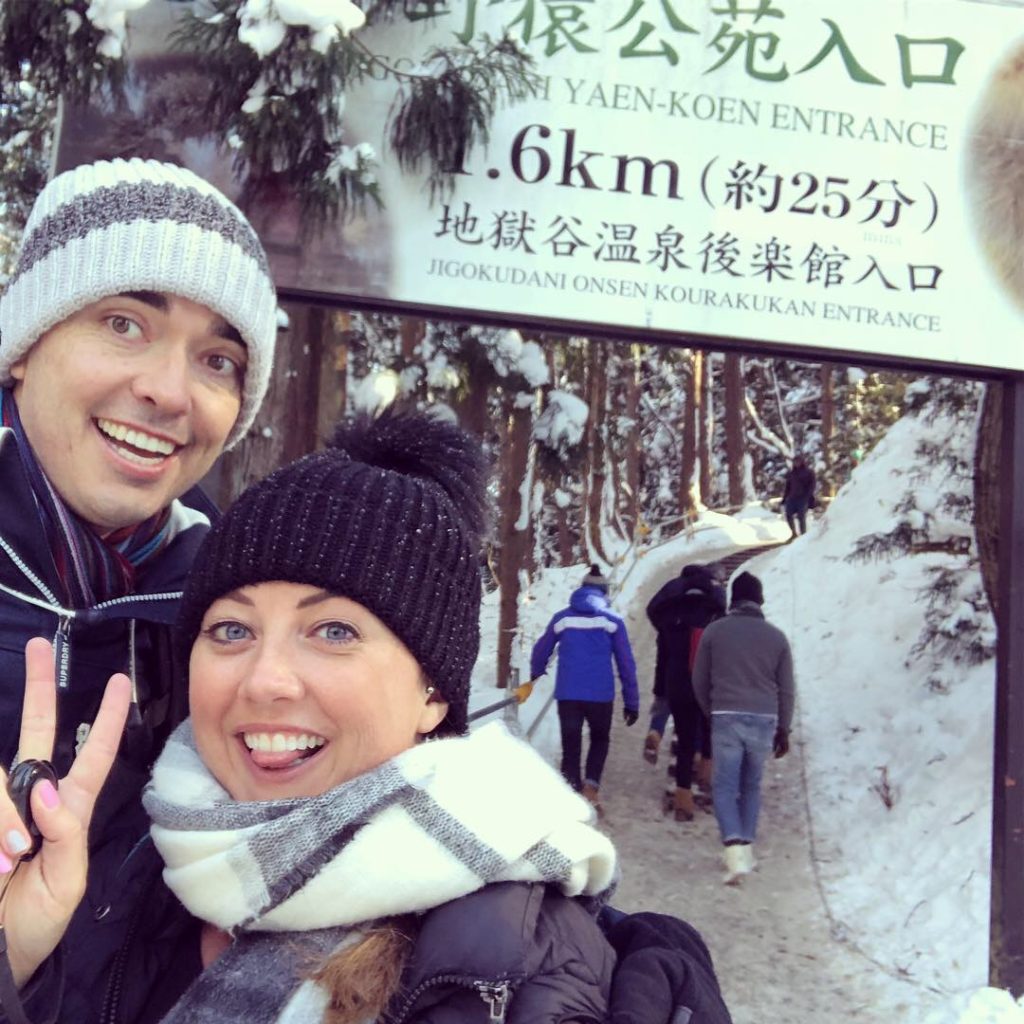

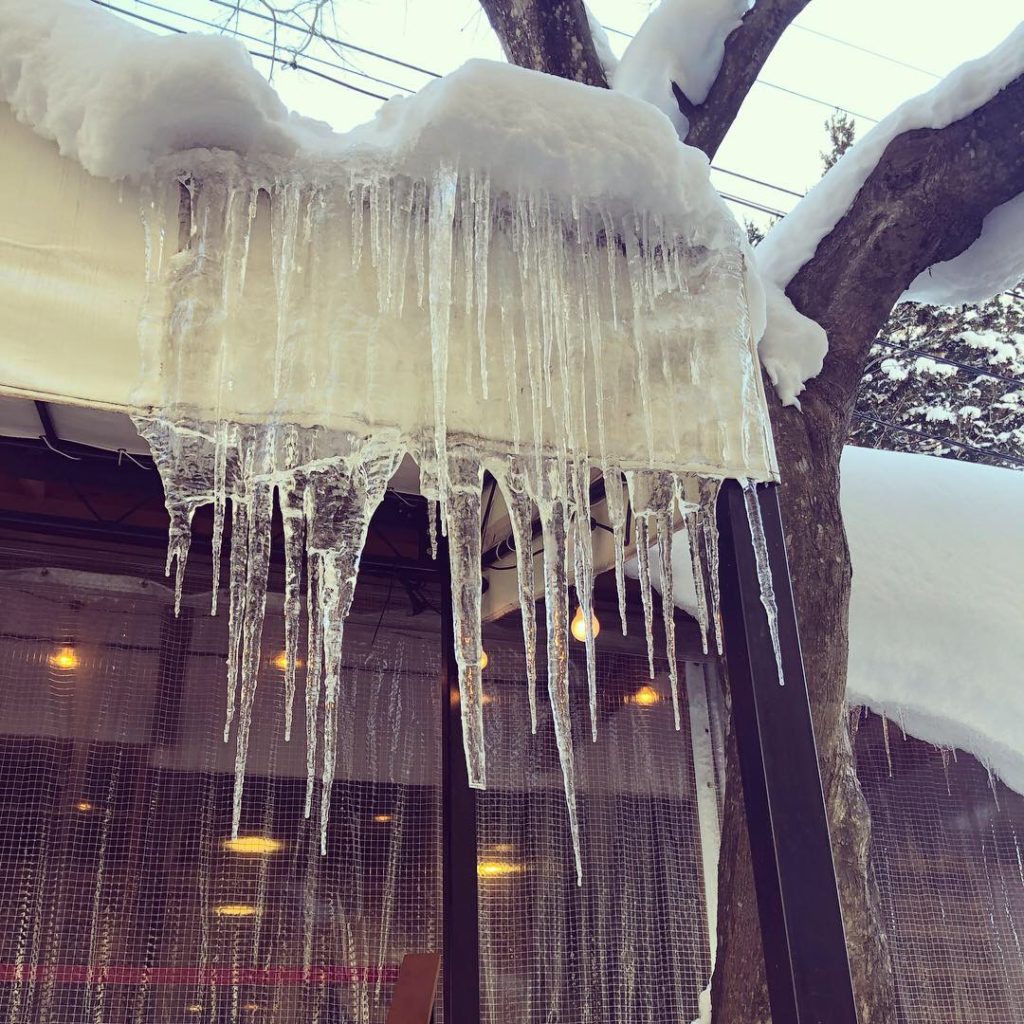
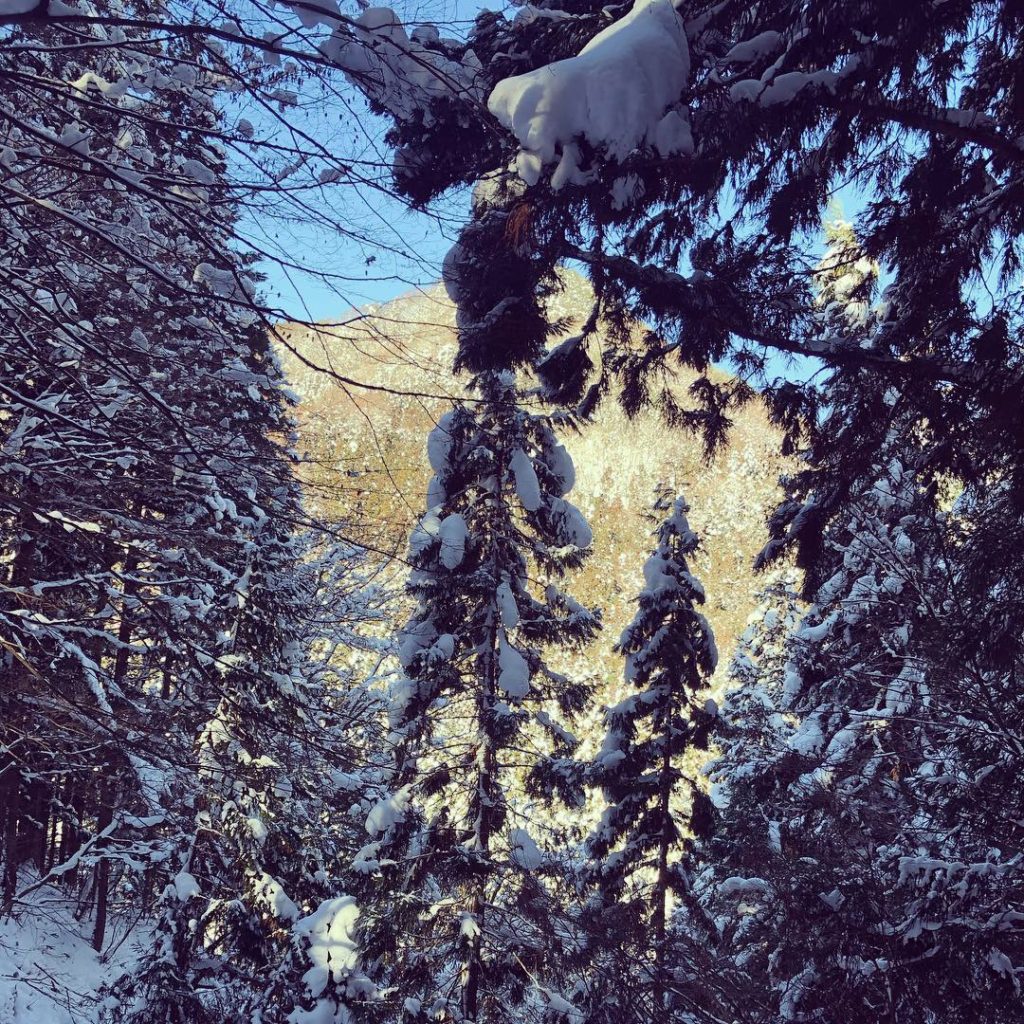


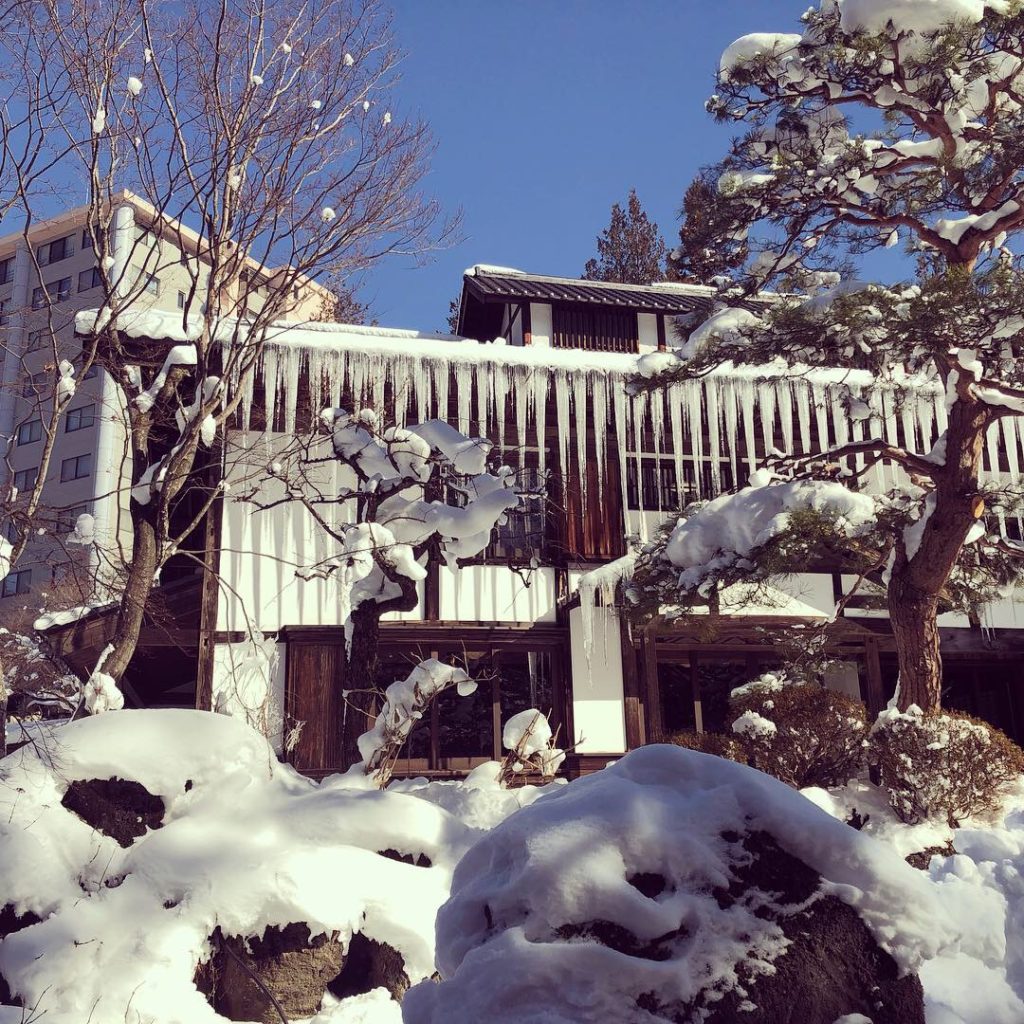
We reached the monkeys and giggled the afternoon away, watching their cheeky antics. There were monkeys foraging in the snow for food, others running along the mountain passes above us, and Mummy monkeys carrying tiny babies on their backs.
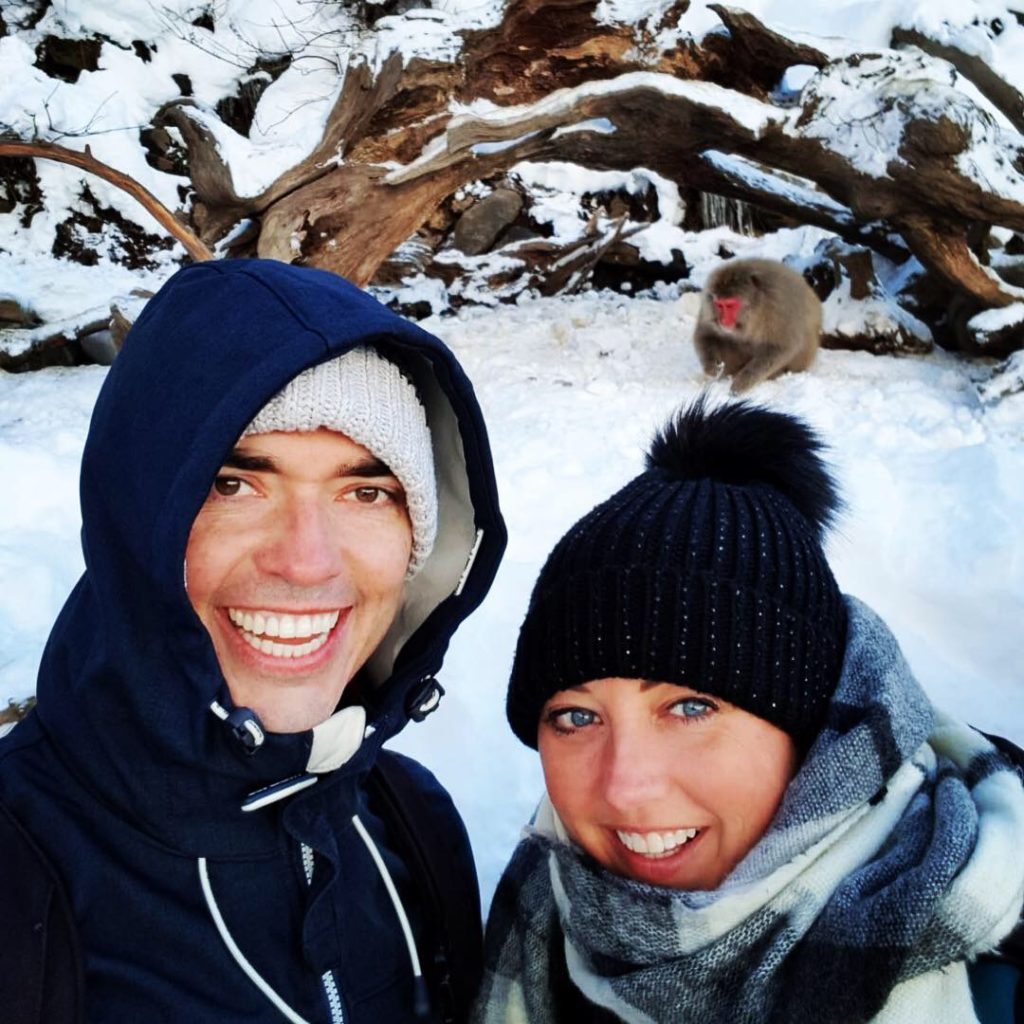
The highlight was watching them enjoy the natural hot springs, submerging in the steaming water, and taking the time to groom each other’s fur. So cute!
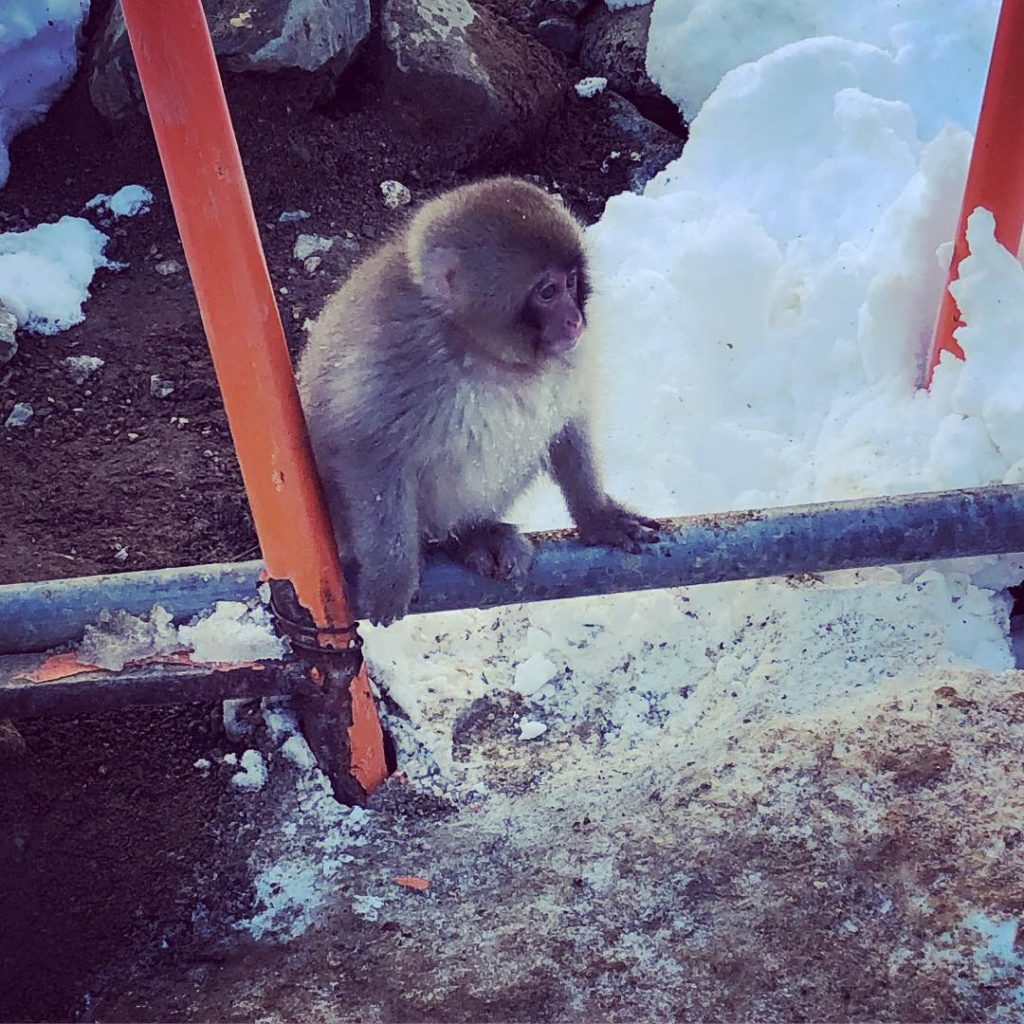
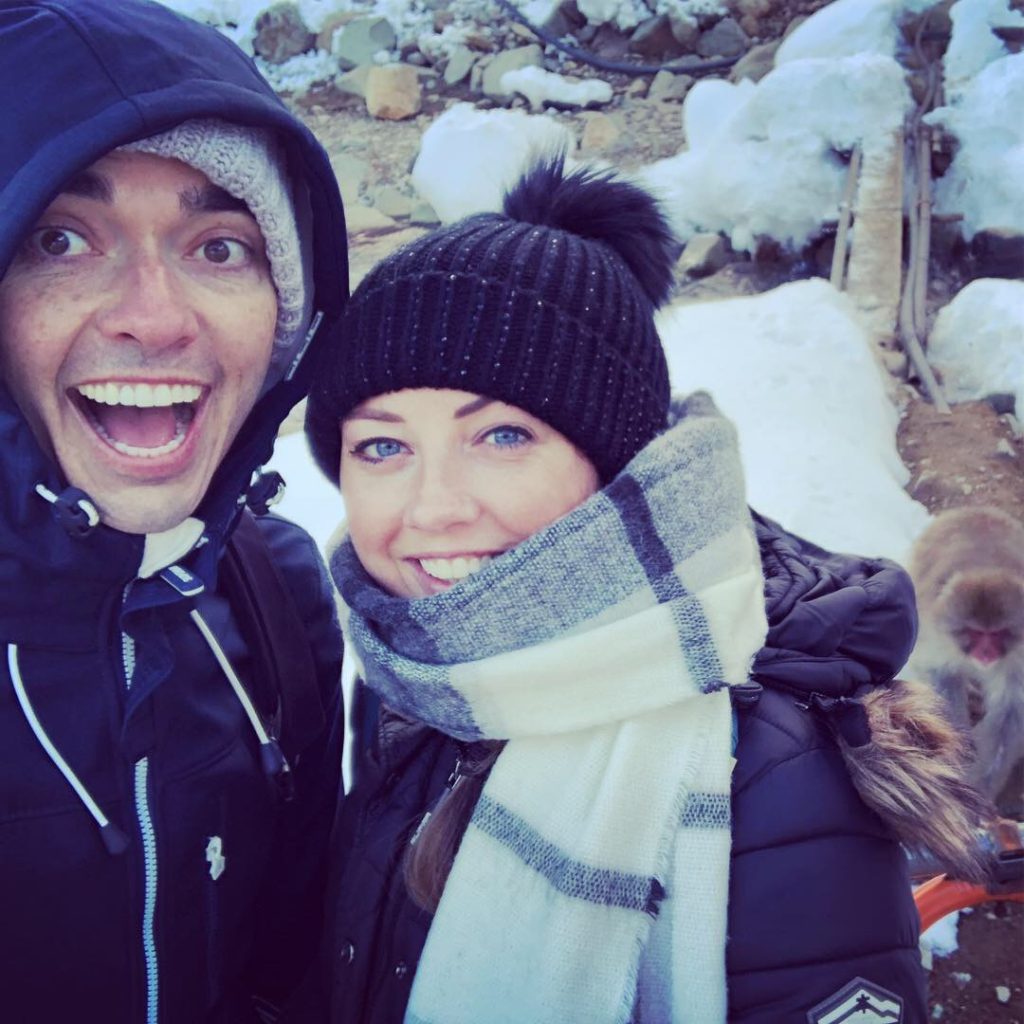
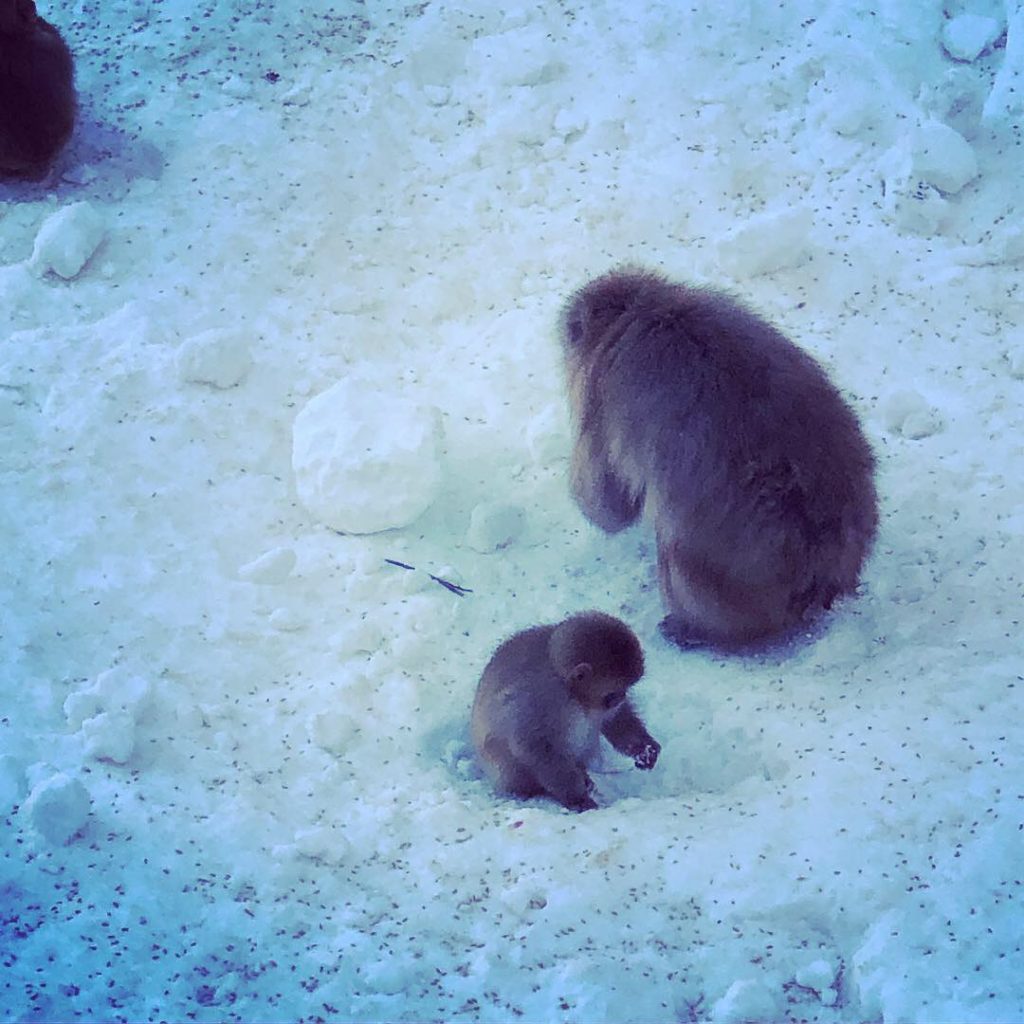
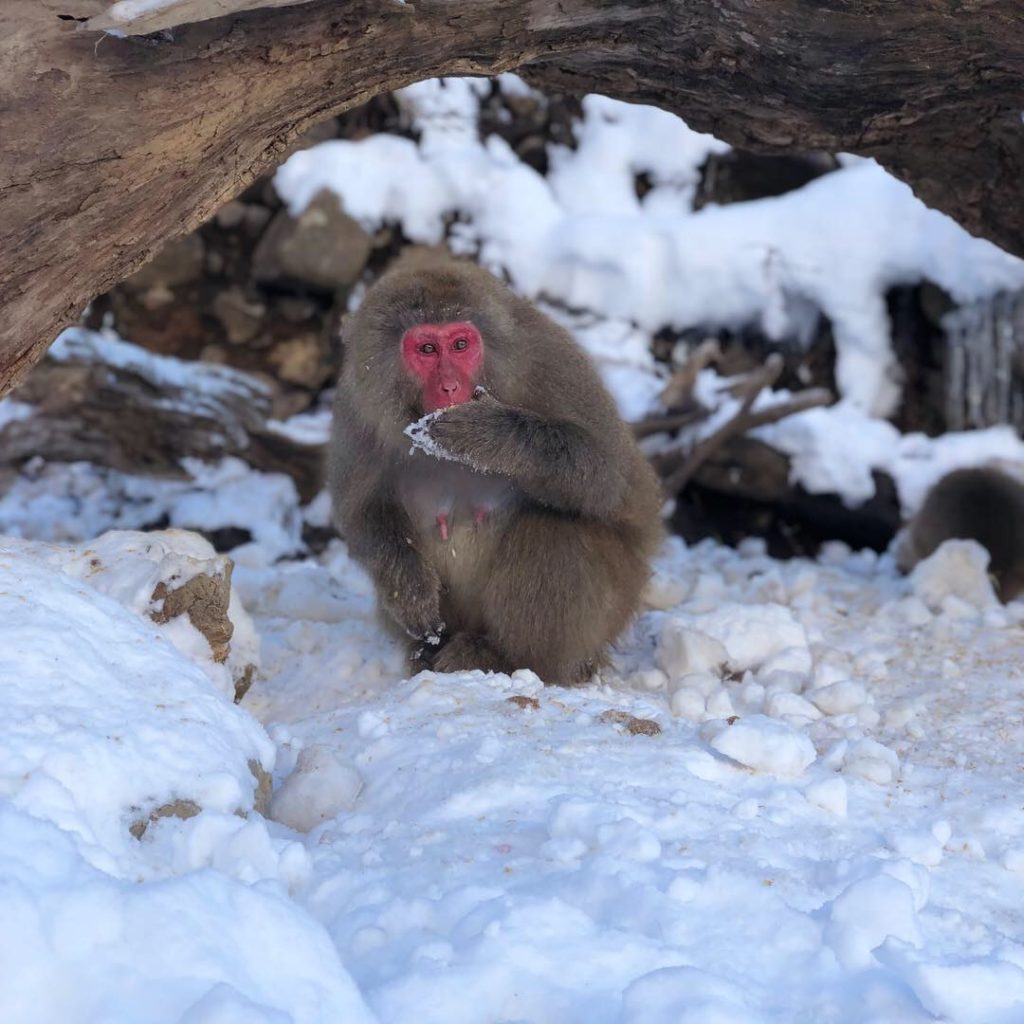
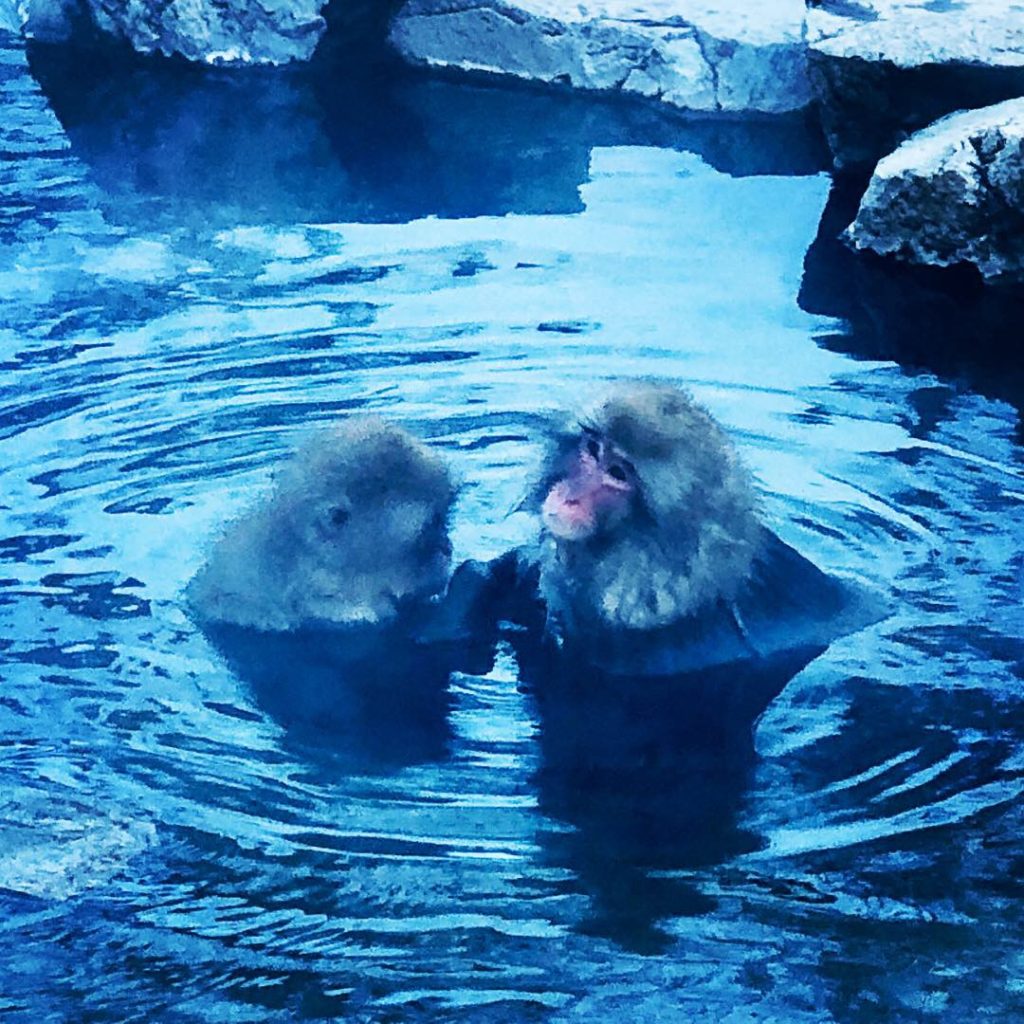


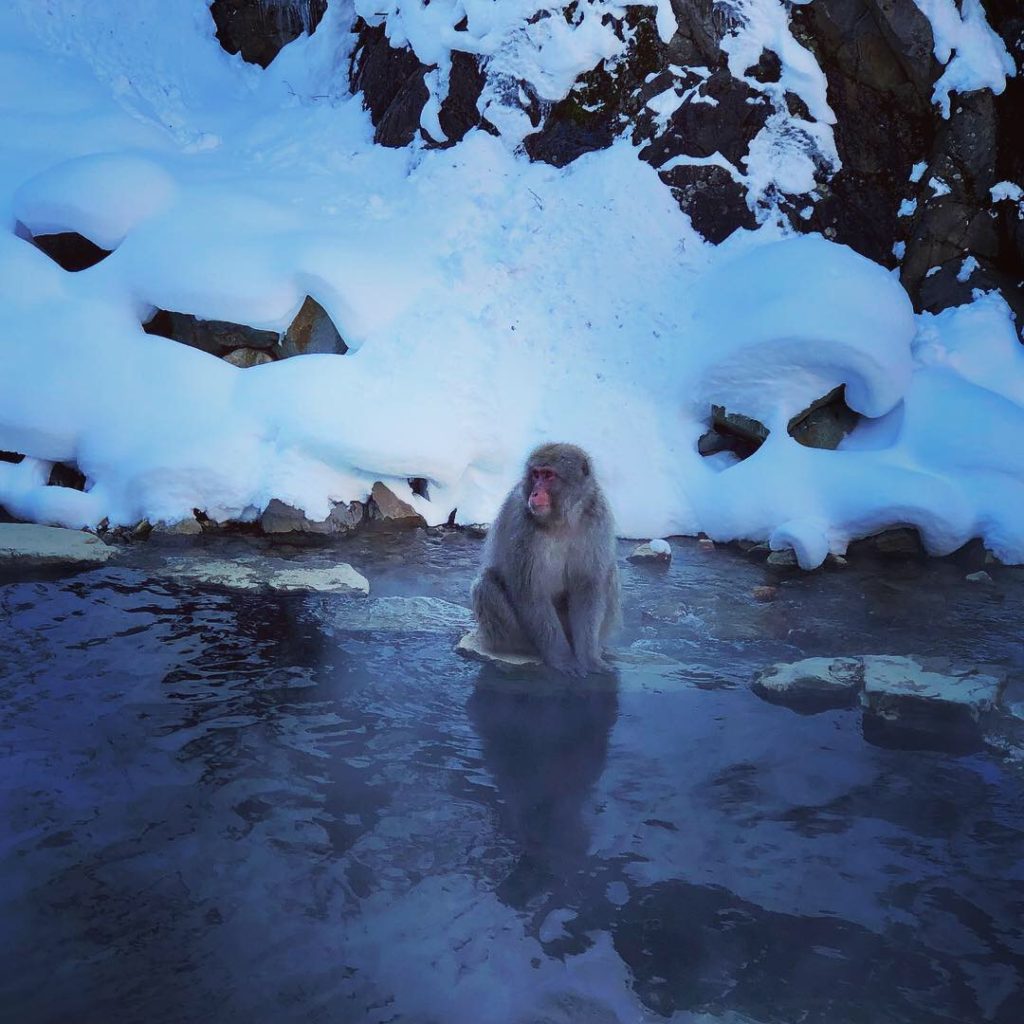
Day 7: Akihabara
Akihabara, ‘Electric Town,’ is a buzzing retail hub famous for high-tech gadgets and electronics. As soon as we arrived, dwarfed by the colourful high-rises and swarms of people, we knew that this would be a kooky little place to explore.
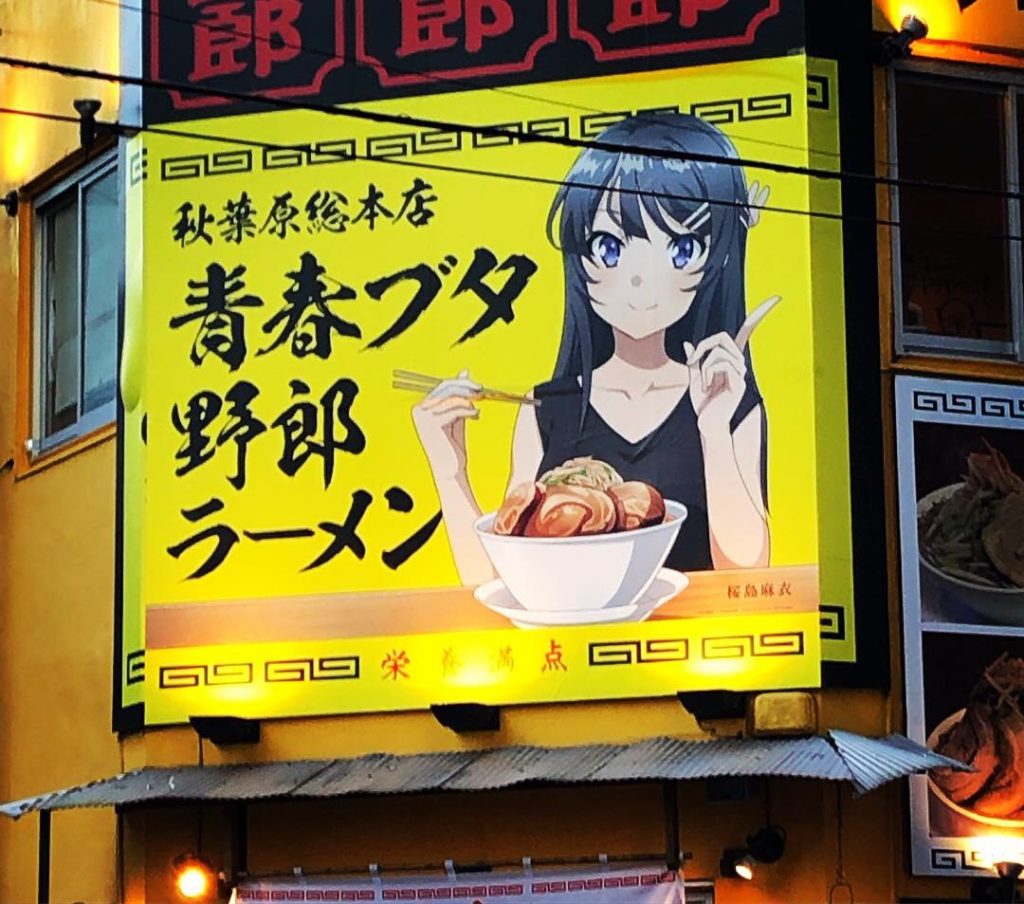
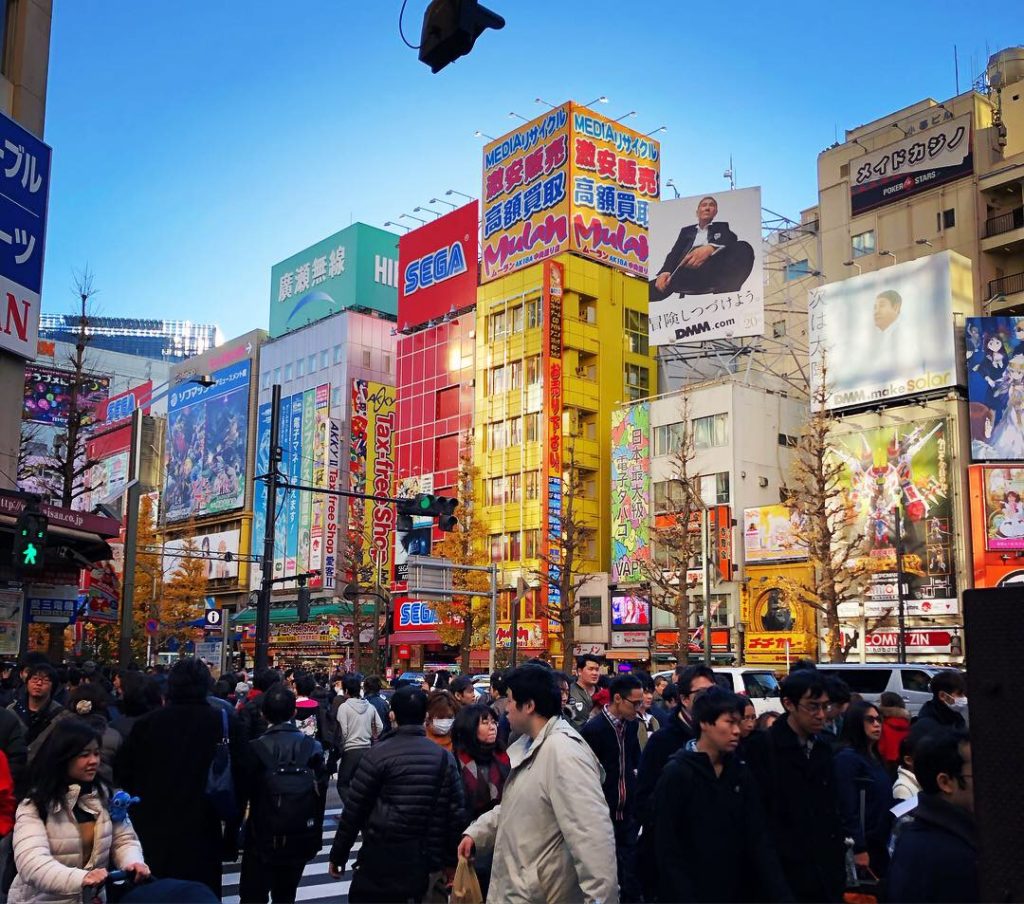
My
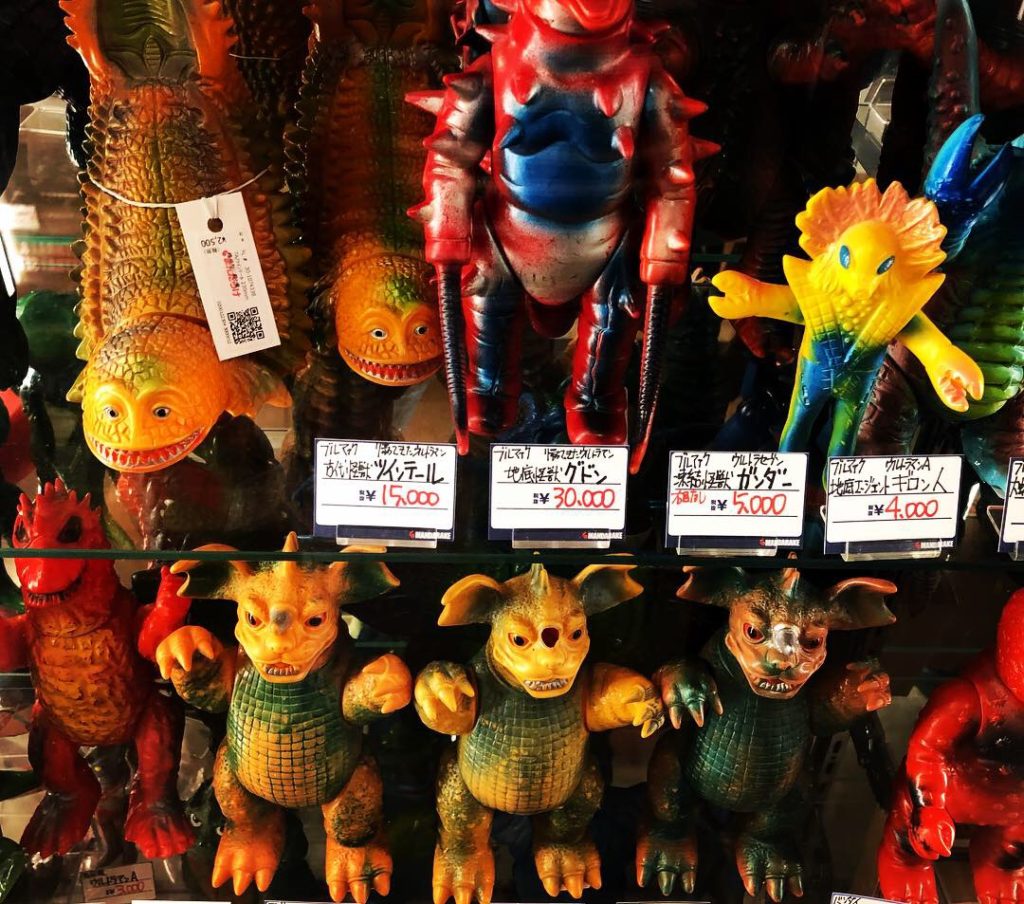

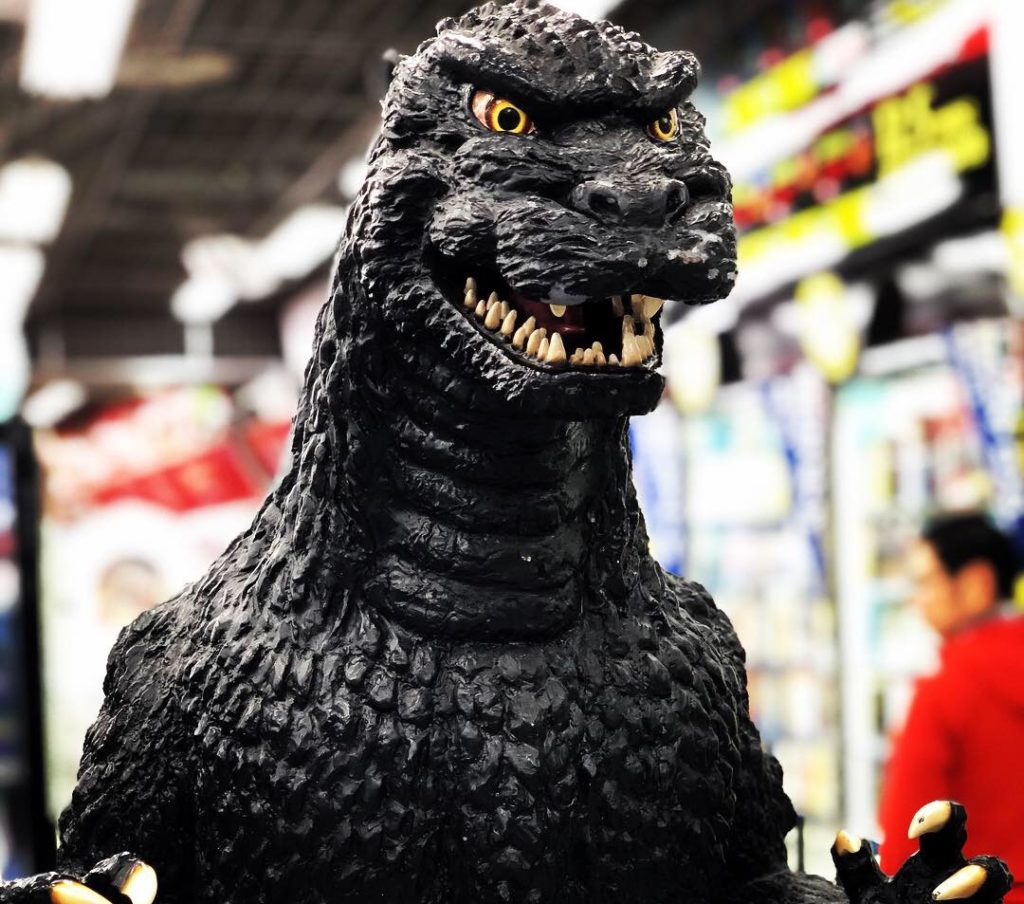
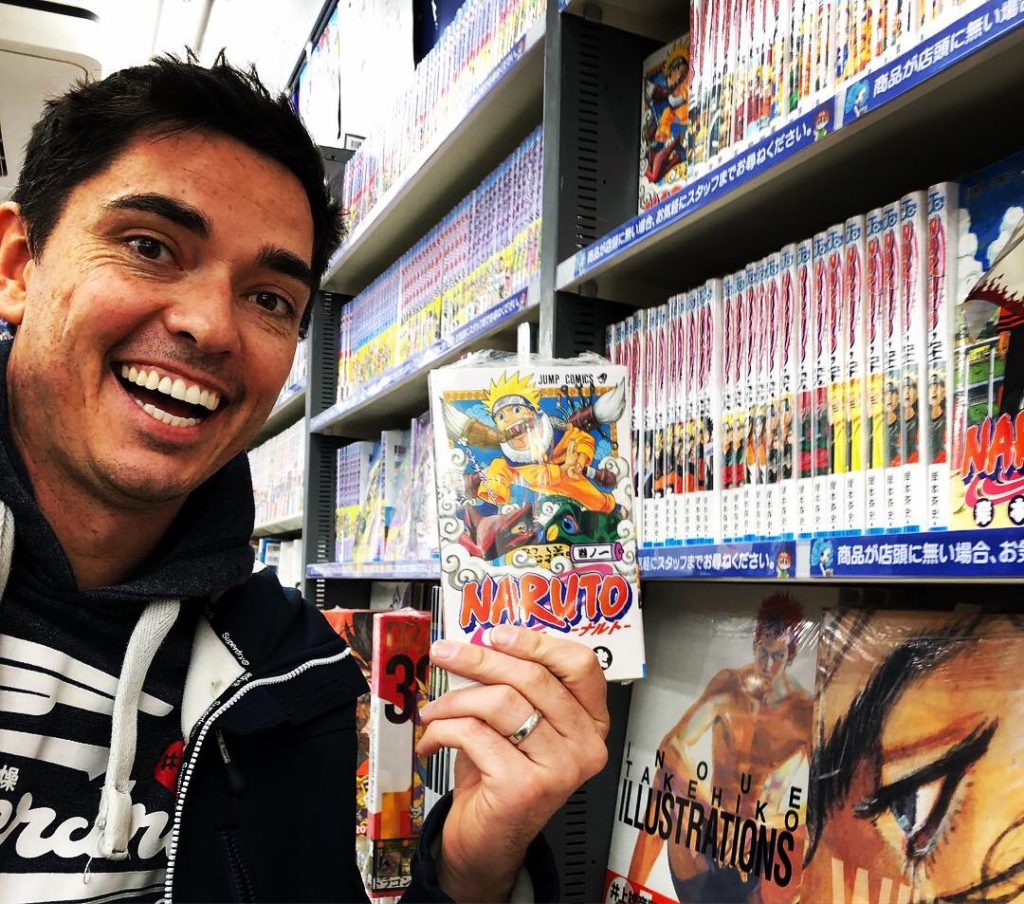
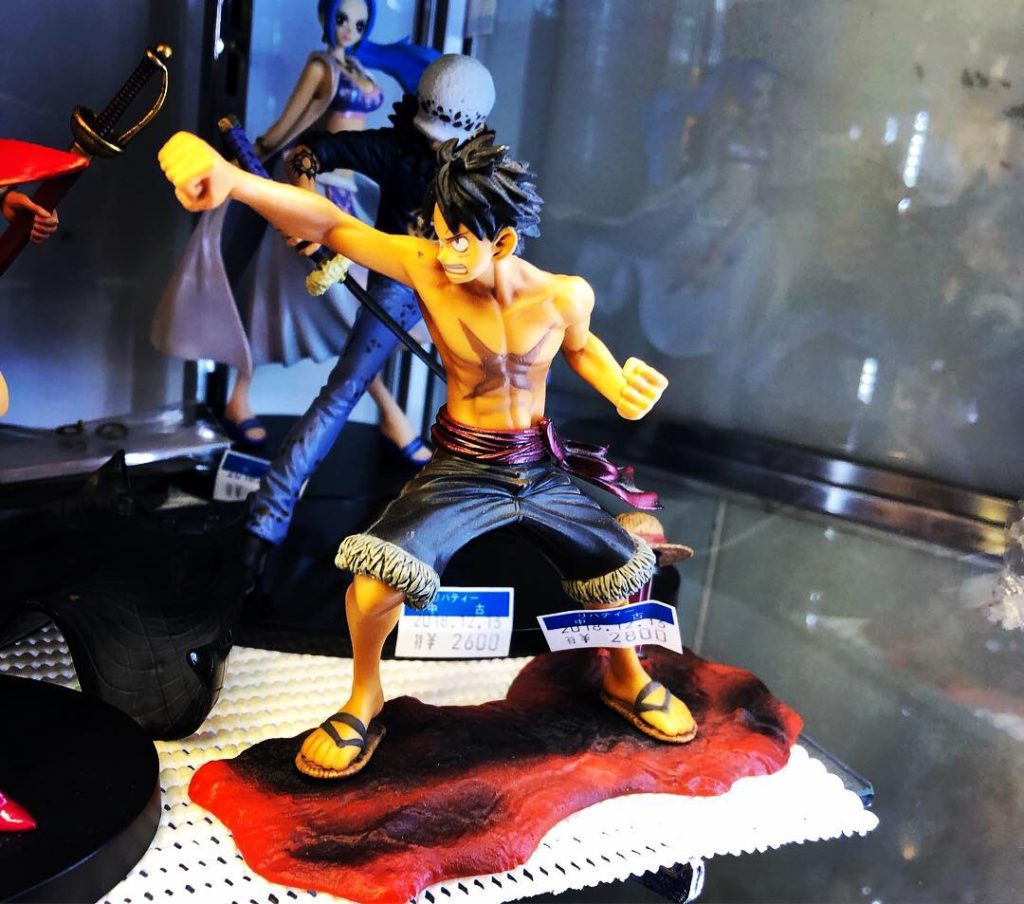
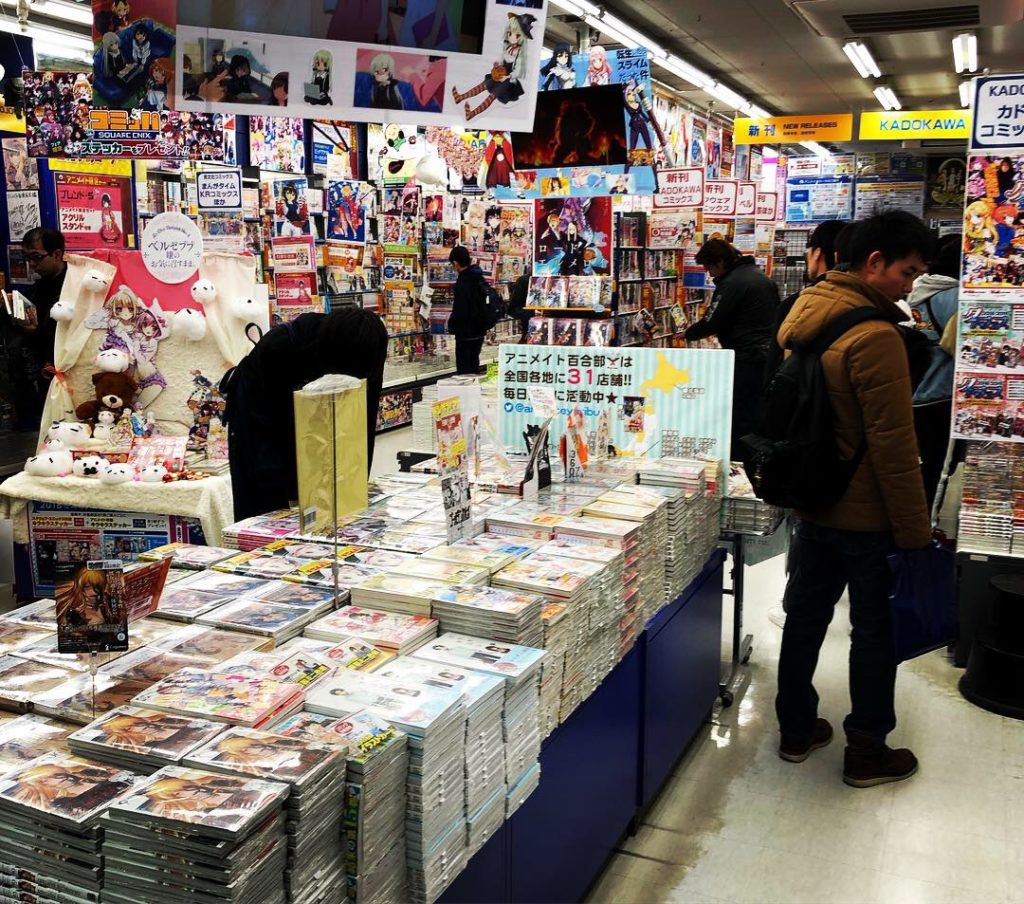
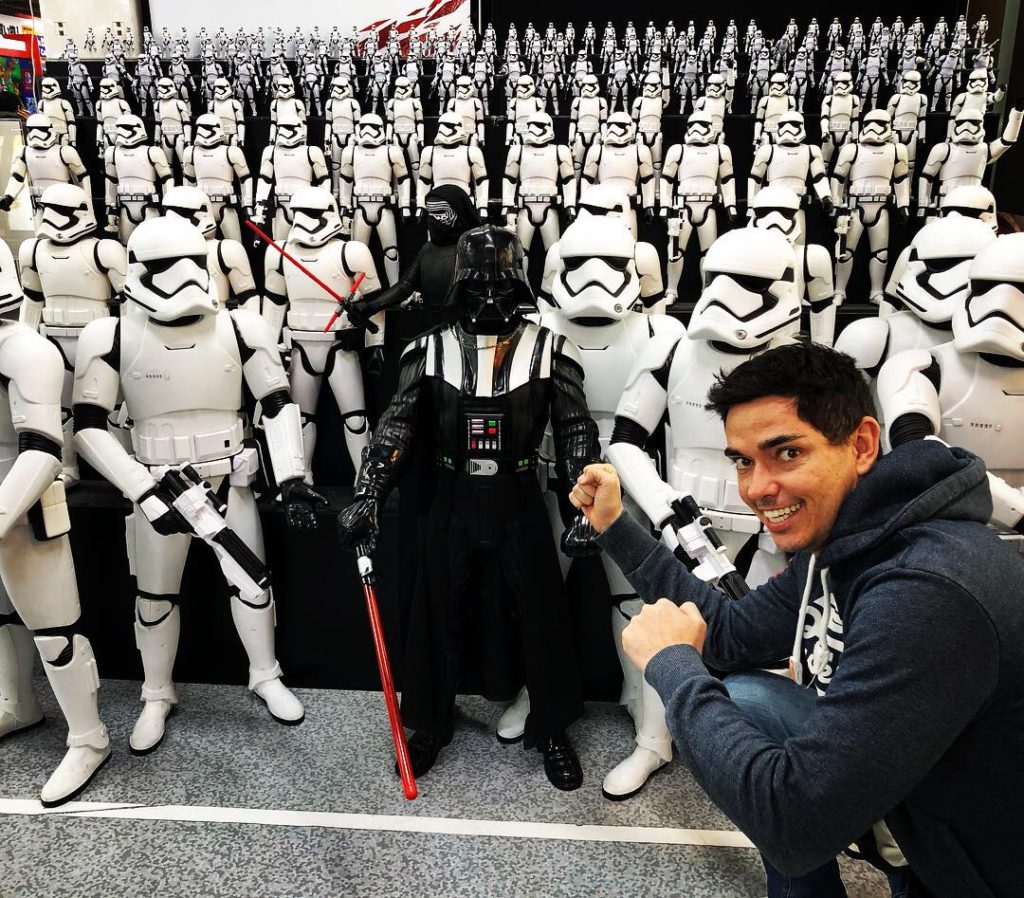
We spent a hilarious half an hour trying to work out the

As we dug deeper into the underground culture of the area, we realised that this was the place to discover the youth of Japan. They crowded the aisles at the ten-story electronic store and chatted casually in the various sections of the seven-story sex shop. It was intriguing and endlessly fascinating to behold. As day turned into night, we watched the neon-lights of a hundred movie scenes come to life before our eyes.
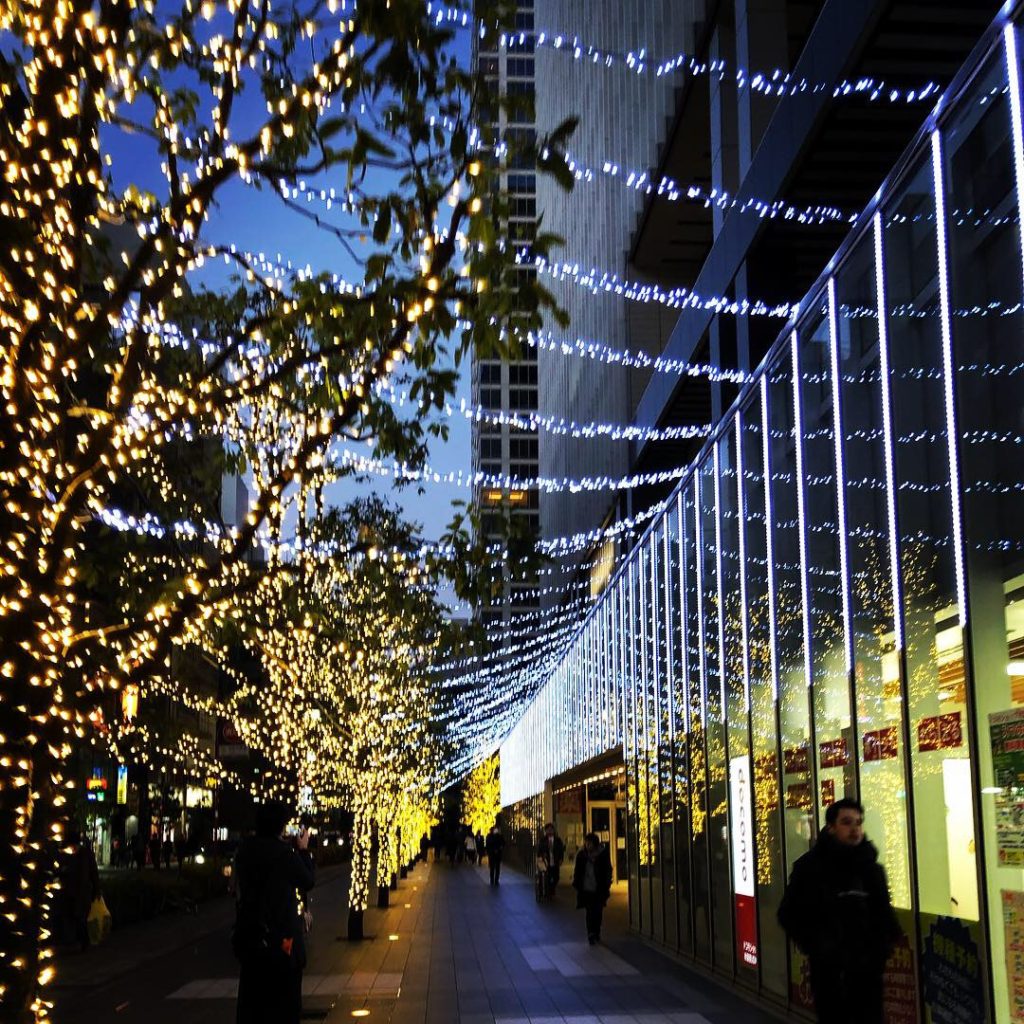
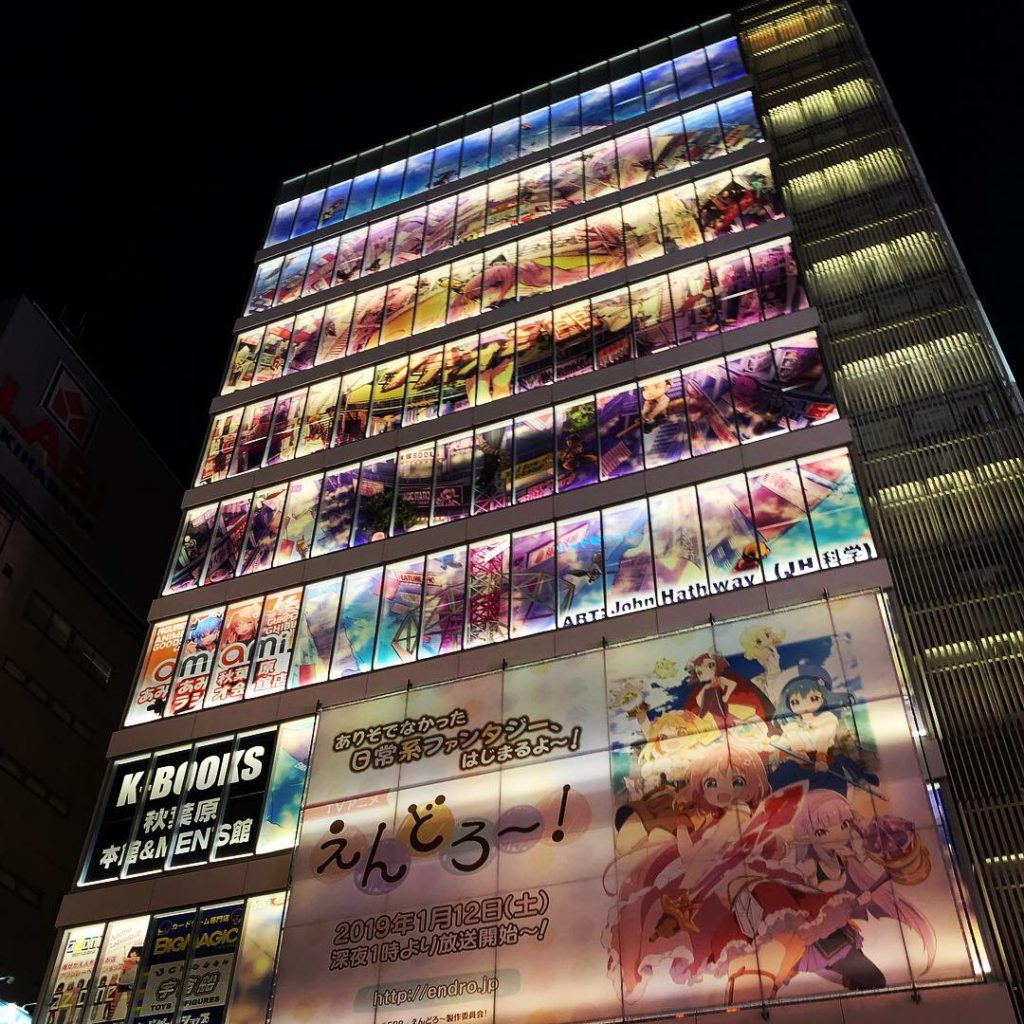
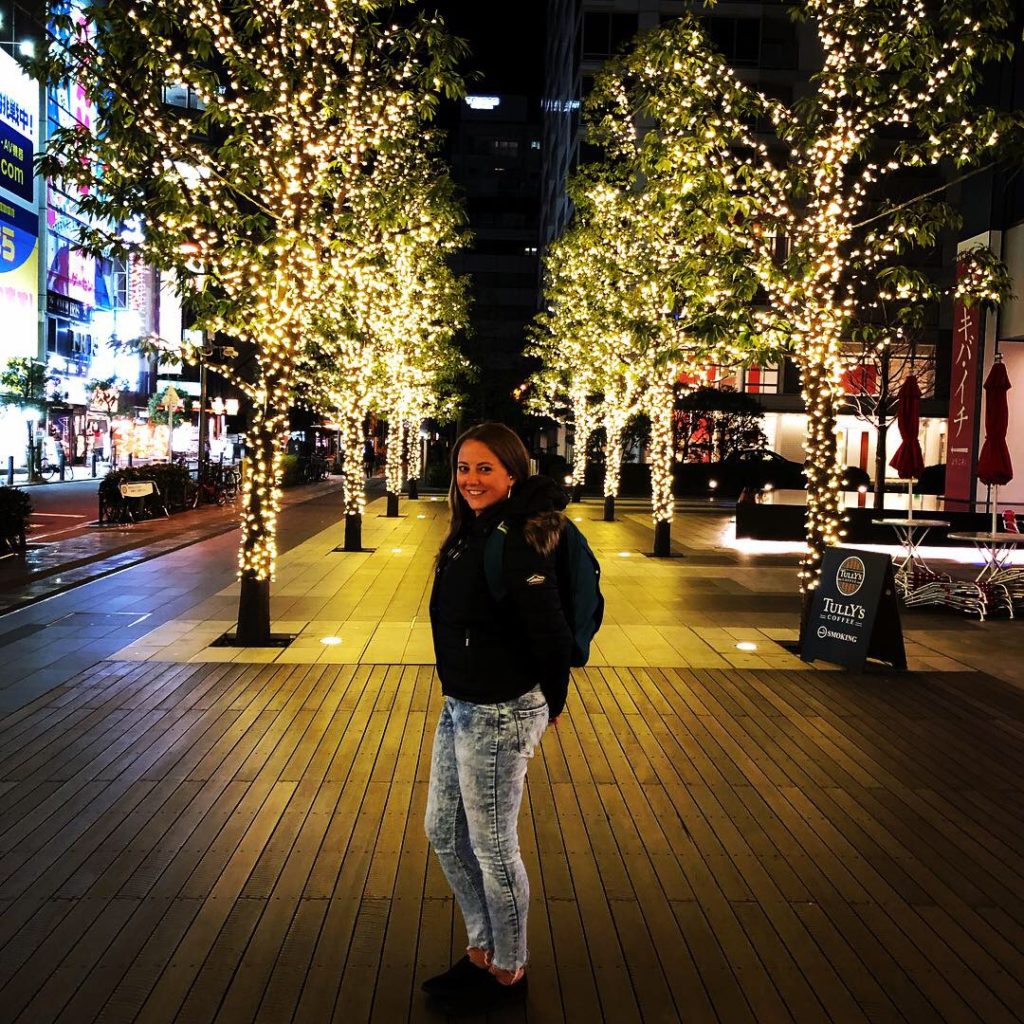
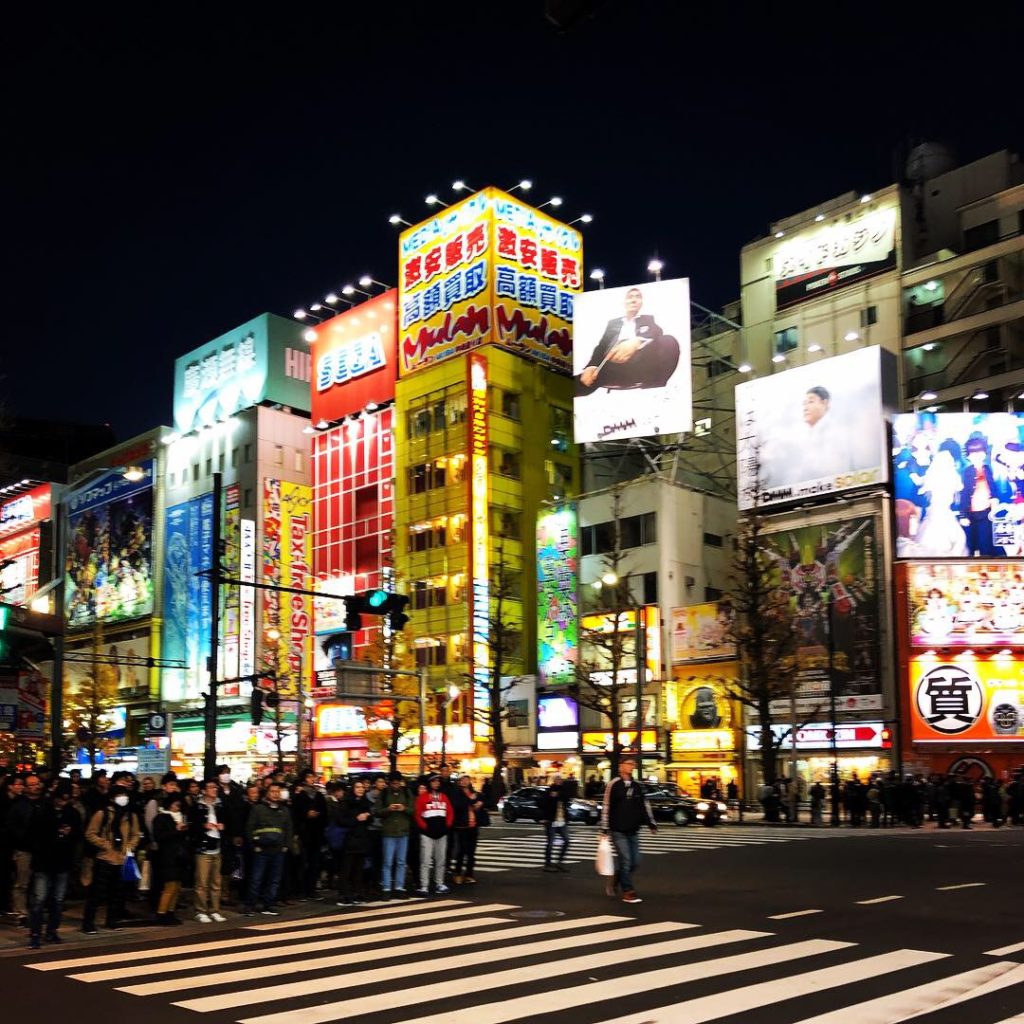
Day 8: Shinjuku
Sometimes travelling can be exhausting, and it pays to put down the itinerary and practice a little self-care.
We had planned a day trip to
We slept all morning (thank you, amazing blackout curtains), ate delicious sushi at Itamae Sushi, said hi to Godzilla and played arcade games in Shinjuku all afternoon. Yay Mario Cart!
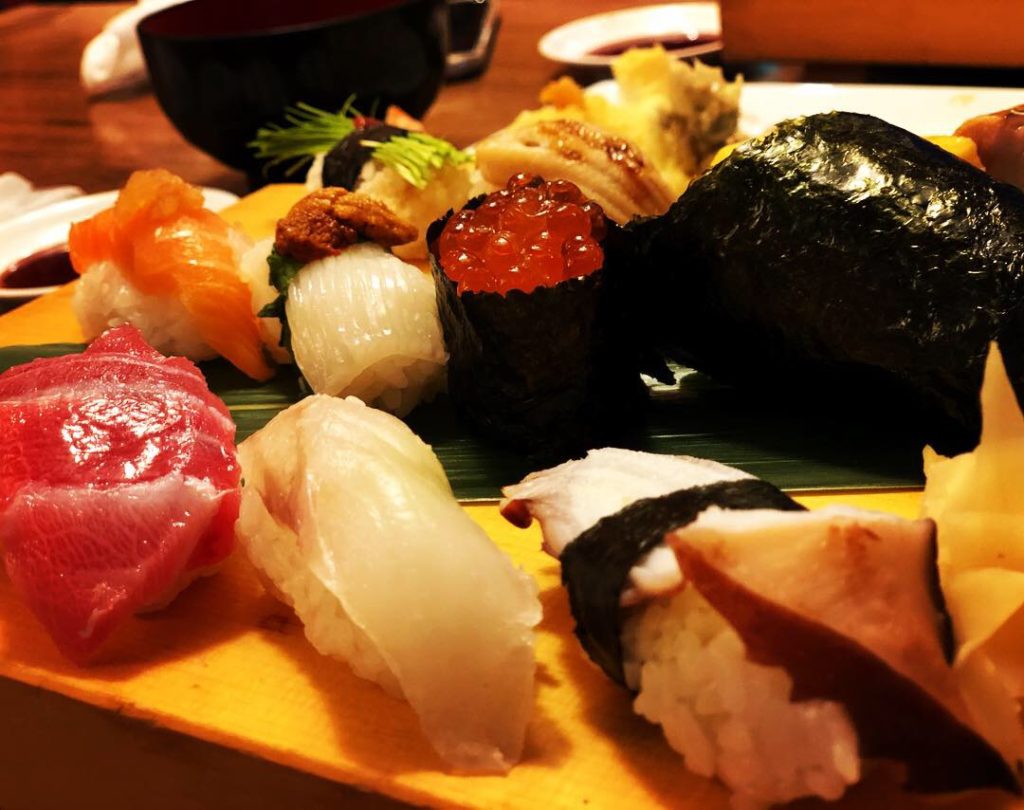
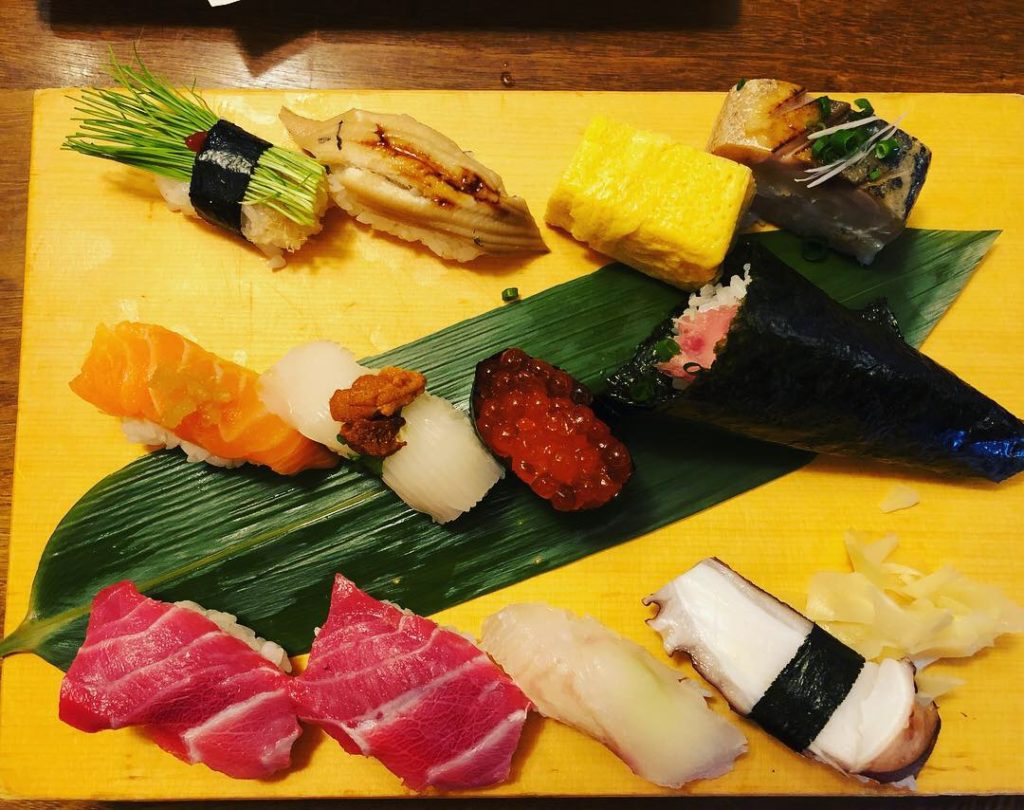
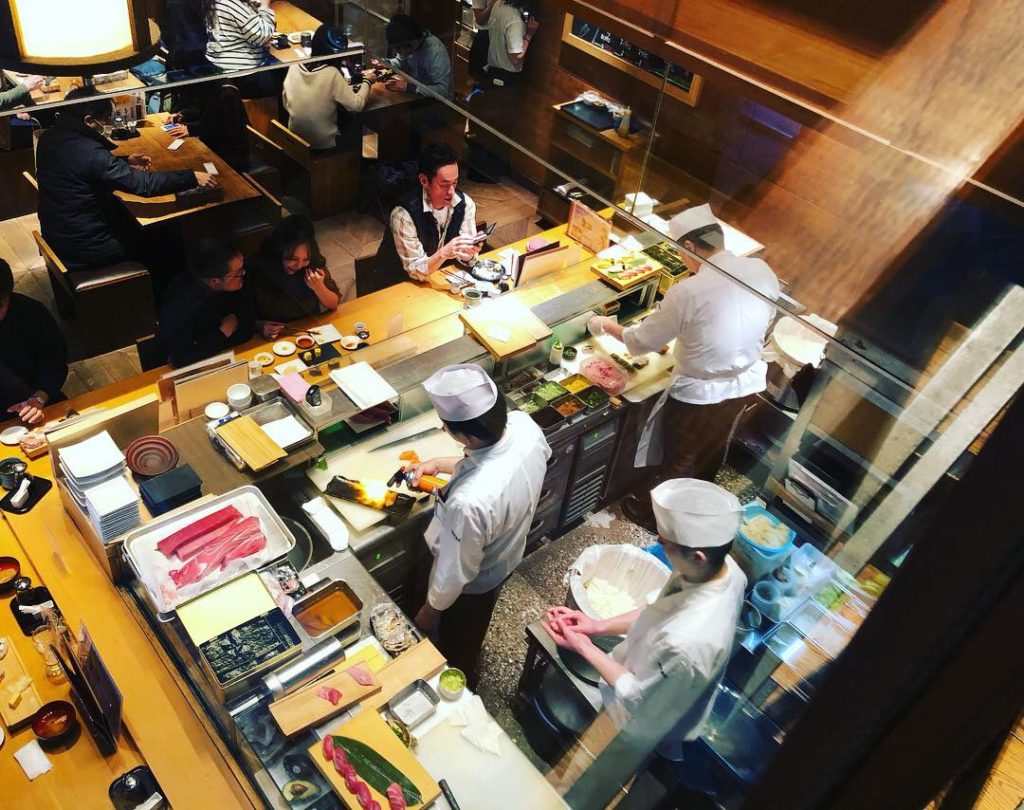

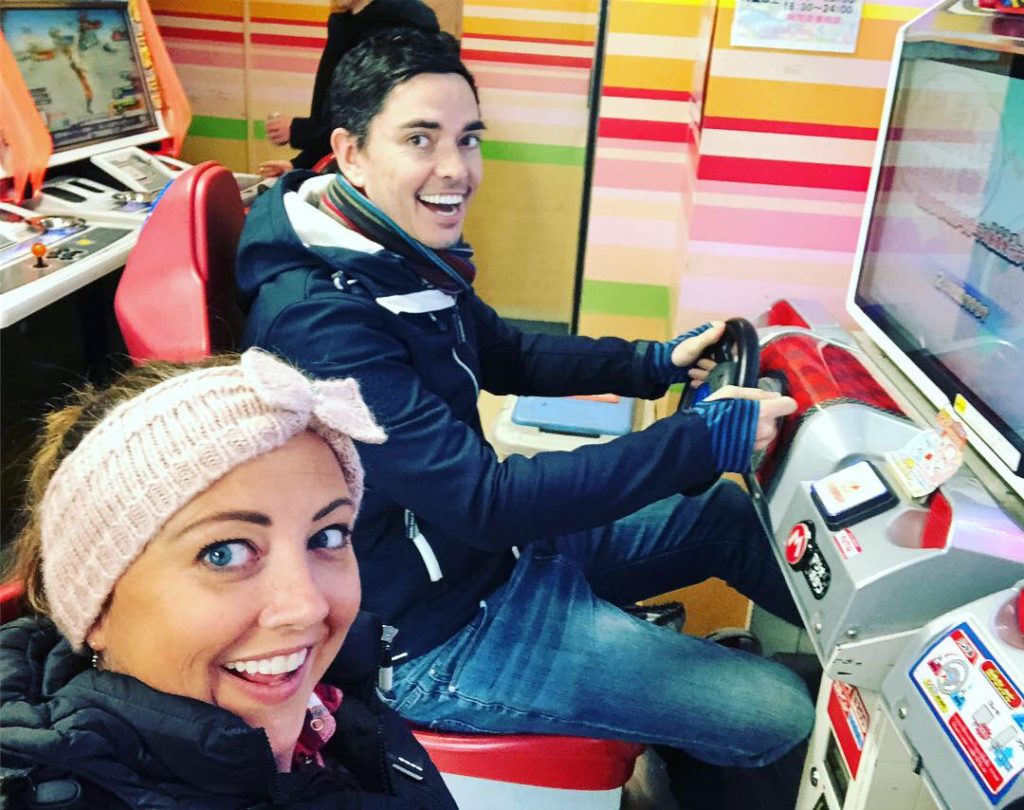
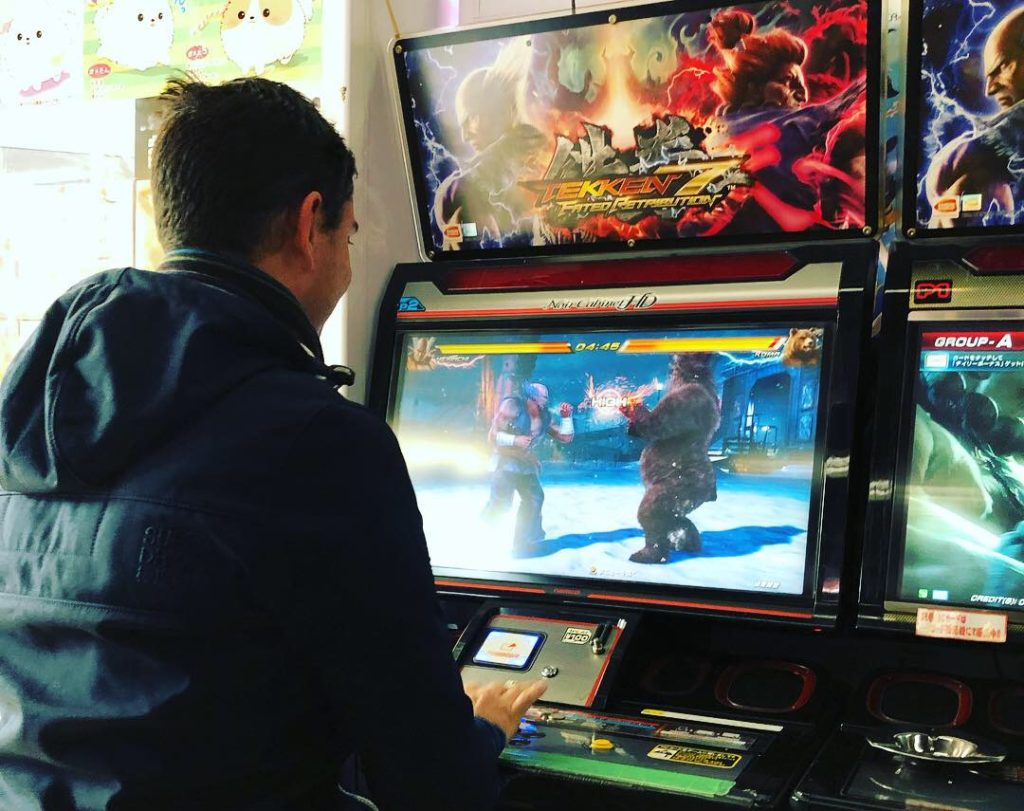
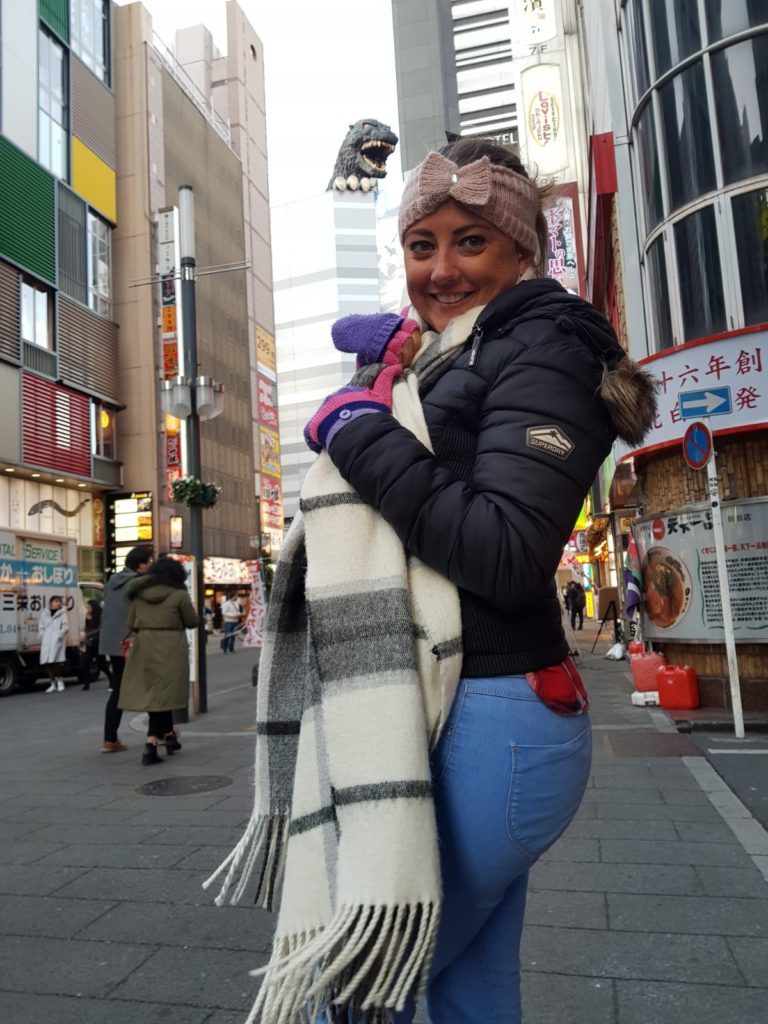
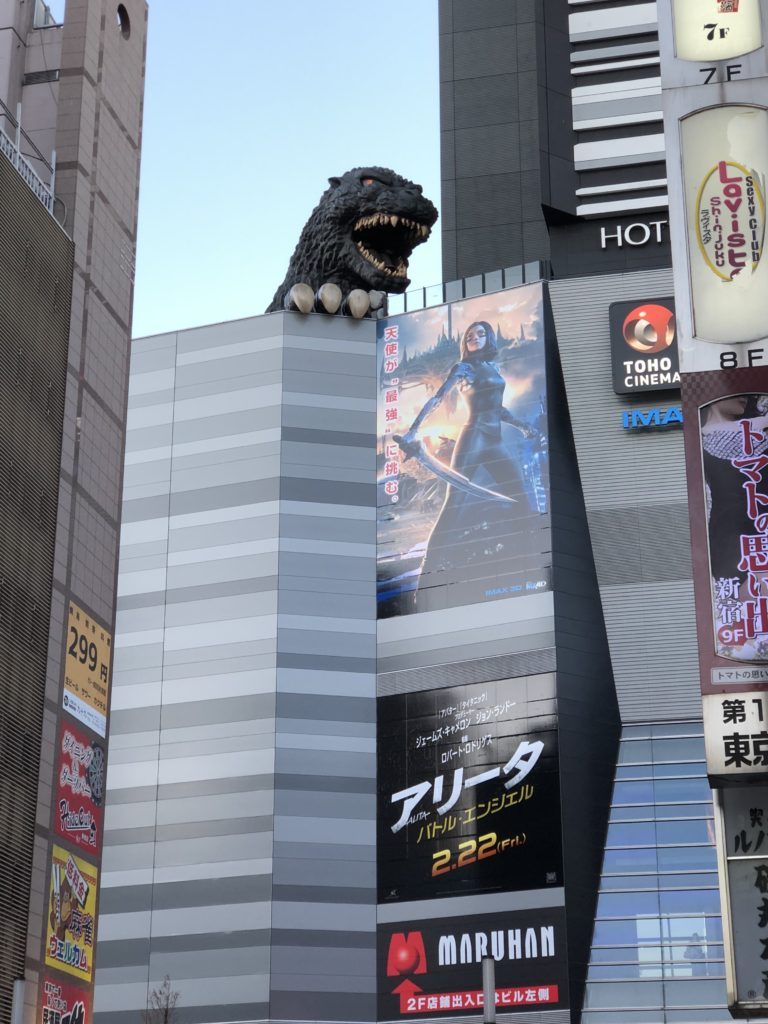
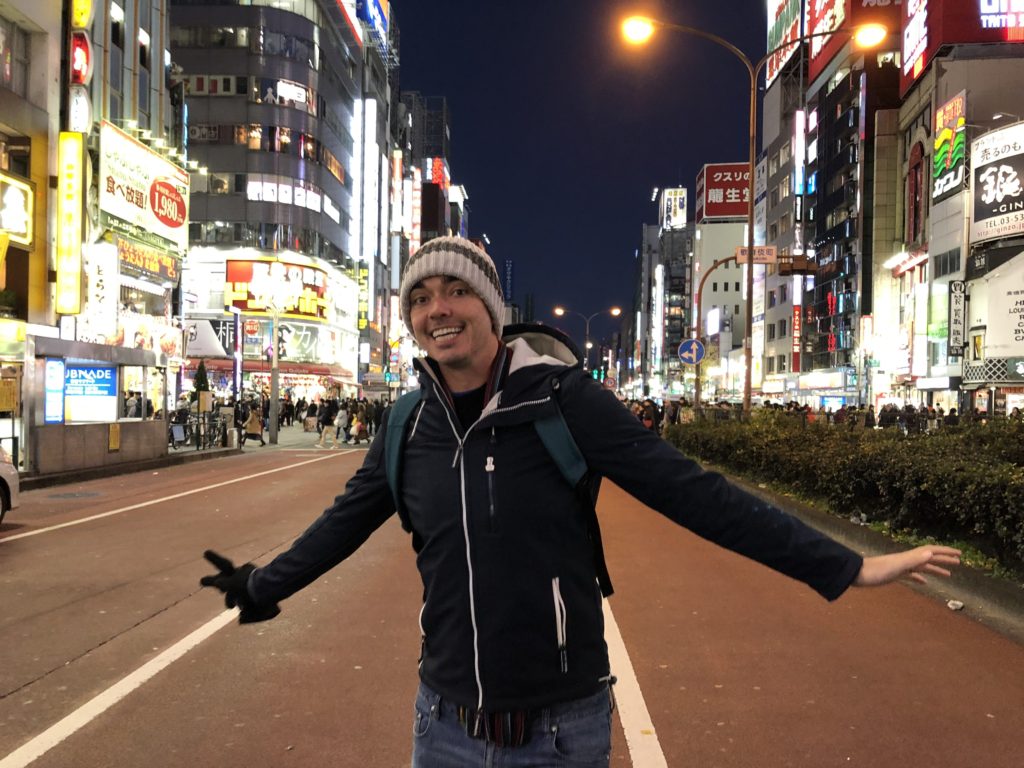
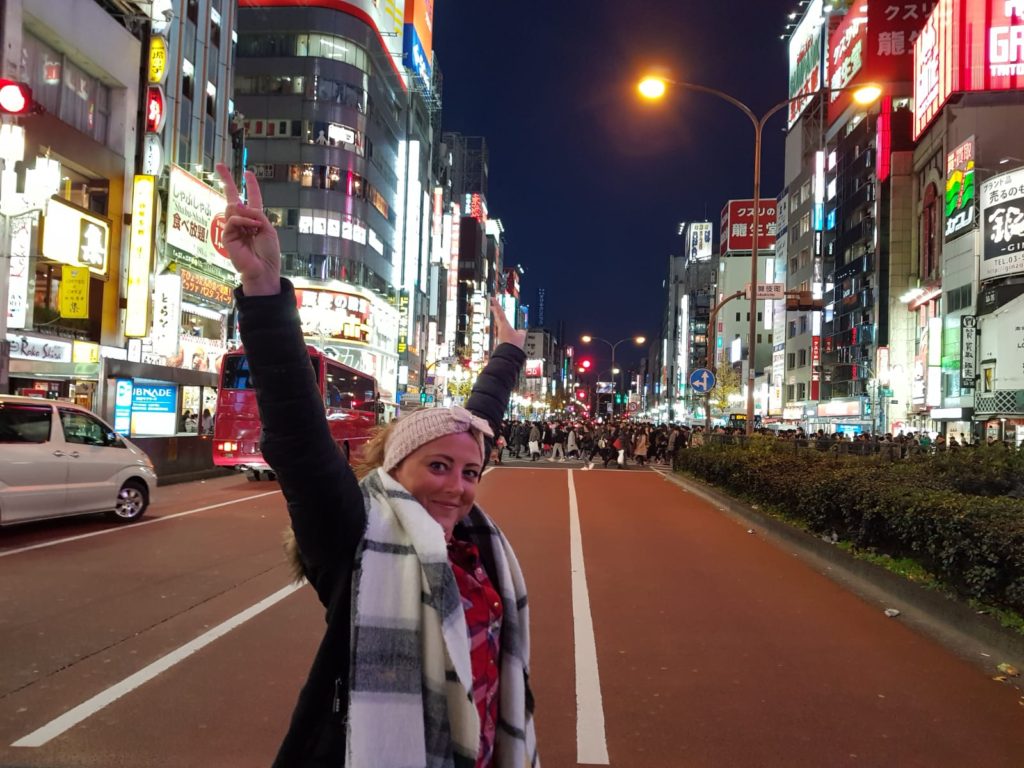
Tokyo: Where to eat
We felt like every single place we ate was delicious. What’s not to love about fried chicken, Korean marbled meats, or creamy custard-filled buns! We’ve narrowed this section down to our faves. After all, half the fun is exploring the local eateries for yourselves!
Dumplings and Sparkles. Gyoza Cheeseburgers. There is nothing more to say here. In fact, I assume you are already there, propping up the bar.
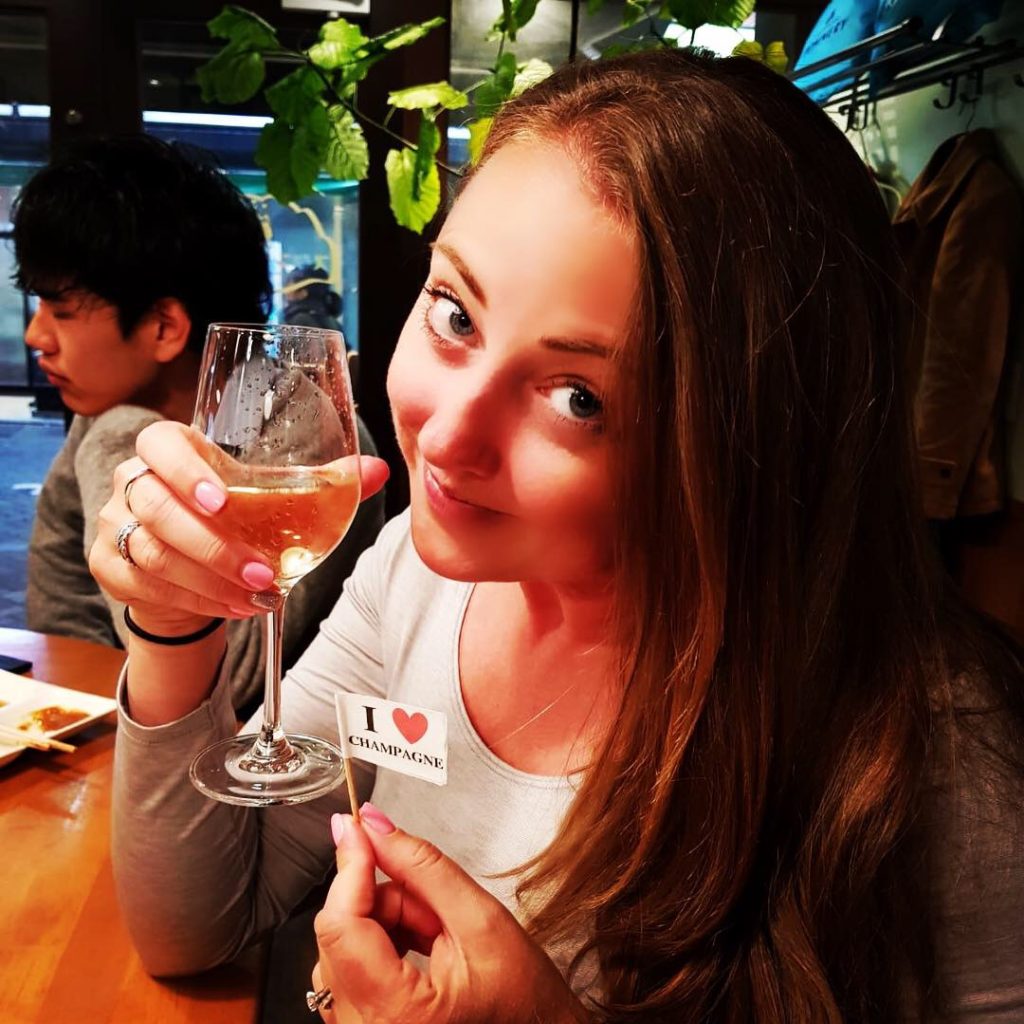

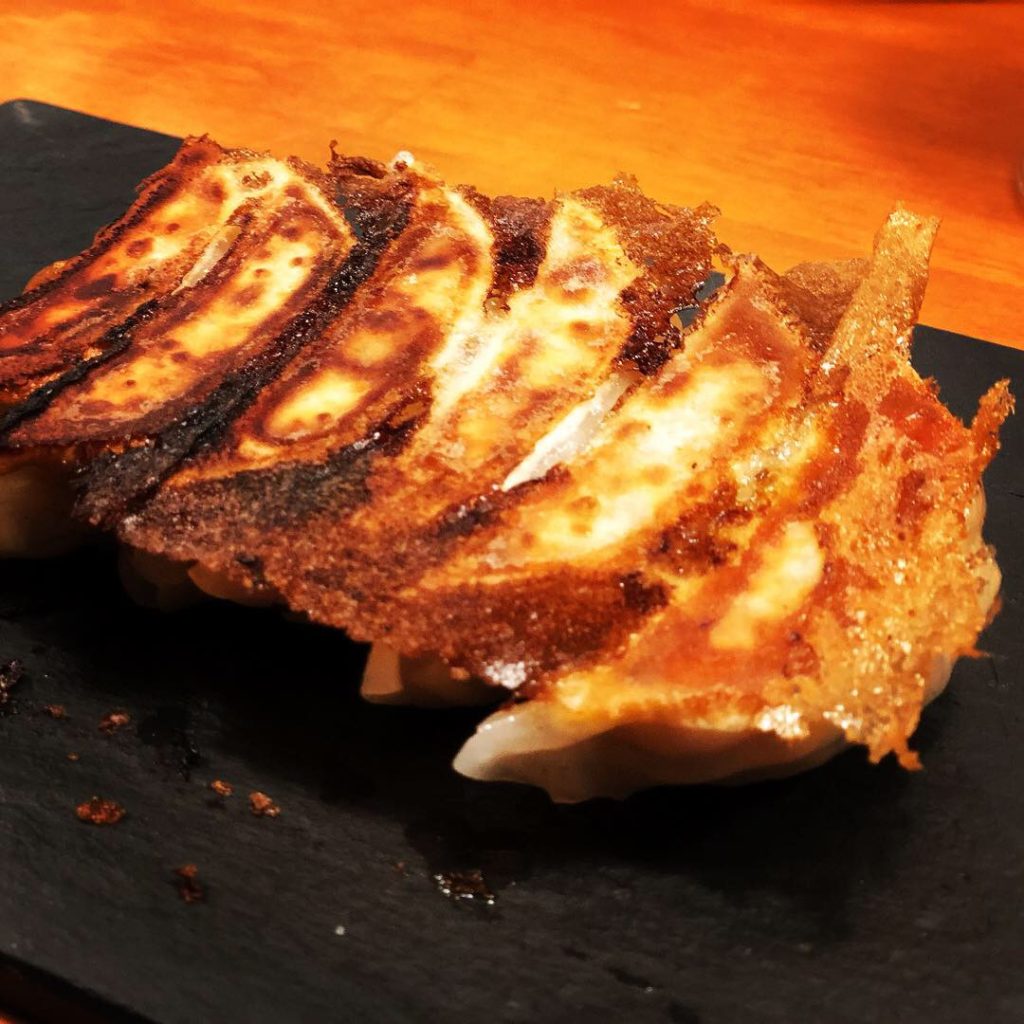
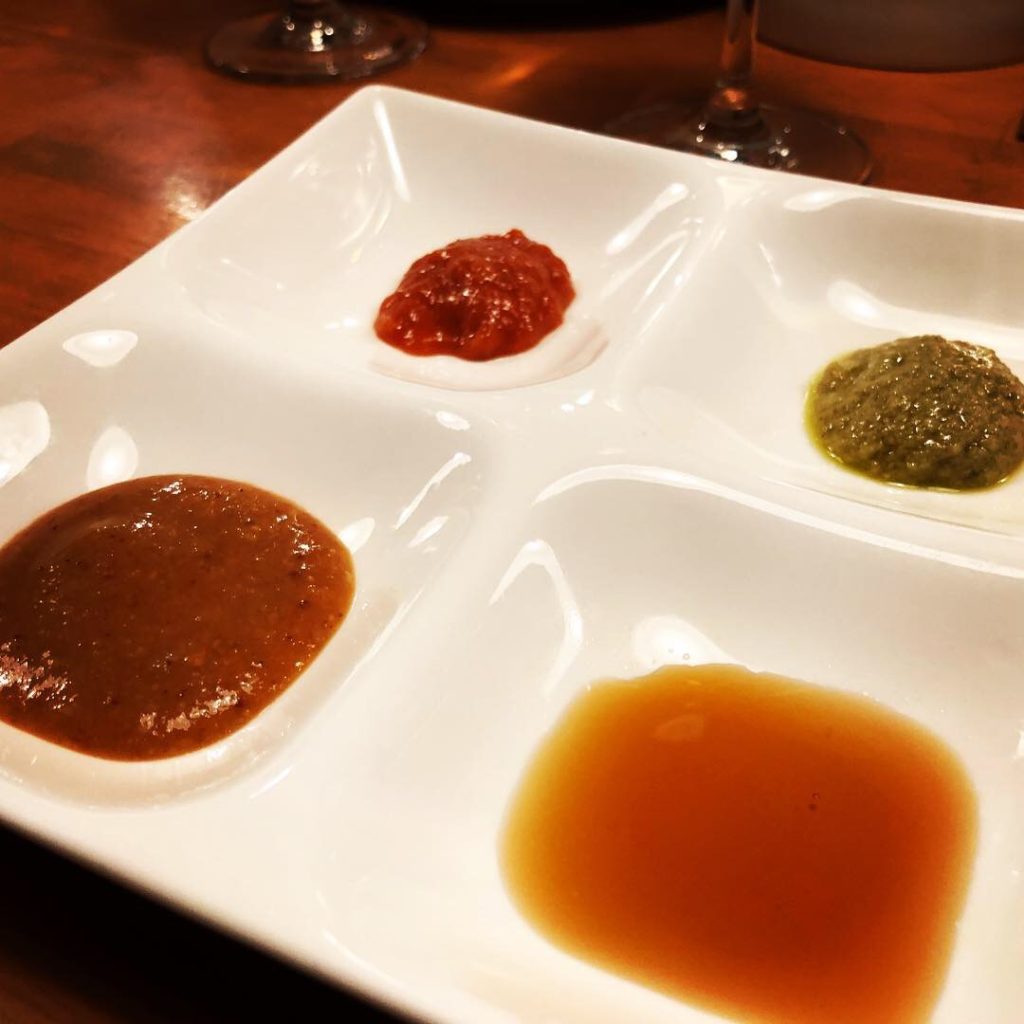
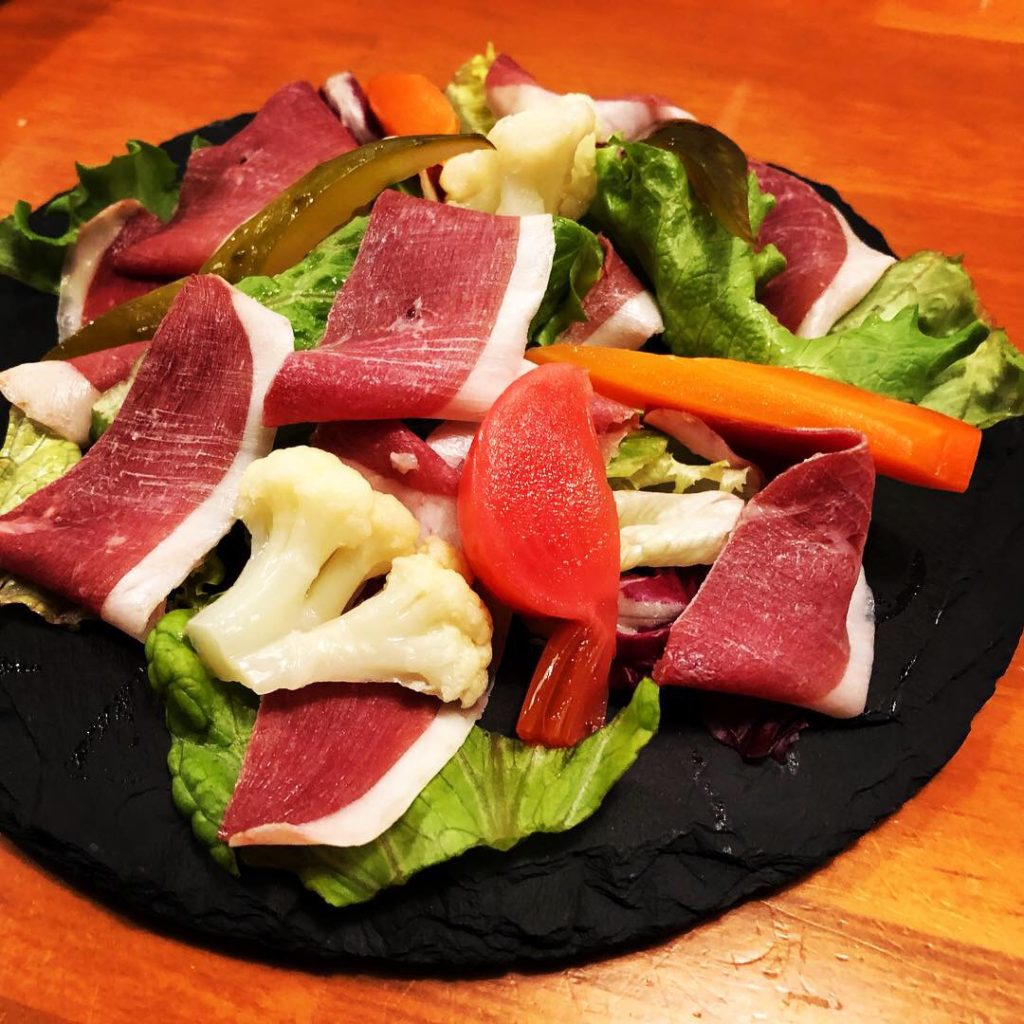
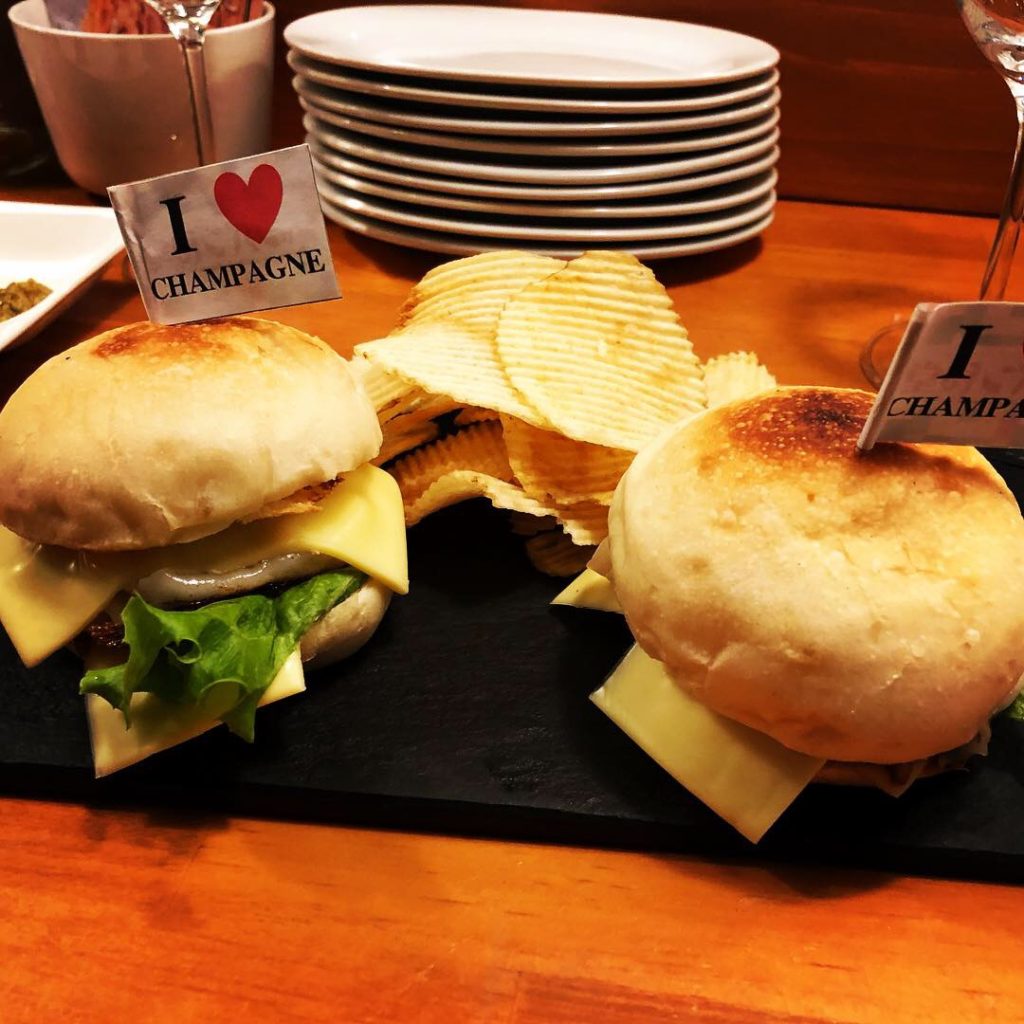

A French bakery/ cafe headed up by pastry chef Dominique Ansel. Cookie shots (milk in cookie cups), blossoming hot chocolates, and frozen s’more (ice cream wrapped in marshmallow and torched) are all to die for. There will be a queue (it’s Japan, after all), but it’s worth the wait.
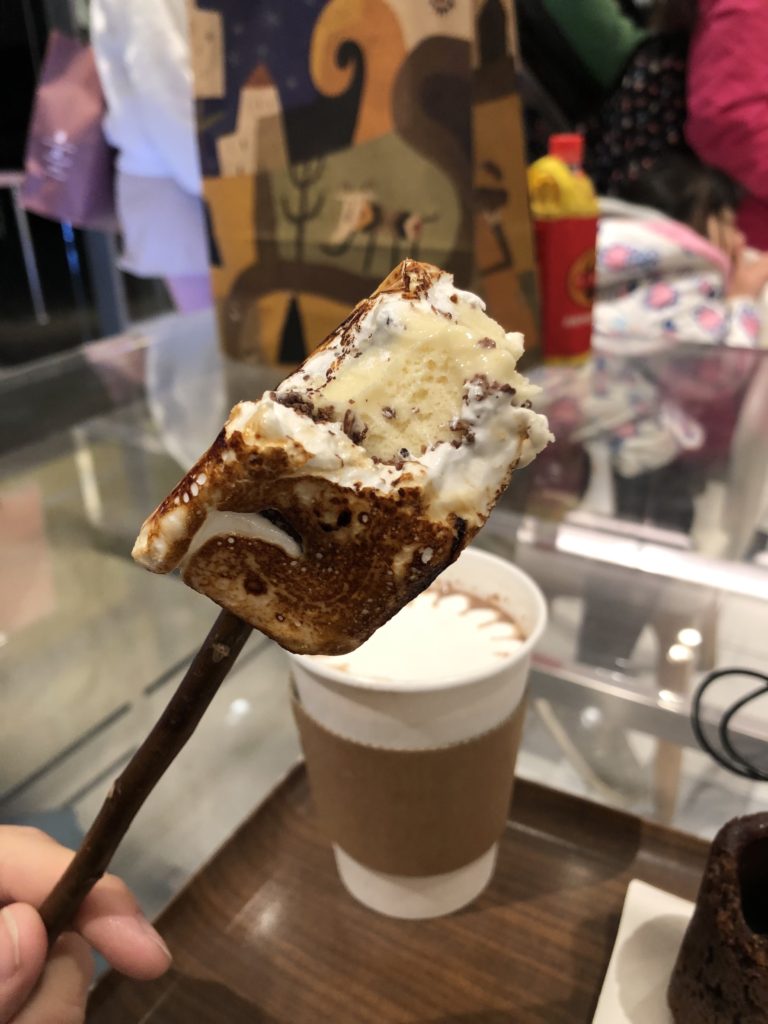
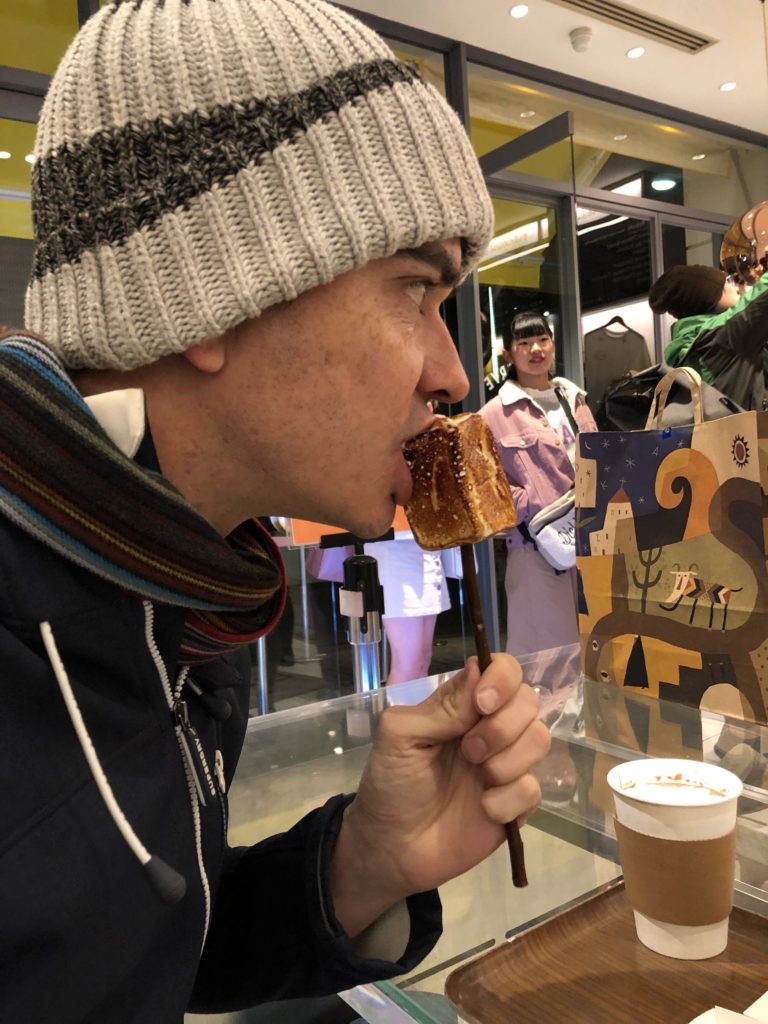
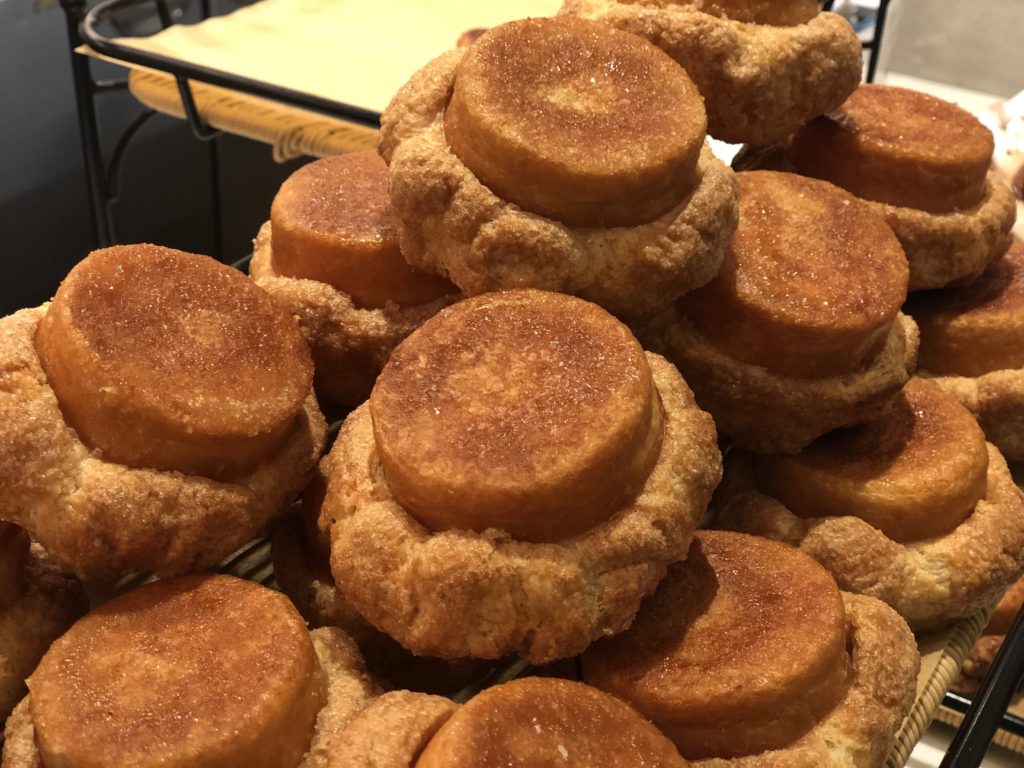
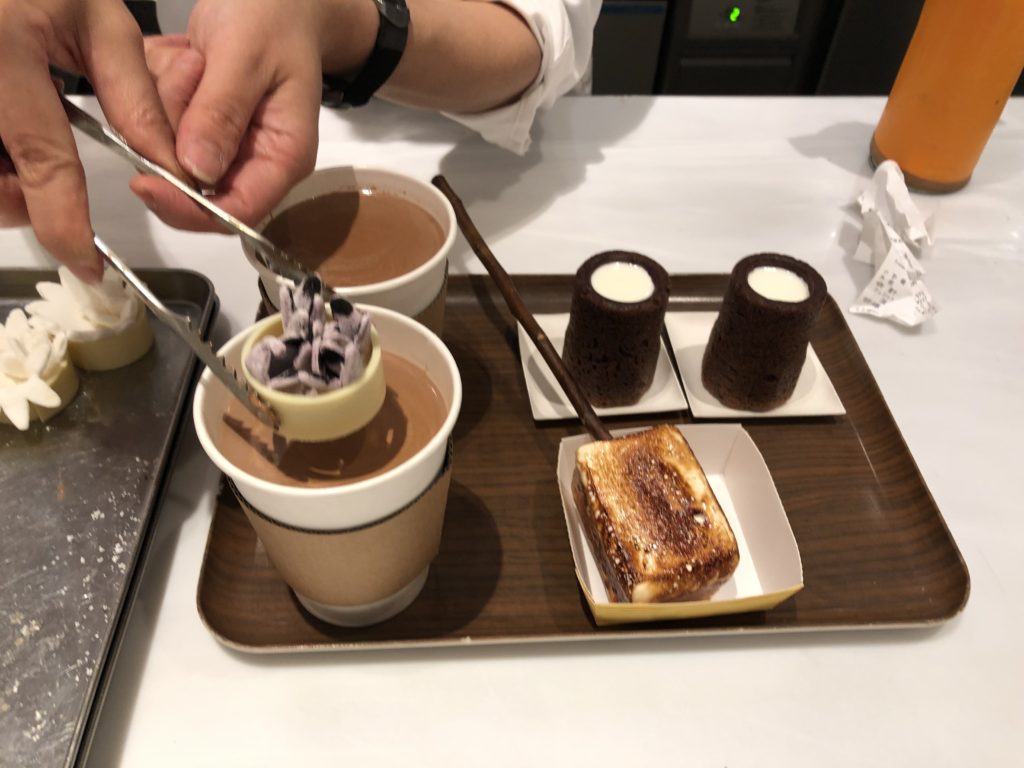
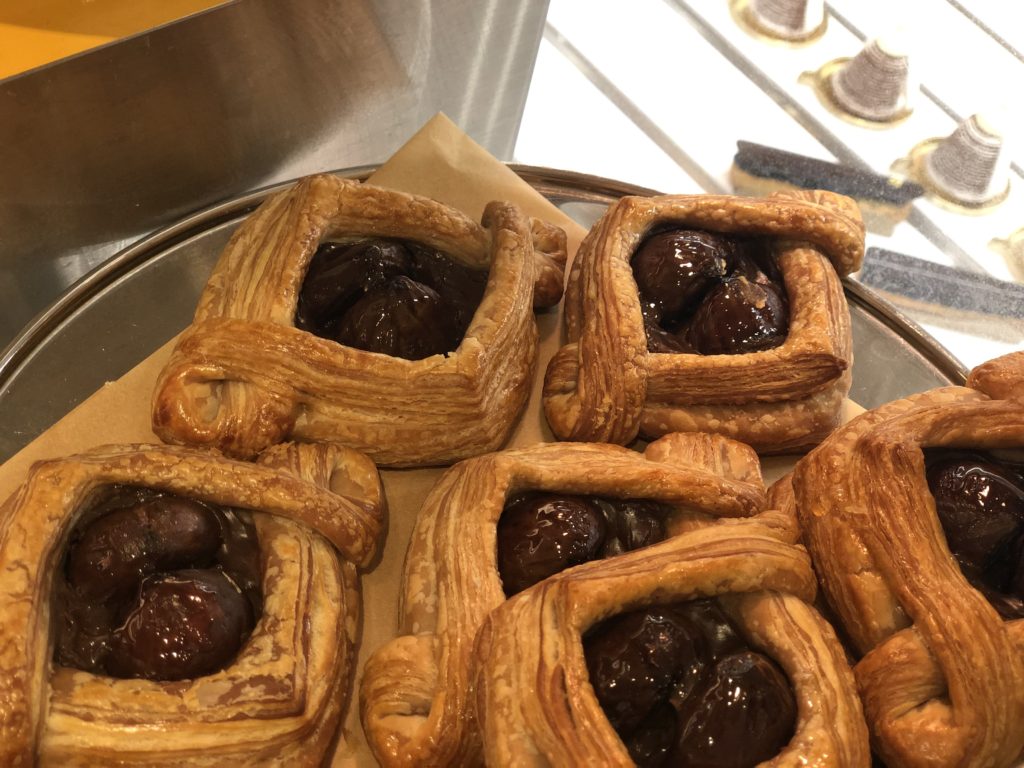

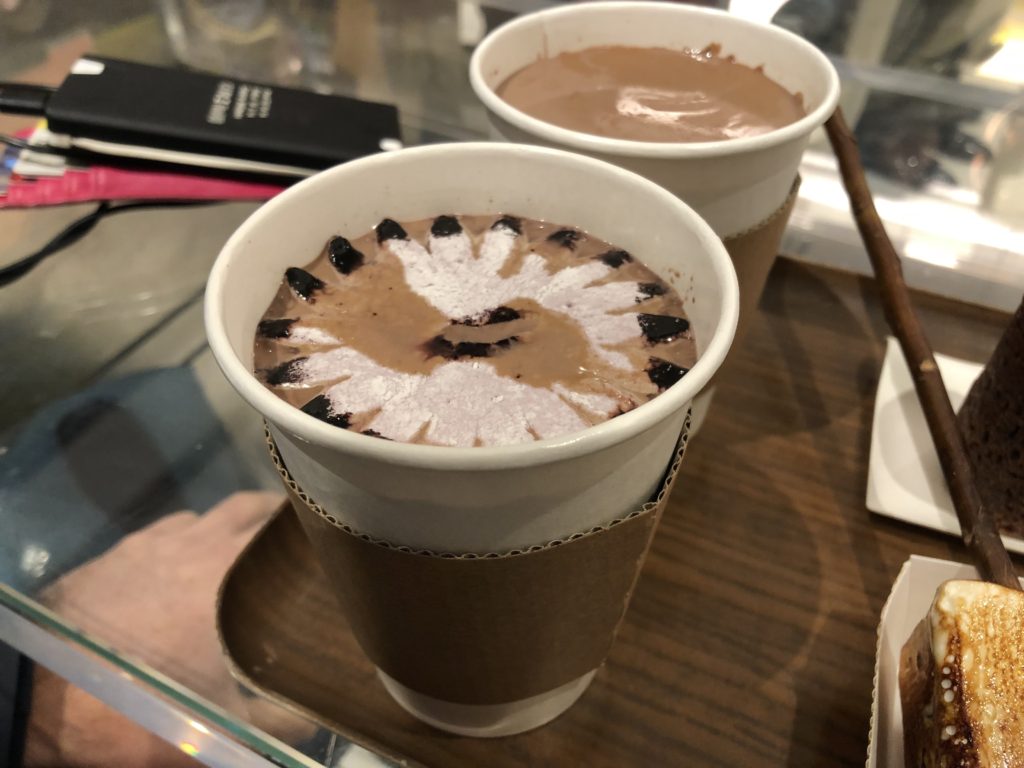
On crowded Takeshita Street, this vibrant crepe stall beckons you closer with its bright lights and sickly sweet smells. Whilst queuing, you might notice the wall packed with brightly coloured crepe cones, acting as a menu from which to make your choice. This seems like a great place to explain the concept of ‘fake food’ in Japan. Replica food for restaurants has become an industry in itself, and some of it is seriously impressive.
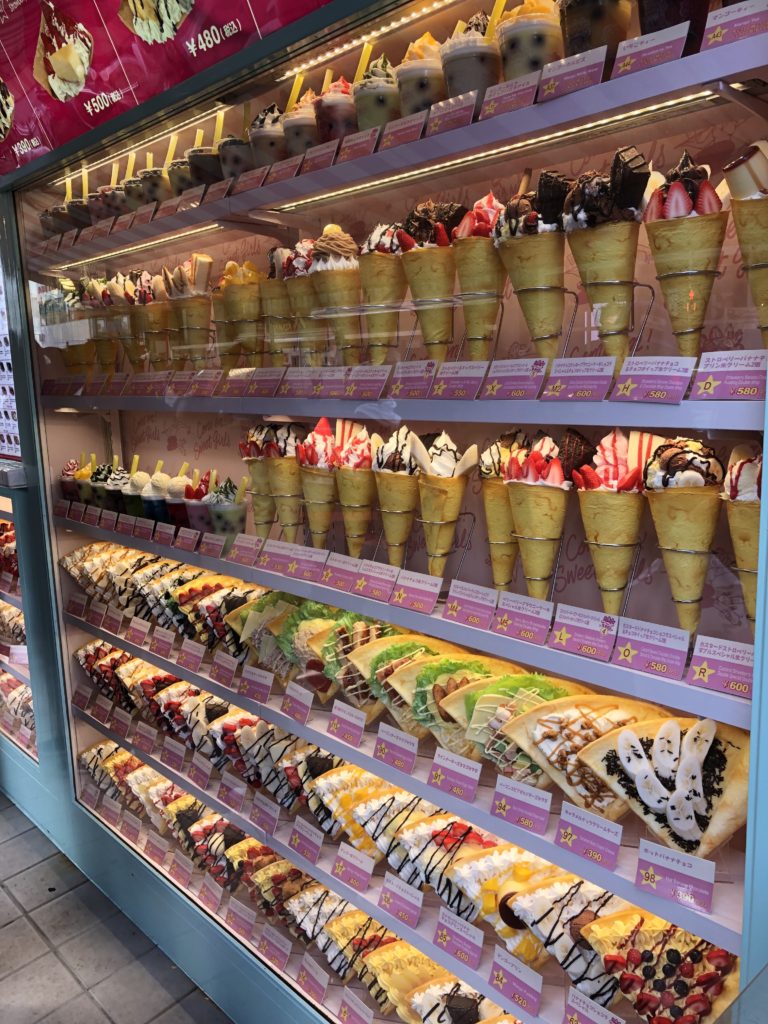
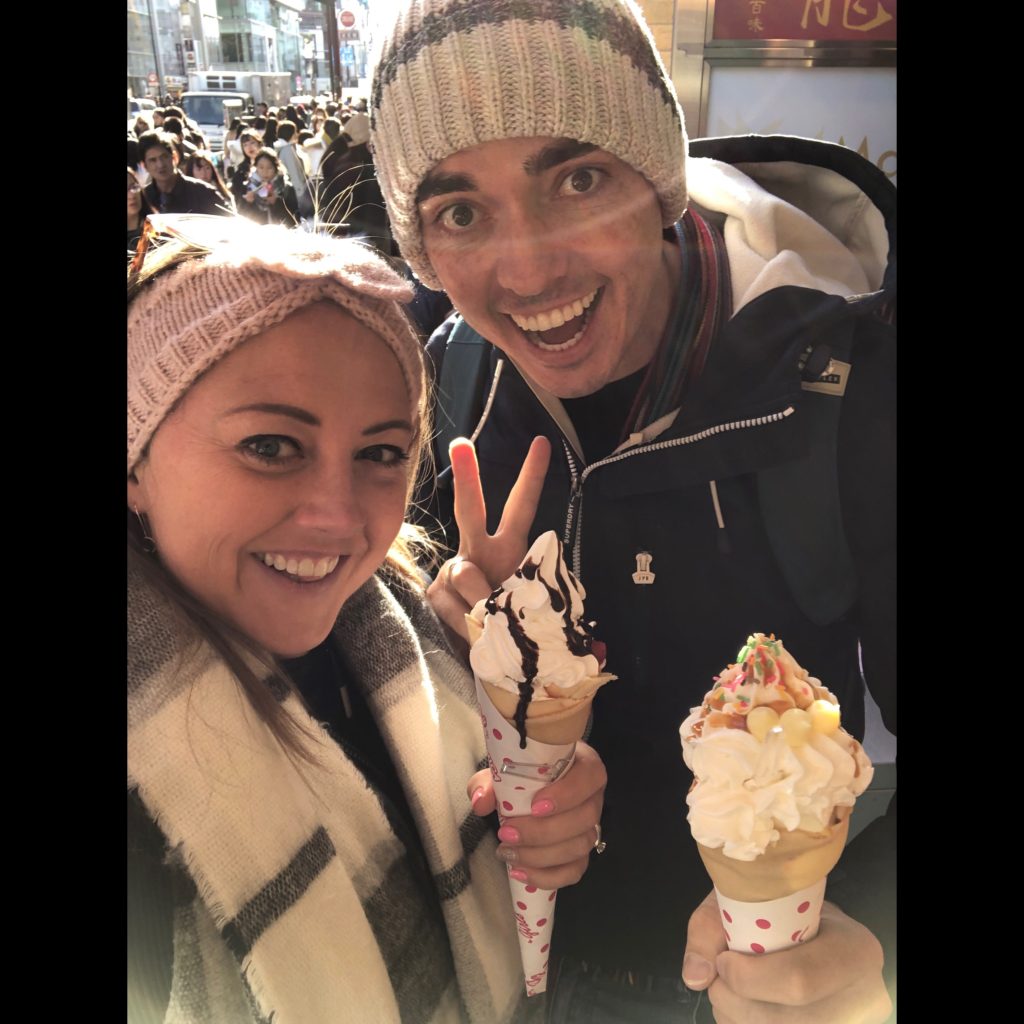

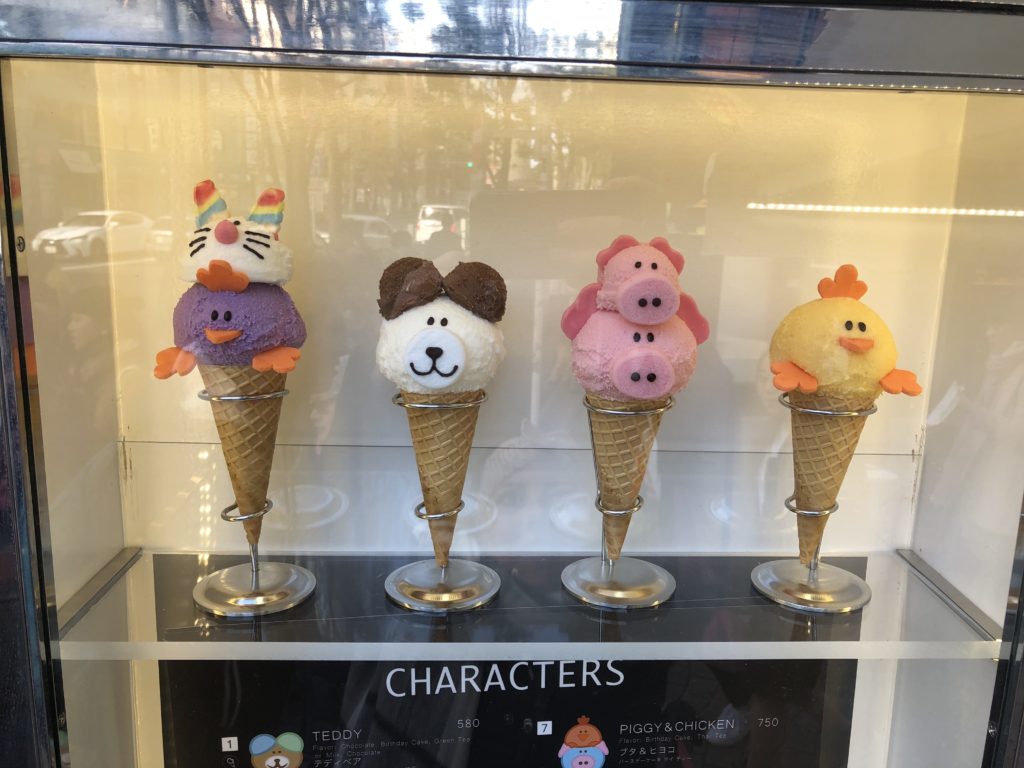
Literally the best ramen I’ve ever had. (And it’s a chain!!) We ordered Tonkotsu Ramen from the vending machine in the lobby (so fun!), sat in individual compartments and then got served under a curtain. Introvert heaven! How can we get these in Australia please and thank you!?
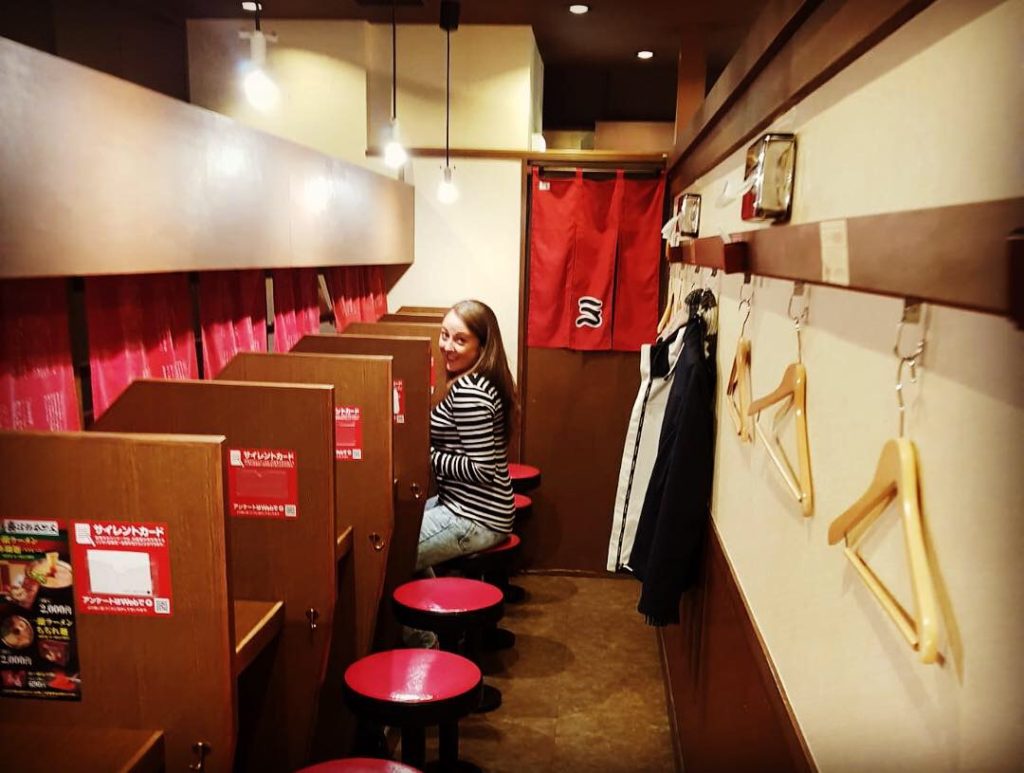
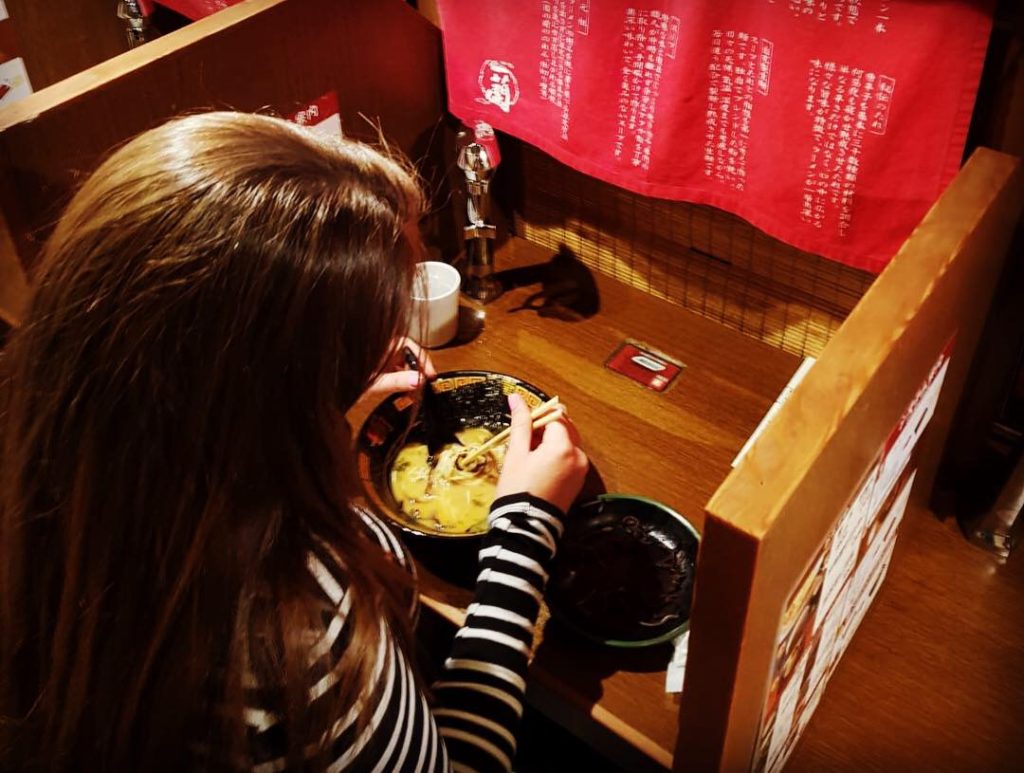
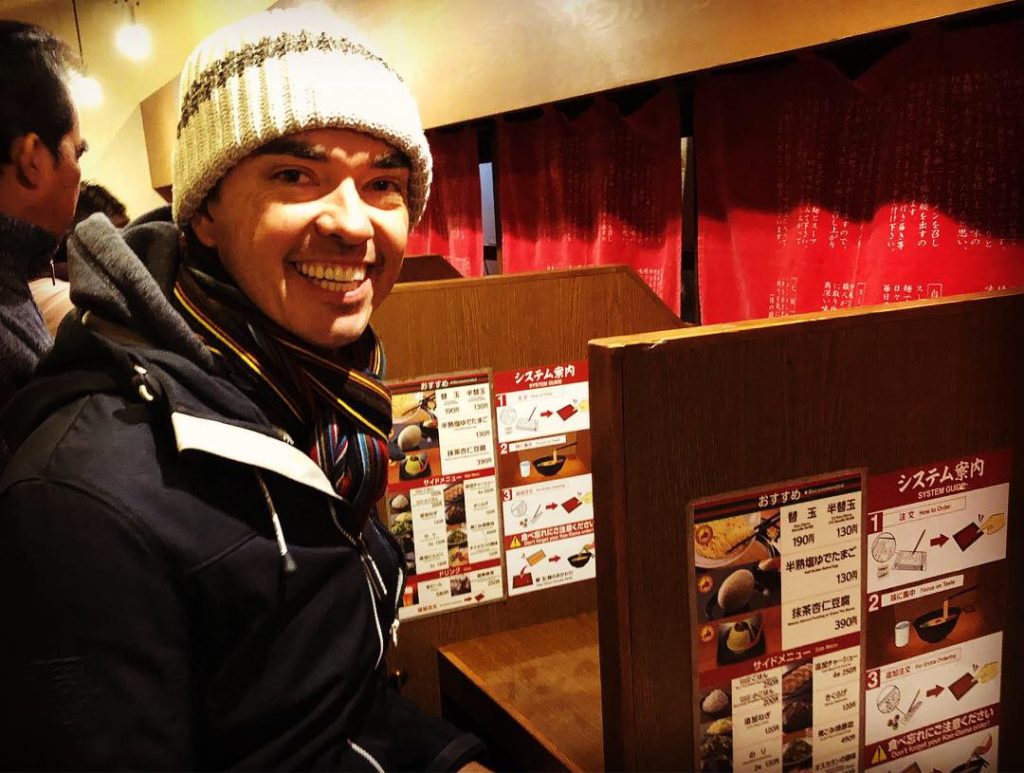
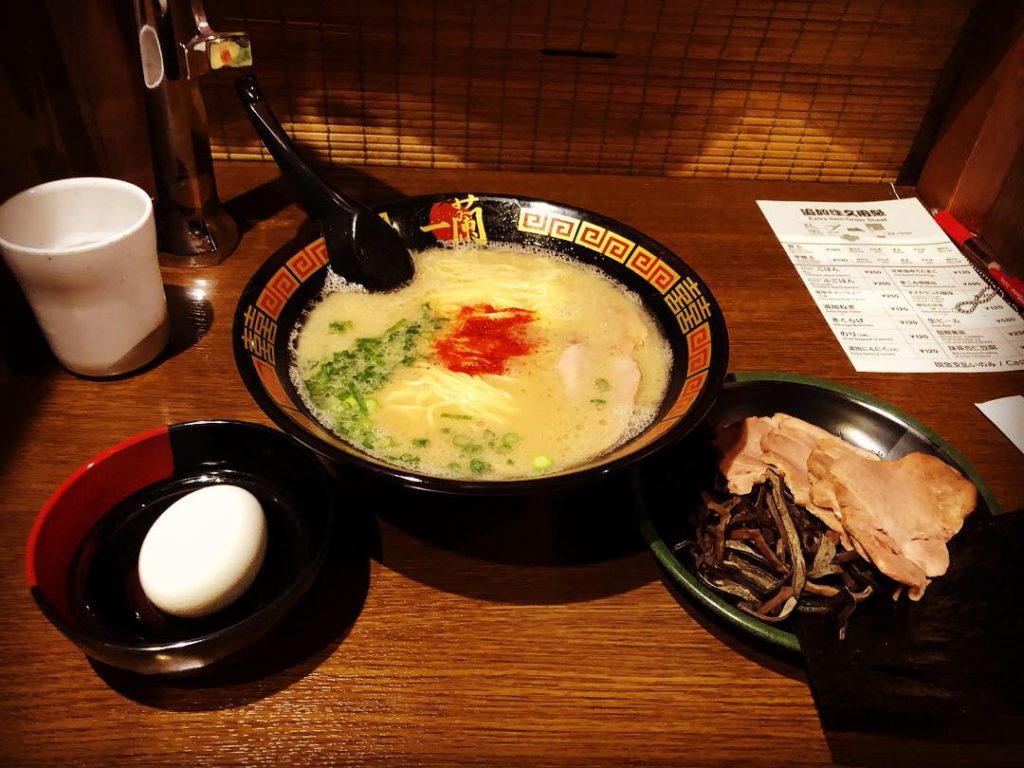
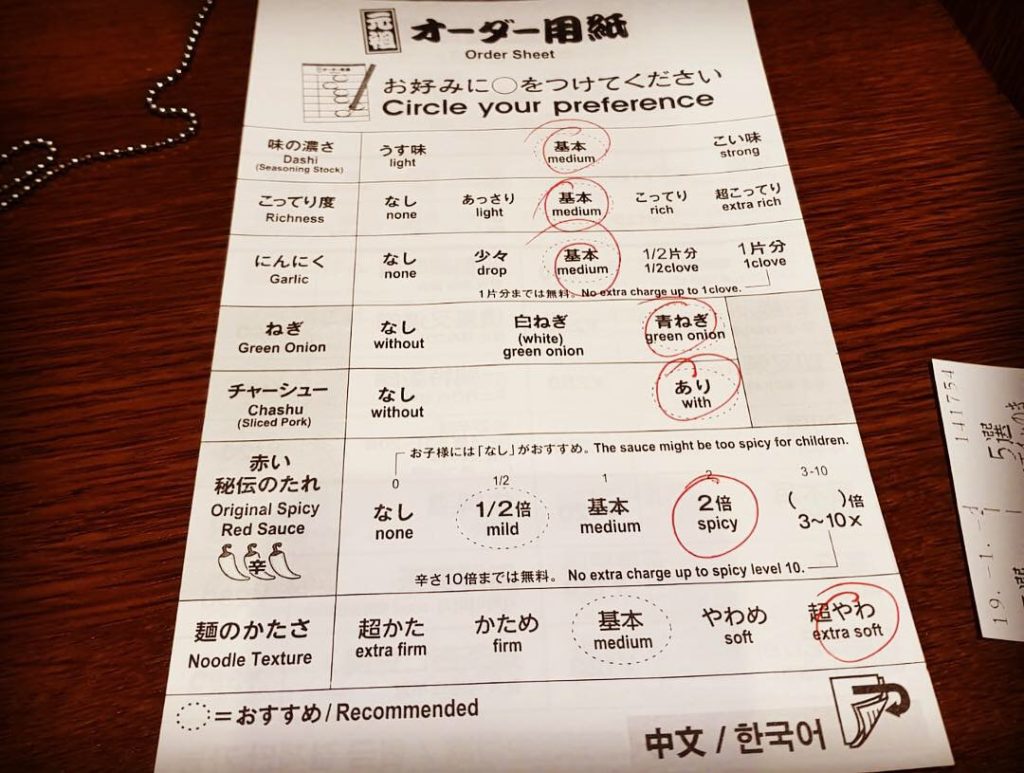
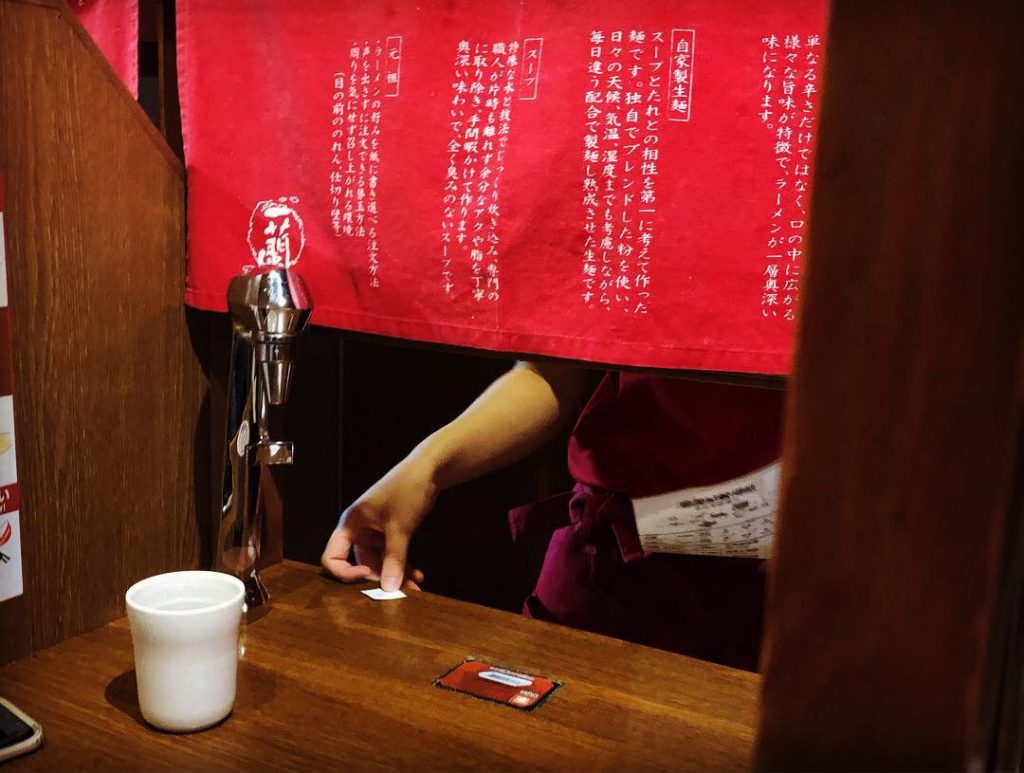

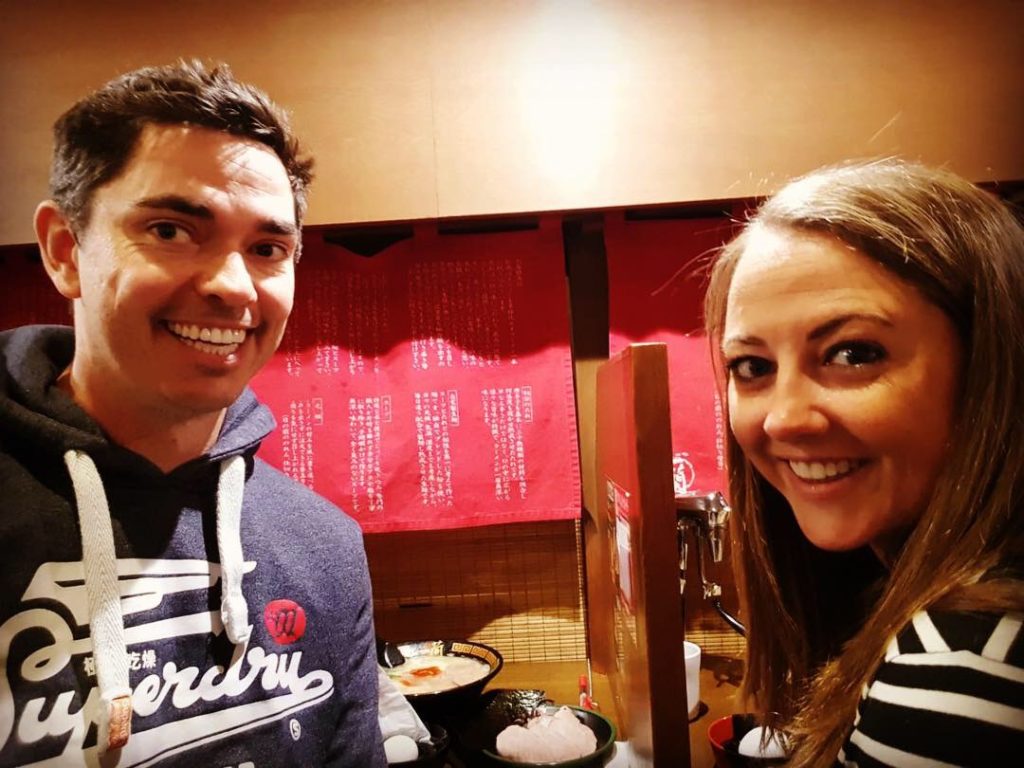
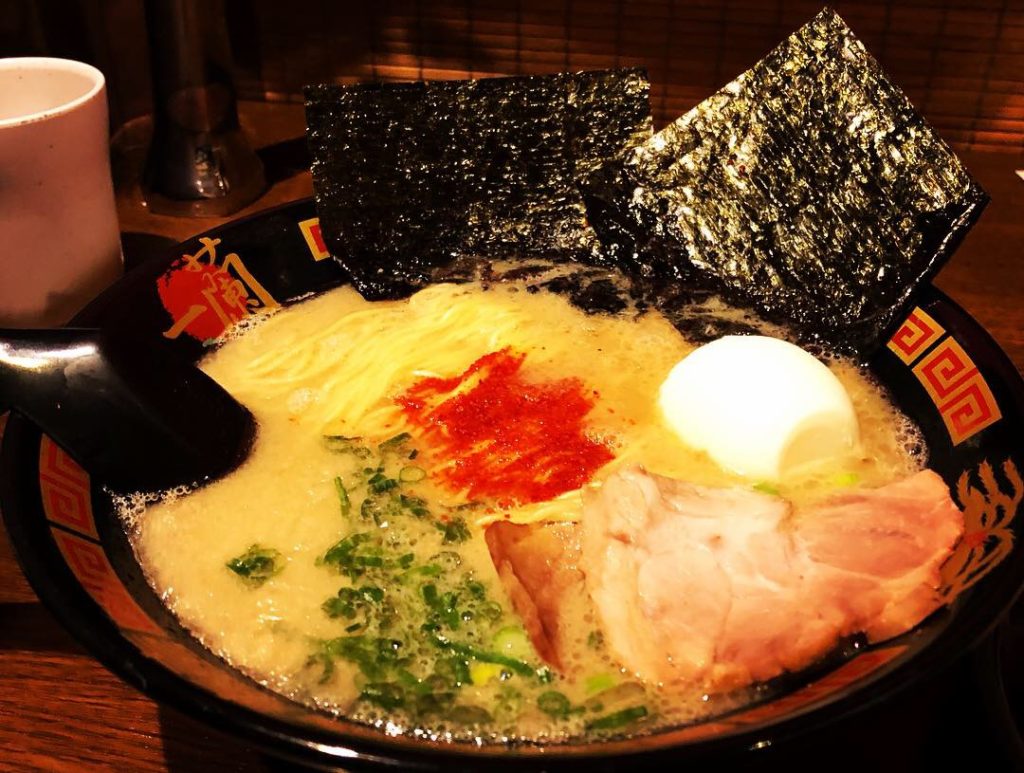
Day 9/10: Takaragawa Onsen
We knew that we wanted to strike a balance between the hustle and bustle of the big cities, with tiny off-the-beaten-track villages during our trip. I’d come across a stunning onsen, snugly nestled in the mountains, and fell instantly in love with it. The website told us that it had been featured in many advertisements and movies, and it wasn’t hard to see why.
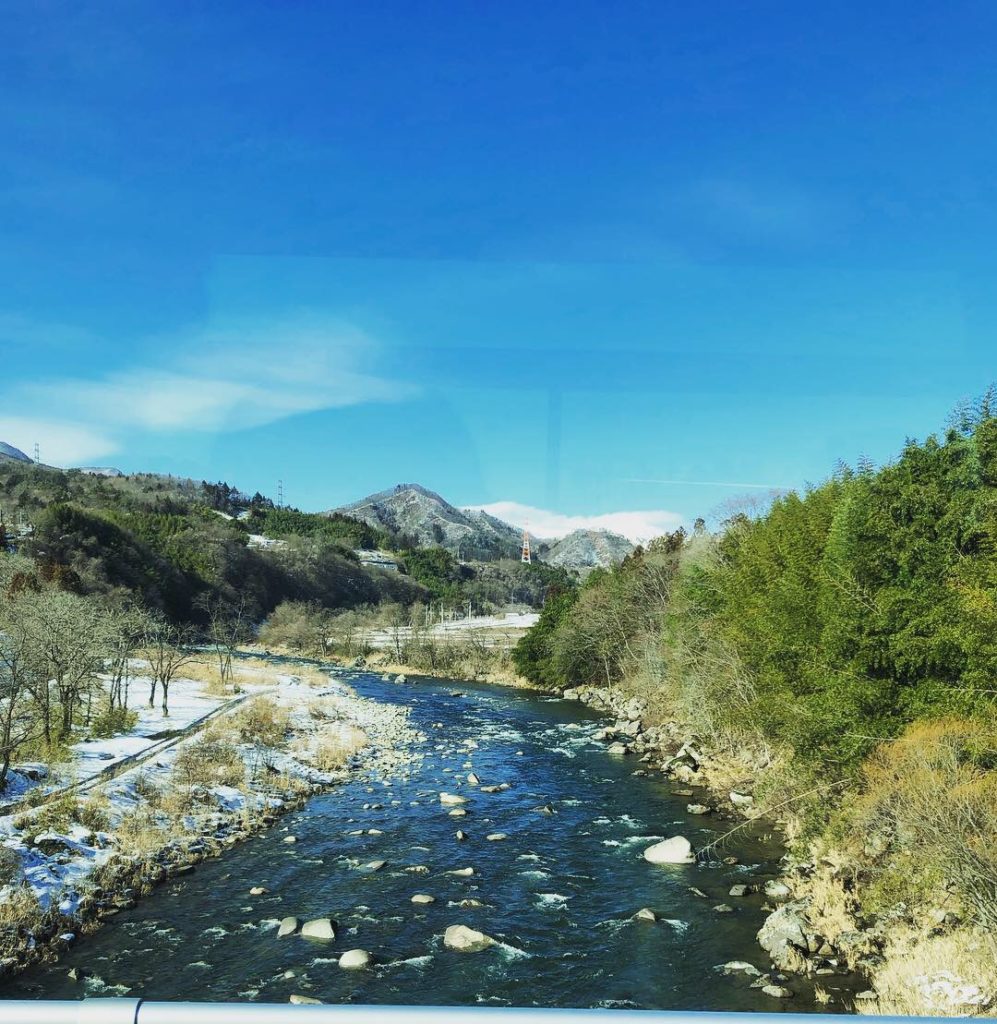

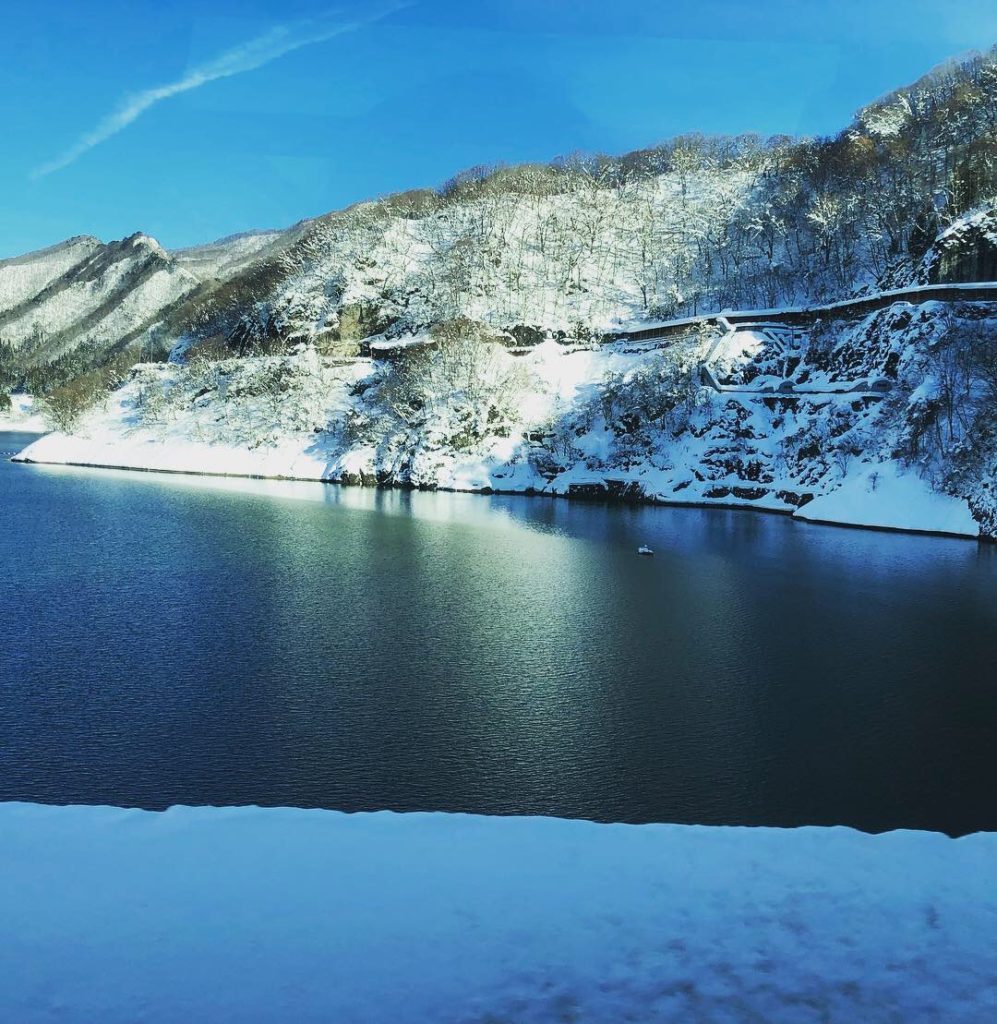

Takaragawa Onsen is heaven on earth. One of my soul places. If I go there when I die, I’m very much ok with that. We only stayed a night, but perhaps that briefness made it all the more magical.
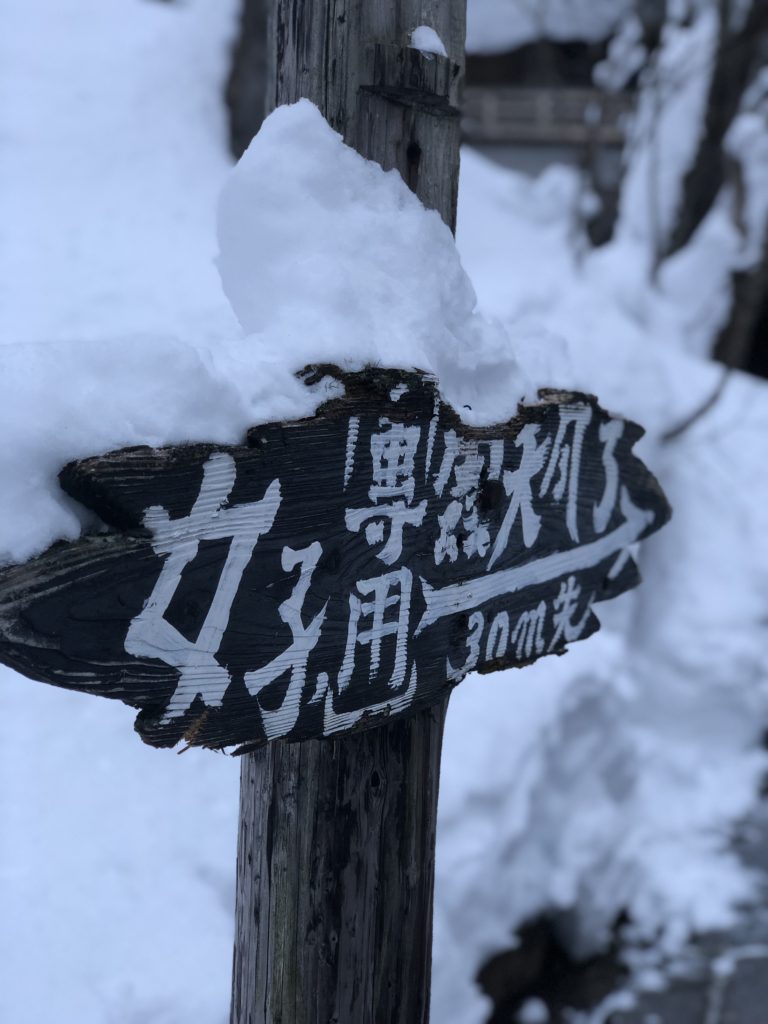
Our room was gorgeous; traditional ryokan-style, with paper screens and tatami mats. The big windows opened out onto a bank of snow, just behind the river that wound through the grounds. I was so delighted that I could barely bring myself to leave our newly found haven.
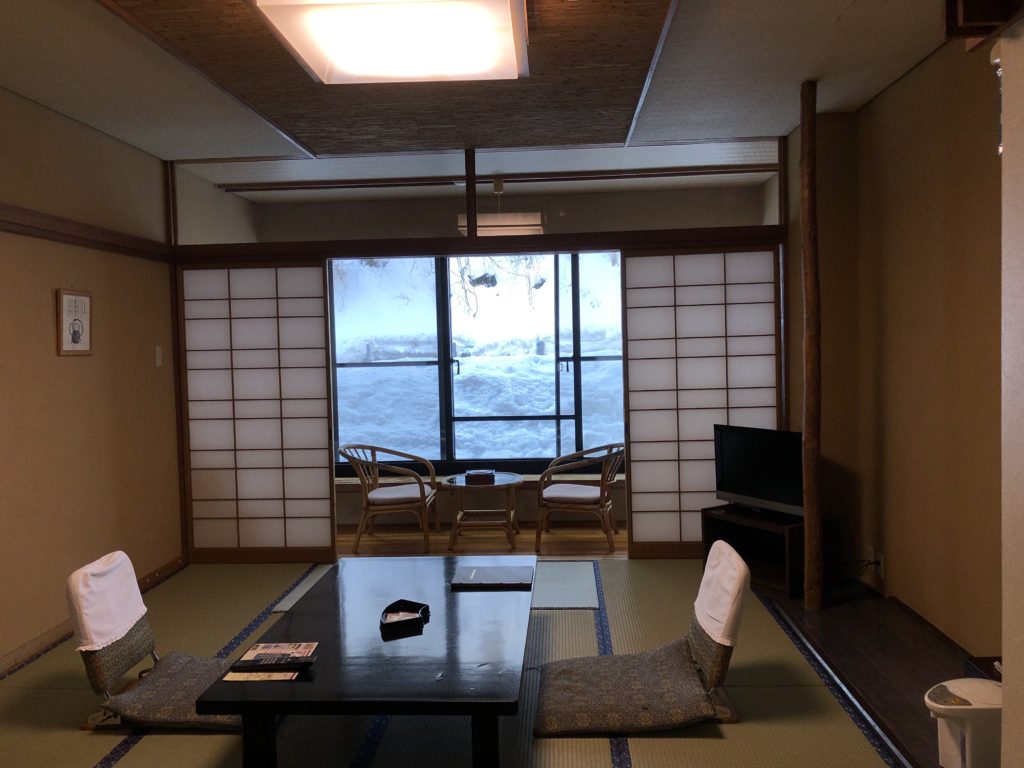
After a warming cup of green tea, we wrapped ourselves in our beautiful yukatas and headed out to the onsen.
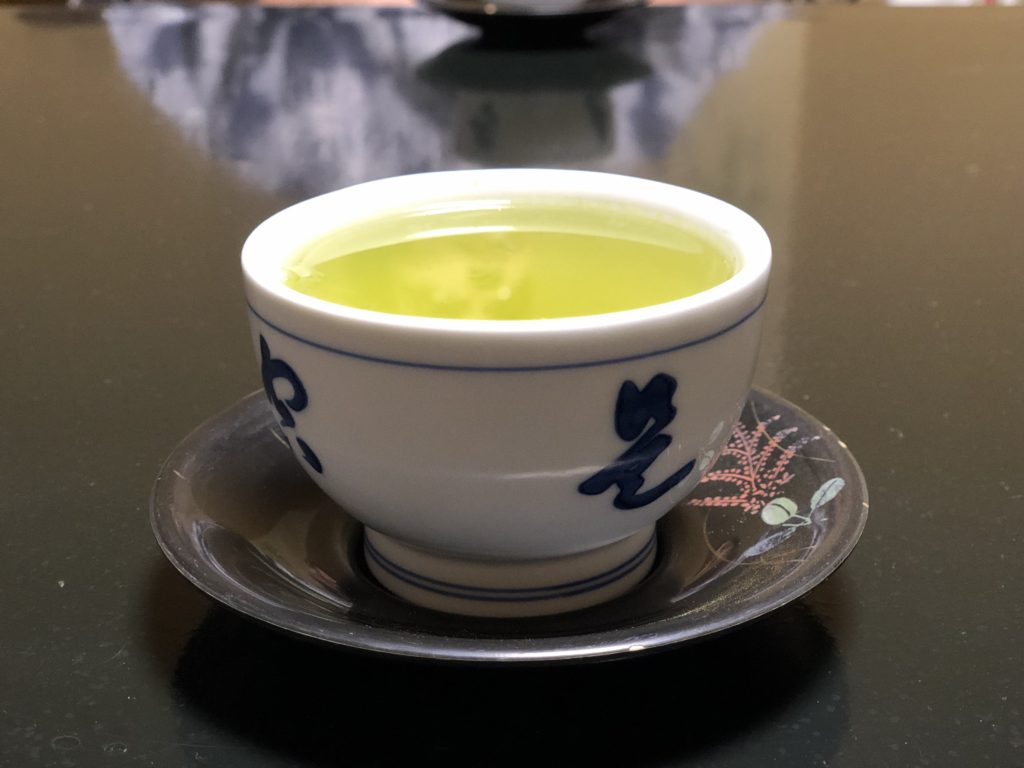

We slipped into the natural hot pools, which steamed silently against the chilled mountain air. We sat for hours, talking softly and staring at the snow-covered slopes around us. I blinked my eyes tightly as though taking a photo, forever capturing how I felt at that moment. I knew I could never do it justice with my words or photos. Eventually, it grew dark, and it was time to head inside for a warming dinner.
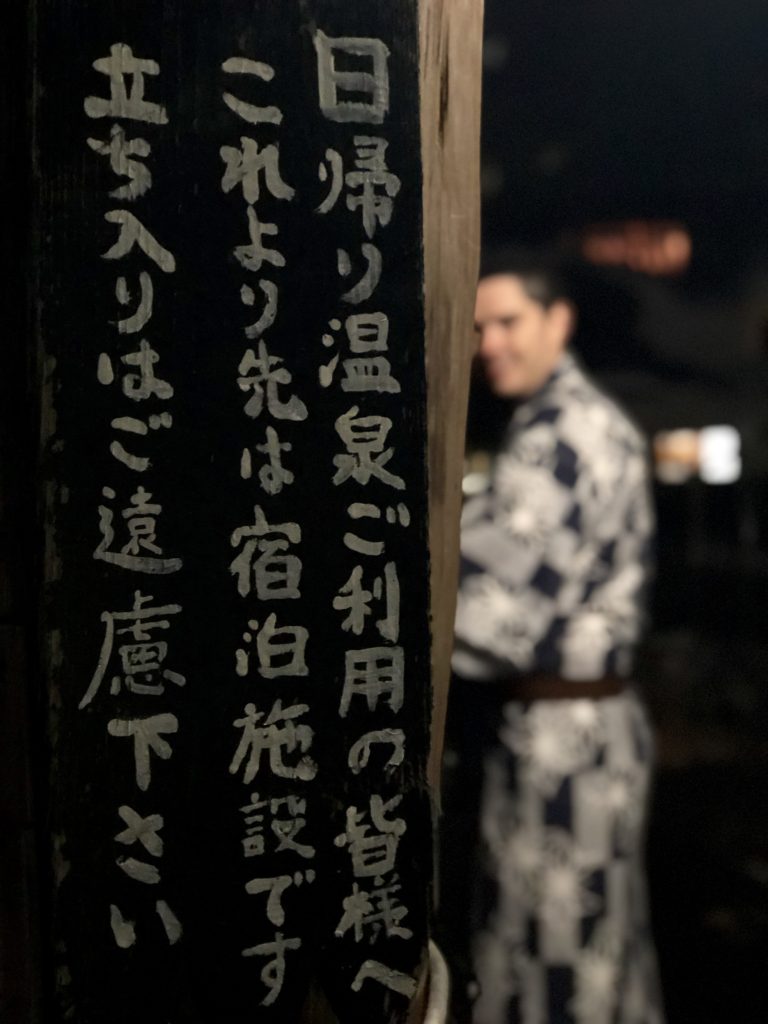
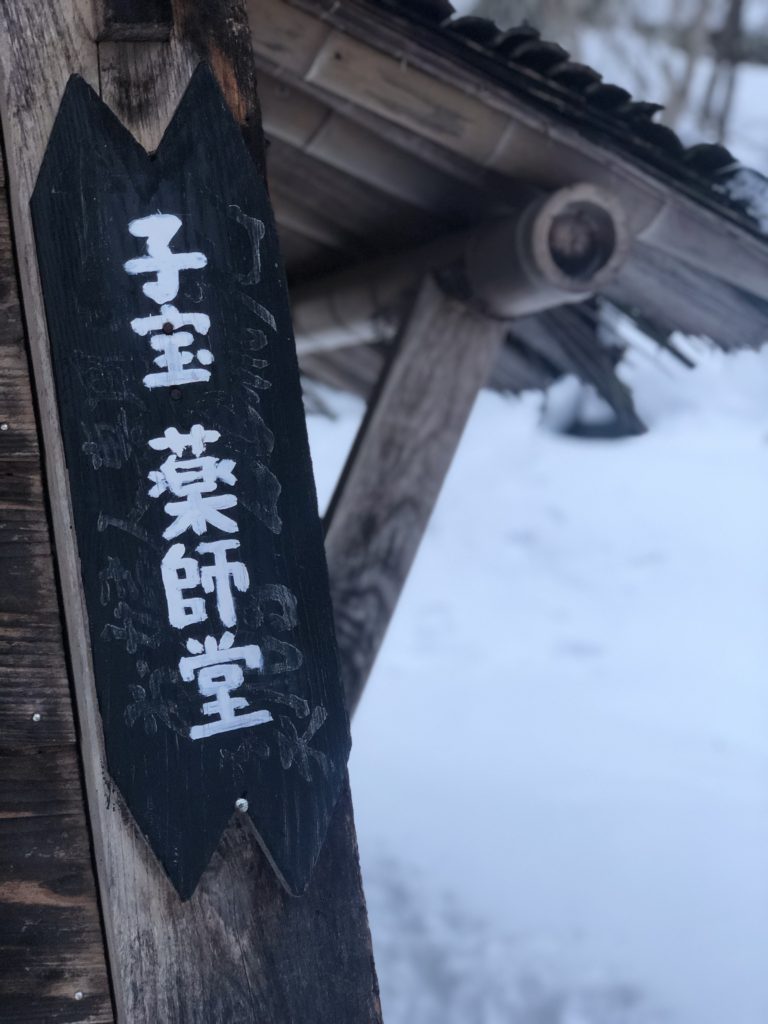
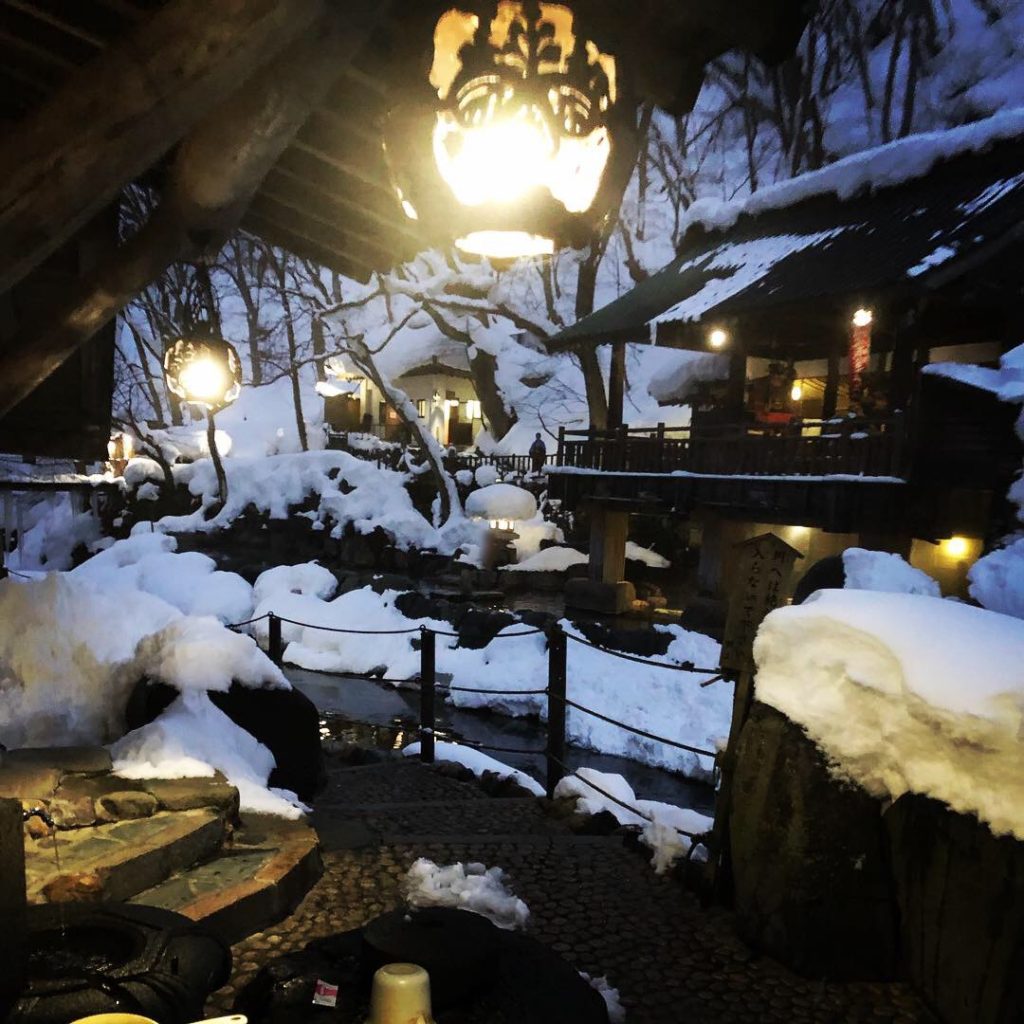
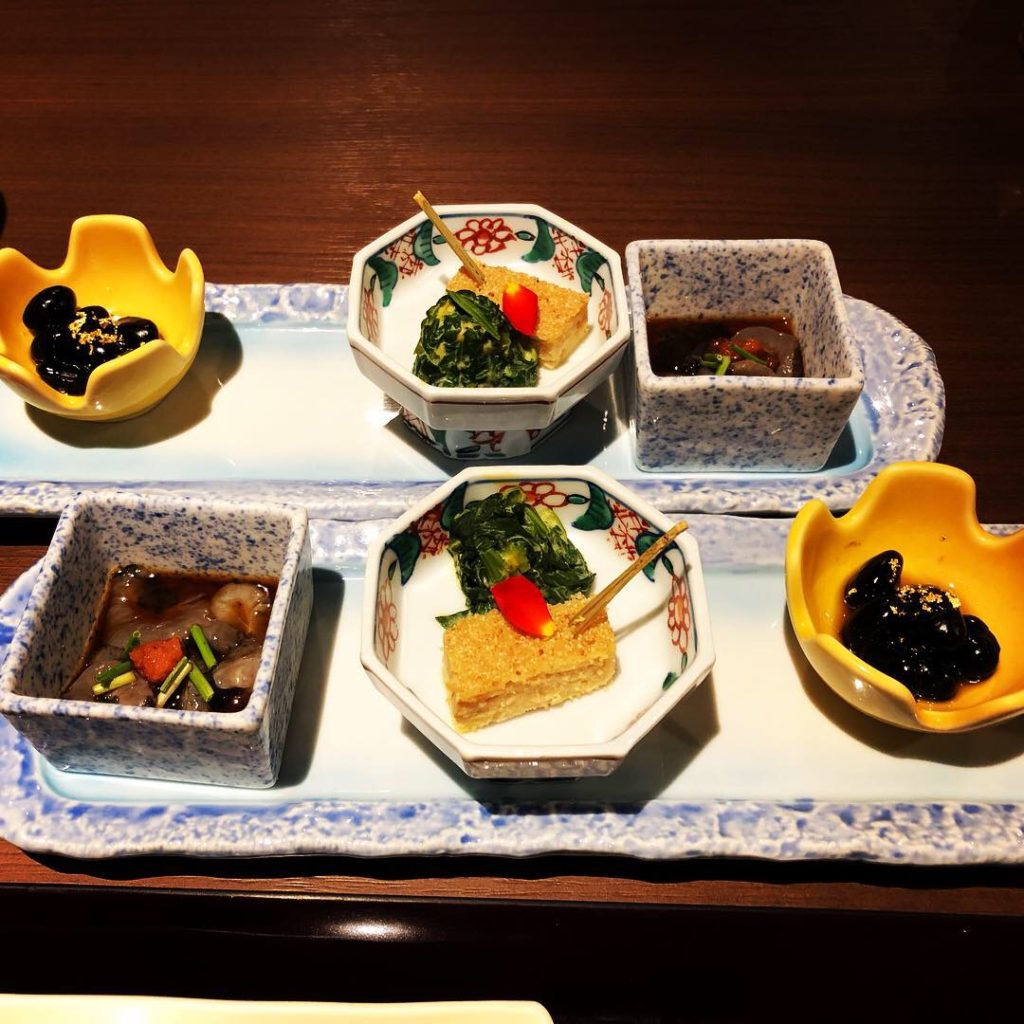
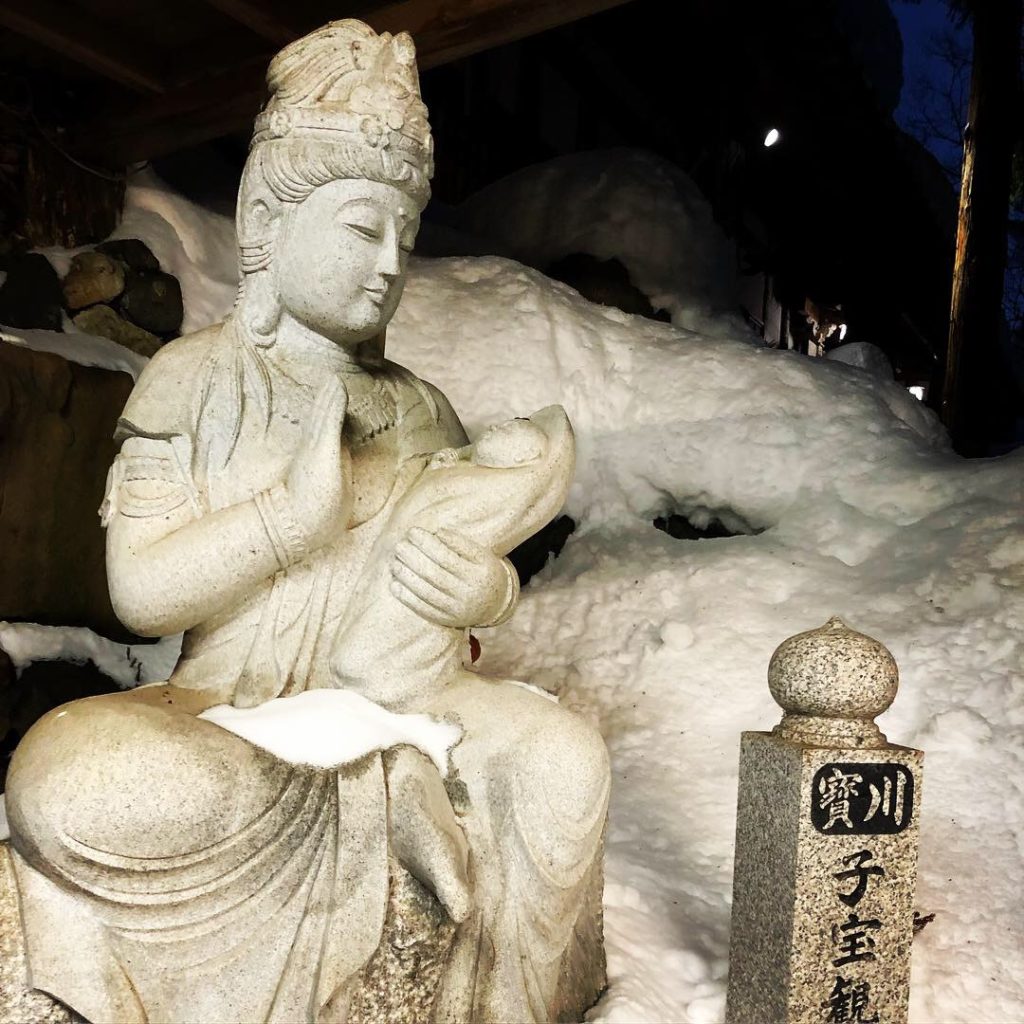
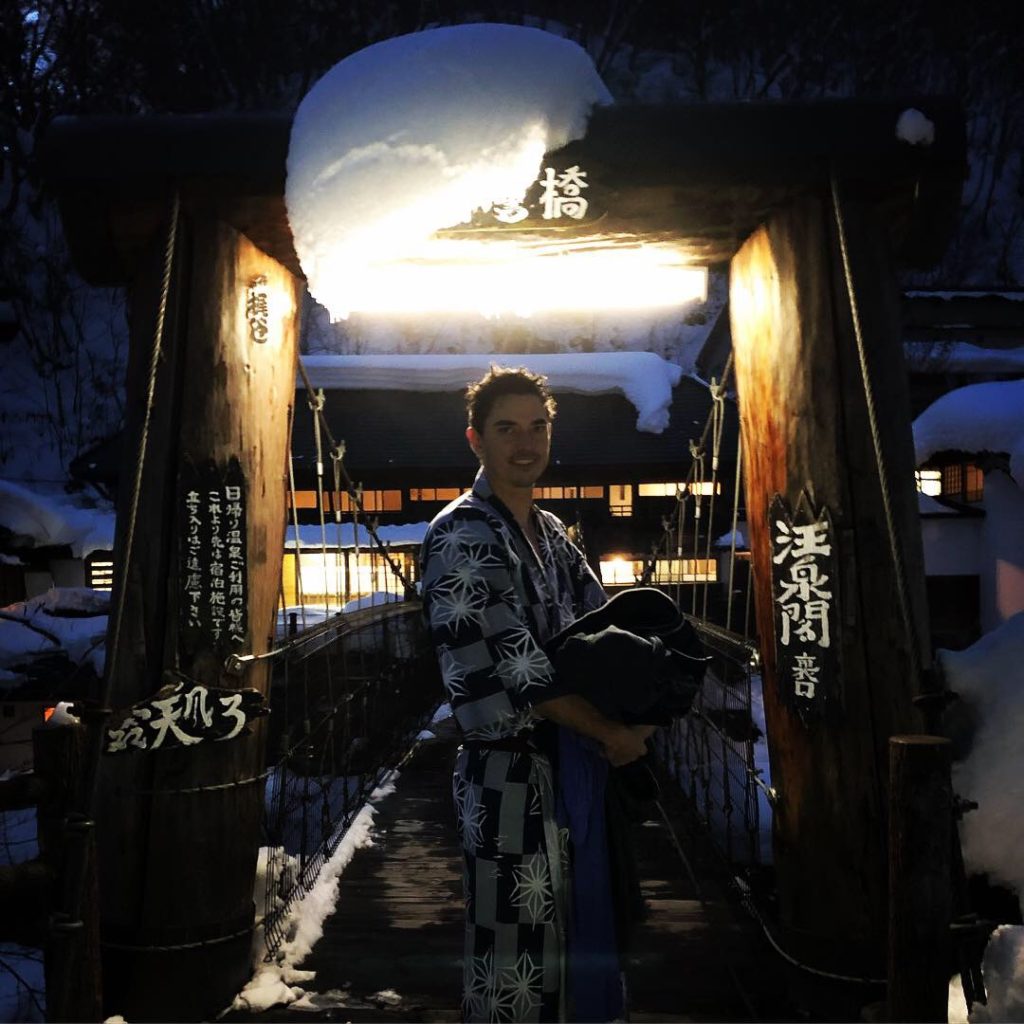
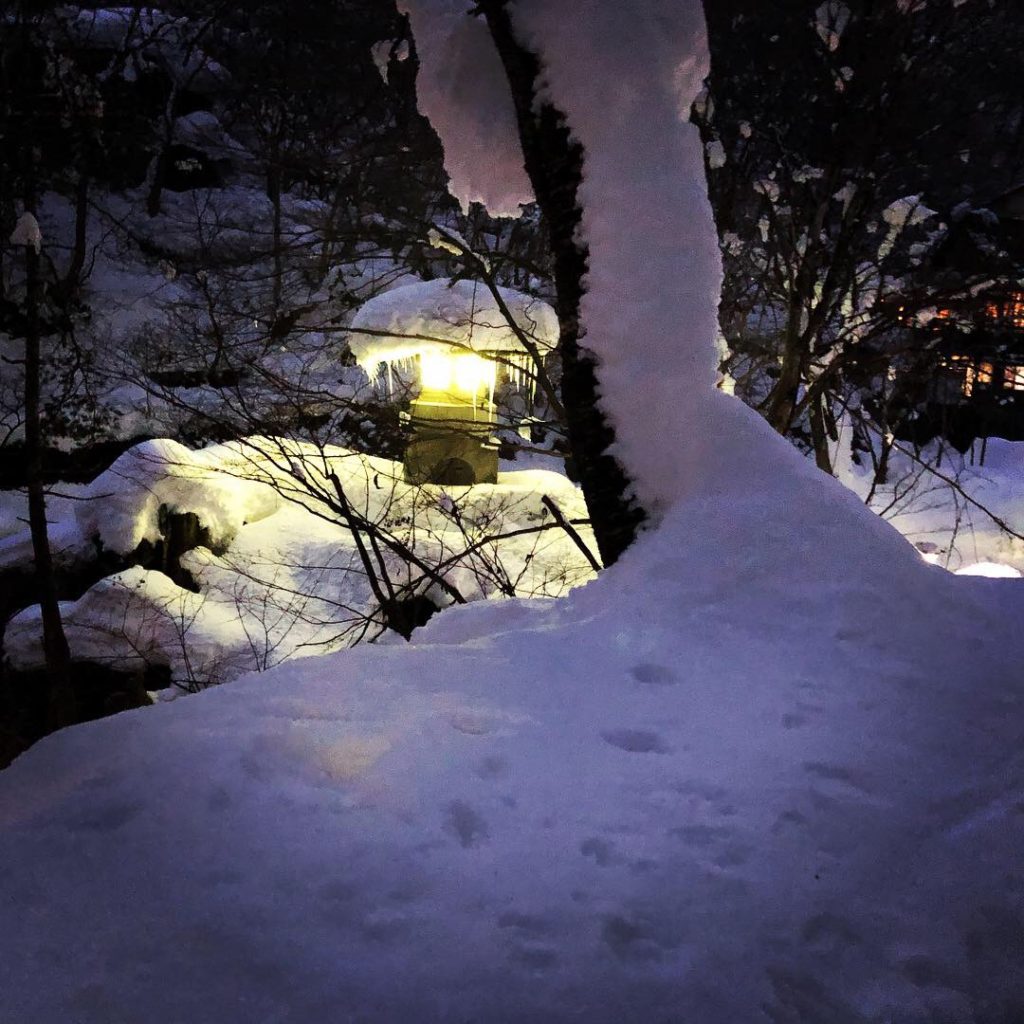
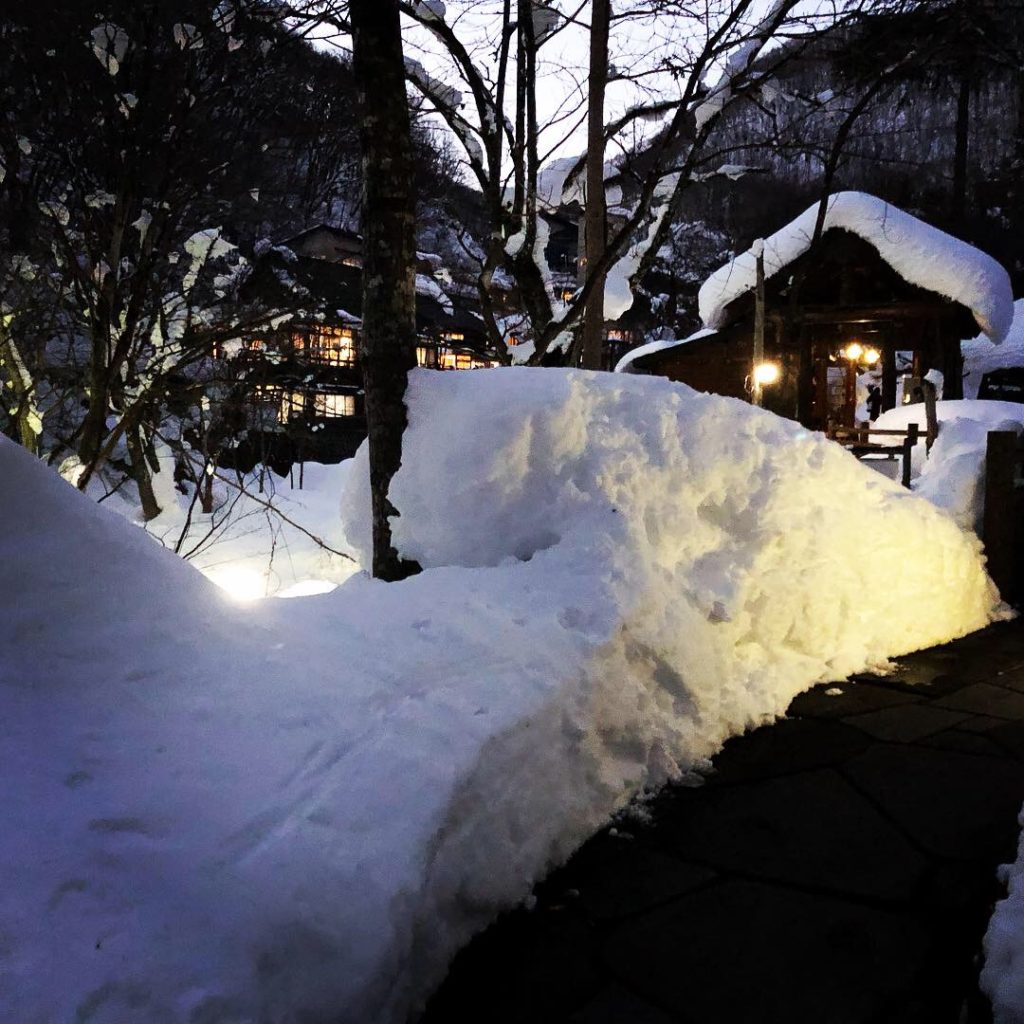
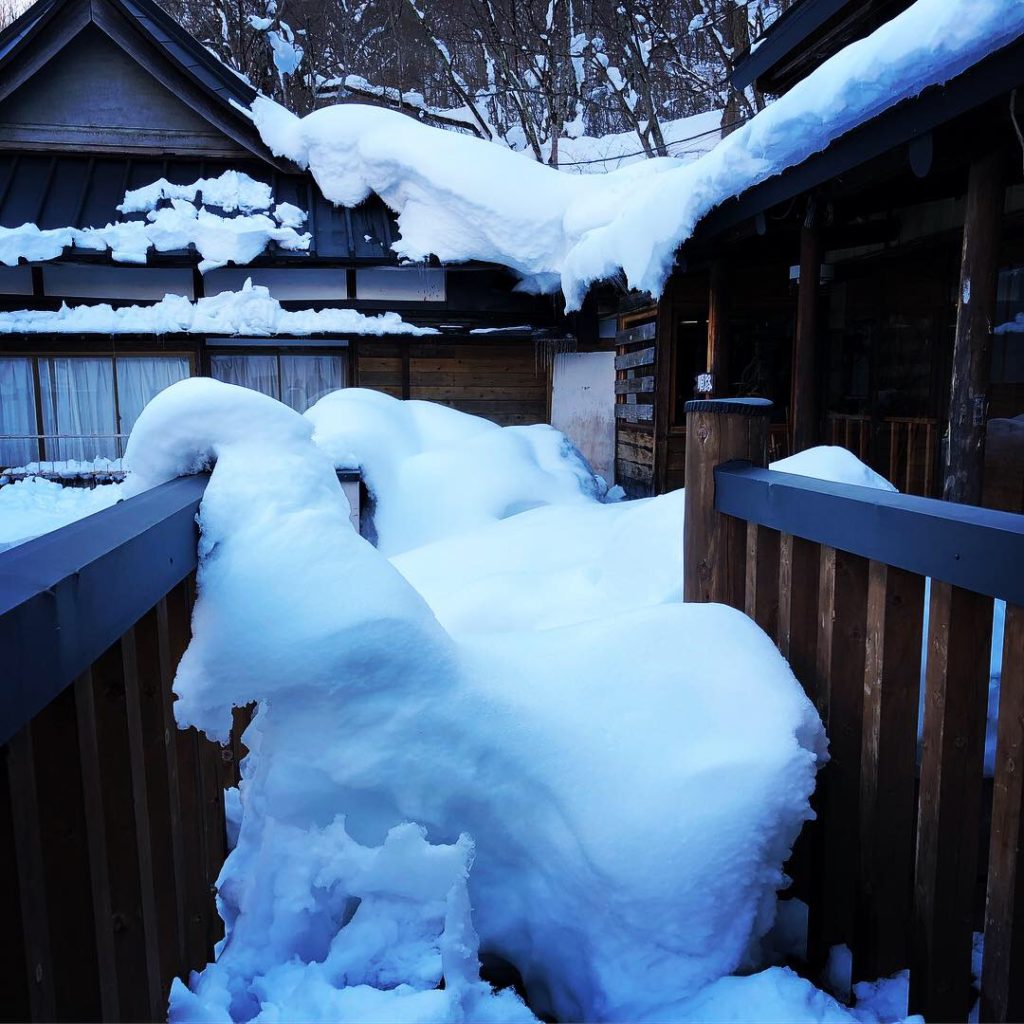
After dinner, most guests retired to their rooms, but seeing as the onsen baths were open 24 hours, we decided to brave the -6 chill and enjoy the serenity of having the pool to ourselves. Just incredible.
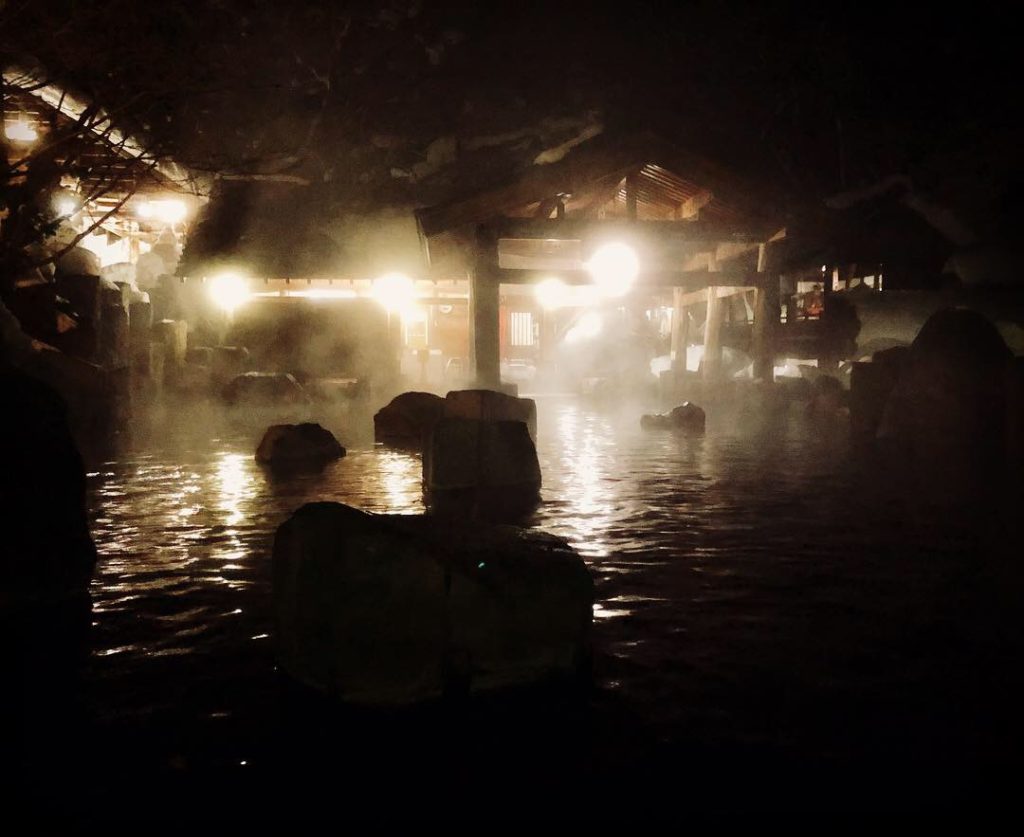
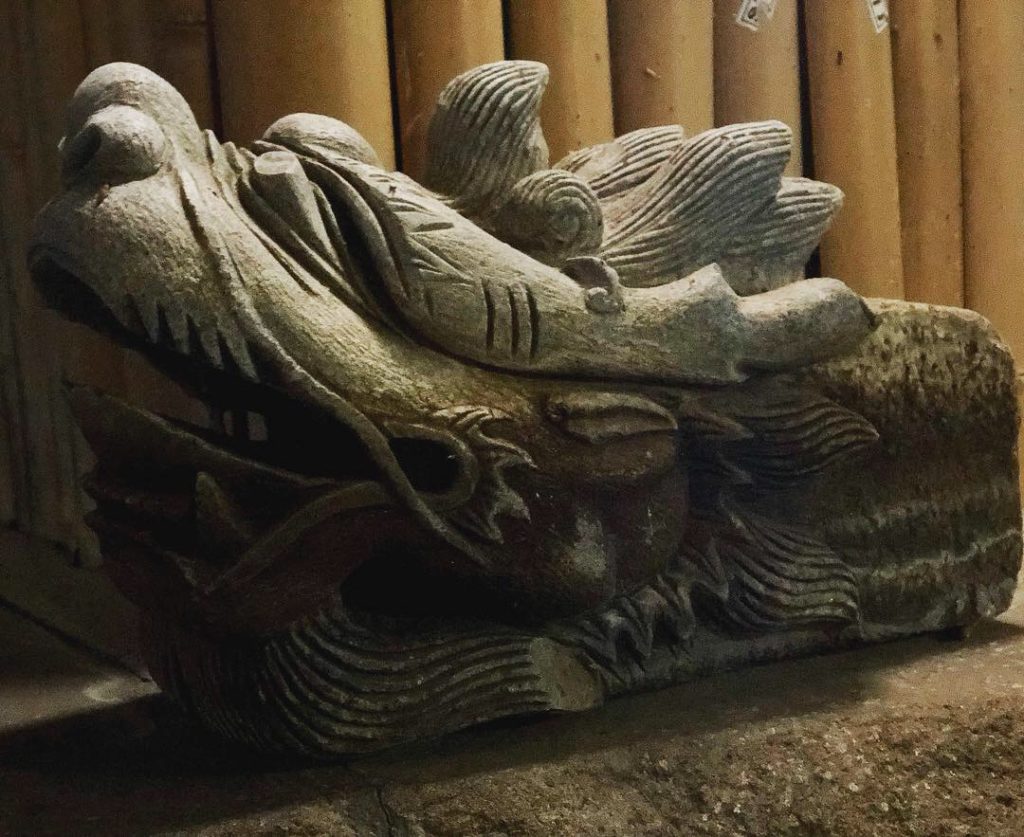
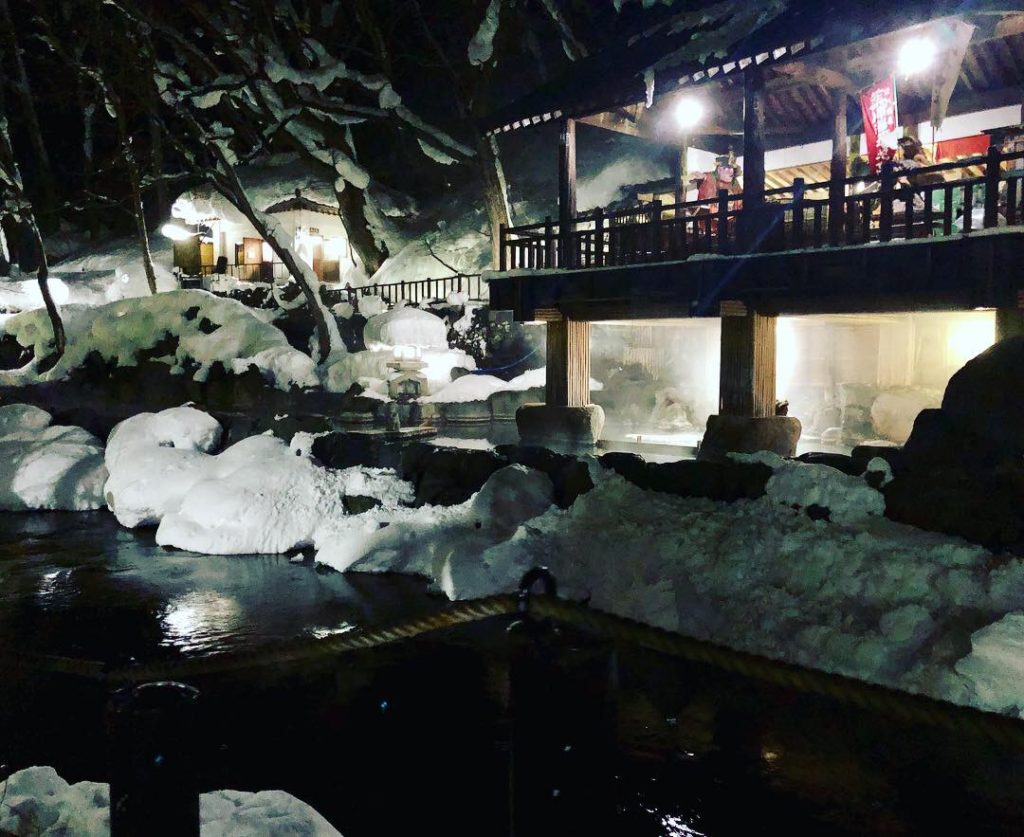
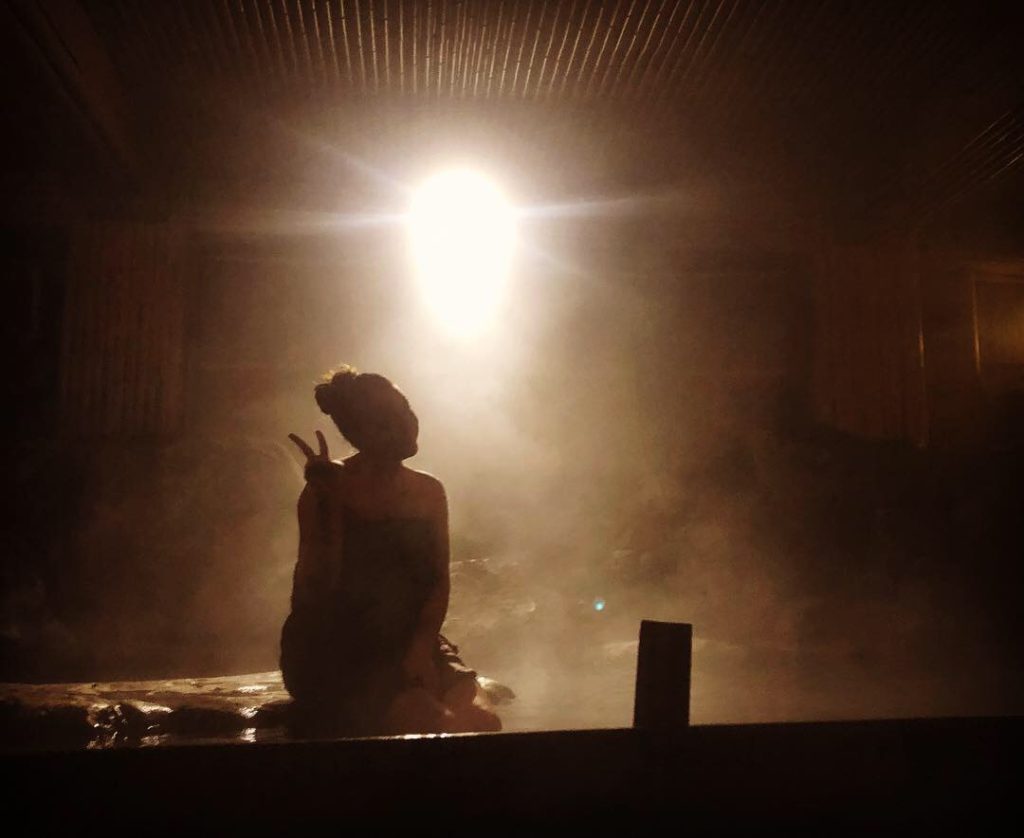
Onsen Etiquette
Let’s talk about getting naked in front of strangers for a moment, shall we? I mean, I’m pretty comfortable with my body, but I have to admit that the idea of stripping off at an onsen was fairly daunting at first.
But since travelling is about embracing new experiences, I decided to leave my comfort zone (and my clothes) behind and power through the awkwardness.
In the hotel onsens, men and women were separate. On my first visit, I took a deep breath, leaving my clothes in the communal changing area and sliding open the door to the bath house as quietly as I could to avoid drawing attention to myself. I forced myself to walk slowly, using all of my self-control not to sprint/ bomb into the bathing pool to prevent being seen in my birthday suit. (Very frowned upon; you need to wash before entering!) I reminded myself that no one here knew me and soon found myself drifting off to sleep in the steamy water.
Takaragawa was a little different, with three mixed pools and one separate pool for ladies only. Here, men were nude, save a small modesty towel, and ladies had the option to wear a yuami-gi, a rather fetching potato-sack-like bathing garment. Which, of course, I did during the day. As the hours passed, I realised that no one batted an eyelid at the nakedness, with many locals strutting their stuff in the icy winter wind. Brrr!
With no one around at night, I felt a little braver and ditched my potato sack. It felt so liberating to be free, without the usual inhibitions of everyday life. The hot water soothed my muscles, aching from all our Tokyo sightseeing, and that night, I slept like a baby.
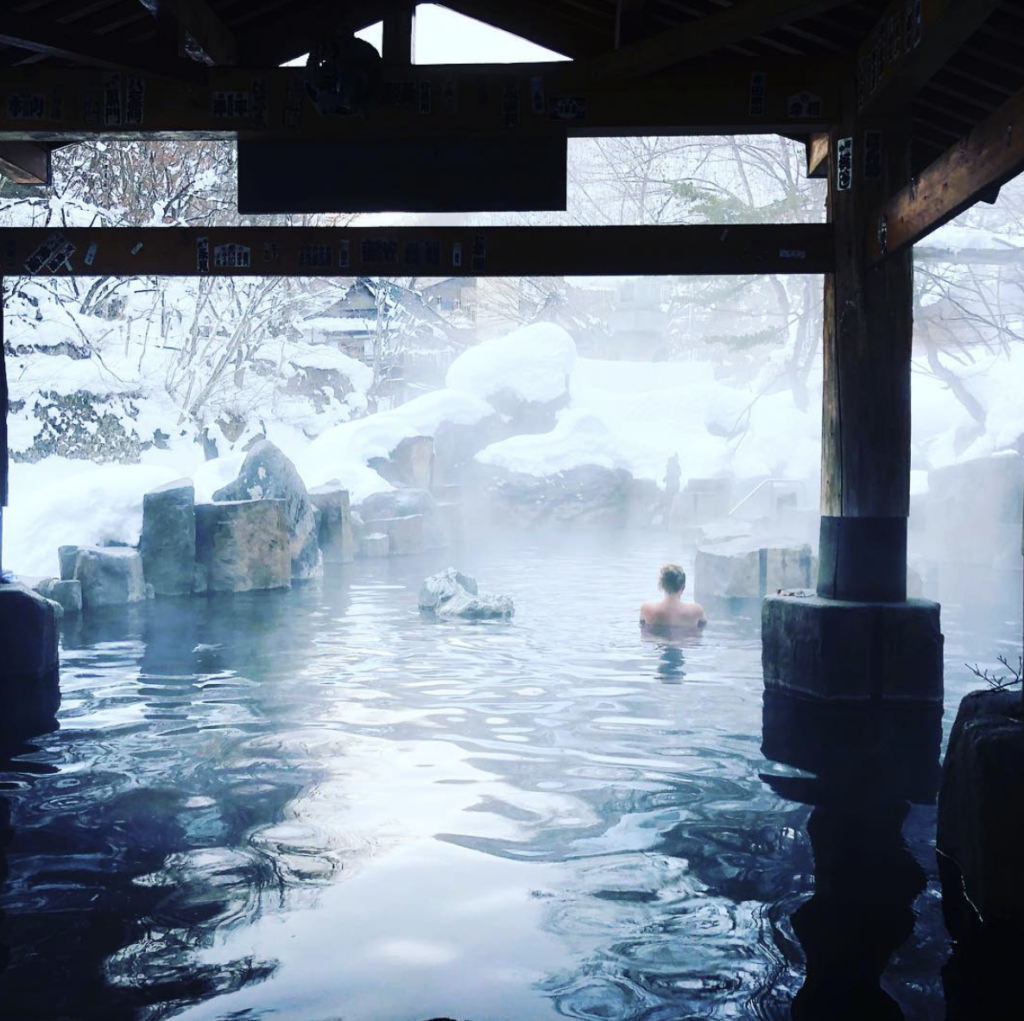
Kyoto
Our next stop was Kyoto, and I was pretty excited about the prospect of seeing Geishas, in real life. We checked into RIHGA Royal Hotel Kyoto and decided to visit their Tepanyaki restaurant: Teppan-yaki AOI
We opted for the “Omi” beef degustation, keen to try one of Japan’s top three brands of Wagyu, and it was so delicious! Dramatically prepared by a chef in front of us, our food was lovingly sizzled, oiled, chopped and seasoned; a dazzling performance in the medium of food.
The beef melted in our mouths, and the wine was spectacular…The only part I was dreading was the abalone. (Sea snail), which seriously freaked me out. I didn’t want to be rude, so I gave it a red-hot go, and ate it all, but I can’t say I’d order it again.
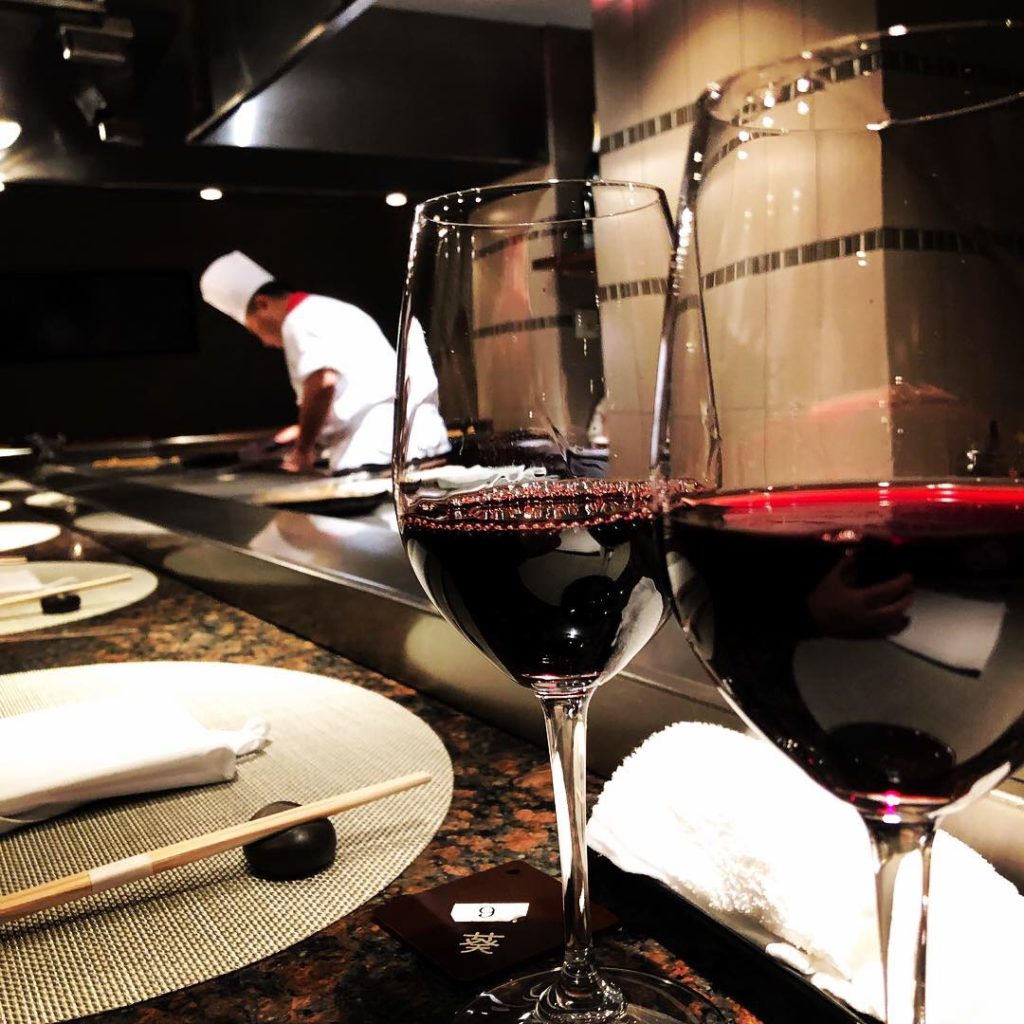
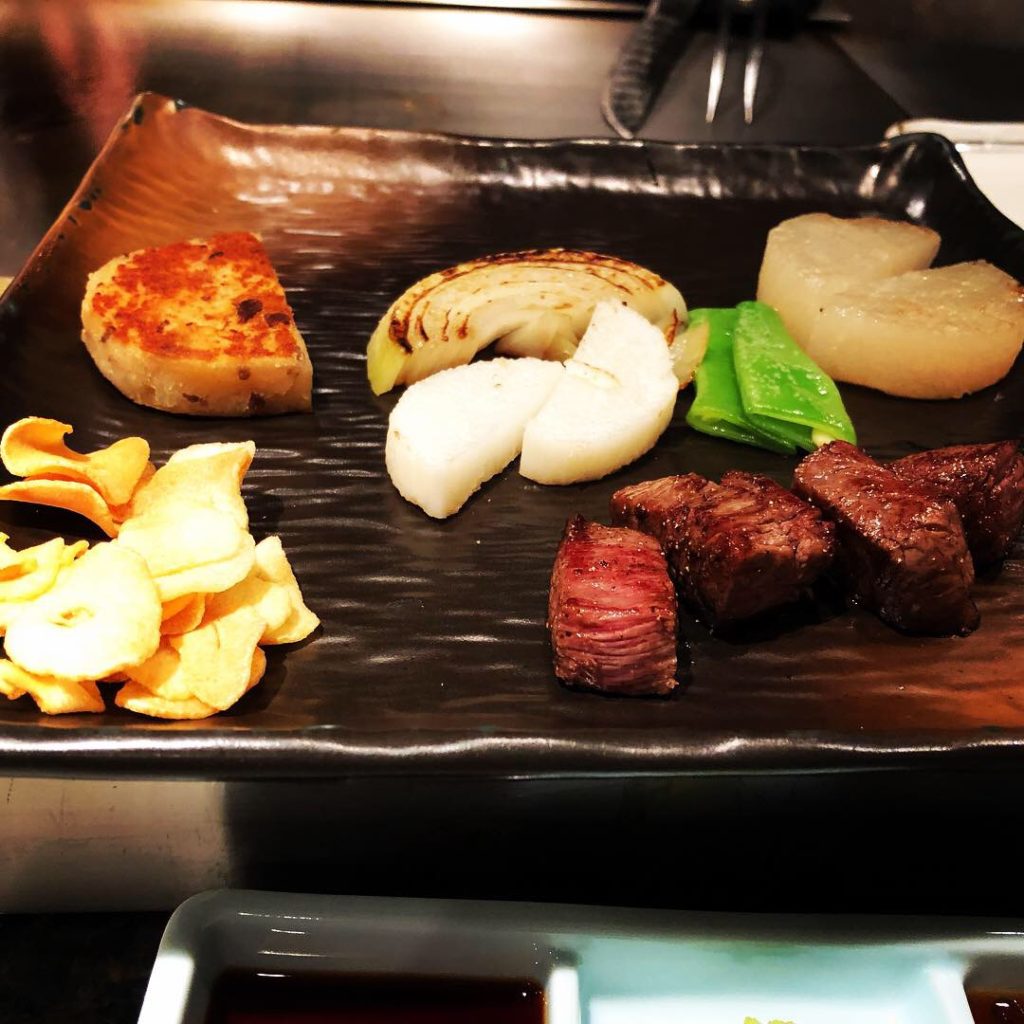
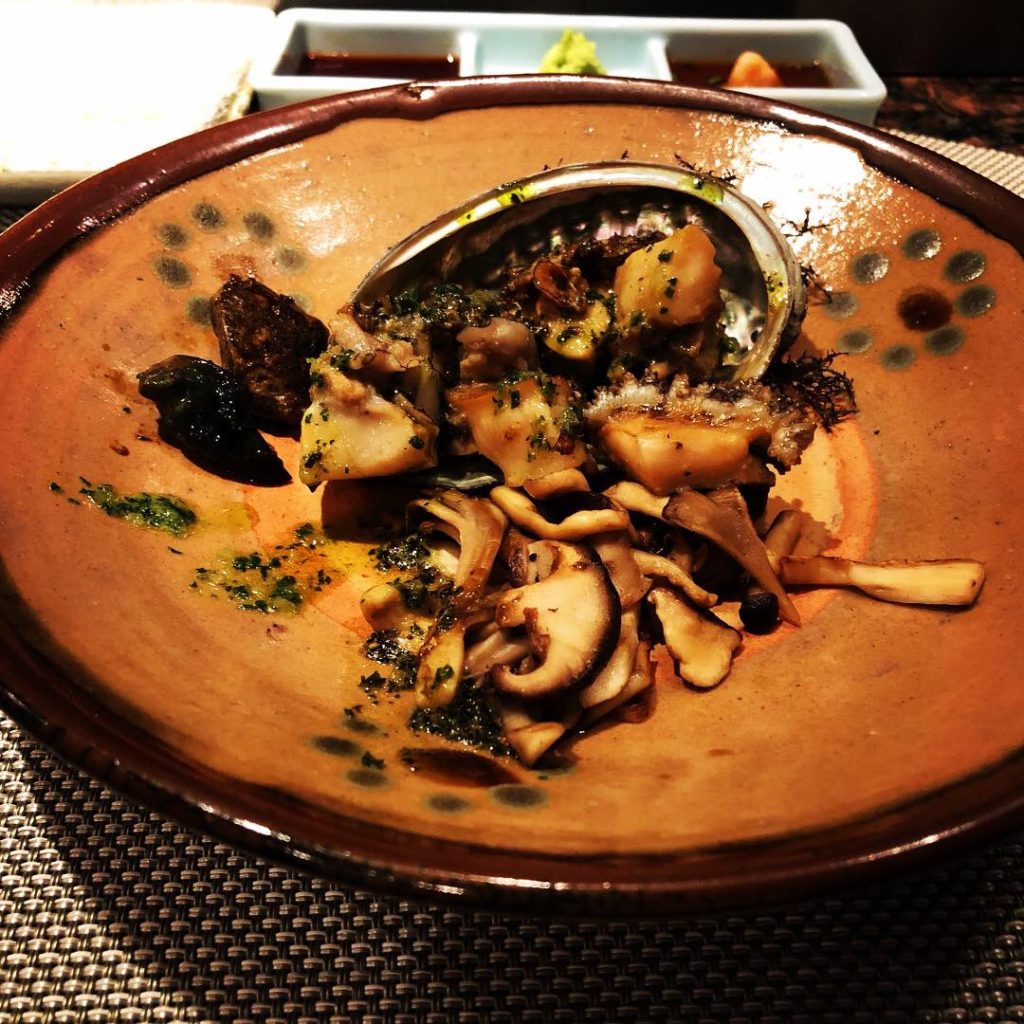
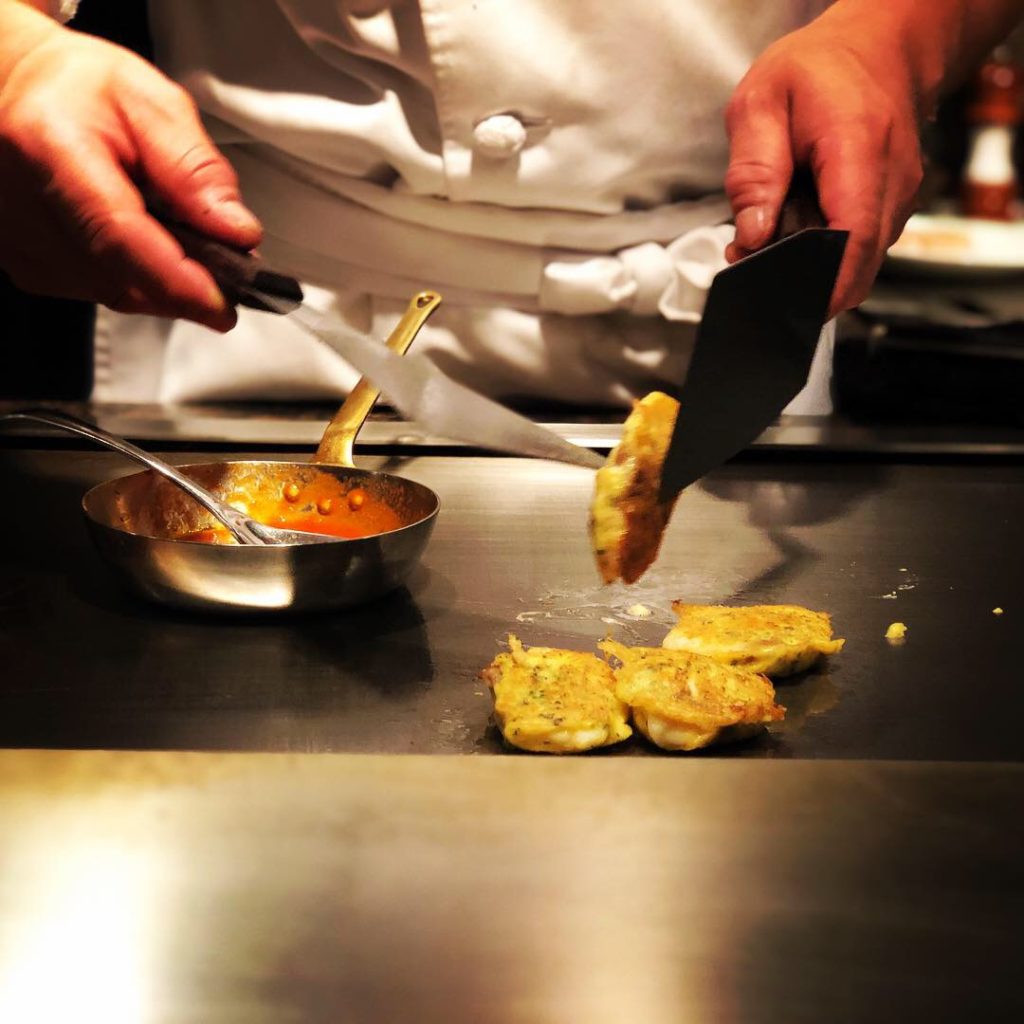
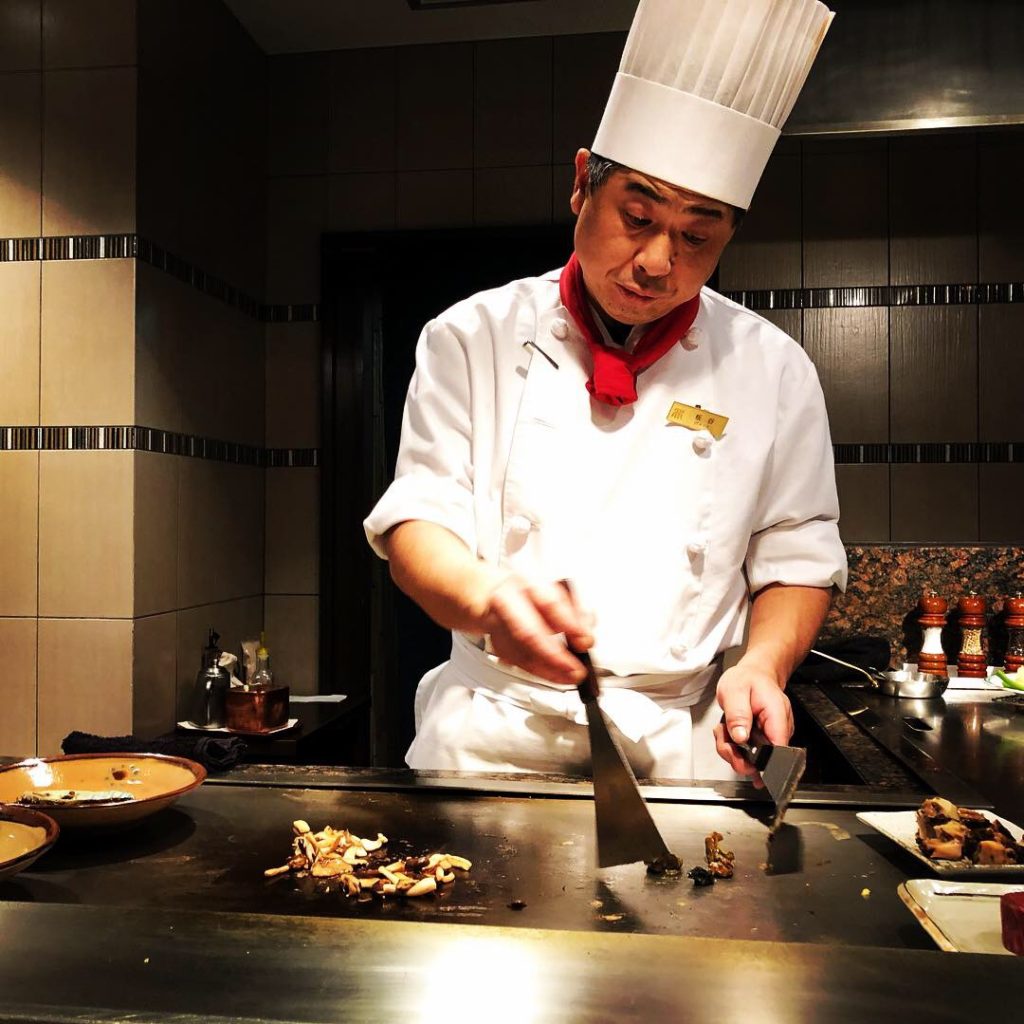

Day 11: Nishiki Market and Yasaka Shrine
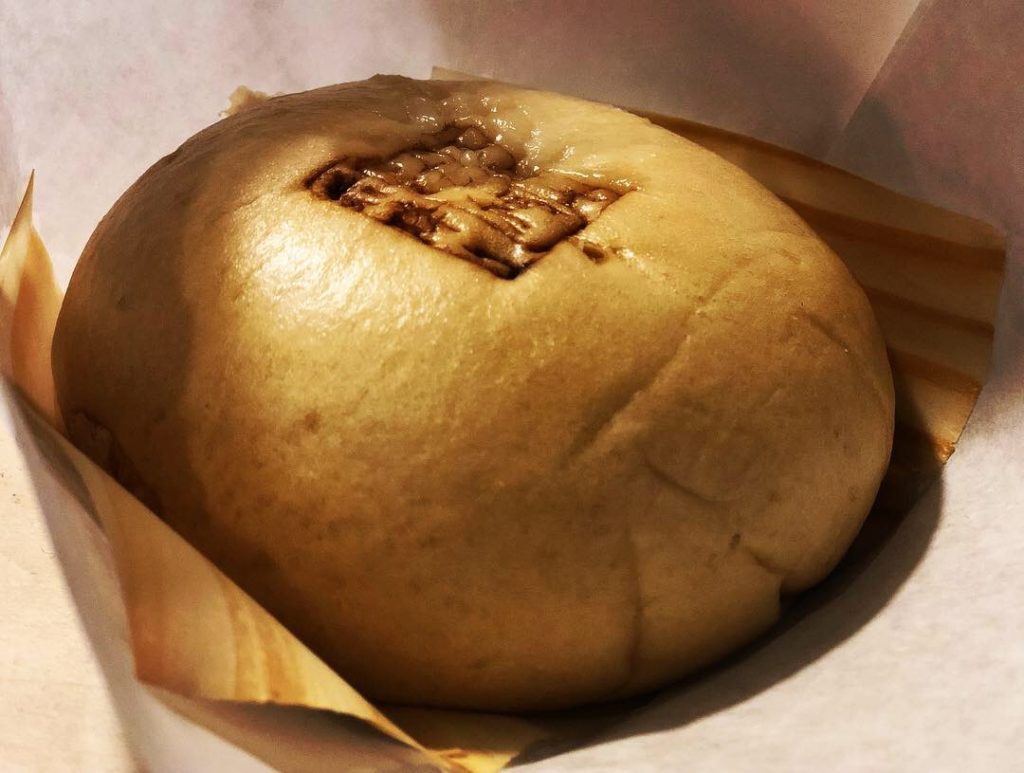
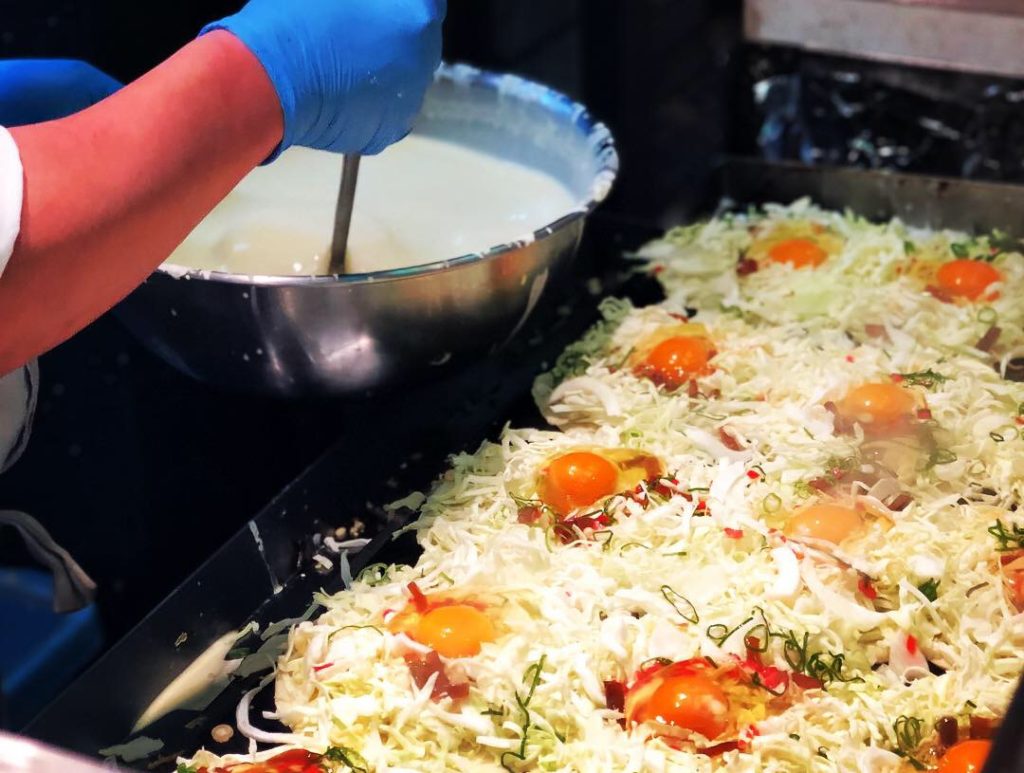
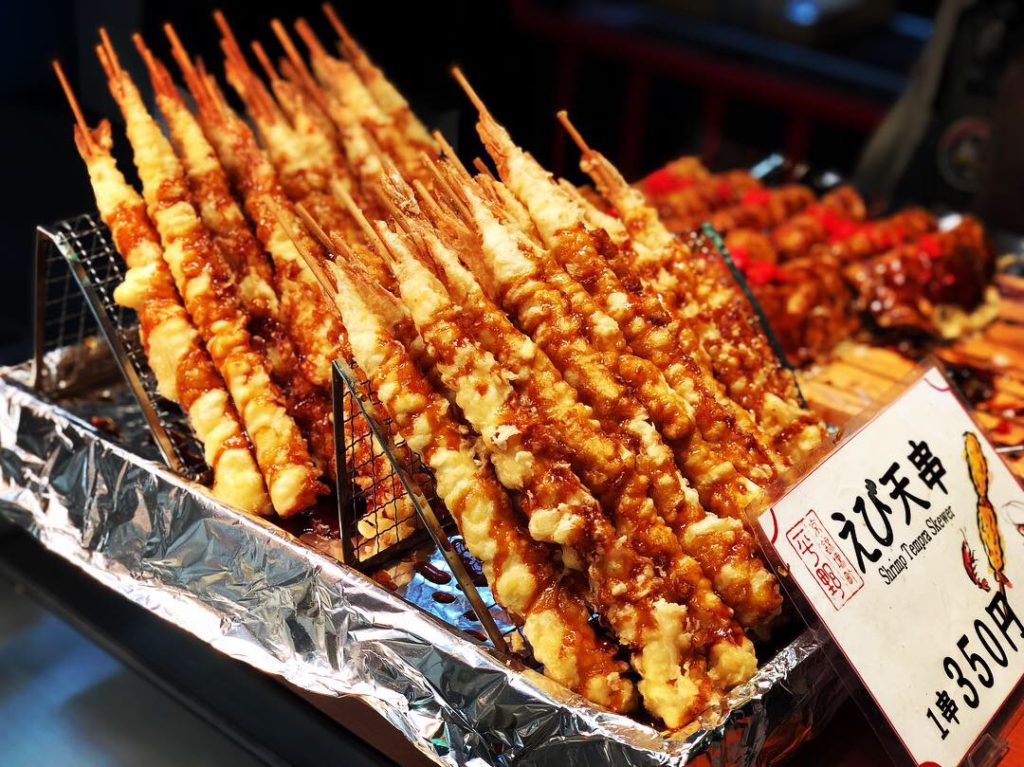
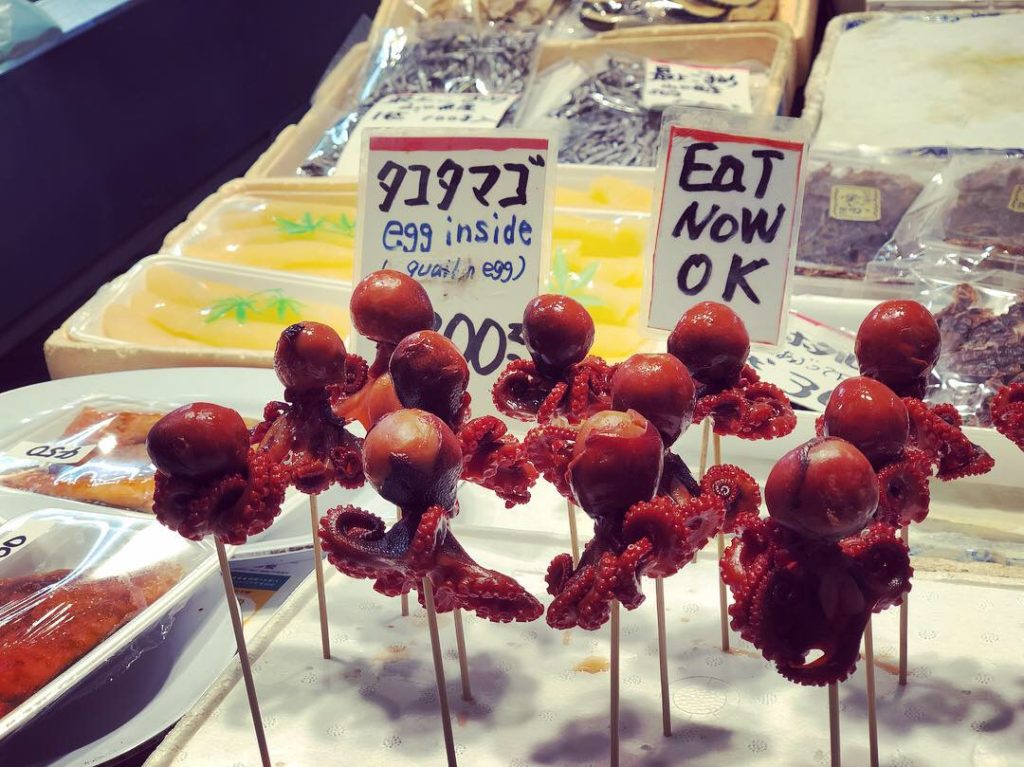
We spent a wonderful morning eating our way along the tightly packed lanes of Nishiki Food Market! Steamed pork buns, tempura prawn, quail-egg stuffed octopus and takoyaki (Octopus balls) were the order of the day.
We ducked into the beautiful tea, ink and material shops, before stopping at Nikishi Tenmangu shrine, to admire the lanterns hanging from the Tori gate.
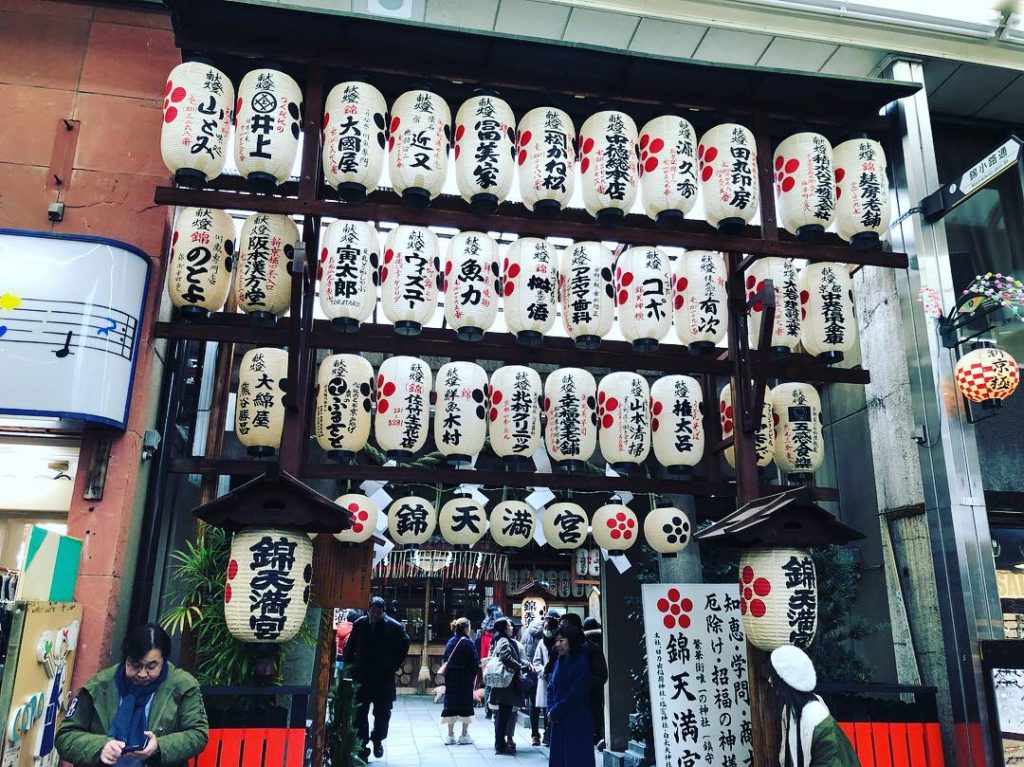
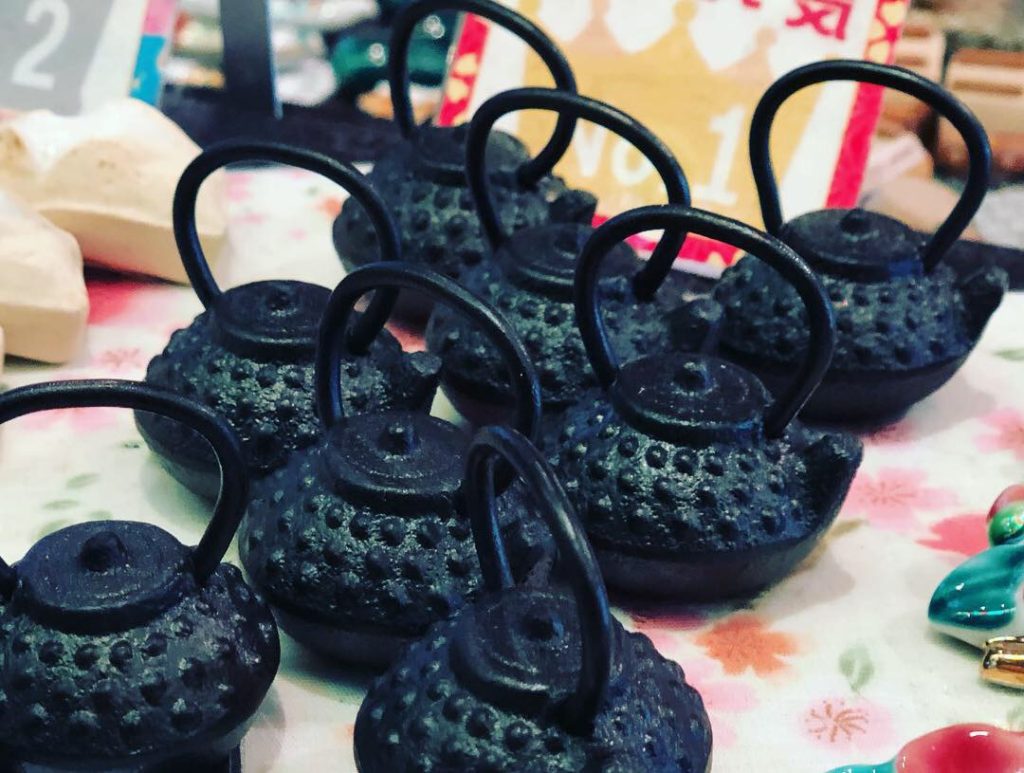
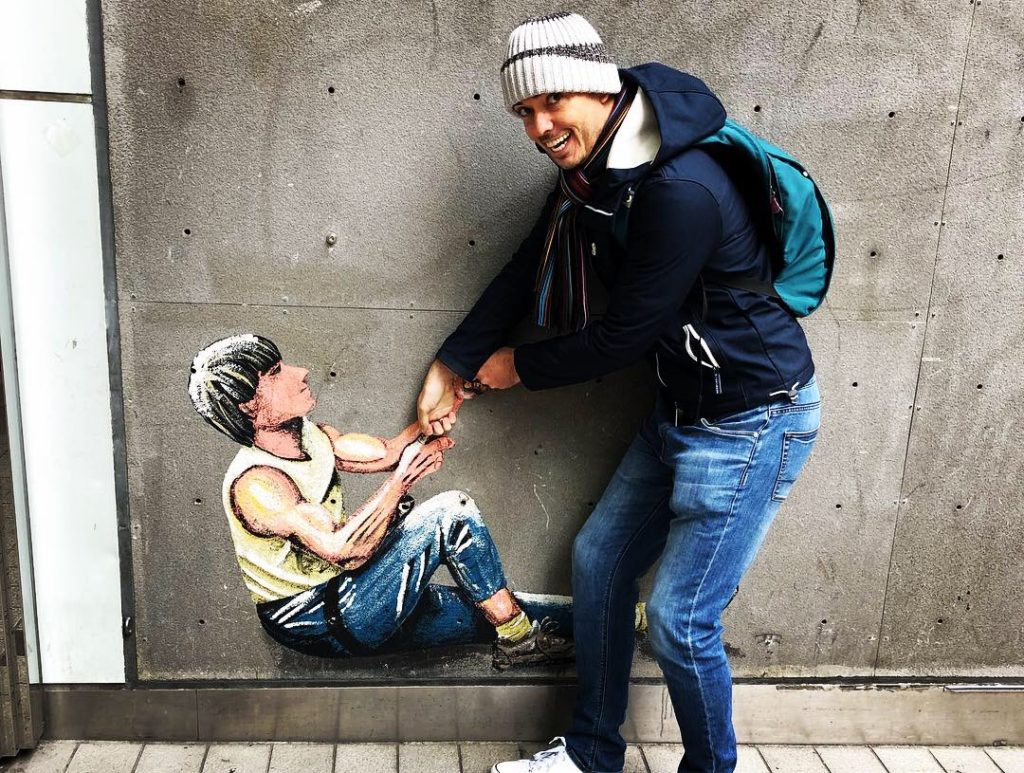
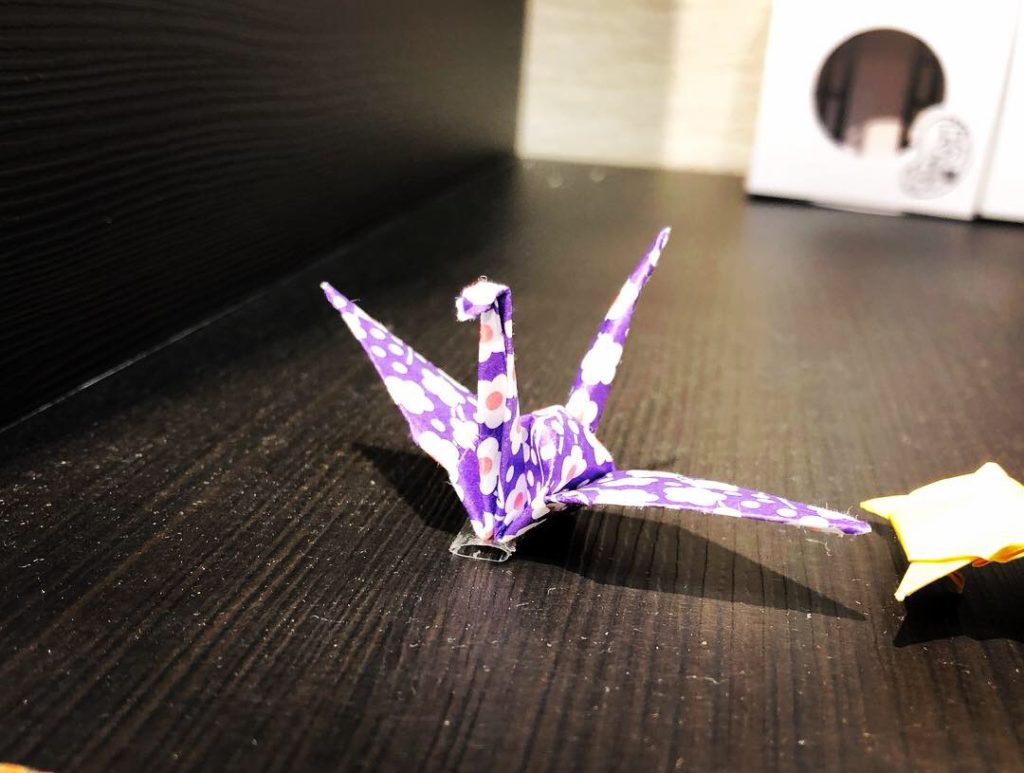
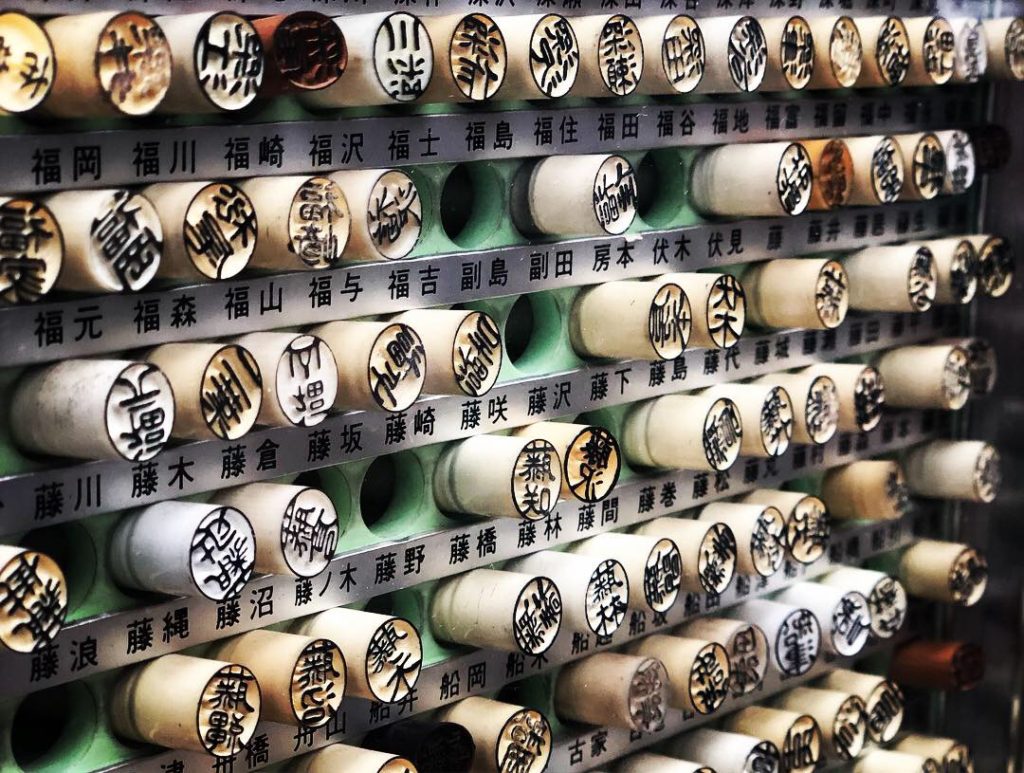

Enjoying the warm winter sun, we headed to Gion, the district famous for Geisha. We wandered along the river, waving to the heron that watched us pass, and eventually found ourselves at the bustling Yasaka Shrine.
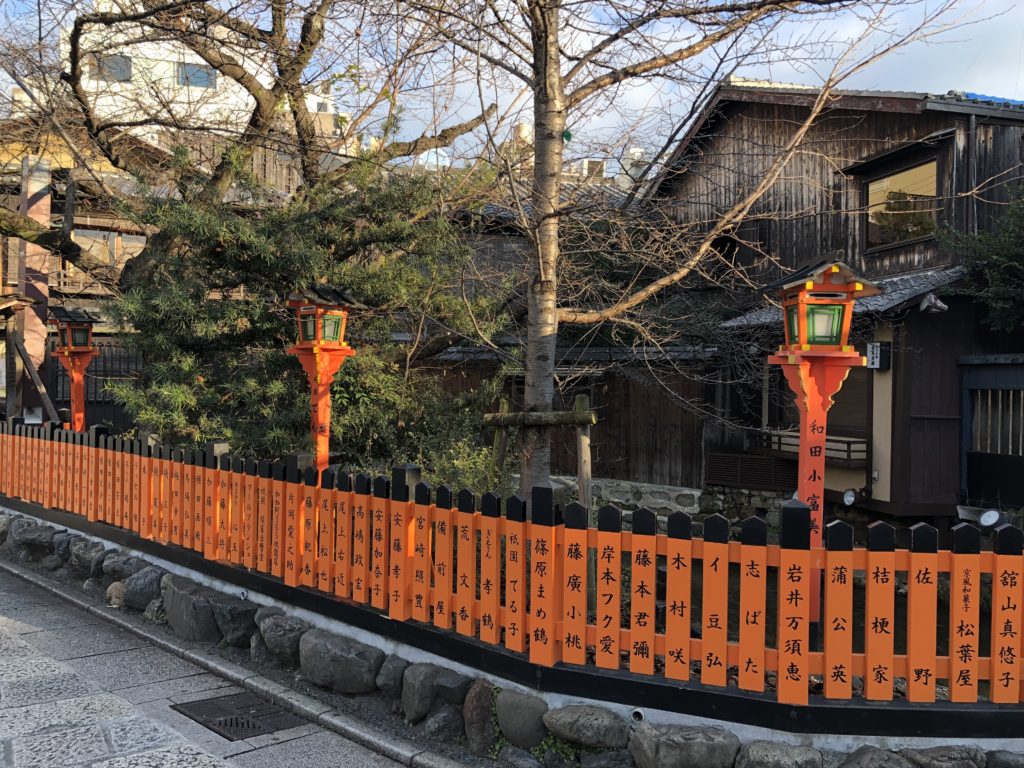
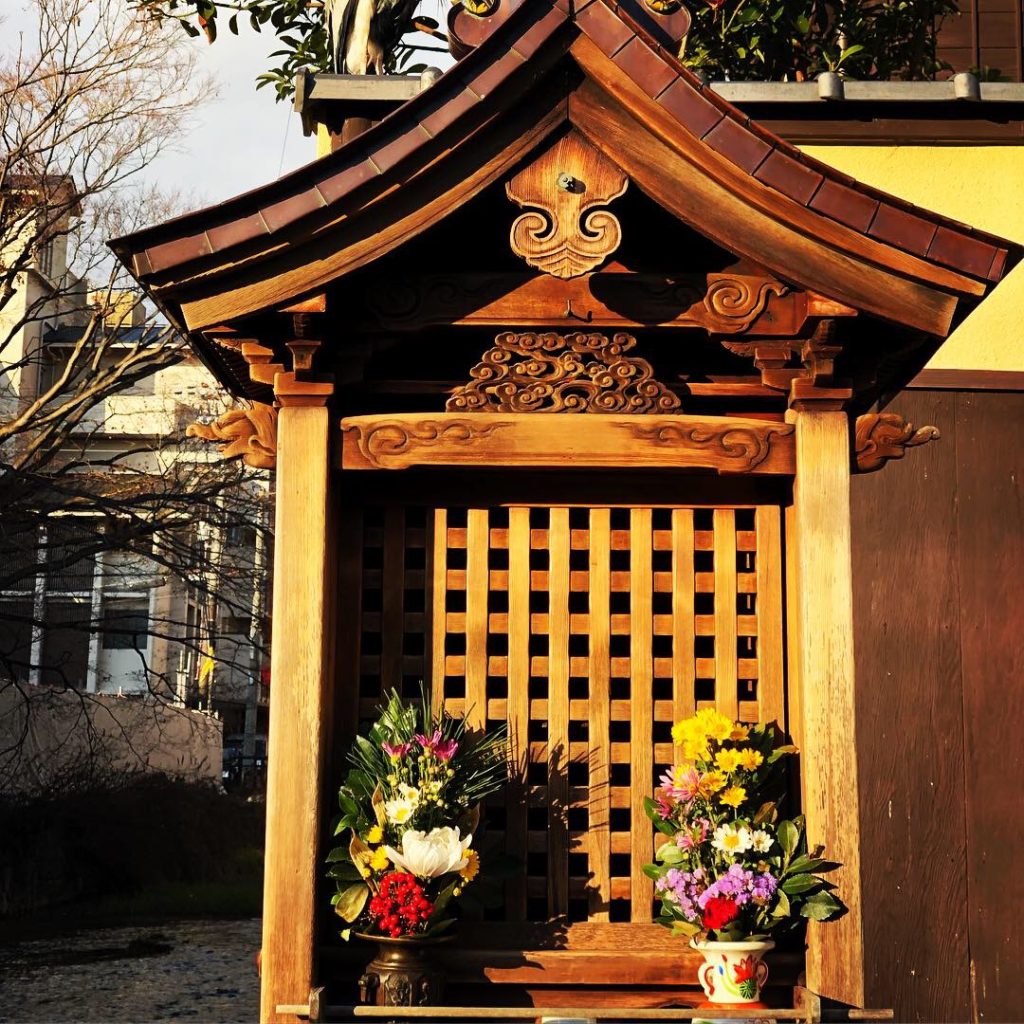
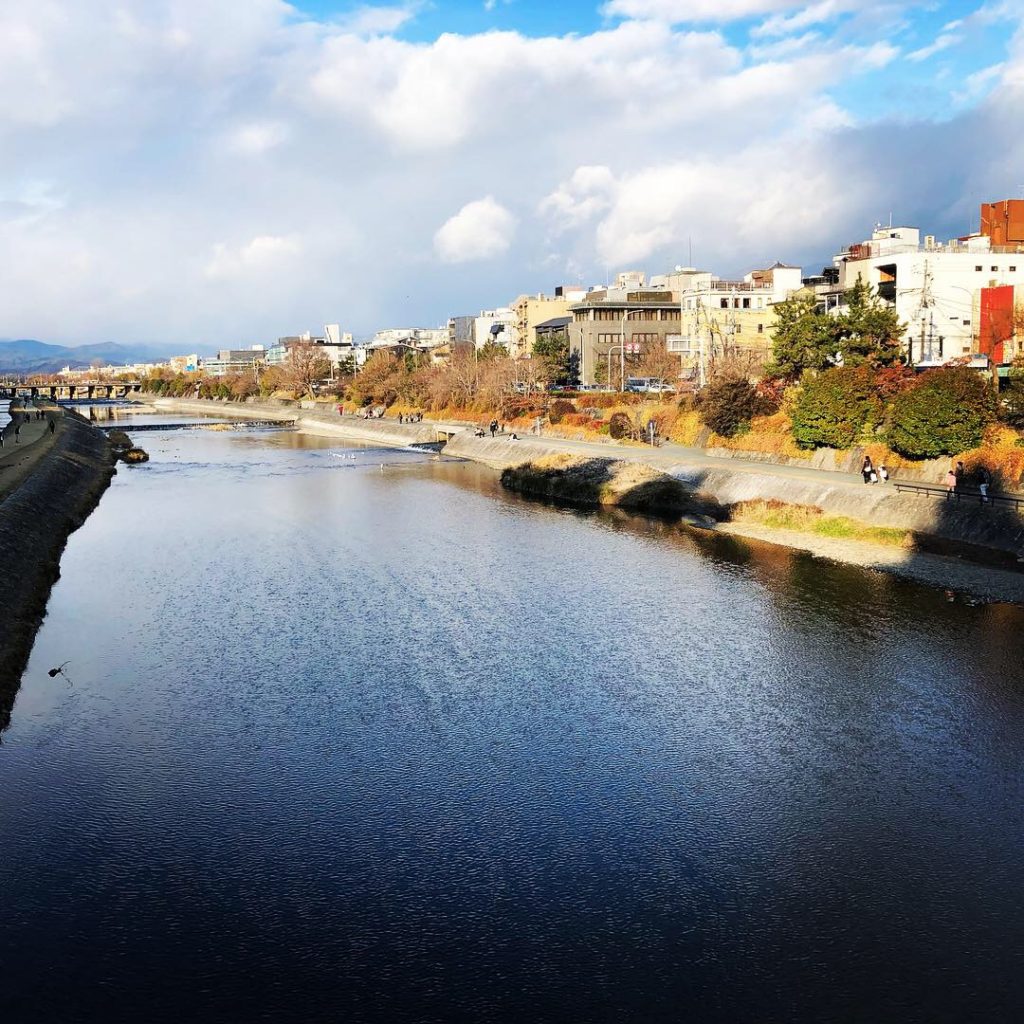

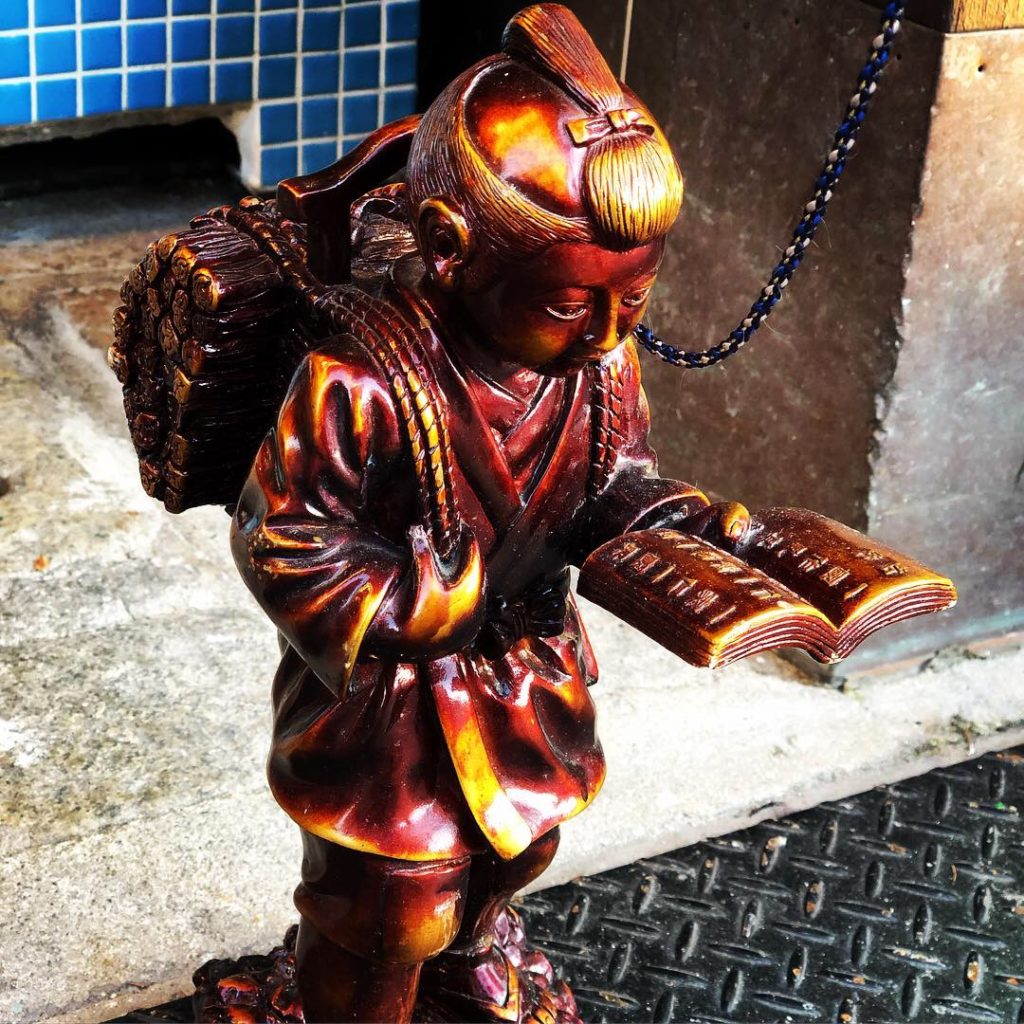
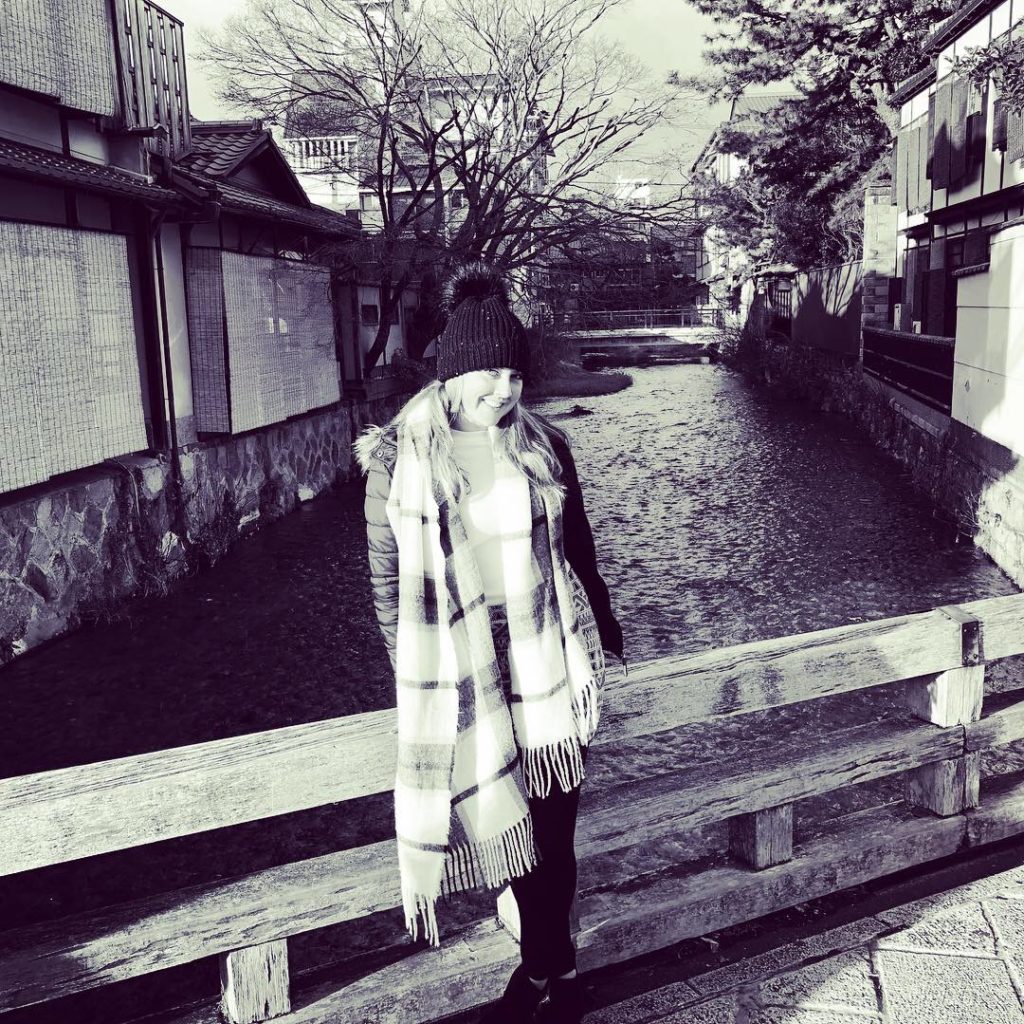
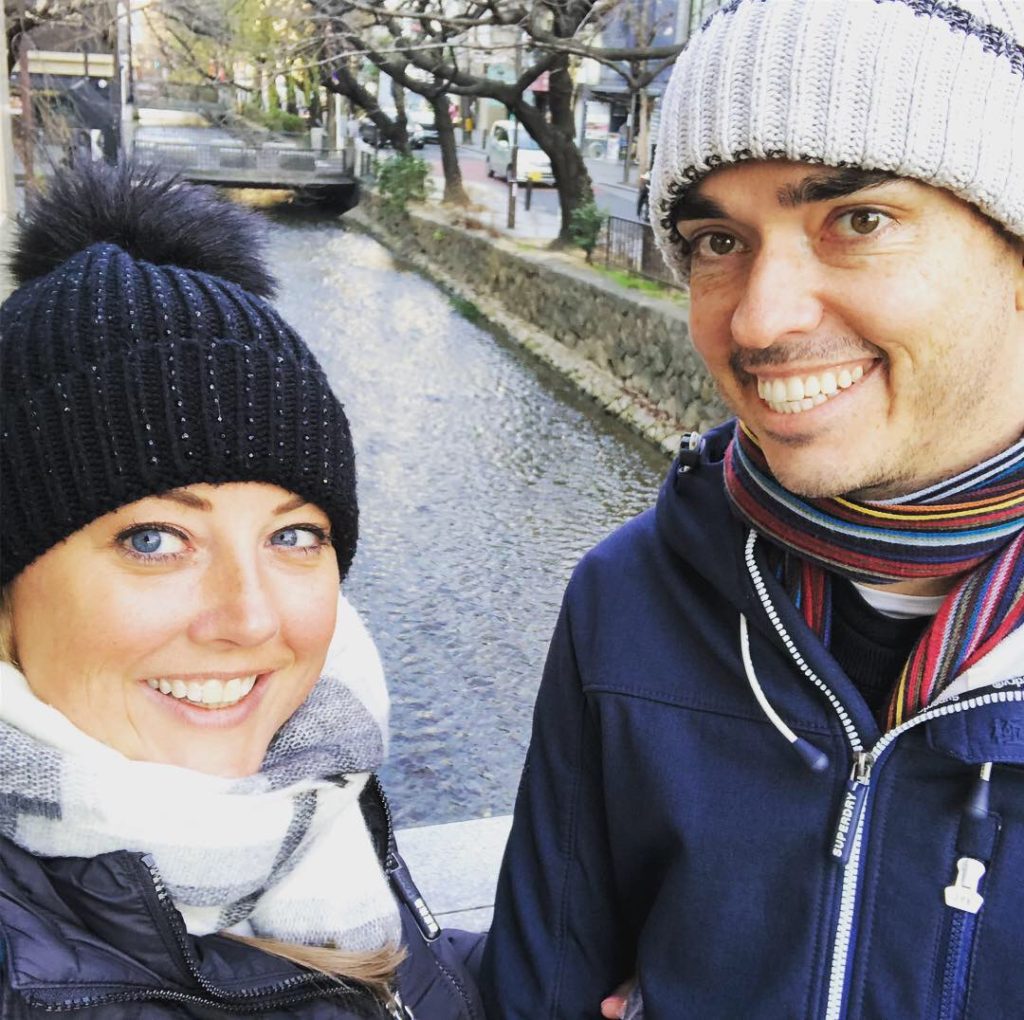
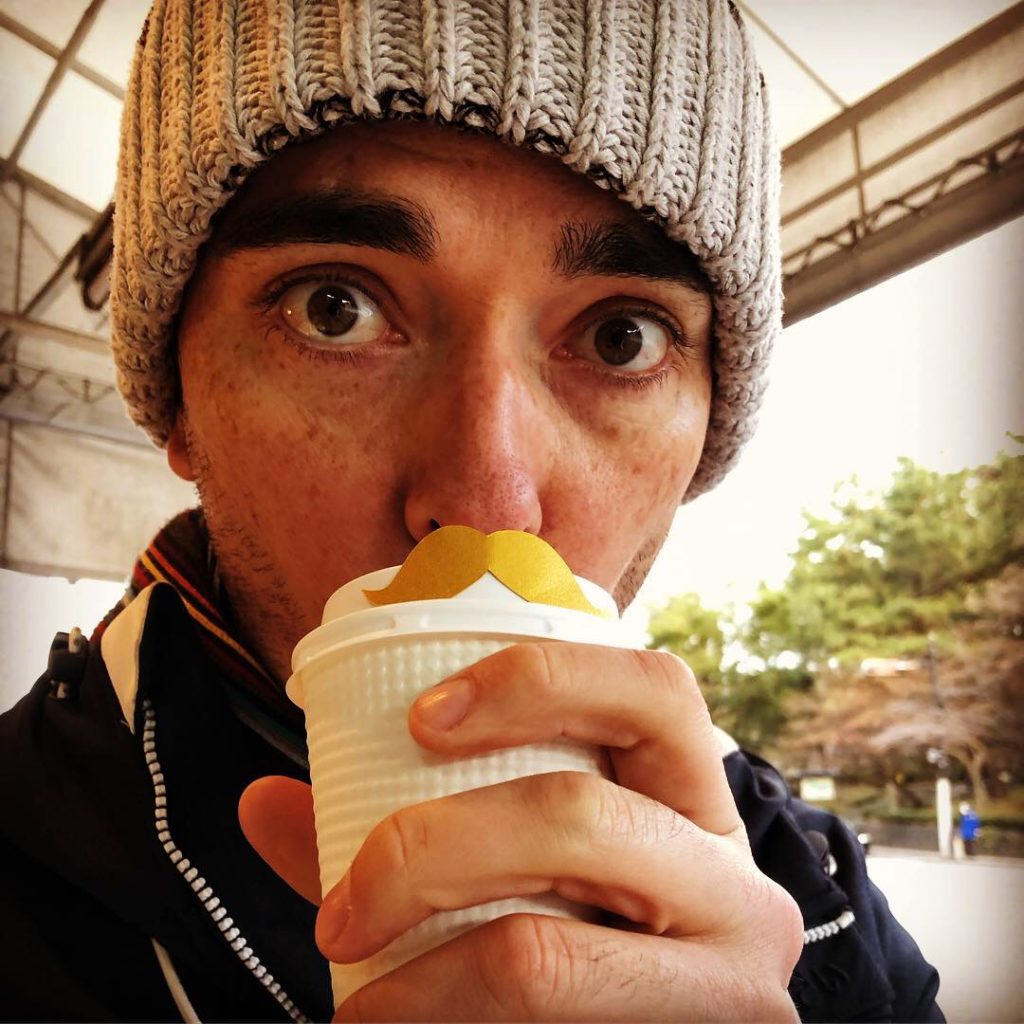
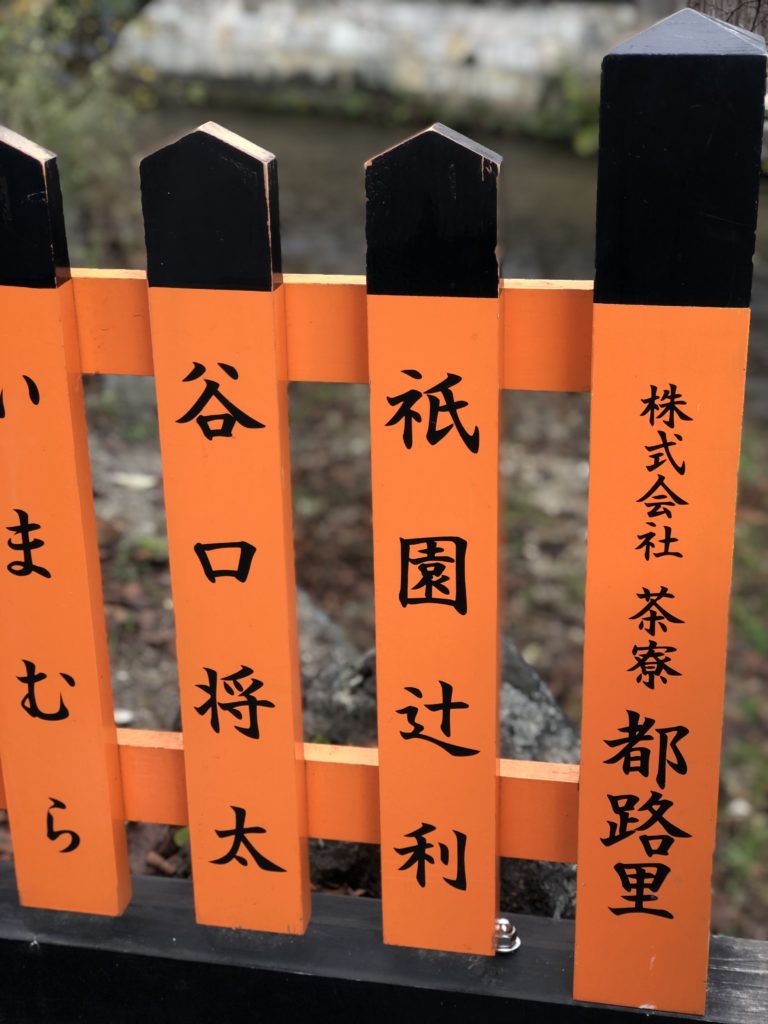
People thronged among the food stands and blessing stalls, creating a real sense of community here. We watched as locals made offerings to their gods by bowing twice, clapping twice and bowing once more. Later, we discovered that clapping is a way to let the gods know that you are there and that they should pay attention to your prayers. Truly lovely to watch.
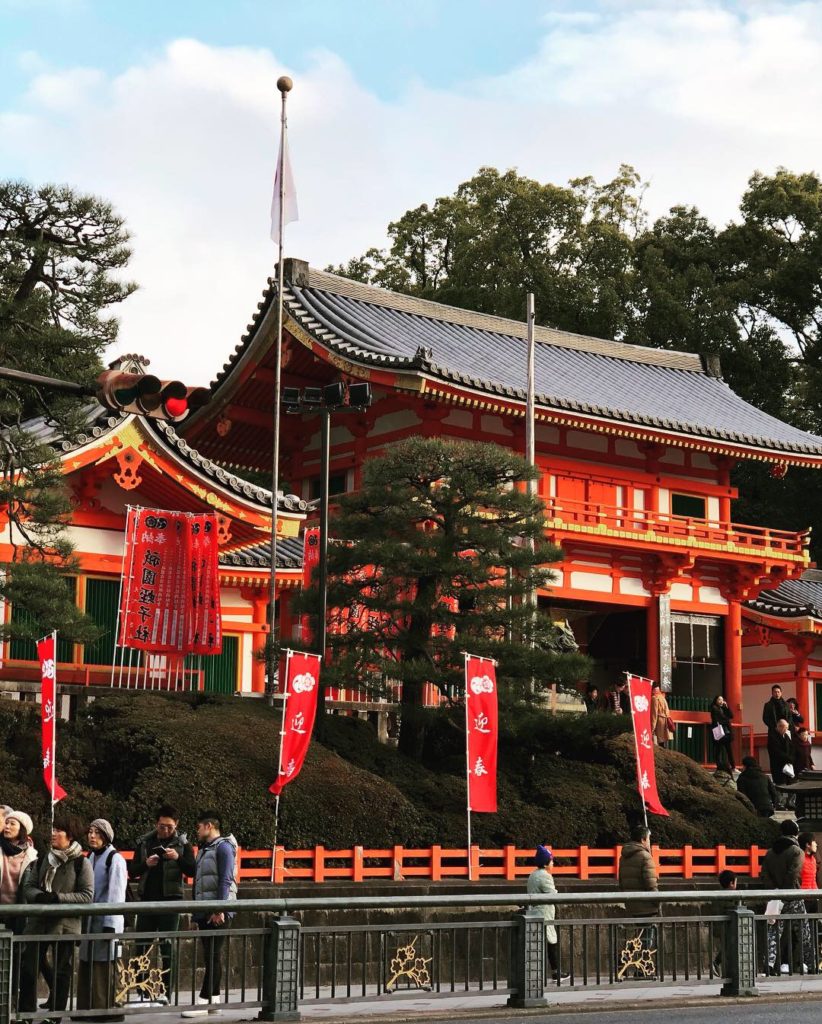
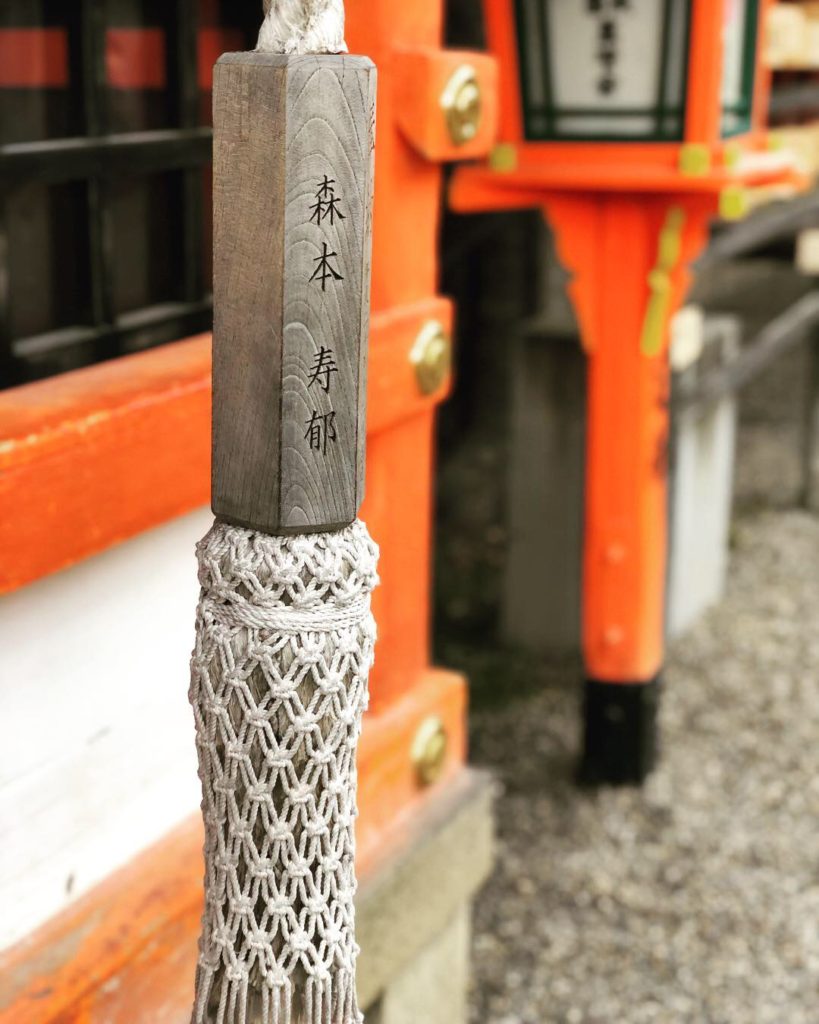
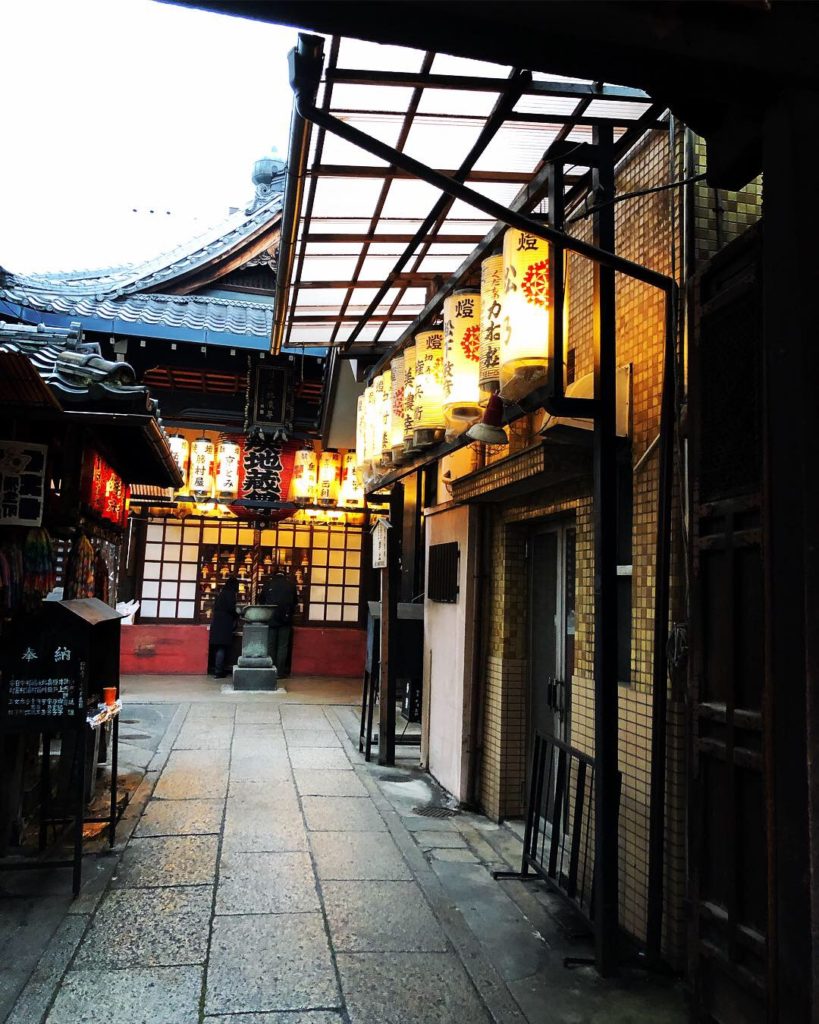
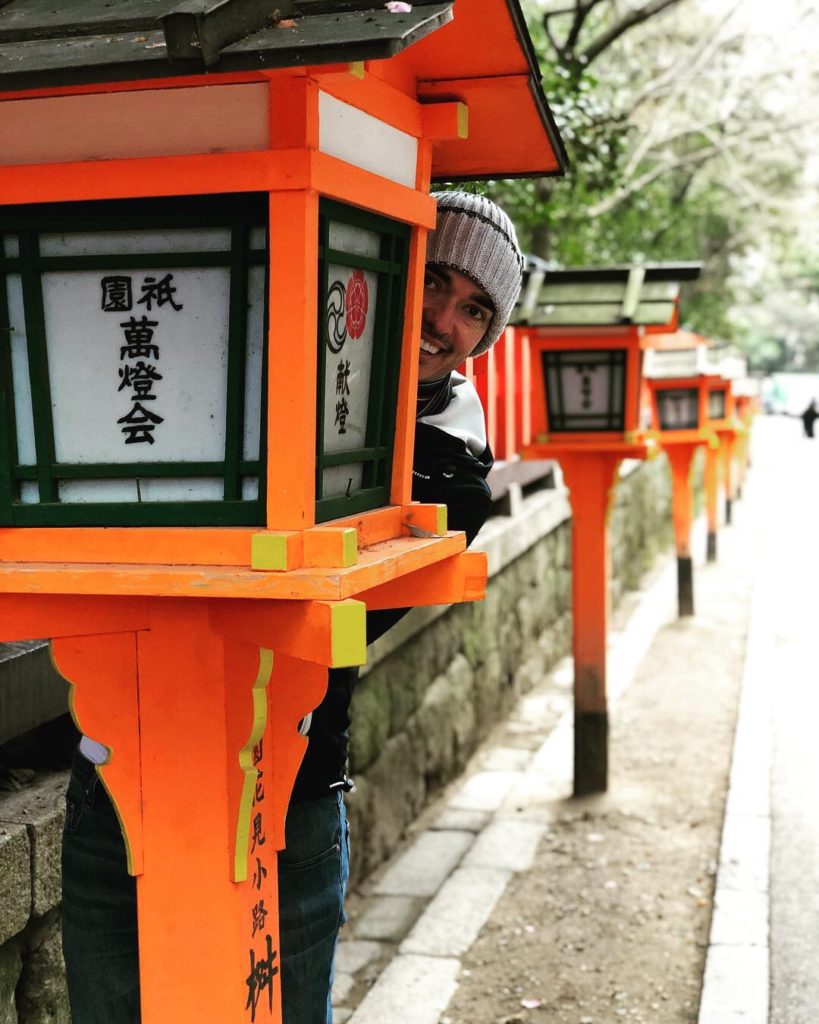

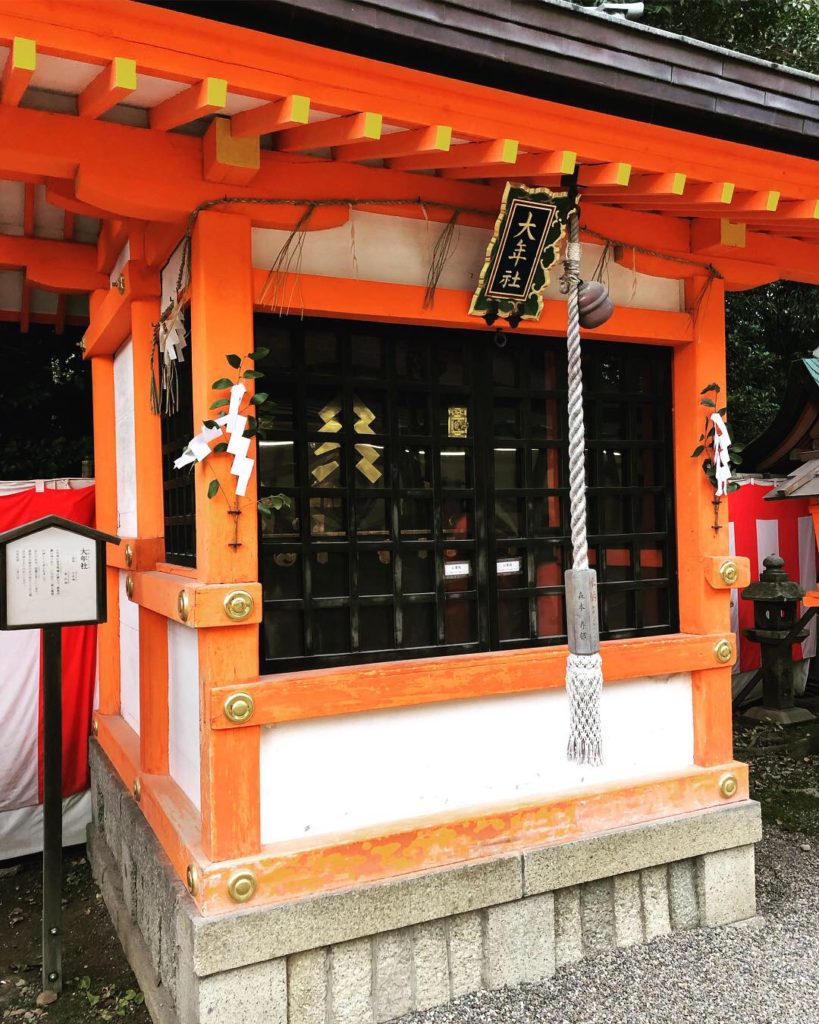
Okonomiyaki
We’d been desperate to try Okonomiyaki (Japanese savoury pancake) since we arrived, so we hunted around until we found the highly-rated Kyo Chabana. Tucked away in what looks like a quiet little townhouse, we slid onto the bar stools and watched the cute little chef whip up these delights in front of us whilst chatting away to his regulars in Japanese. Of course, I had the extra cheesy one! So. Damn. Good!
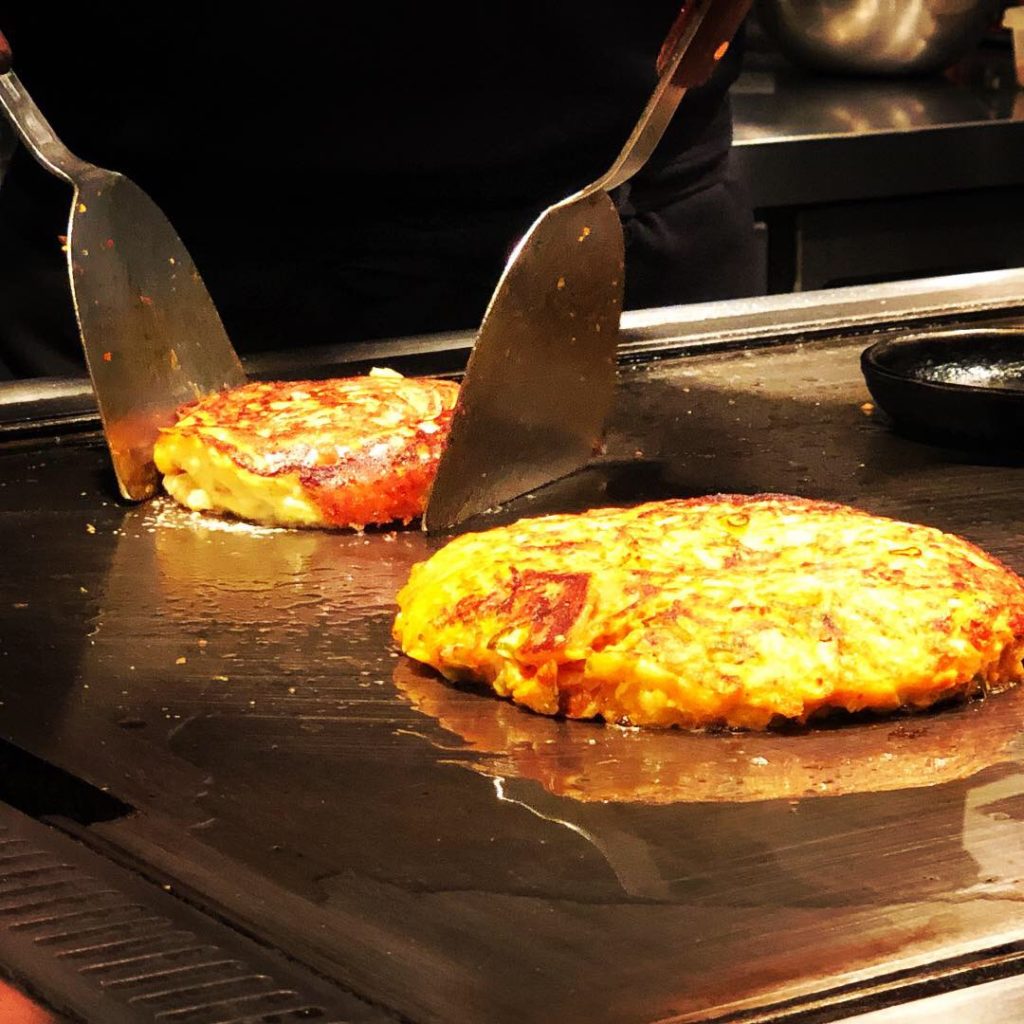
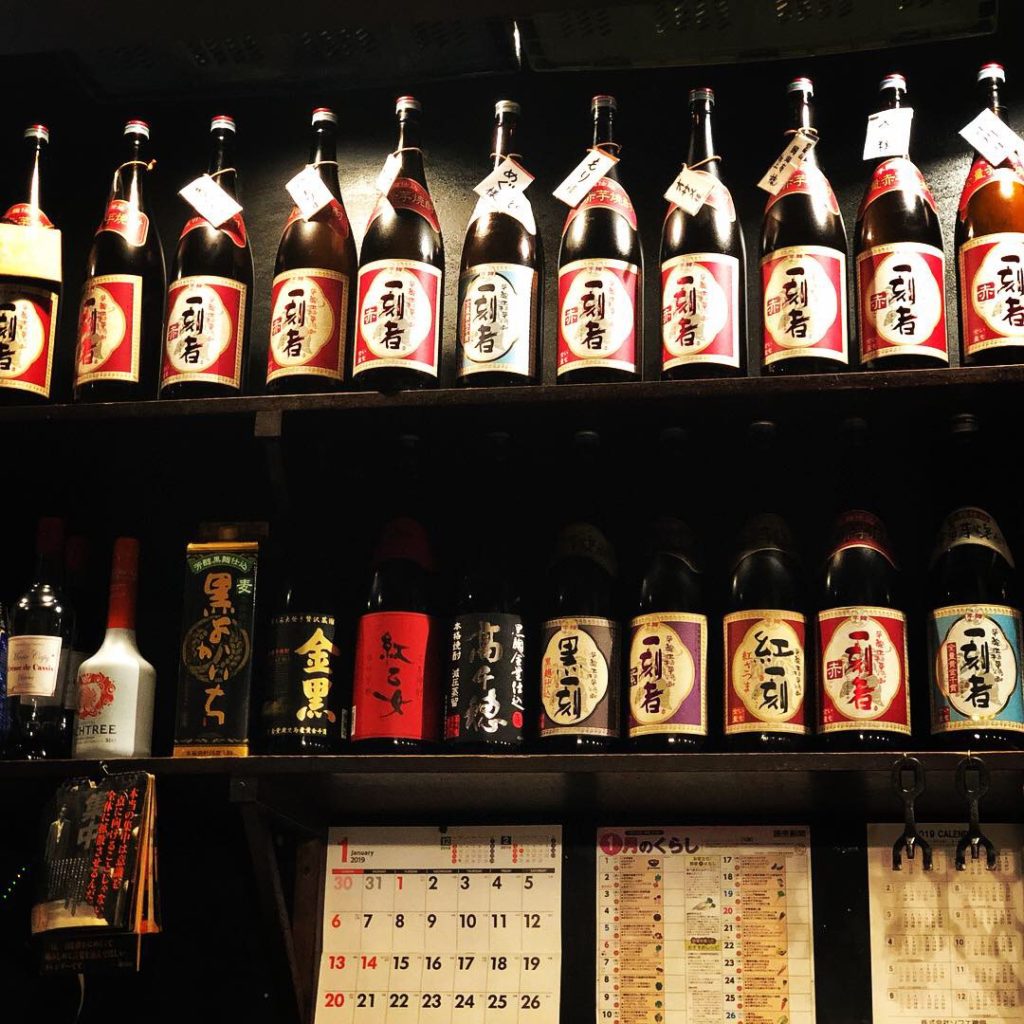

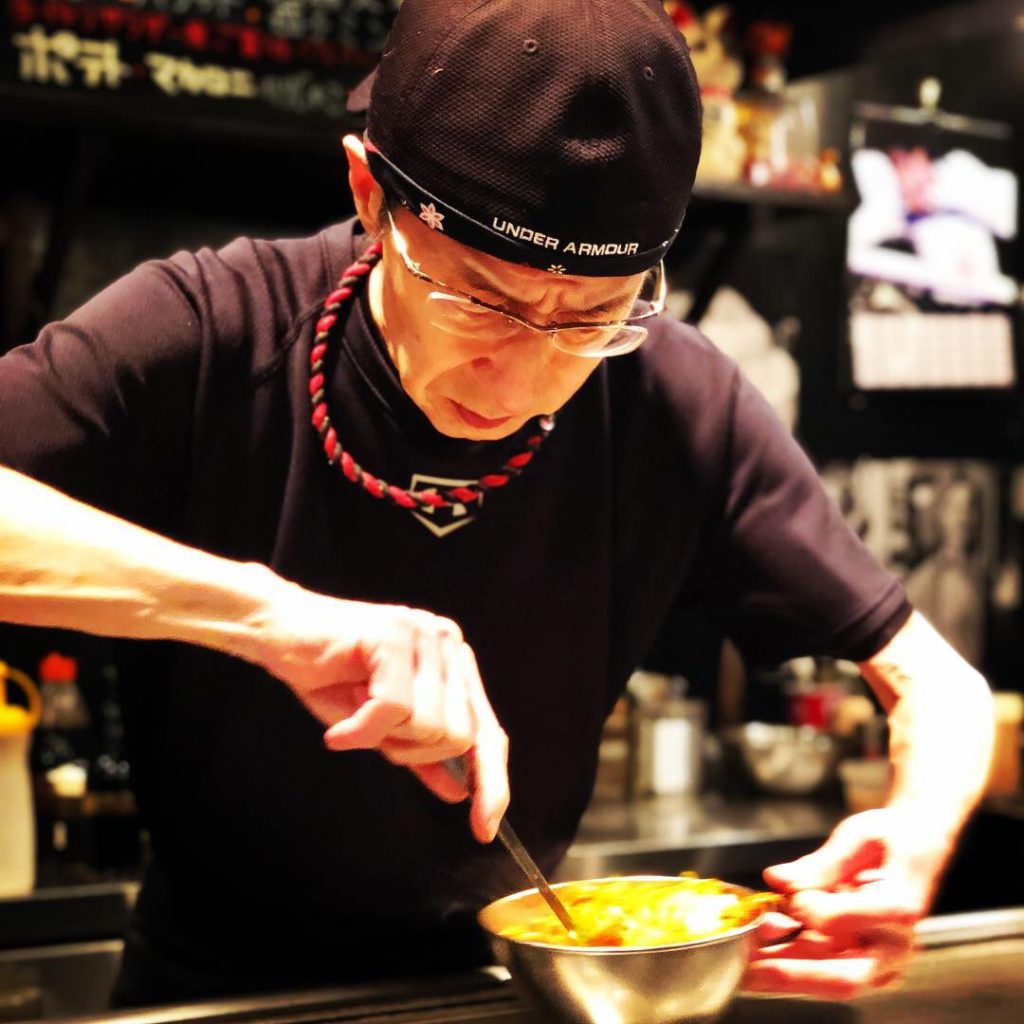
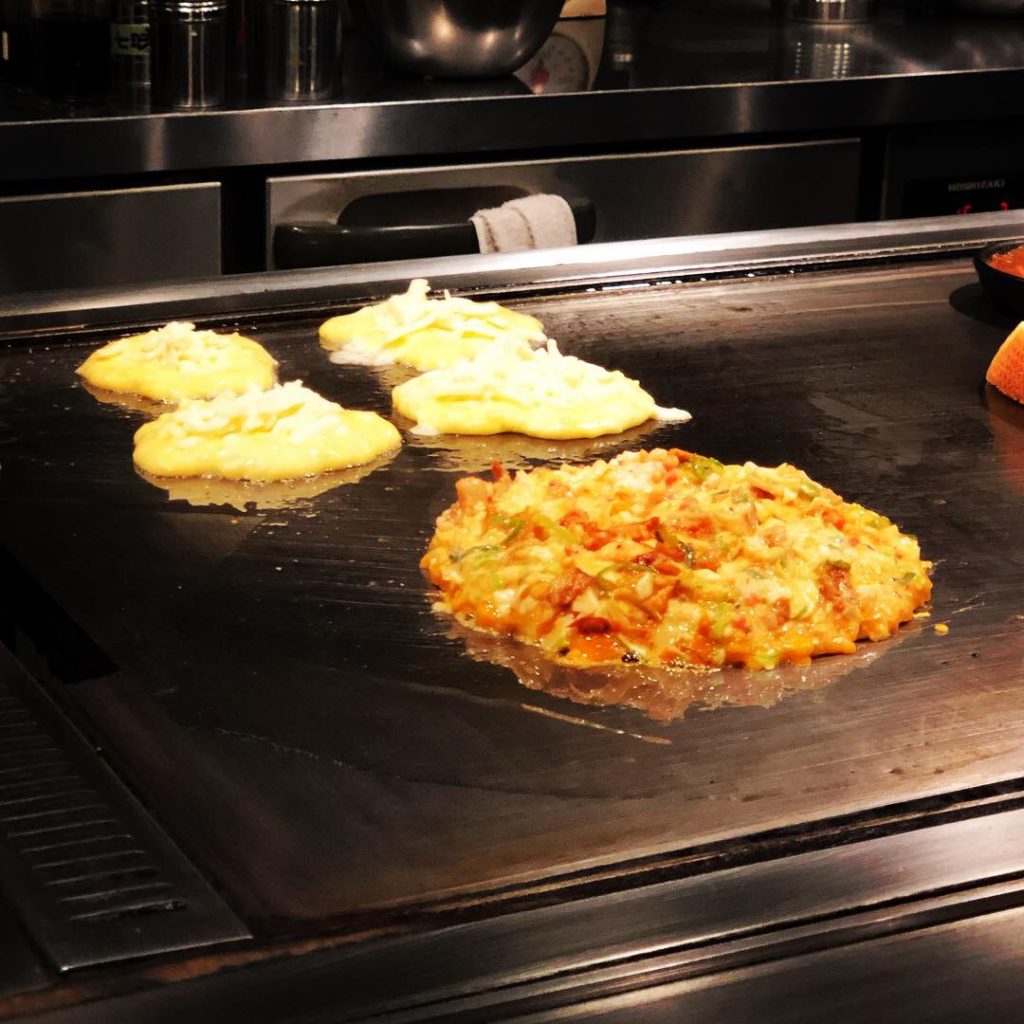
Day 12: Tea Ceremony and Geiko Walking Tour
On our way to a tea ceremony in Gion, we passed a huge crowd of paparazzi lining the streets. Curious, we hung back to see what all the fuss was about.
We discovered that we had chosen the best day to visit Gion: Shigyoshiki, a celebration of the start of another year- and the Geiko (Geisha in Kyoto) and Maiko (Apprentice Geiko) were out in full force, wearing their beautiful ceremonial kimonos.
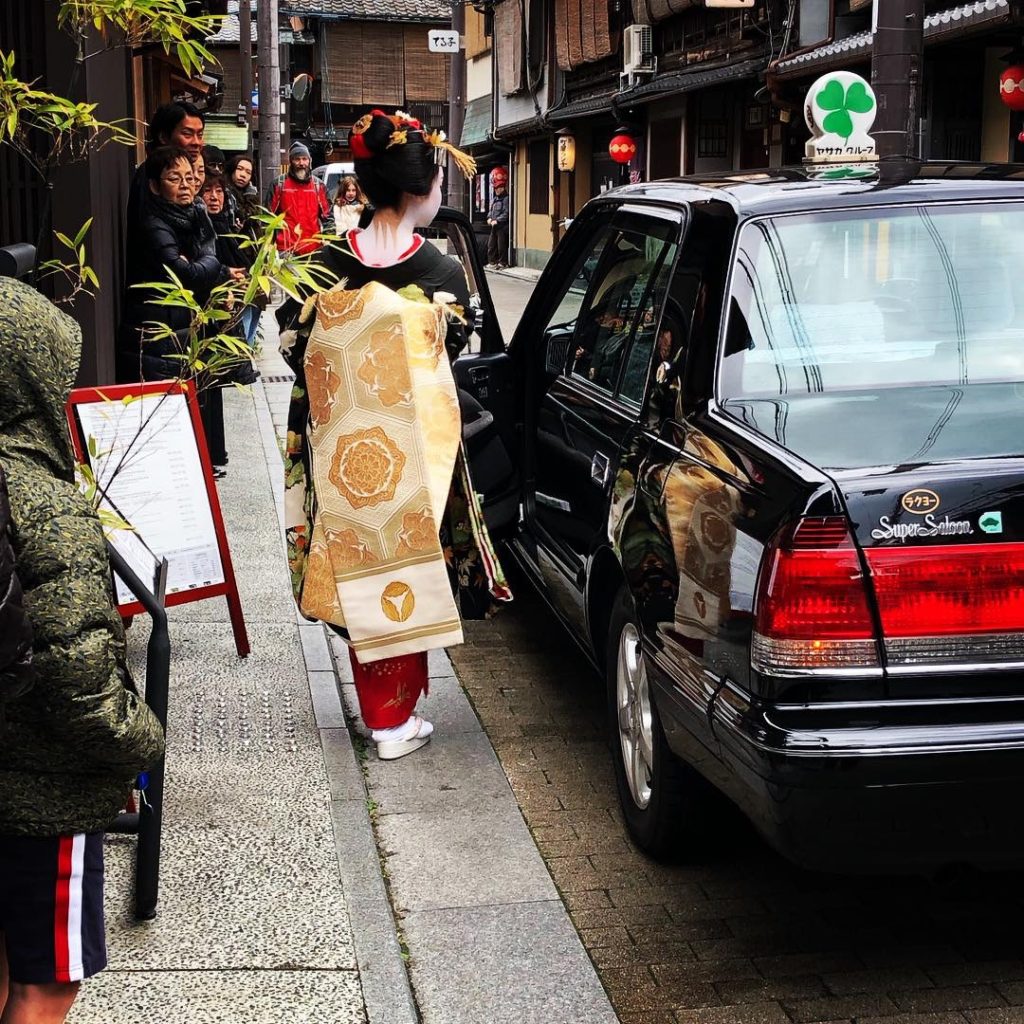
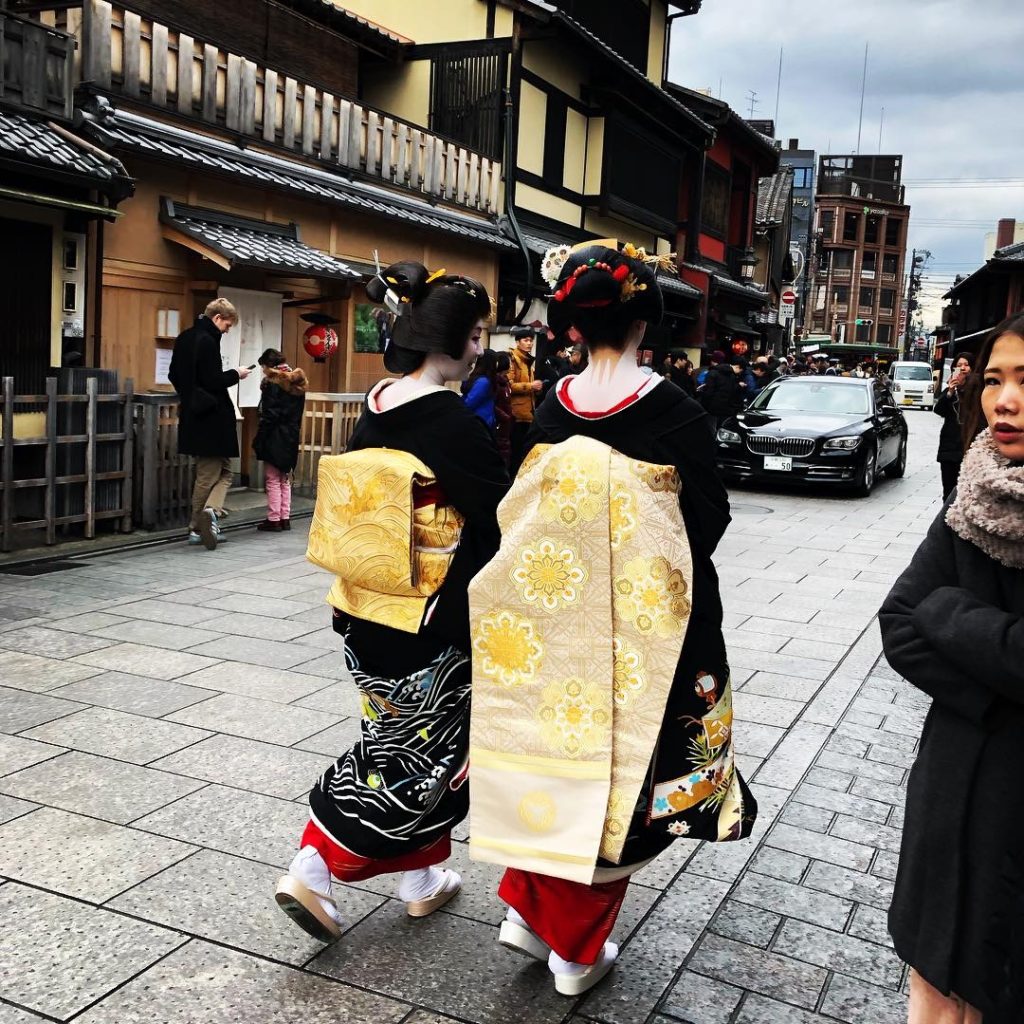
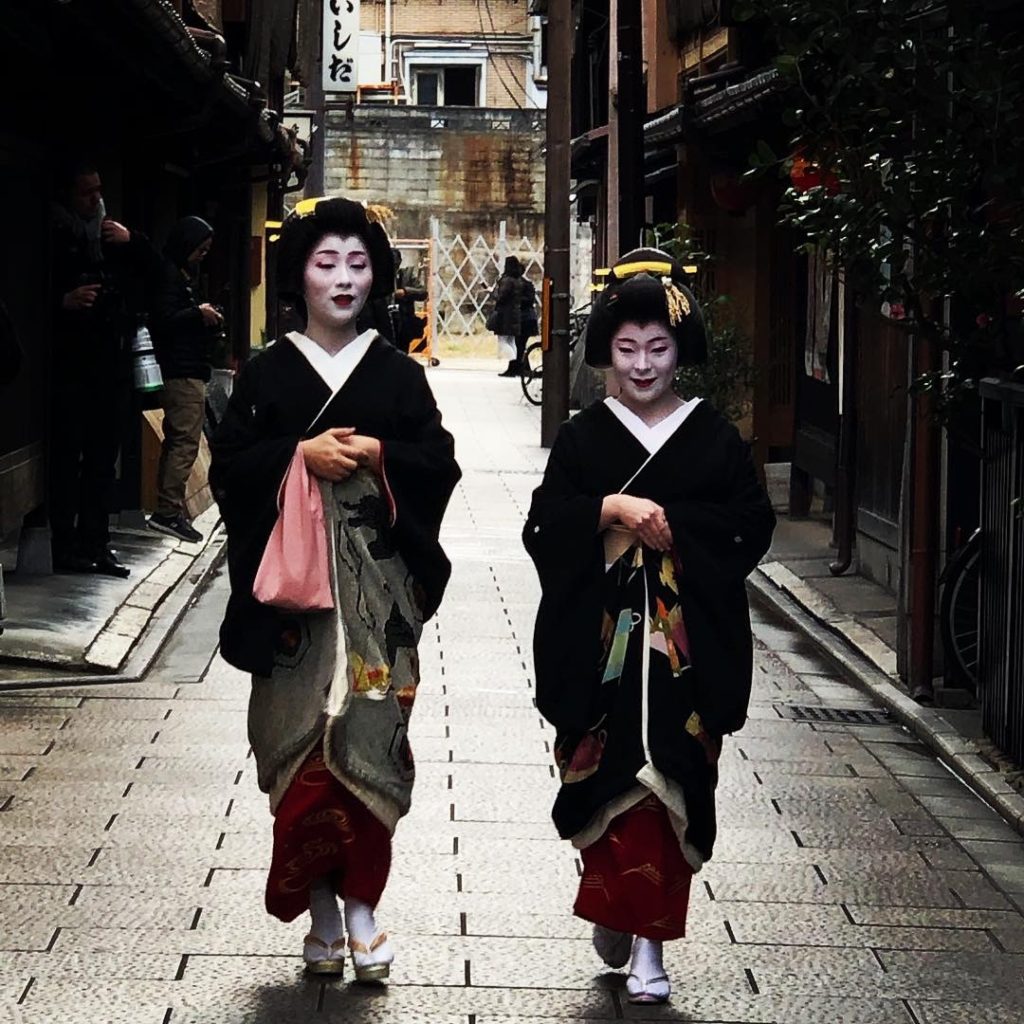
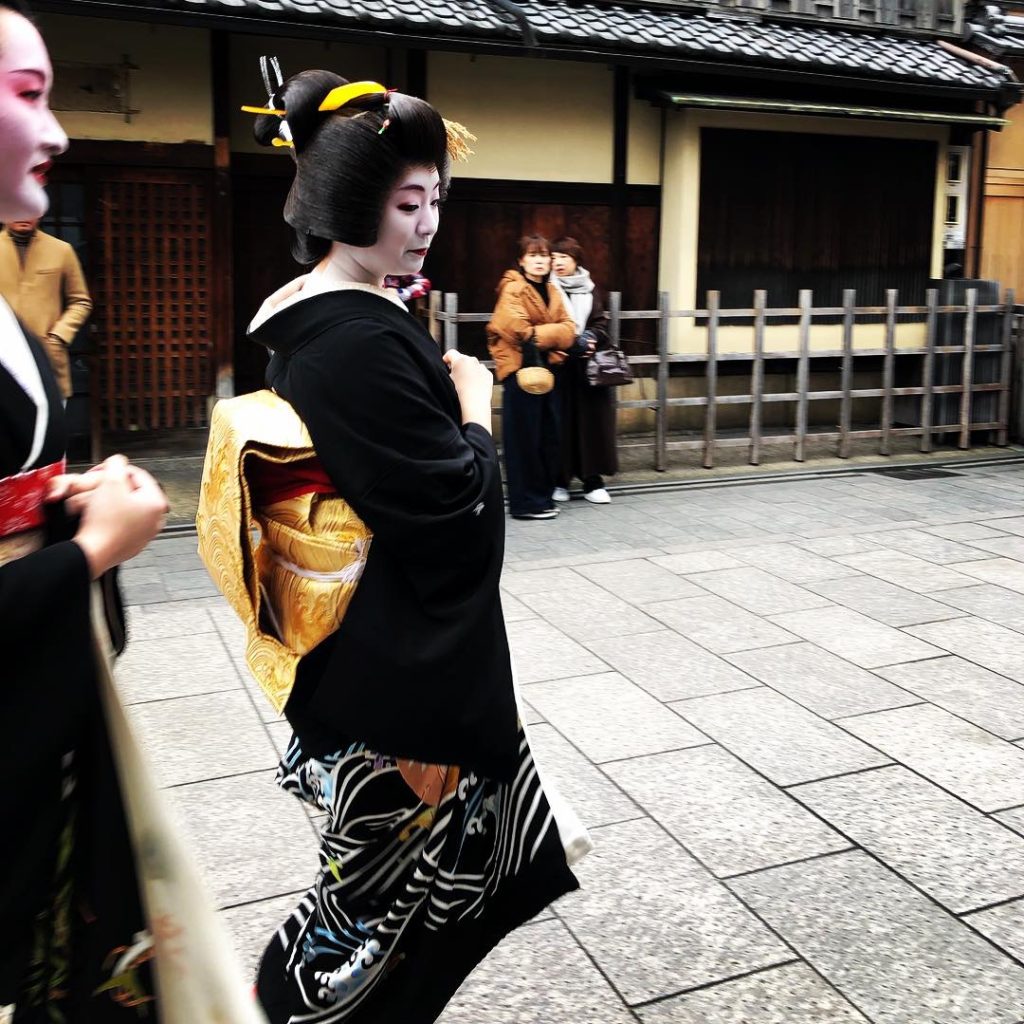
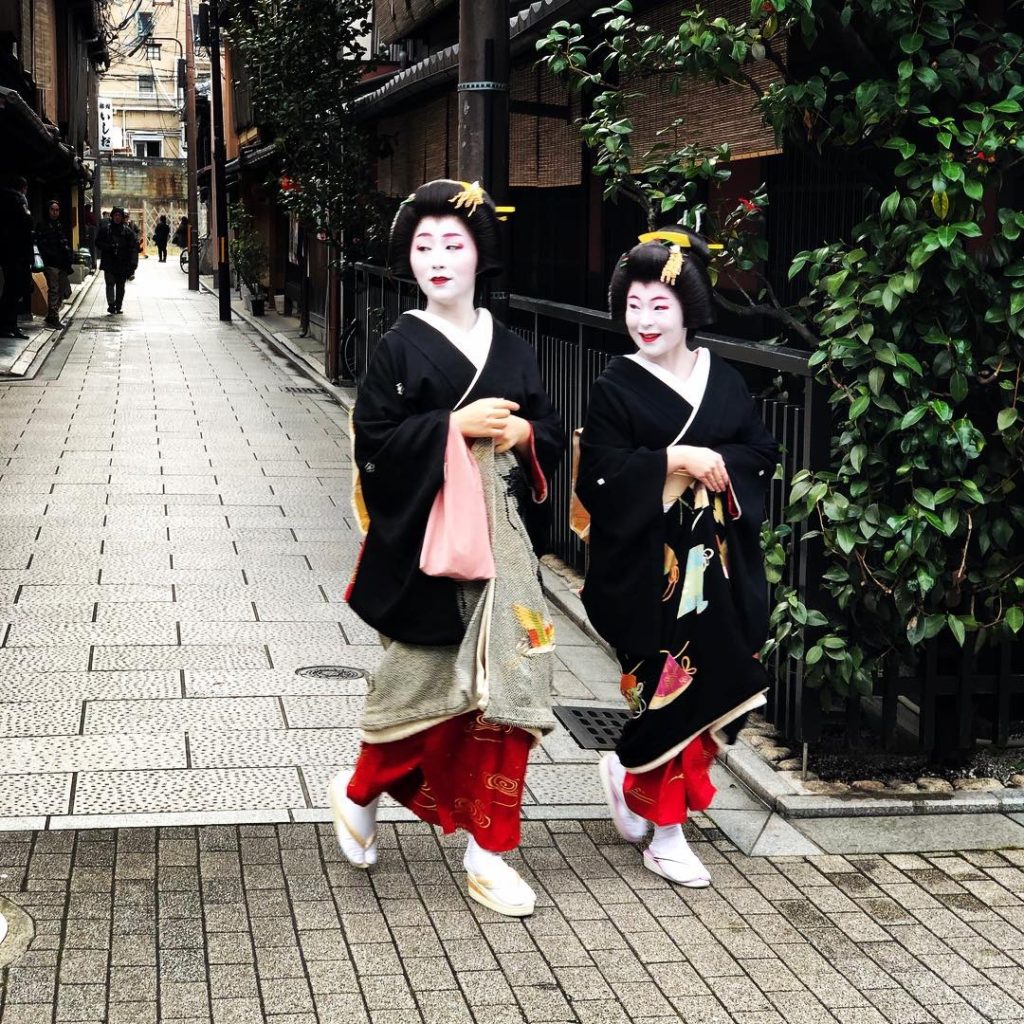
Tea Ceremony
Anyone who knows me knows that tea is life. I seriously drink about 8 cups a day. It’s my comfort, my grounding. It reminds me of my beautiful Mumma. I even took my emergency tea bags to Japan, just in case we couldn’t find any! So when the opportunity arose to attend a traditional tea ceremony, I jumped at the chance.
We booked with Camellia Tea Ceremony, where we were lucky enough to be the only guests in our session. We learned all about the history and etiquette of the tea ceremony, before watching it being performed by our host. What a beautiful and dignified process. It felt almost like a dance. Once our host had finished, it was our turn to whip the thick green matcha powder into frothy bubbles.
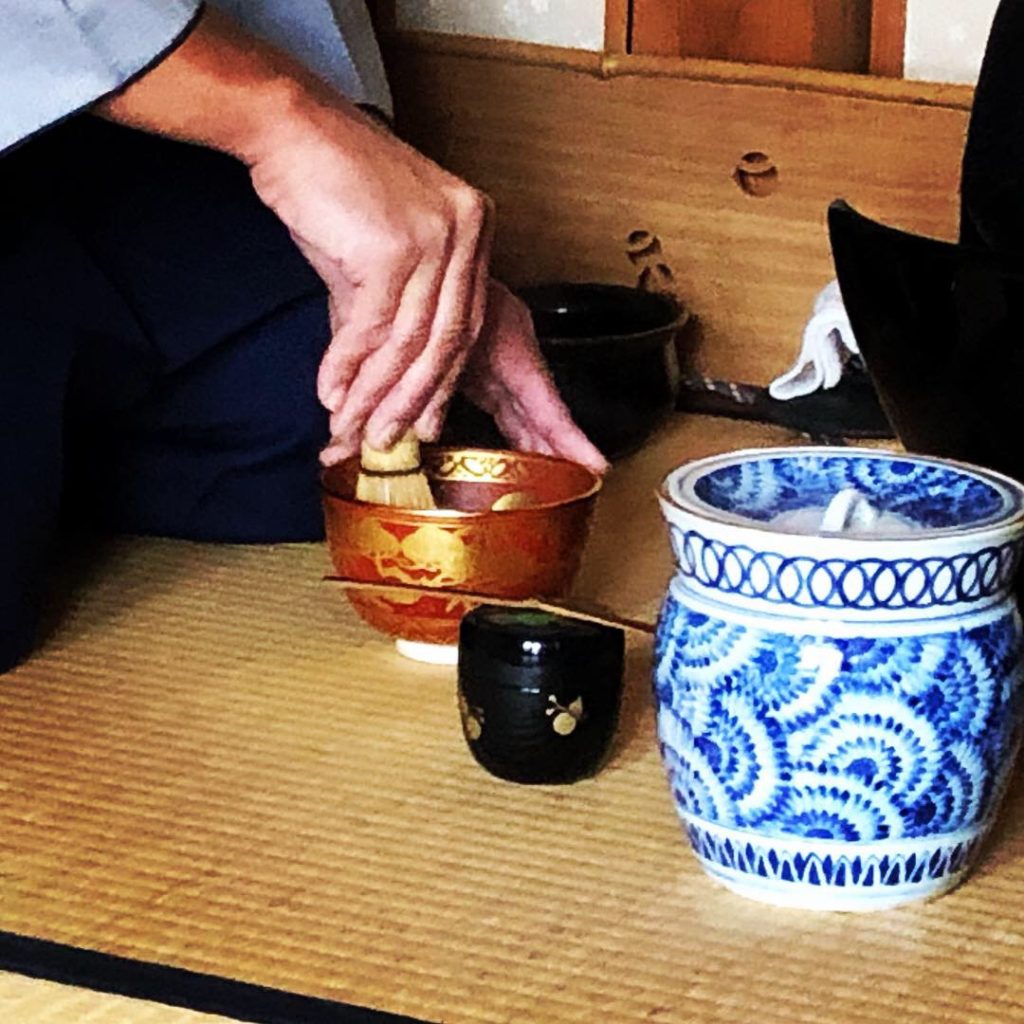
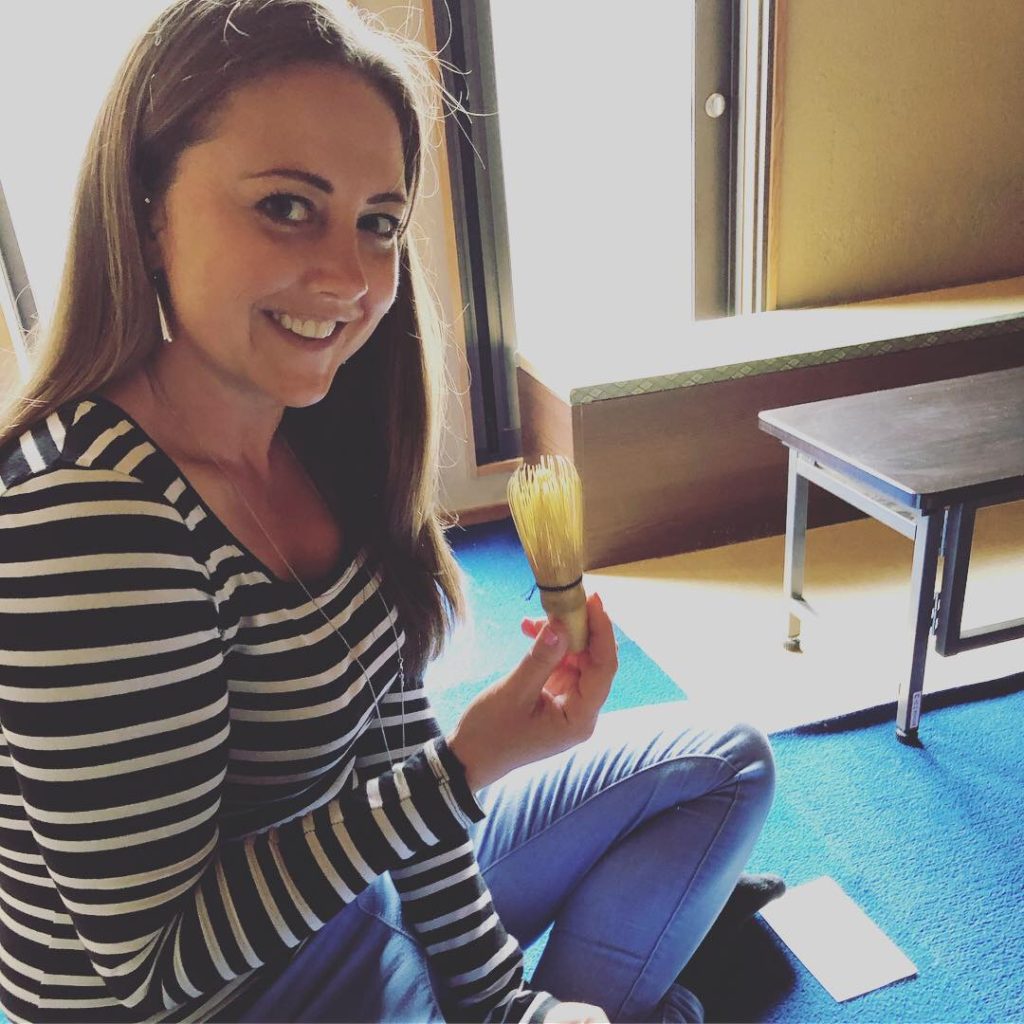
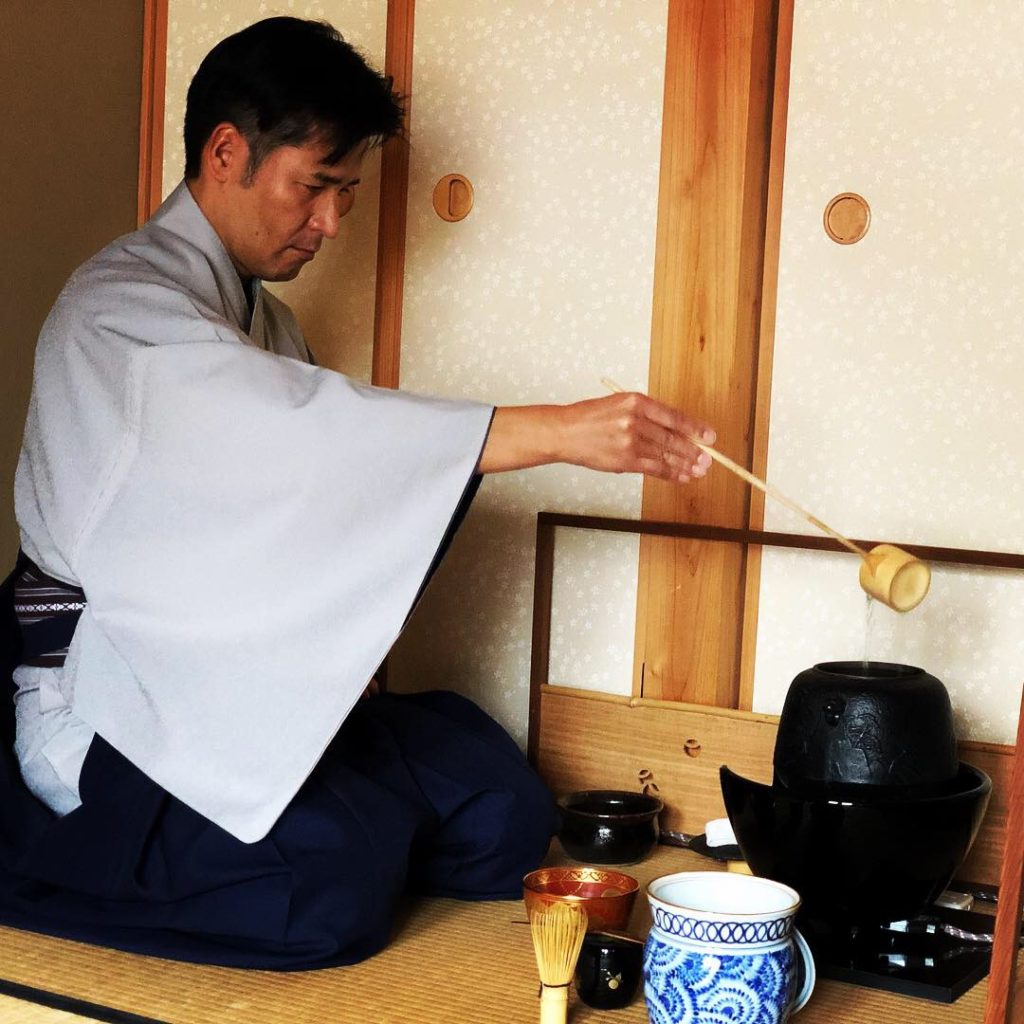
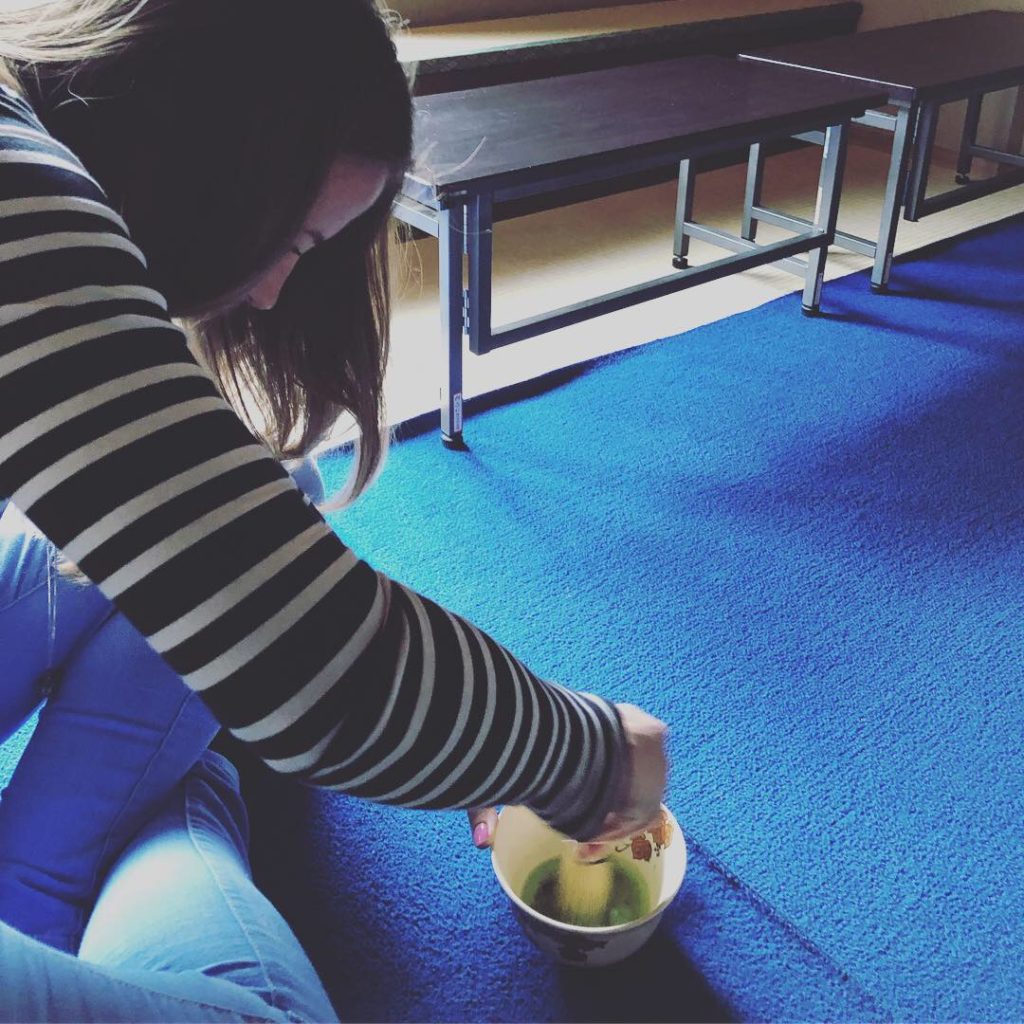
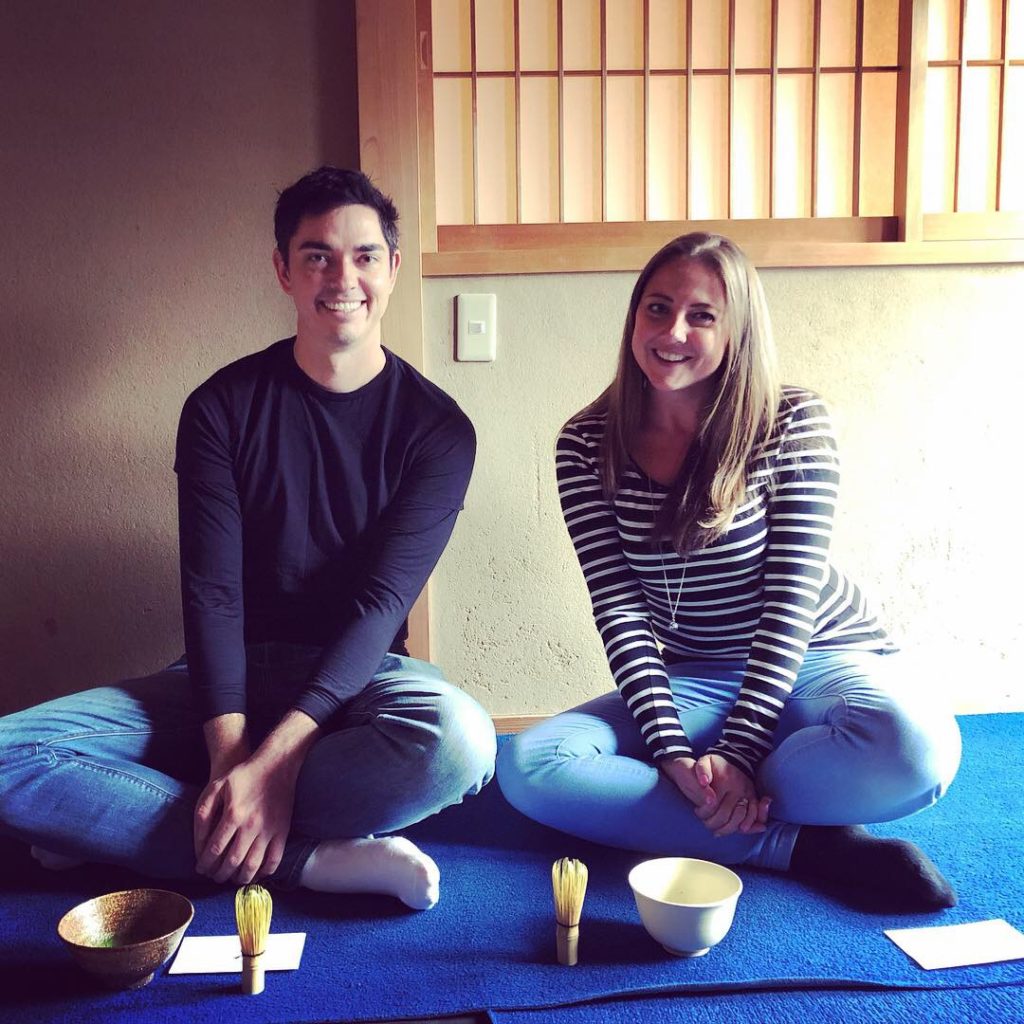
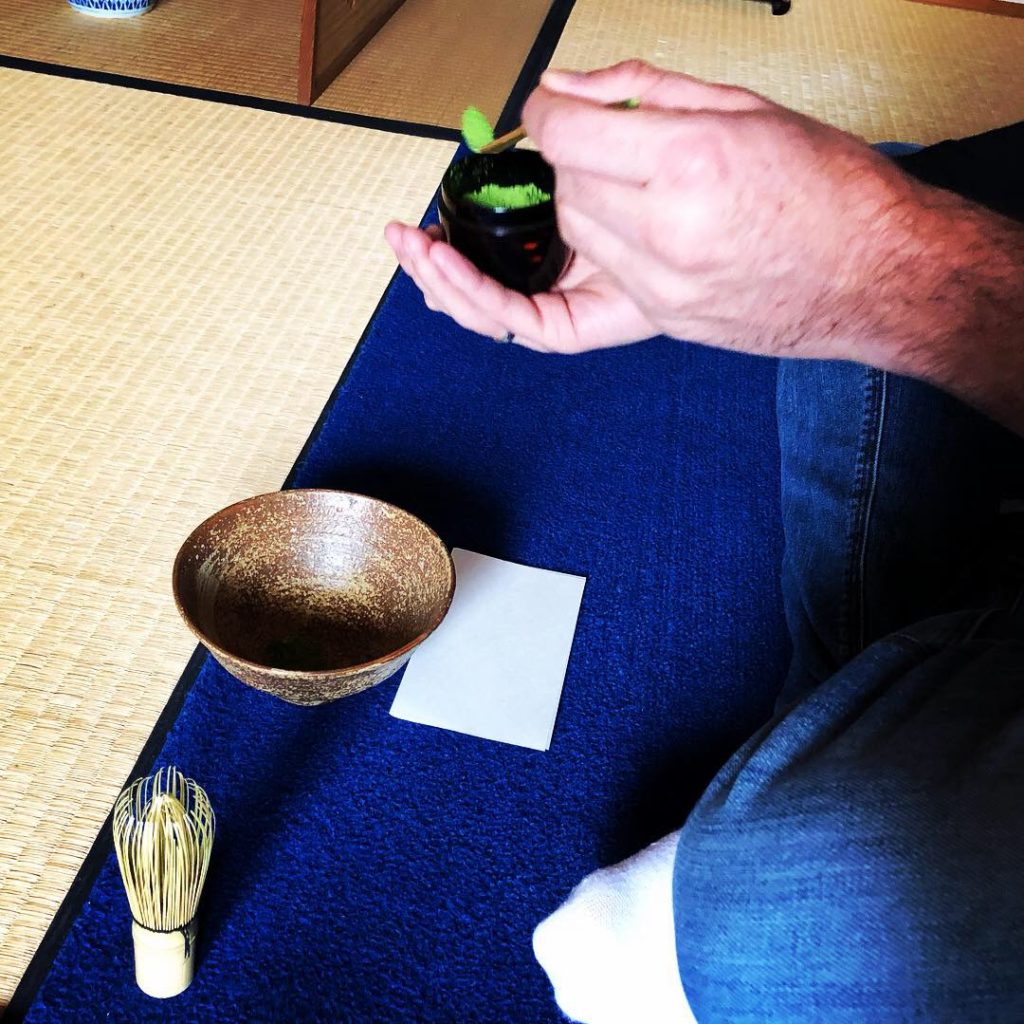
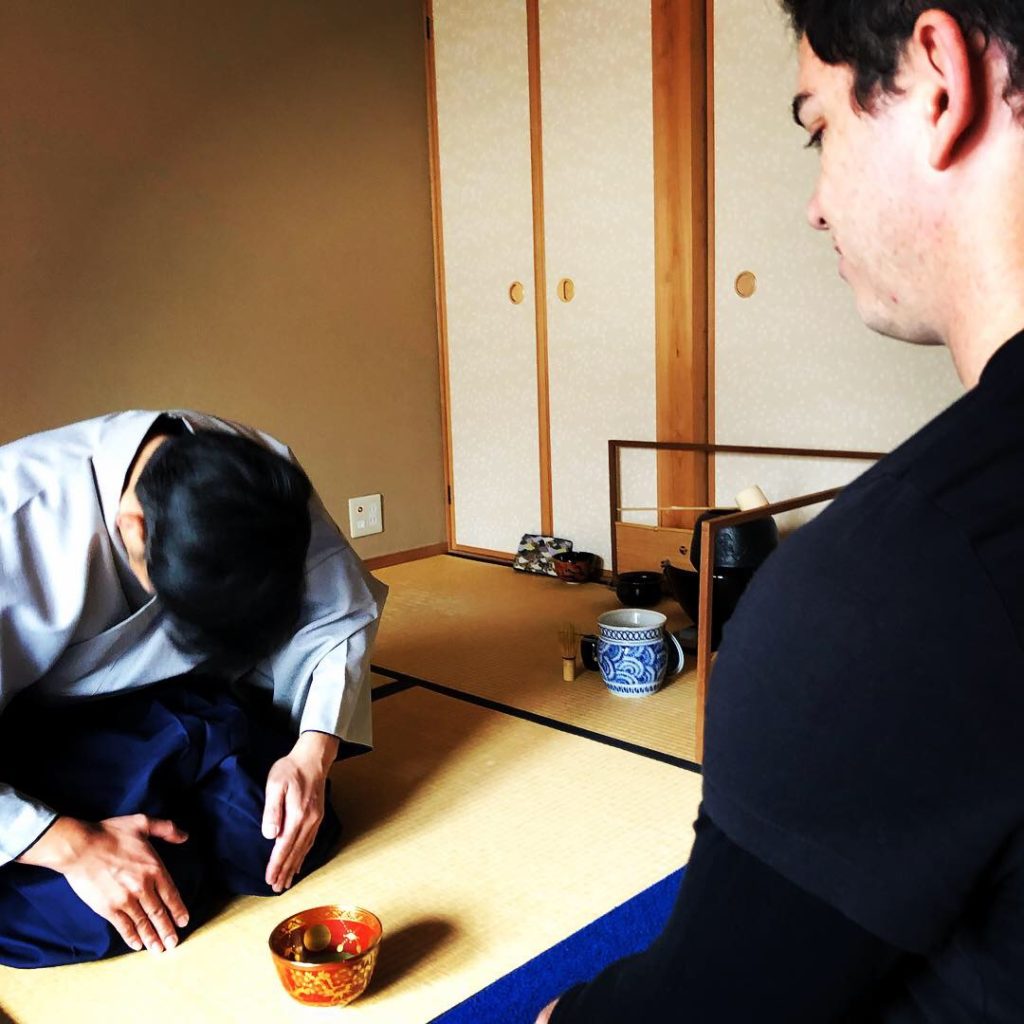
Geiko Walking Tour in Gion
We were fascinated by the Geiko, so we decided to join one of the night walking tours, to learn more about their mysterious lives.
Walking down cobbled streets, we passed some of the film scenes for Memoirs of a Geisha, as well as Geiko tea houses and Maiko boarding houses, where the girls live under the watchful eye of a house-mother whilst training.
We learned it takes five years to train to become a Geiko, during which time the girls are not allowed phones, McDonalds or Starbucks! How’s that for dedication!? Taking on a Maiko is a big investment for the house-mother, who pays for everything the Maiko could need during her training. A single Maiko kimono can cost $30,000 and the ceremonial kimono even more.
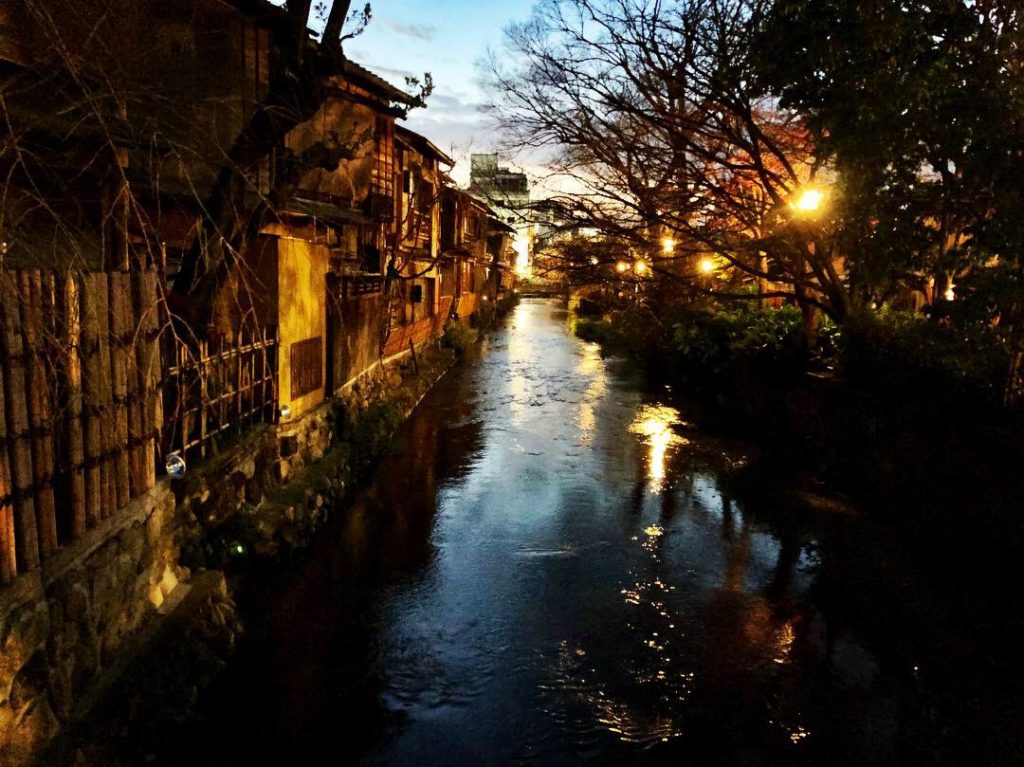

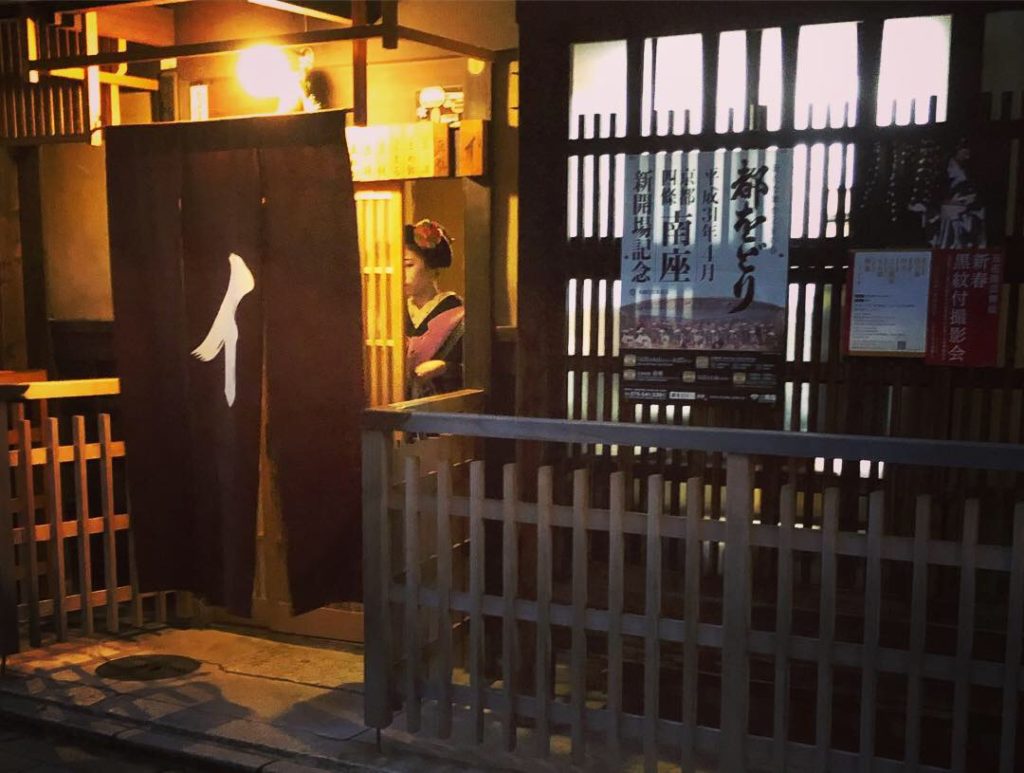
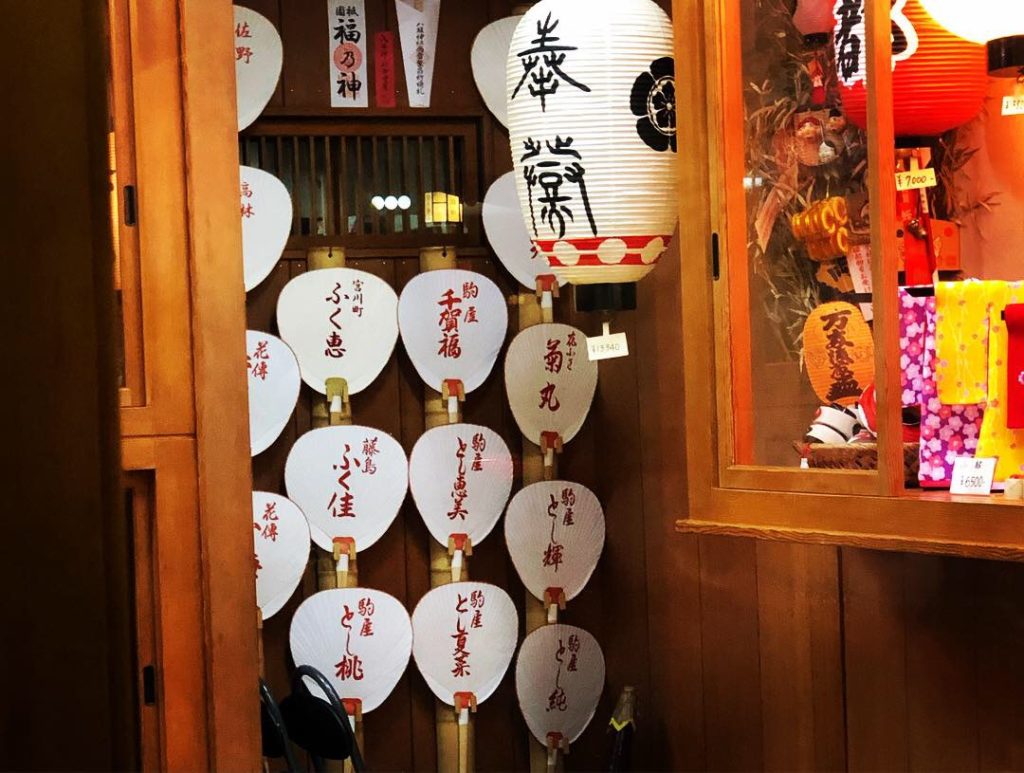
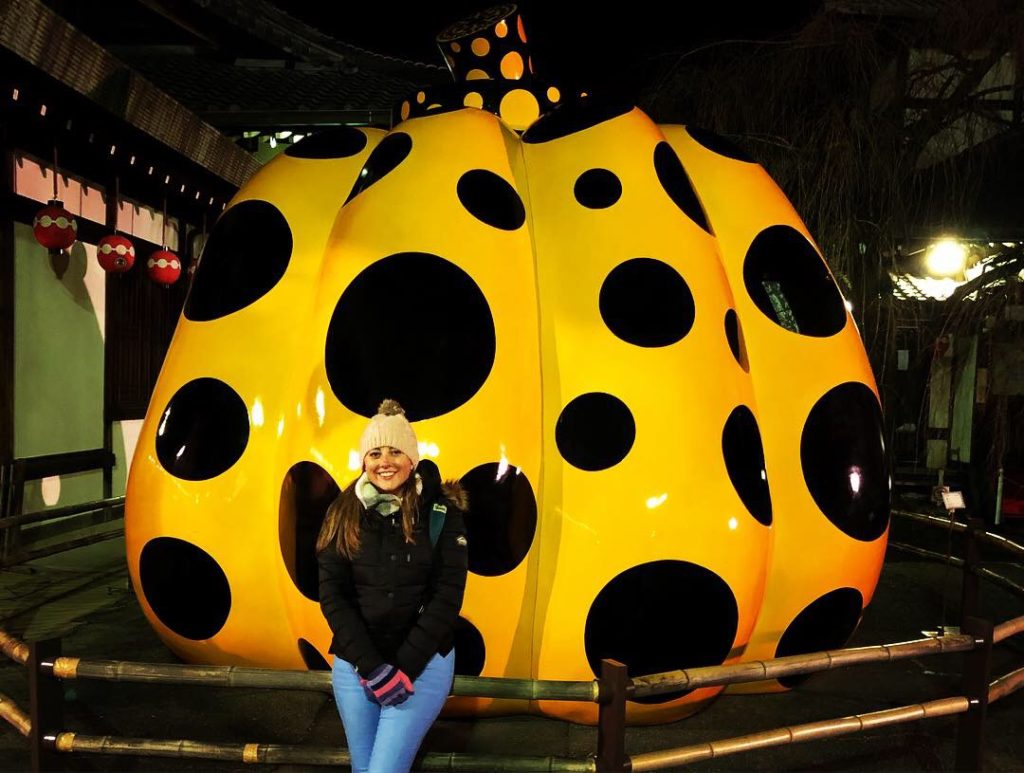
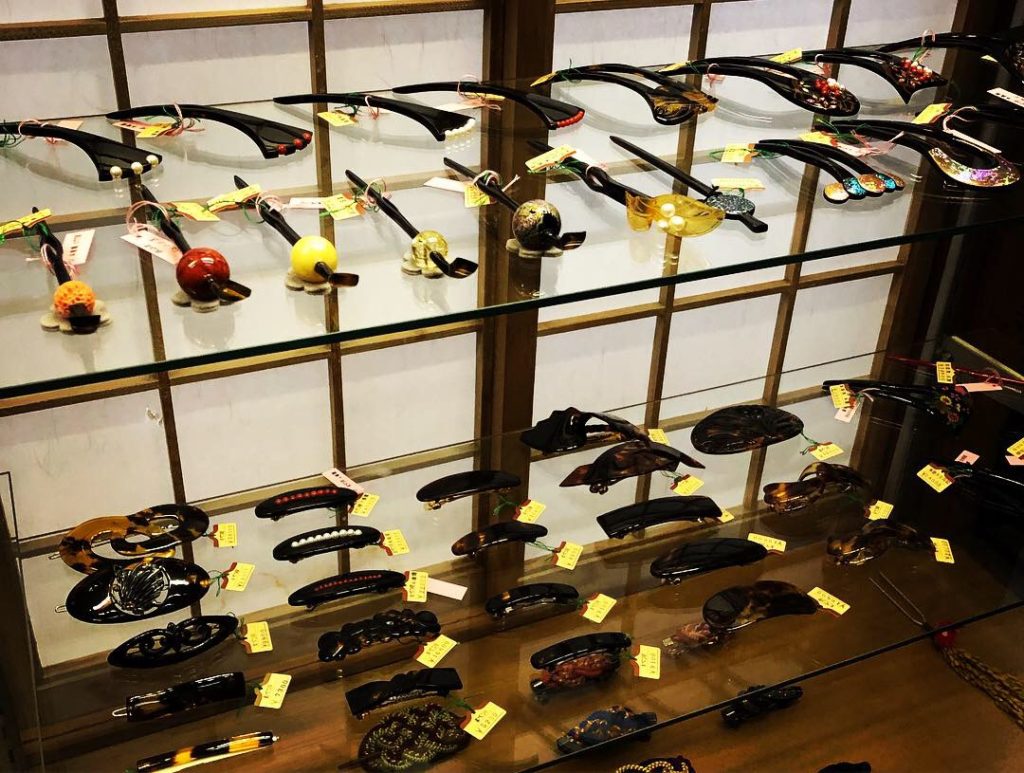
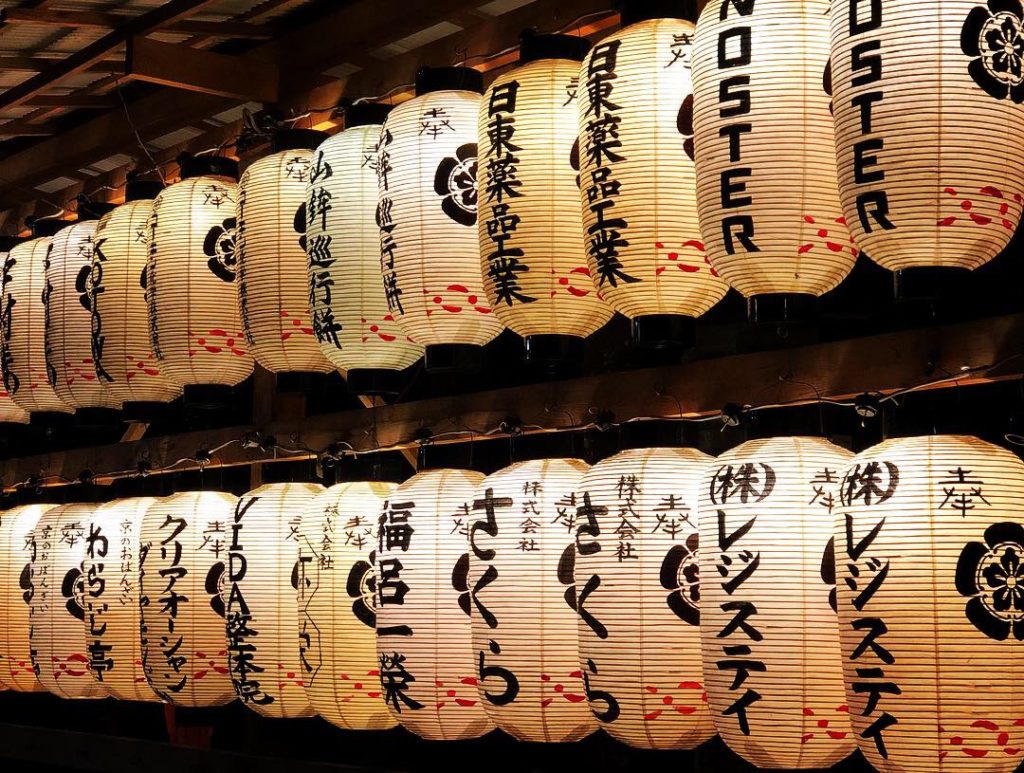
Day 13: Fushimi Inari Shrine and Golden Pavillion
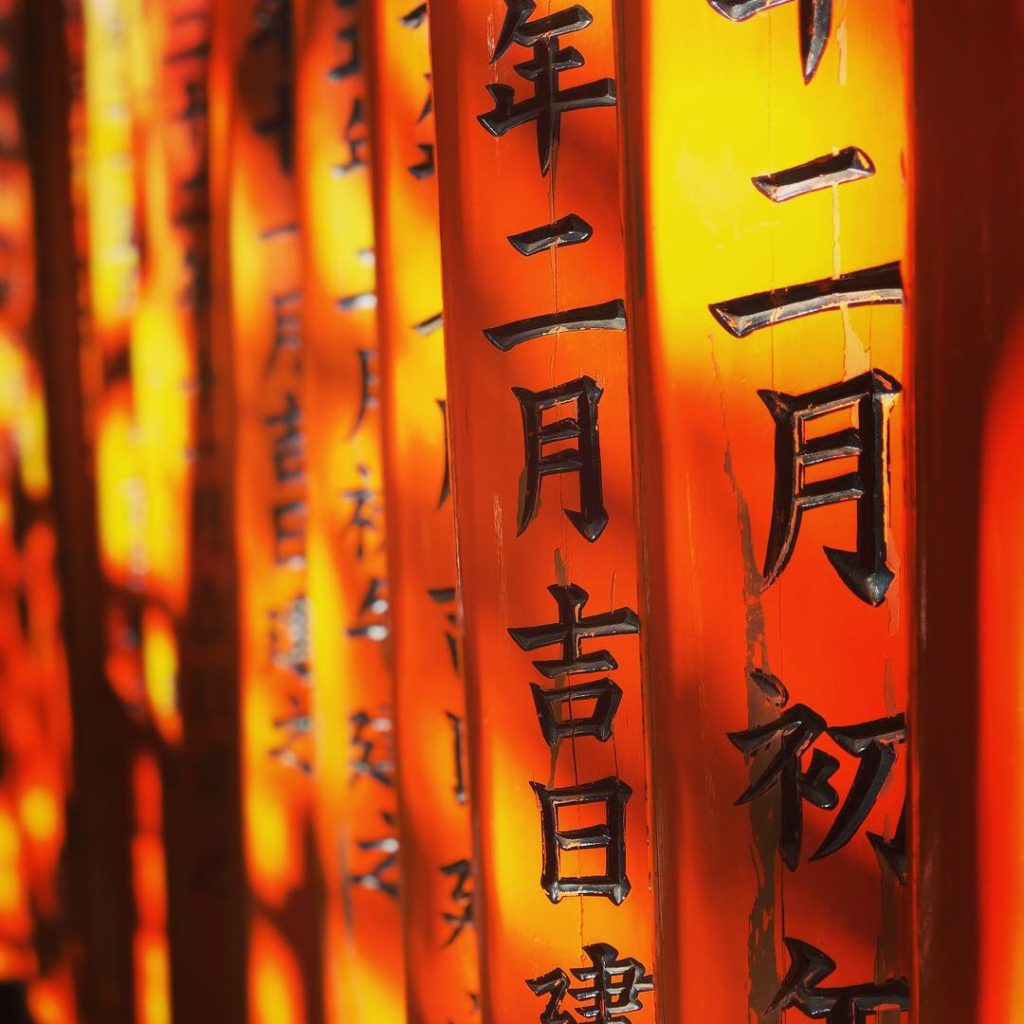
At this incredible Shinto shrine to Inari, the God of rice, over 5000 Tori gates create a seemingly unending path up to the summit of Mount Inari. Beneath the vibrant orange arches, you wind your way through tranquil woodland and peaceful cemeteries, reaching the junction of
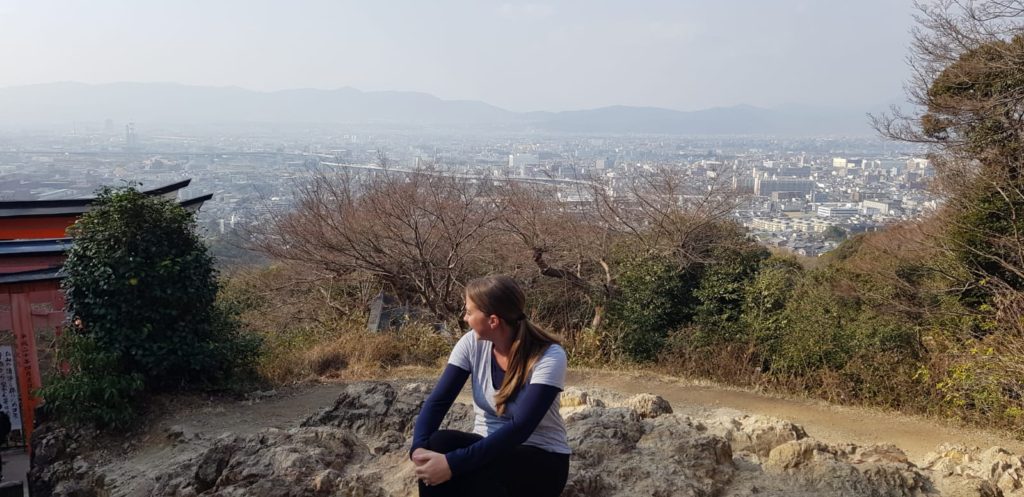
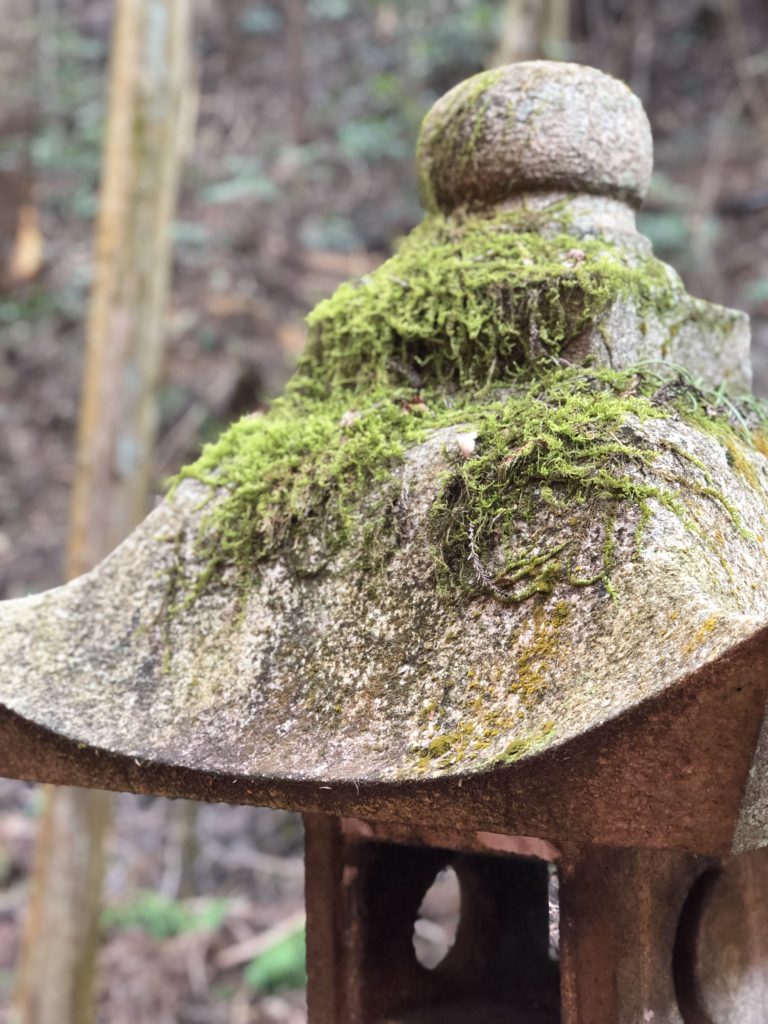
Continuing up to the pilgrimage circle at the top, we lit candles for our stepdads at the shrine, as we always do when we travel, to bring them on the journey with us.
A torii gate is said to be the division between the physical and spiritual worlds. As you pass through, you may notice the writing on the gates, which signifies who donated it and their wish for health, happiness or wealth.
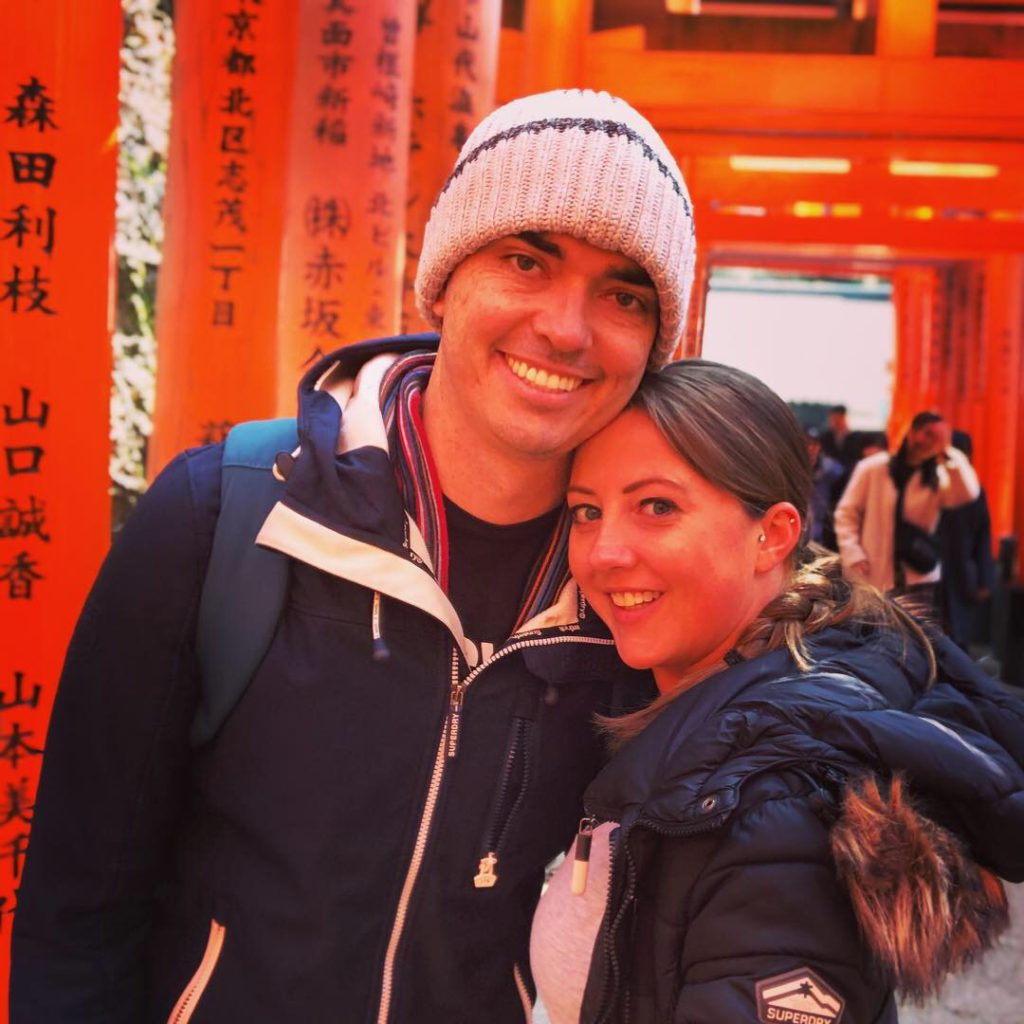

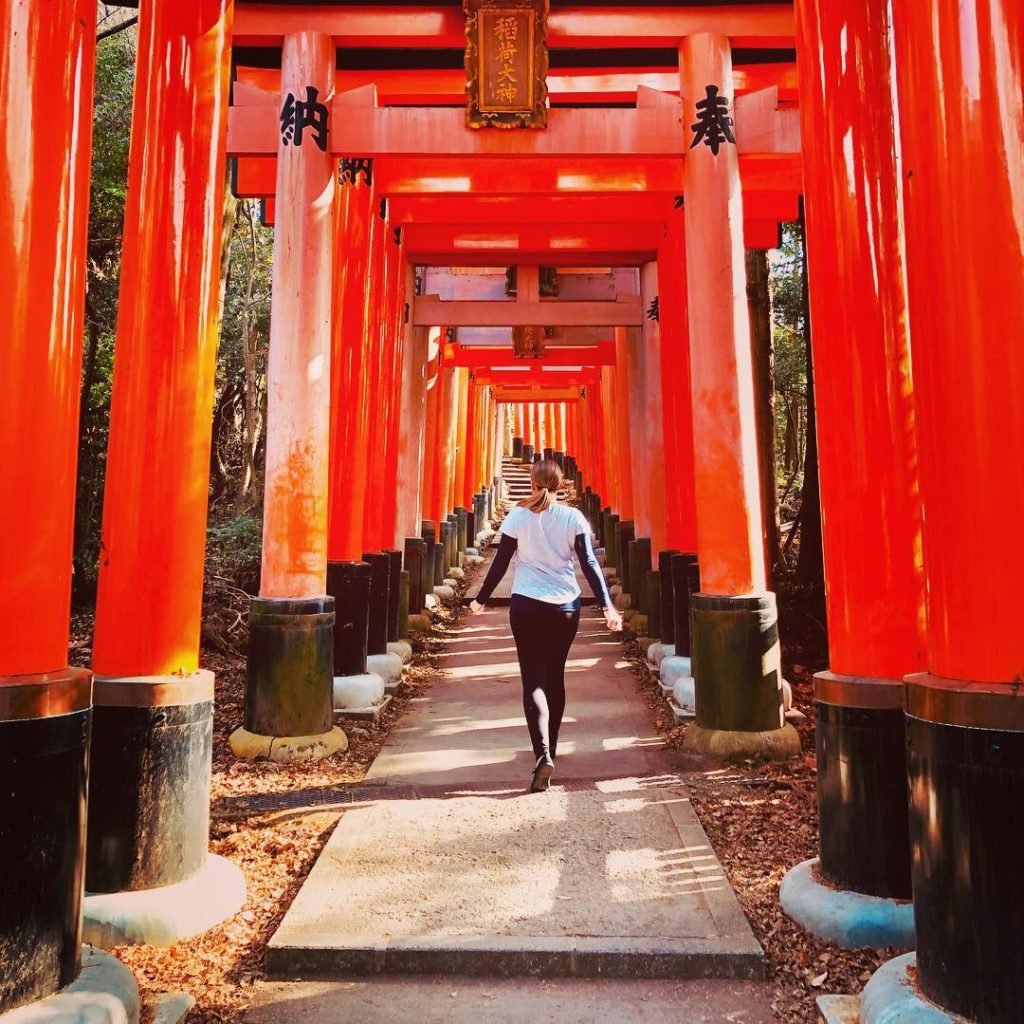
This shrine is very popular, but most tourists congregate at the lower parts of the walk, so I’d recommend getting here early, and being willing to climb higher into the secluded areas to escape the crowds.
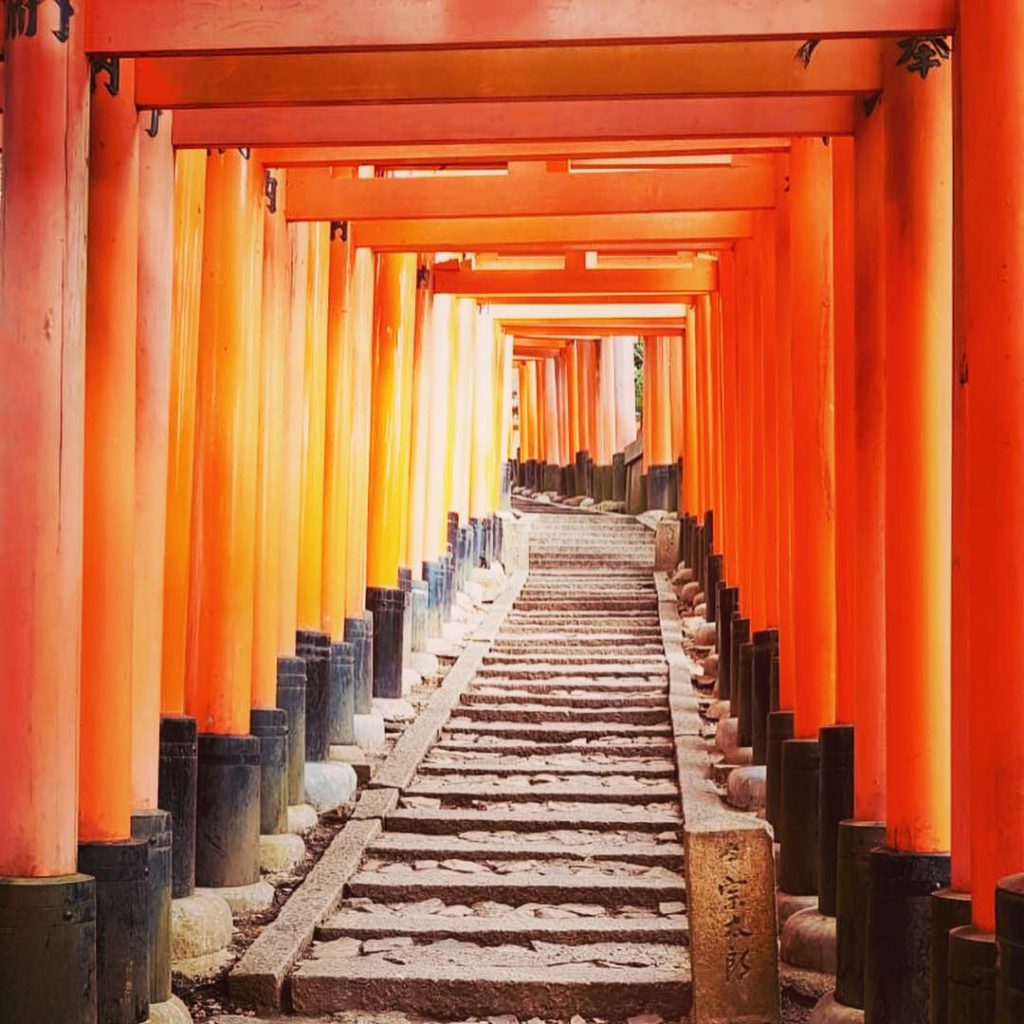
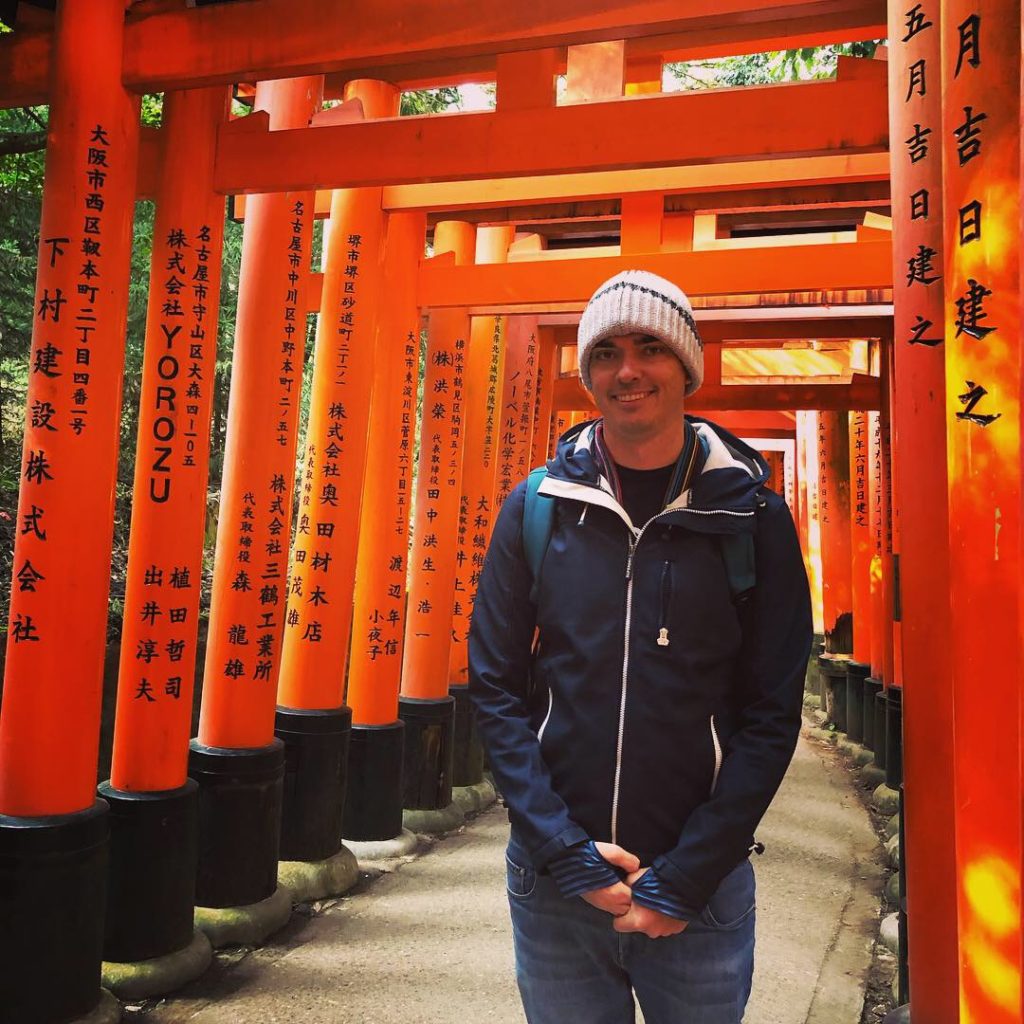
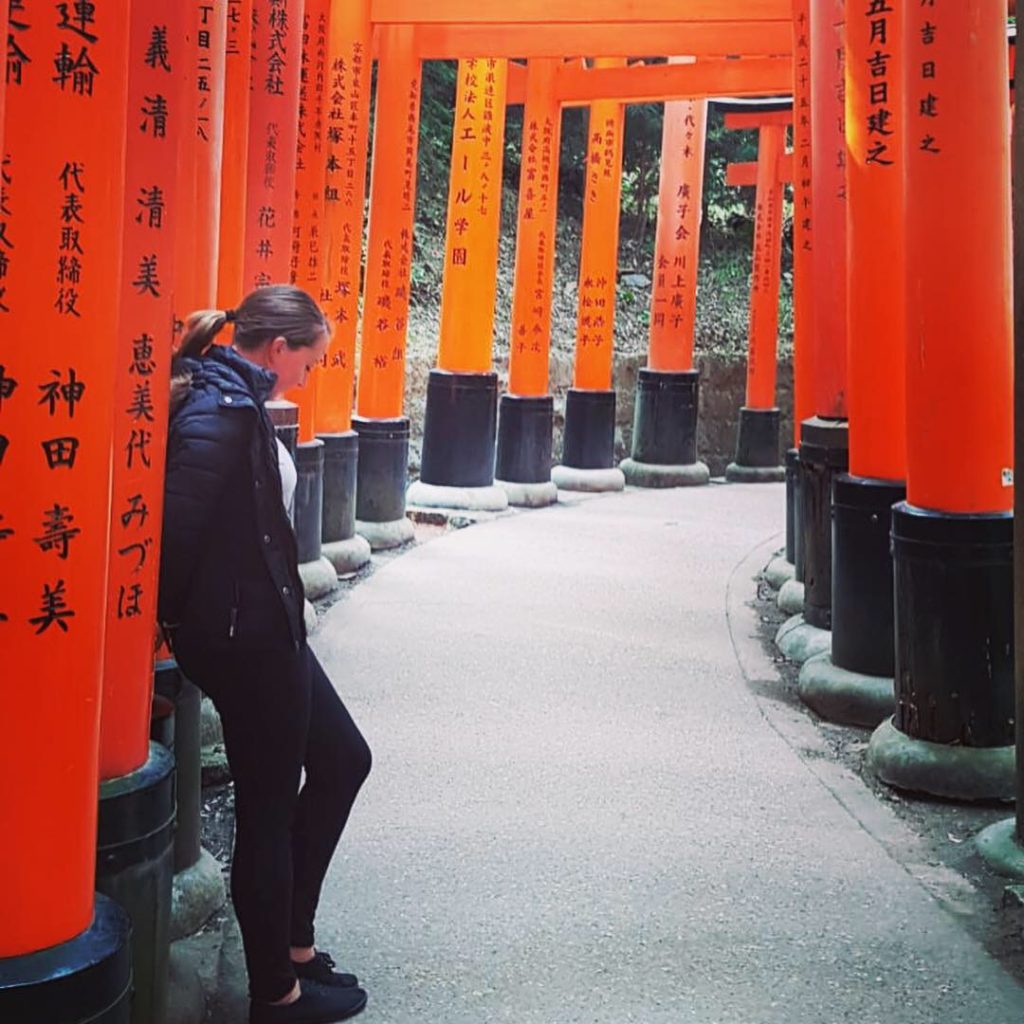
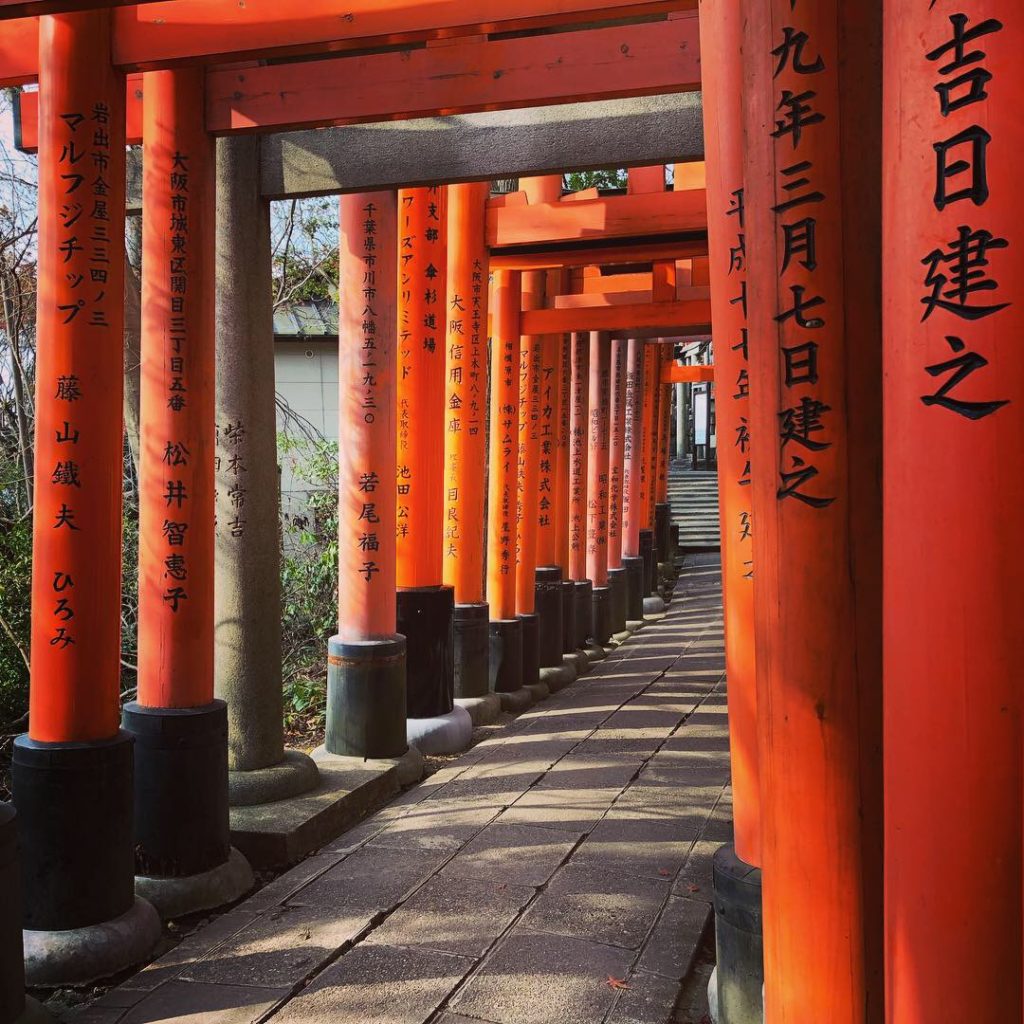
The Golden Pavillion
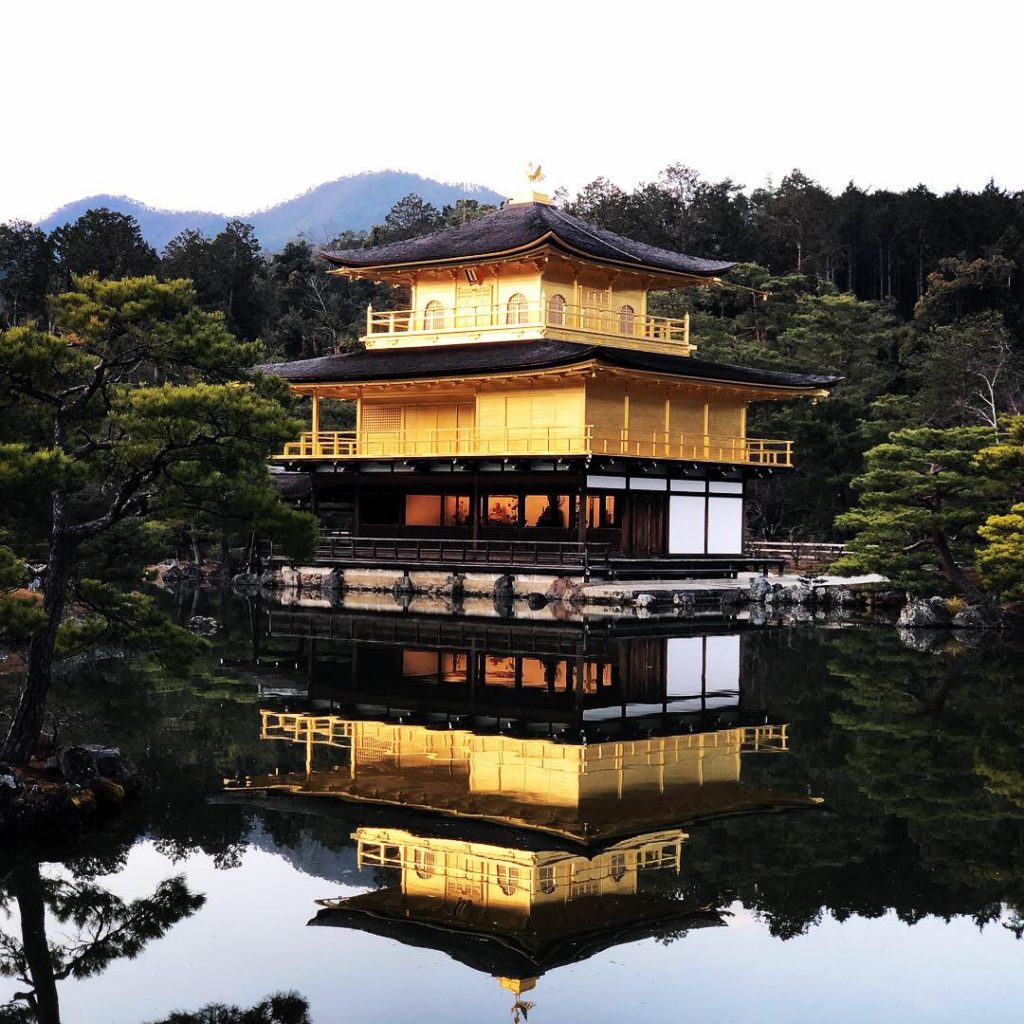
After the shrine, we visited the Golden Pavilion. We arrived at
Kinkaku-
Perhaps what is most interesting about the temple, is that it has been burnt down numerous times in its lifetime, making it a real symbol of endurance and resilience.
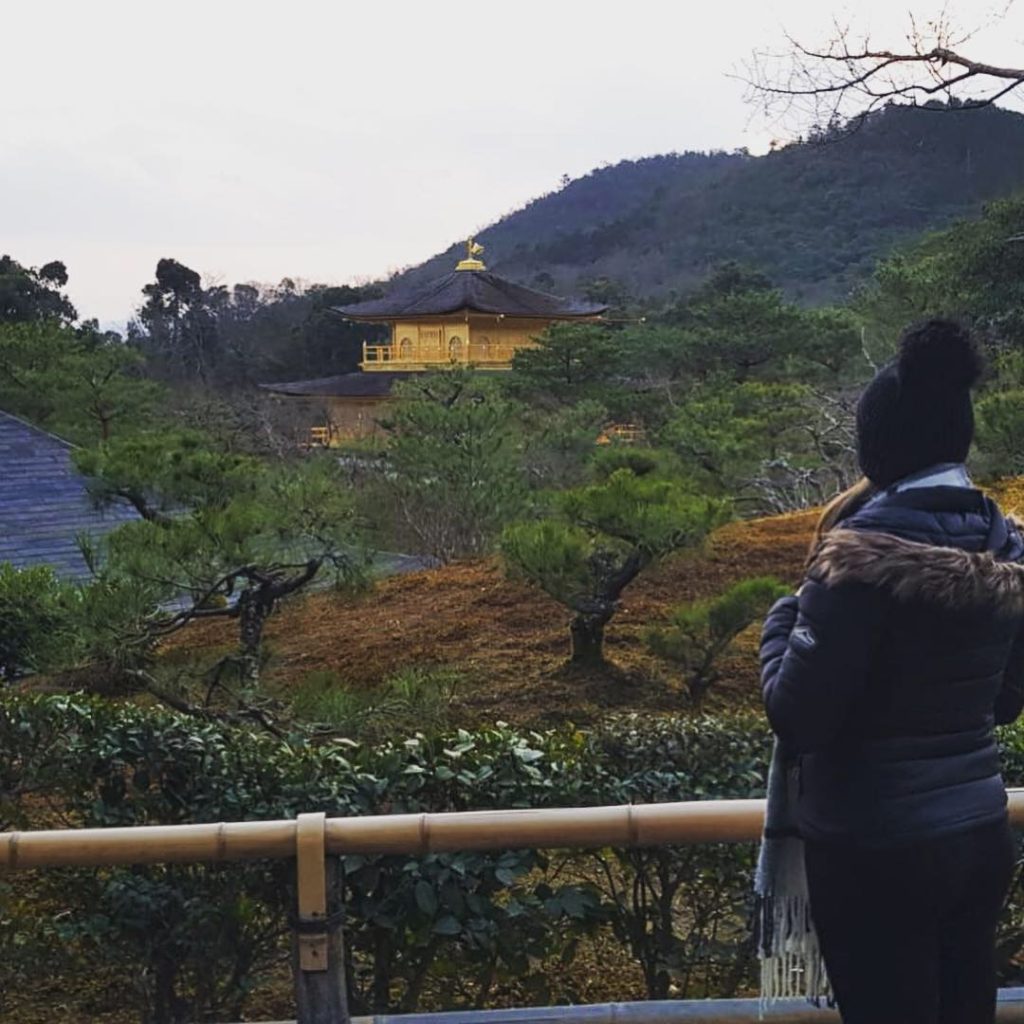


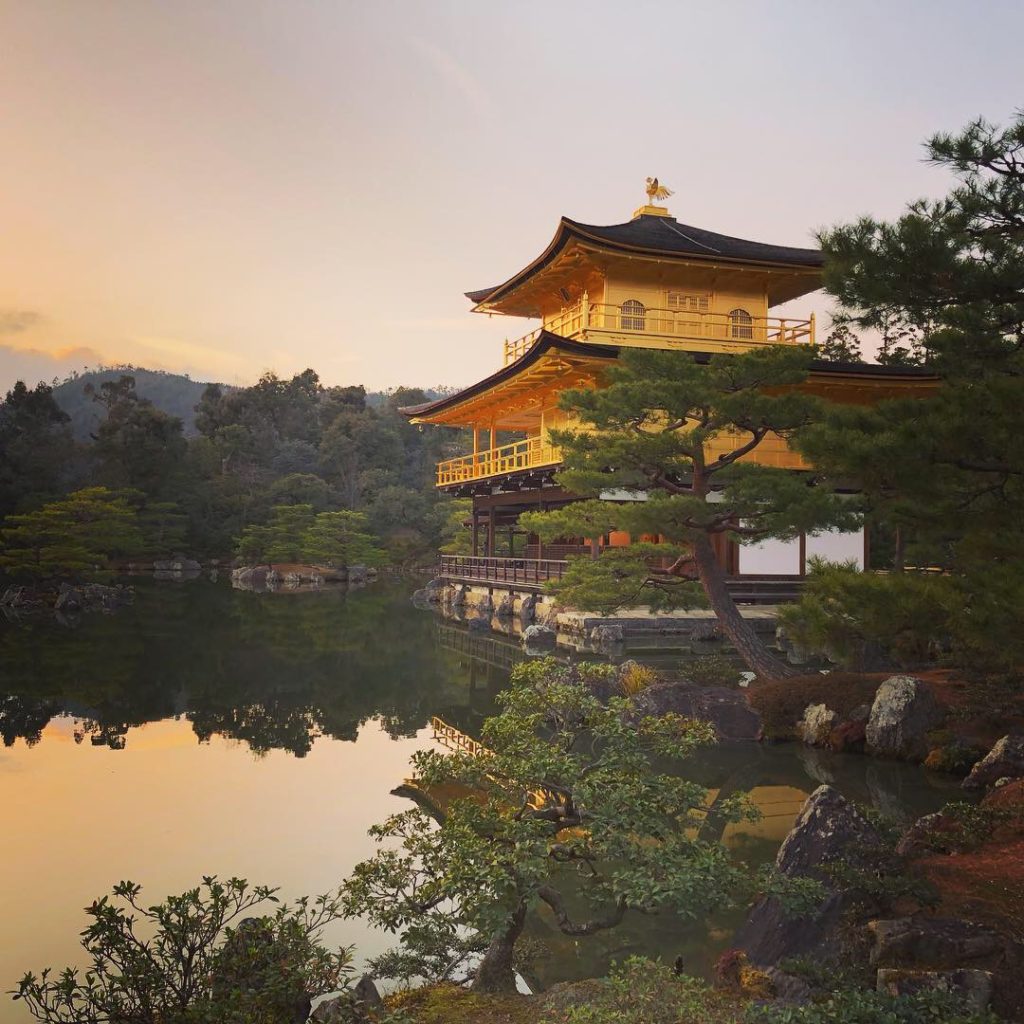
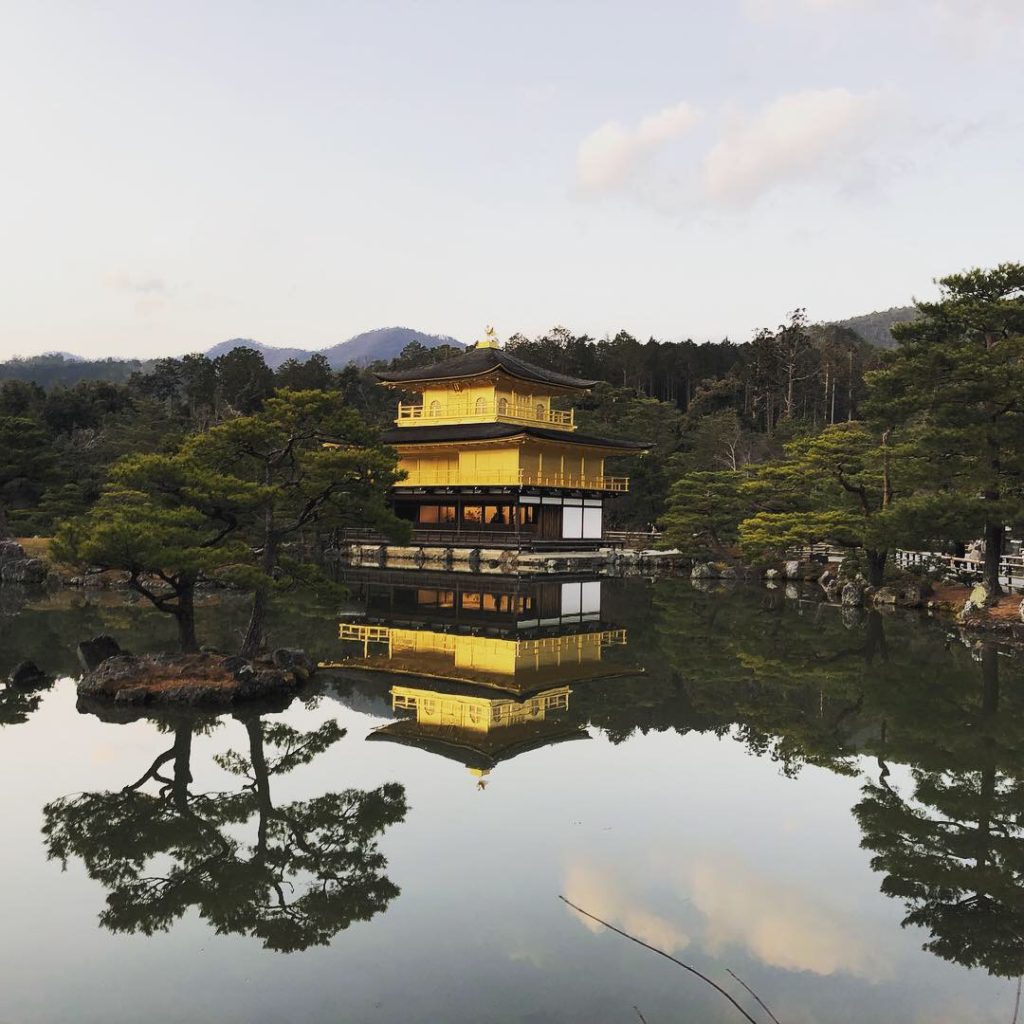
Day 14: Arashiyama Bamboo Forest and Photo Shoot
It was an easy but chilly walk from Saga-Arashiyama Station train station to the Bamboo forest. We stopped to buy a hot sweet potato from a street vendor, who wrapped it in a newspaper and told us it would be the best snack we’d ever had, or he’d give us our money back. With warm hands and full tummies, there was no refund required.
Walking into the Bamboo Forest is like entering another world. It is eerily quiet, save the rustling whispers of wind through the soaring stalks, as they sweep the sky. There is an enchantment about this place, and you find yourself staring up in awe at the swaying grove for much longer than you ever meant to.

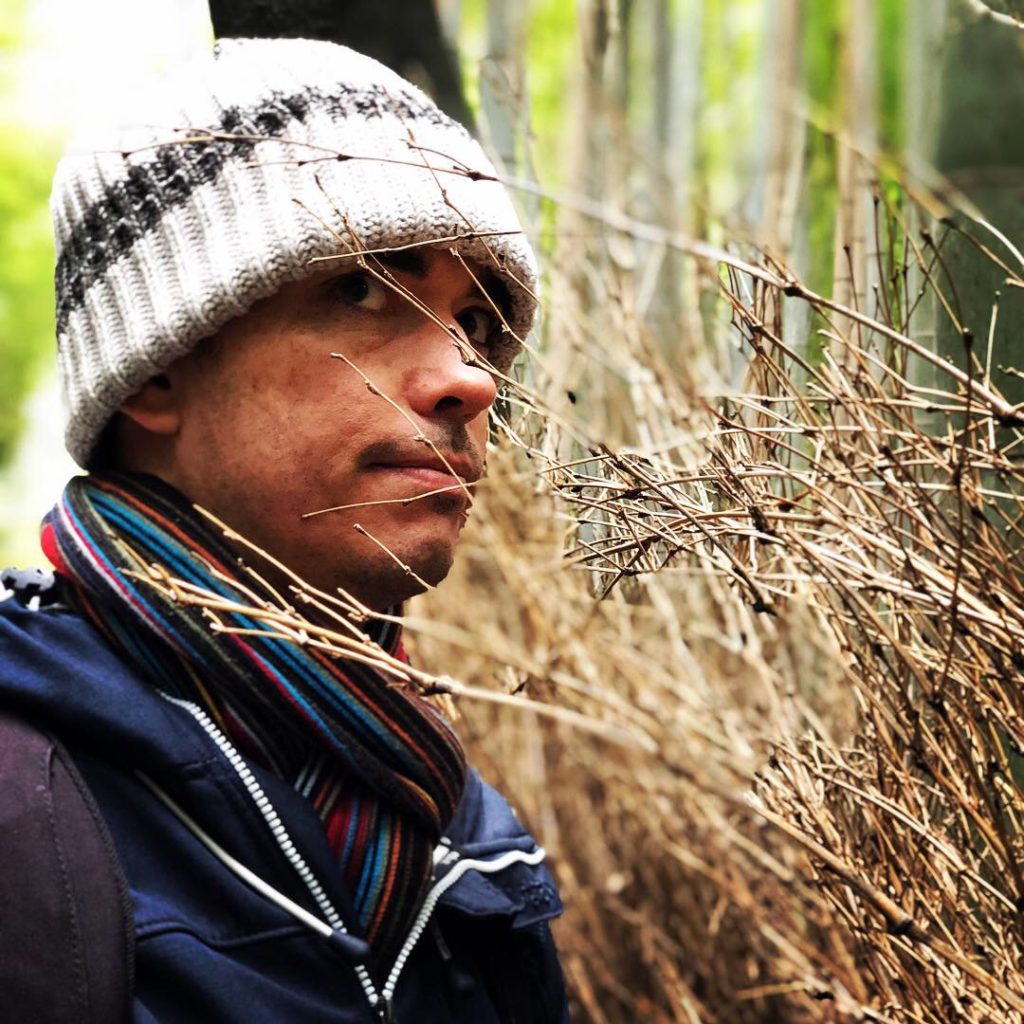
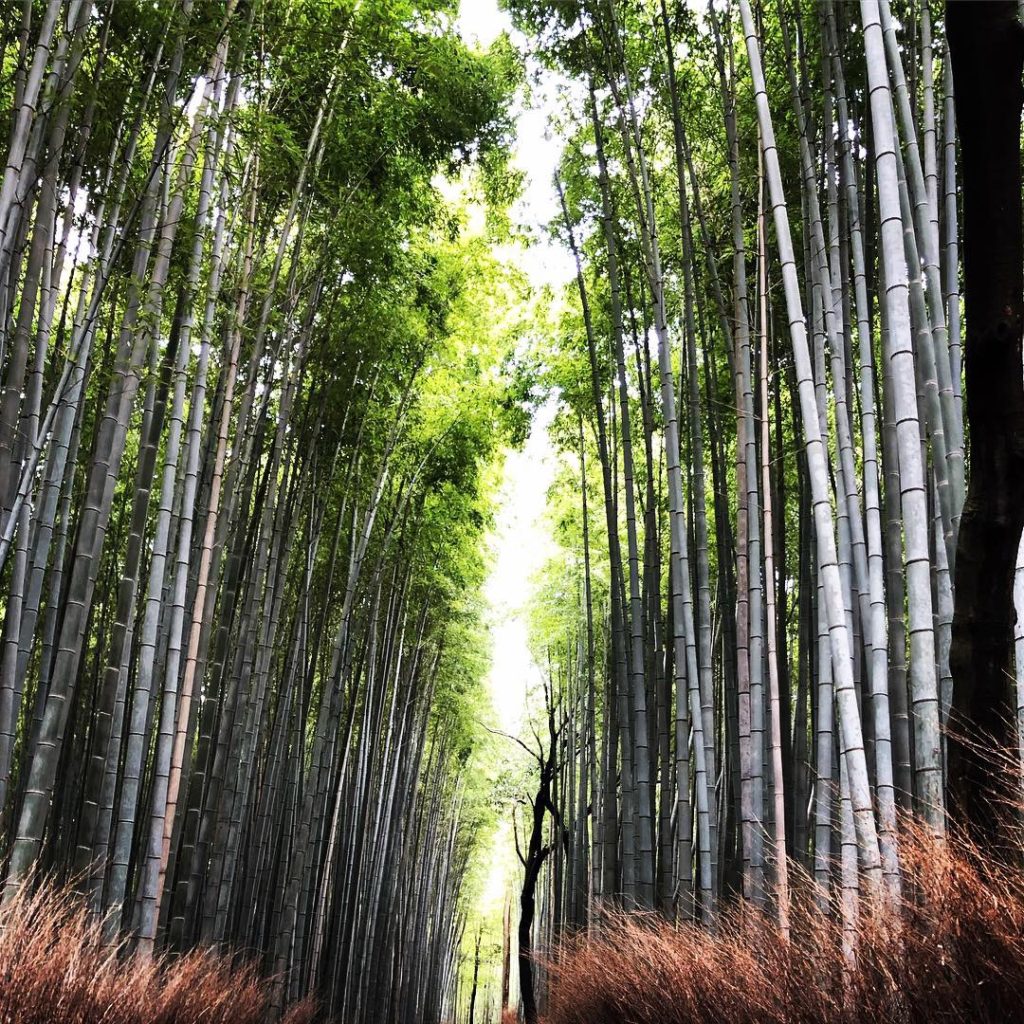
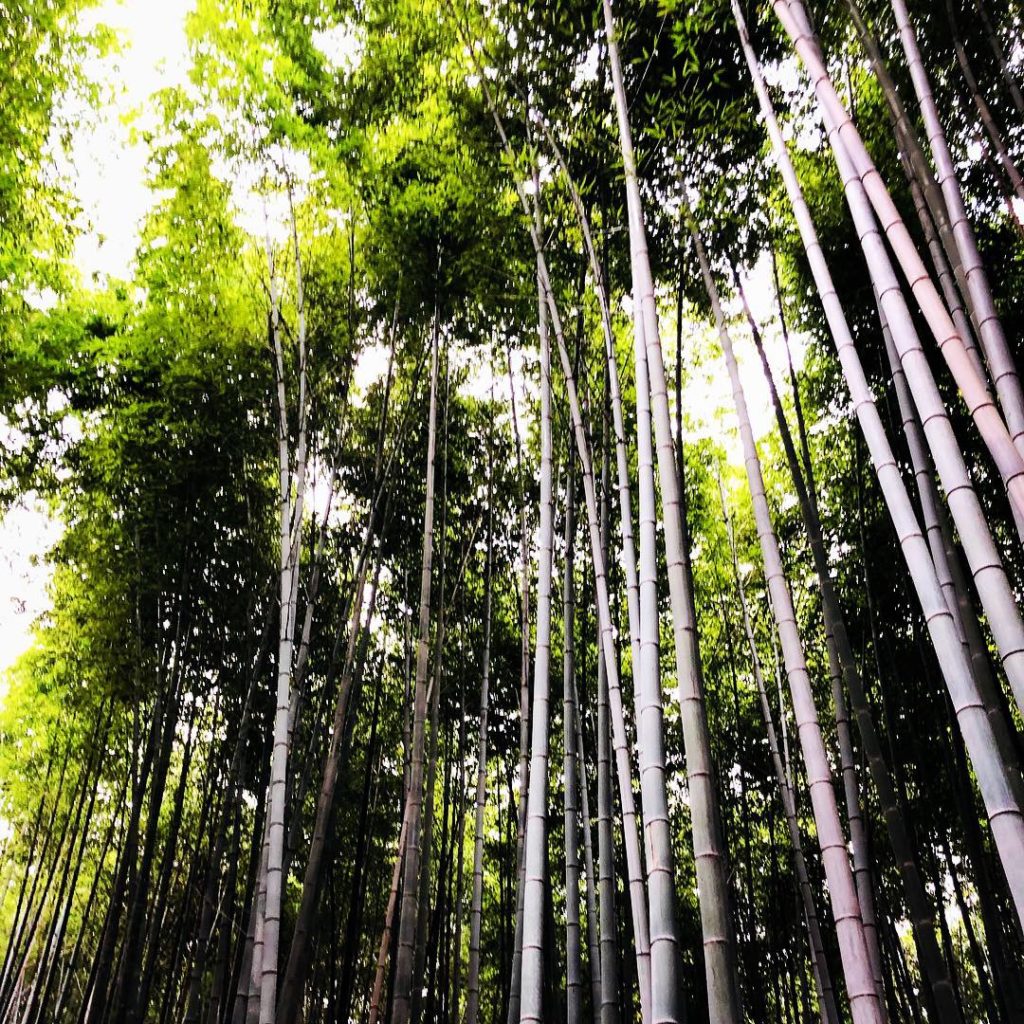
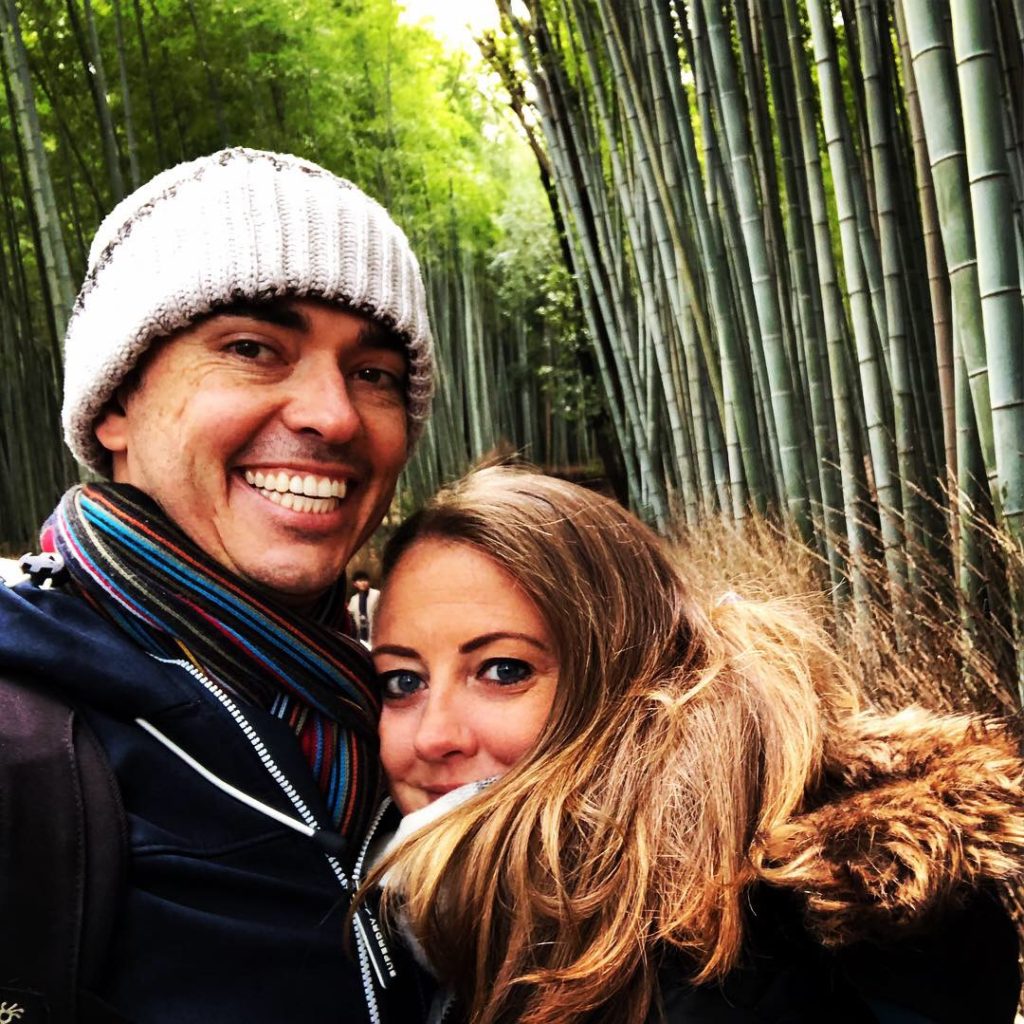
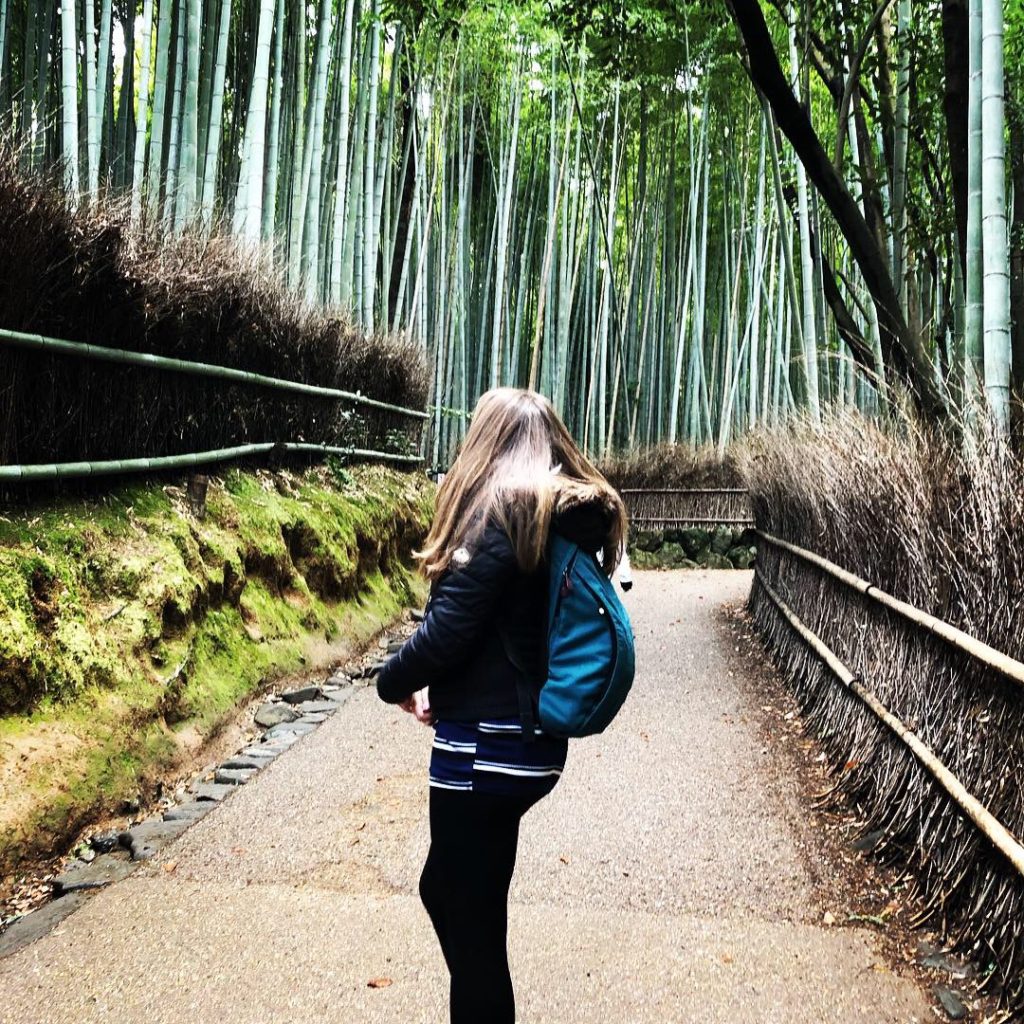

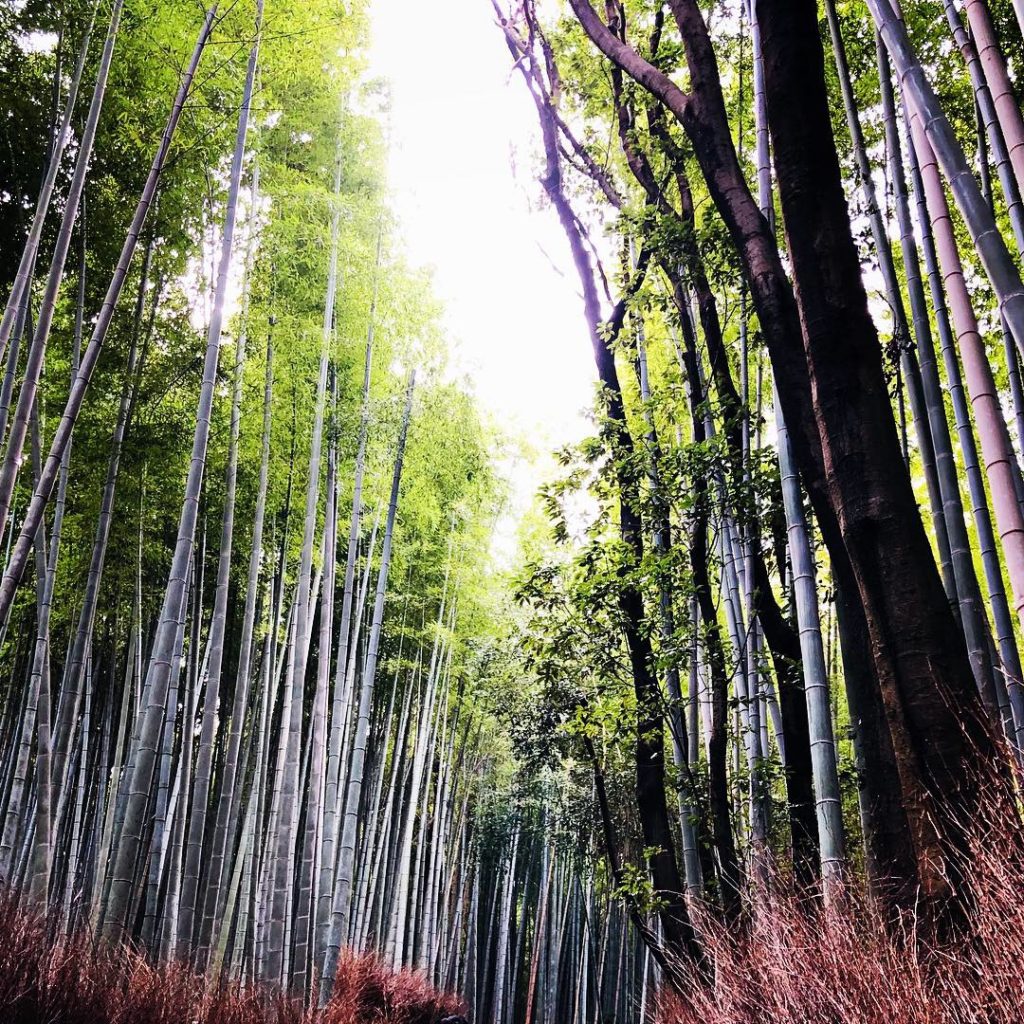
Miffy Sakura Kitchen
There was time for a quick stop at Miffy Sakura Kitchen for some adorable baked goods. If you are a fan of the cute bunny, or just scrumptious snacks in general- you will want to swing by.
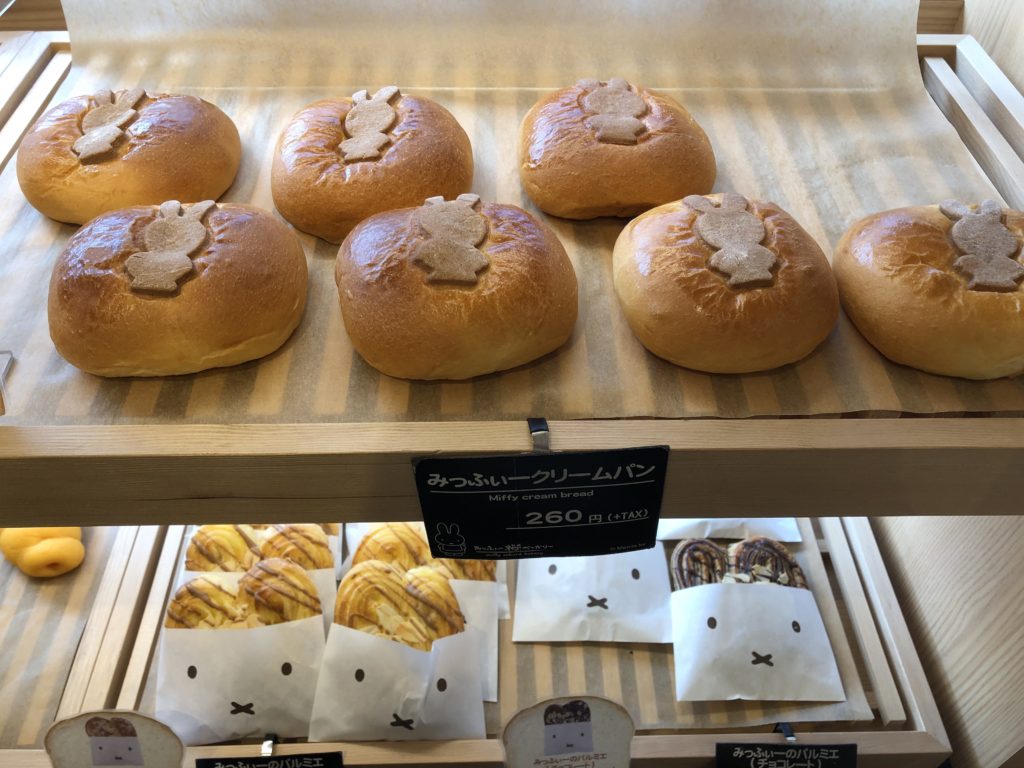
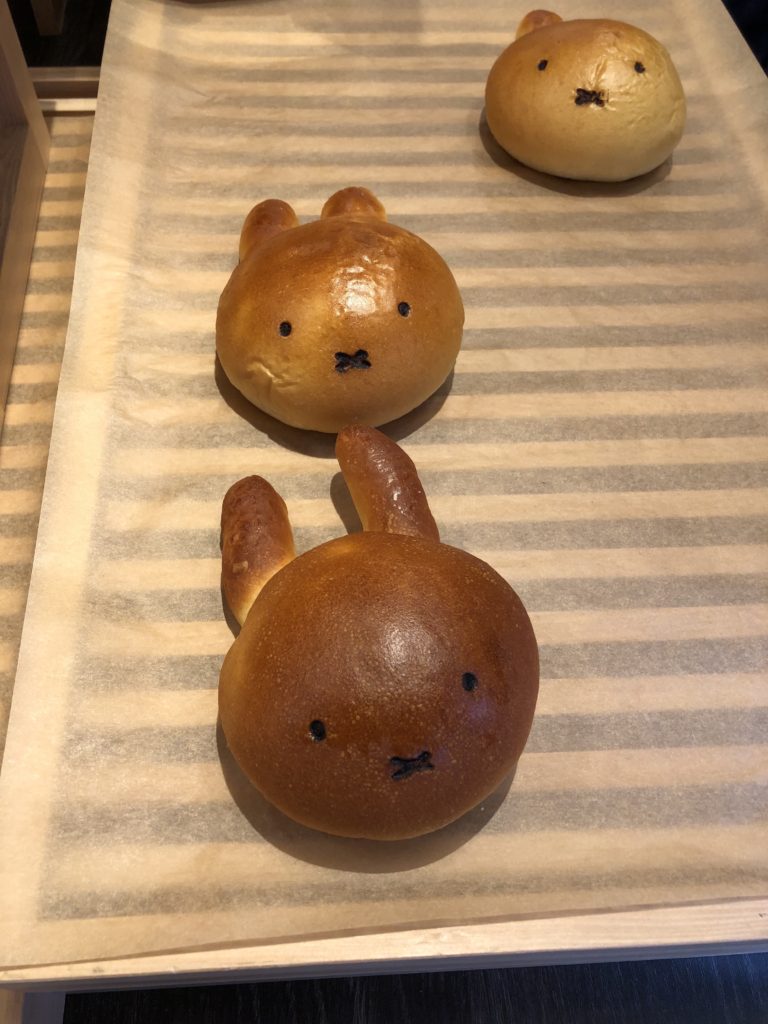
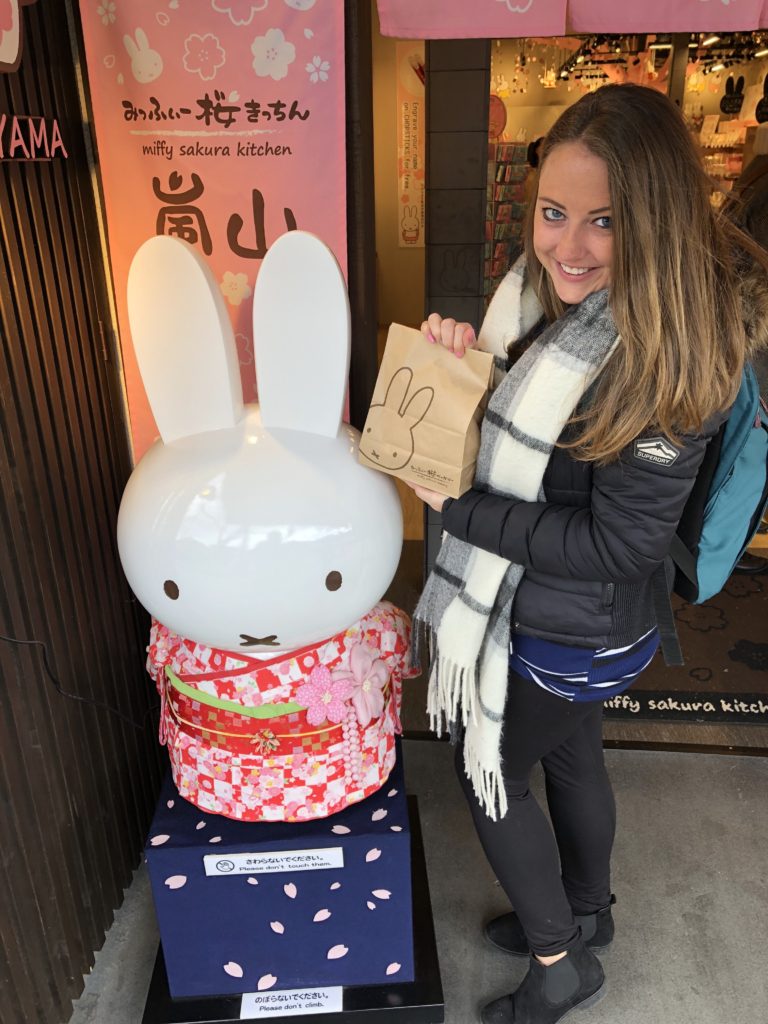
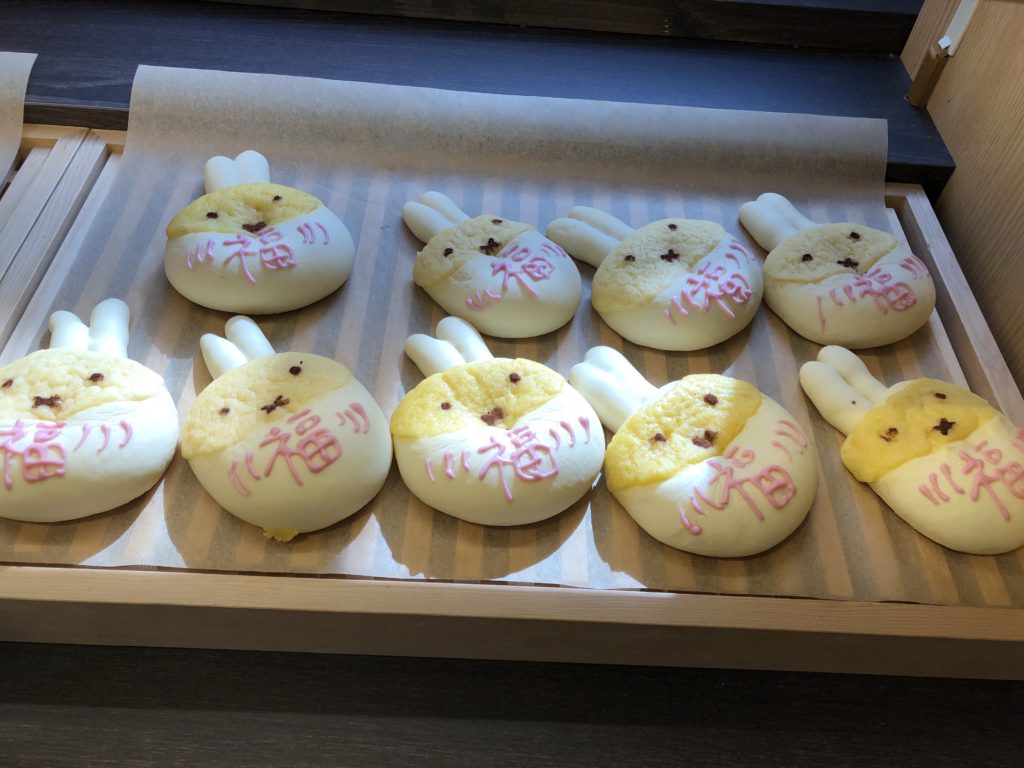
Oiran Photo Shoot
My hubs is the best insta-husband ever, patiently snapping the same picture 1000 times, knowing how much I love to treasure our travel experiences. For Christmas, he bought me a photo shoot in Kyoto, where I could dress up as a Japanese courtesan and be snapped to my heart’s content (by someone else, which, let’s face it, was also a gift for him!) 😉 Needless to say, I was ECSTATIC!
A lovely Japanese lady collected me for a hair and make-up session from the foyer. With her lack of English and my non-existent Japanese, I wondered how the makeover would turn out, but I couldn’t have been more pleased with the result. I chose the bright blue kimono to finish off the look, and I felt like a million dollars. I didn’t want to take it off!
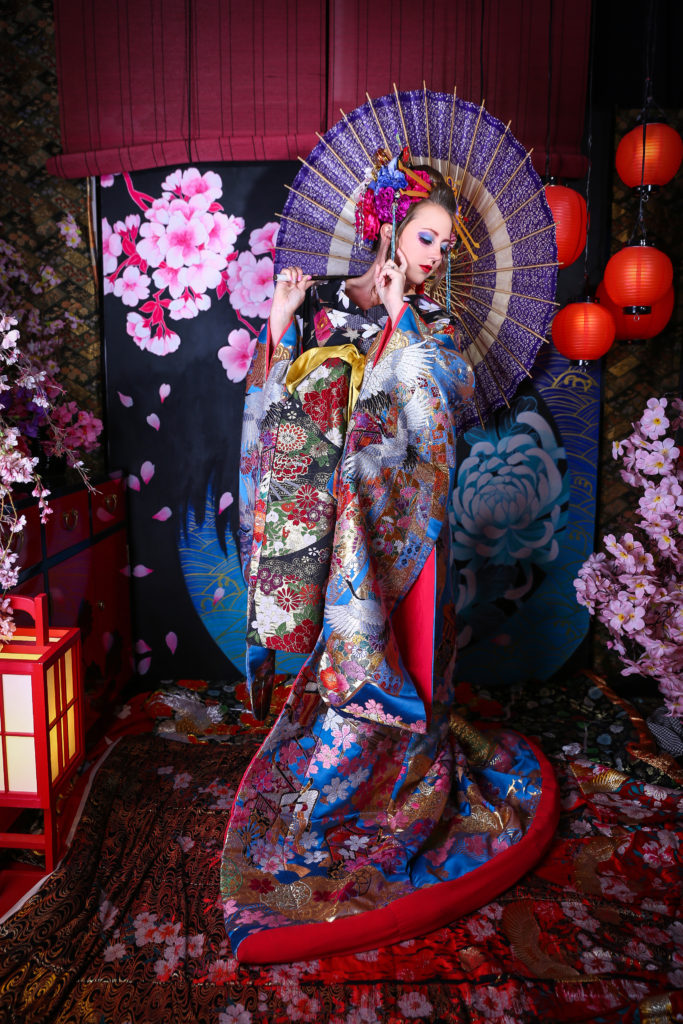
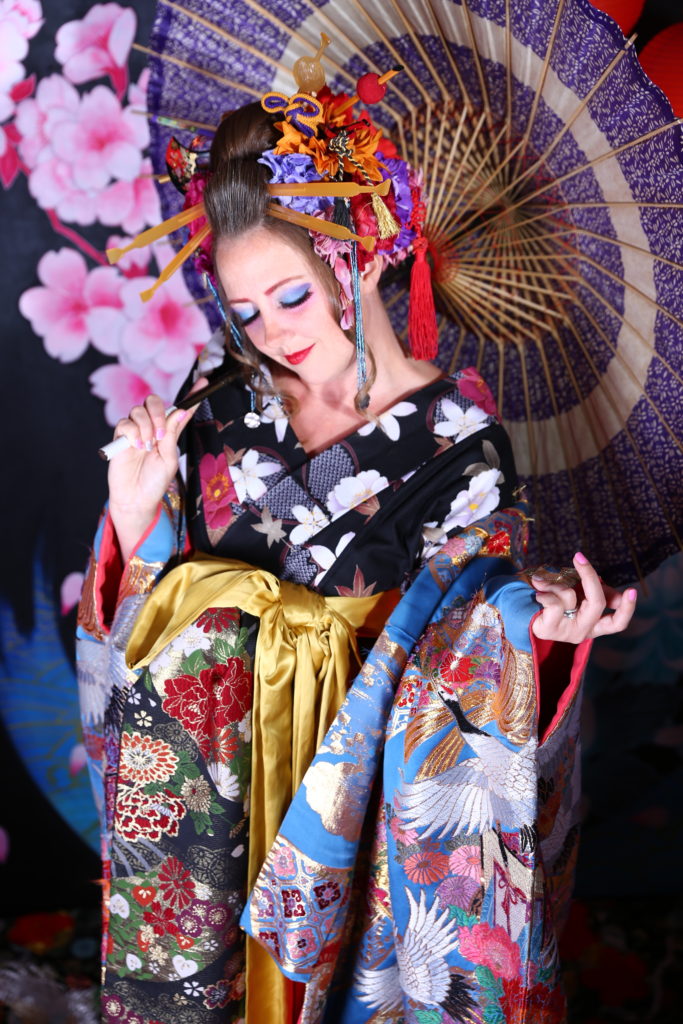

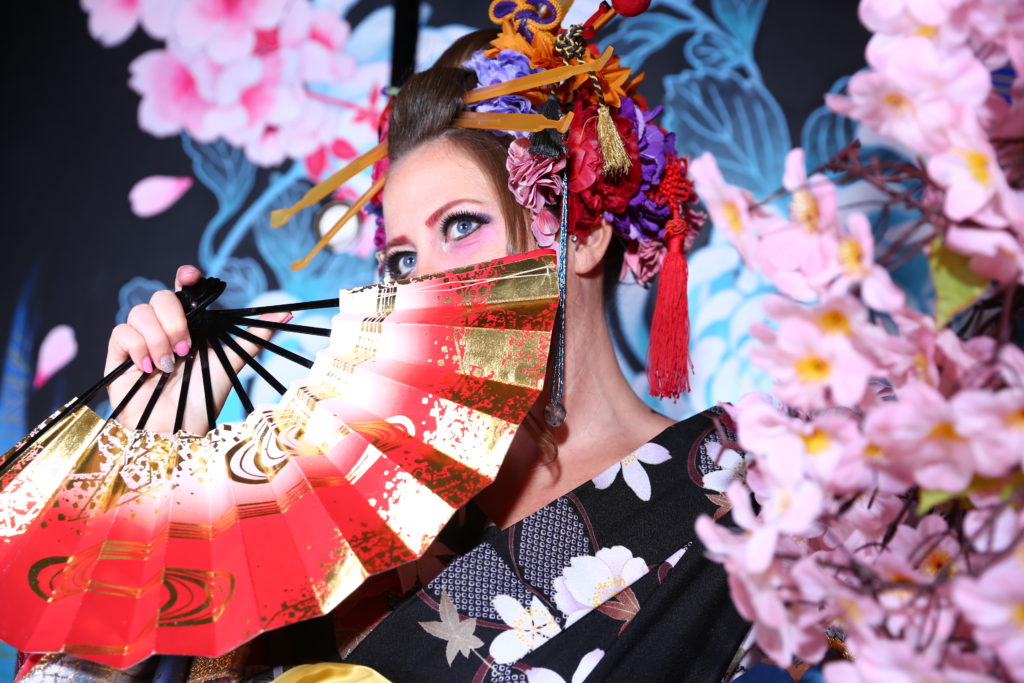
Day 15: Mijiyama and Itsukushima Shrine
We’d heard that the island of Mijiyama was one of the most scenic spots in Japan, boasting a unique floating shrine, as well as being home to more than a thousand cute Sika deer, so we were determined to fit it into our trip. (Did I mention DEER?!)
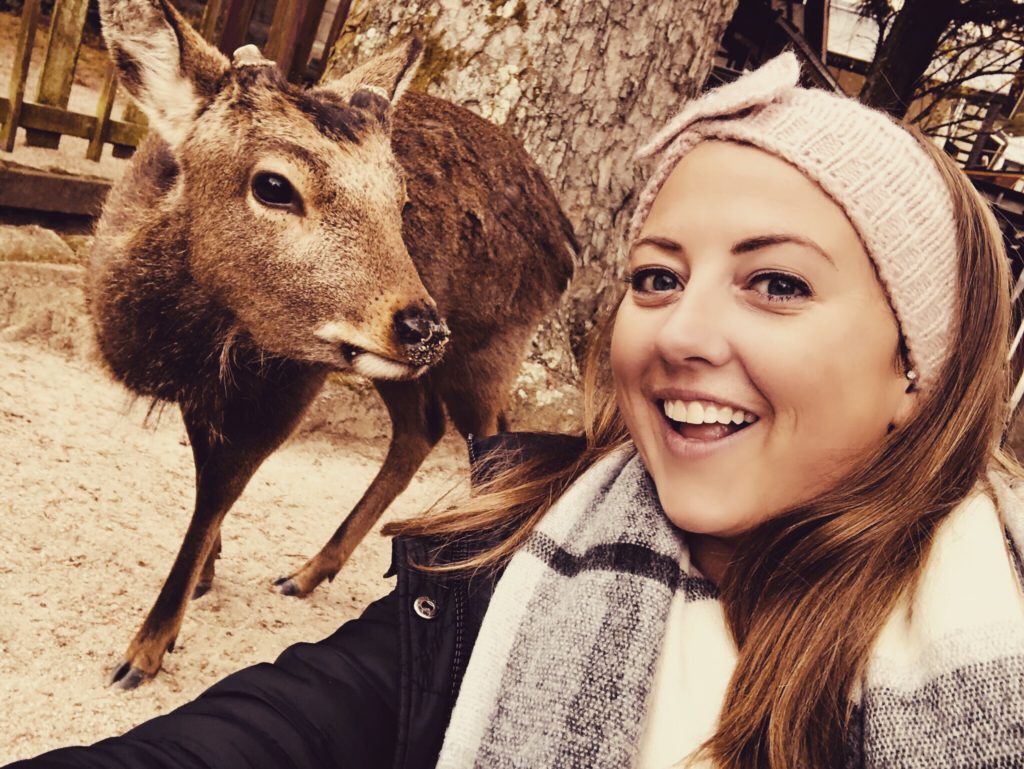
Most people do this as a day trip, and that’s certainly something to consider if you are tight on time. However, we really wanted to see the floating Tori gate at night and to experience the calm lull of the island as the day trippers left on the last ferry home, so we decided to do an overnight stay.
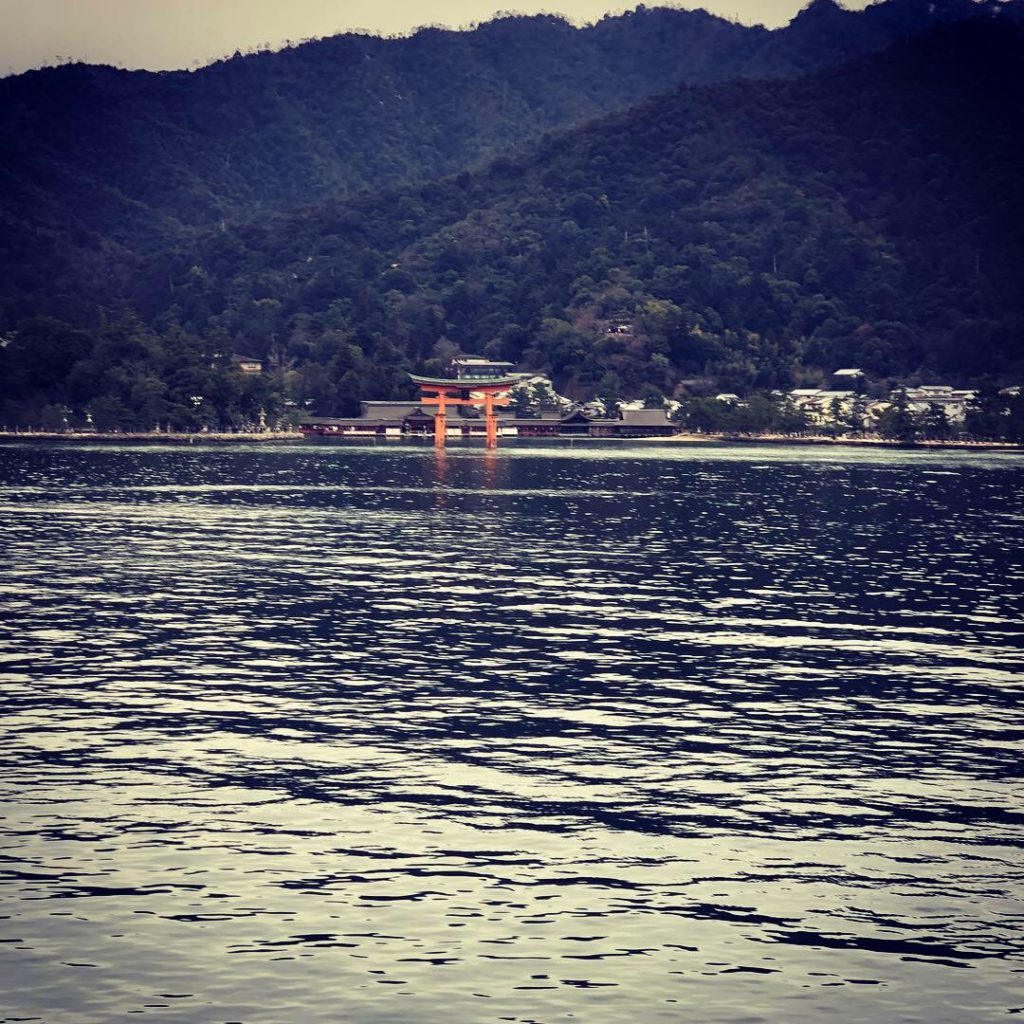
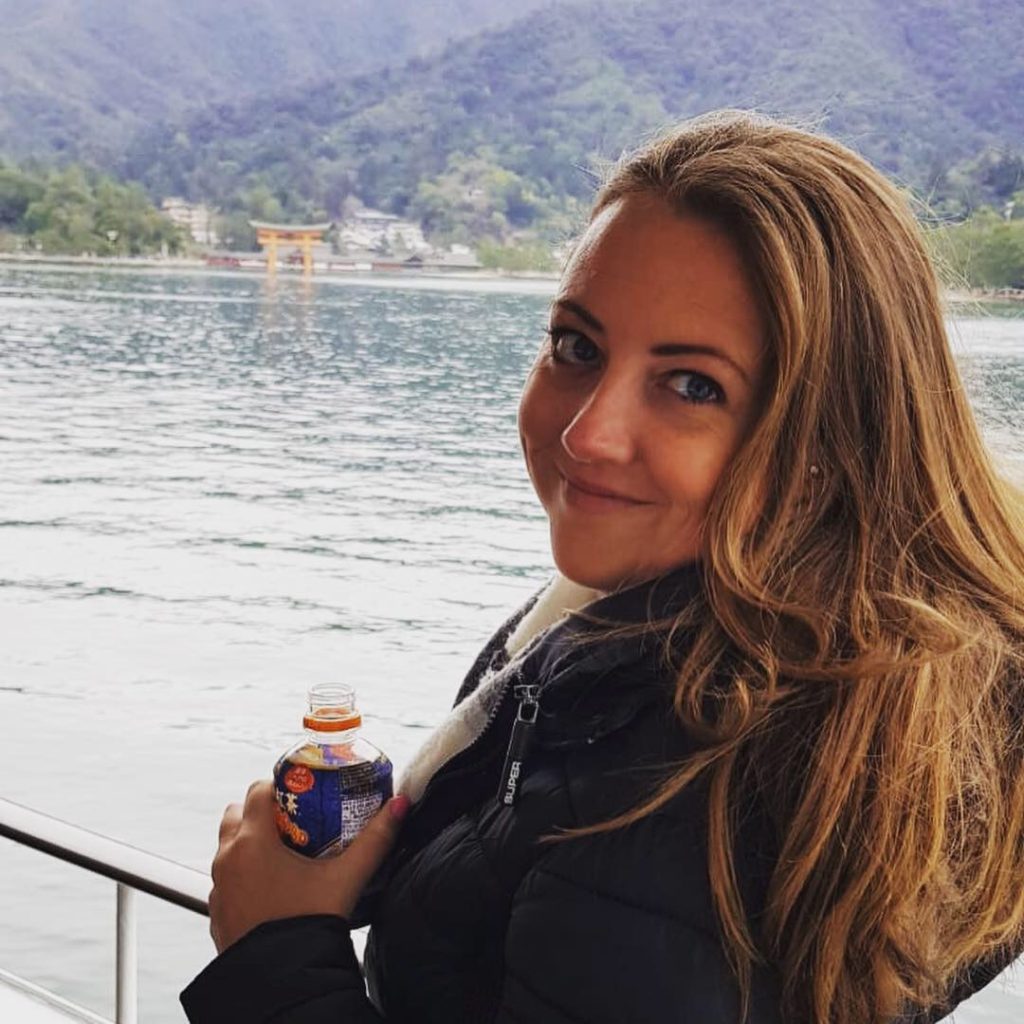
We stayed at Hotel Kikunoya, which had a foot bath bar out the front and a lovely onsen inside. If you give them a call from
First stop was the mystical Itsukushima Shrine. It was built on the water and is best known for its famous floating Tori gate. During high tide, the orange arch looks like it is literally floating above the water out to sea, and it is just stunning.
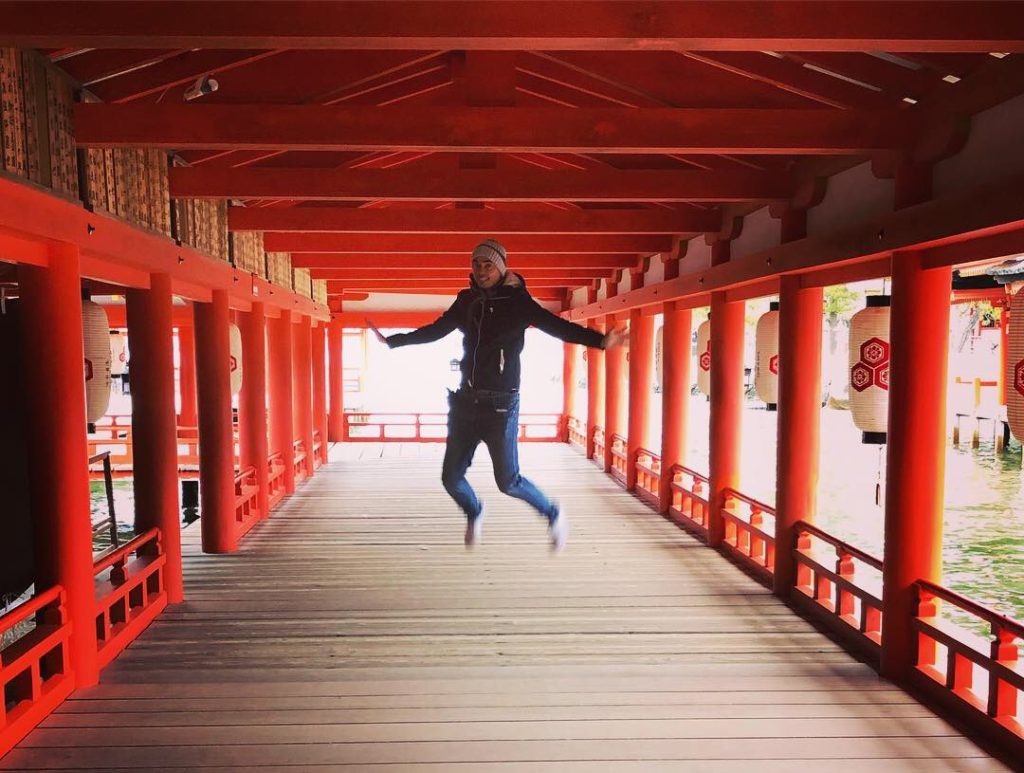
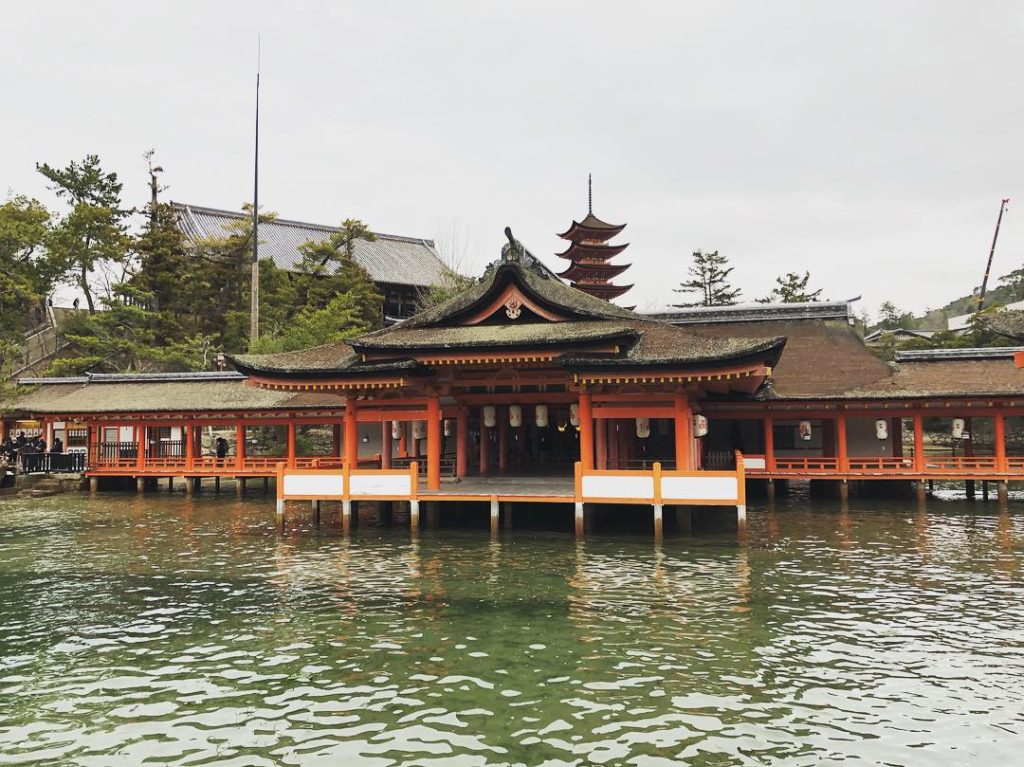
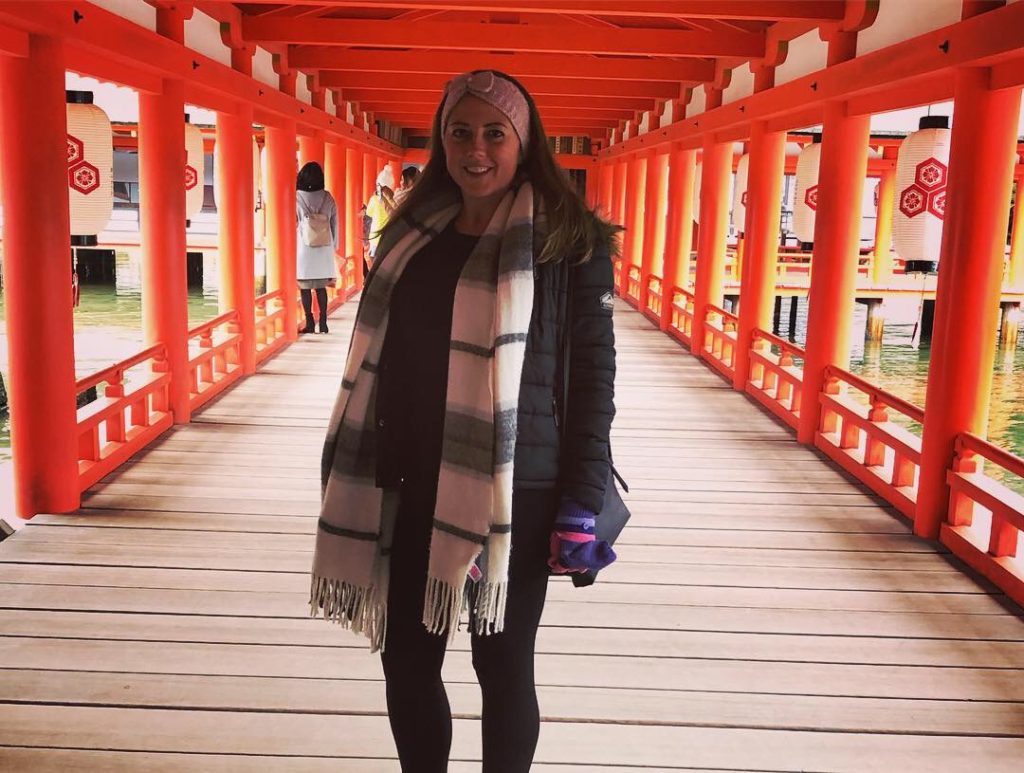
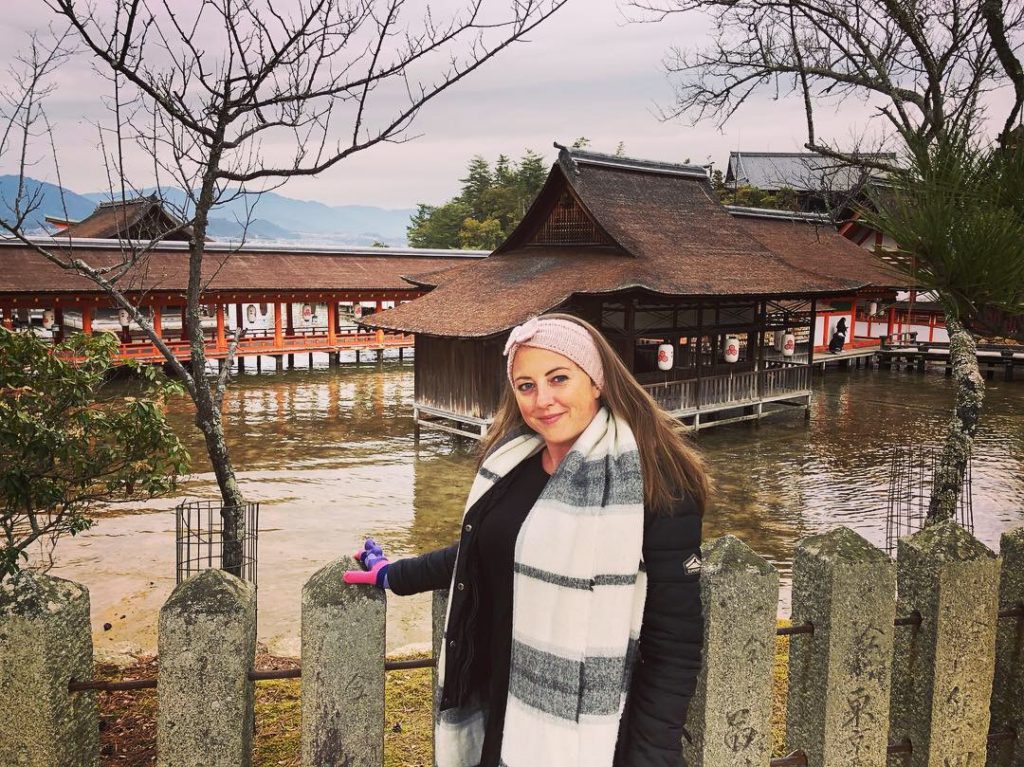
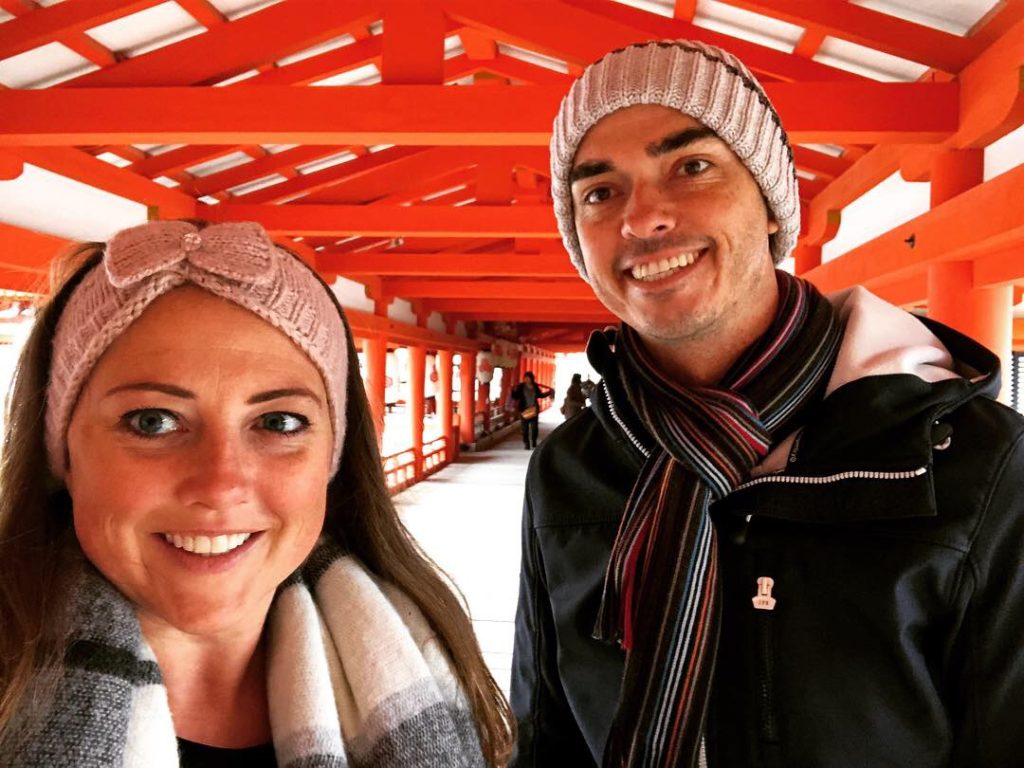
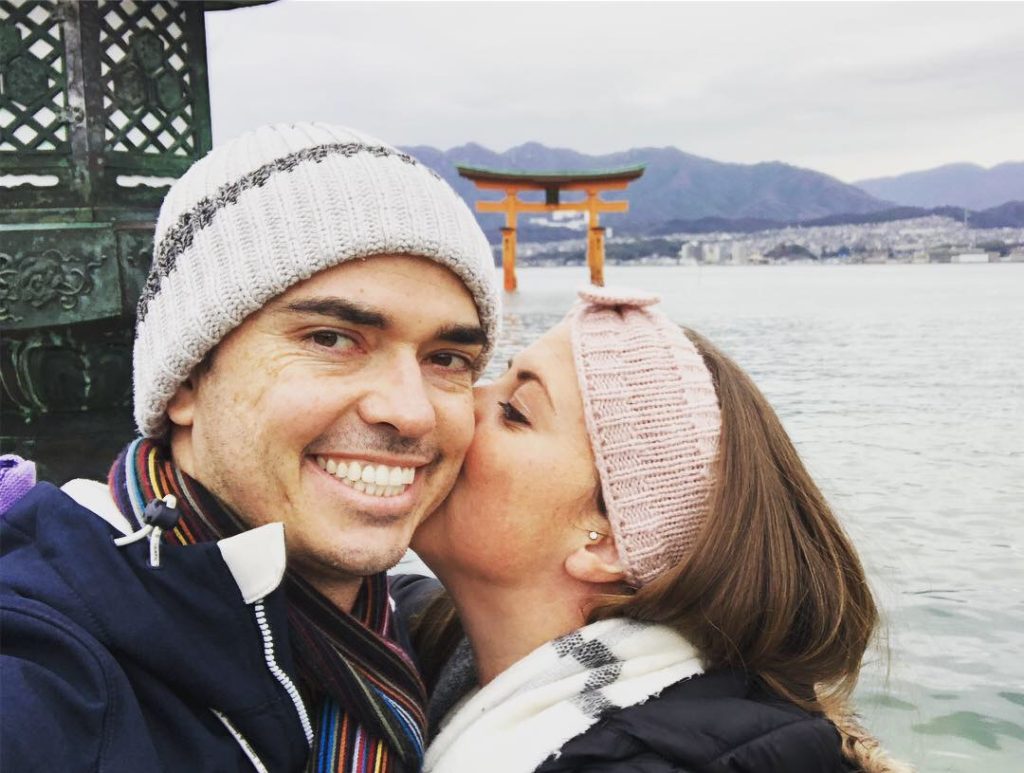
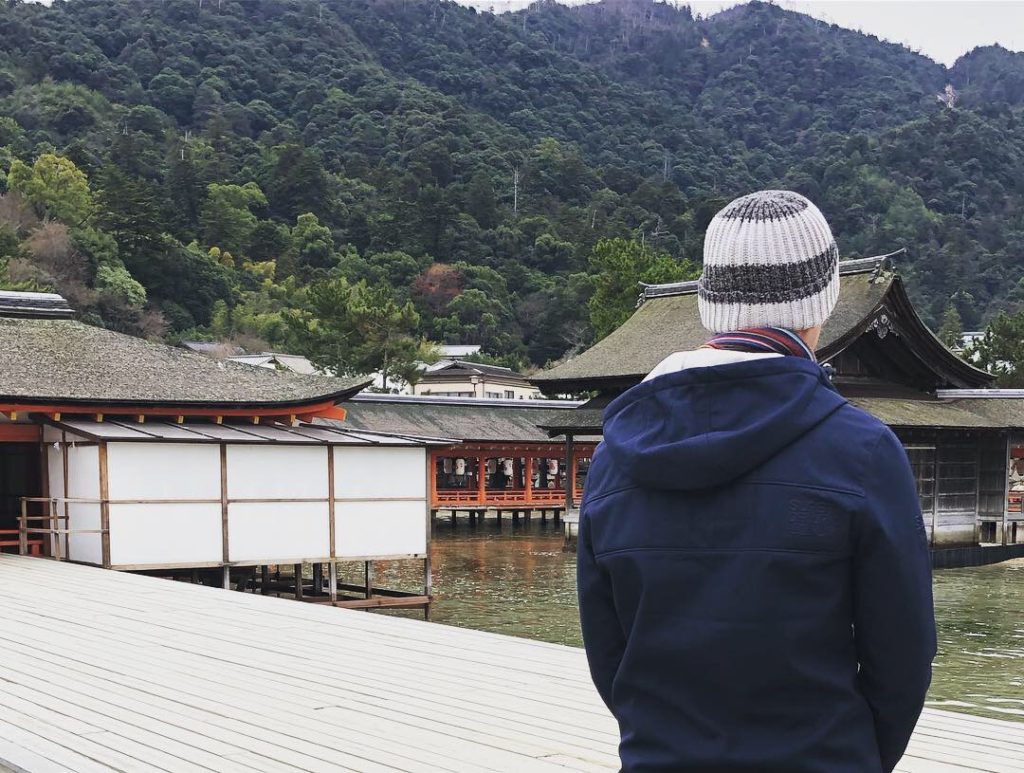
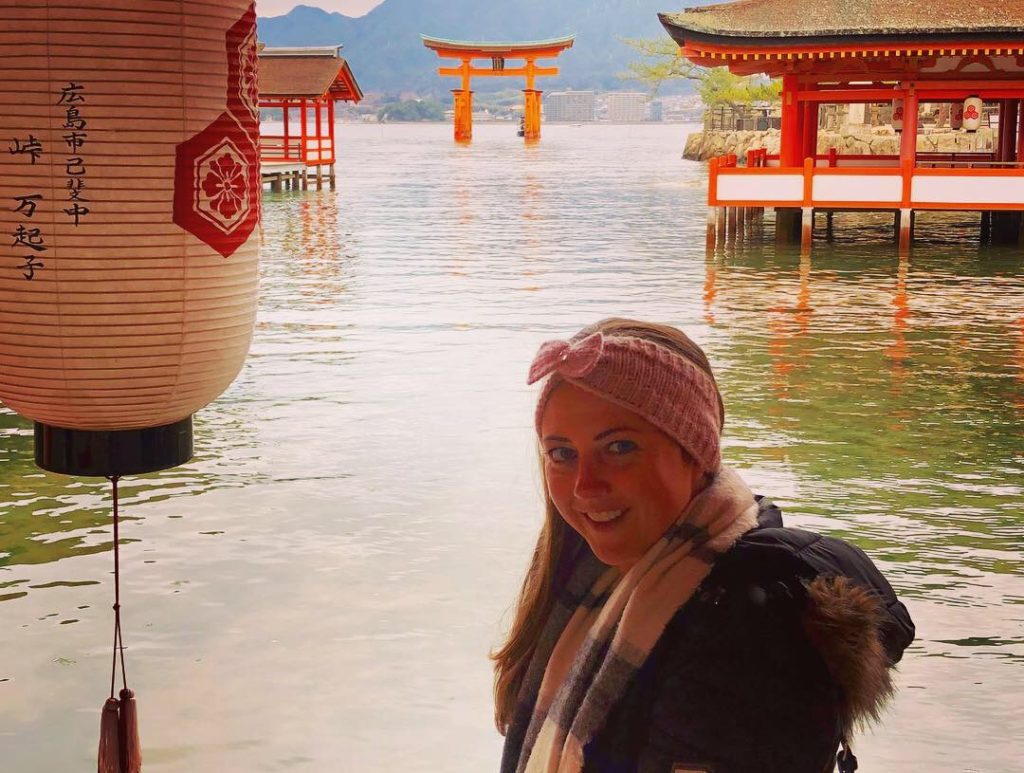
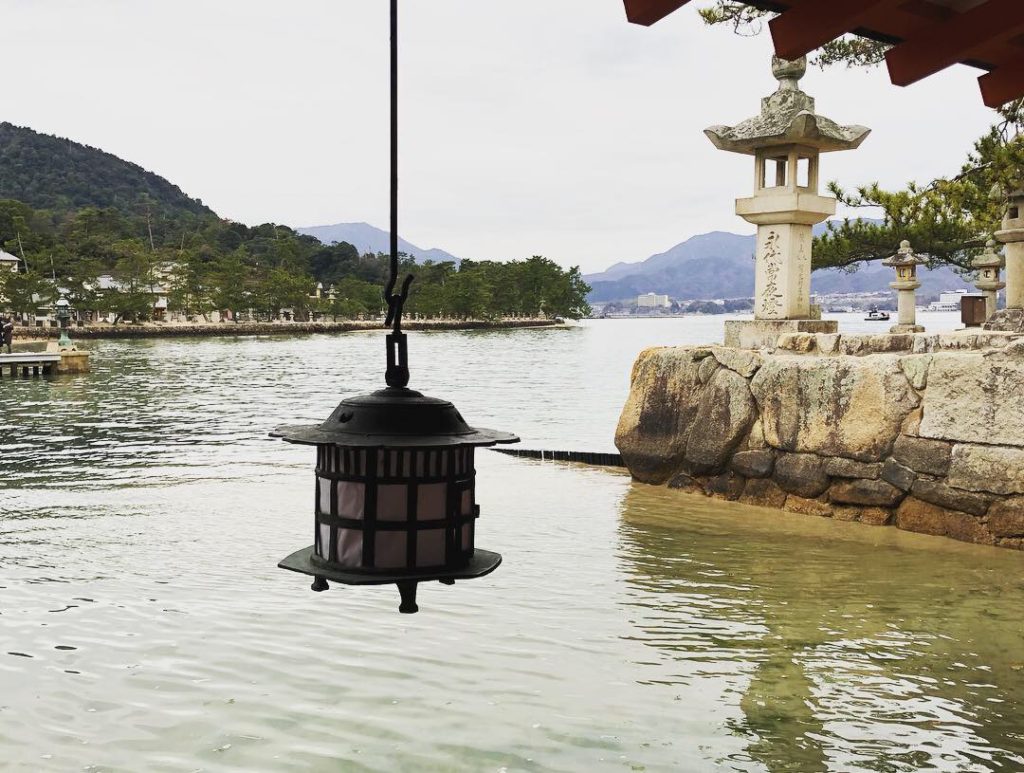
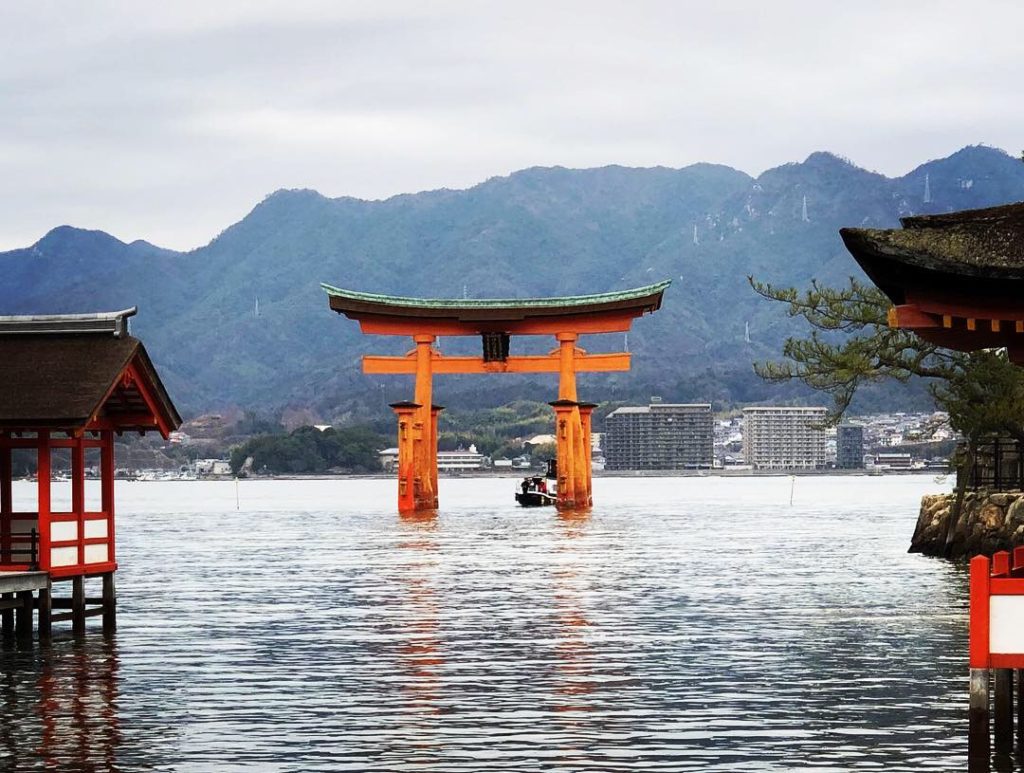
We decided to make the most of the daylight and take the cable car up to Mount Misen. What we didn’t realise is that it was so high, it required TWO cables cars- and then a hike to the summit. (I believe you can hike the whole thing if you are keen, but we were short on time, so this was a great option for us.)
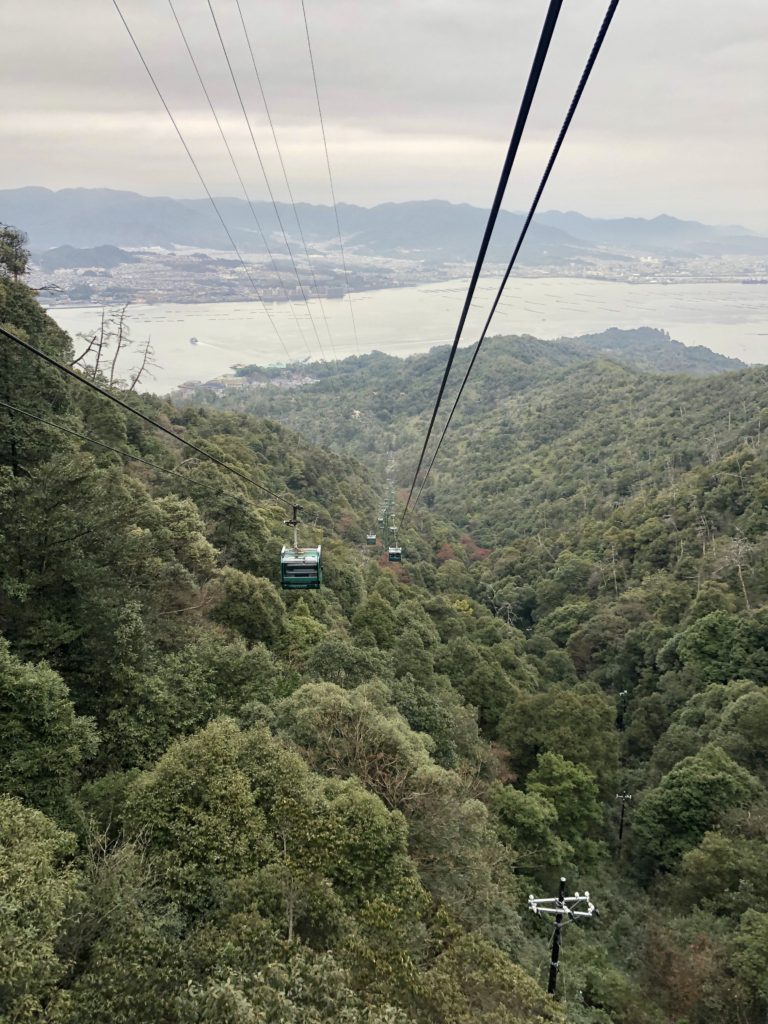
This sacred mountain is the tallest in Mijiyama and is said to be where Buddhism was first practised by Kobo Daishi, a Japanese Buddhist monk. Despite not being religious myself, the peaceful practices of Buddhism have always resonated with me, and so I was excited to experience this important spiritual place in all its glory.
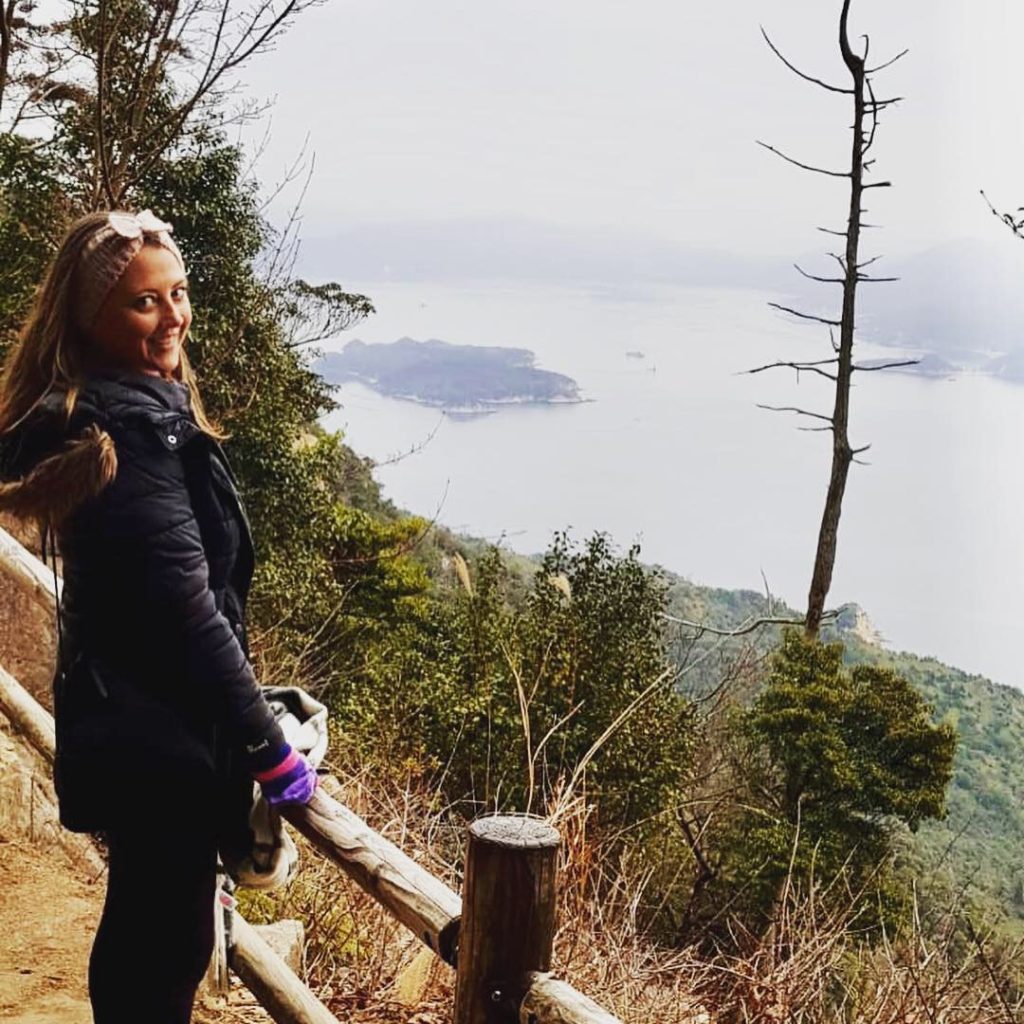

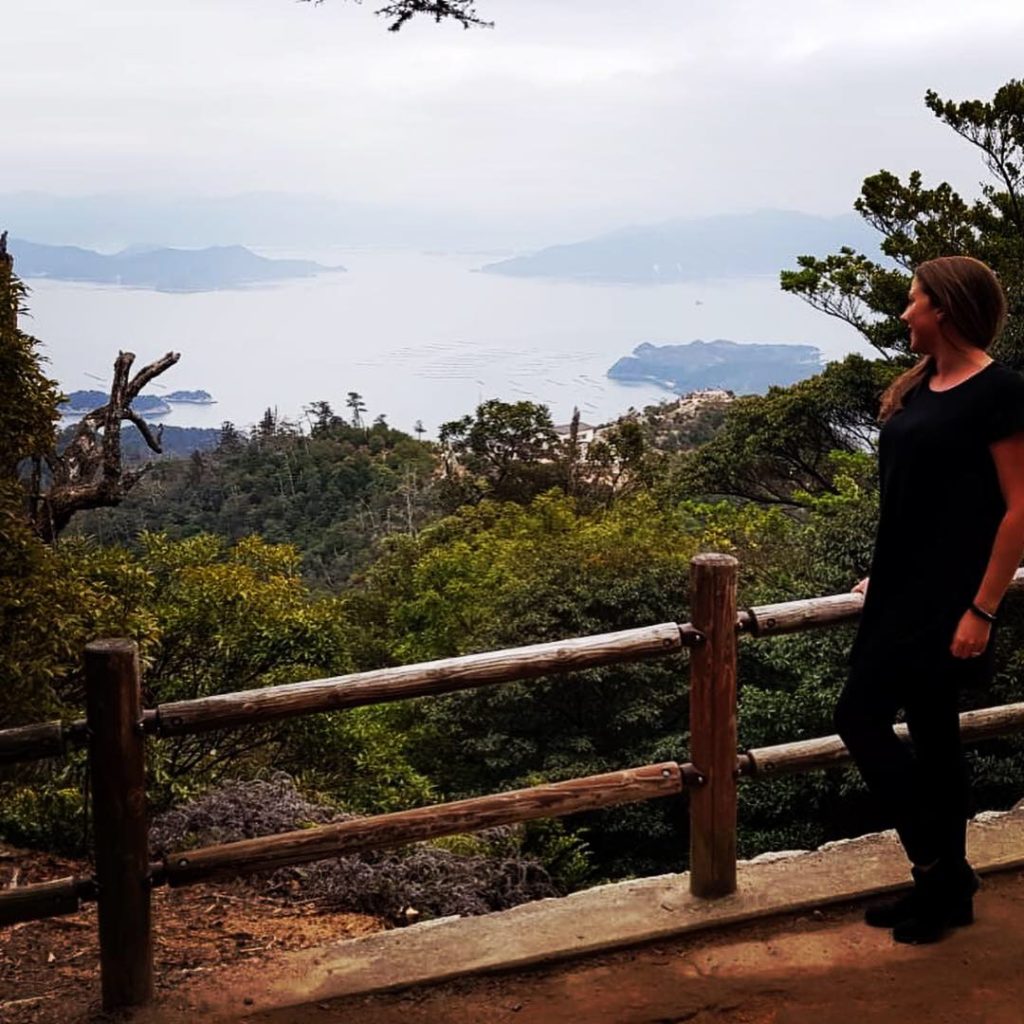
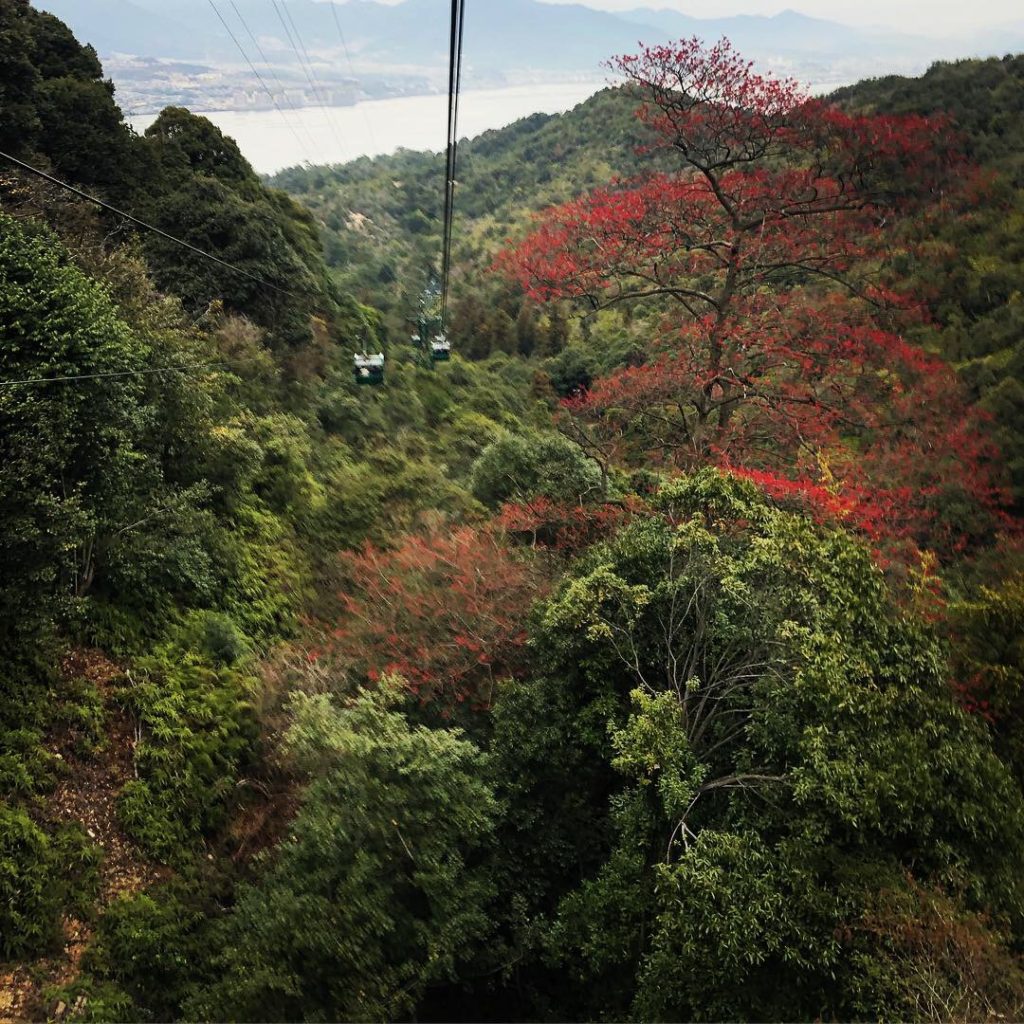
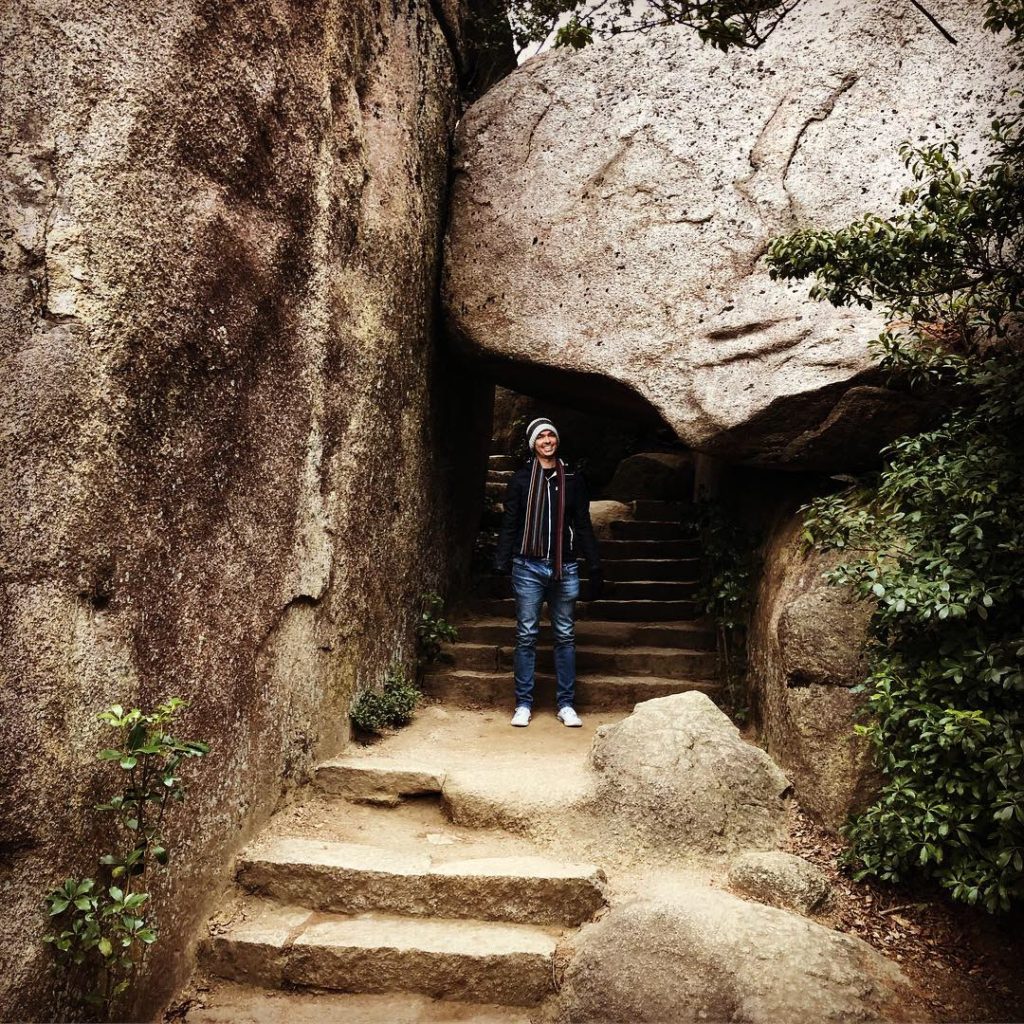
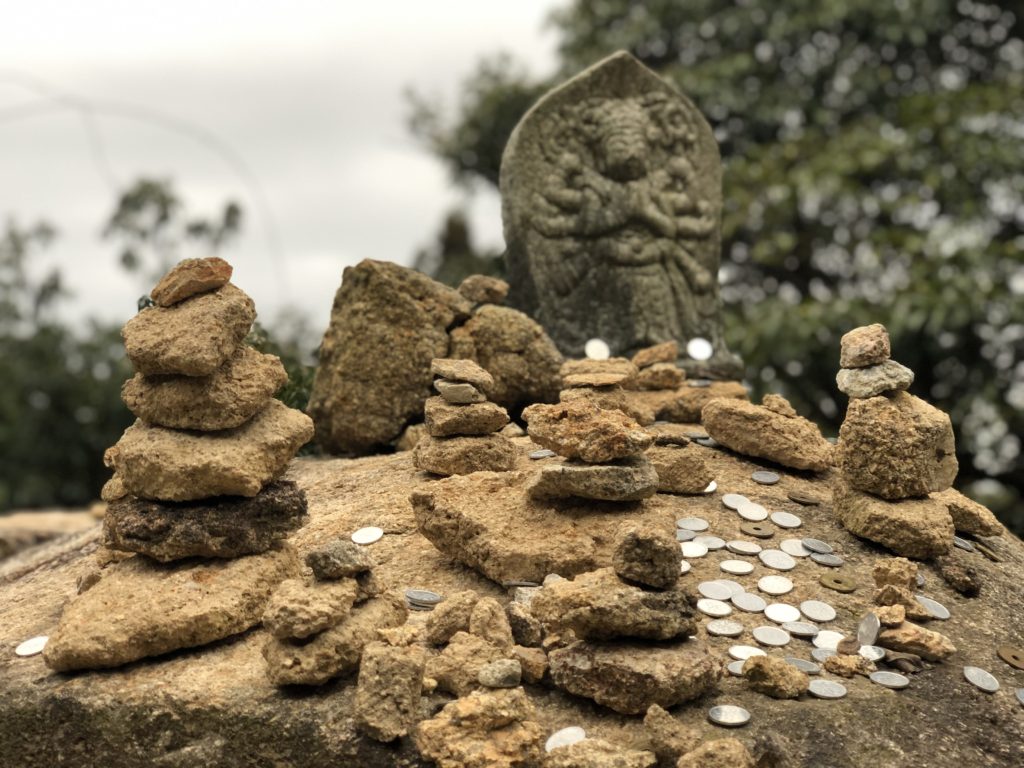
We climbed the forest trail, stopping to rest and admire the spectacular views over the Seto Inland Sea, before passing Reikado, the Hall of the Spiritual Flame. This hall protects a flame which Kobo Daishi is said to have lit when he began worshipping on the mountain and has been burning ever since. Later, The fire lit the Flame of Peace in Hiroshima’s Peace Park.
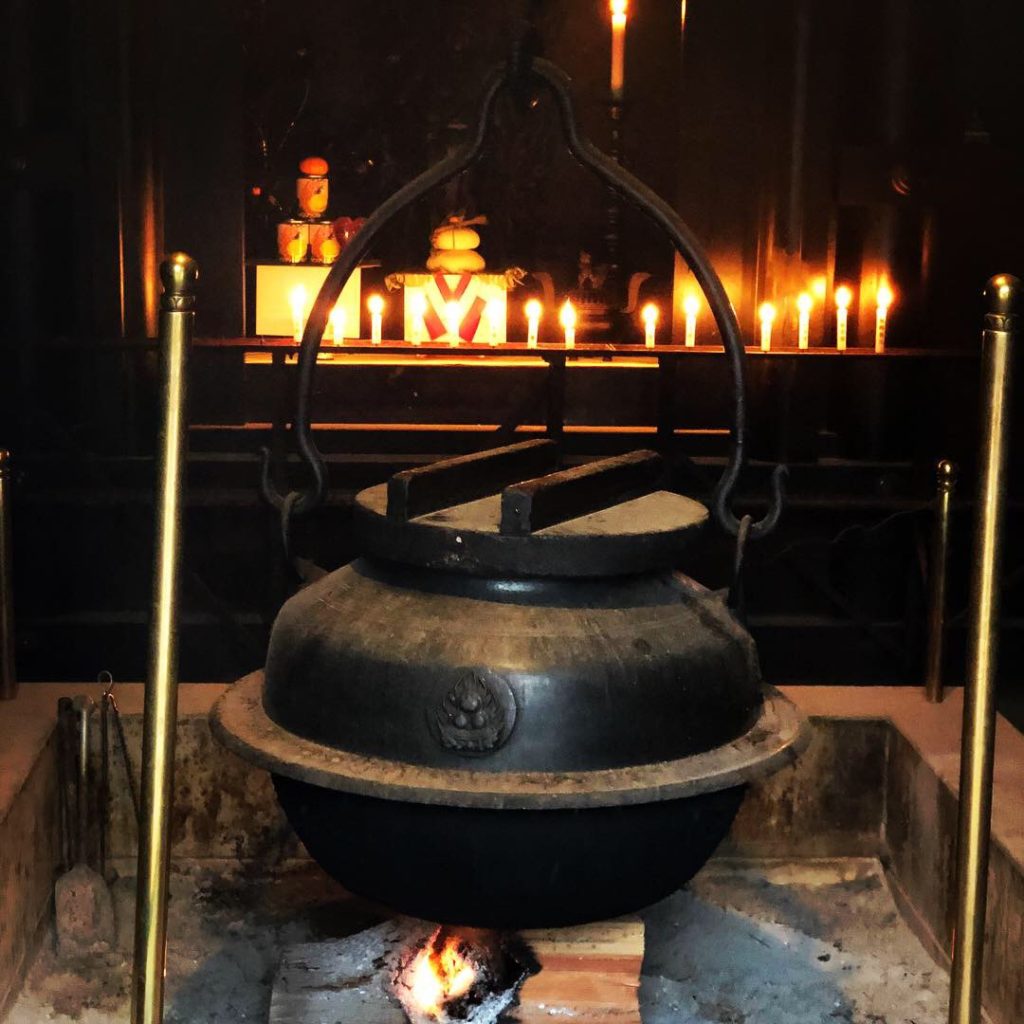
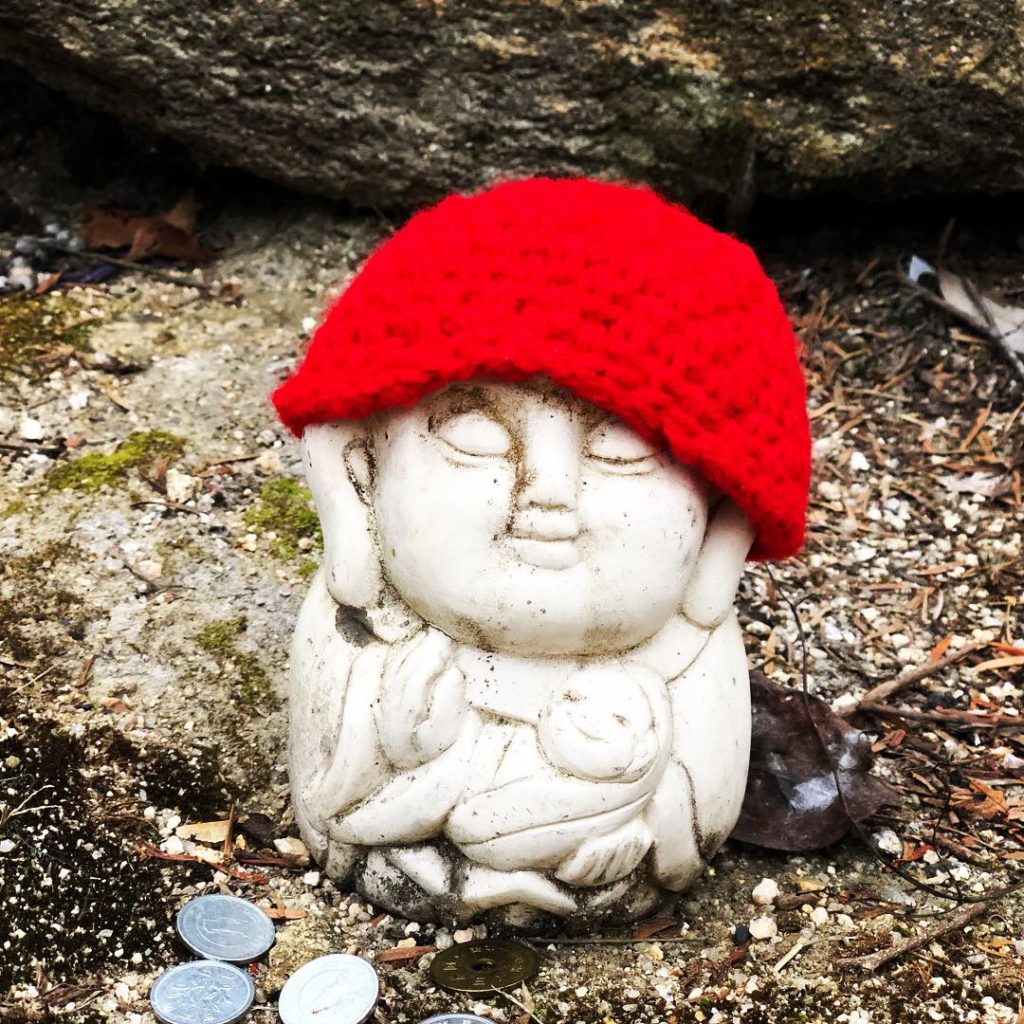
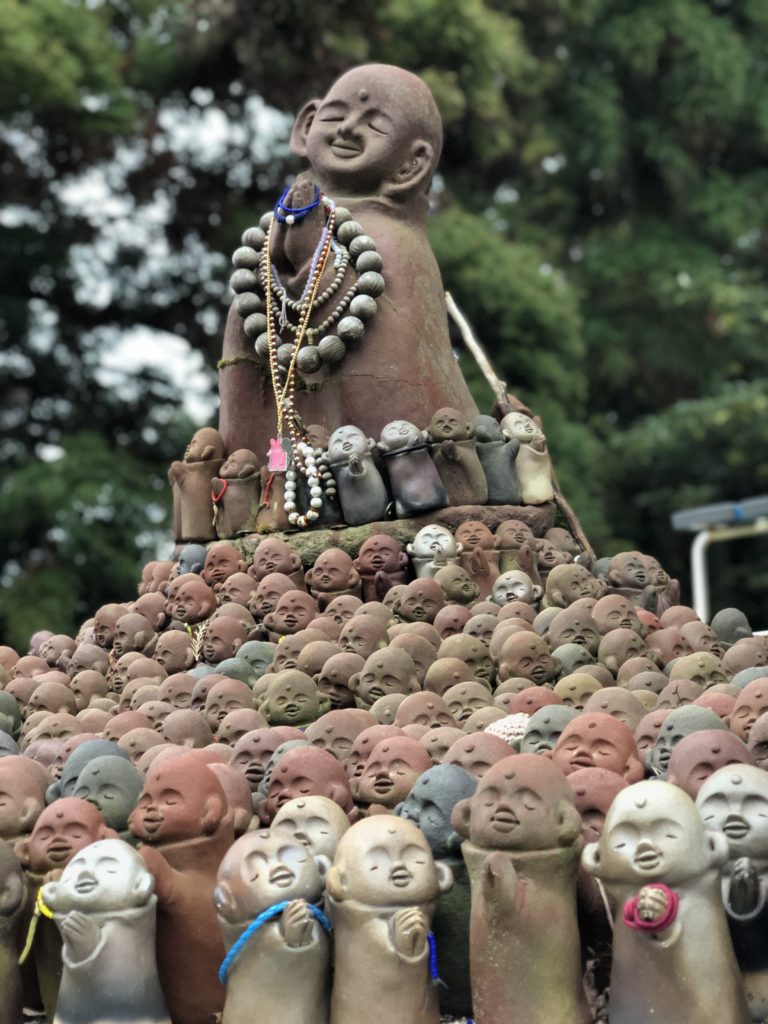
At the Summit, we paused in the silence, to reflect on our journey, and how thankful we were for all the amazing experiences we’d had in Japan so far..
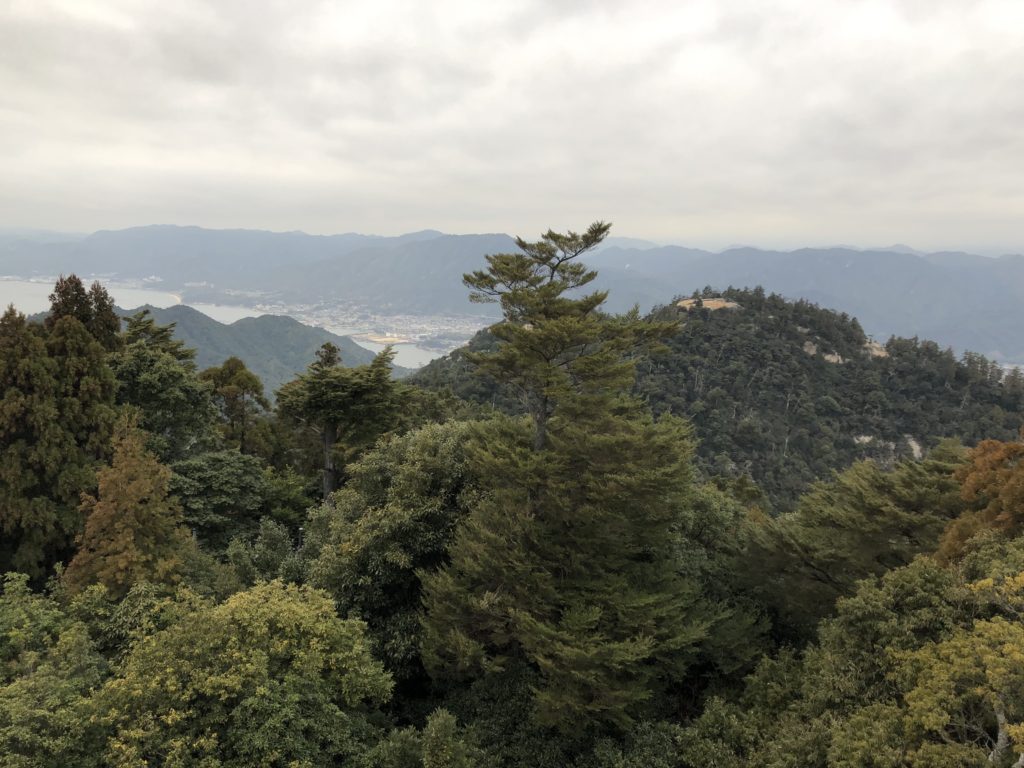
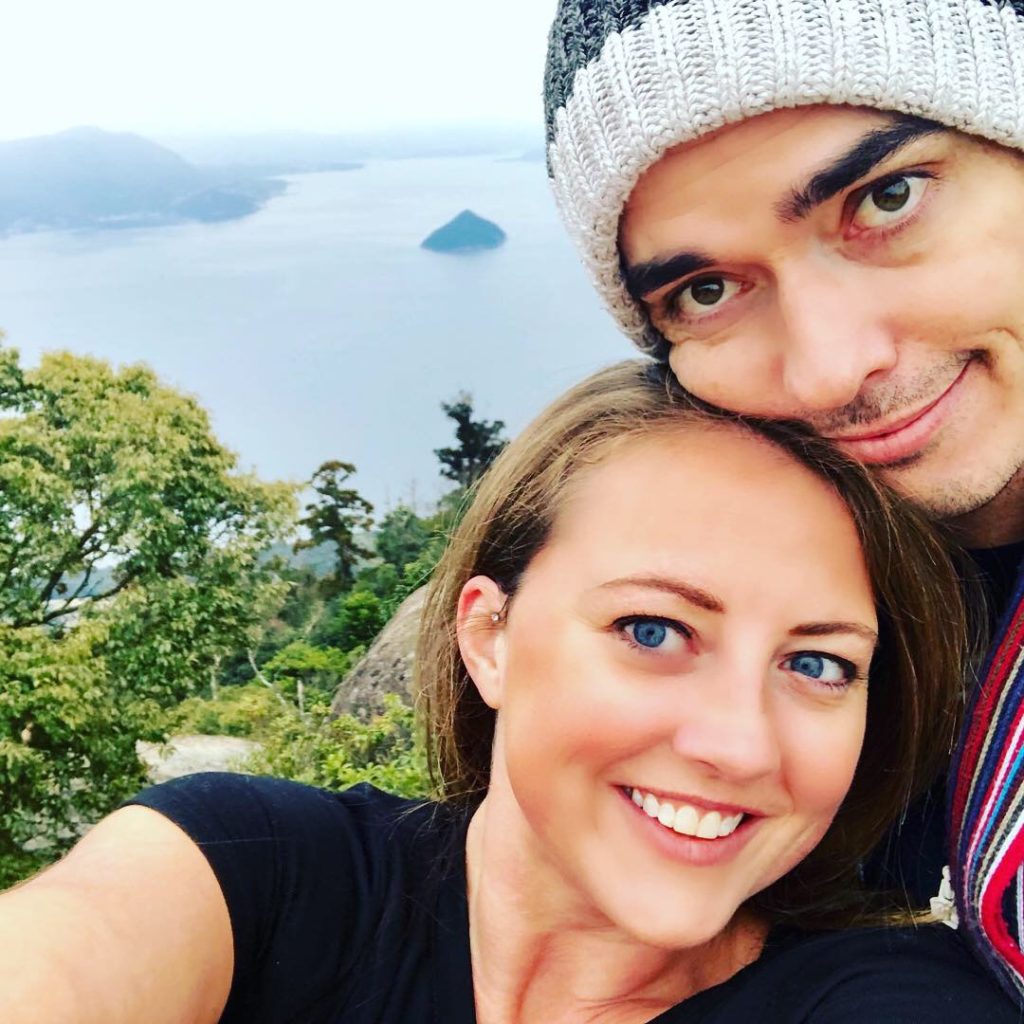
Given that we were staying overnight, we had the opportunity to see the gate at low tide, as well as high on our way back from our climb. We walked right up beneath it, jumping over puddles of sea water as we went (Tip: wear waterproof shoes)!
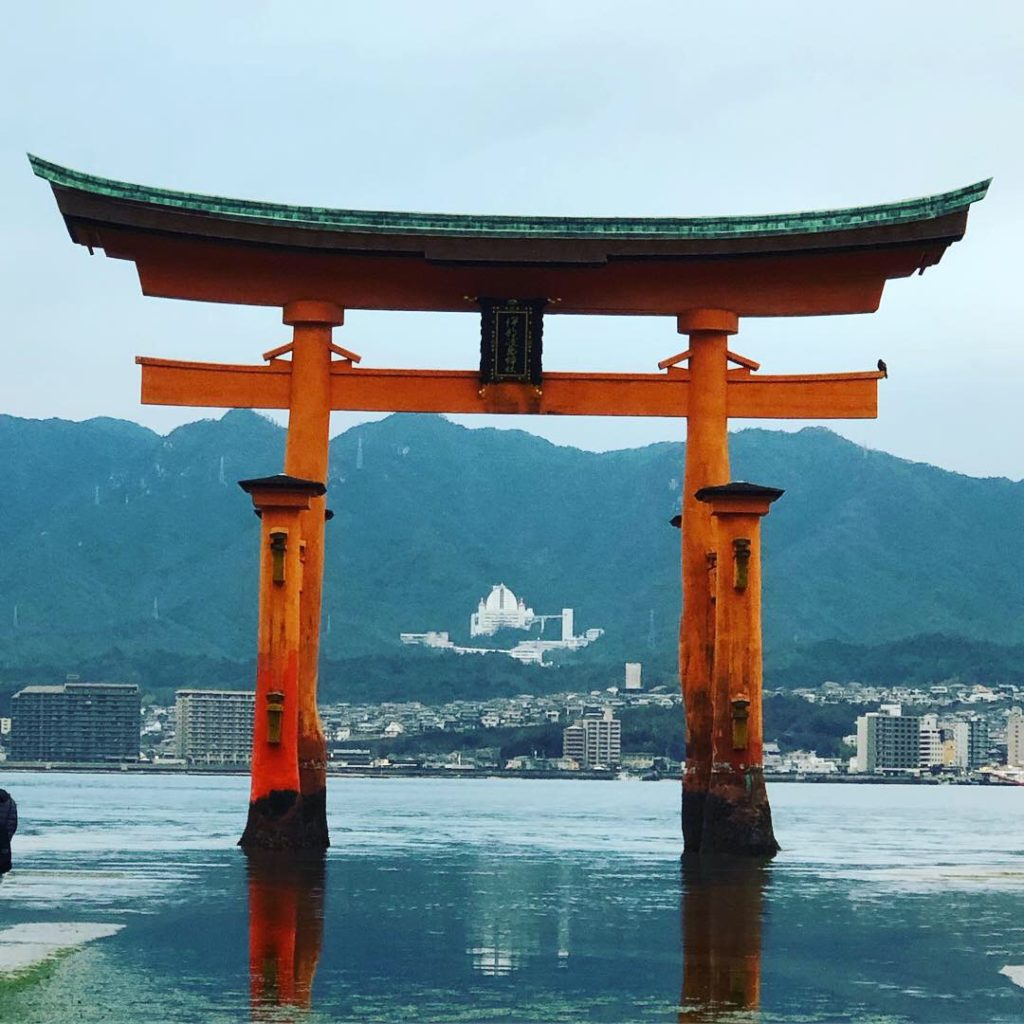
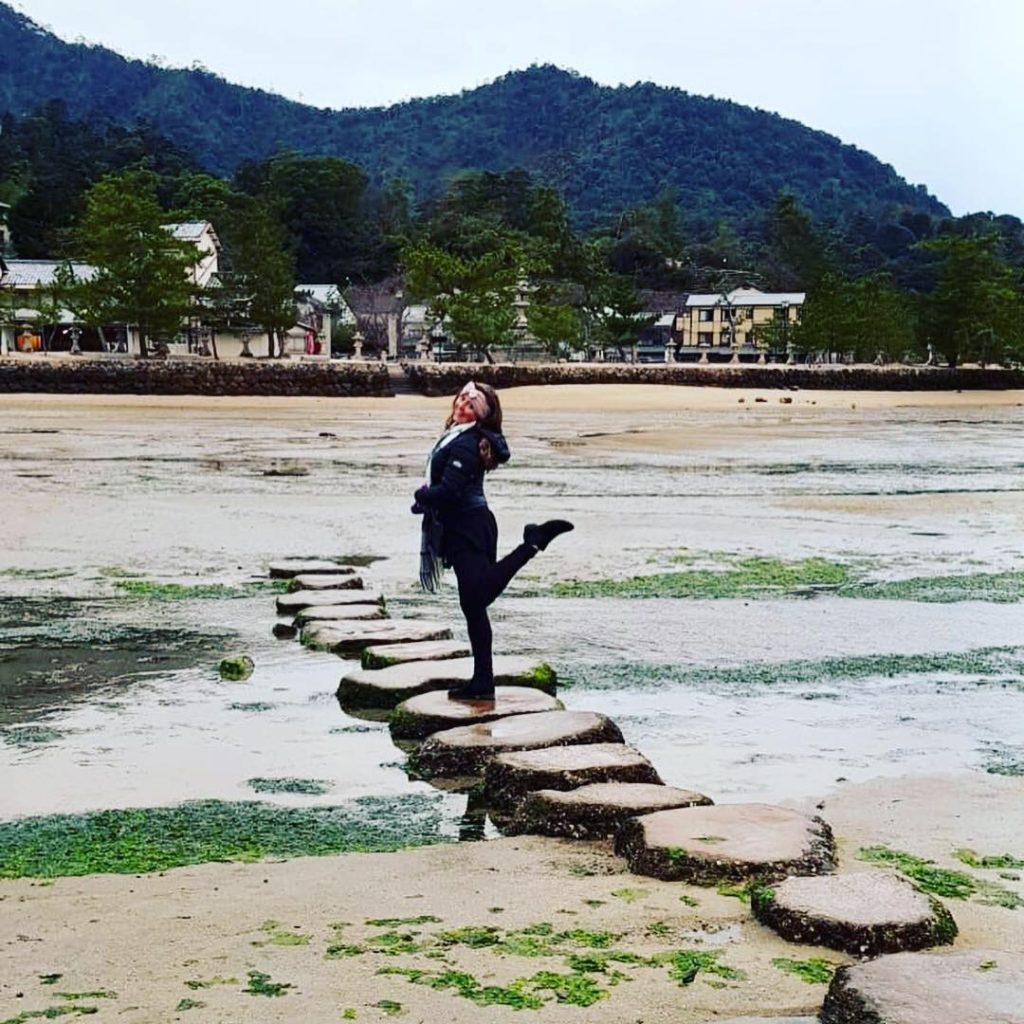
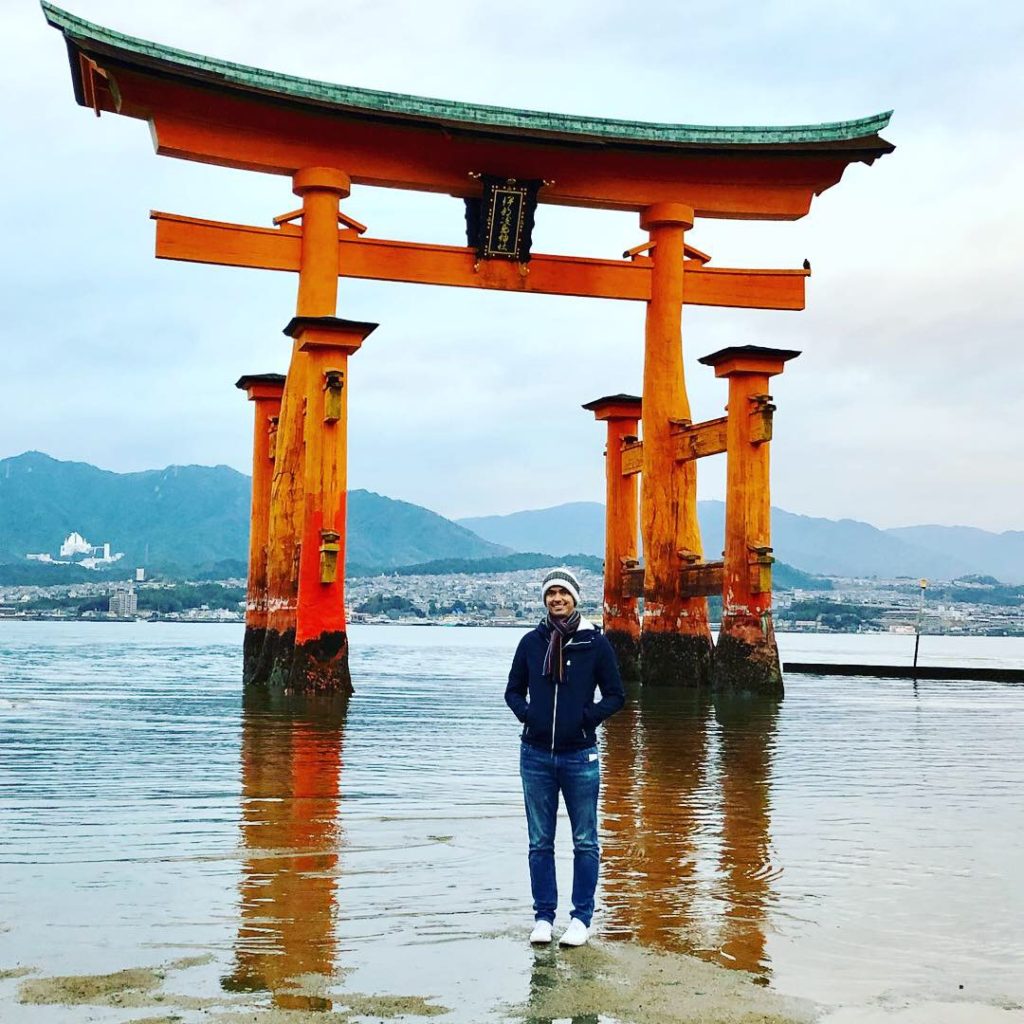
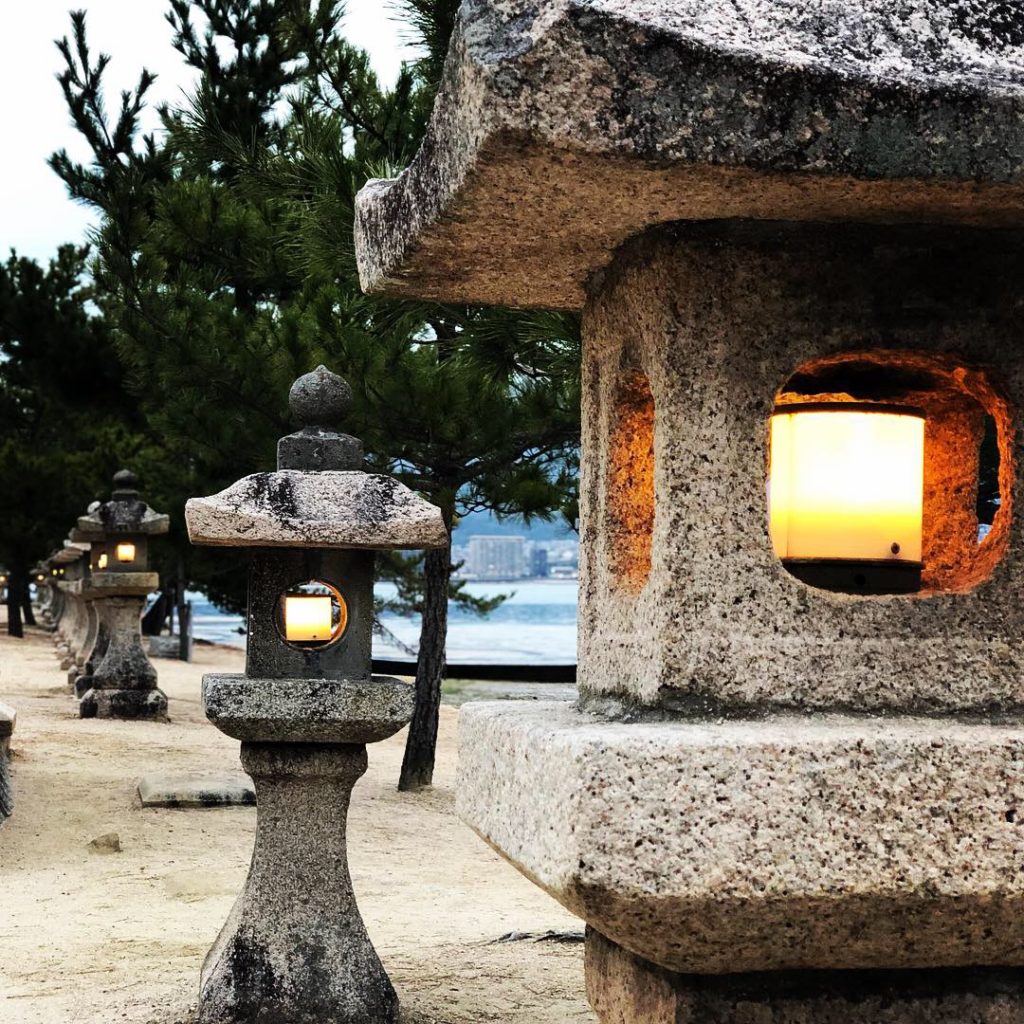

Dinner-wise, I’d recommend booking the meal option at your accommodation, as everything closes super early on the island. Our hotel restaurant was lovely, but unfortunately for me, 5 out of the 8 courses were oyster, (which the island is famous for), and I can’t stand them.
The chef was very keen to watch me enjoy the giant bogeys, cooked in a variety of ways (including oyster in cold custard!) and needless to say, plenty

As the sun sets, the Floating Gate is illuminated, so after food and a steaming hot onsen, we strolled through the deserted streets to walk along the shoreline. Just us and the shimmering gate on the water. Gorgeous.
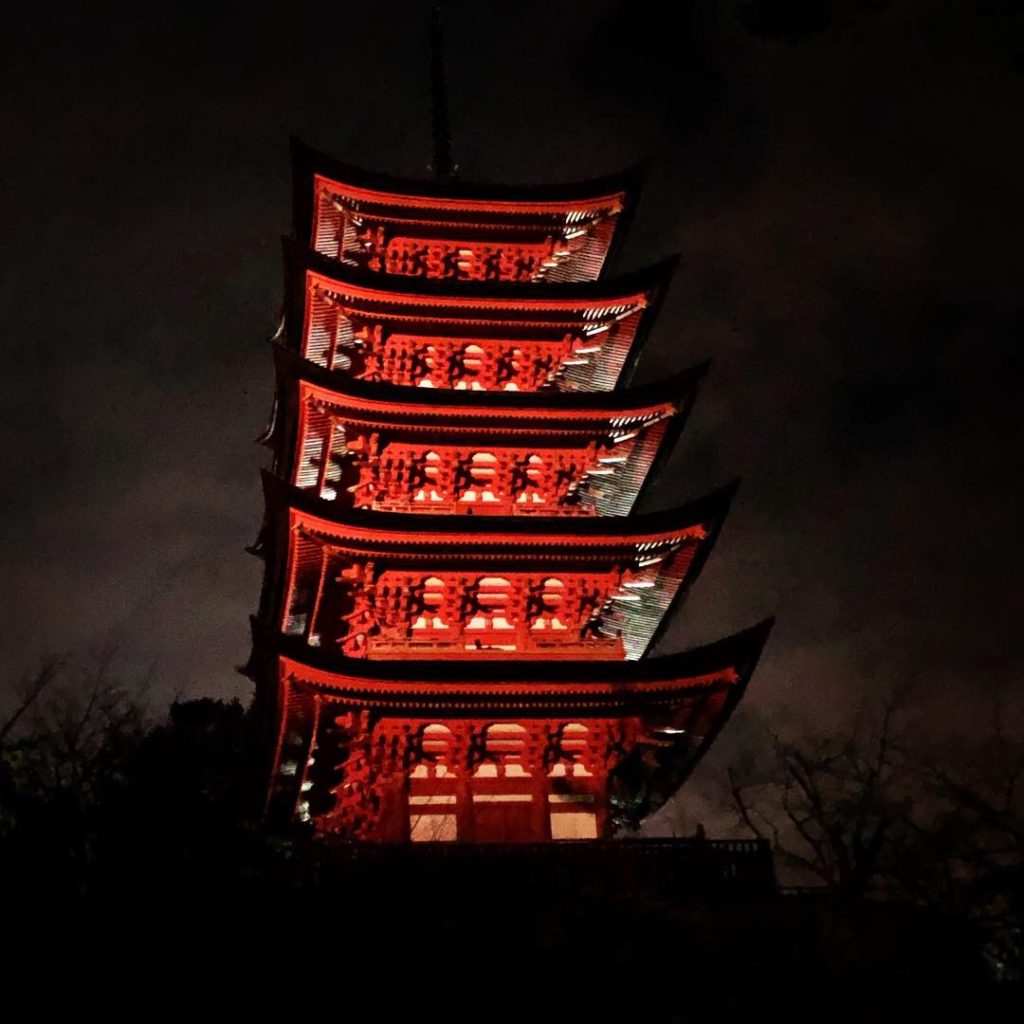
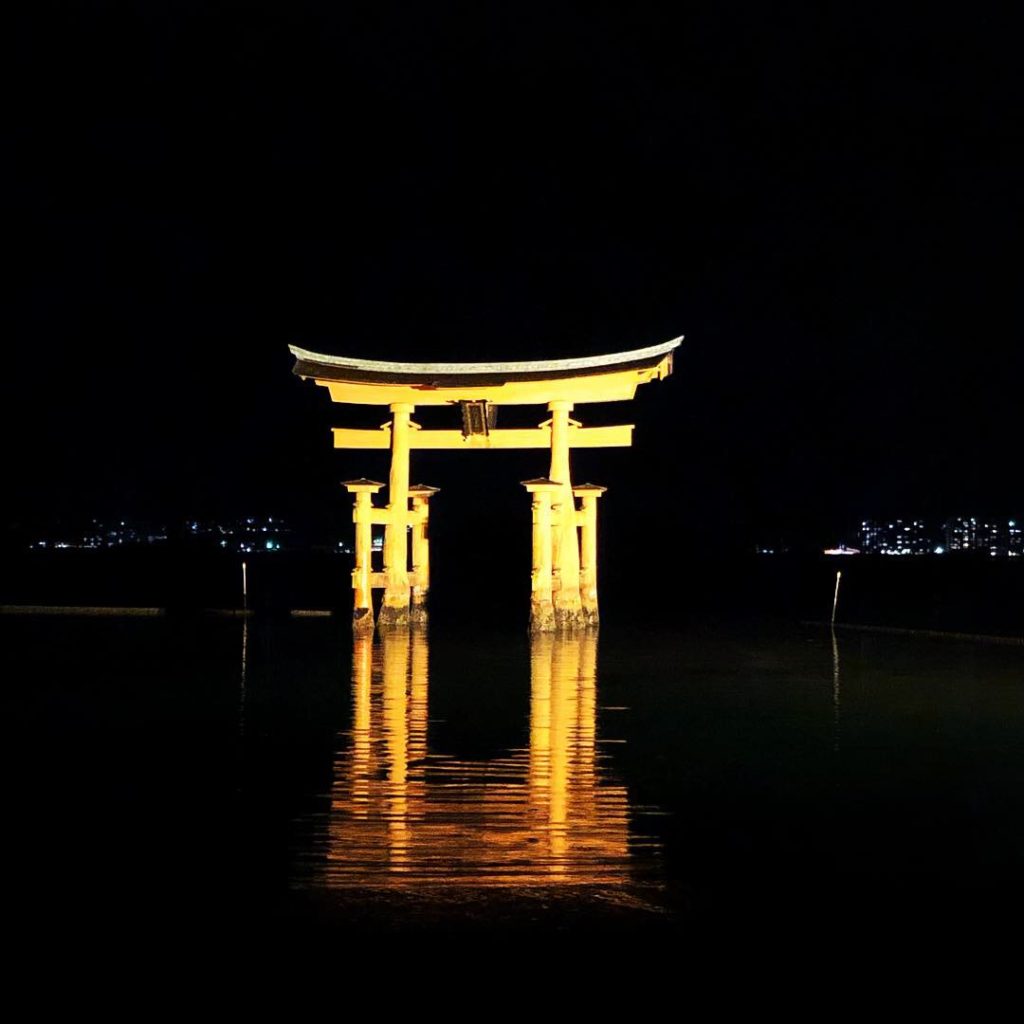
Day 16: Hiroshima
We visited Hiroshima for a day, and it was more than enough to see everything we wanted to see. It was easy to get around the main sites on the free hop-on-and-off
Since we had stayed on the island, we needed to take our cases with us when we hopped back over to the mainland, so we took advantage of the awesome lockers in Hiroshima station to stash them safely, leaving us hands-free to explore. (You will need coins.)
The touch screen is easy to use, and prints you a ticket with a QR code. When you return, scan the ticket and the locker will open, ready for you to collect your bag.
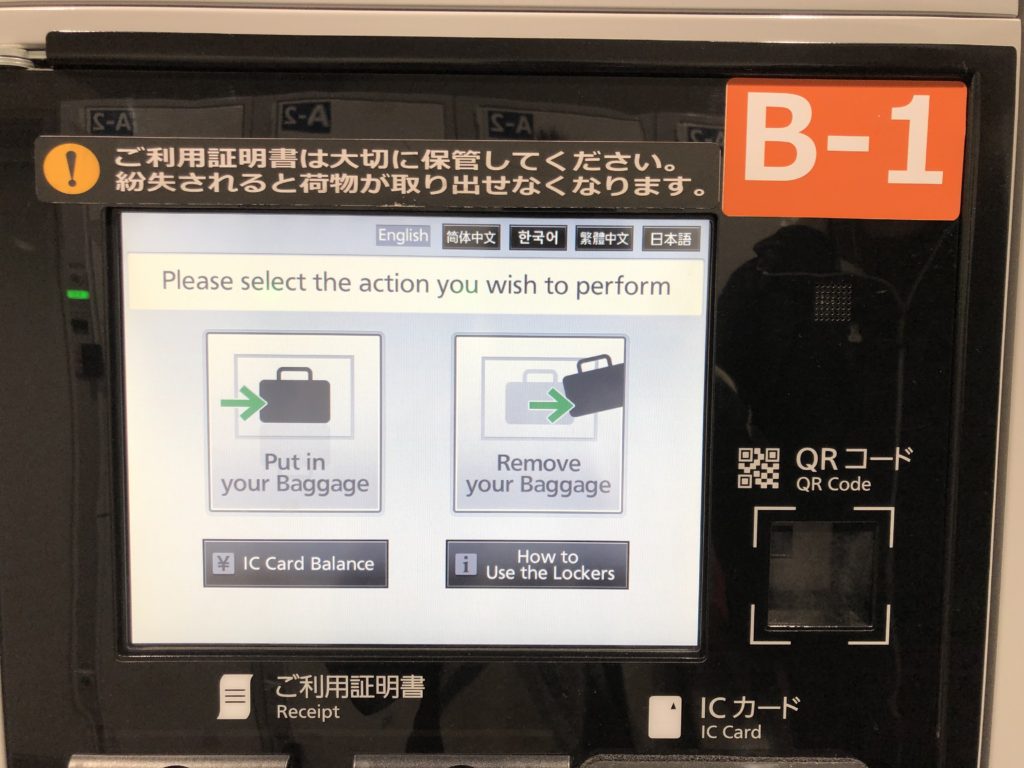
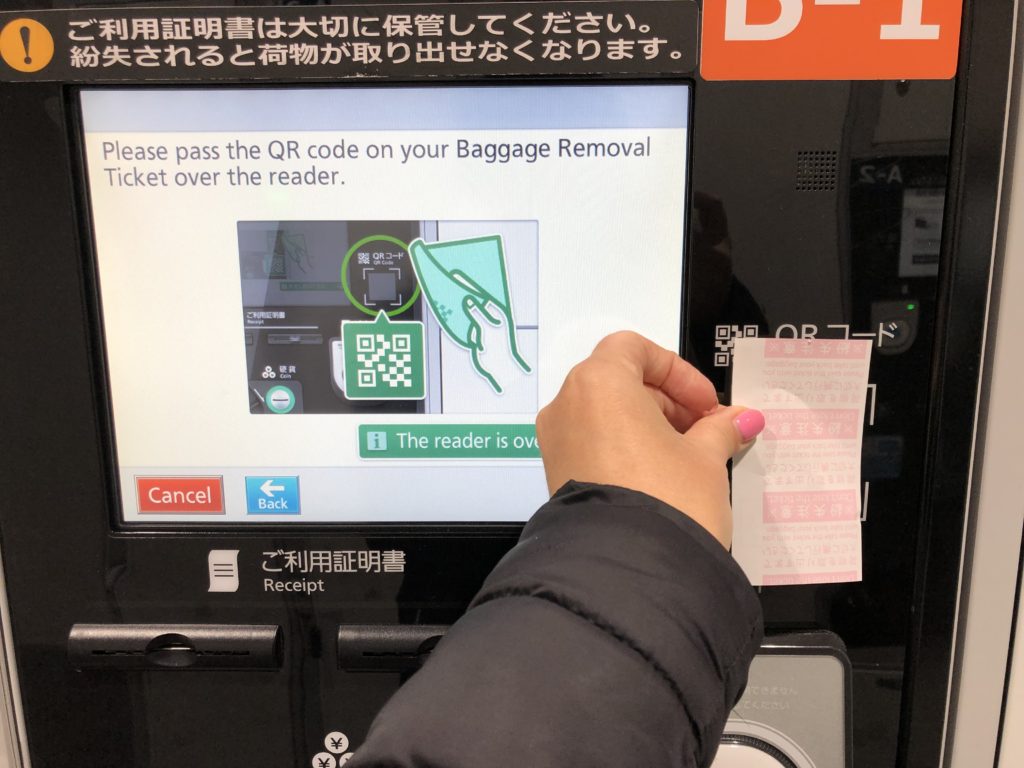
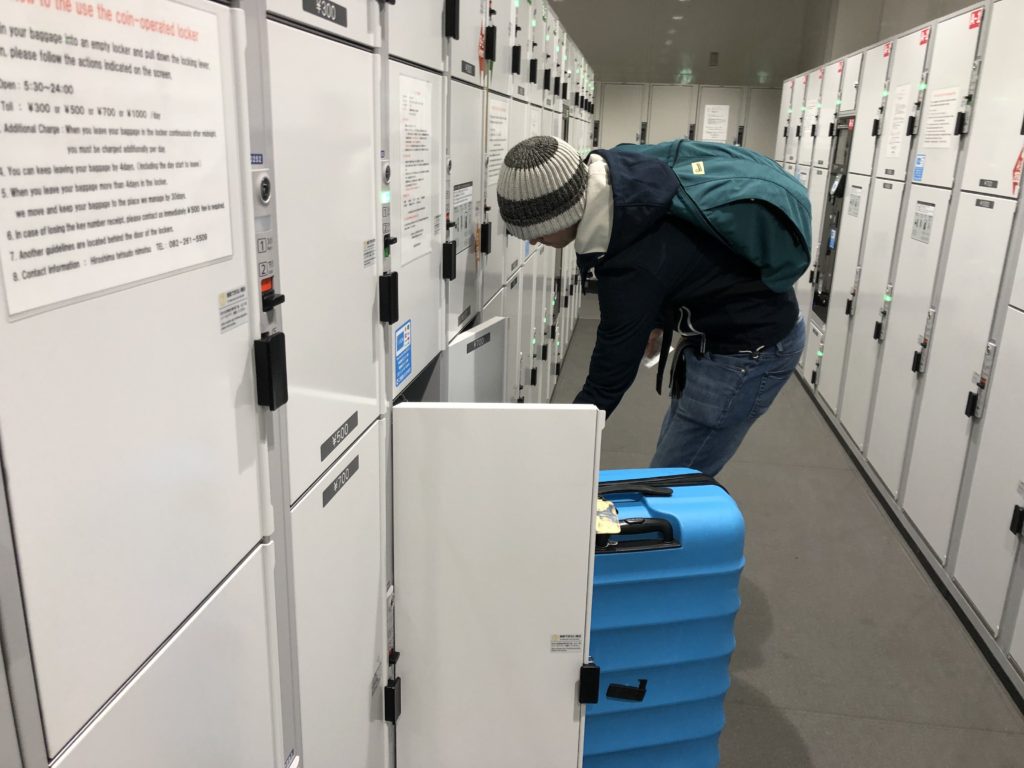
Hiroshima Atomic Bomb Dome
I have to admit, Hiroshima broke me emotionally. I found it really difficult to witness the atrocities that happened here. But it is important that we see it, feel it, and understand it to ensure that this never happens anywhere, ever again.
On August 6th 1945, the US detonated an atomic bomb over the city of Hiroshima. The Atomic Bomb Dome stands as a tragic reminder of the suffering inflicted and a symbol of the vow to seek the abolition of nuclear weapons & everlasting world peace.
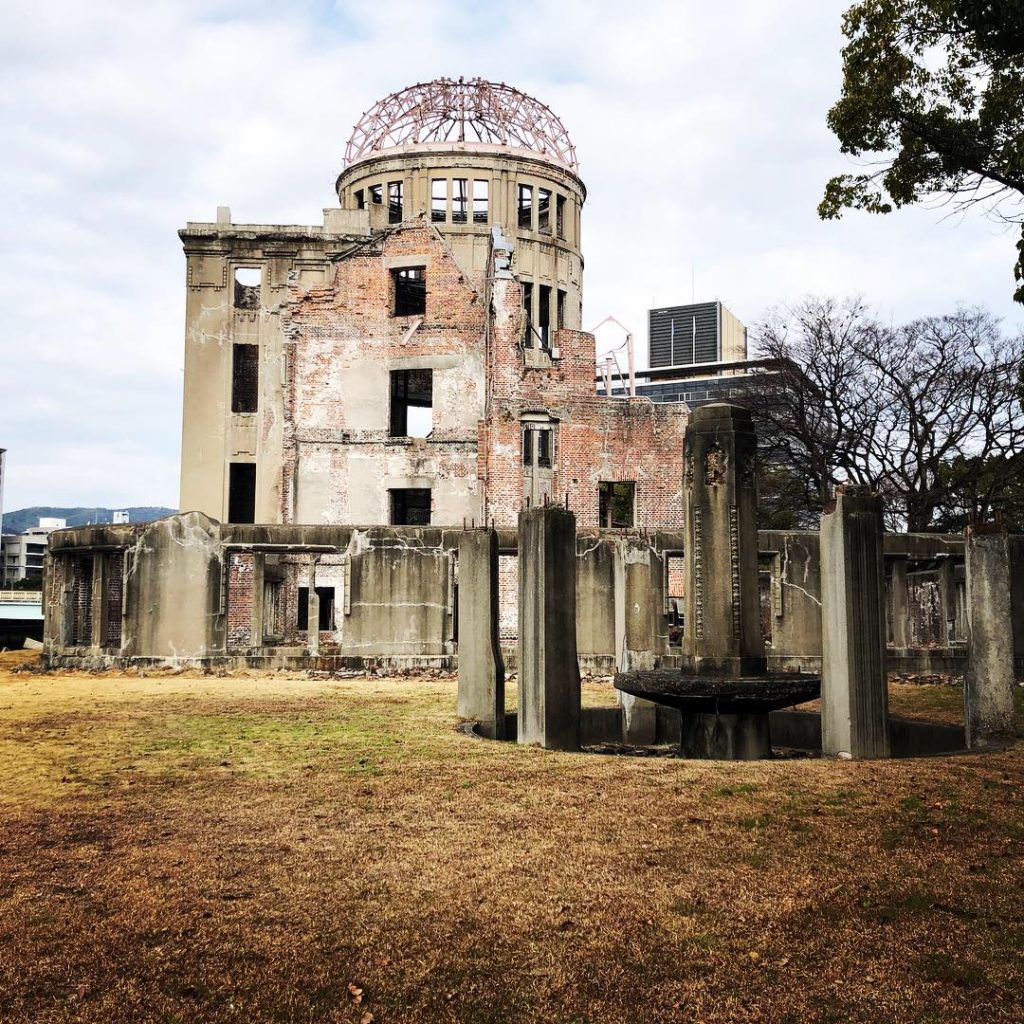
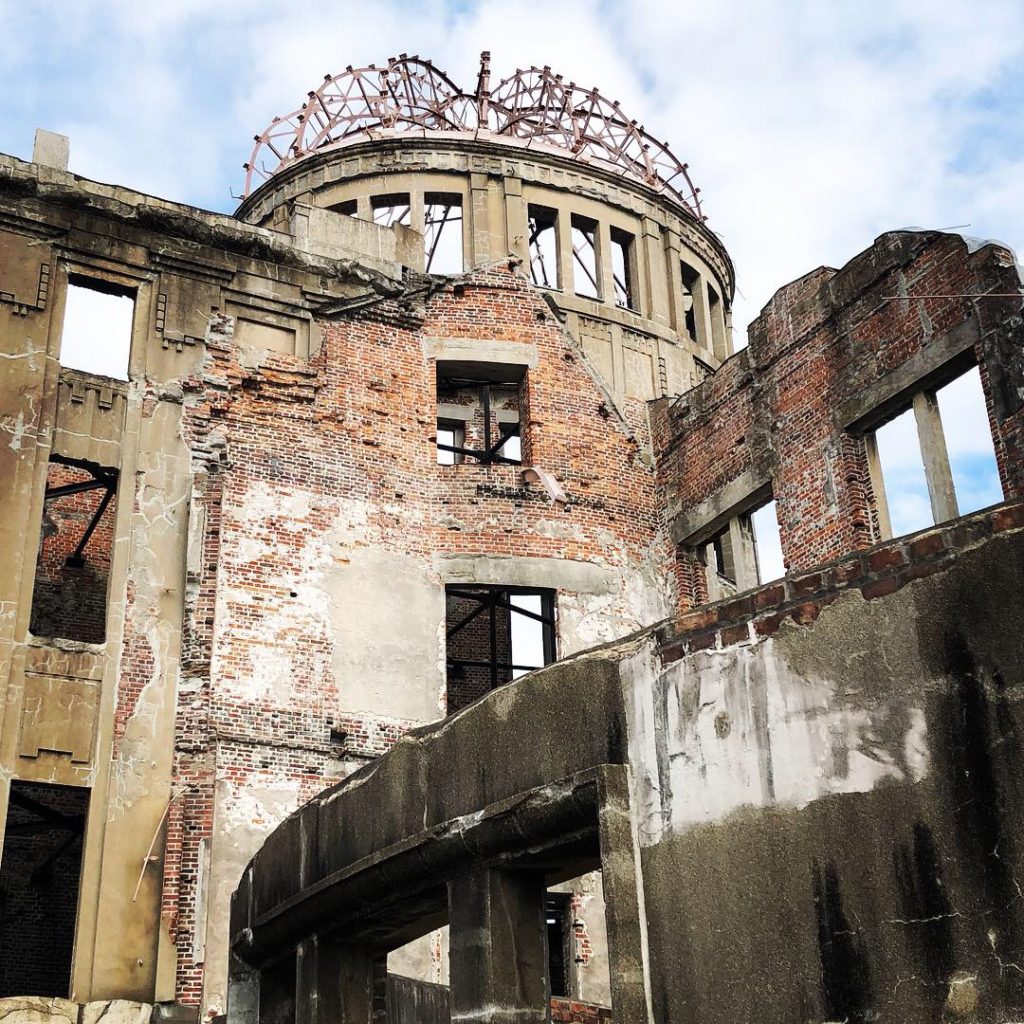
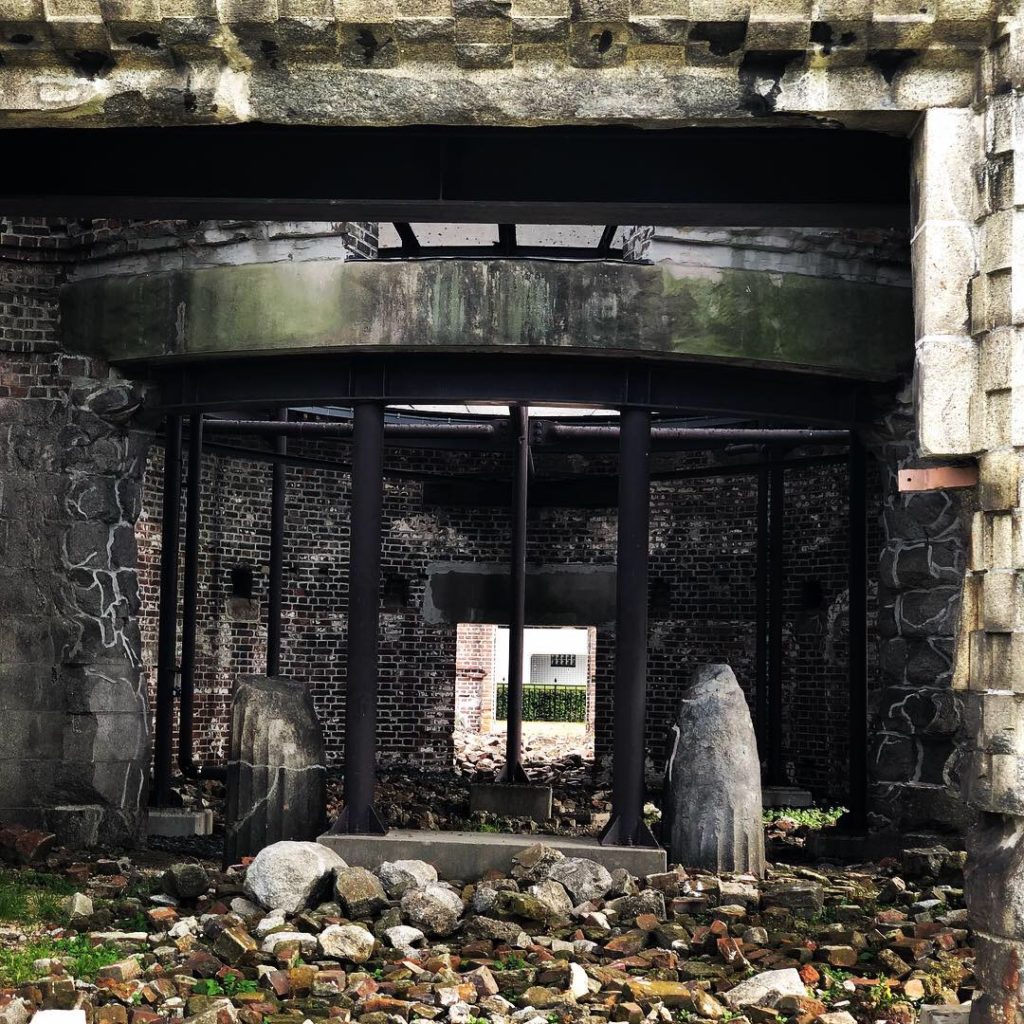
We visited the Children’s Peace Monument, built in dedication to Sadako Sasaki, and all the children who were killed by the bomb. 2-year old Sasaki survived the
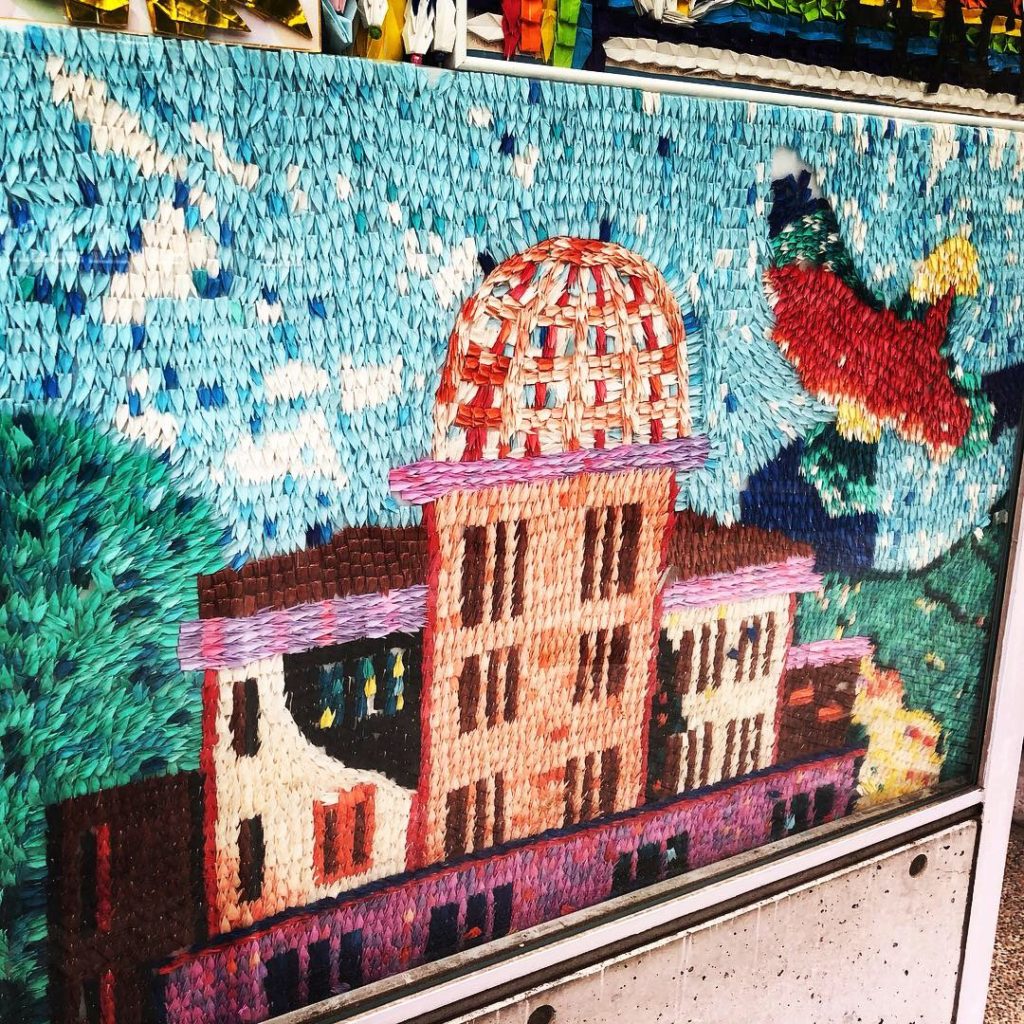
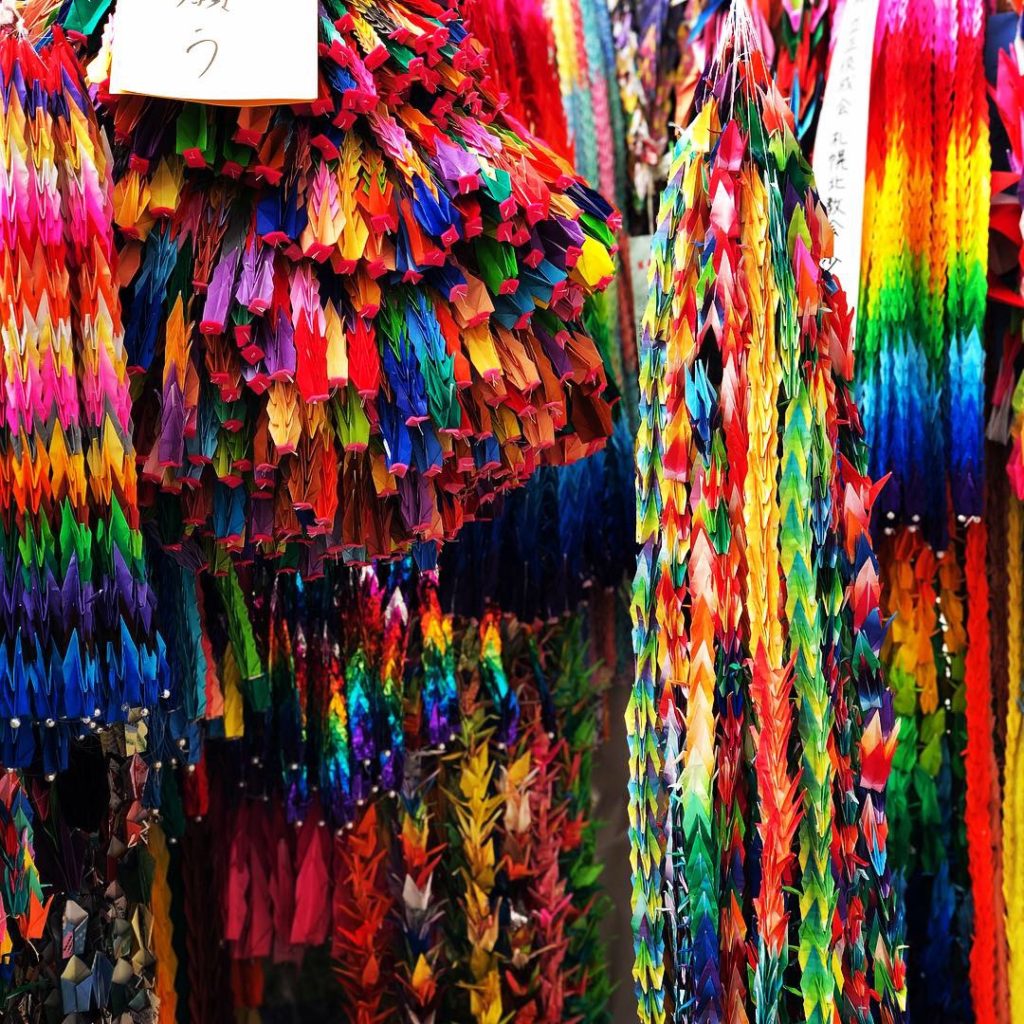
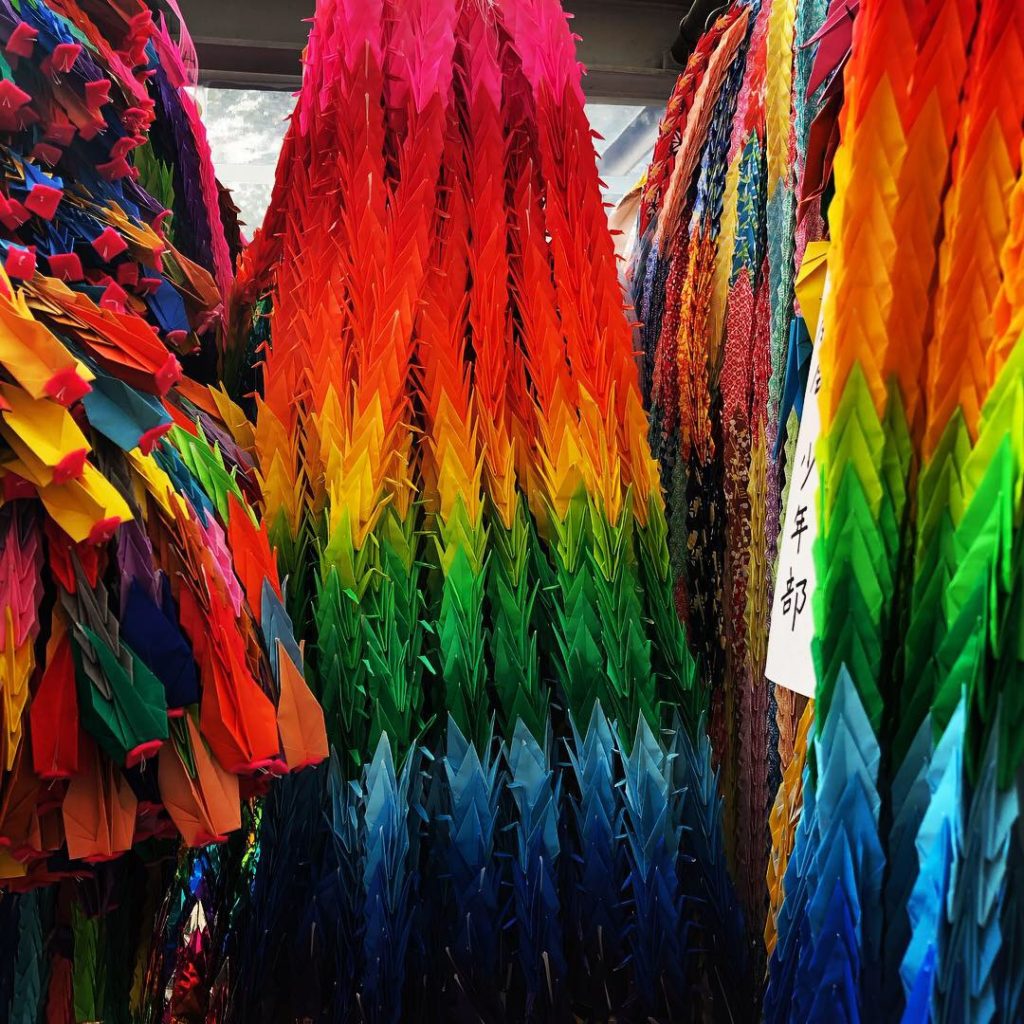
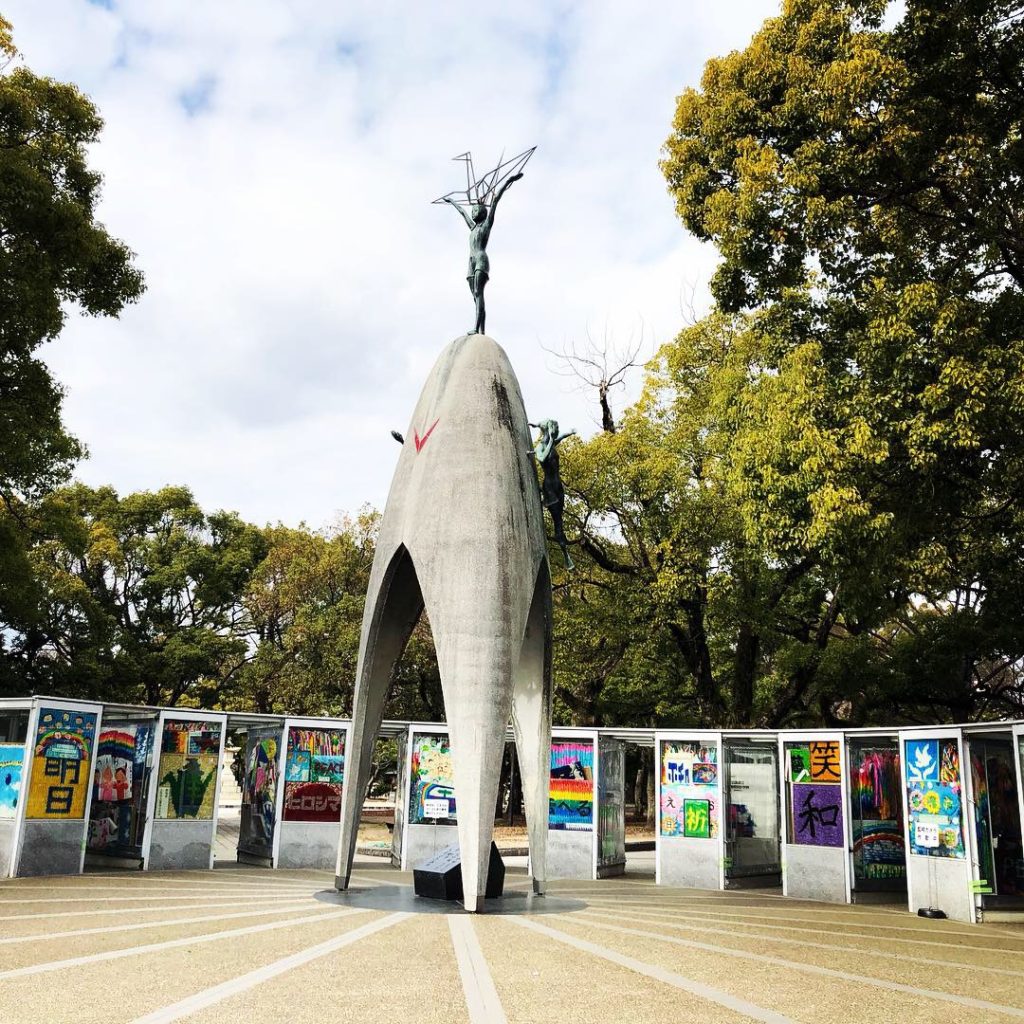
We rang the peace bell and visited the Flame of Peace, which really set the scene for the most sobering part of our visit: The Hiroshima Peace Memorial Museum.
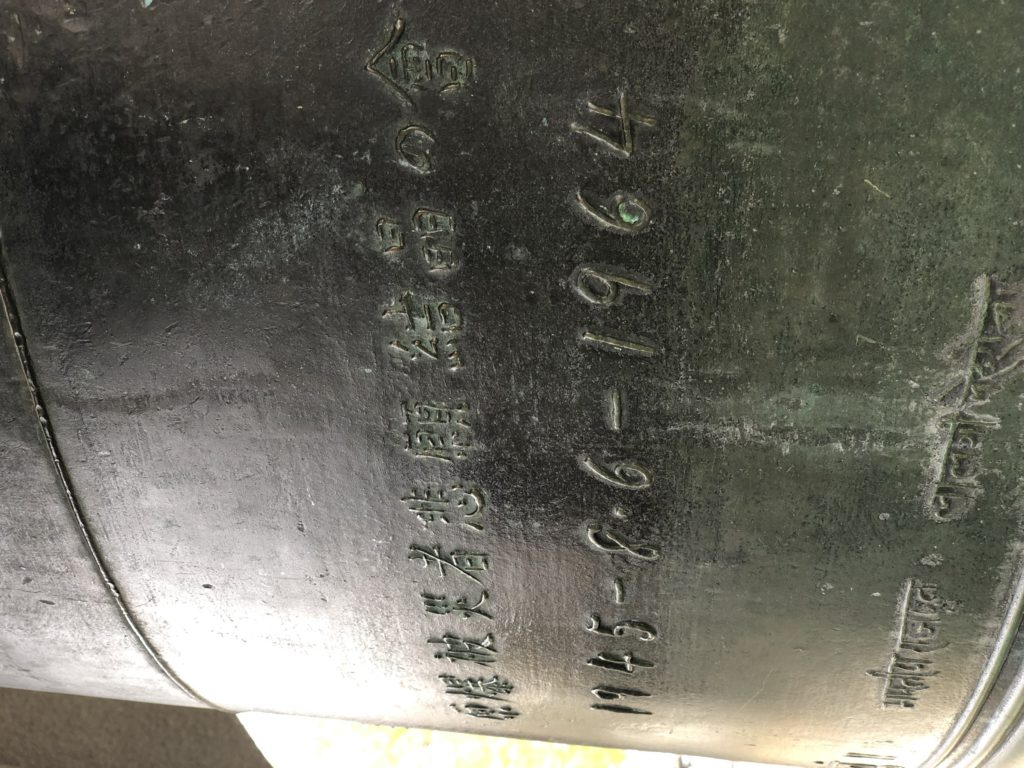
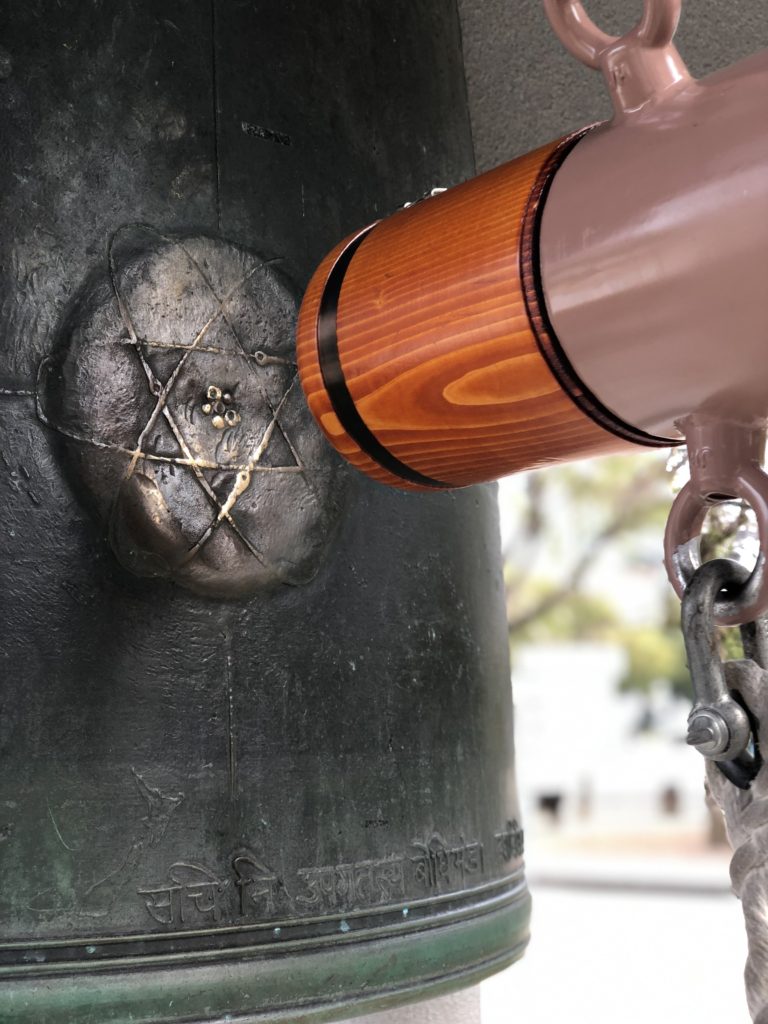
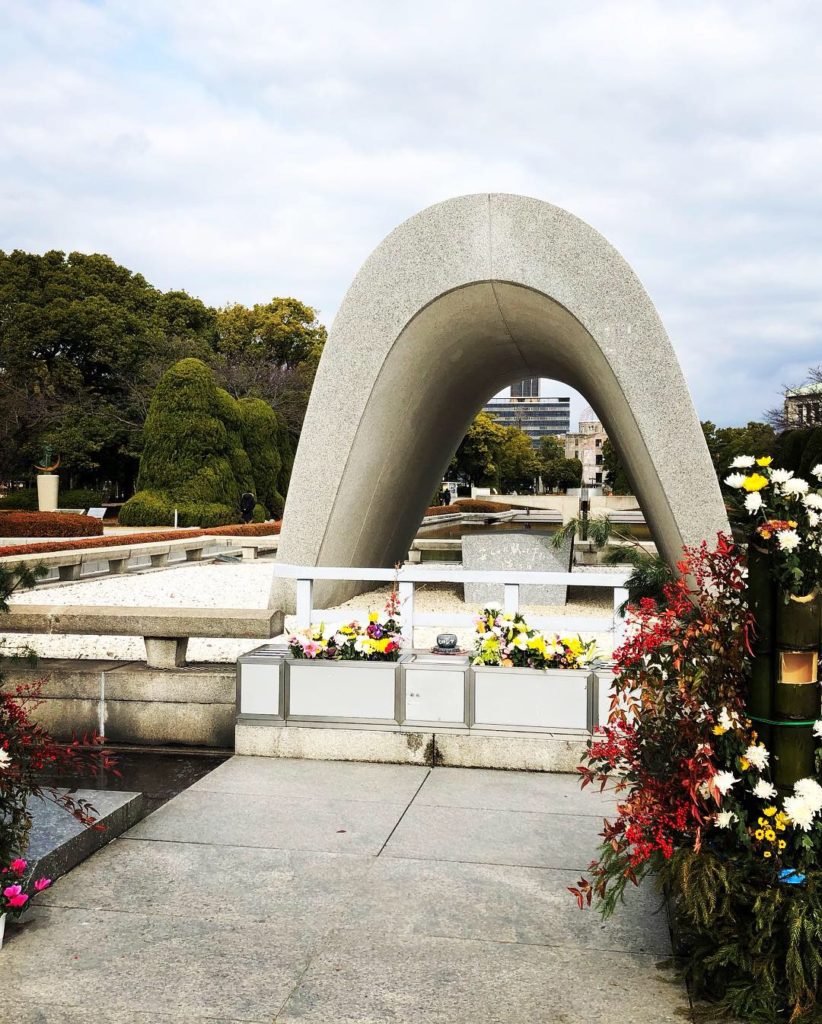
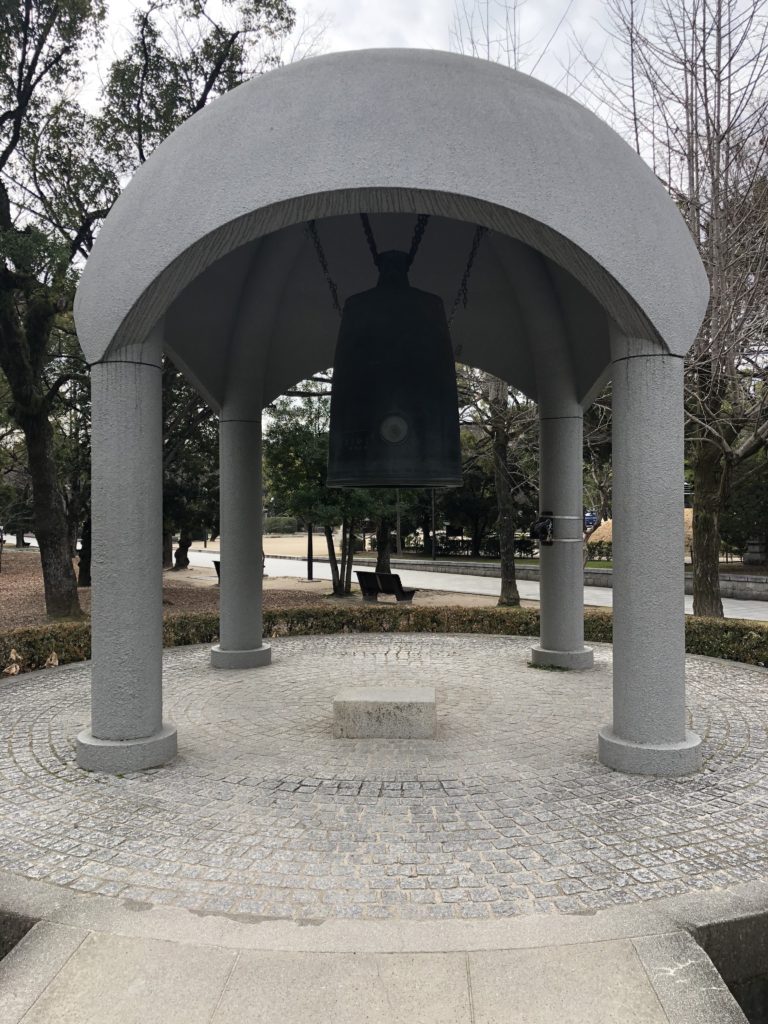
The museum was absolutely chilling. Recorded accounts from survivors had us in floods of tears, and I felt so ashamed that humans could do such awful things to one another. That such innocent lives were lost in the most horrific way. That the people of Hiroshima continue to live out the nightmare, so many years after the dust settled. The scenes we saw haunted me long after we left.
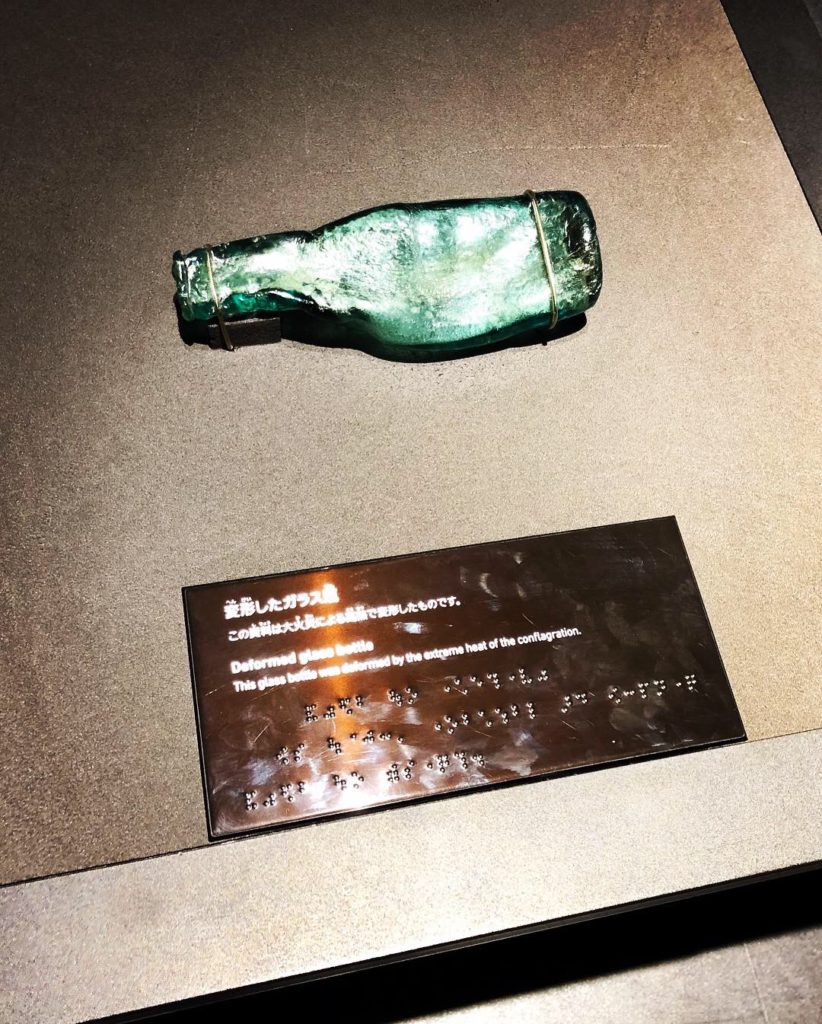
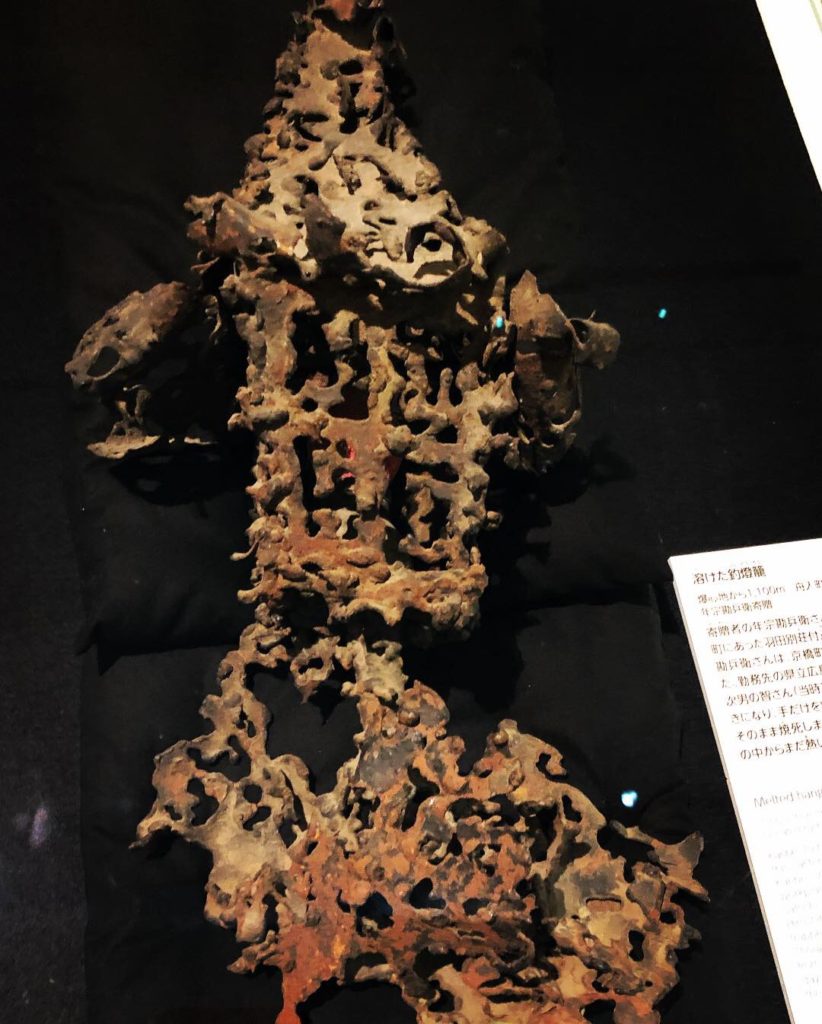
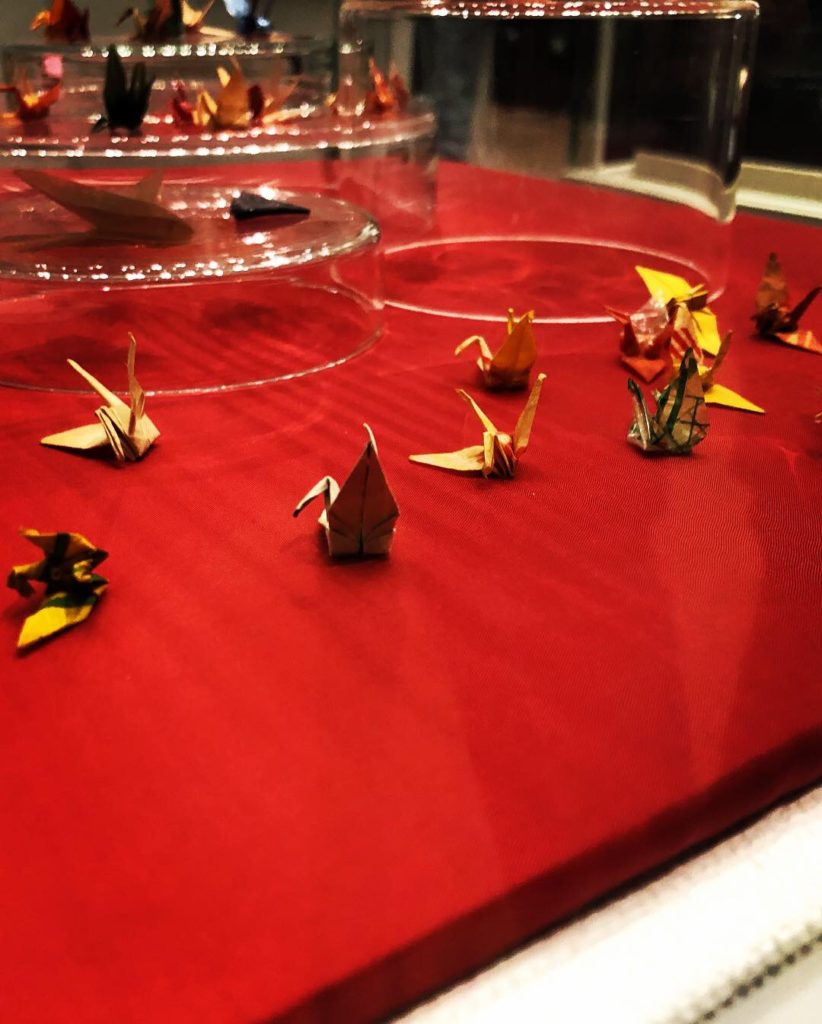
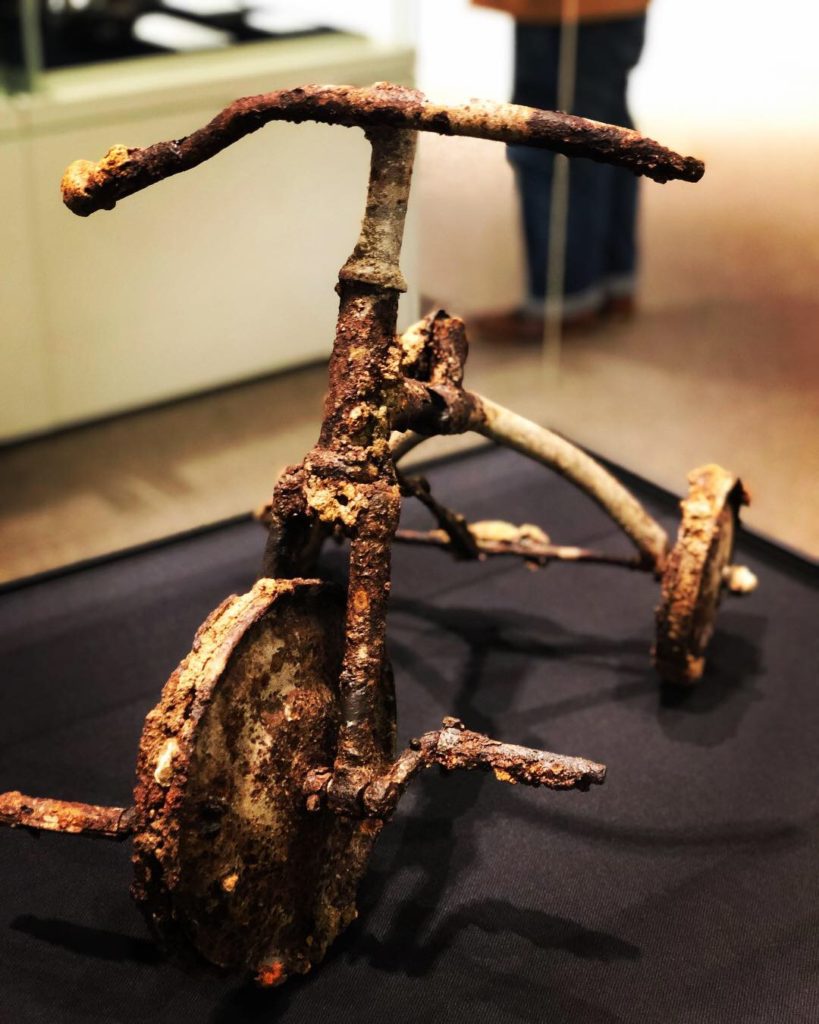
A night in Osaka: Dontonburi
We returned to spend the night in Osaka, staying in the famous district of Dontonburi! We couldn’t decide between all the deliciousness on offer, so we ate all the Kobe beef, then ice cream and cheesecake from Pablo’s for pudding. And I do mean a
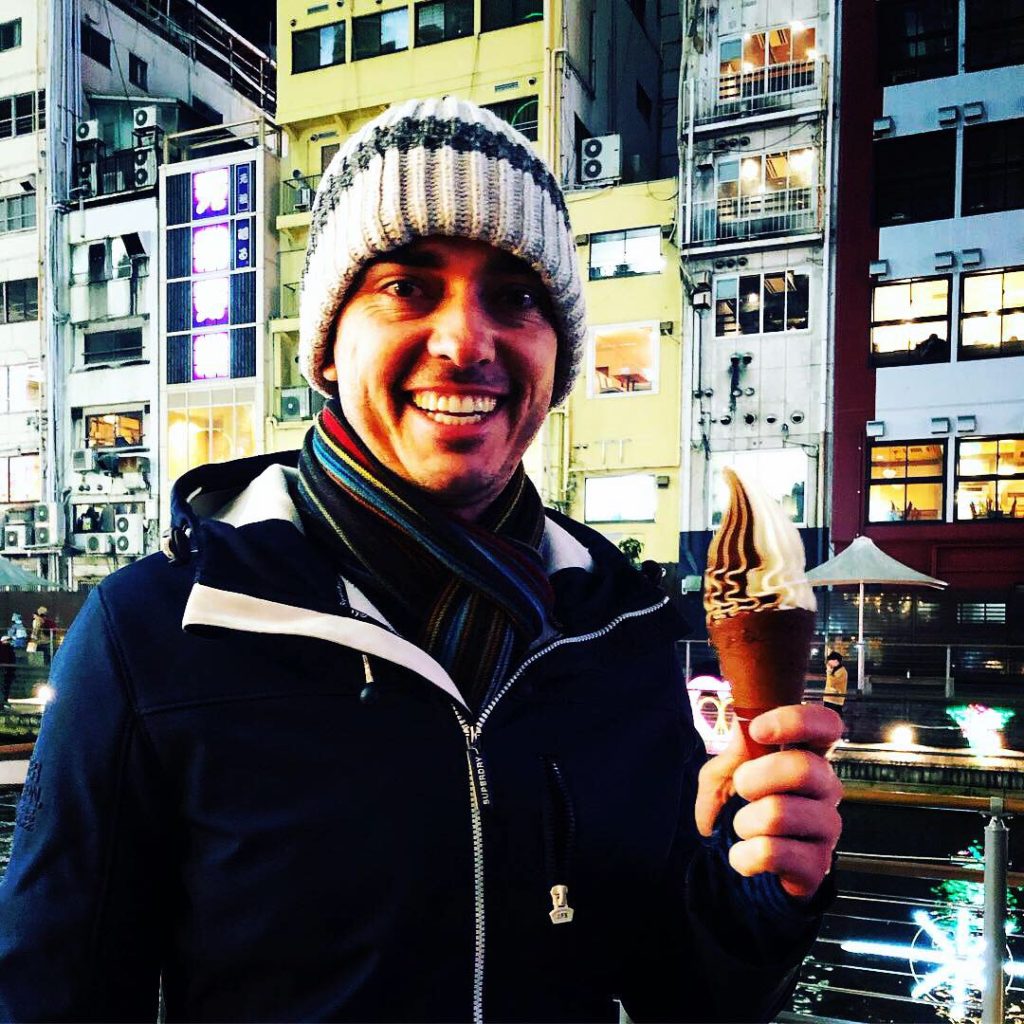
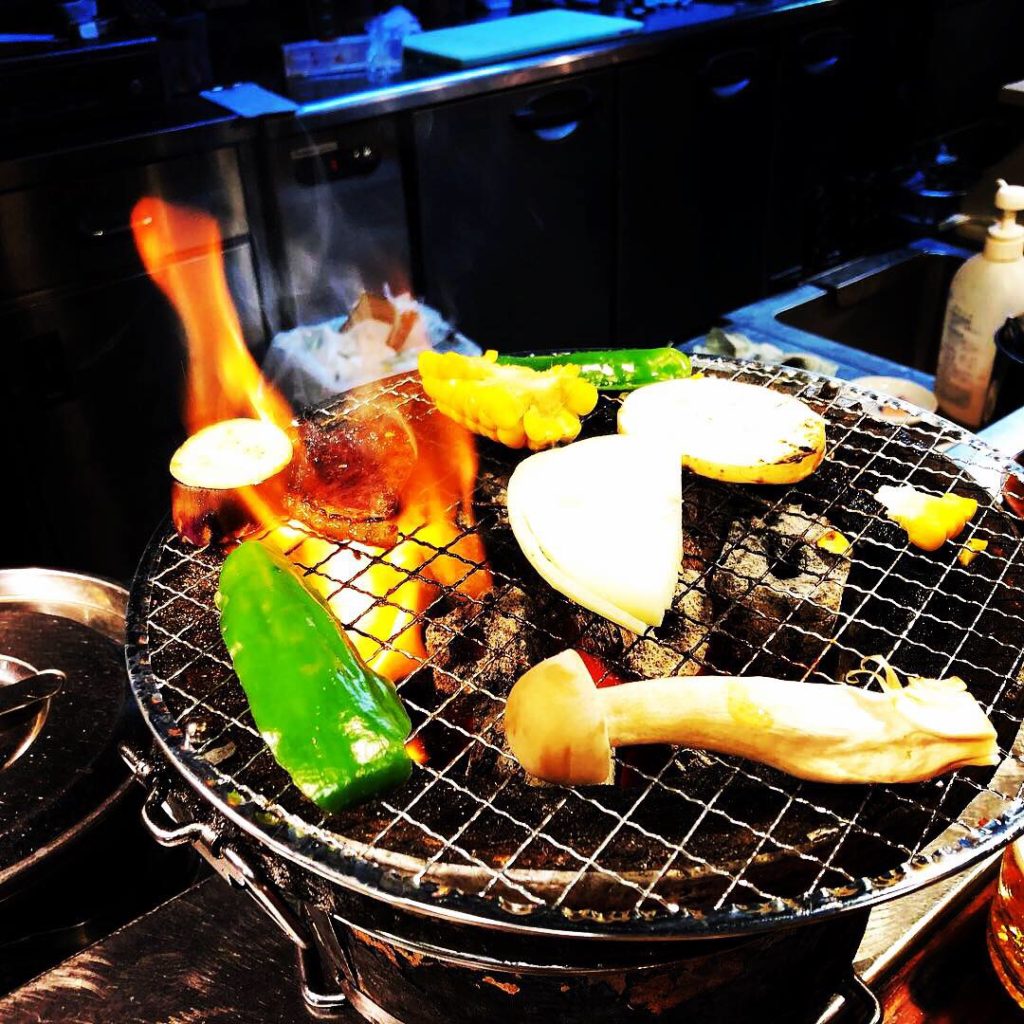
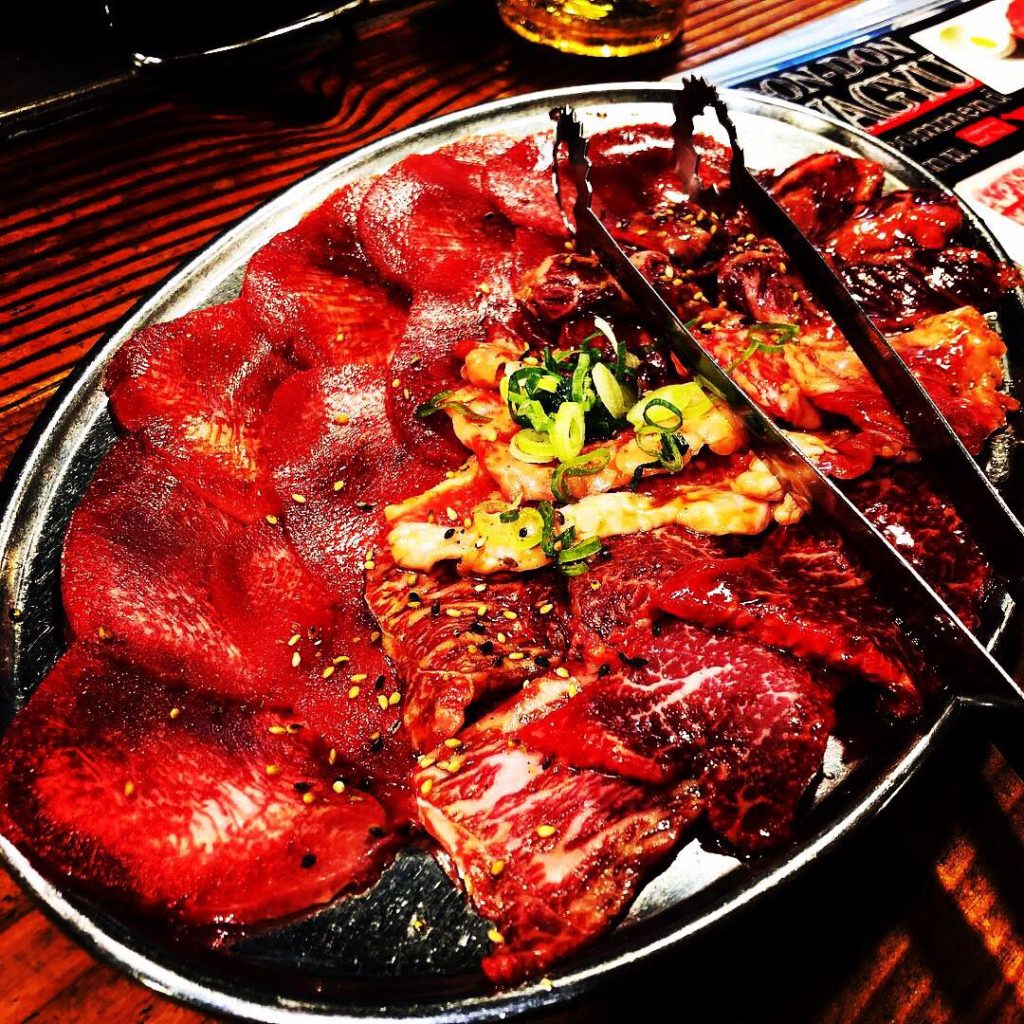
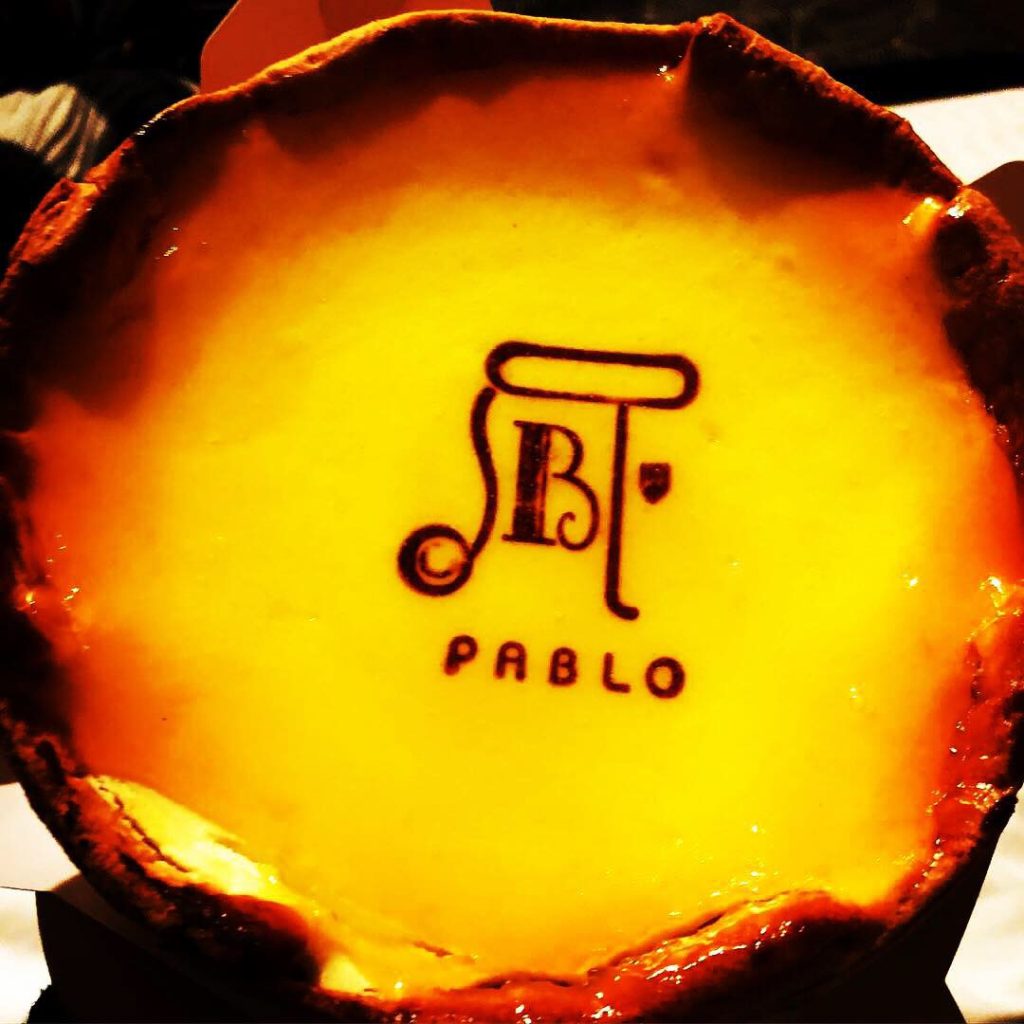
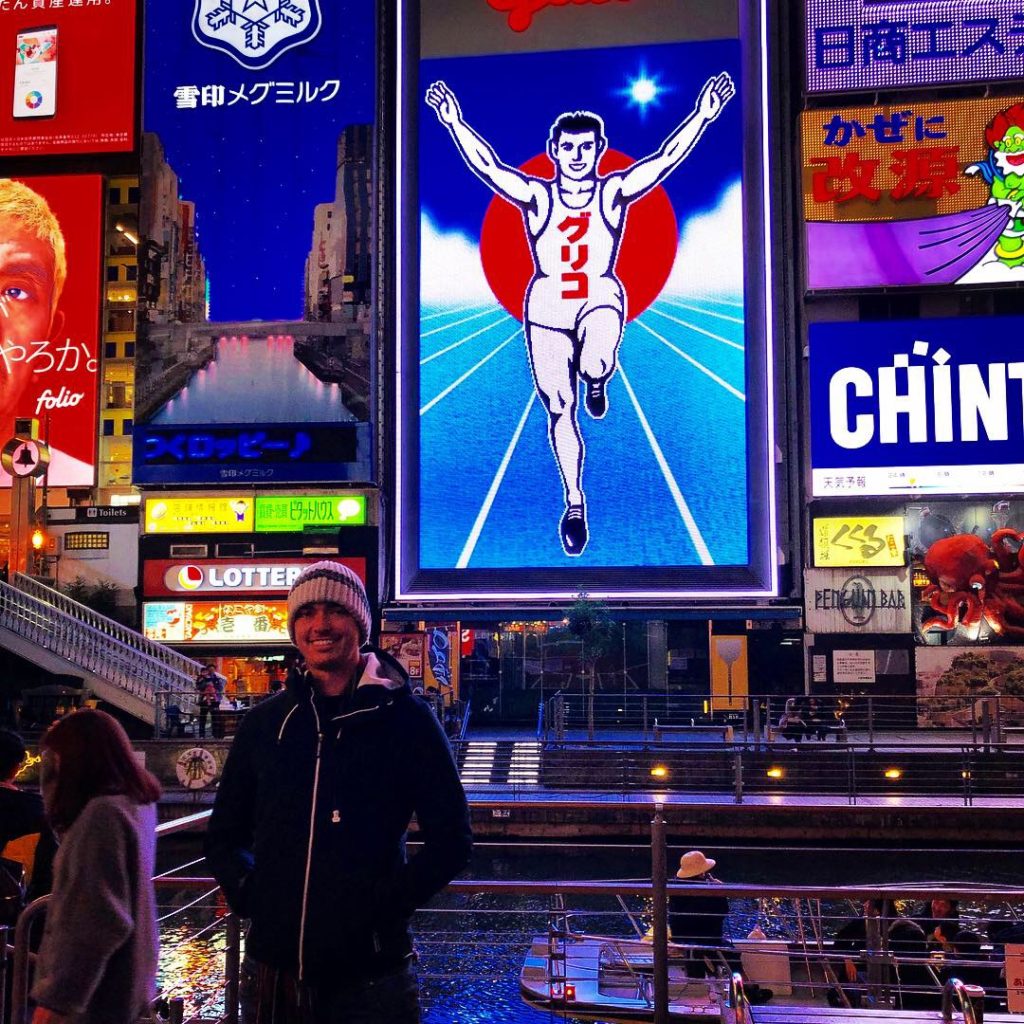
Cammy took me on the most GIGANTIC Ferris wheel you have ever seen…which is fine.. except we did the VR version which removes the floor/ceiling/walls of the pod (and also your companion!) so you are completely alone and can see straight down to the pavement below. I died a hundred deaths and Cammy isn’t allowed to choose activities anymore! 😉
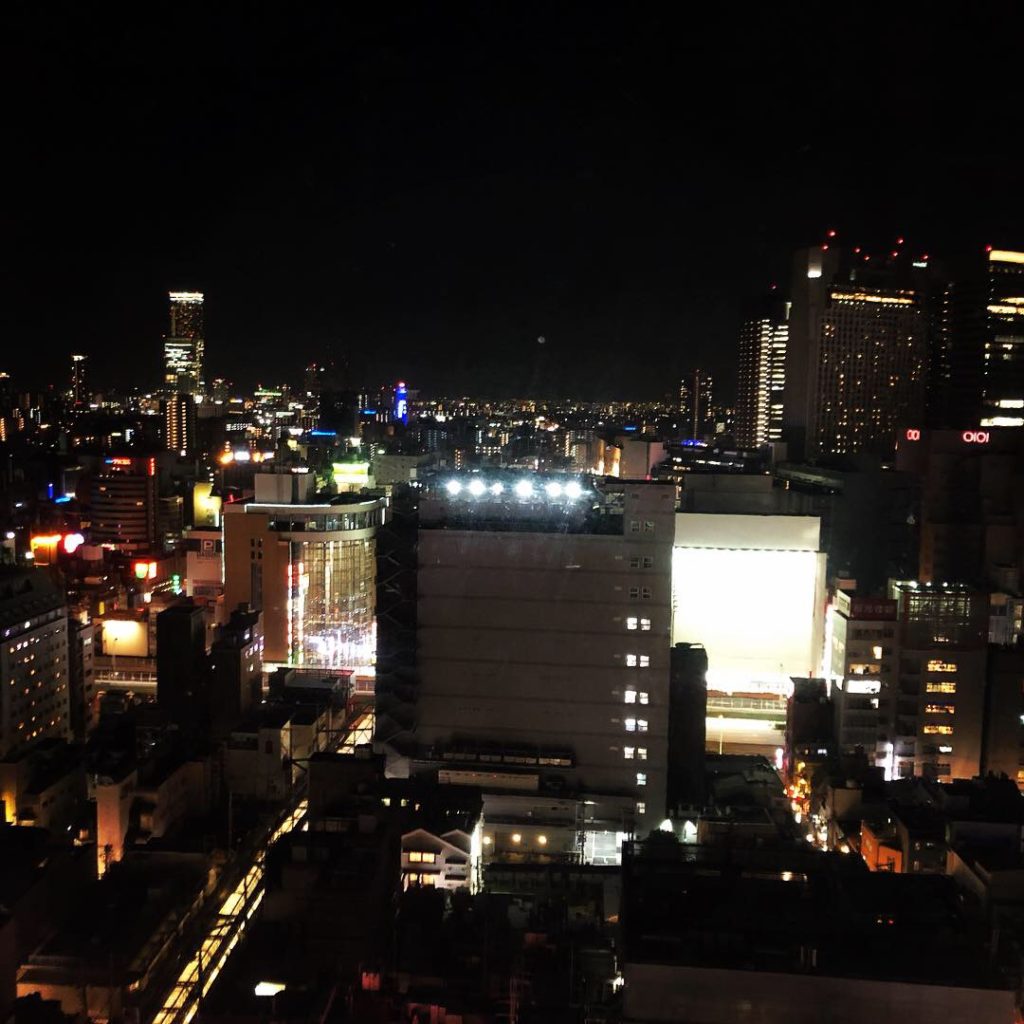

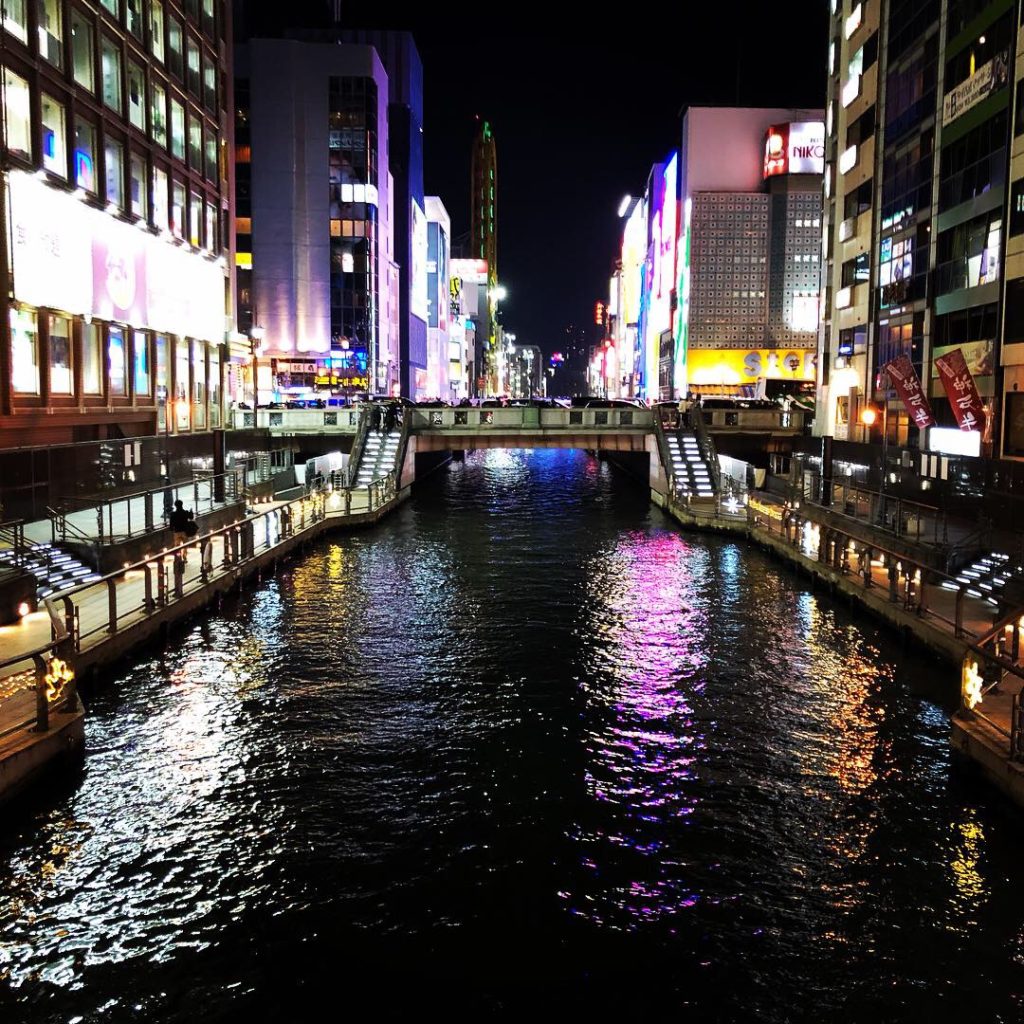
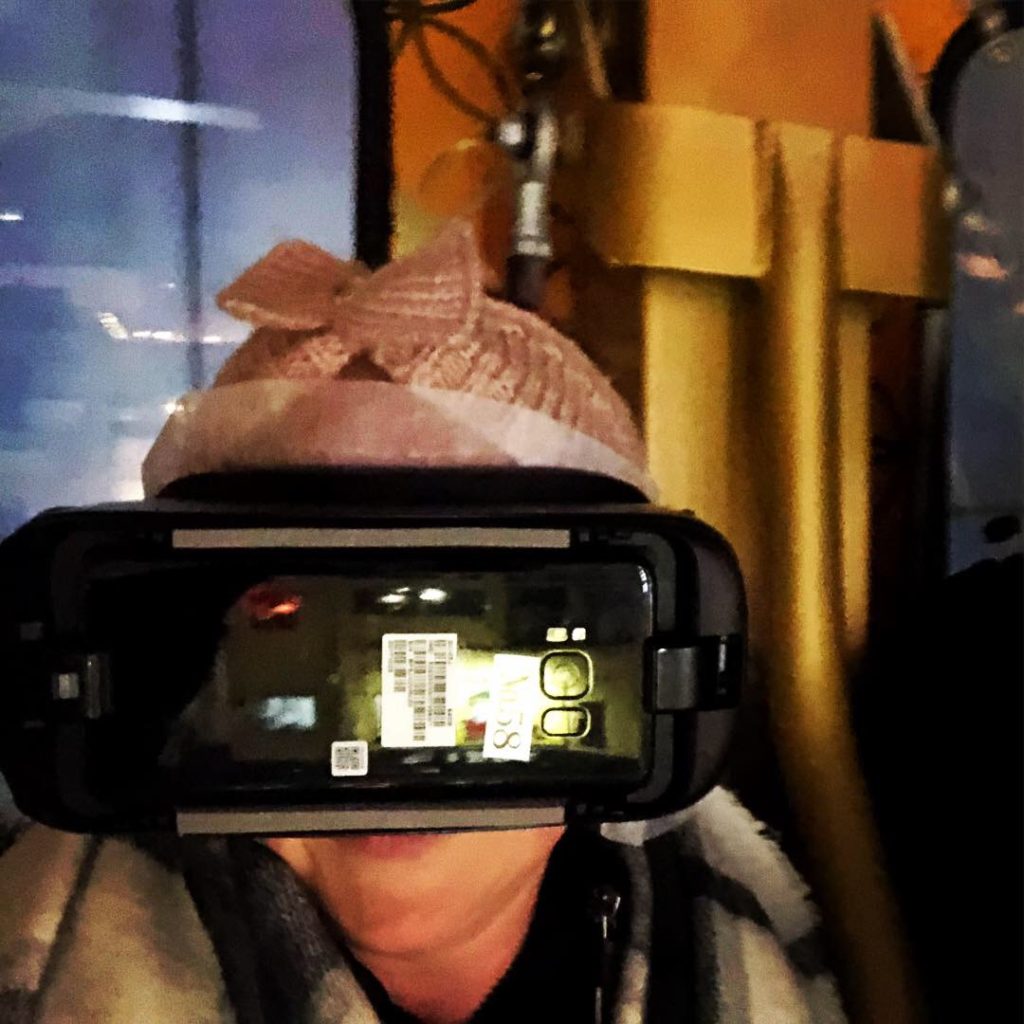
Day 17: Koya San
For our last night, we stayed at a 1000-year-old Buddhist temple in the Mountains: Ekoin. We chose this temple for its fabulous location, right near the entrance of Okunoin Cemetery. It is run by Monks, who welcome you to join their meditation and services during your stay.
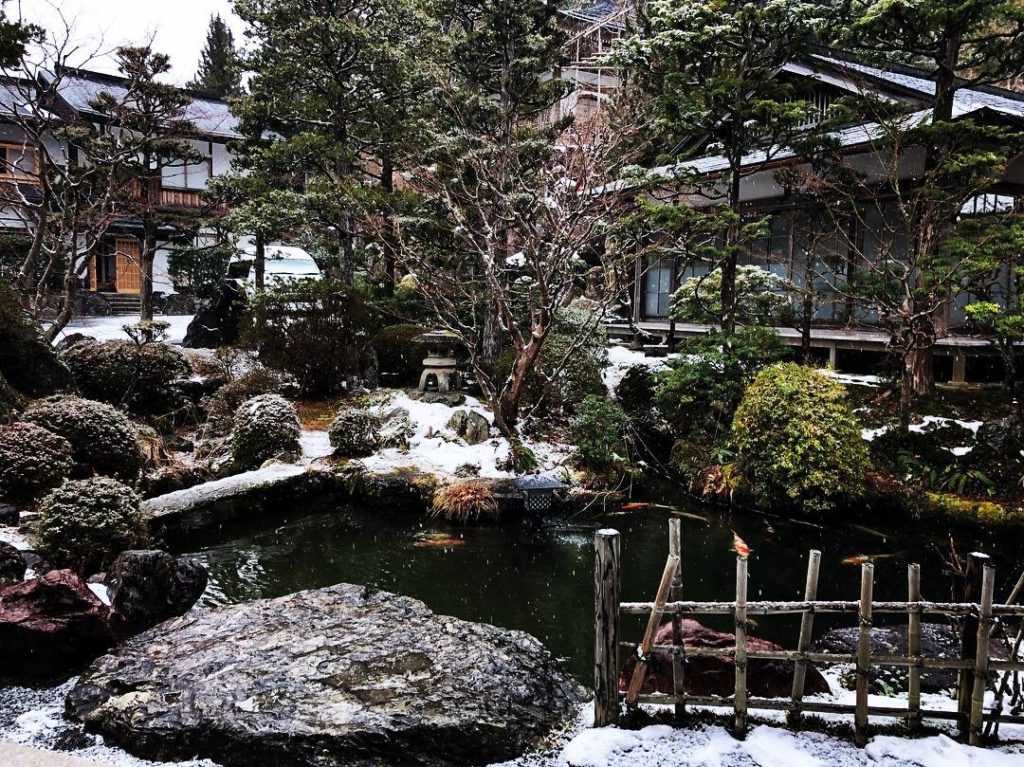
During planning, we almost talked ourselves out of going, realising it wouldn’t be the easiest to get to, as the cable car that usually takes visitors up the mountain was out of service for maintenance. But, the more we researched this stunning place, the more we wanted to come. They say that nothing worth having comes easy, and in this case, they were right.
We left our cases (again) in the lockers at Osaka Station, since this really isn’t a place you want to be dragging bags along. We hopped on the replacement bus service, which ran like clockwork. Japan have seriously nailed public transport!
As it was our last full day, our data package had run out, so it was a little scary travelling into the mountains without the safety blanket of the internet. It felt like the biggest achievement when we arrived, using only our research and paper maps to navigate the buses and streets to the temple.
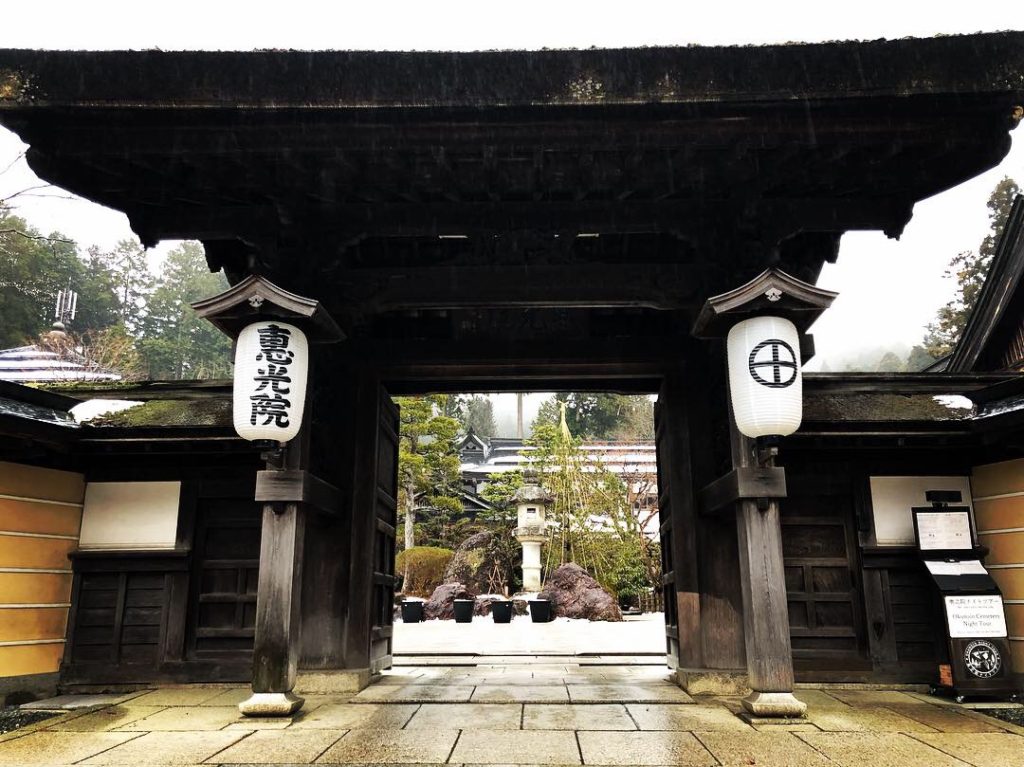

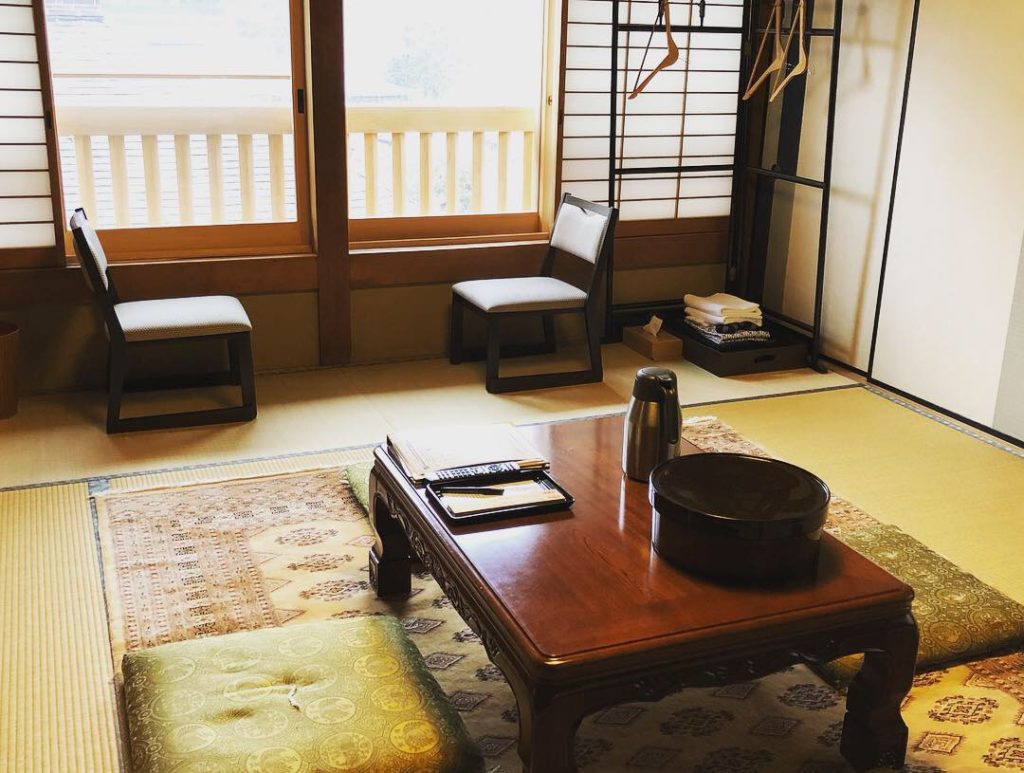
Okunoin Cemetery
Okunoin Cemetery is one of the most beautiful and surreal places I have ever visited. It is the site of the mausoleum of Kobo Daishi who founded Koyasan, and (you may recall) founder of Japanese Shingon Buddhism.
Followers believe that he is not really dead, but resting in eternal meditation as he awaits the Buddha of the Future. When Kobo Dashi rises, so too will all those resting in the cemetery. Each day, the Monks bring him food to sustain him and families travel from far and wide, so that their loved ones may have the honour of resting near him in this sacred place.
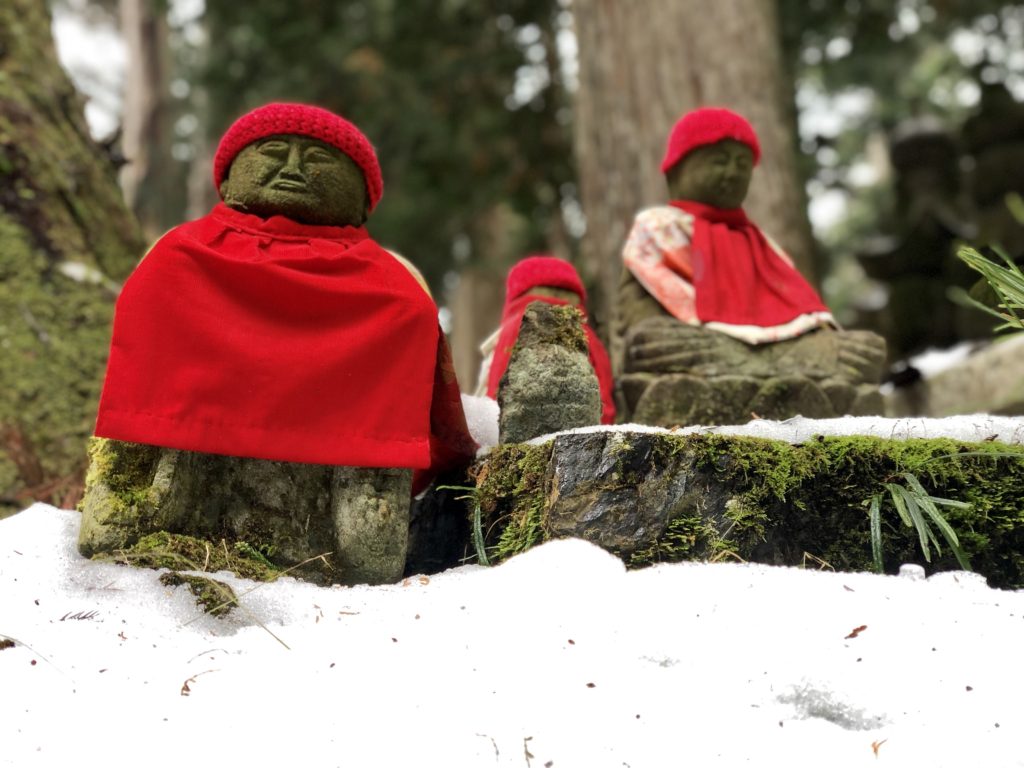
The snow and moss-clad cedar forest now
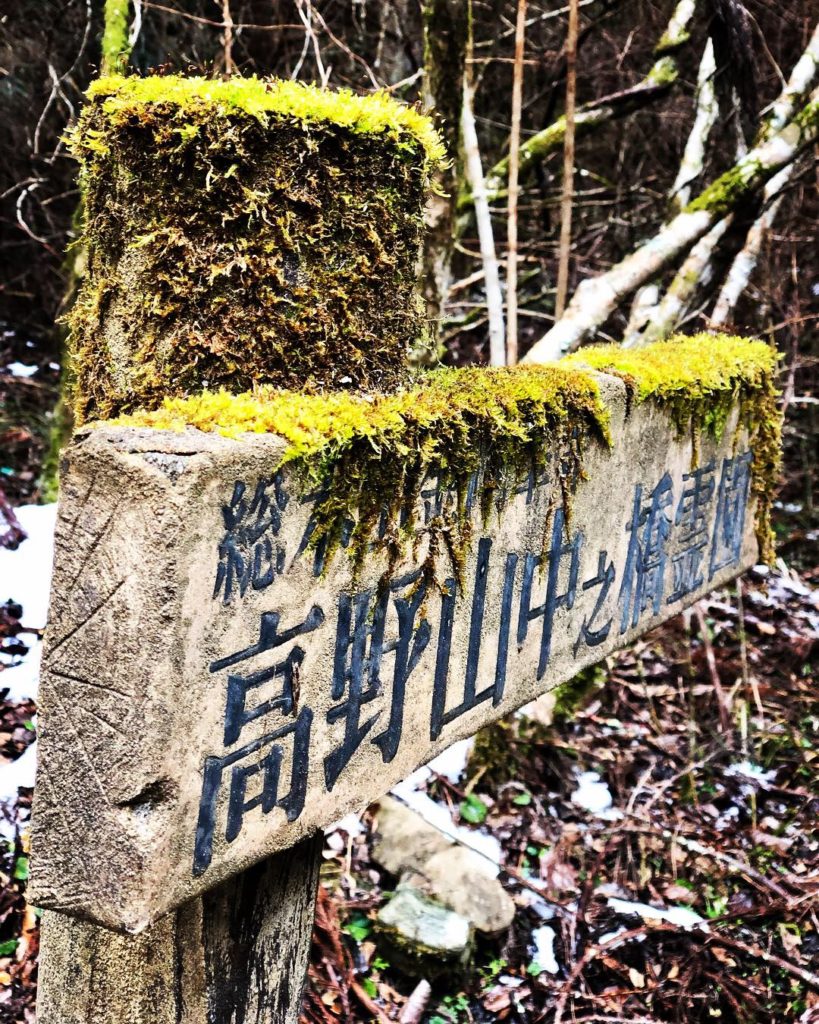
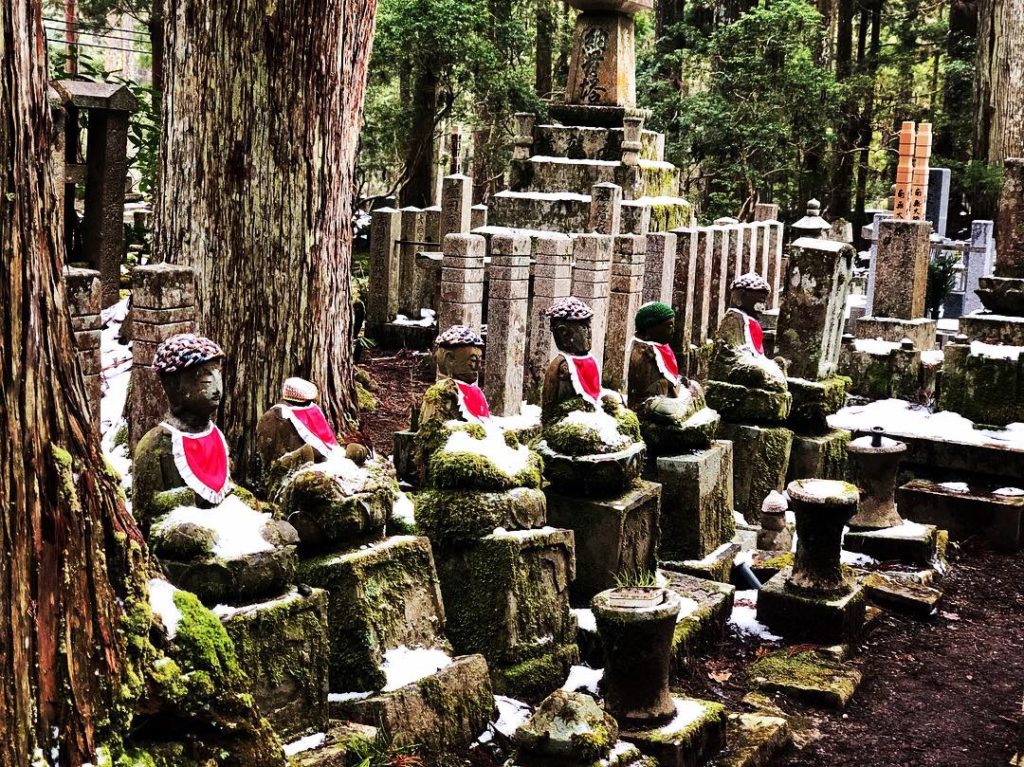
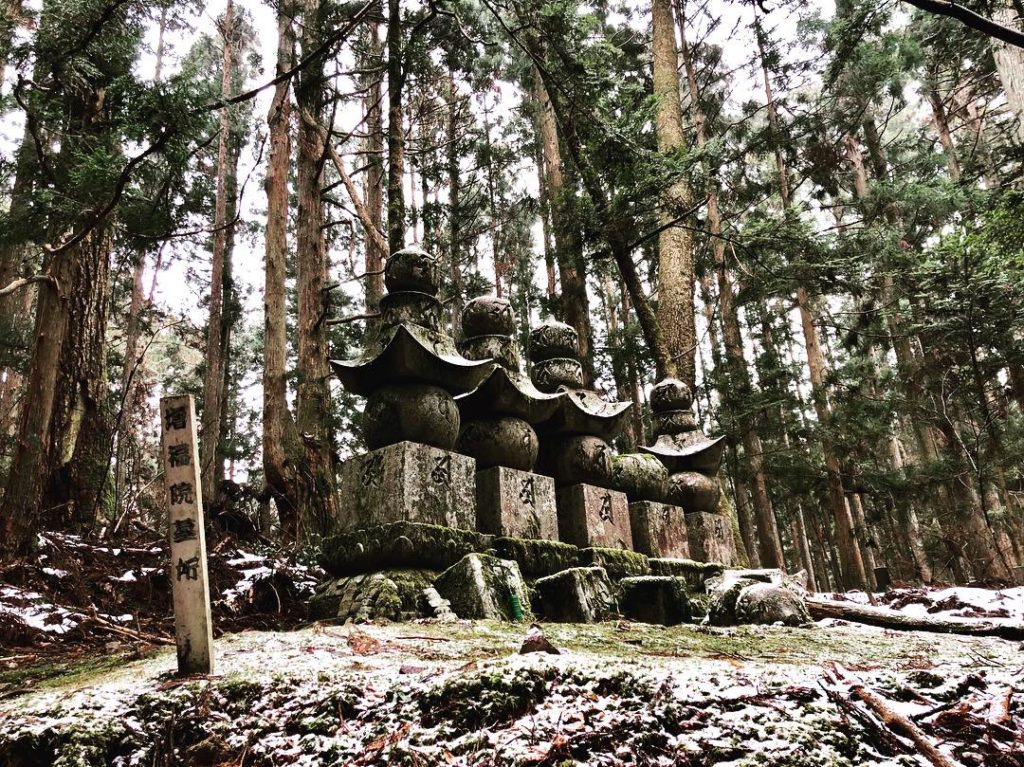
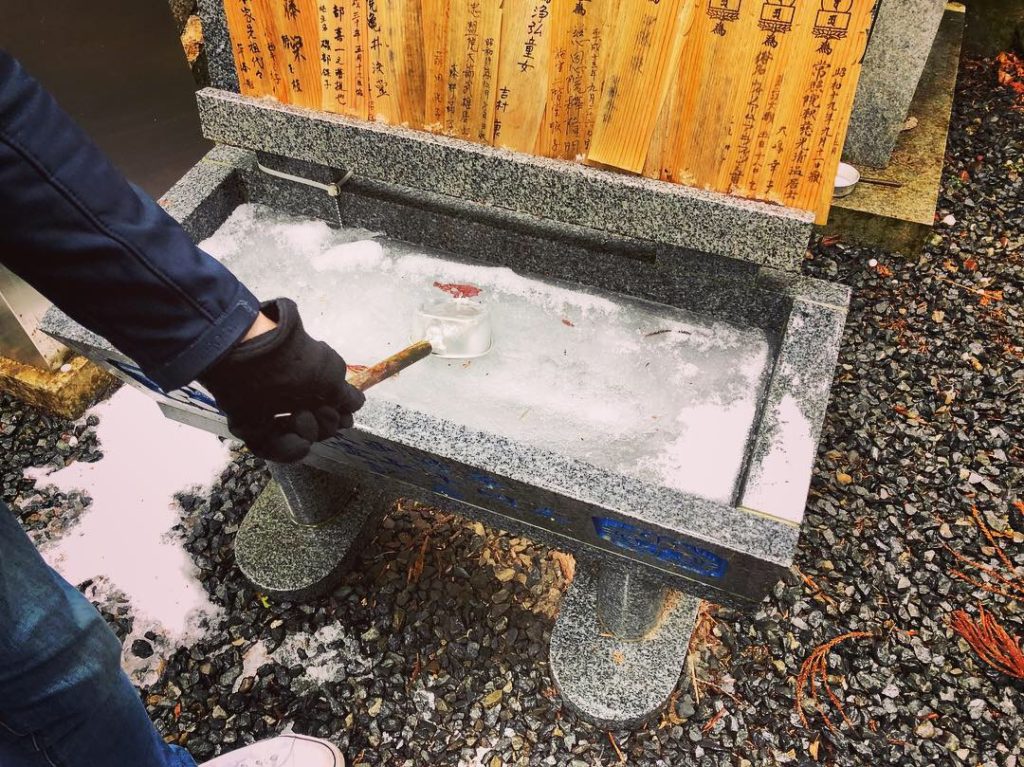
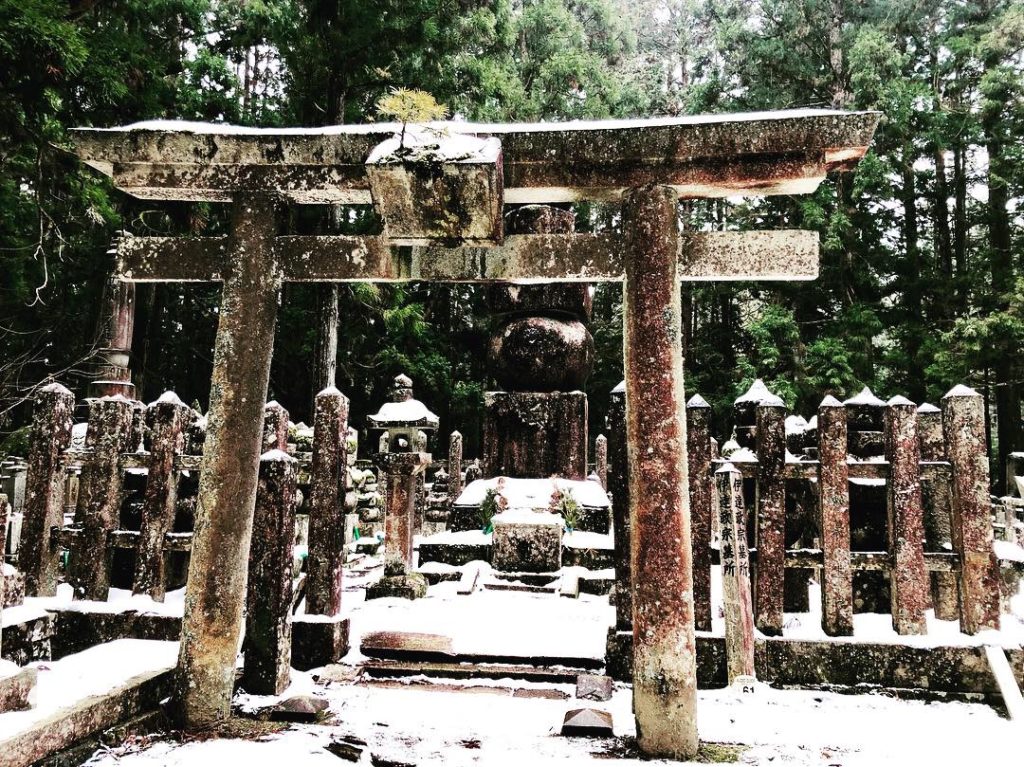
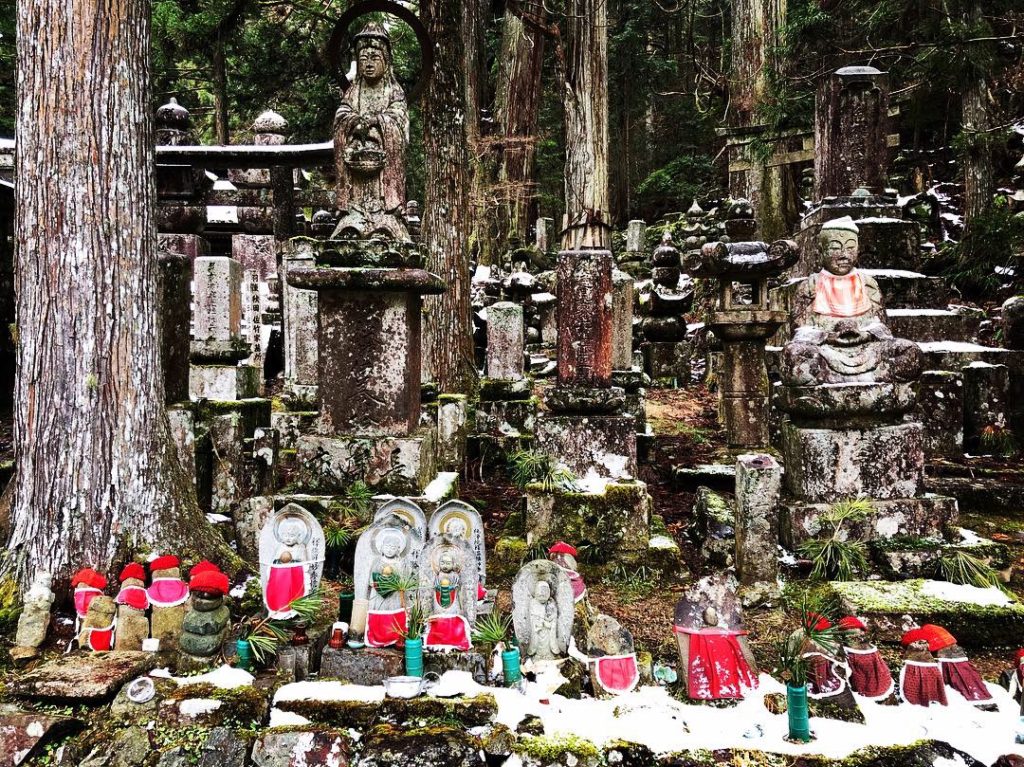
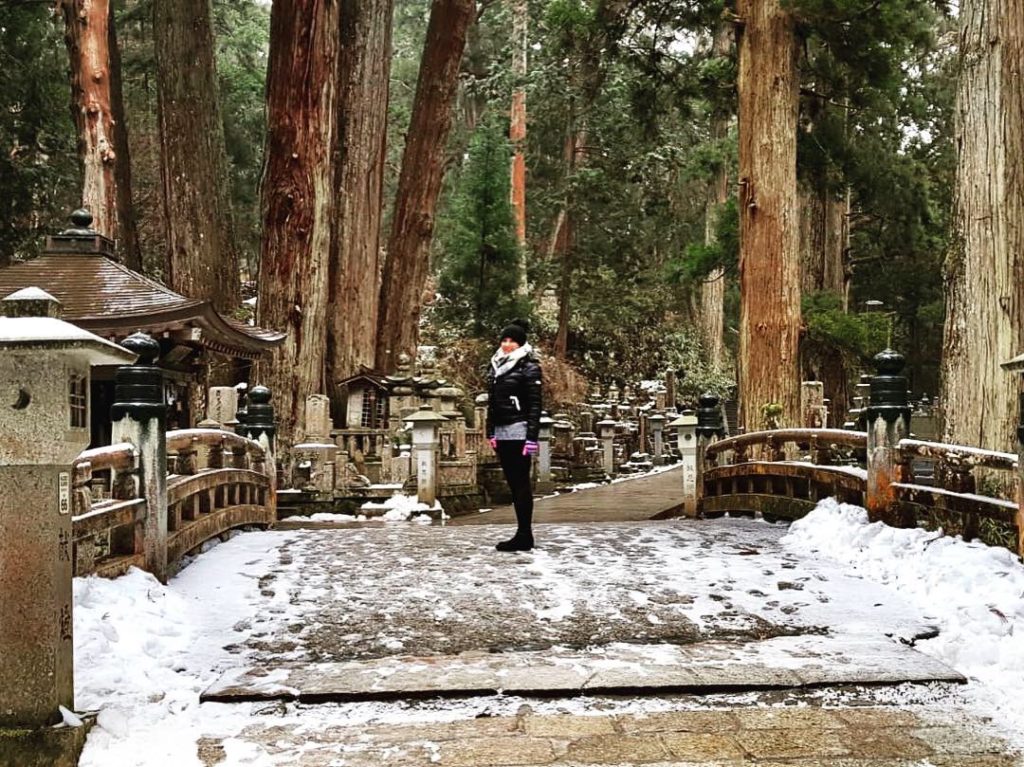
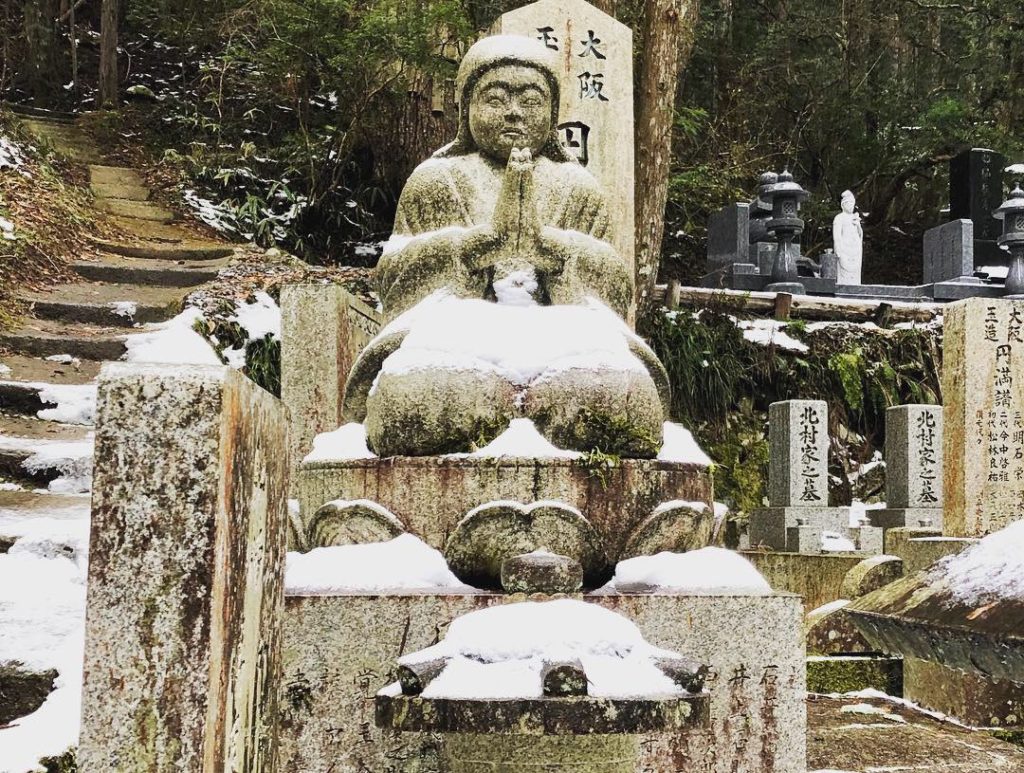
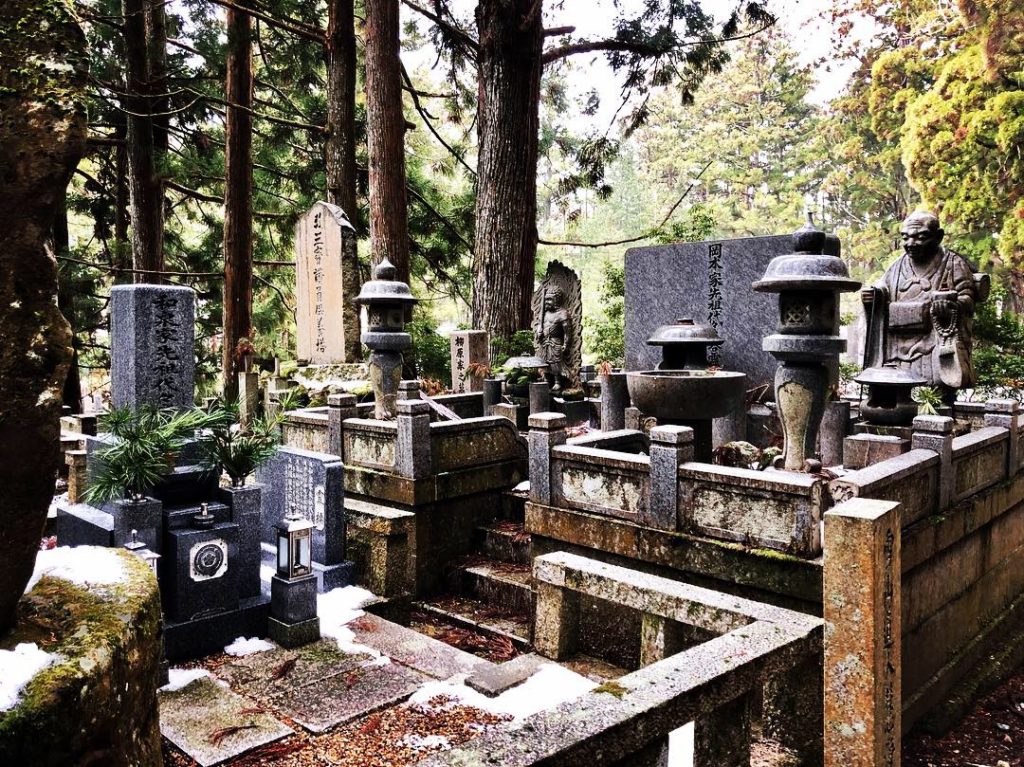
Some of the cedar trees are over 850 years old, and you can practically hear them sigh as you walk by. We spent a beautiful afternoon wandering through the forest, admiring the shrines and hugging the gentle giants that stood sentry over them.
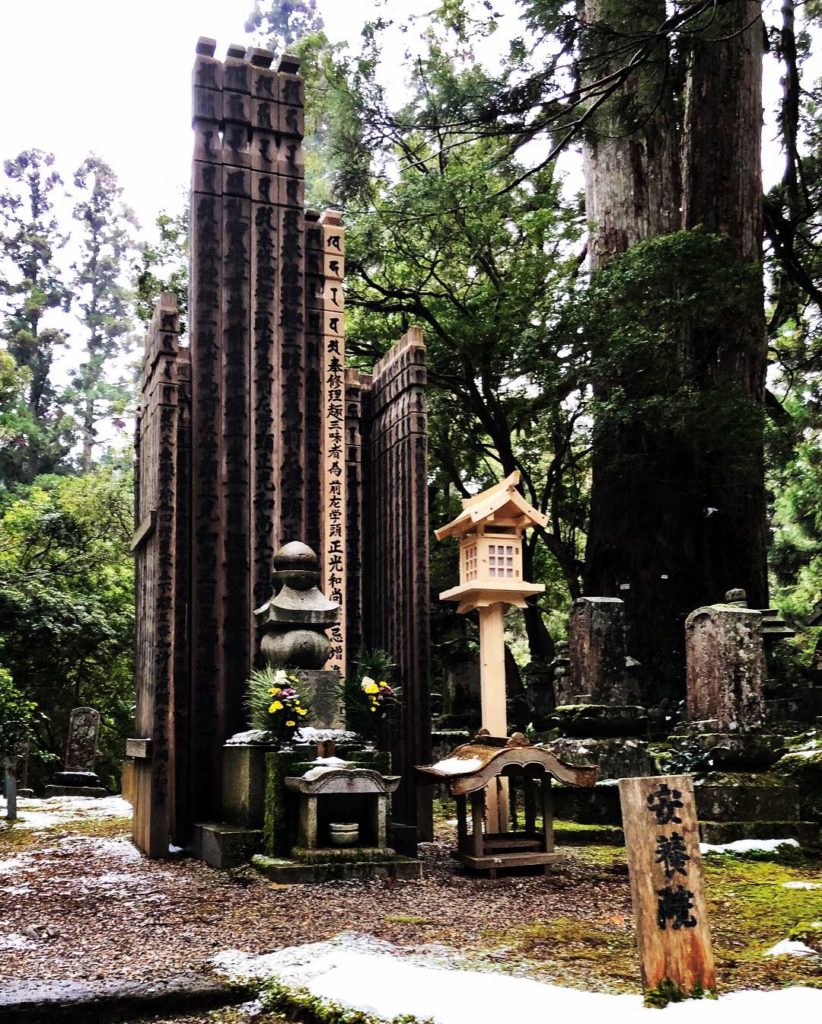
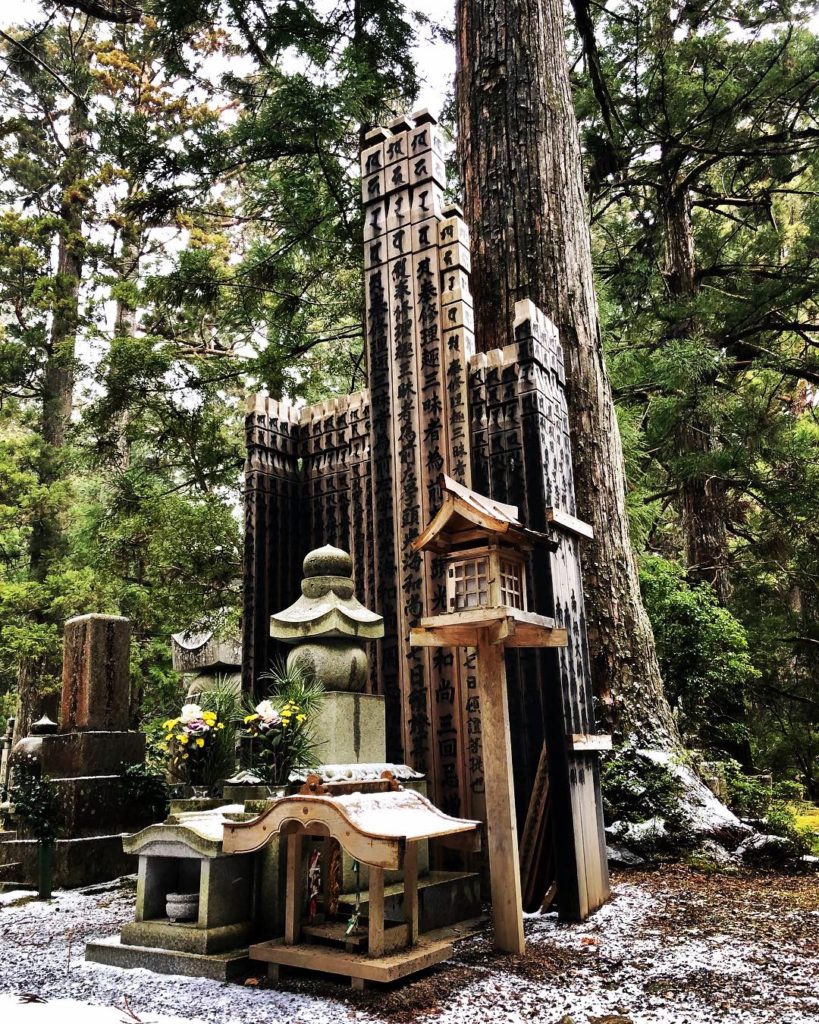
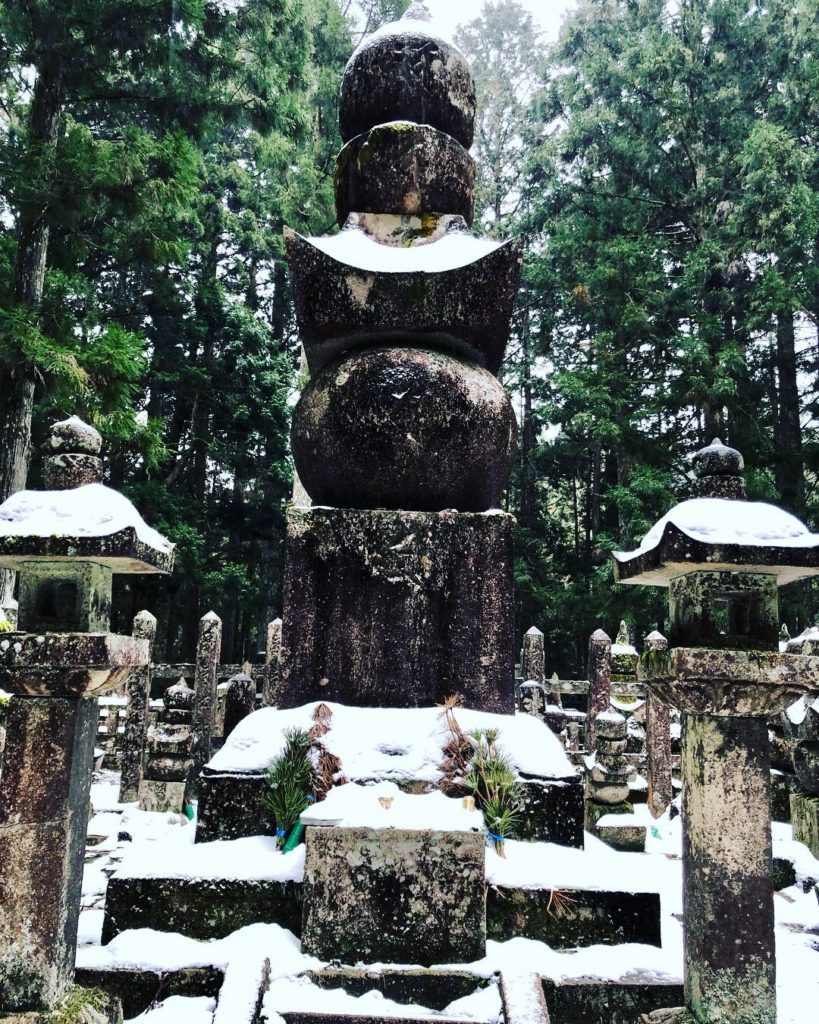
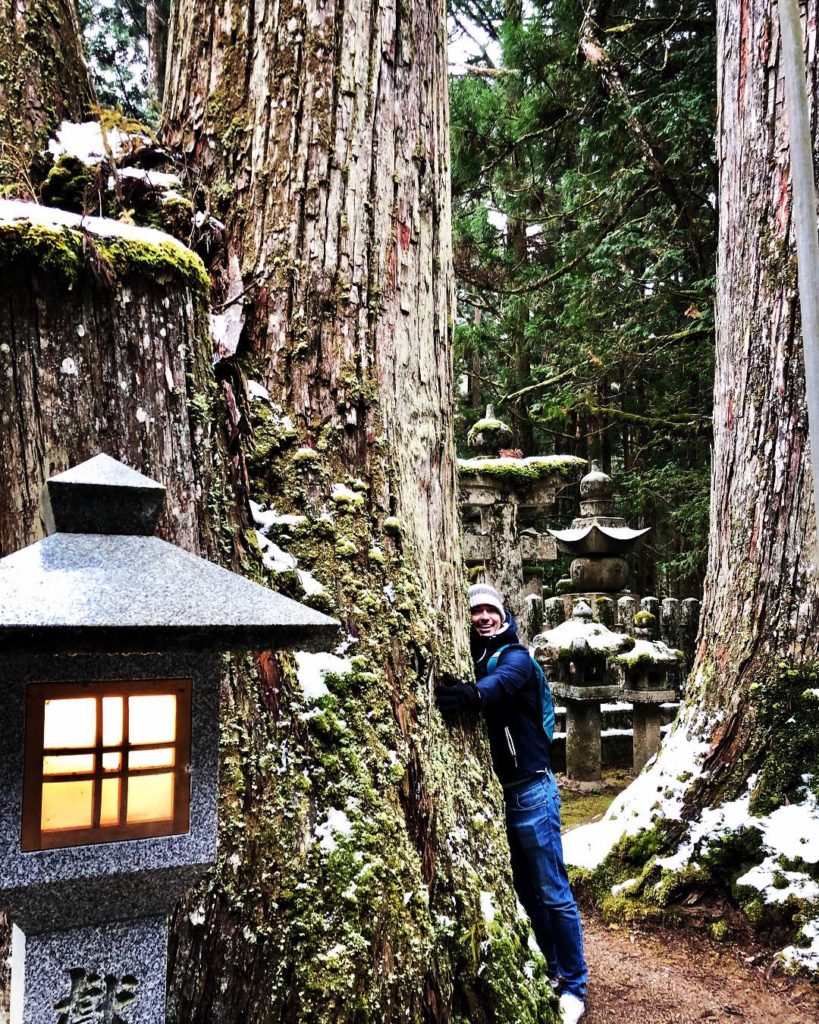
The monks cooked us a delicious vegan meal, which was served in our rooms with plenty of hot tea. Some of the monasteries are stricter than others, with an evening curfew and no-alcohol policy. Ours was a bit more chilled out, letting us order a cheeky beer with dinner. (Just something to be aware of when choosing a spot.)
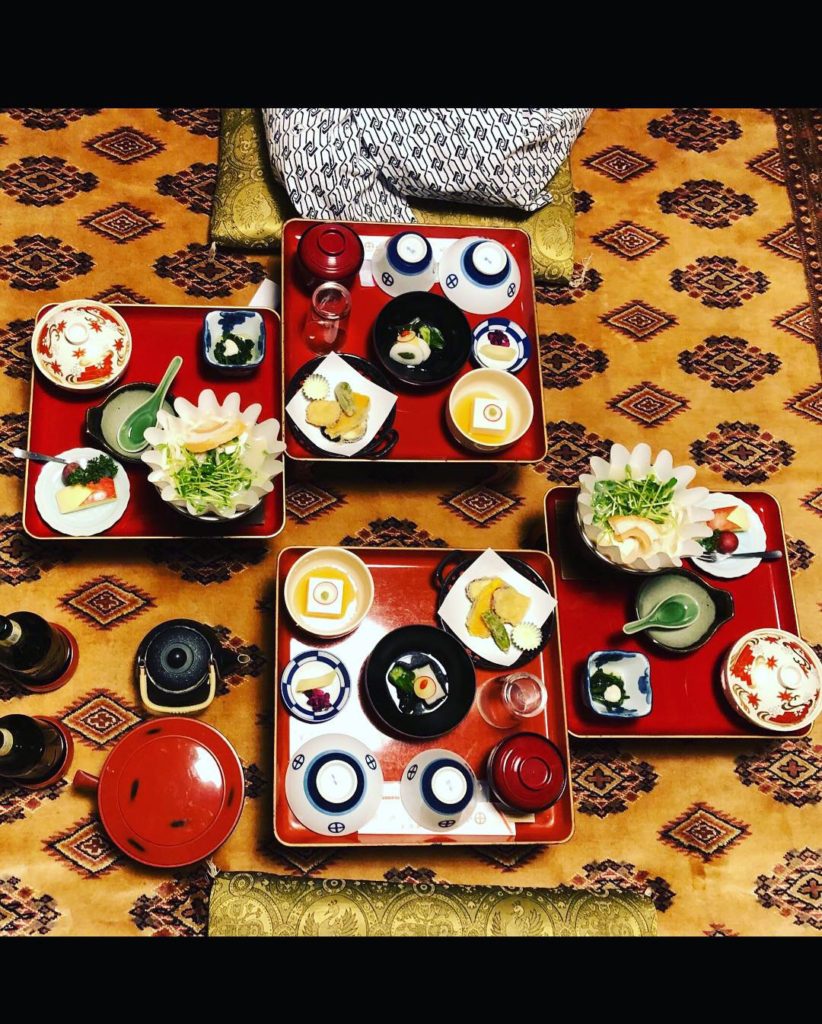
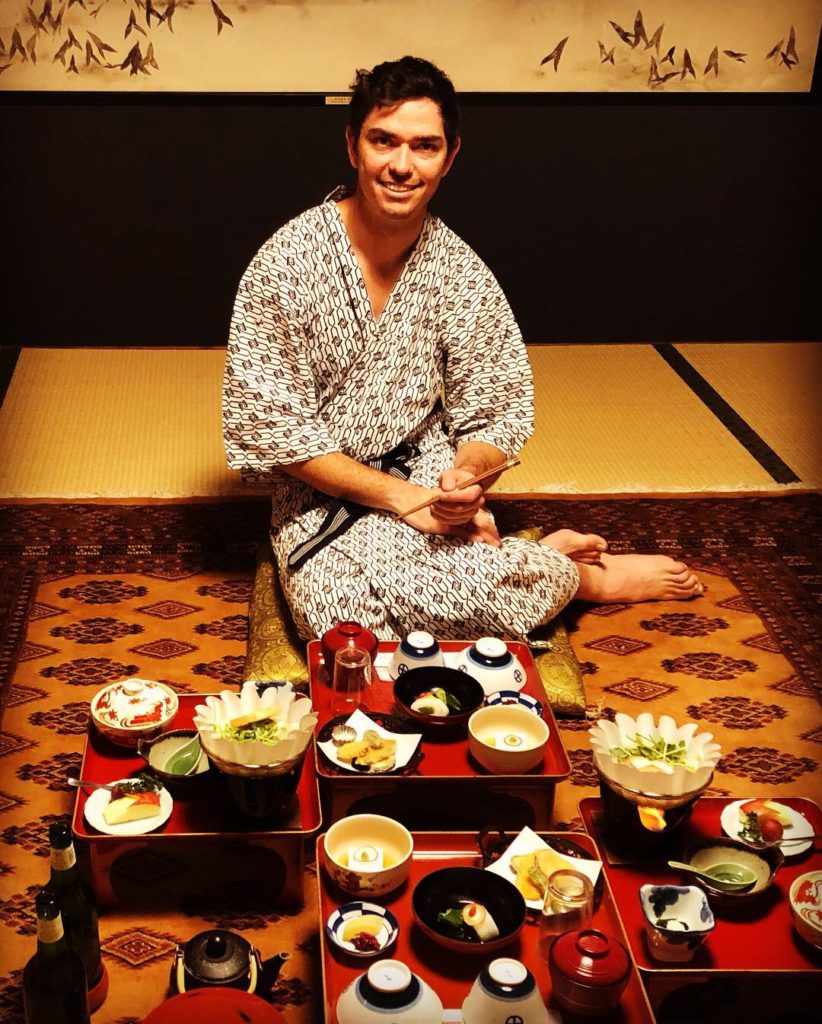
Our tour guide for the night tour of the cemetery was a monk from our temple. He explained many Buddhist ideas and beliefs and was super mischevious, (not what I had imagined a monk to be!) telling us how the monks hide in the graveyard once a year with scream masks to jump out on the visiting school kids!
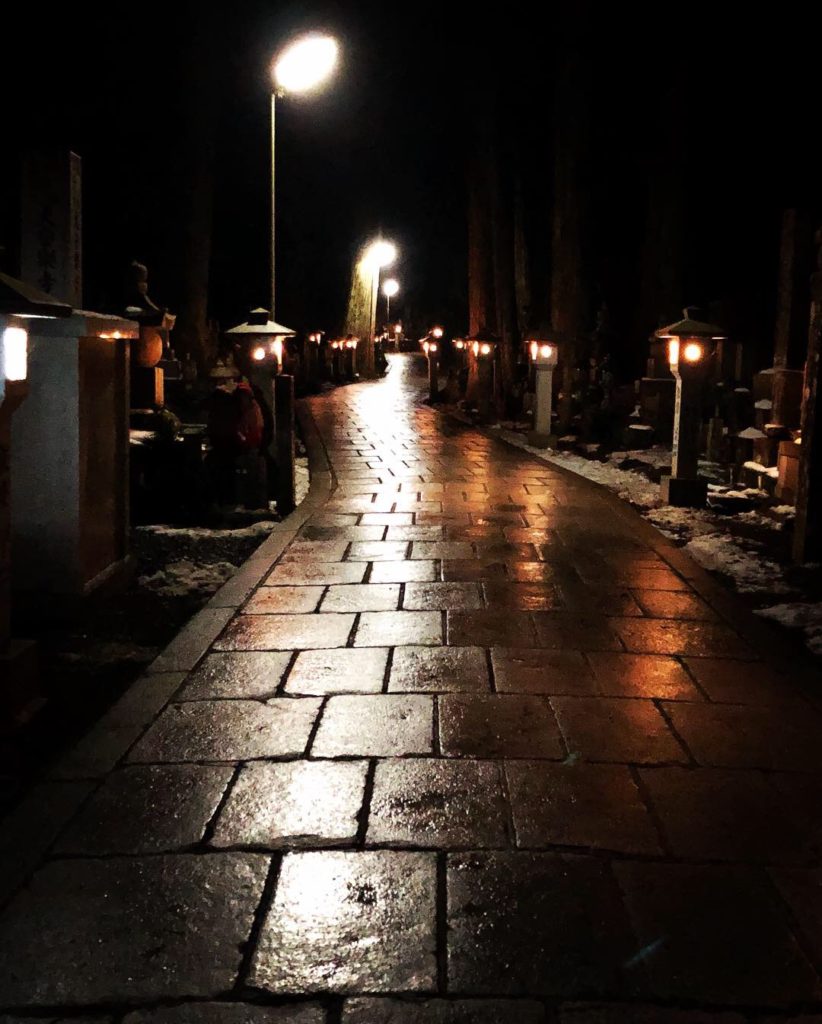
He performed a beautiful mantra at the Mausoleum of Kobo Daishi and shared some history on the hall of lanterns, which was simply stunning.
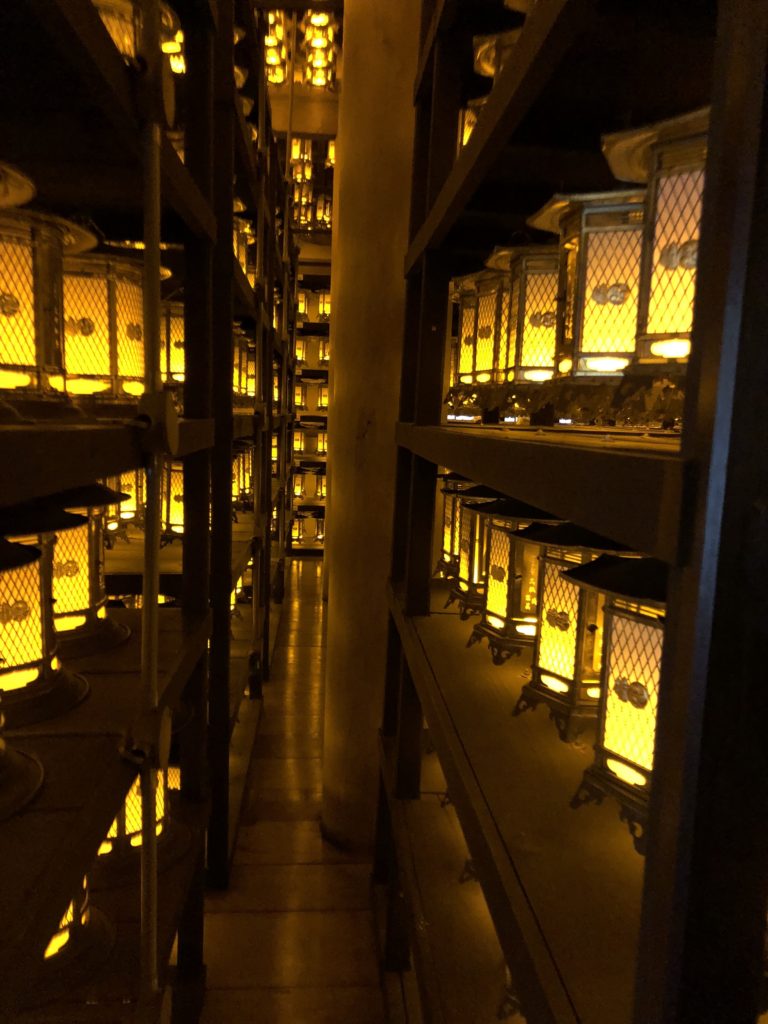
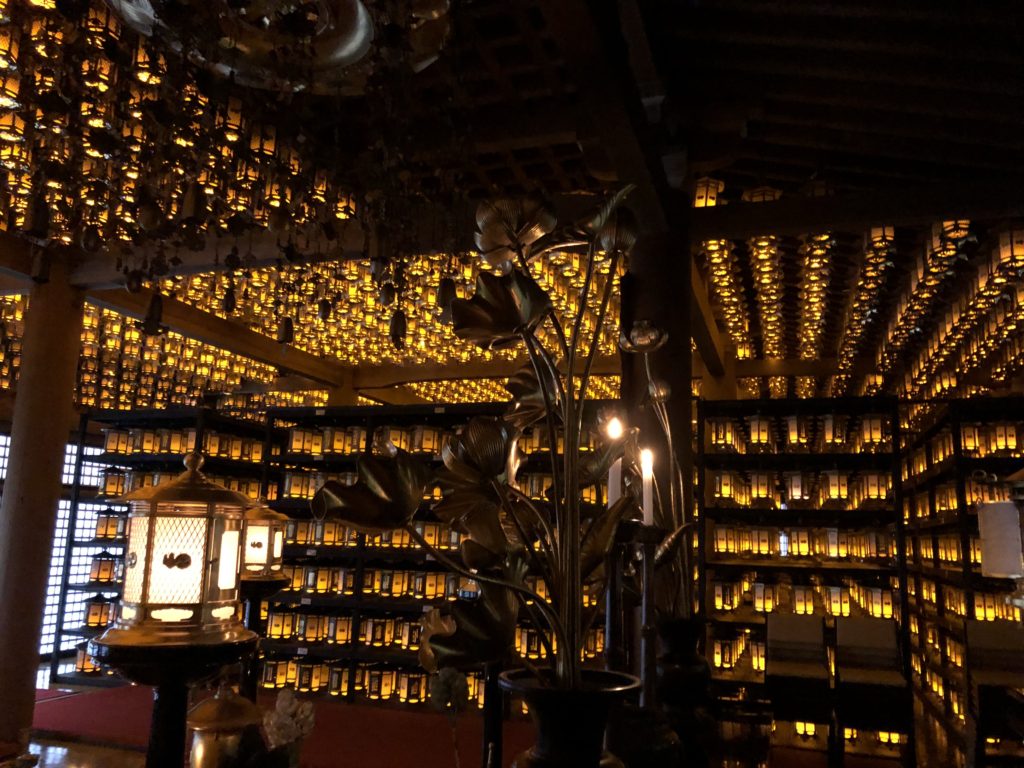
Day 18: Morning Service and Fire Ritual
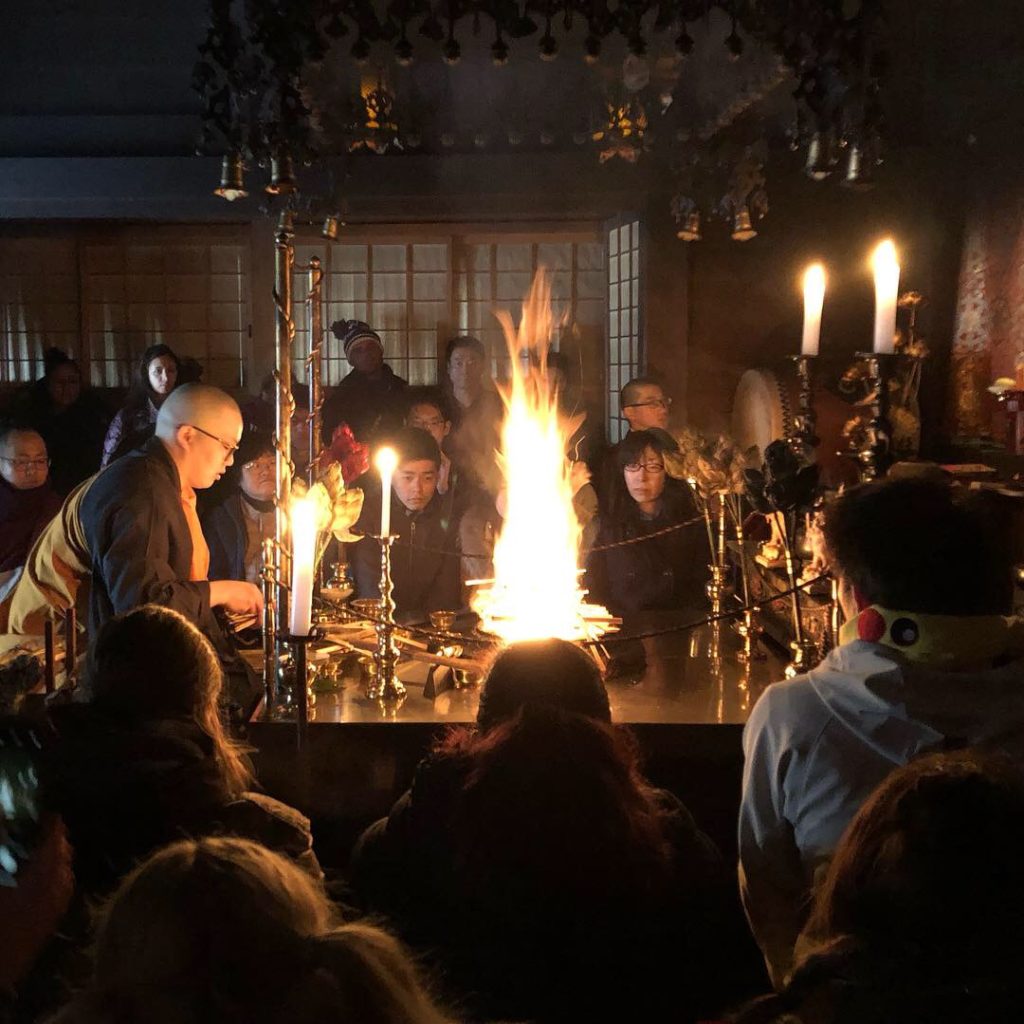
We woke early to the sound of the Monk’s Gong, beckoning us to the dawn service. It’s a peaceful way to wake, so different
We listened to the chanting mantras of the service, before joining the Fire Ritual. We were invited to participate by contributing soegomagi- fire sticks that contained our names and wishes- to be burnt as part of the ceremony.
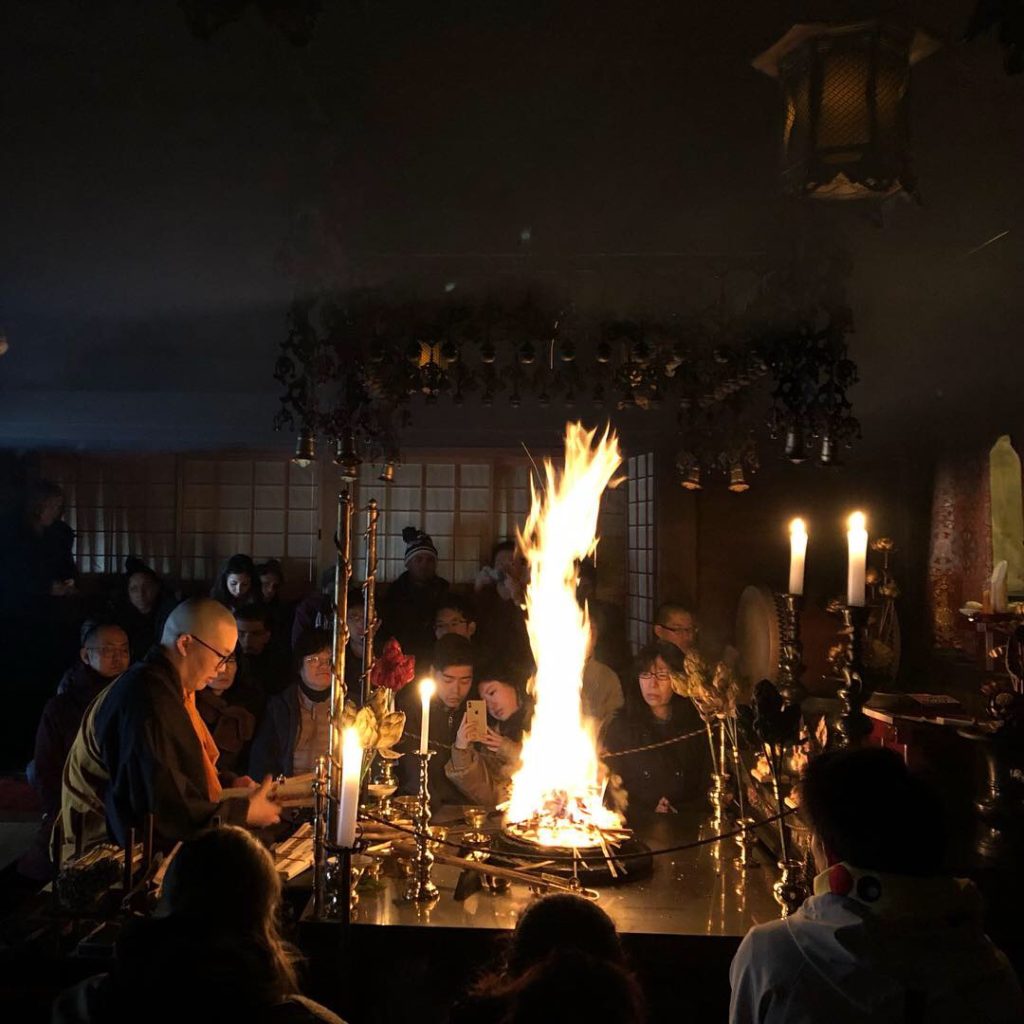
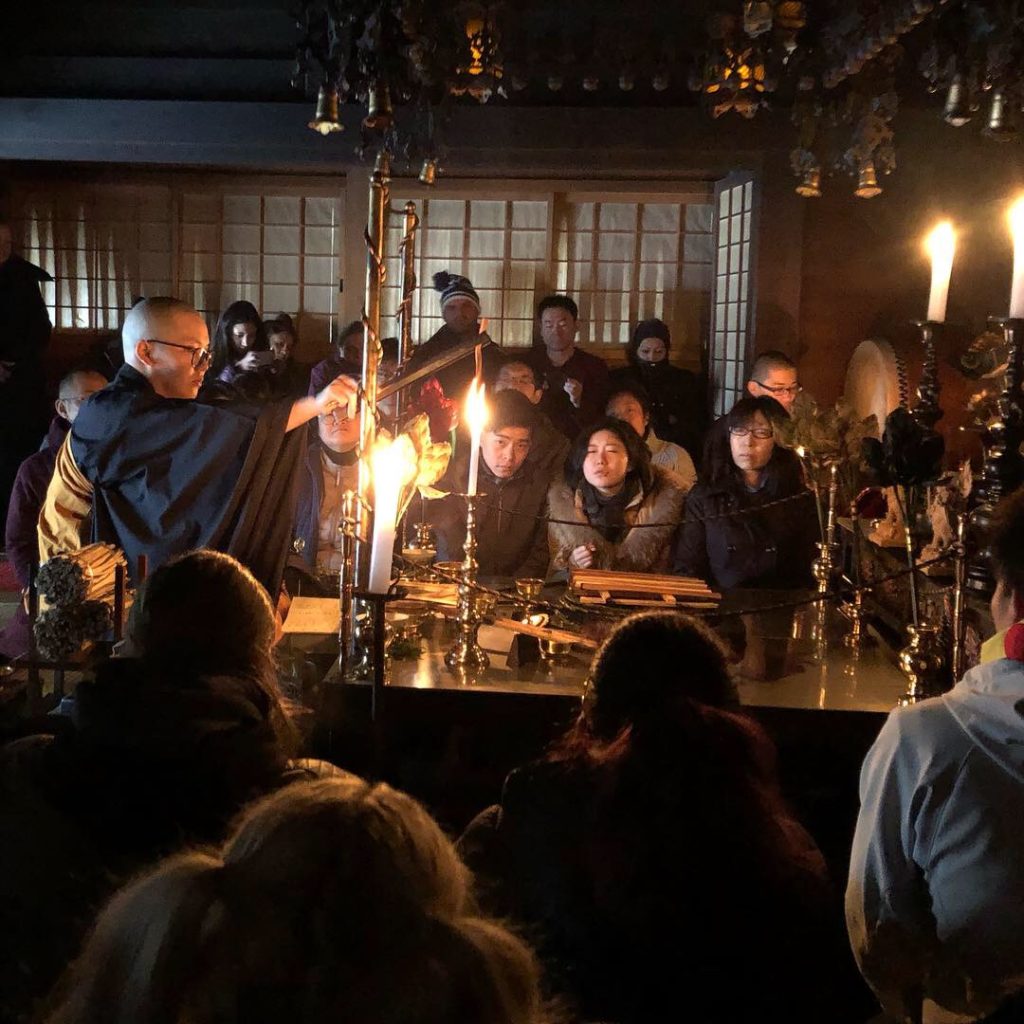
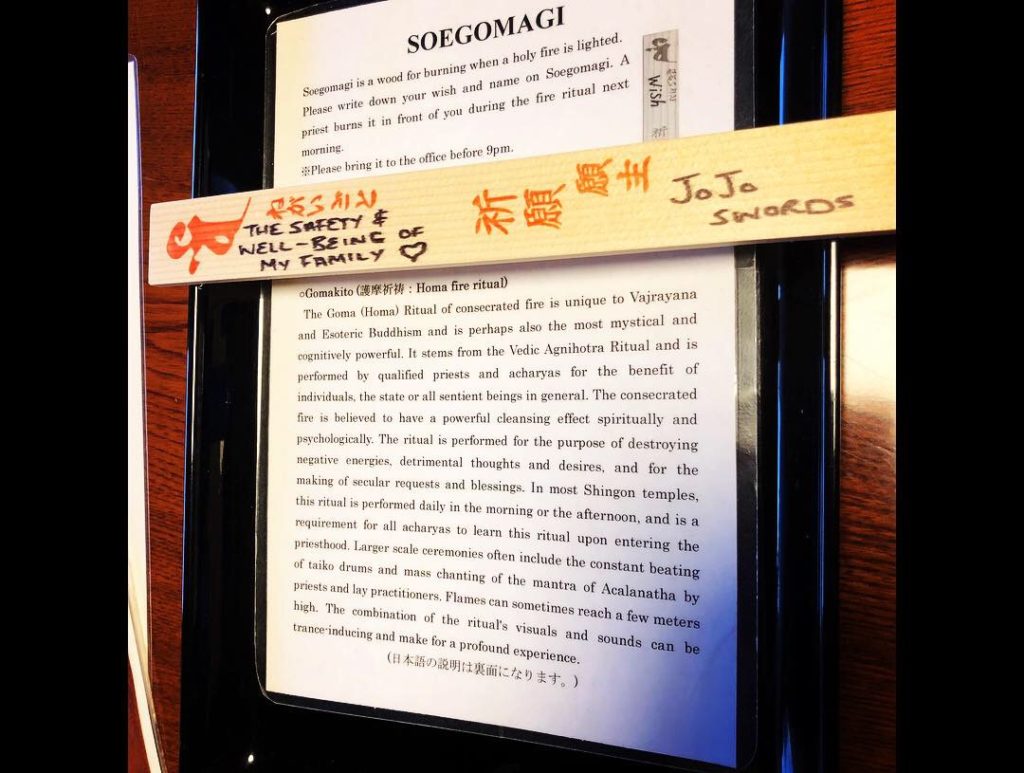
You can feel the beautiful rhythm of the Monk’s voices resonating in your soul. I was mesmerised. To think that this is part of their everyday life just blew me away.
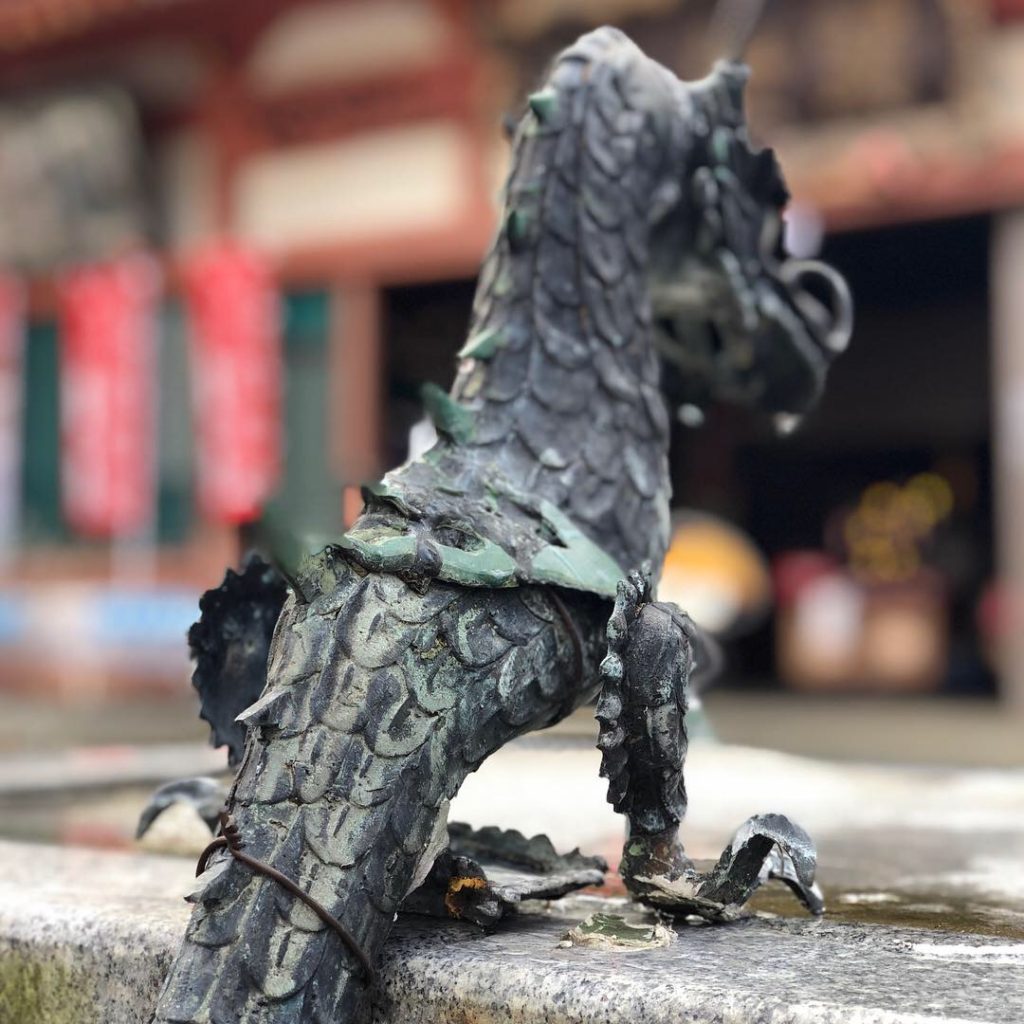
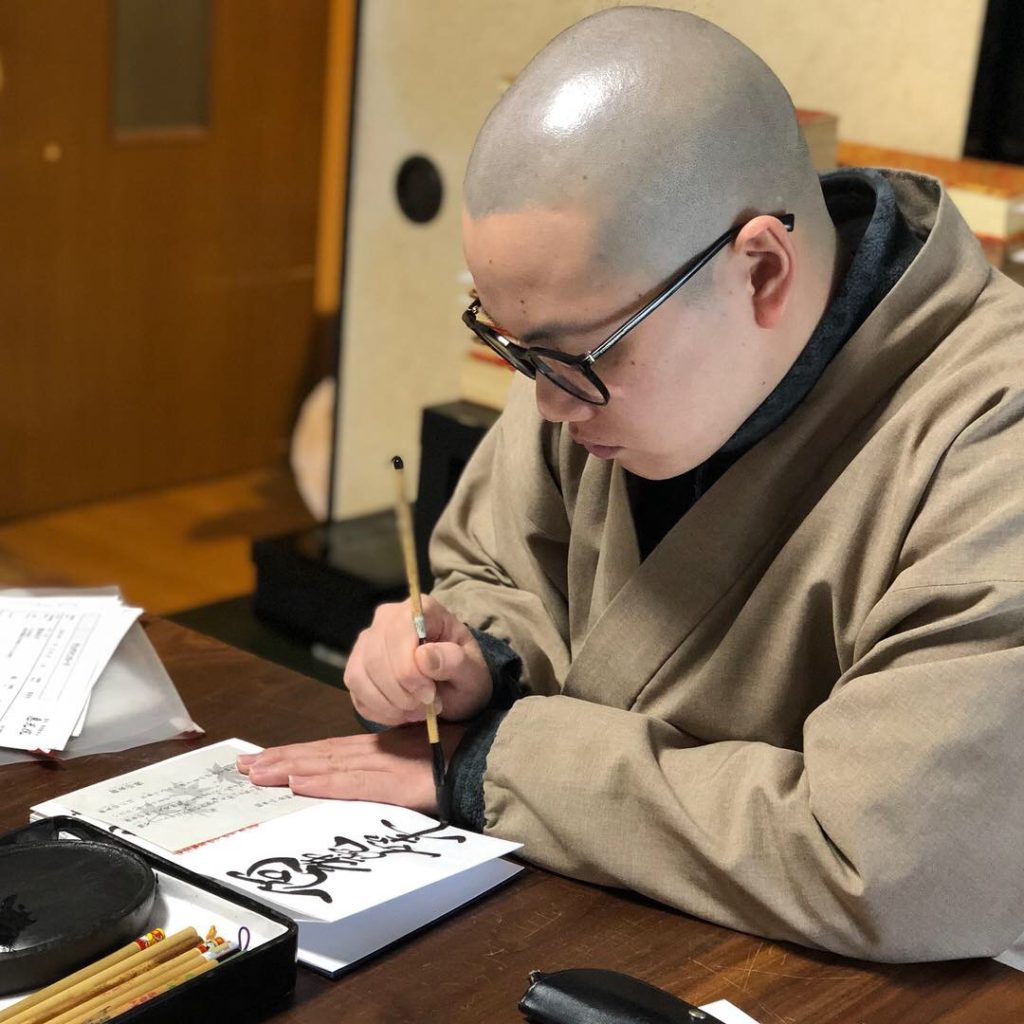
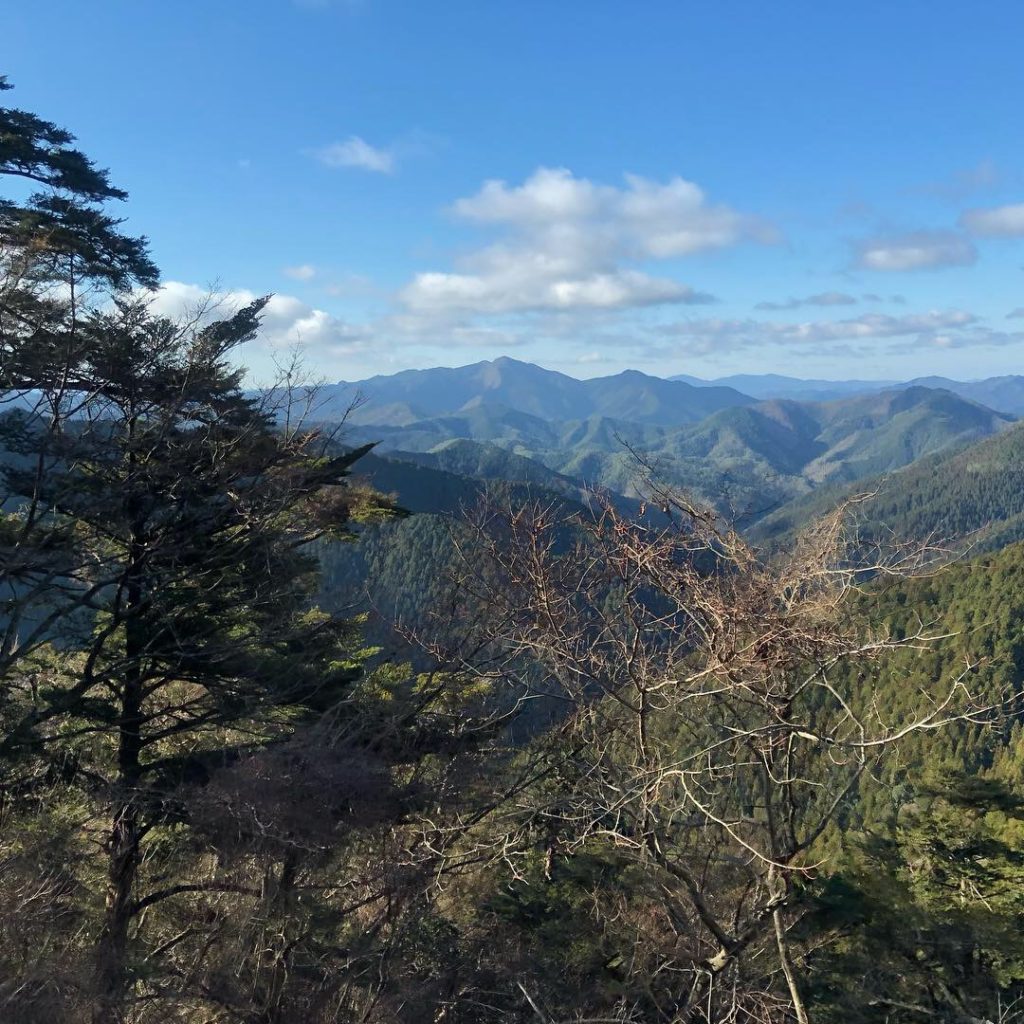
As our epic journey came to an end, I found myself deeply connected with this land of contrasts. I discovered that I had loved losing myself in the chaotic heartbeat of everyday life here; the quirky cities, the surging crowds, the delicious smells and tastes. I softly blended into its natural beauty, spiritual nature and the smiles of the gentle, dignified people I’d met along the way.
And of course, that’s the thing about losing yourself through travel…
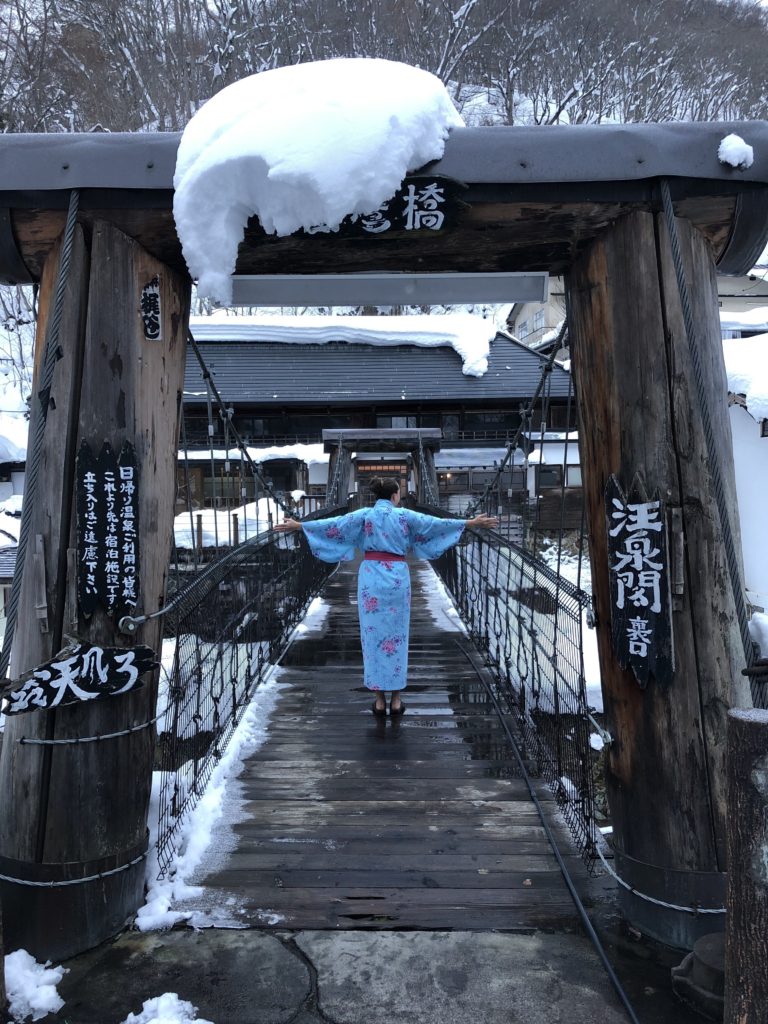
…If you go far enough, you find yourself again.

